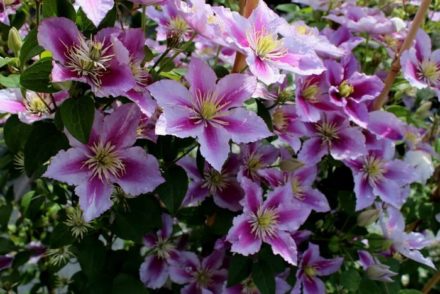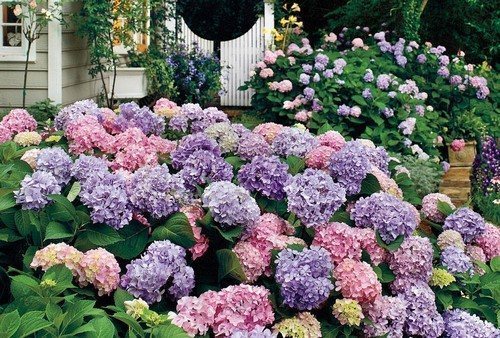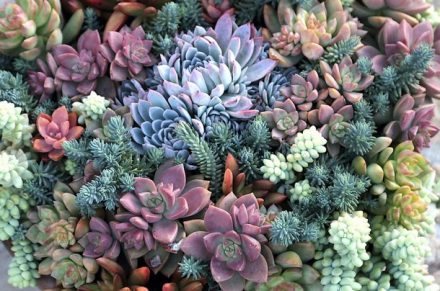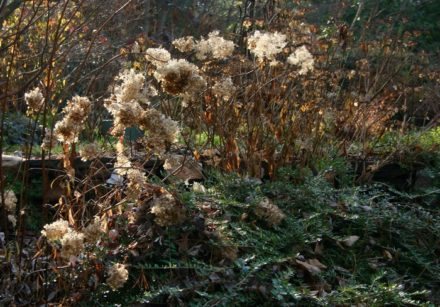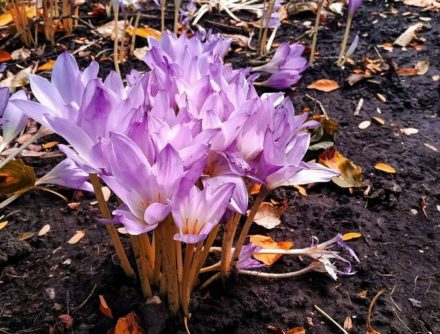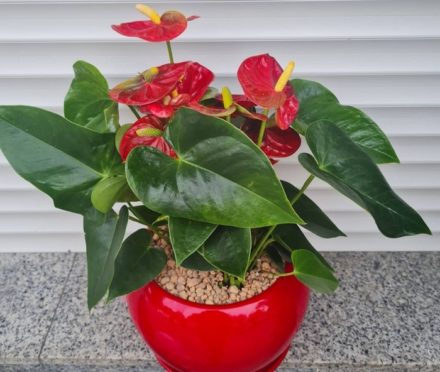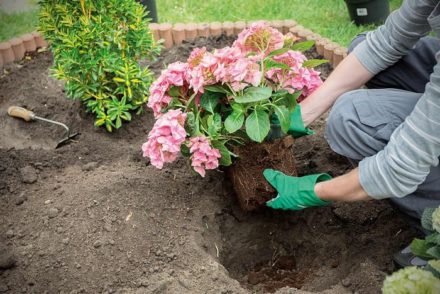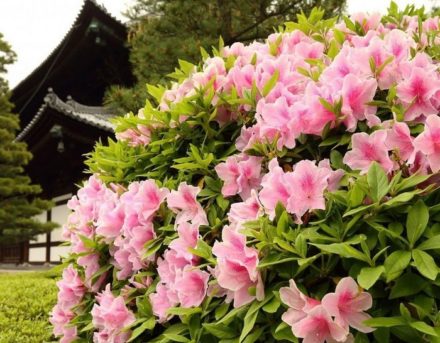Hydrangea belongs to the hydrangea family and is also distinguished by its beautiful appearance and ease of care. It is presented in the form of small trees, vines or shrubs. This plant can be found in the wild in South and East Asia, North America and the Far East. The name comes from the princess of the Roman Empire. Scientists named the plant Hydrangea in Latin, which translates as “vessel of water,” due to its moisture-loving nature.
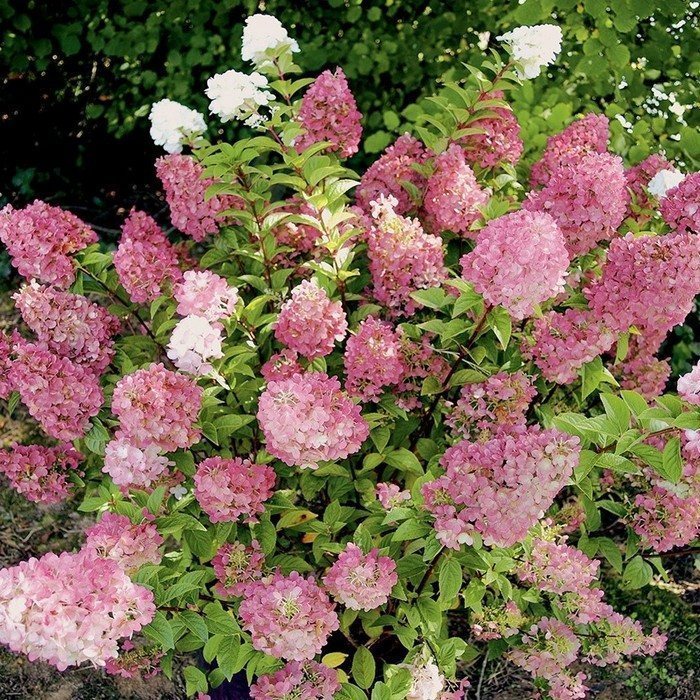
- Botanical description
- 68 best varieties of hydrangea of different types with names and photos
- Hydrangea paniculata
- polar bear
- Samara Lydia
- Limelight
- Vanilla Fraze
- Pinky Winky
- Frize Melba
- Sunday fries
- Silver Dollar
- Quishi
- Bobo
- Phantom
- Mega Mindy
- Grandiflora
- Weems Red
- Little lime
- Strawberry Blossom
- Pastel Green
- Pink and Rose
- Skyfall
- Pink Lady
- Summer Love
- Diamond Rouge
- Large leaf hydrangea
- Endless summer
- Bloom Star
- Blaumaise
- Sybil
- Tugese
- Popcorn
- Miss Saori
- Countess Kossel
- Magical Amethyst
- Twist and Shout
- Hamburg
- Marmalade
- U&M Tugese
- Bouquet Rose
- runaway Bride
- Hydrangea
- Golden Annabel or Golden Anabel
- Lime Ricky
- Vasterival
- Incredible or Strong Anabel
- Hayes Starburst
- Bounty
- Emerald Lace
- White Ball or White Ball
- Sterilis
- Ruby Annabelle or Invincibelle Ruby
- Magical Pinkerbelle
- Pink Pinkushen or Pink Pincushion
- Candibella Bubblegum
- Candibella Marshmallow
- Incredible Blush or Sweet Annabelle
- Hydrangea oakleaf
- Snowflake
- Snow Queen
- Burgouni
- Amethyst
- Harmony
- Snow-white domes
- Ruby Slippers
- Alice
- Snow giant
- Pee Wee
- Little Honey
- Black Porch
- Ice Crystal
- Hydrangea groundcover
- Snowcap
- Germines Leys
- Hortensia Chereshkova
- Caring for home hydrangea
- Temperature and humidity
- Watering
- Top dressing
- Trimming
- Transfer
- Growing and caring for hydrangea in open ground
- Rules of care
- Choosing a place and landing
- Watering
- Top dressing
- Trimming
- After flowering
- Preparing for winter
- Spring treatment
- 5 ways to propagate hydrangeas
- Cuttings
- Dividing the bush
- By layering
- Seeds
- Seedlings
- Hydrangea diseases and their treatment
- Chlorosis
- Gray rot
- White rot
- Powdery mildew
- Septoria
- Rust
- Ring spot
- Burns
- Downy mildew
- Blackening
- Hydrangea pests
- Aphid
- Chafer
- Nematode
- Spider mite
- Night owl
- Garden slug
- Problems during cultivation
- The leaves are turning yellow
- Doesn't bloom
- Dries
- Inflorescences fall off
- Sick after transplant
- How to change the color of a hydrangea
- Hydrangea in landscape design
- Reviews from gardeners
- Where to buy hydrangea
Botanical description
There are more than 100 species and varieties in the hydrangea genus. The perennial crop has become popular all over the world due to its attractive appearance, ease of care and the ability to grow in open ground or at home. Features of culture include:
- in natural habitats, hydrangea can grow up to 3 meters;
- it looks like a small spreading tree;
- in the wild there are liana-like varieties that grow on tree trunks, so their height reaches 30 meters;
- in regions with mild climates, deciduous species are most common;
- flowers have oppositely located leaves of large size and oval shape;
- along the edges of the leaves there are small denticles on which the veins are clearly visible;
- the inflorescences have the shape of a shield or ball, but in some varieties they have a paniculate shape;
- the crop blooms in the spring, delighting with its attractive appearance until the first frost;
- inflorescences consist of fertile and sterile flowers.
Hydrangea has different shades, which delights gardeners. The most popular flowers are lilac, pink, raspberry and burgundy.
Hydrangea is a fruit-bearing crop, so it produces boxes with seed chambers.
68 best varieties of hydrangea of different types with names and photos
Experienced gardeners are constantly experimenting with different varieties of hydrangea, increasing its frost resistance and other parameters. This leads to the emergence of new unique varieties. Hydrangea is divided into several large species.
Hydrangea paniculata
The culture has a magnificent appearance and is also represented by small trees, the height of which does not exceed three meters. In the wild it is found in Russia and Asian countries. It usually grows near forest edges or in oak thickets. The tree has an elliptical shape.
The inflorescences are paniculate in shape, and the plant is also a honey plant. At any dacha, this type of hydrangea attracts attention due to the unique aroma that appears during flowering.To maintain the attractiveness of the crop, periodic pruning is required.
polar bear
Polar Bir is considered one of the most frost-resistant varieties of hydrangea, therefore it is not necessary to cover the plant even at a temperature of -40 degrees, which allows the plant to be planted even in northern regions. It has large and cone-shaped inflorescences, the length of which is about 40 cm. Due to the density of the shoots, the plant seems airy and lush. The inflorescences contain fertile and sterile flowers. The polar bear has an attractive appearance, strong shoots and large inflorescences.
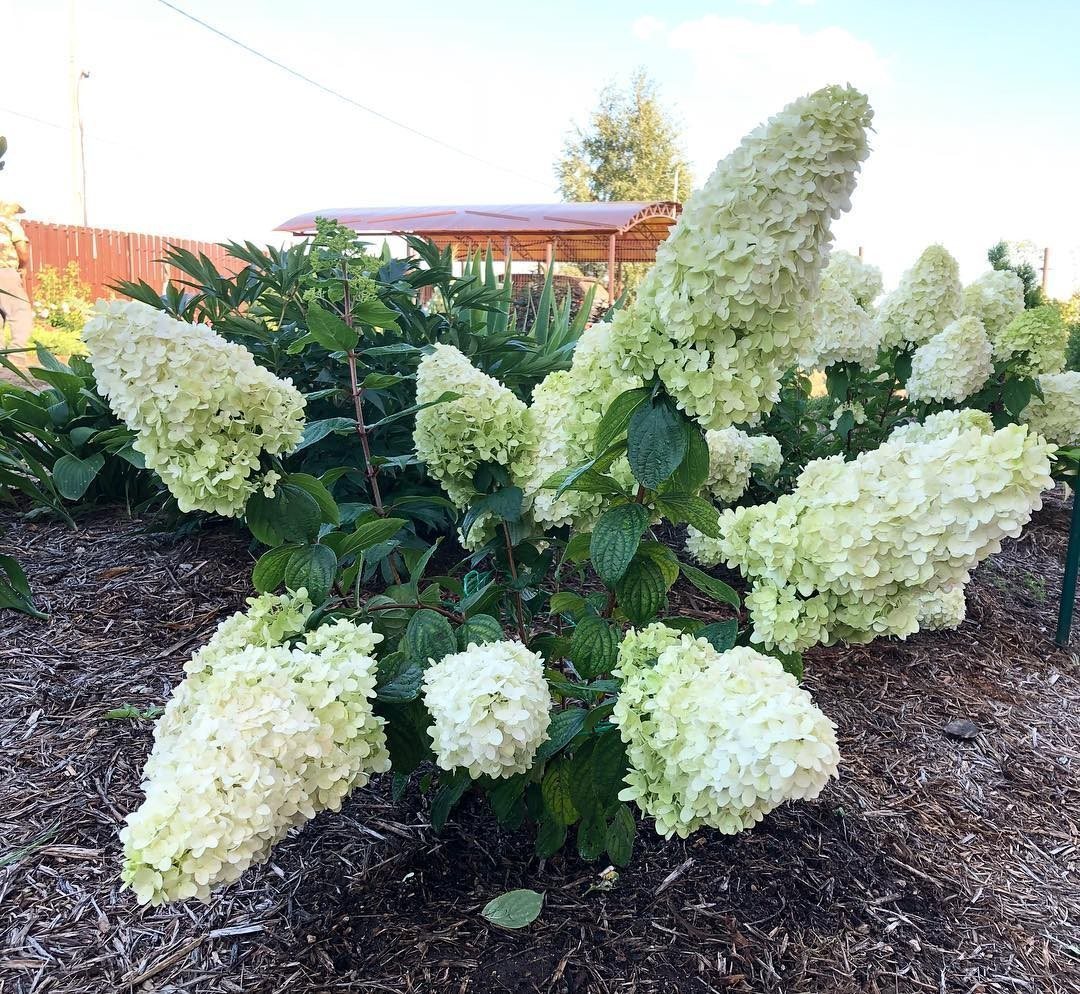
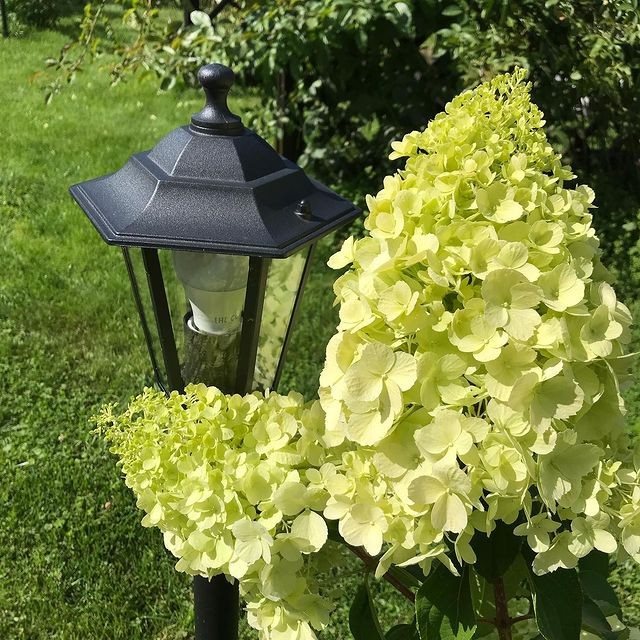
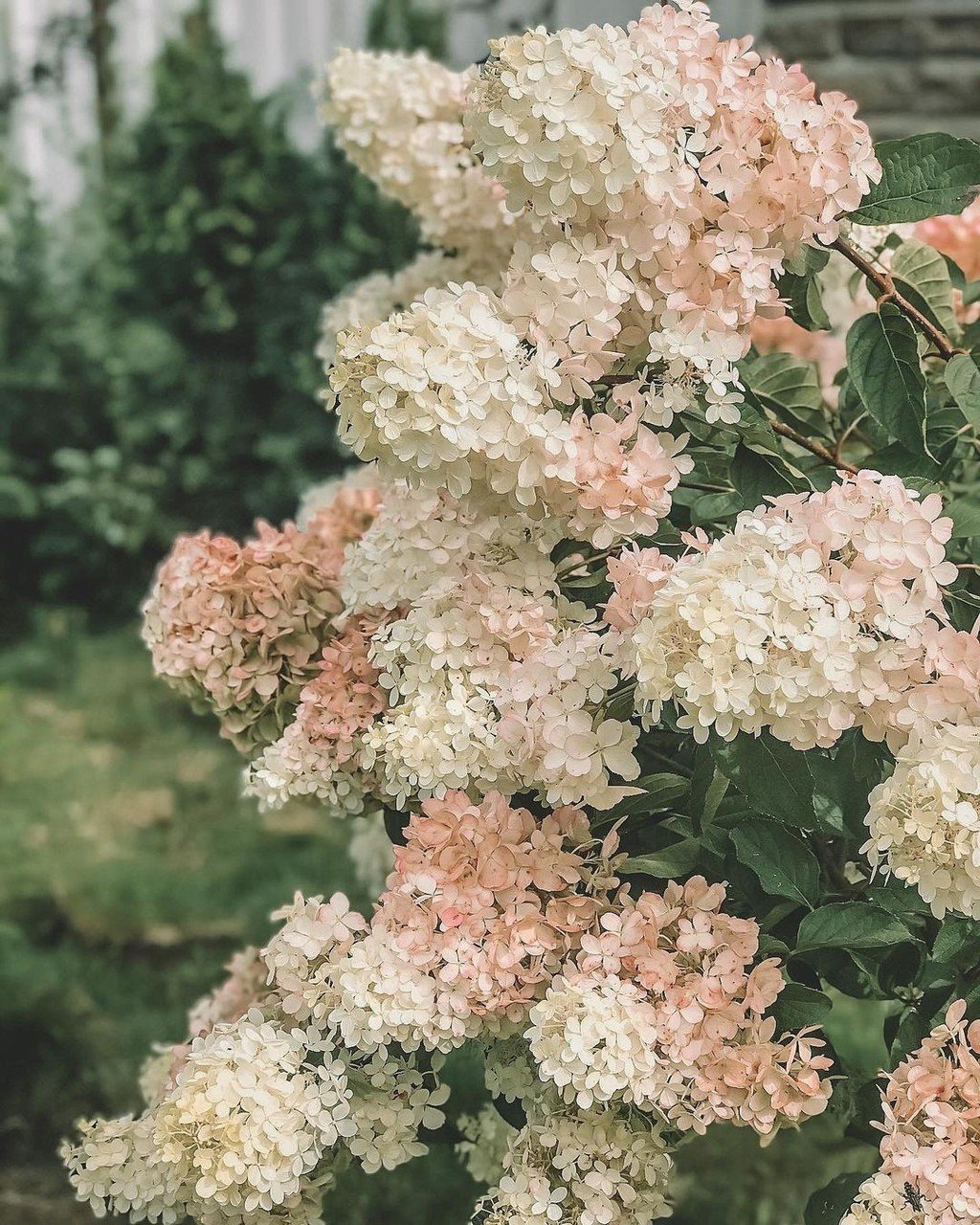
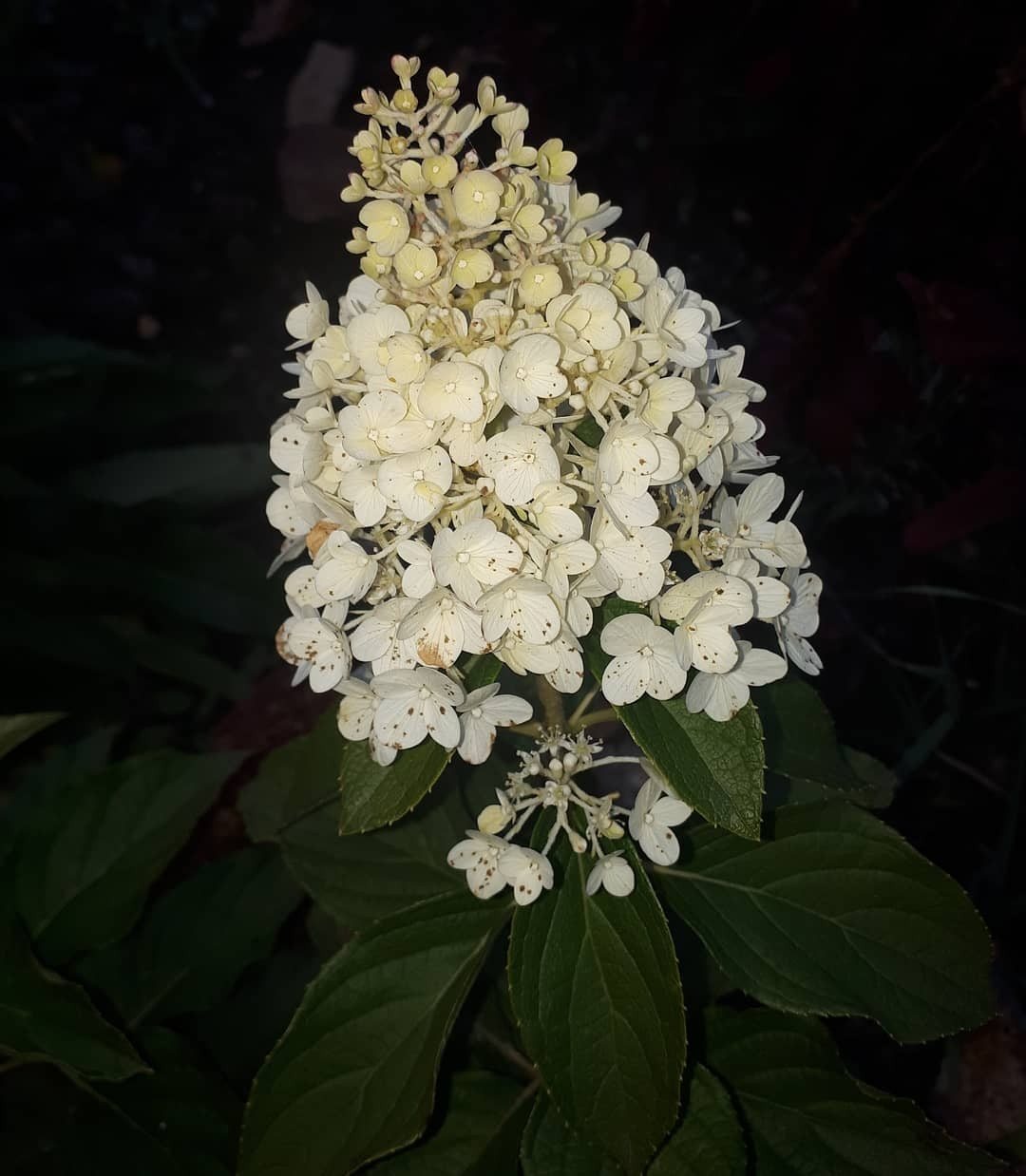
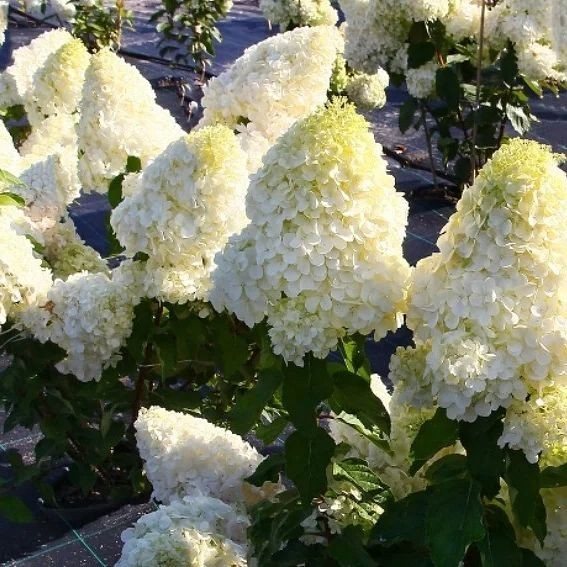





Samara Lydia
The height of the plant is a maximum of 1.5 meters. Hydrangea has a compact crown and abundant flower stalks, equipped with high-density cone-shaped inflorescences. A special feature of the variety is considered to be very strong shoots, on which the inflorescences hold on even in strong winds or rains.
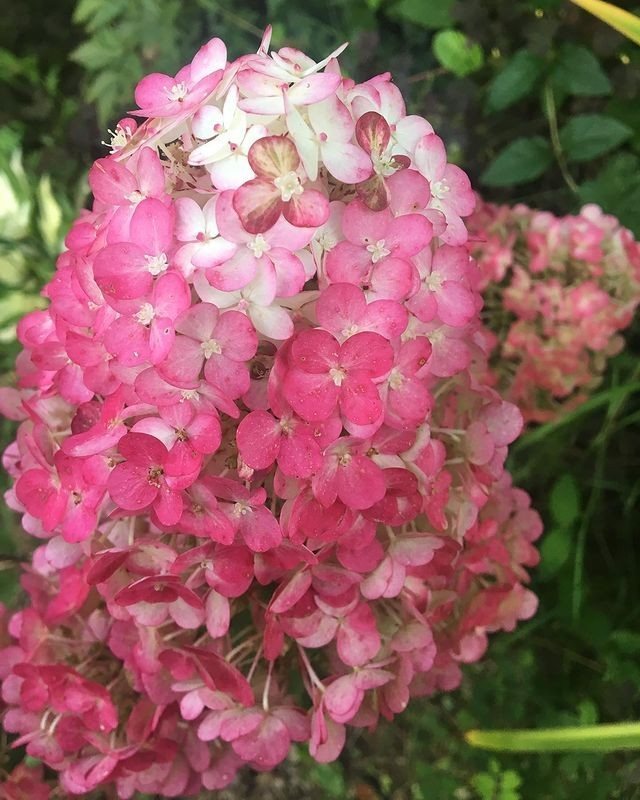
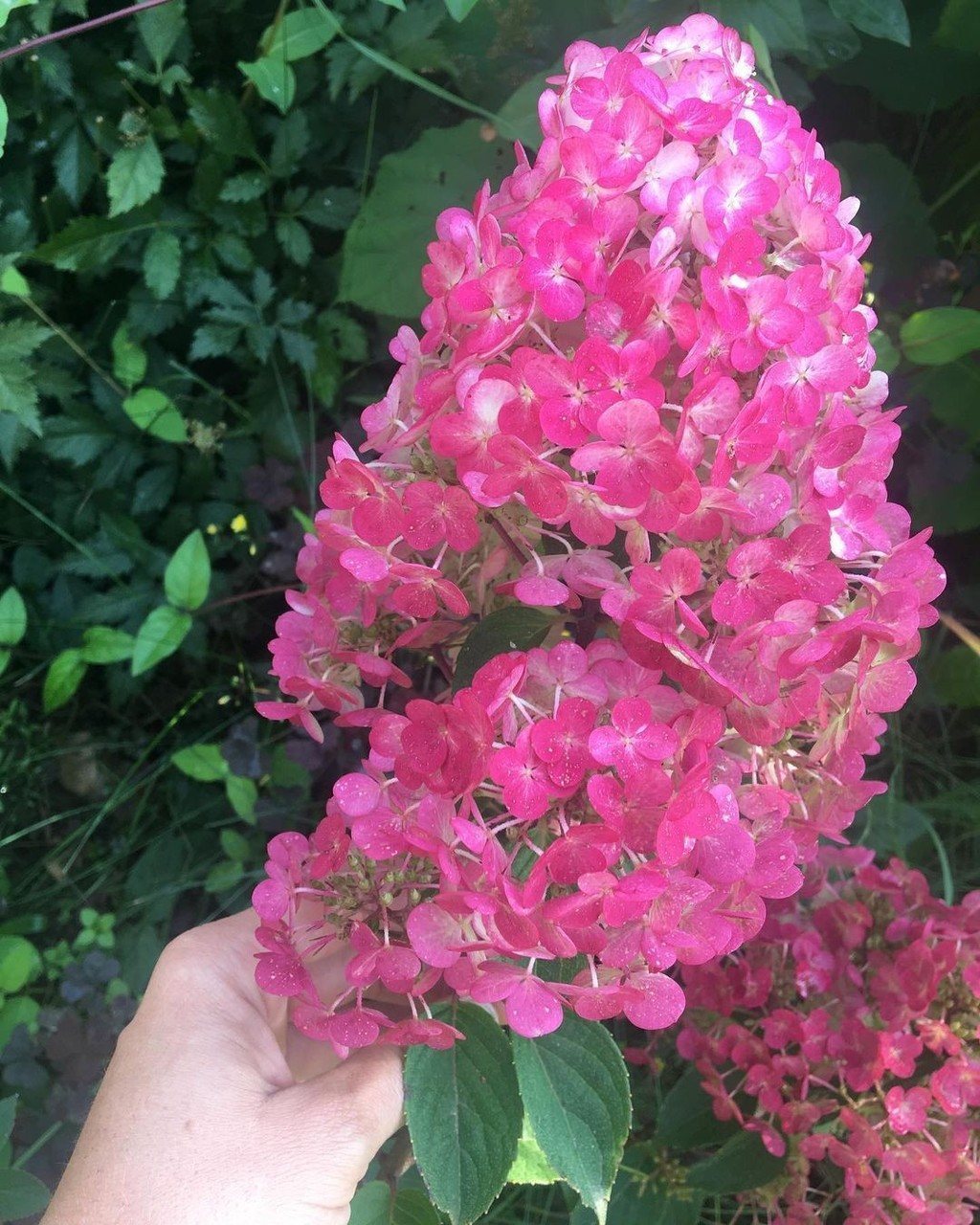
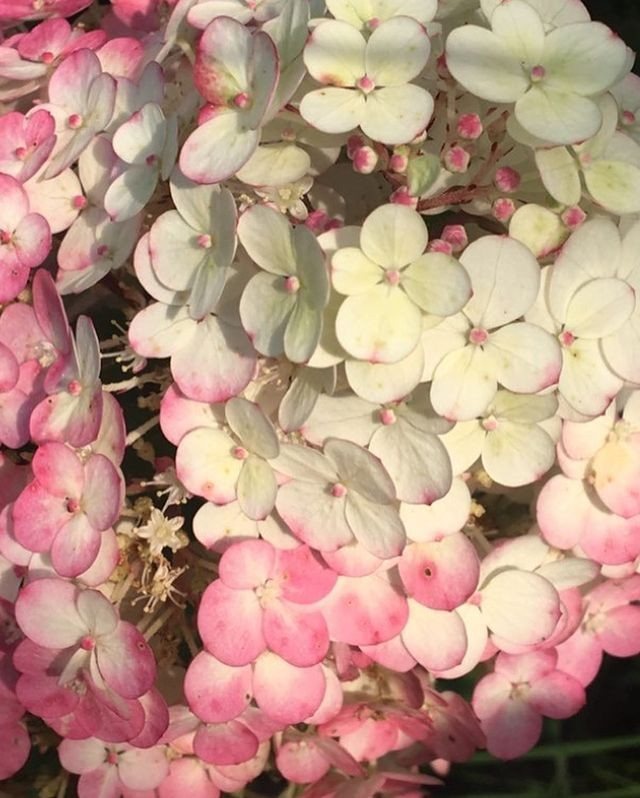
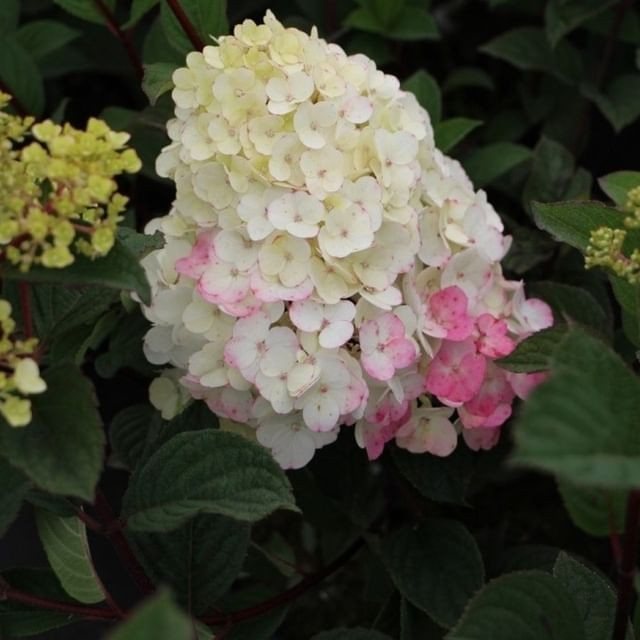
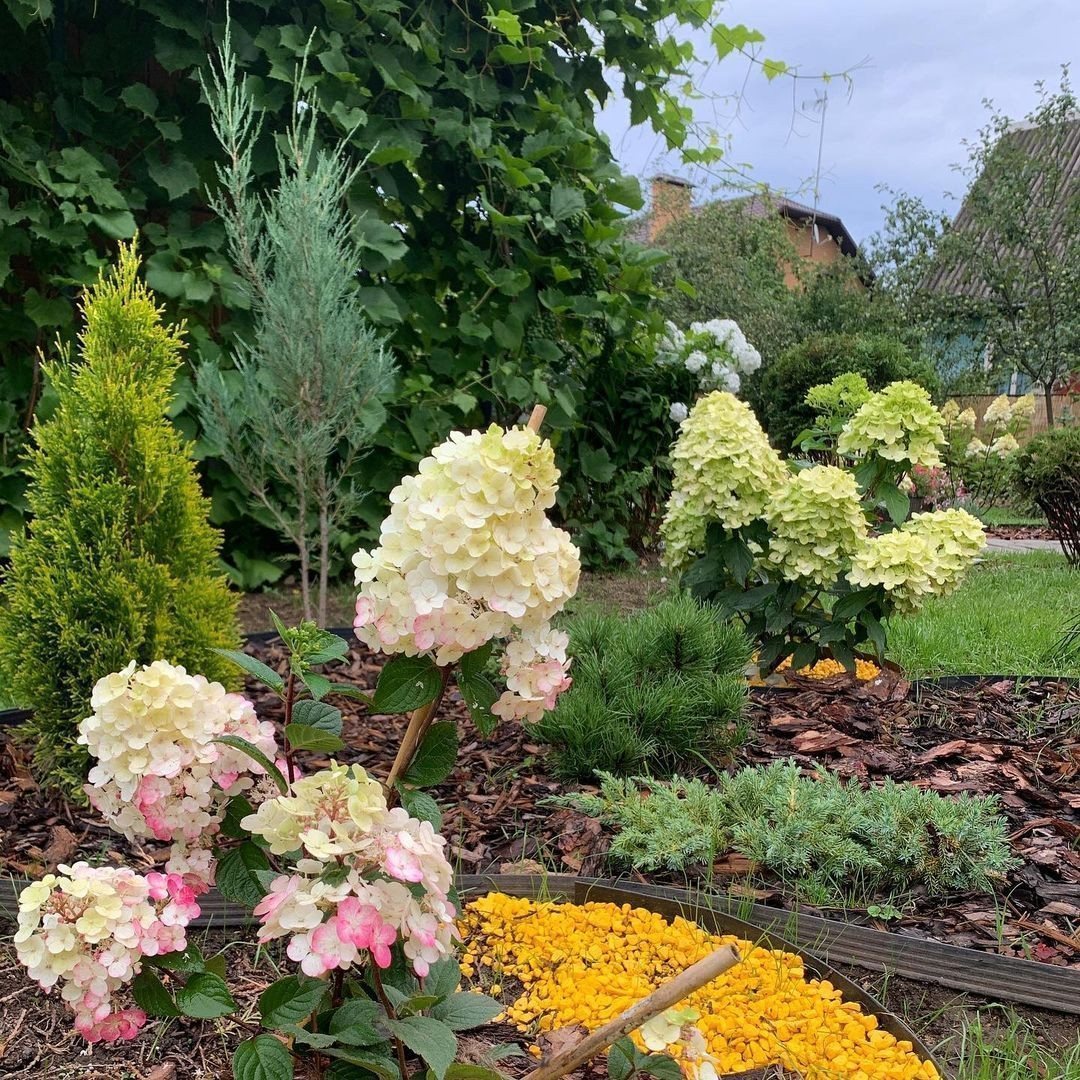





Limelight
The variety was created by Dutch breeders. The plant is presented in the form of a shrub, the height of which reaches 2.5 meters. Already in July, lush inflorescences appear on rigid stems, which completely cover the foliage. It takes approximately 3 years to form the trunk of a bush plant, and this variety can usually only be found in nurseries.
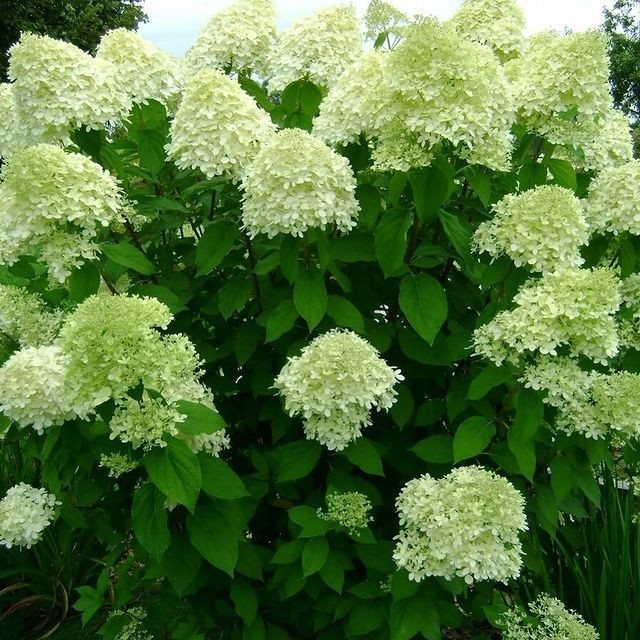
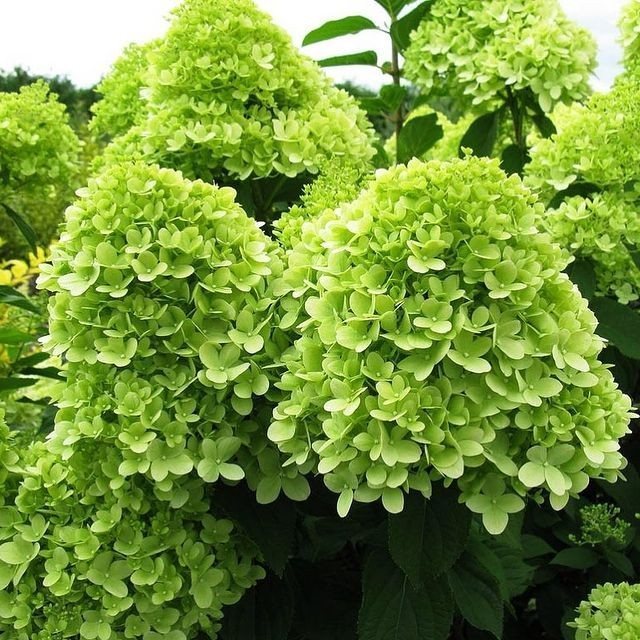
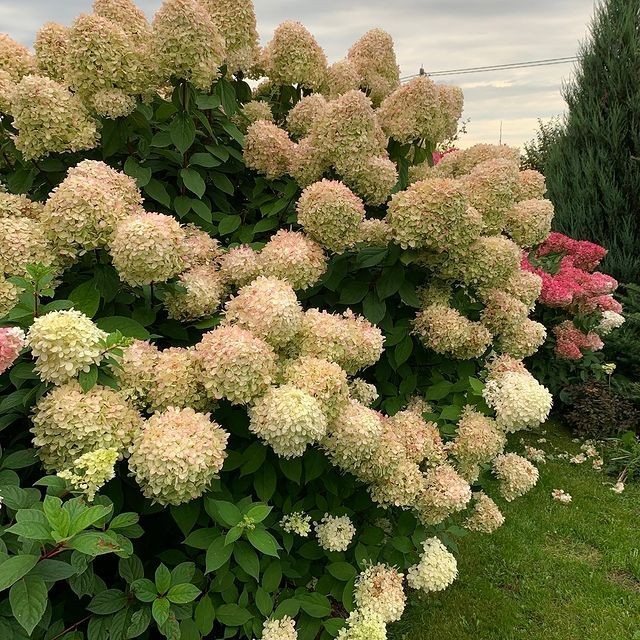

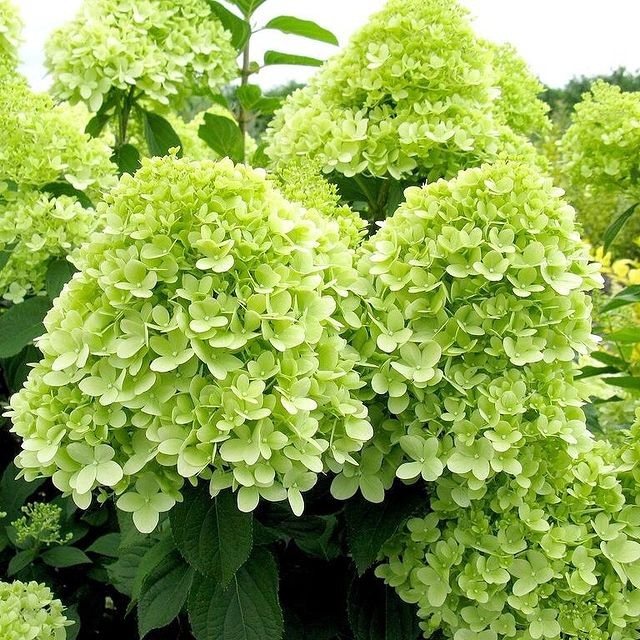





Vanilla Fraze
With proper care, this perennial plant has been pleasing gardeners for more than 50 years. The name comes from the beautiful vanilla-strawberry hue of the flowers. During flowering, the color changes from creamy white to pink. By the end of autumn, the caps acquire a dark crimson hue.
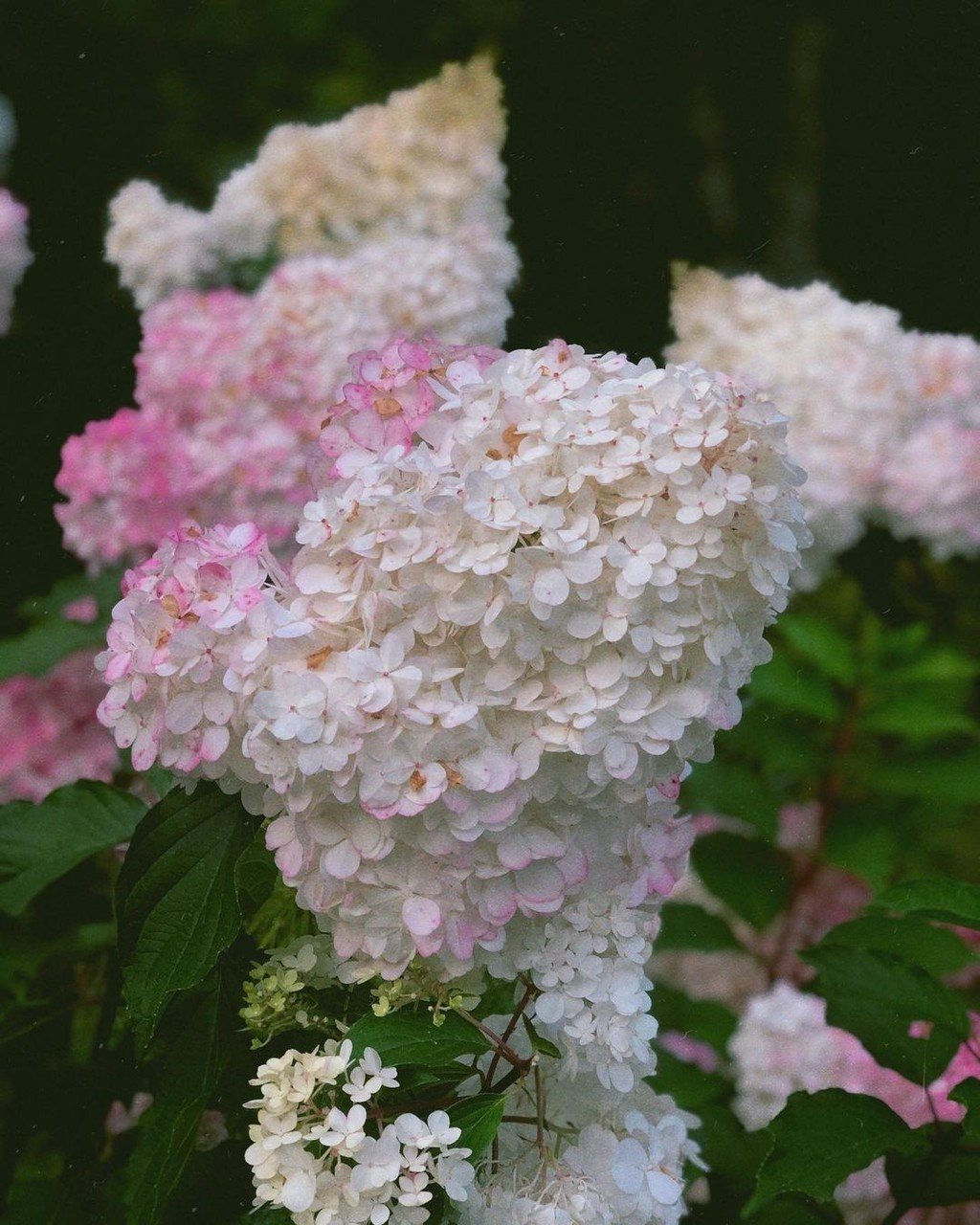
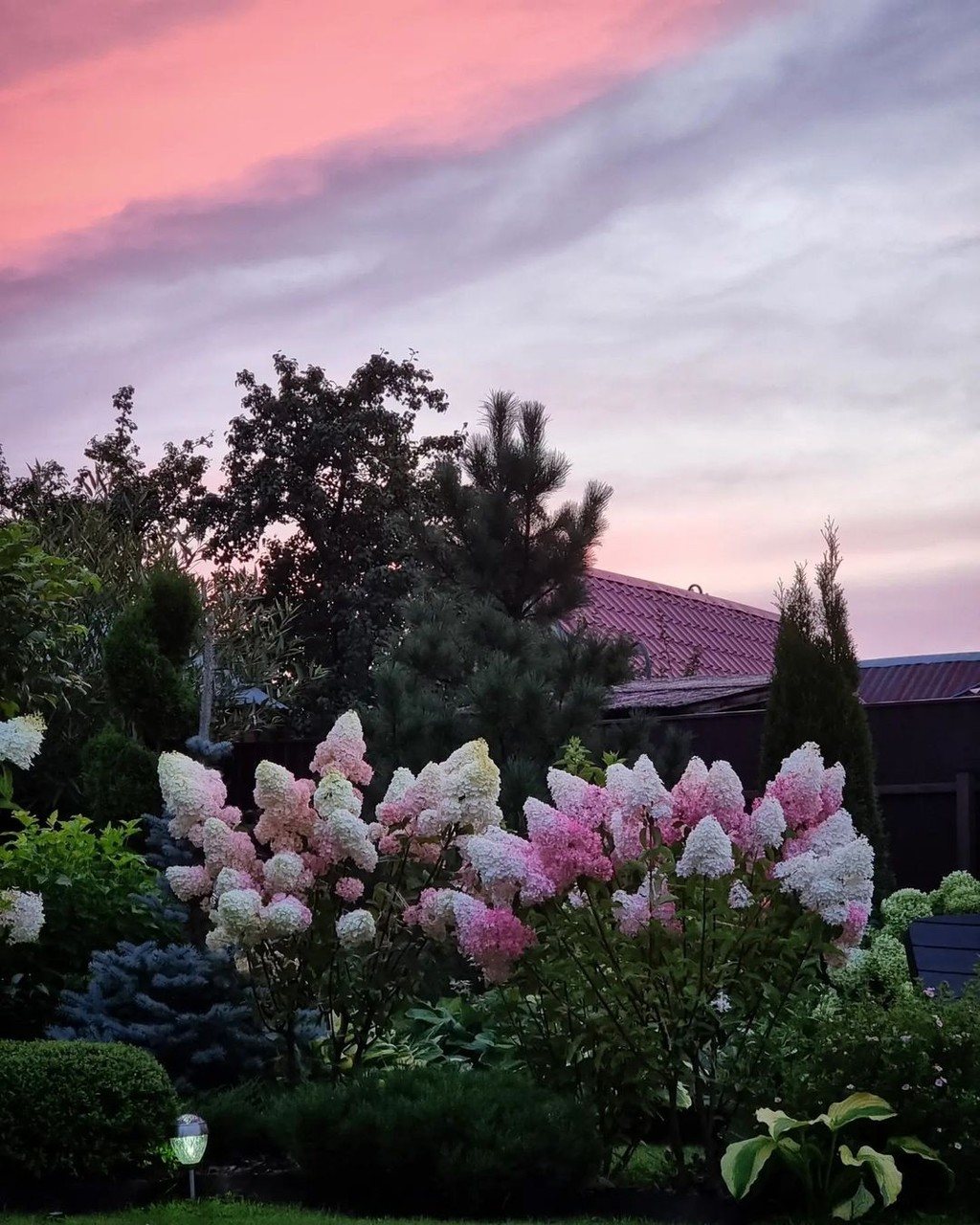
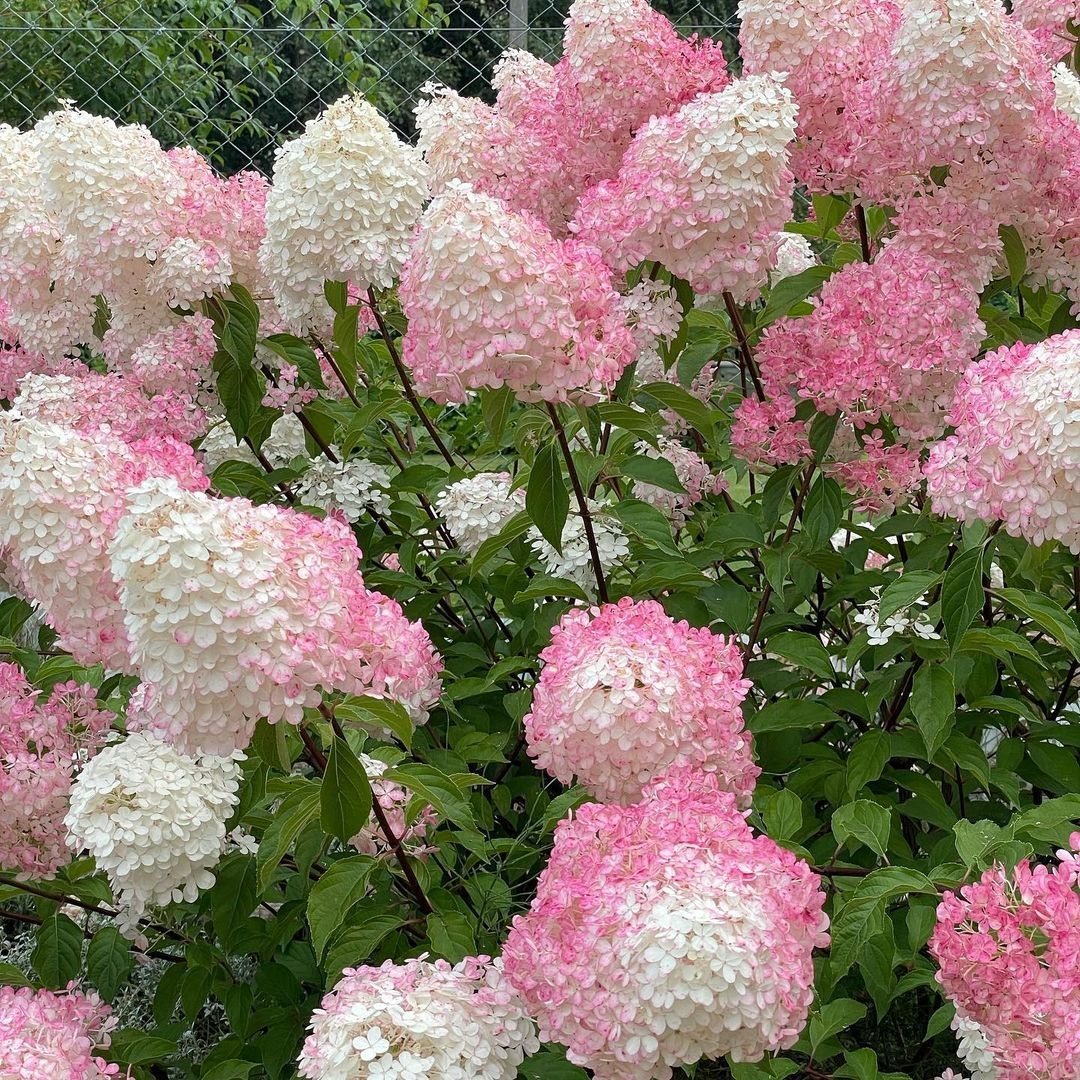
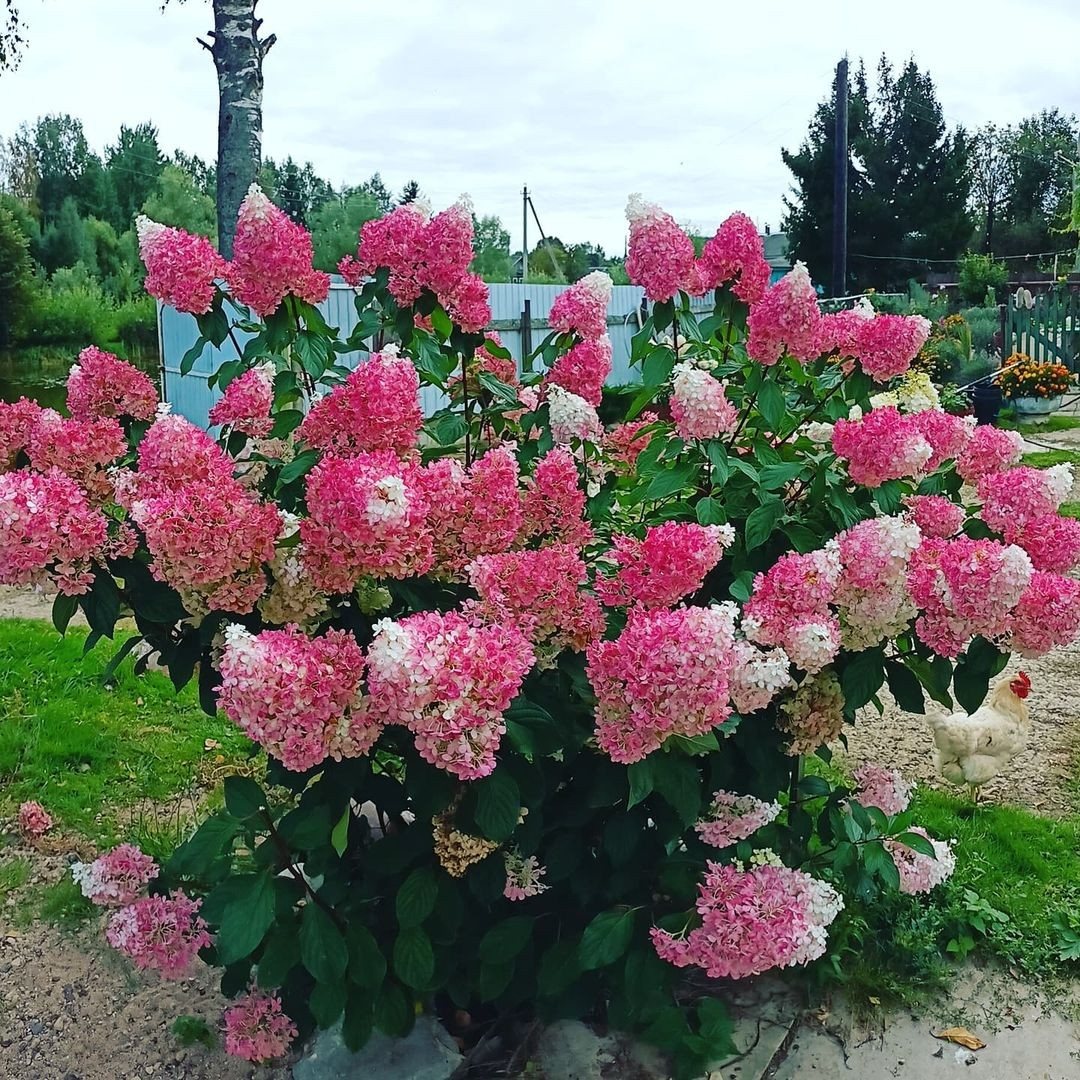
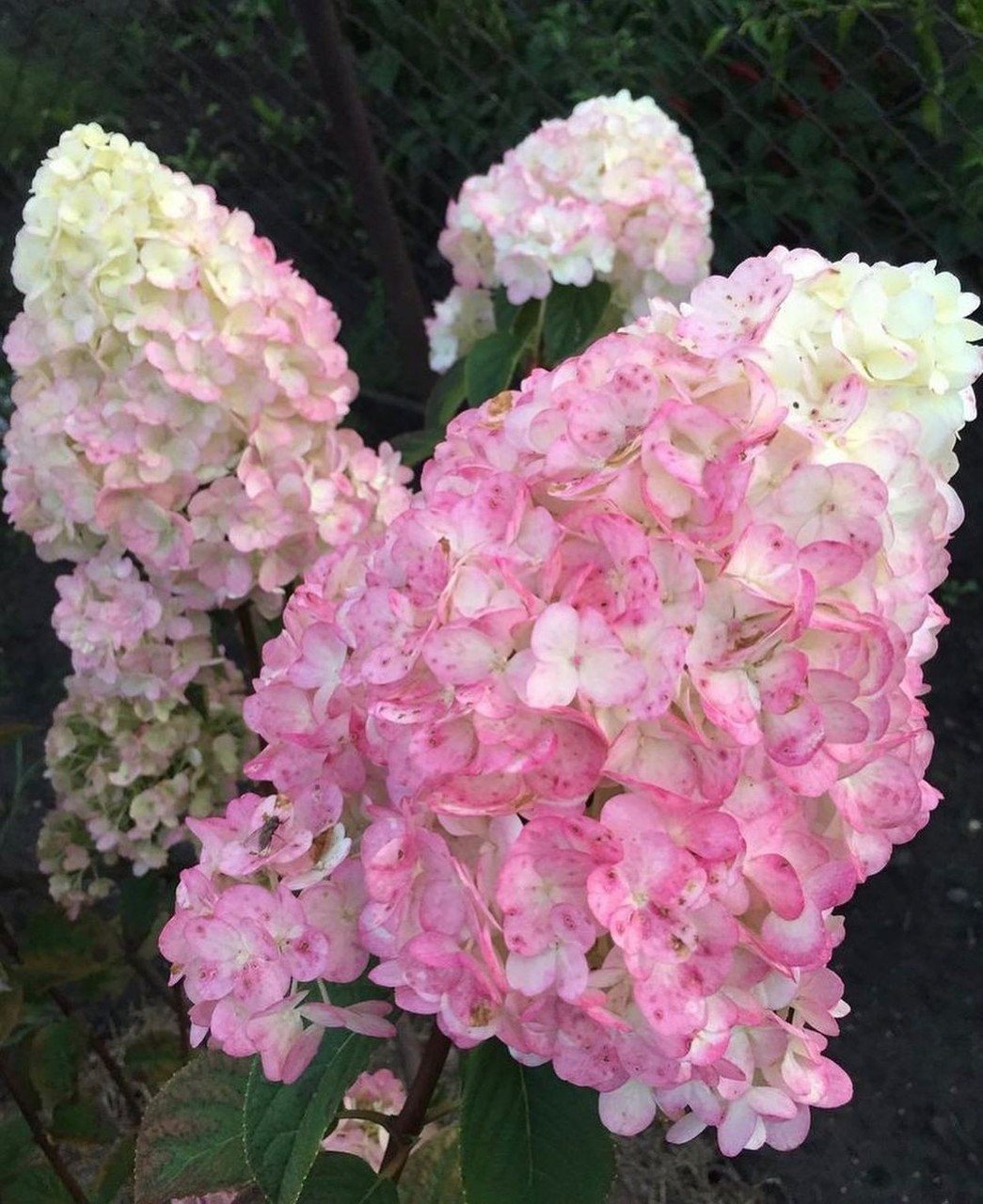





Pinky Winky
This variety is represented by a beautiful flowering perennial shrub, the height of which is 2.5 m.Its features include a compact rounded crown, strong branches and gray-brown shoots with lush cone-shaped inflorescences. The original white-beige color changes to bright pink.
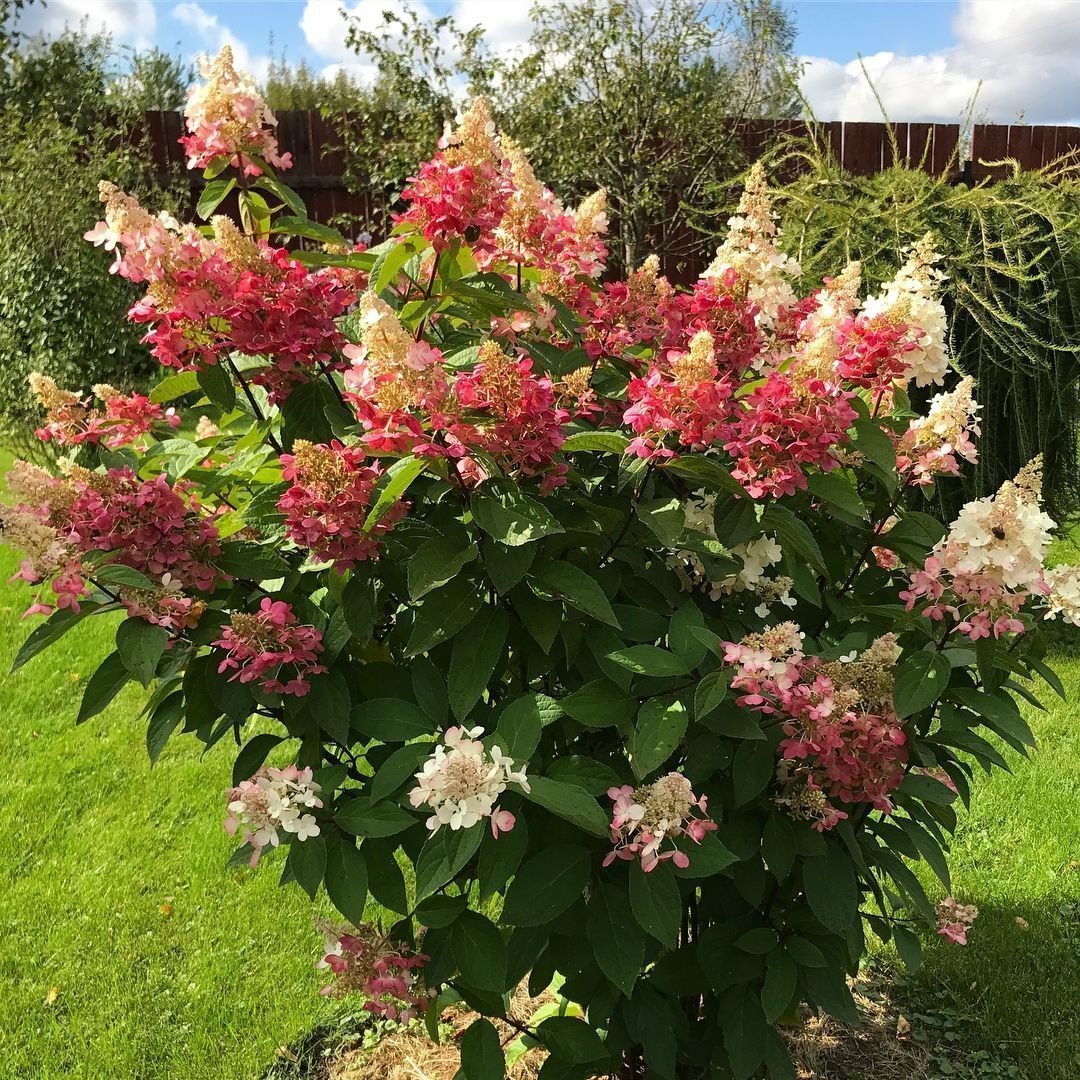

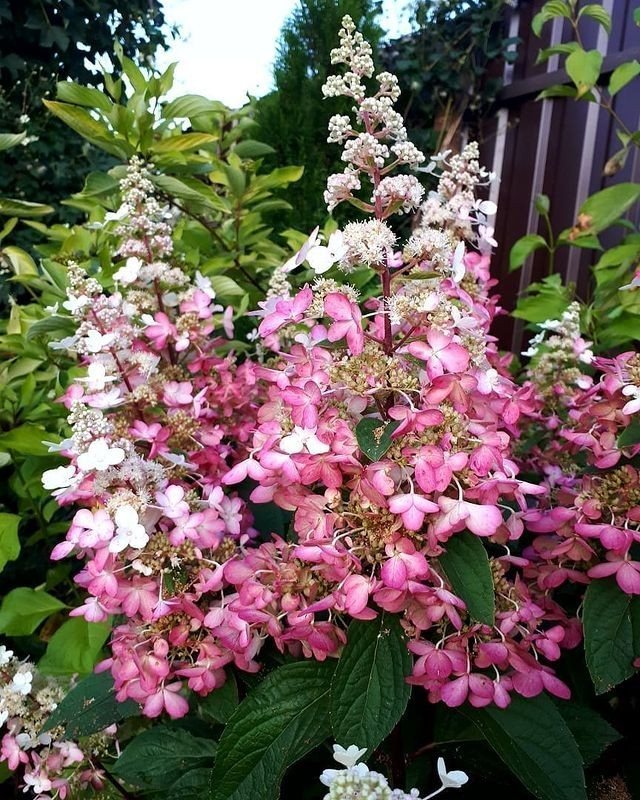
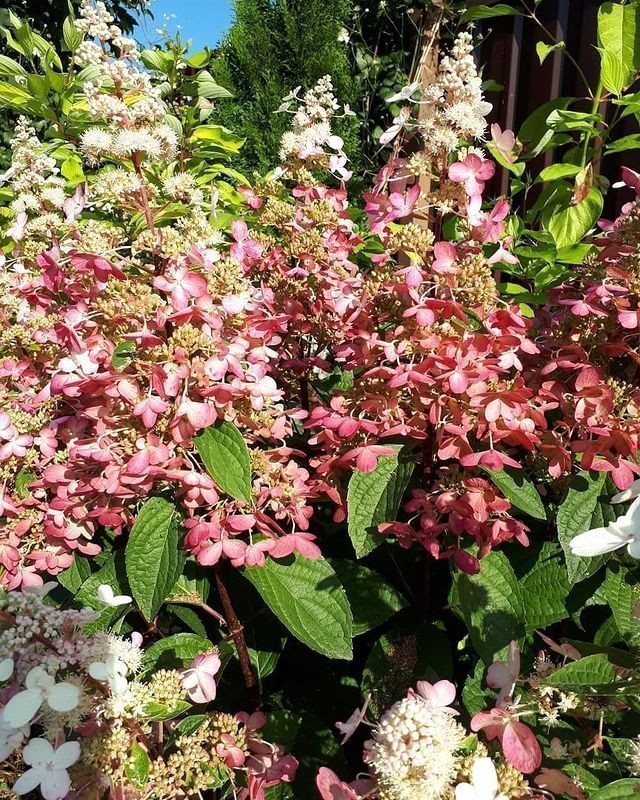






Frize Melba
The variety appeared relatively recently, but quickly became popular among gardeners and florists. The color of the inflorescences resembles the color of strawberries and cream. The plant has large cone-shaped inflorescences, consisting of dense flowers, tightly adjacent to each other. Hydrangea blooms from early July until late frosts.
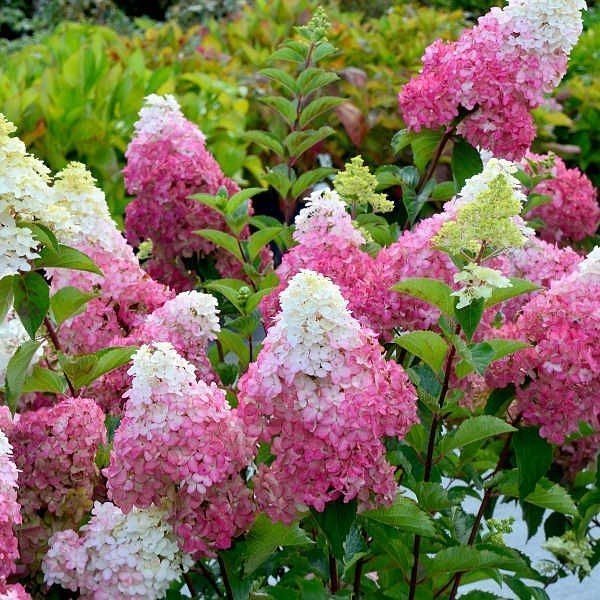
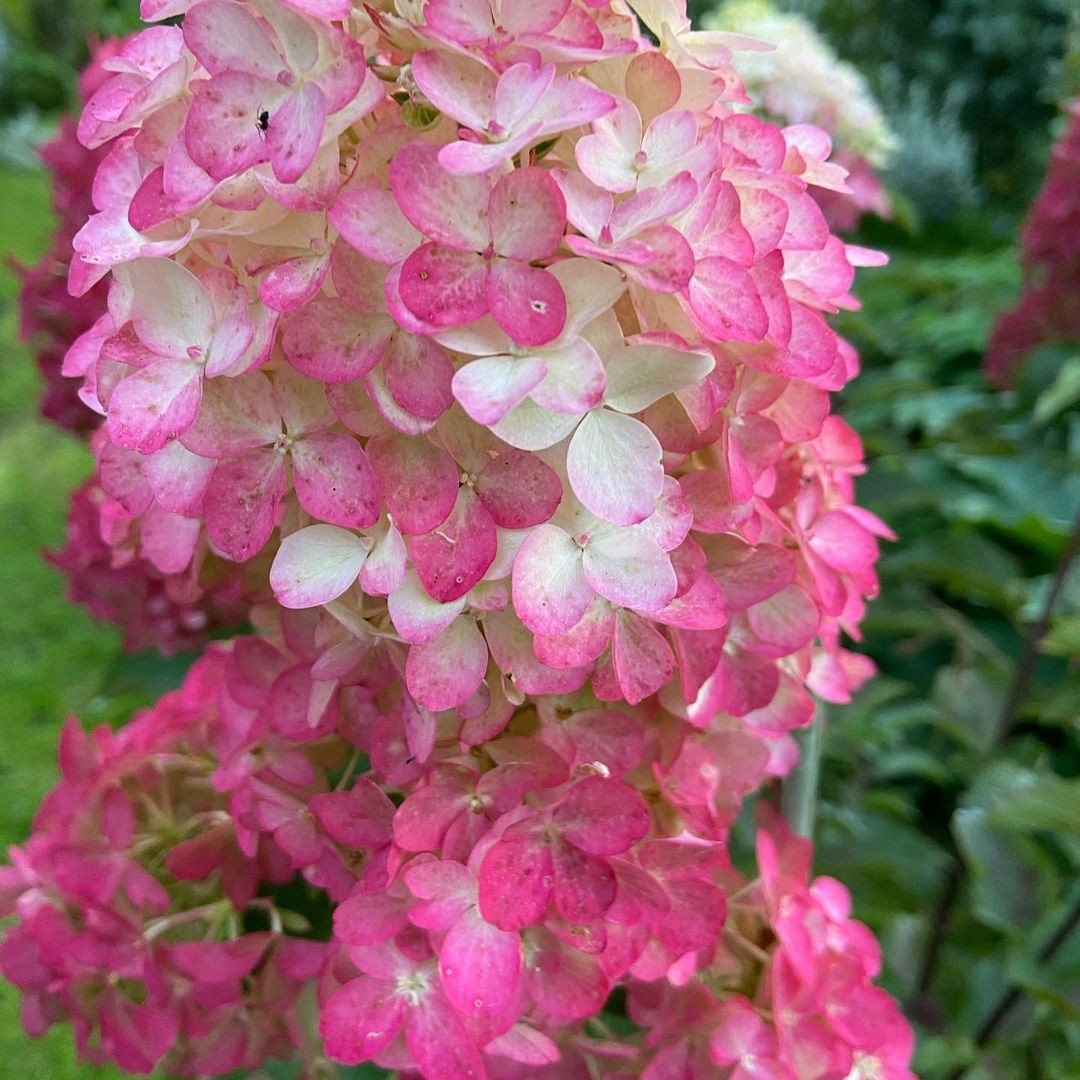
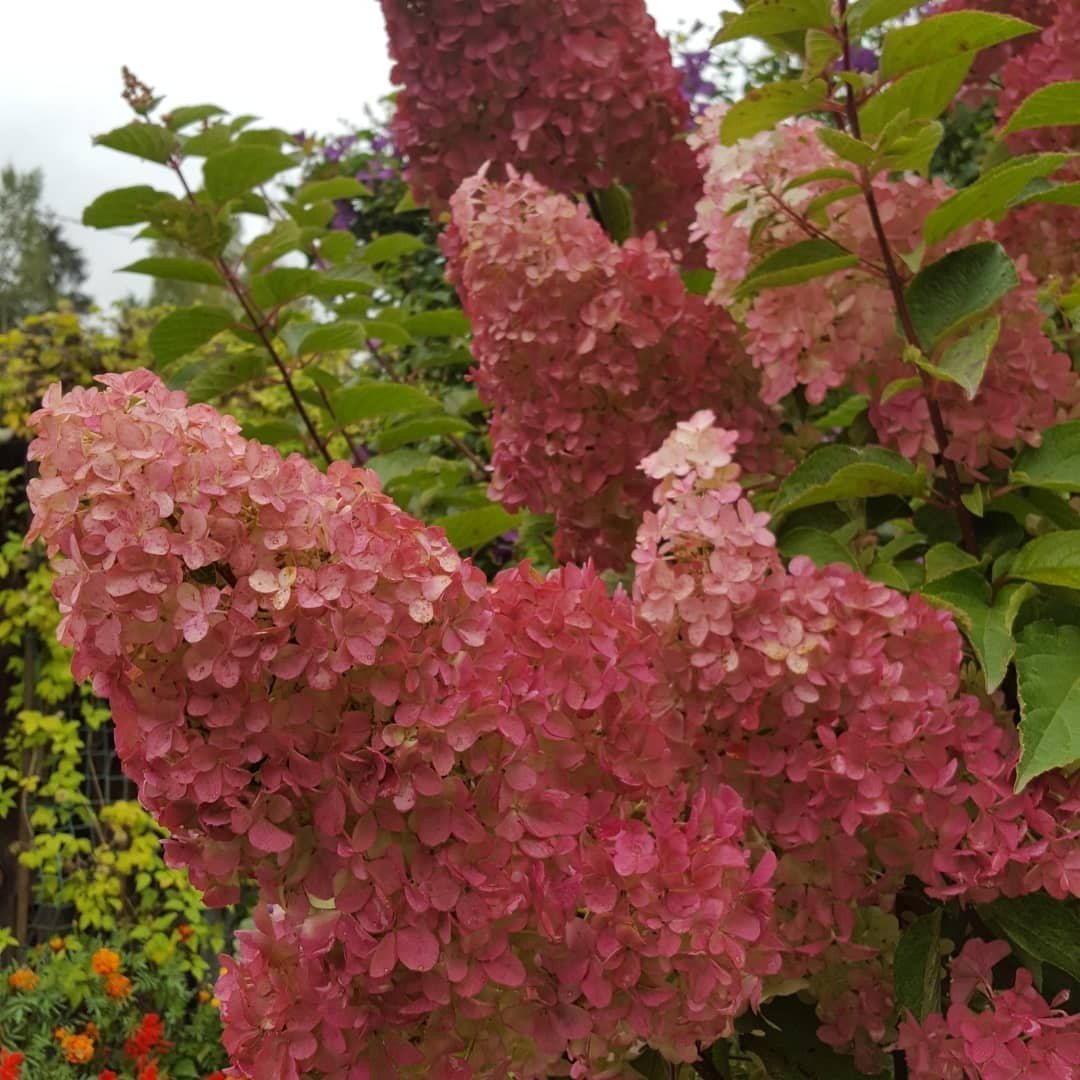
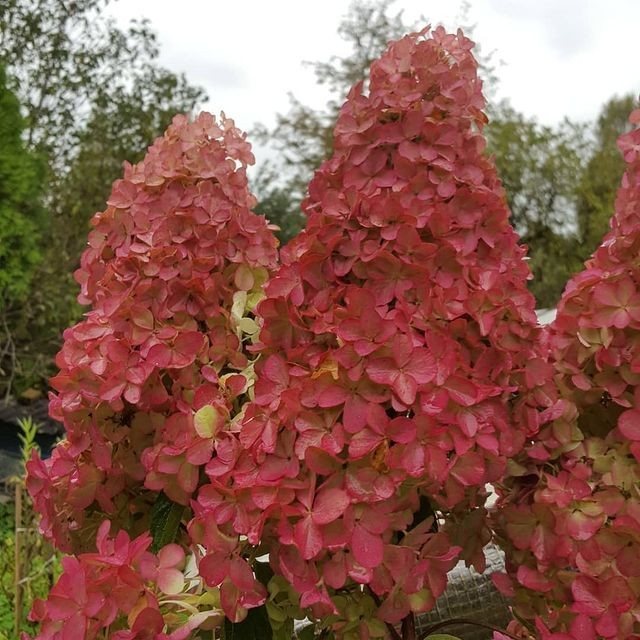
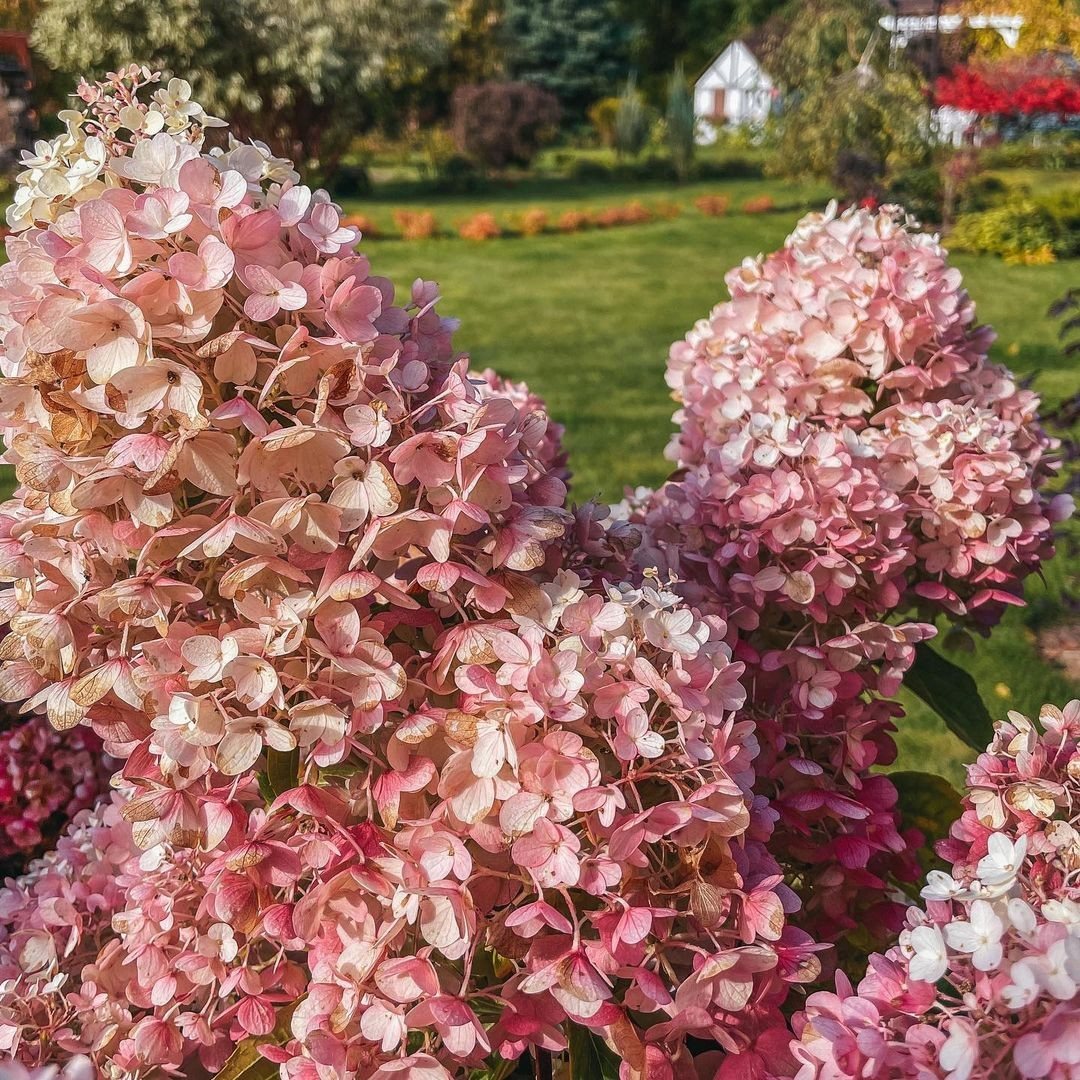





Sunday fries
Hydrangea of this variety is represented by a spreading shrub on which large pyramidal inflorescences are formed. The plant is characterized by a high frost resistance, and the spherical dense crown reaches a height of 1.5 m. On each branch there are pyramidal inflorescences that change color from white to strawberry-red.
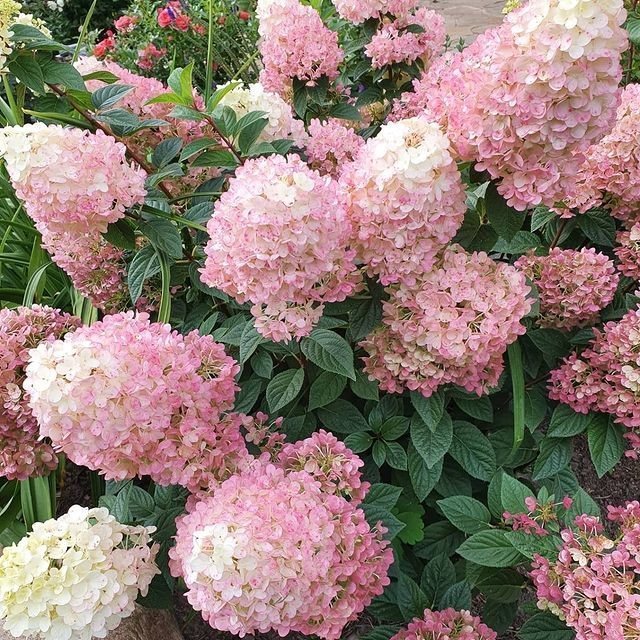
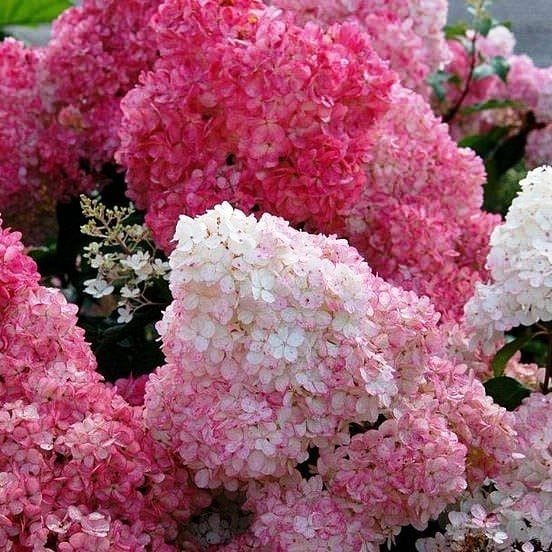
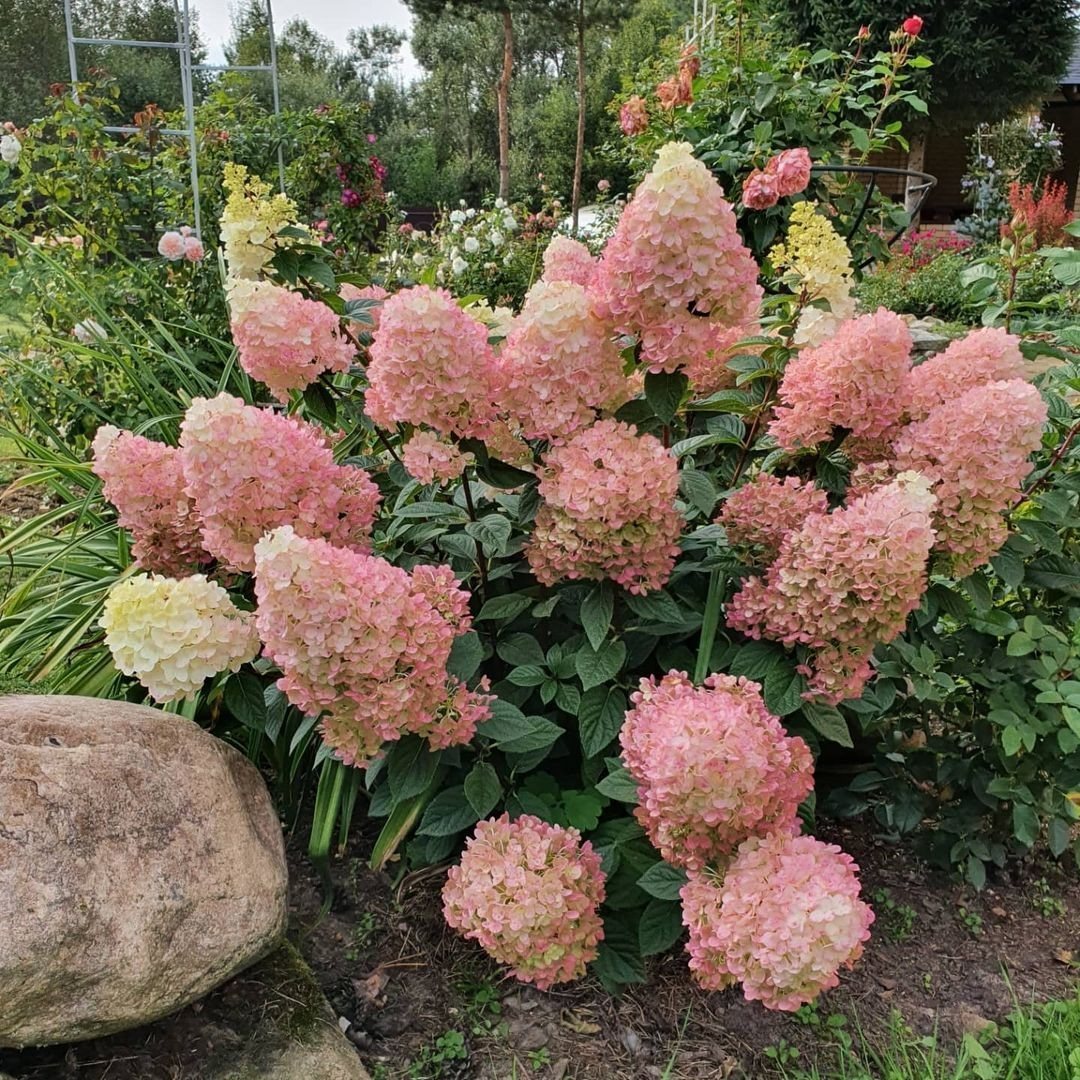
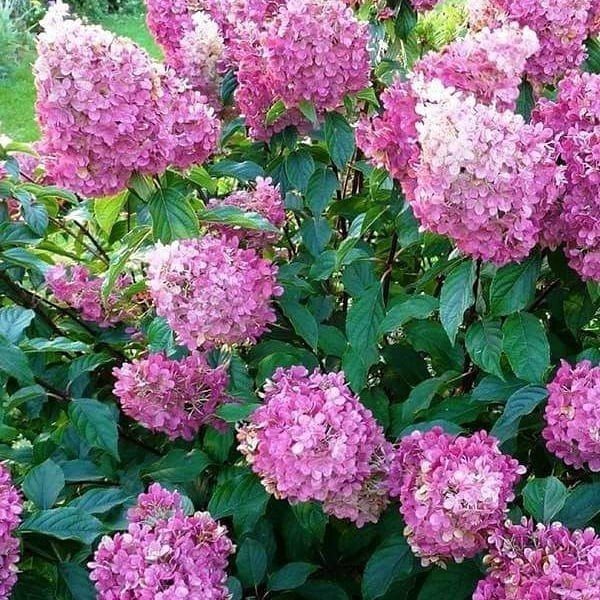
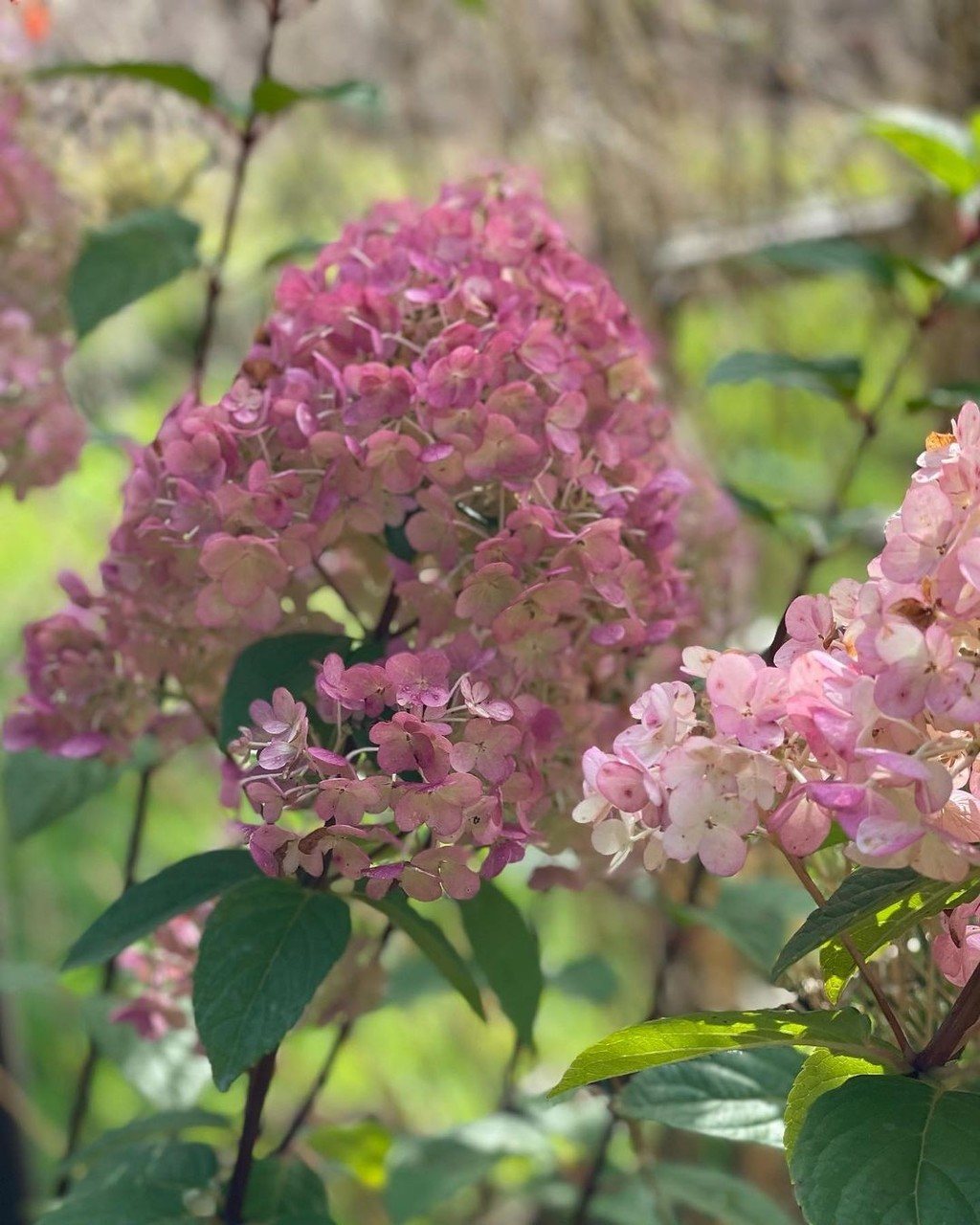





Silver Dollar
The variety is a perennial shrub, the height of which is 1.5 m. The lush plant is equipped with spreading and strong branches that can easily support the weight of large inflorescences, so no garter is required. Hydrangea tolerates low temperatures well.
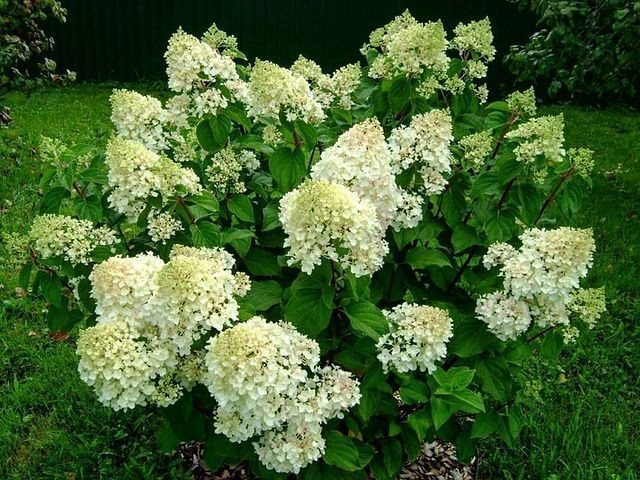
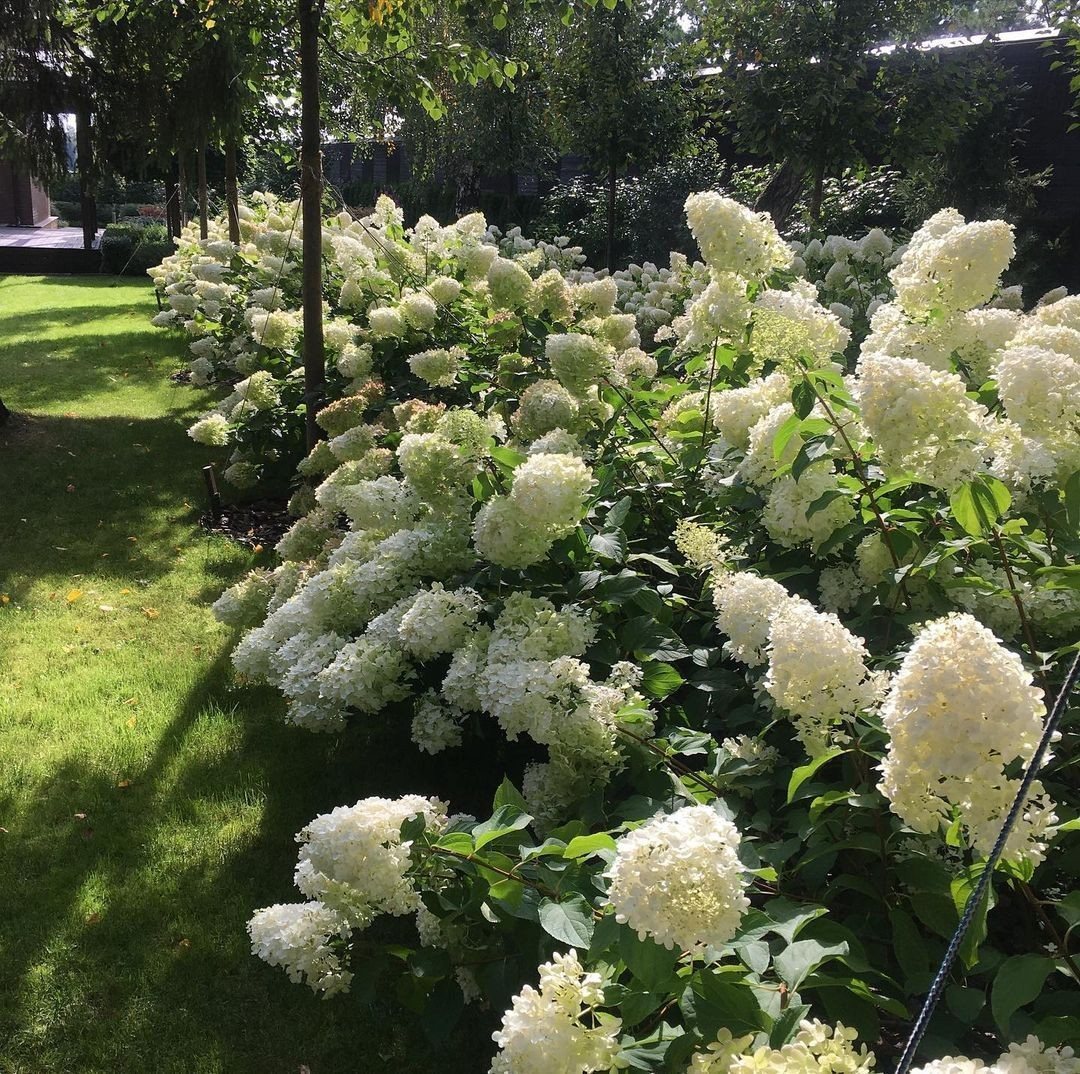
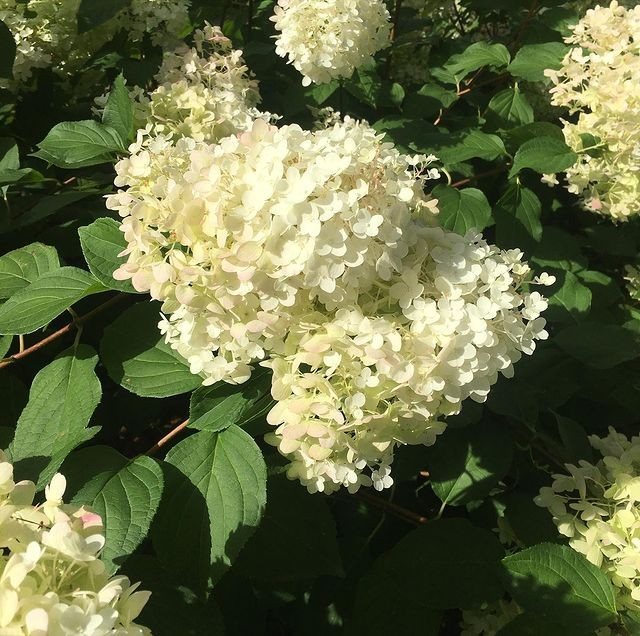
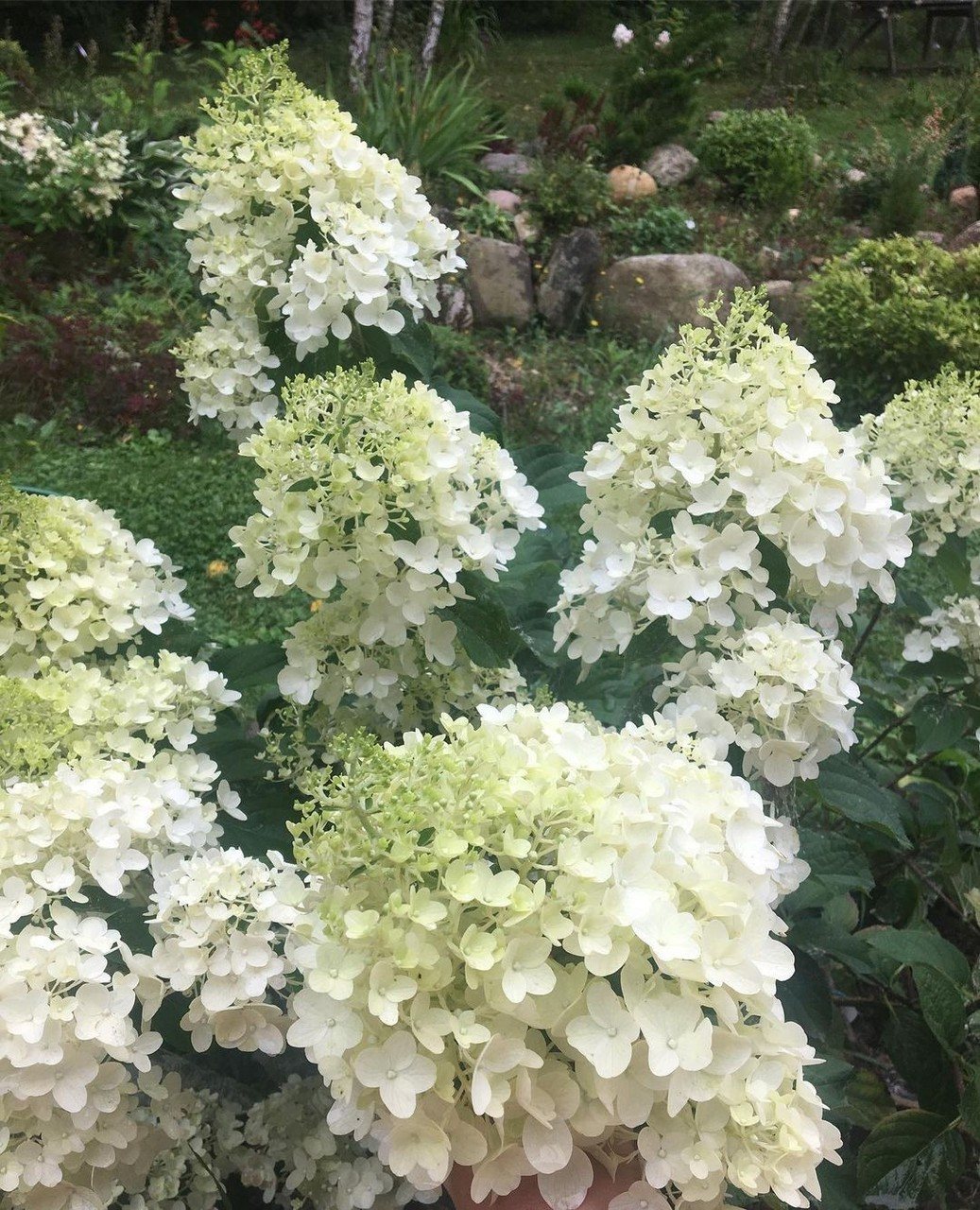
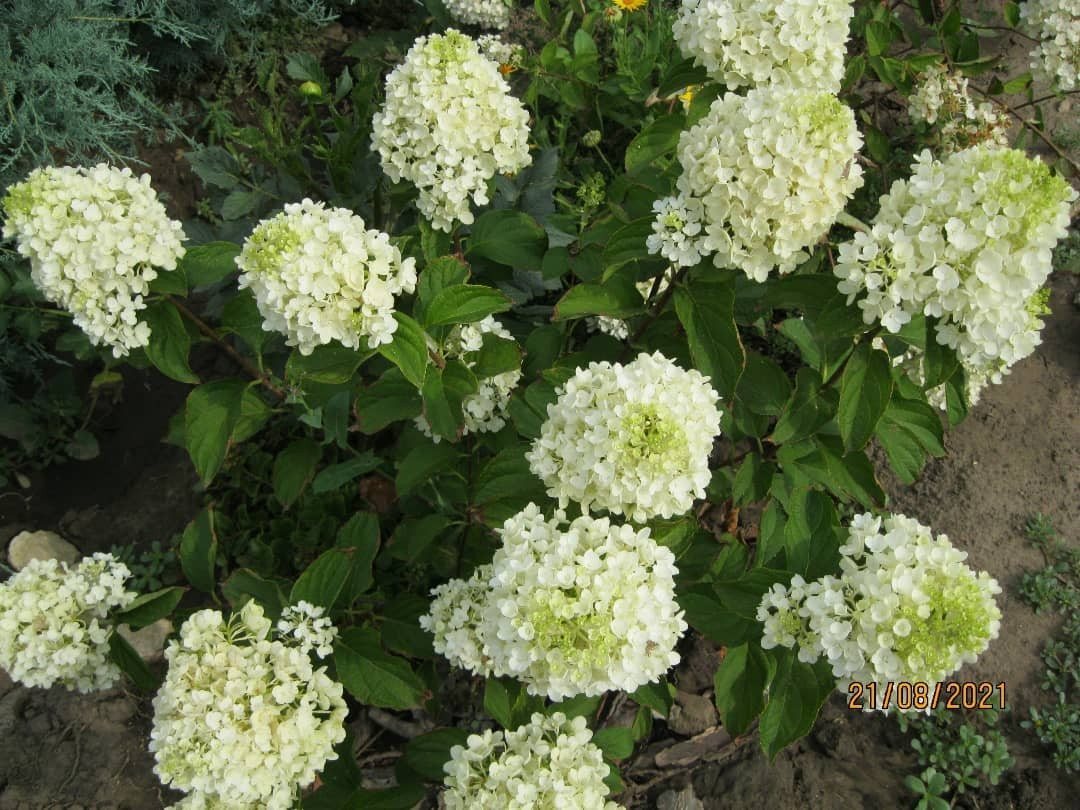





Quishi
The deciduous shrub grows in the wild in the Far East, Japan and China. It looks good alone or next to other living plantings. Thanks to its powerful branches, you can use the plant to create a hedge. The height of the bush reaches 3 m, and the inflorescences have a pyramidal shape.
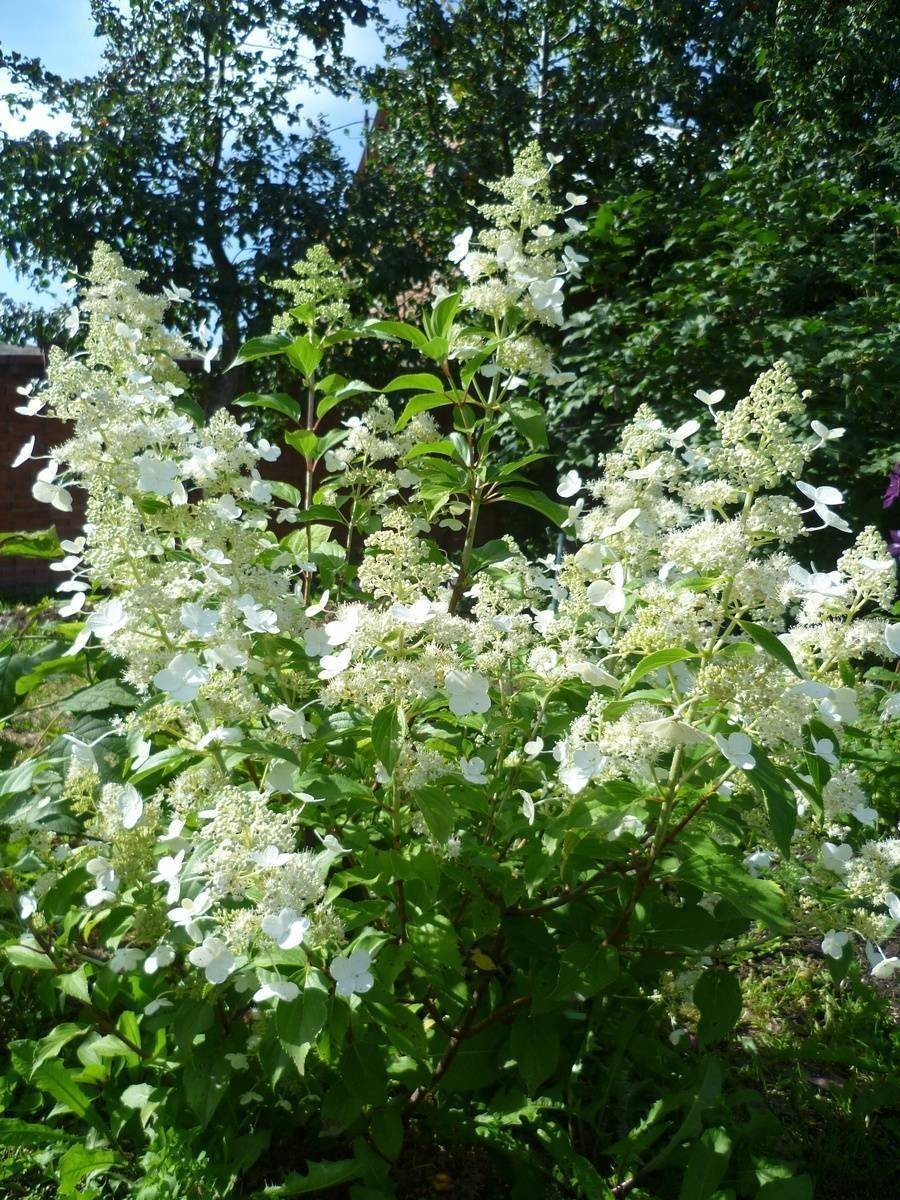
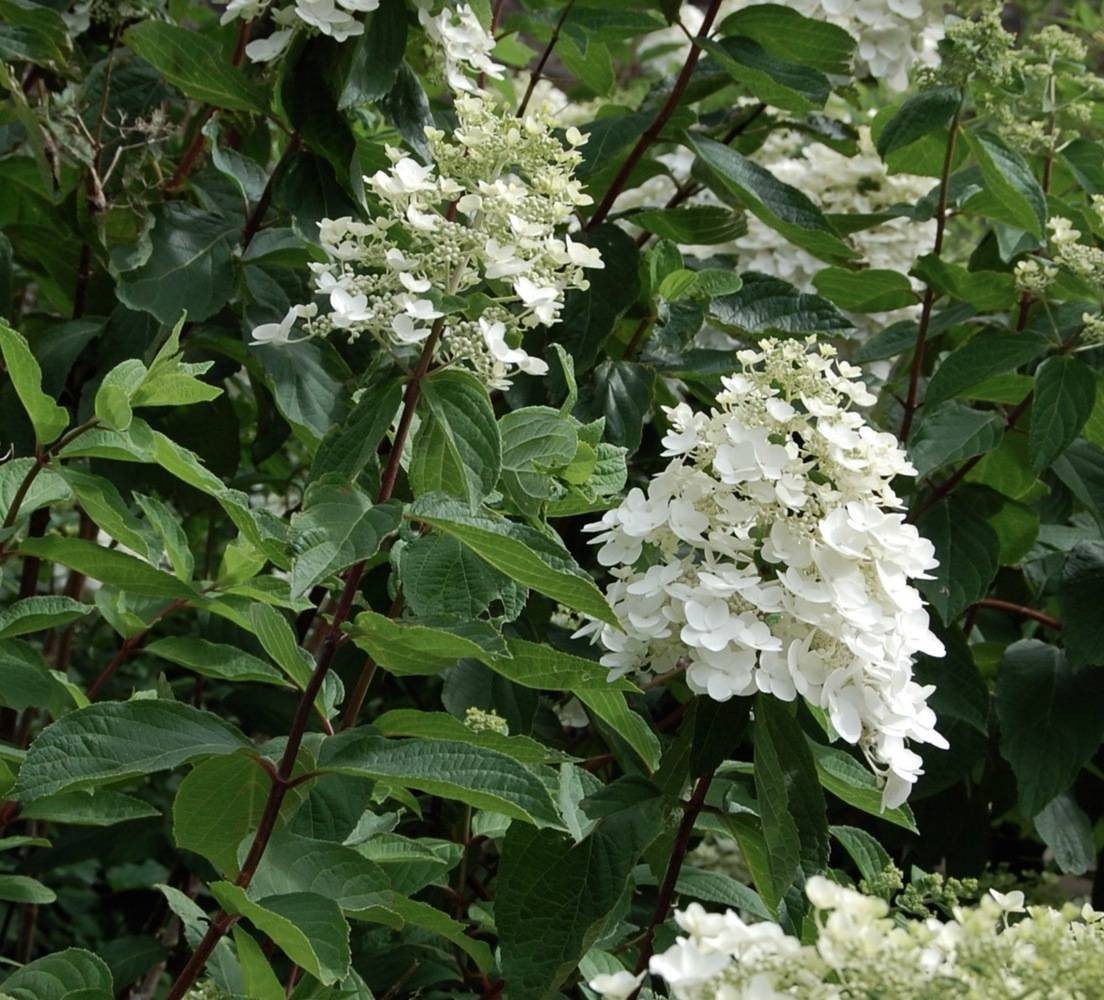
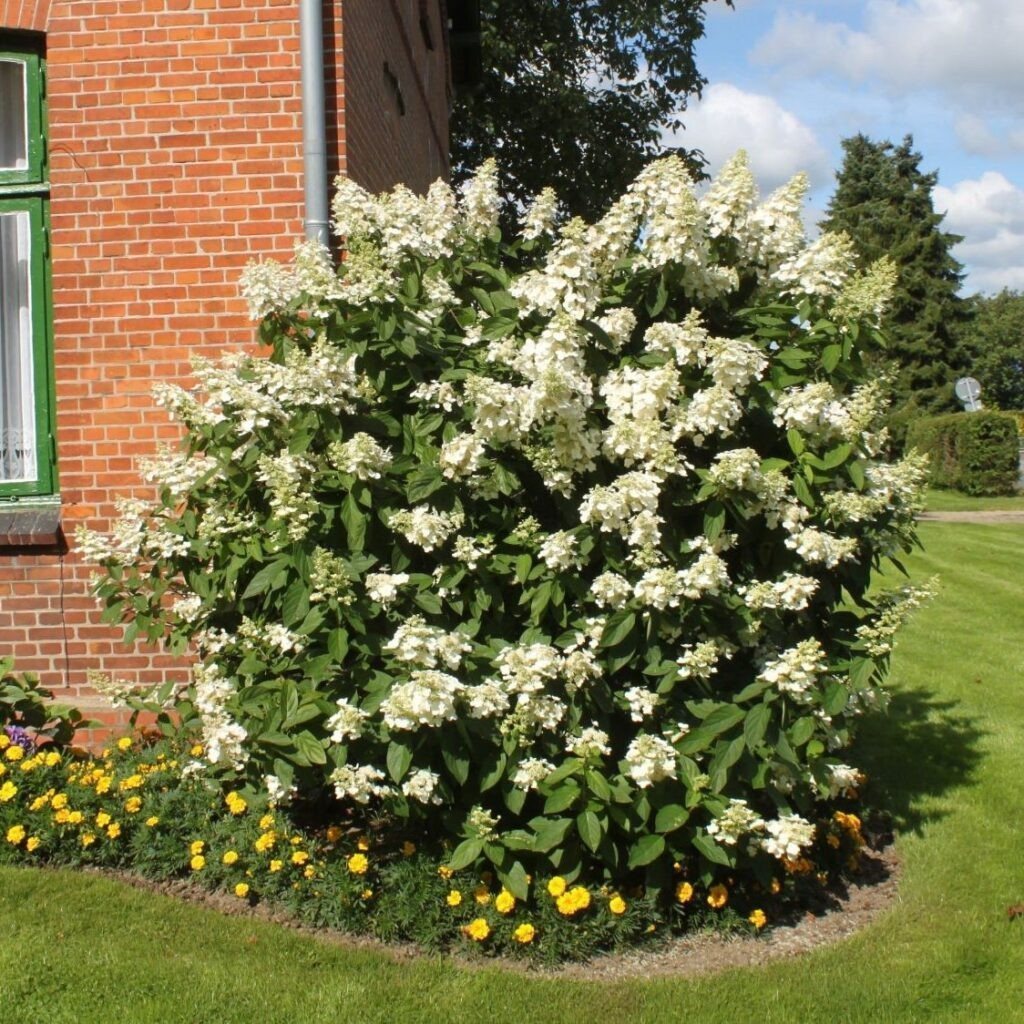
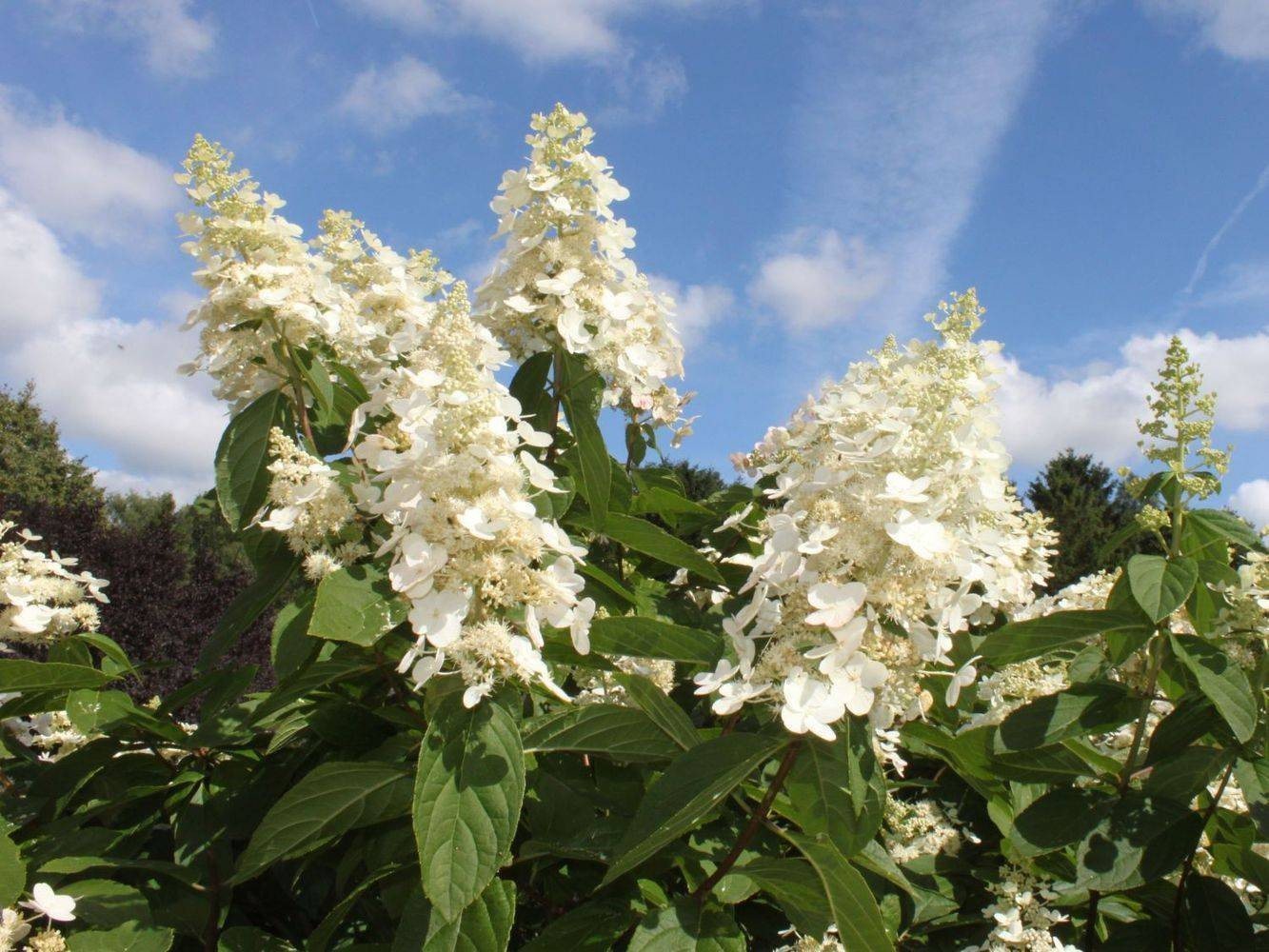
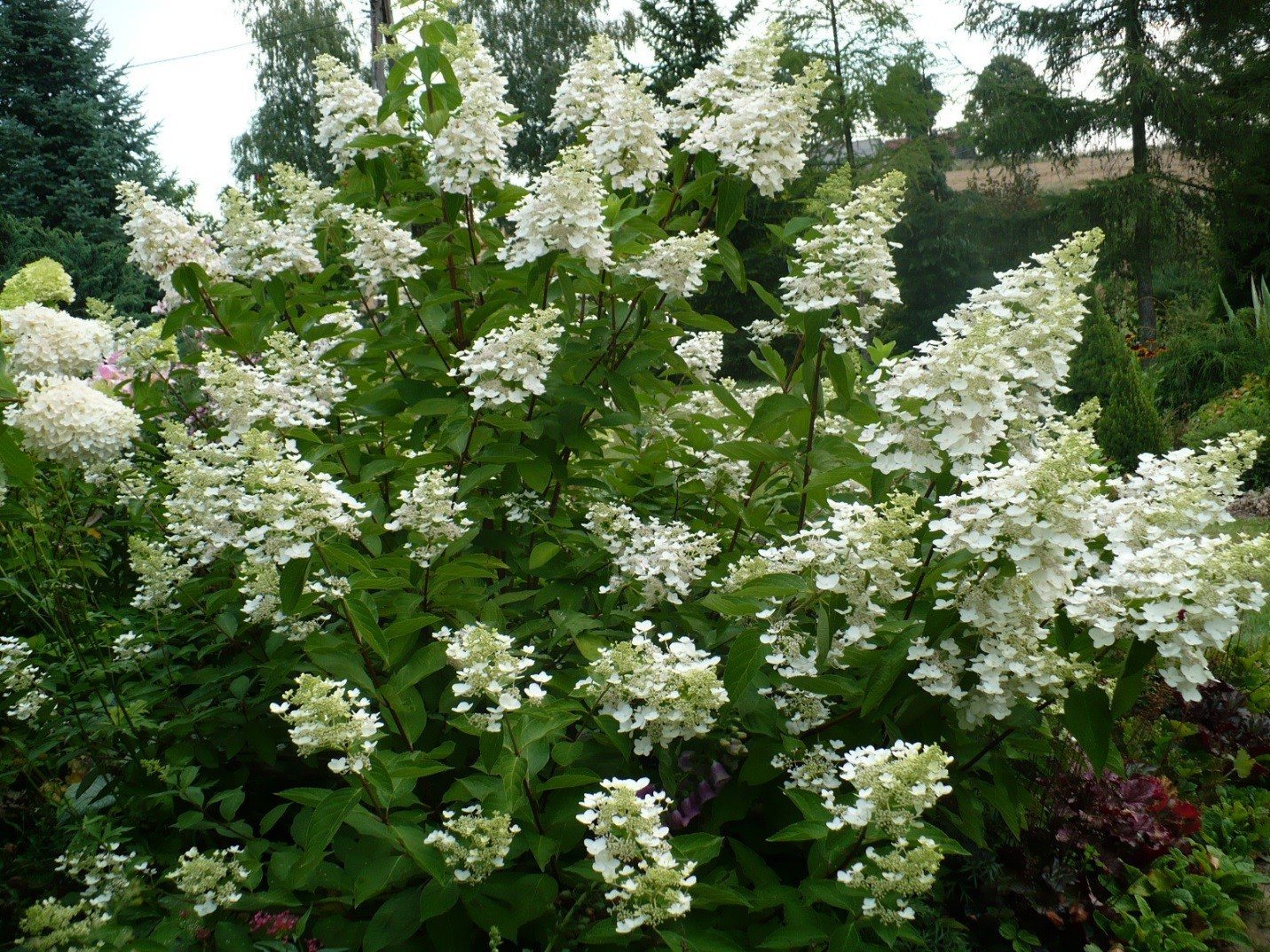





Bobo
Frost-resistant and compact shrub does not require specific care. The height does not exceed 70 cm, and the diameter is about 60 cm. The plant continues to bloom until late autumn due to its high frost resistance.Care consists of periodic watering and fertilizing, and partial shade is chosen for planting.

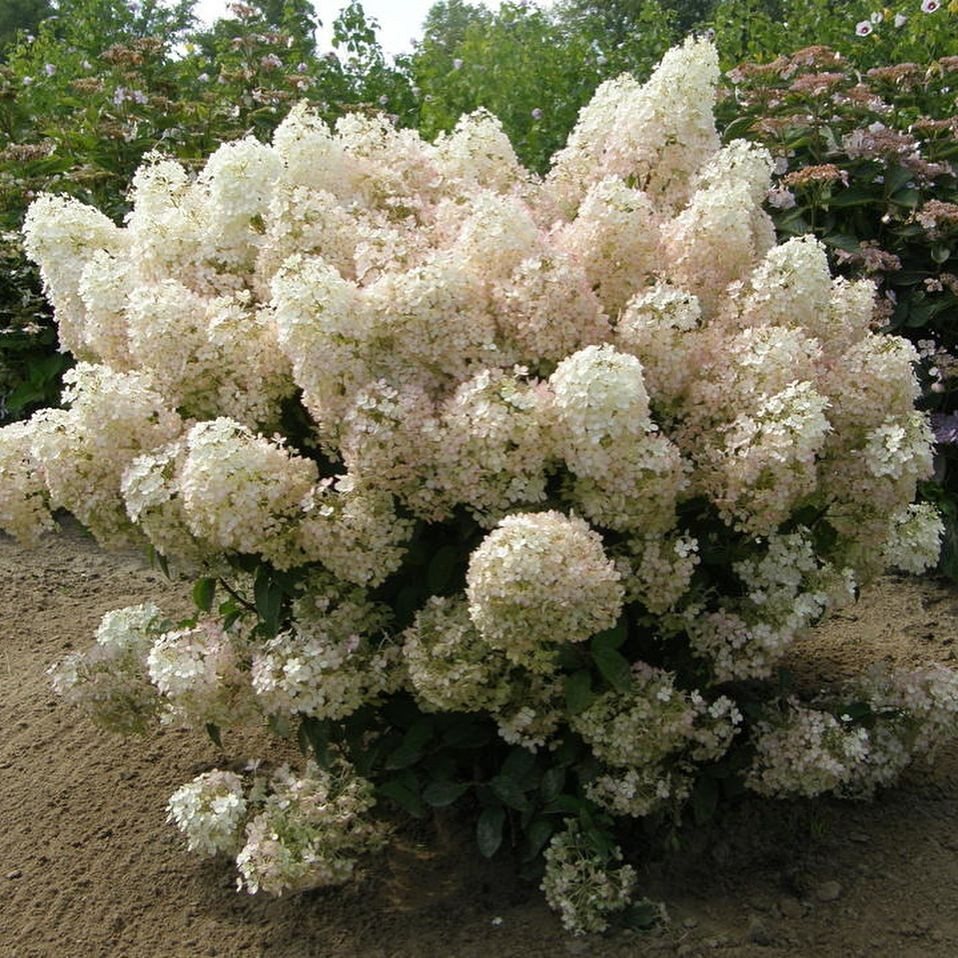
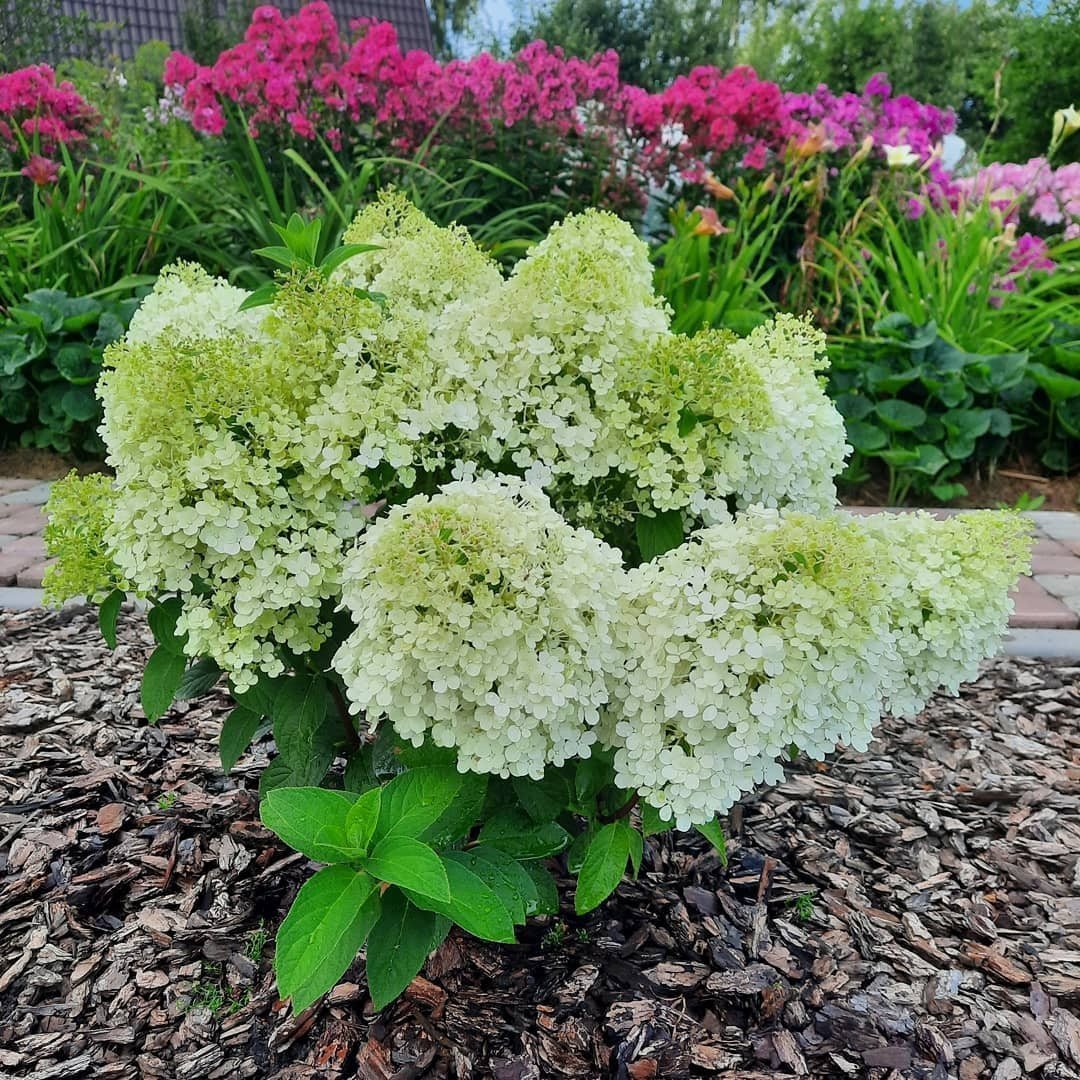
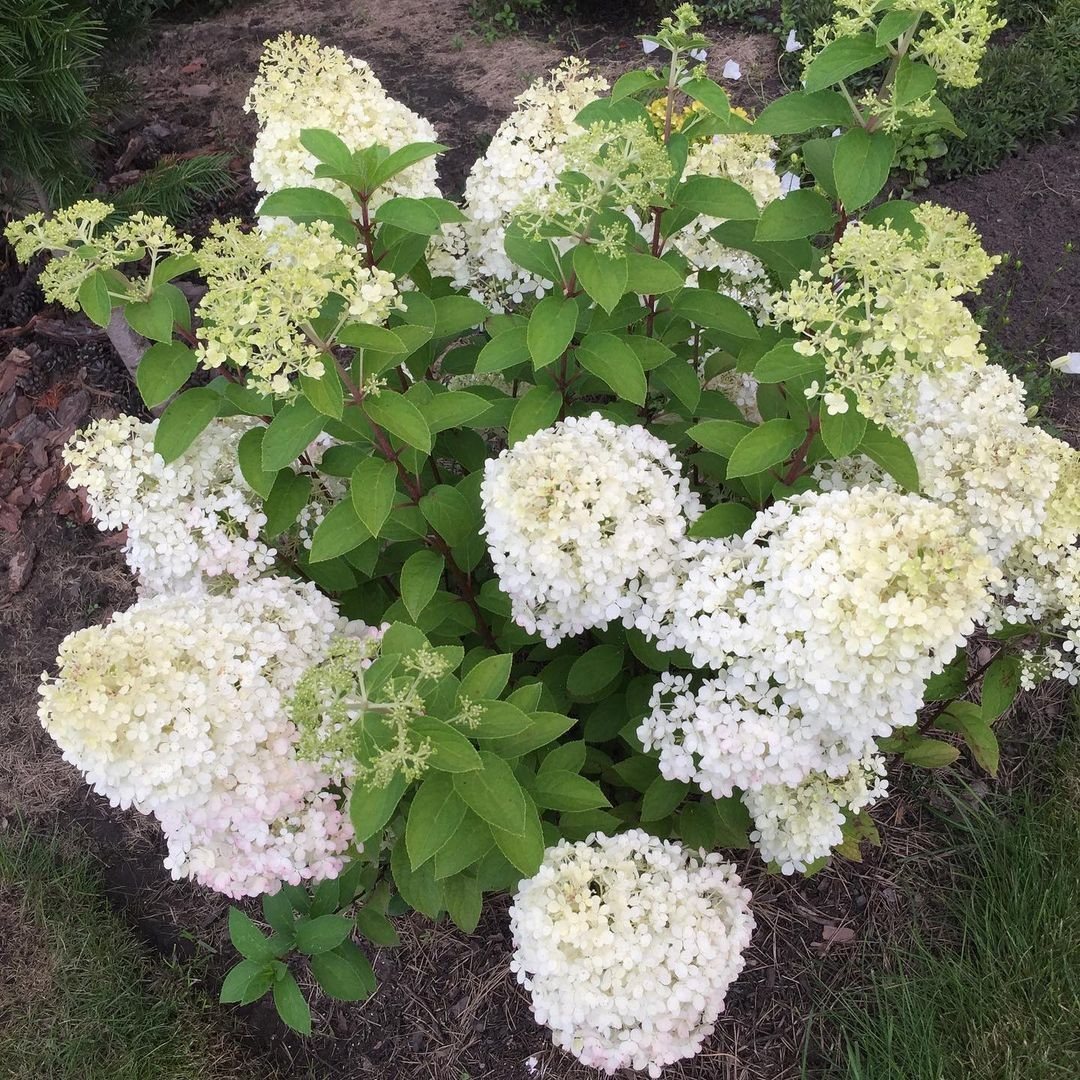
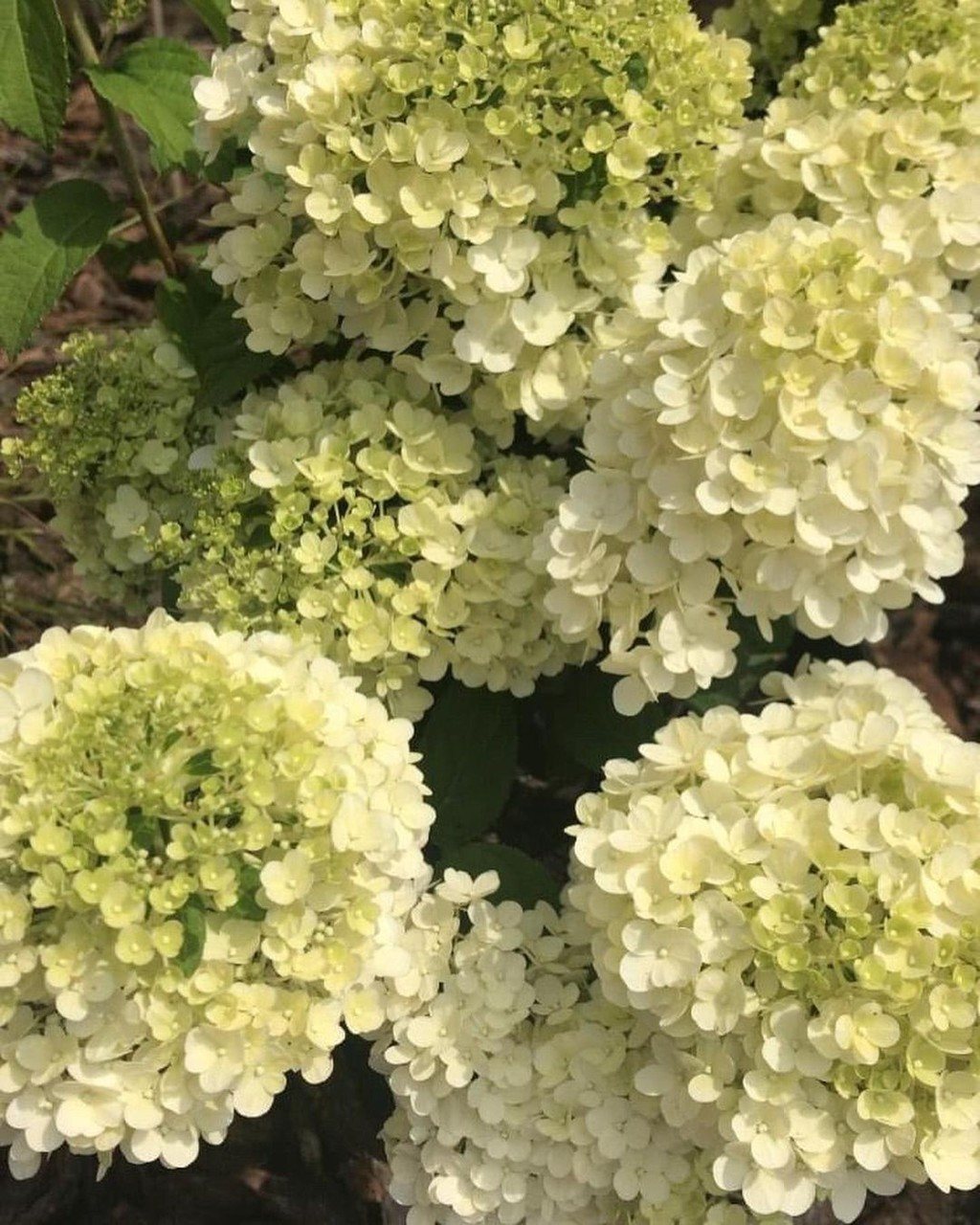





Phantom
The variety first appeared in the Far East. Its features include rapid adaptation to harsh conditions, abundant and colorful flowering and longevity. The plant takes root even in poor-quality soils.
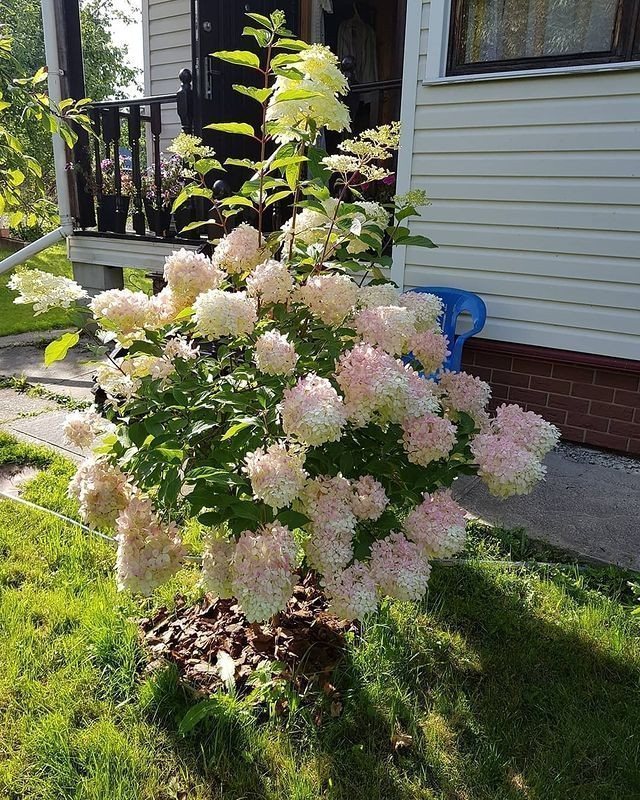
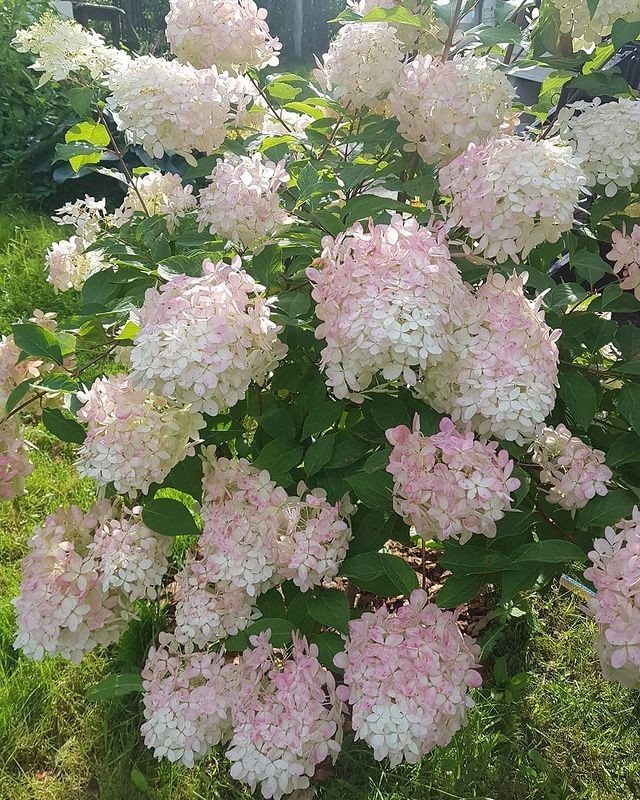
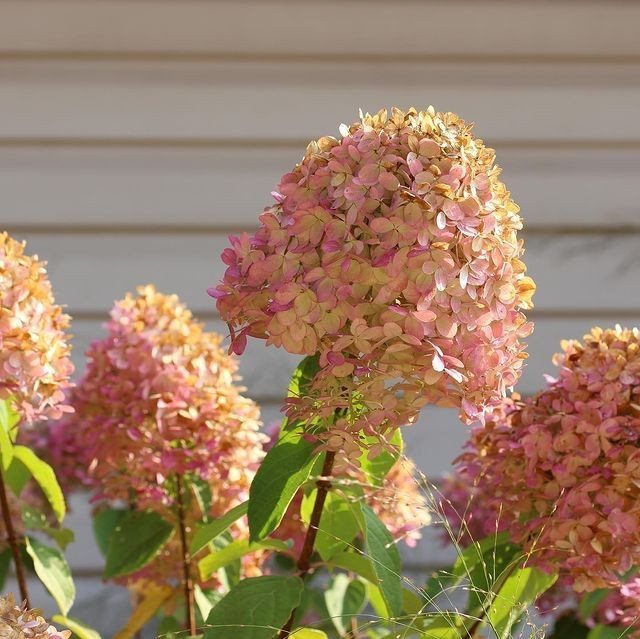
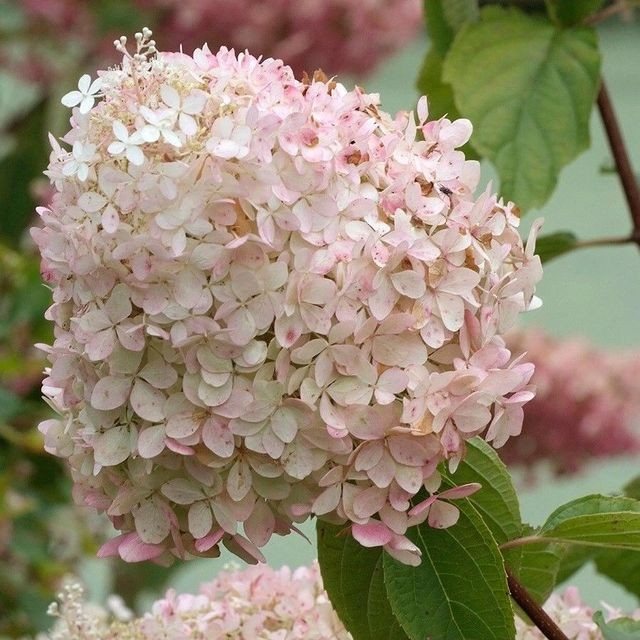
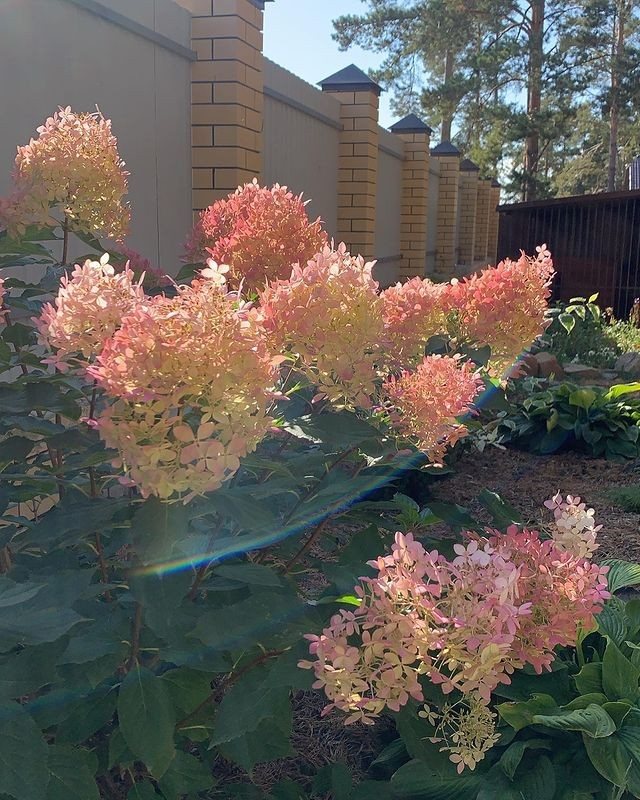





Mega Mindy
Hydrangea of this variety is considered the queen of the garden, as it has lush brushes. Flowering of the garden plant continues until severe frosts. Large inflorescences are initially white, and then change color to red-pink. Shoots grow vertically and have good strength. The height of an adult bush reaches 180 cm.
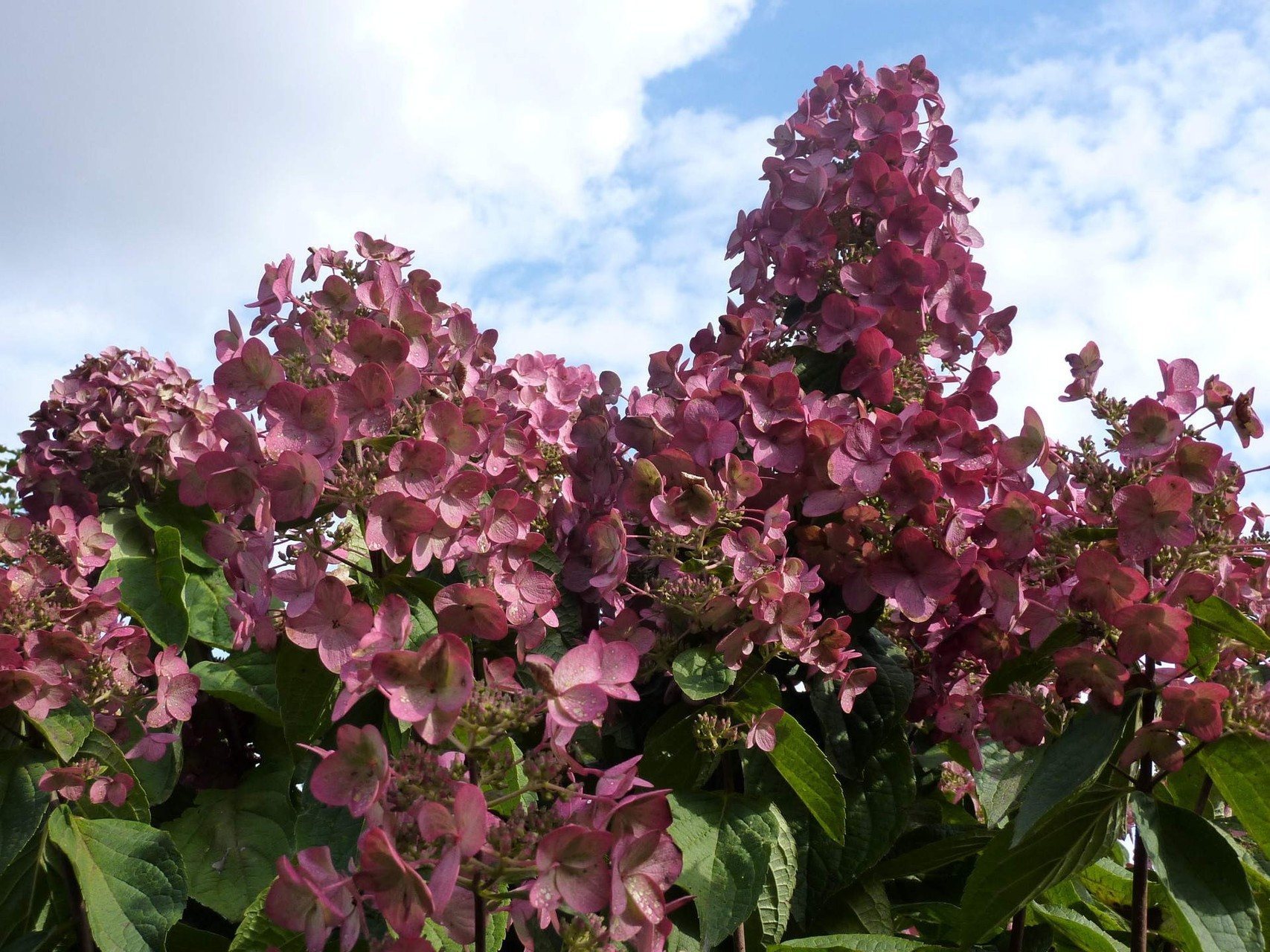
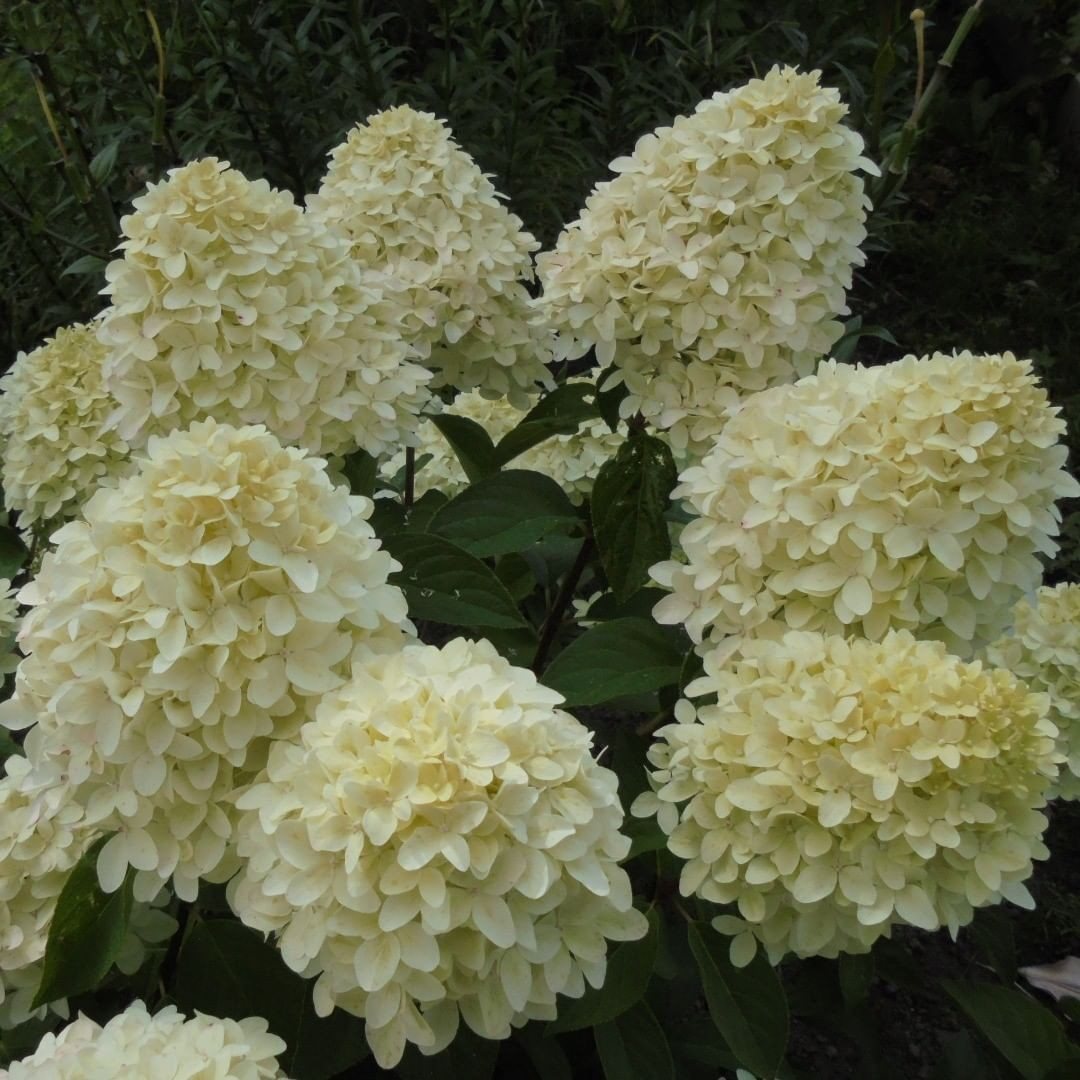
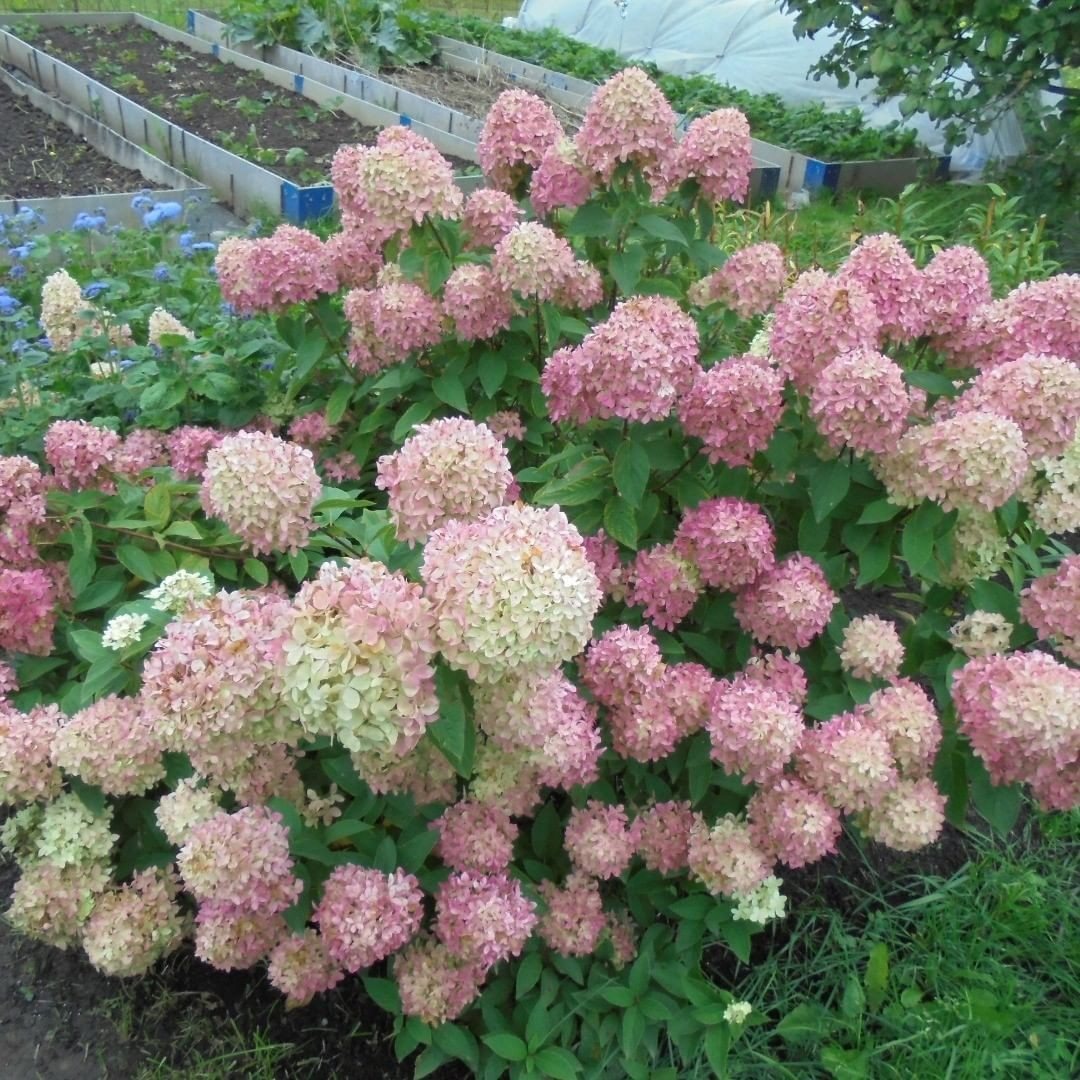
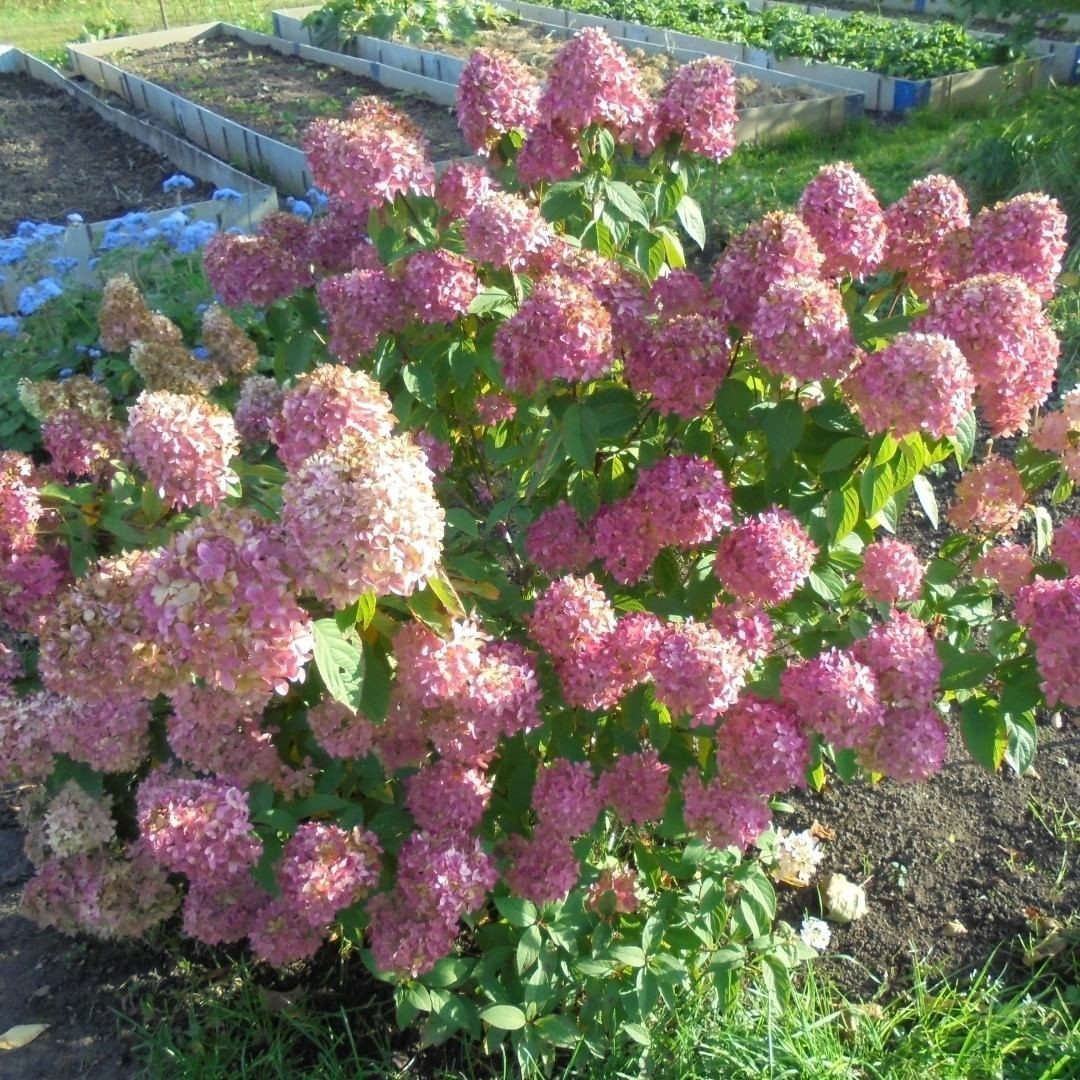
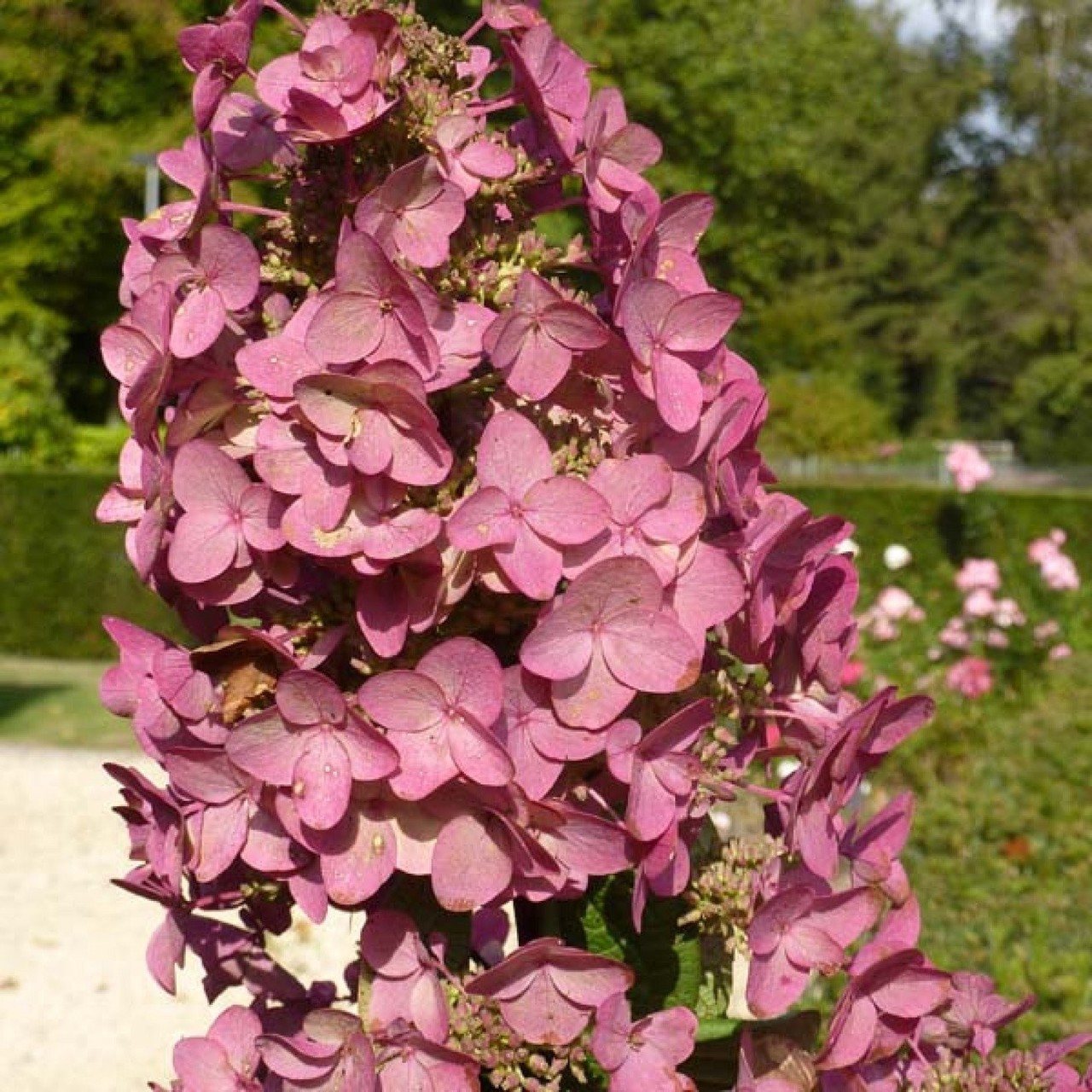





Grandiflora
A perennial plant can reach 10 m in height, but the cultivated species grows up to 2 m maximum. It is distinguished by long flowering, winter hardiness and a dense crown. It has emerald leaves, burgundy and dark brown stems, and small flowers collected in dense inflorescences, the circumference of which is 30 cm.
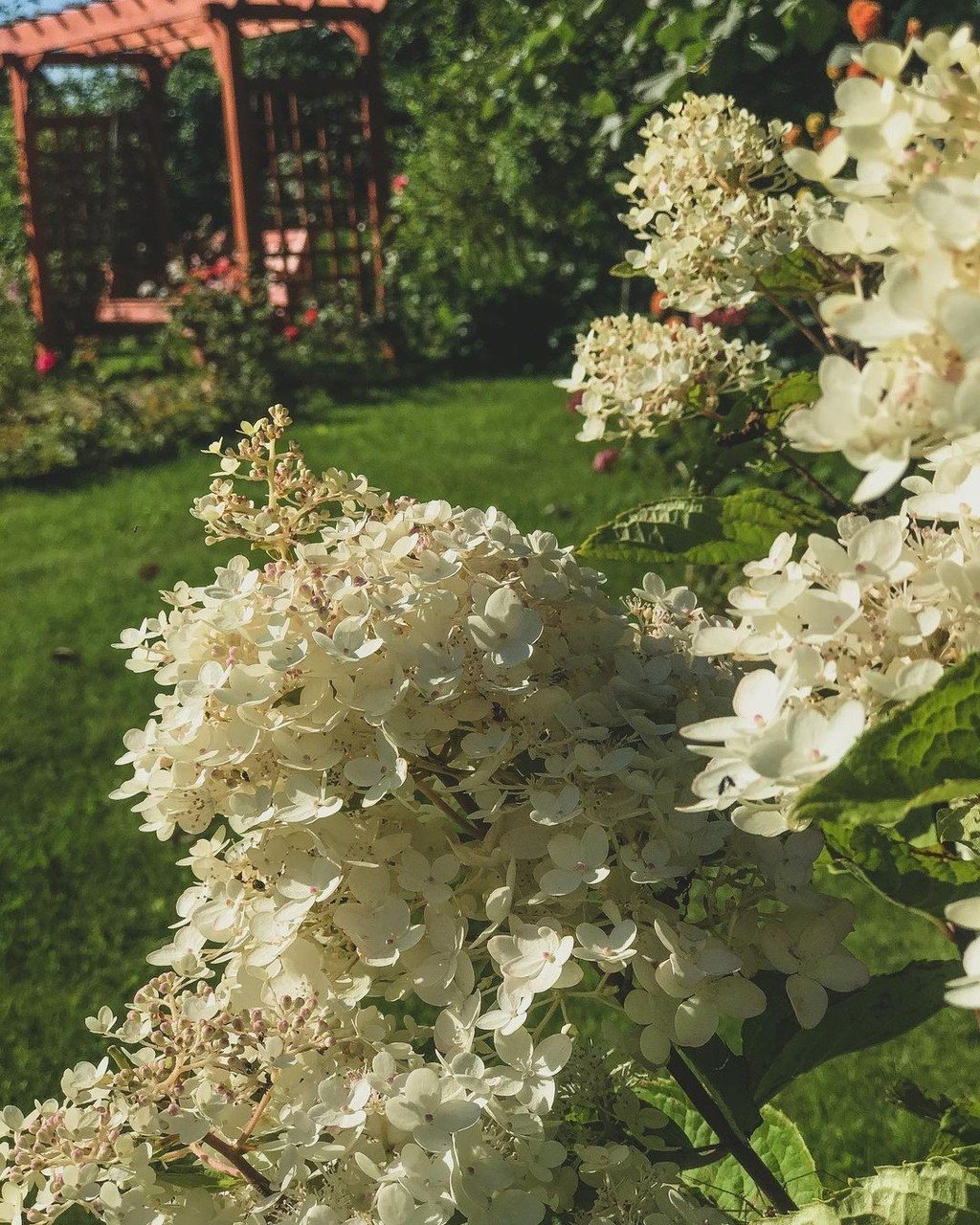
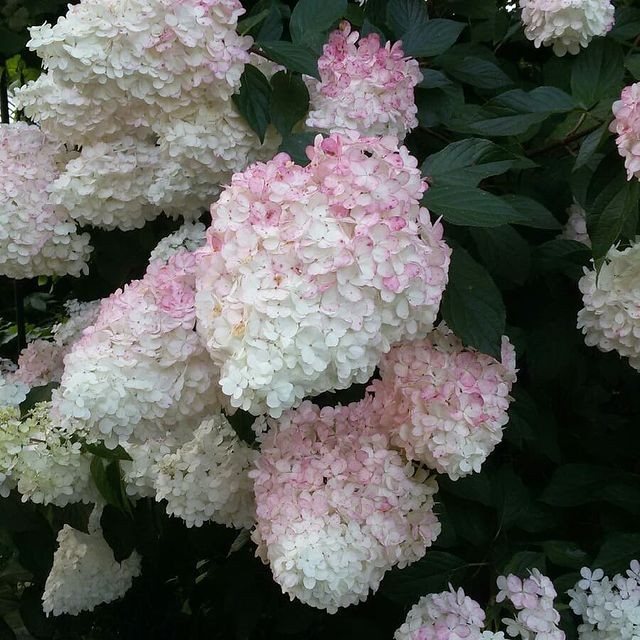
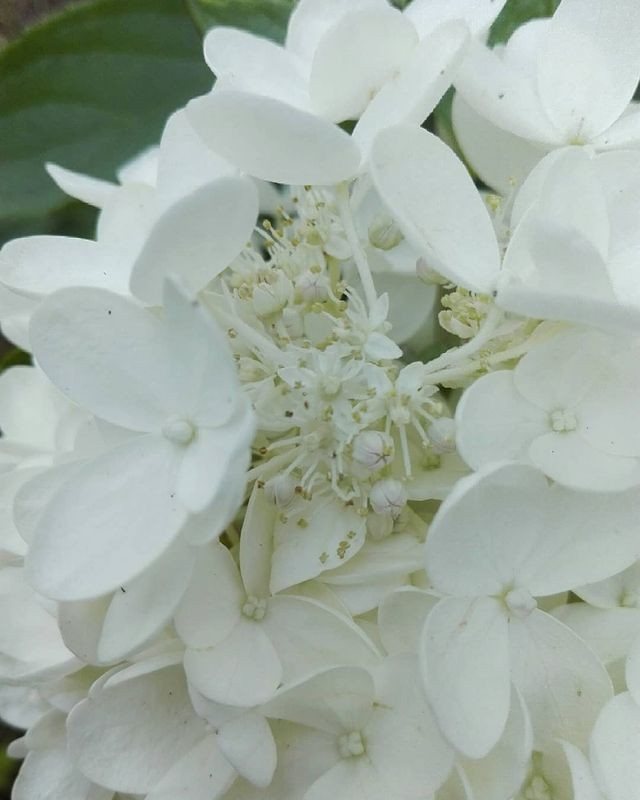

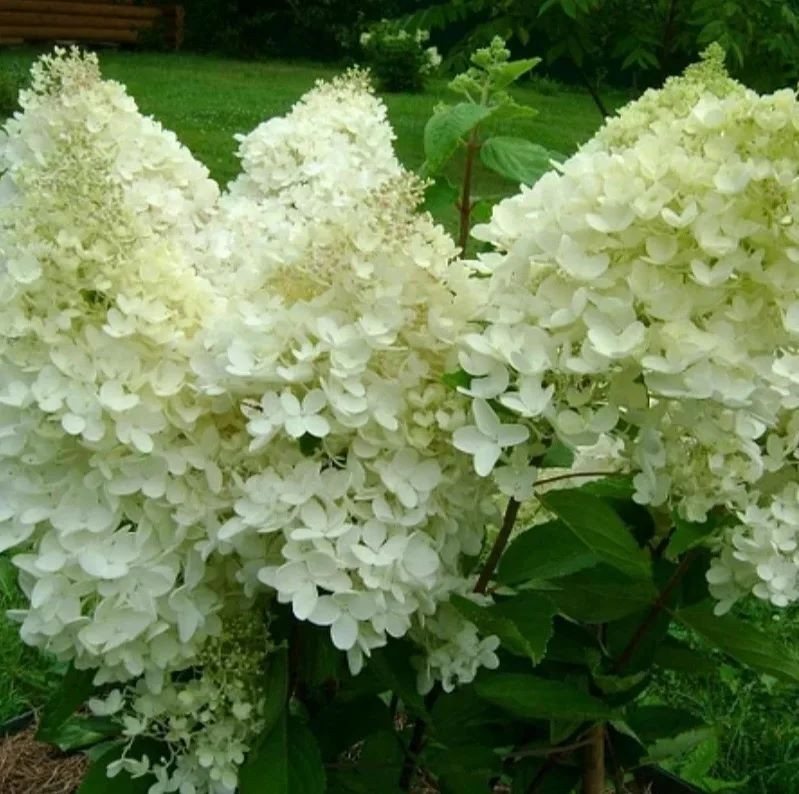





Vims Red
This variety belongs to low-growing shrubs, since the height does not exceed 1.5 m. The shoots grow horizontally, so a lush bush is formed. The length of the inflorescences reaches 40 cm, and they also have a pyramidal shape.
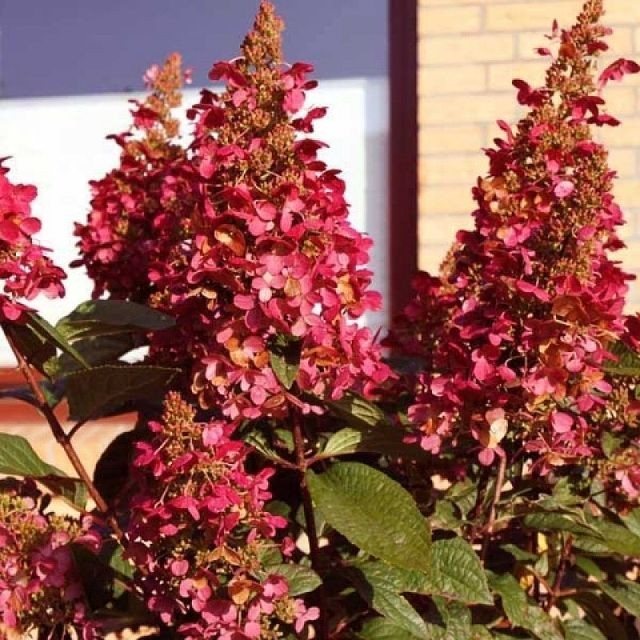
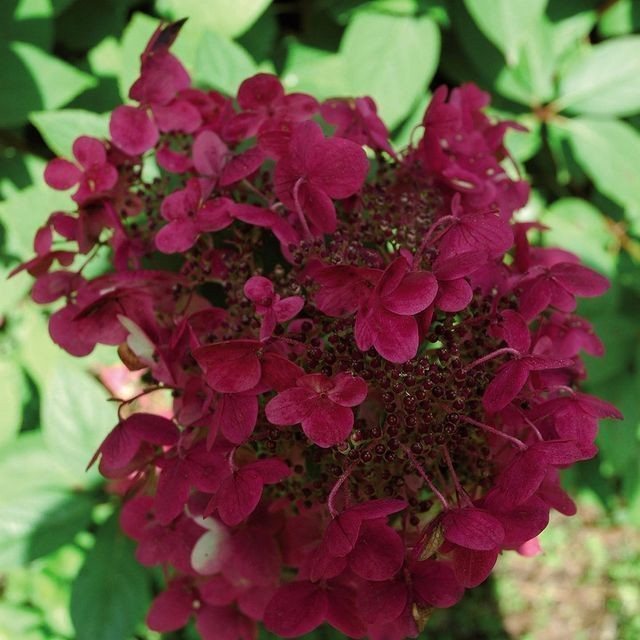

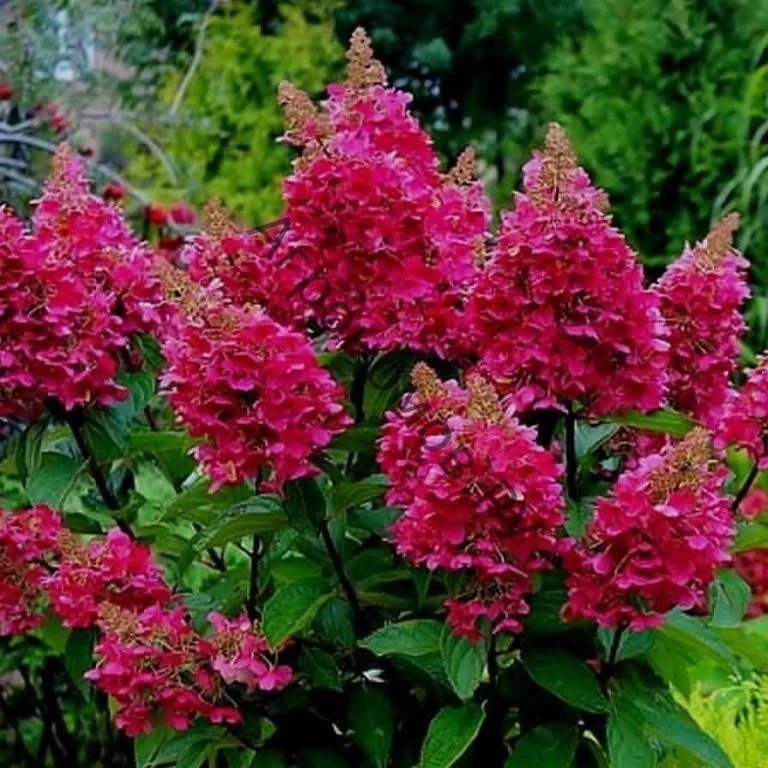
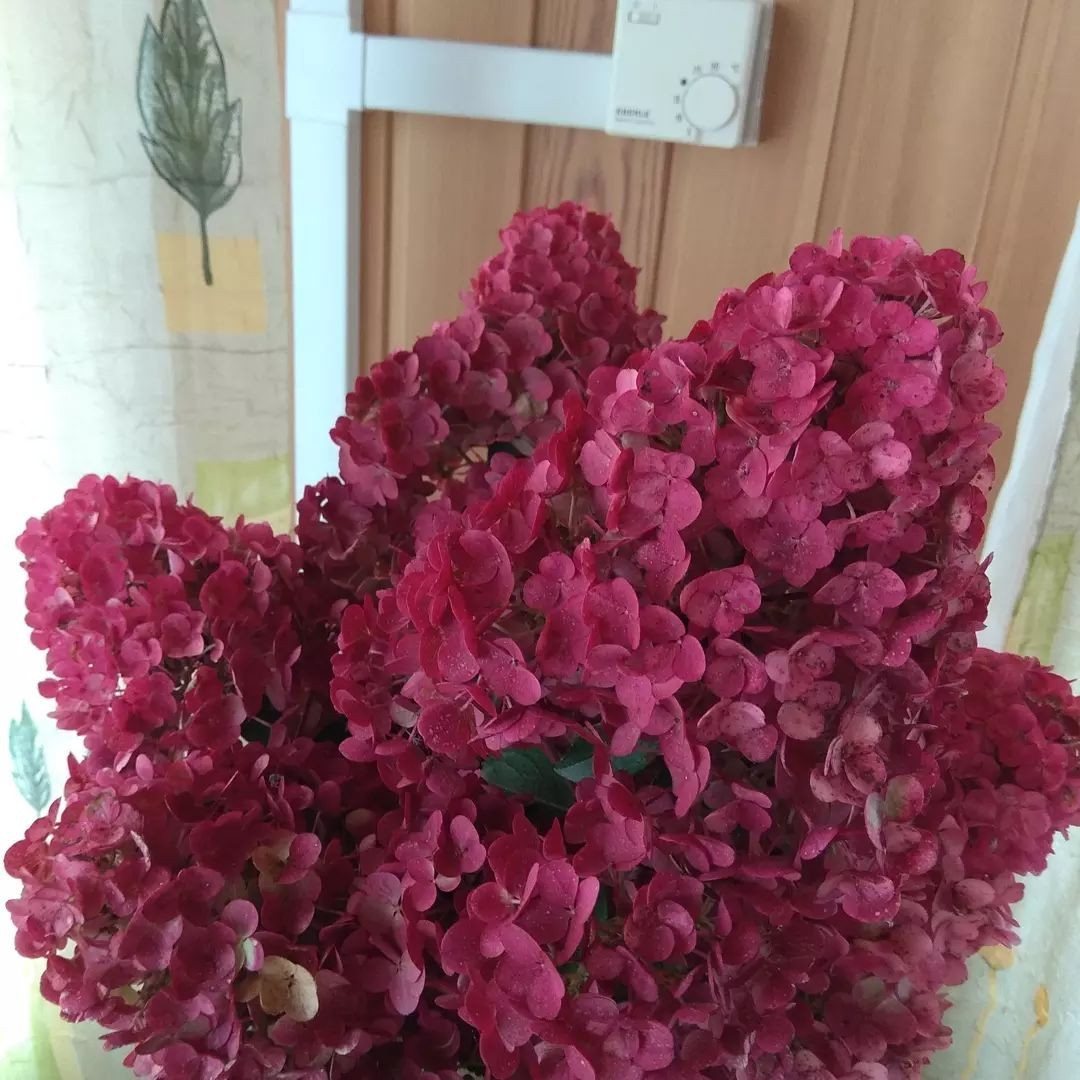





Little Lime
The plant is represented by a narrow rounded bush, the height of which reaches 0.8 m. On top are beautiful and lush flower caps resting on the shoots. The disadvantage of the culture is the low strength of the shoots, so in strong winds they break and bend.
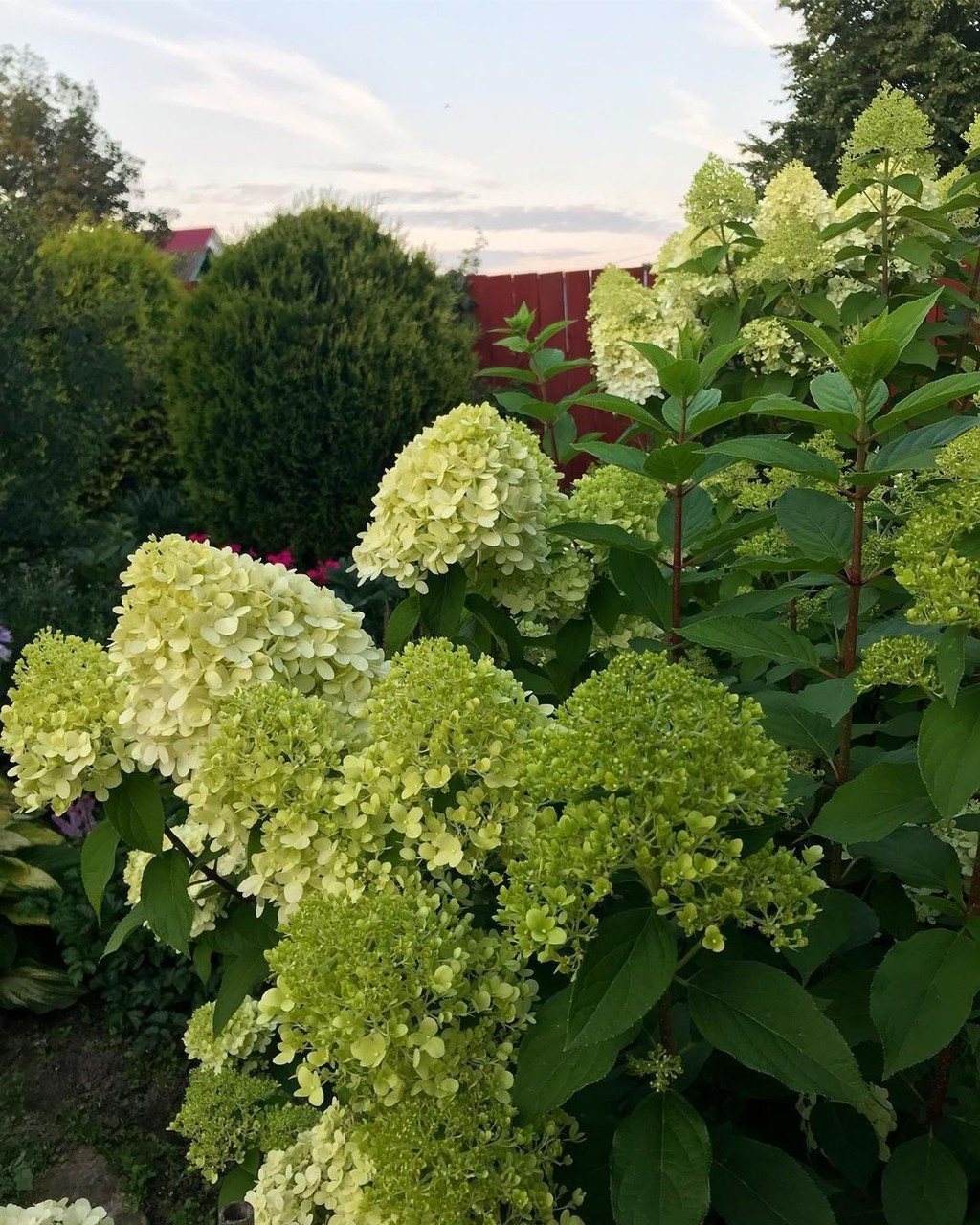
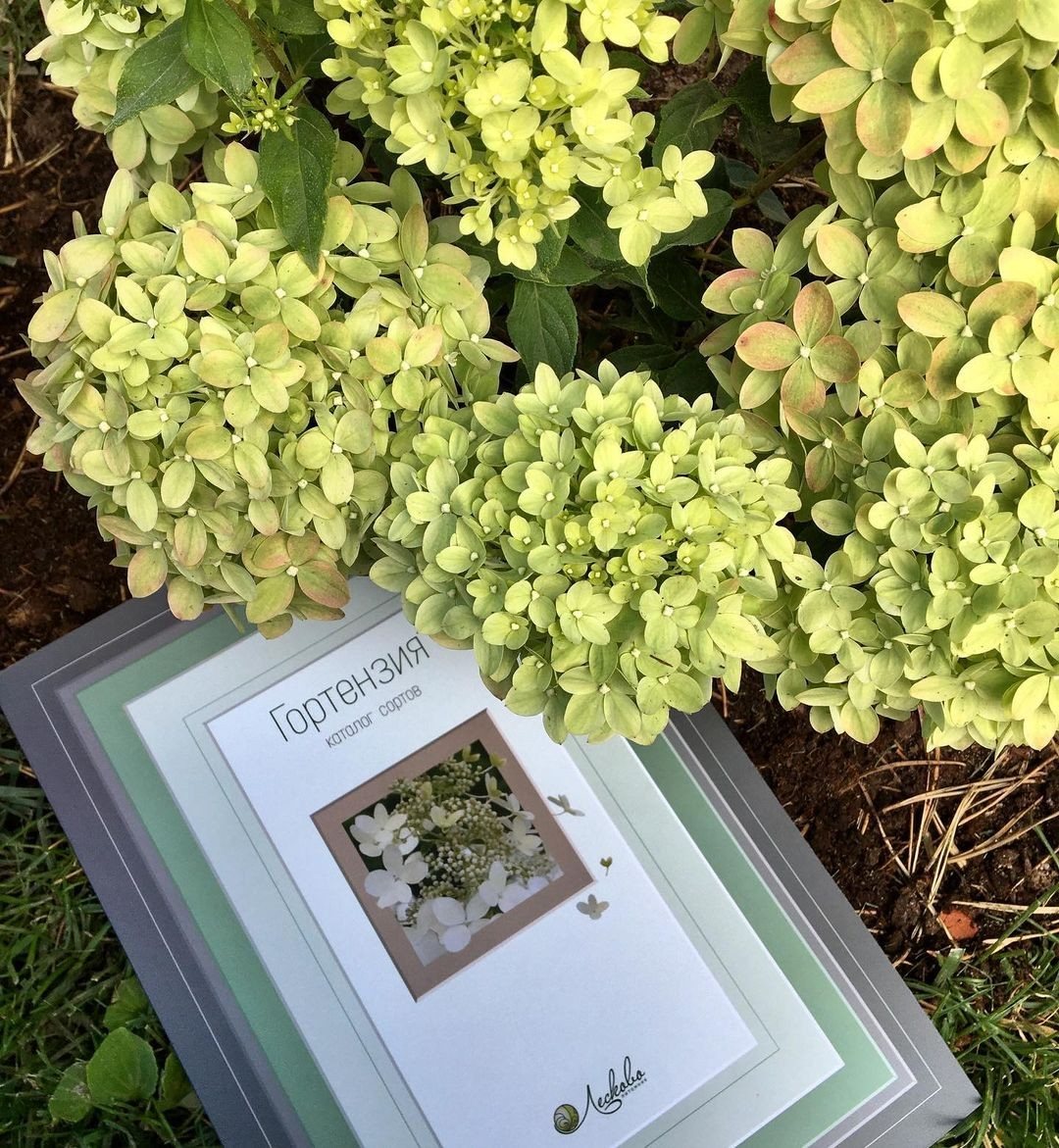
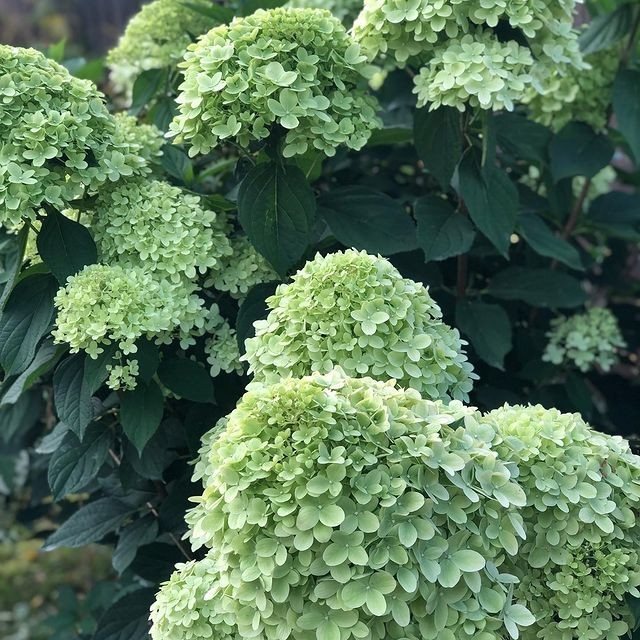
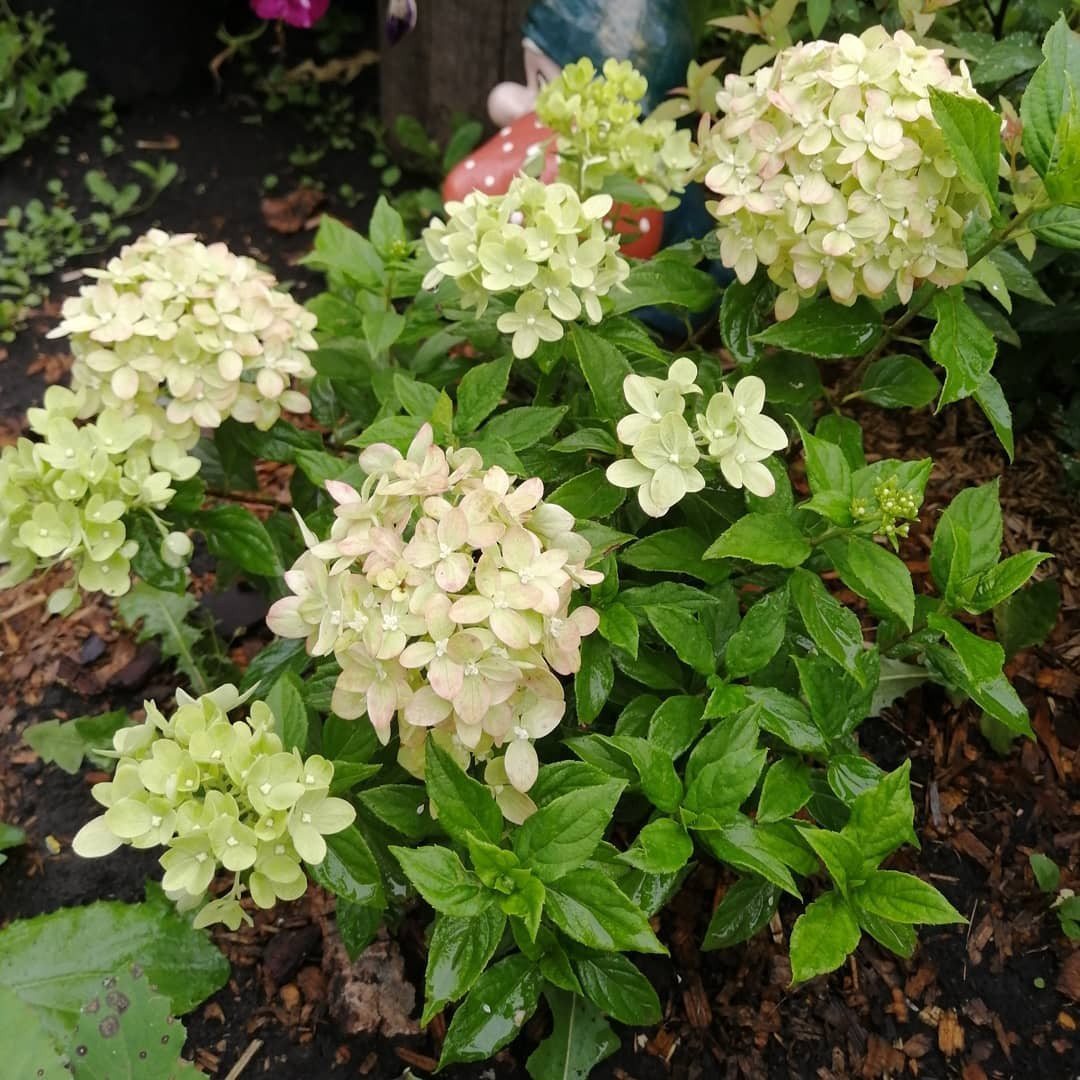
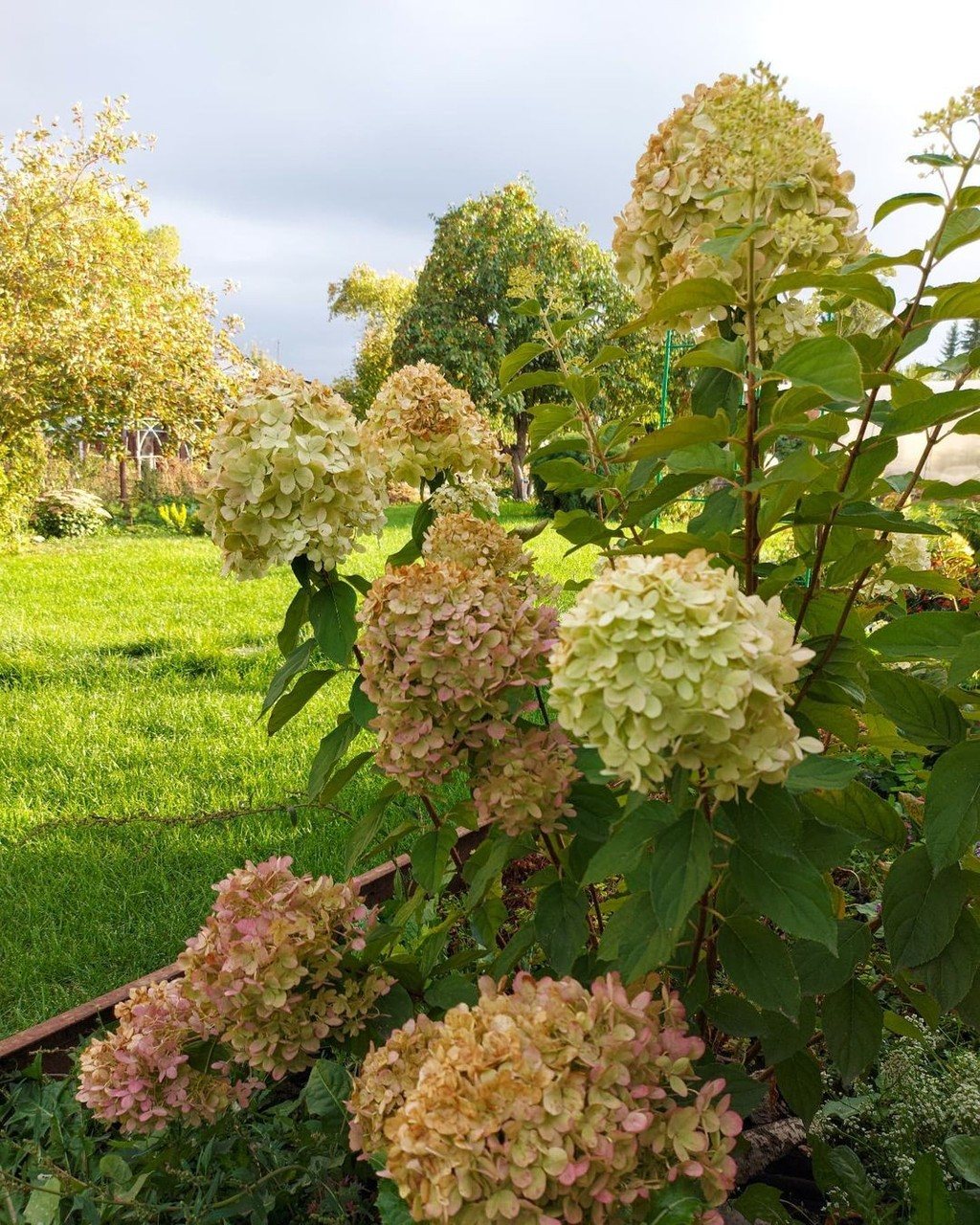





Strawberry Blossom
Hydrangea has large inflorescences of pink or white hue. The features of the variety include long flowering until October.Due to its high frost resistance, it can be grown in the northern regions of Russia.
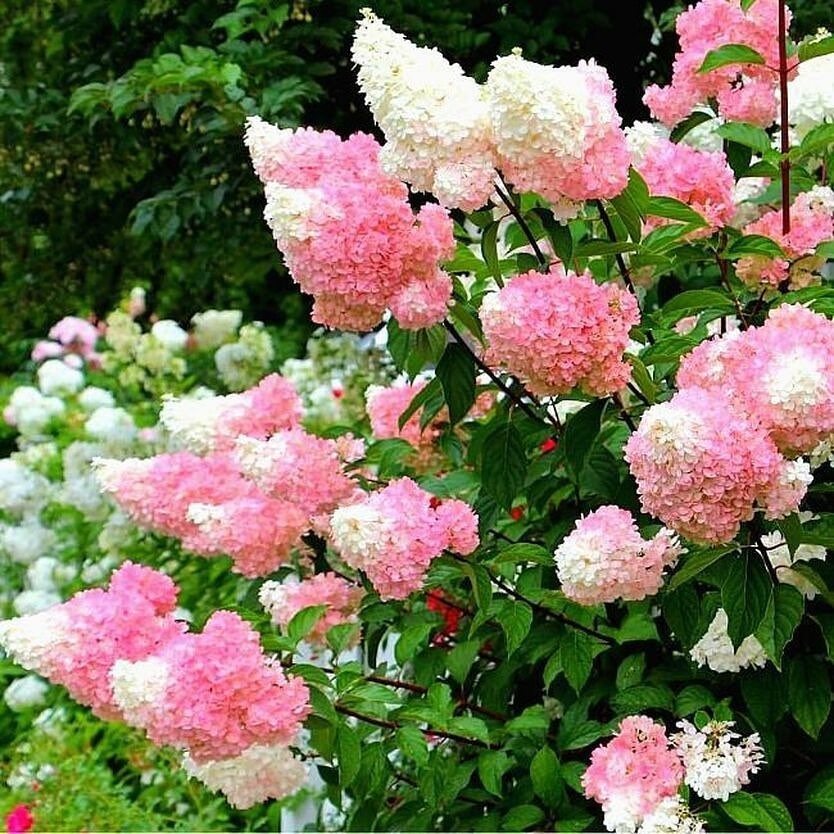
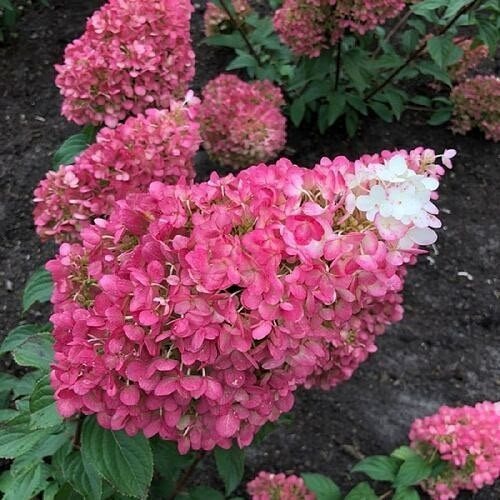
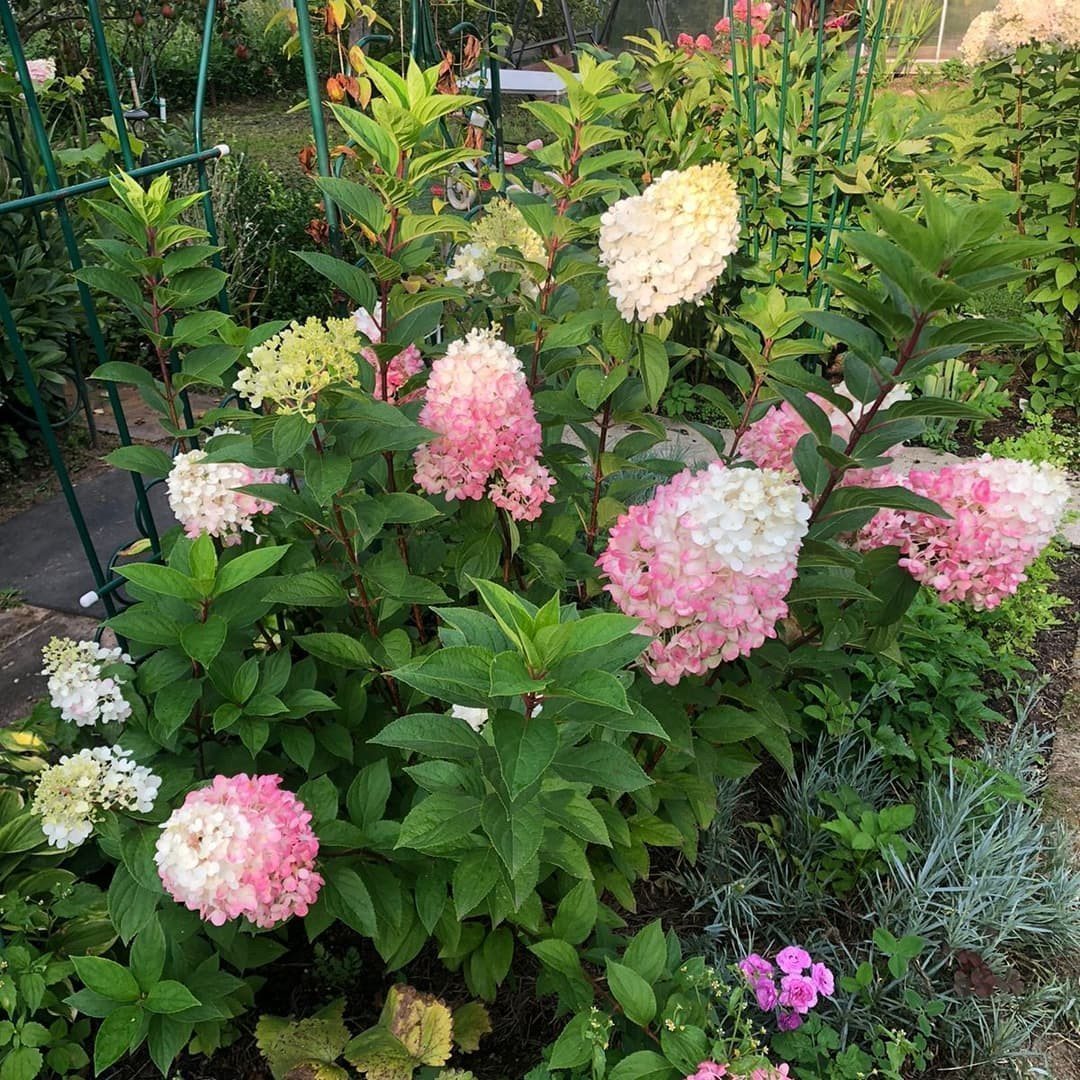
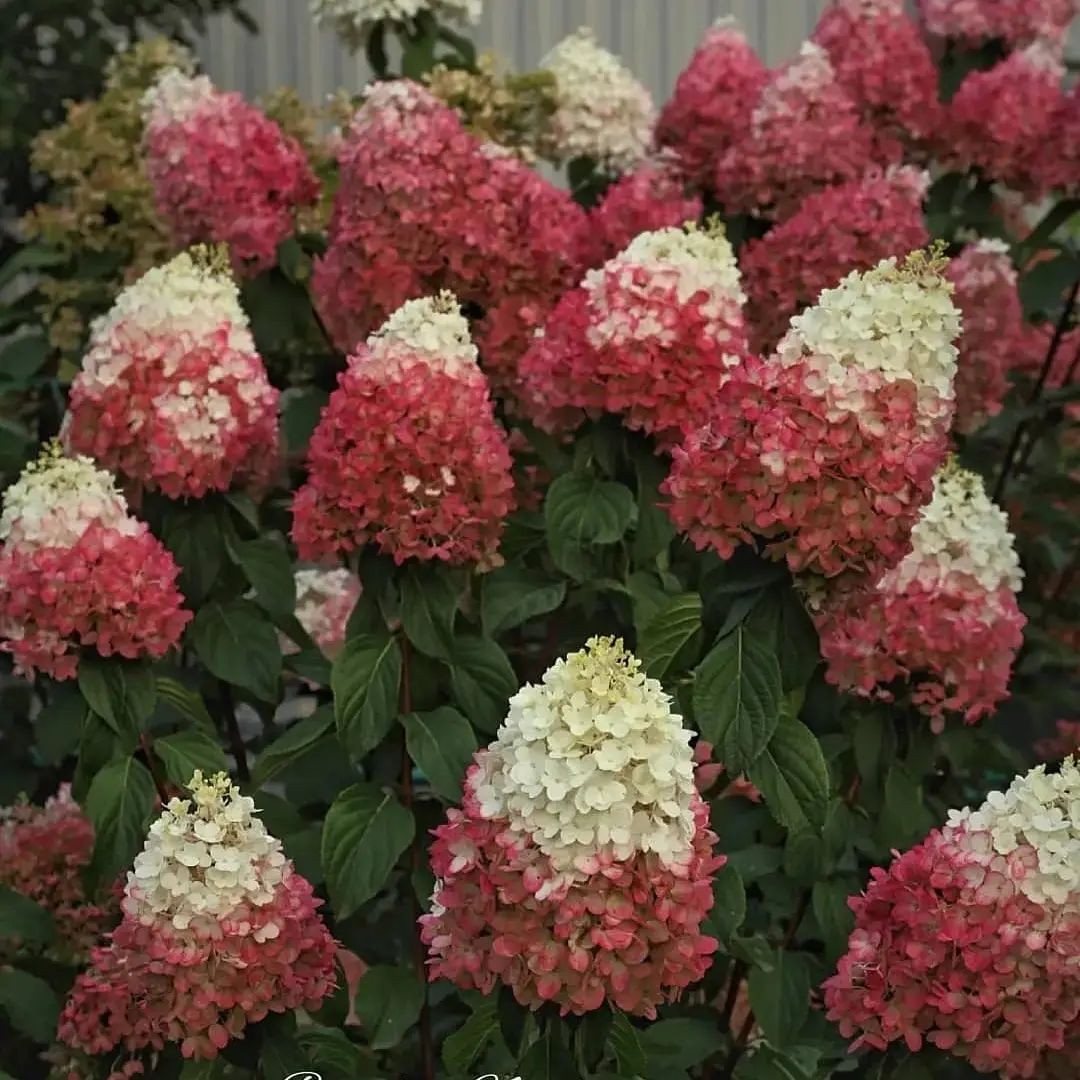
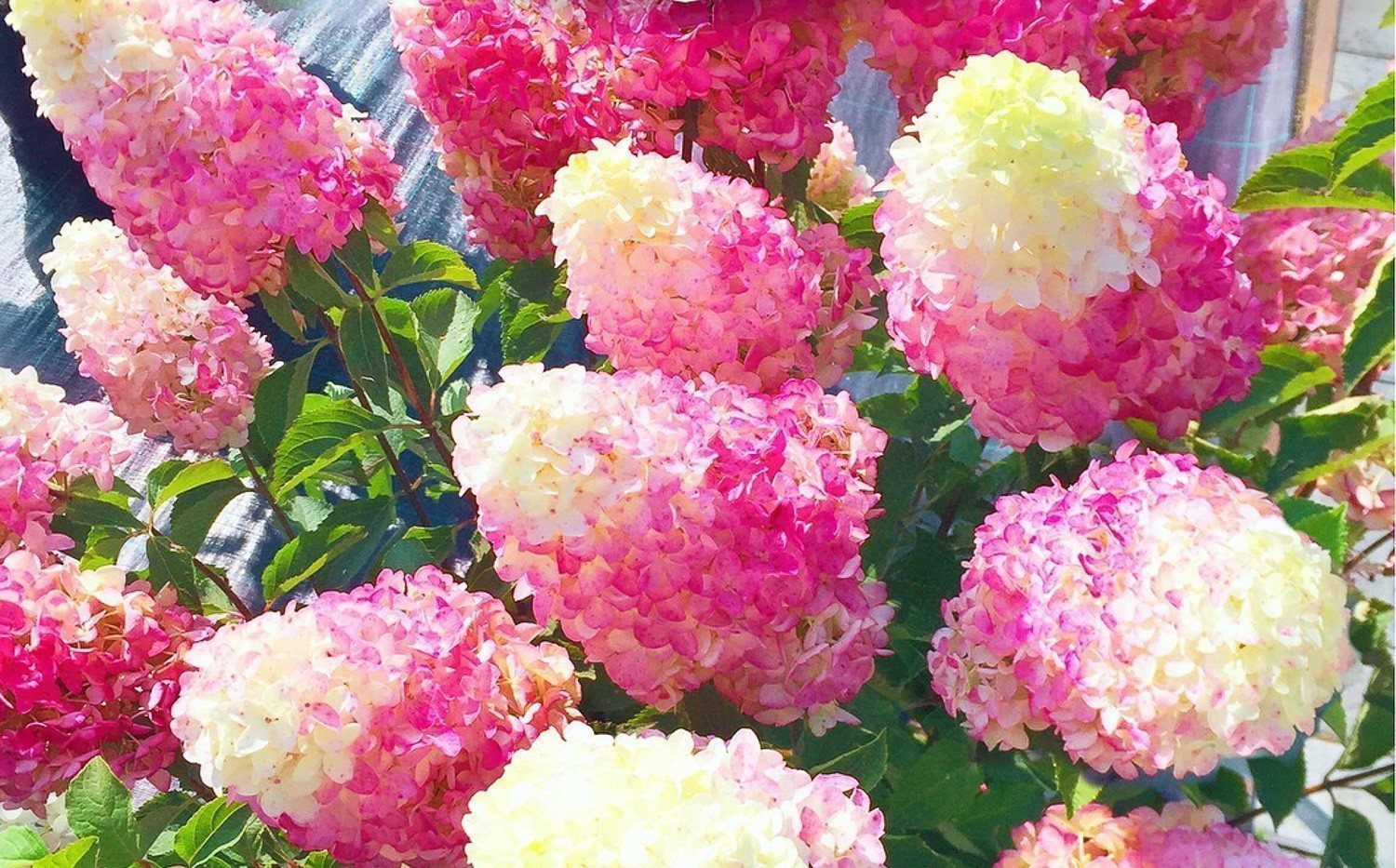





Pastel Green
The variety was bred in 2016 by French breeder Jean Reno. The peculiarity of the plant is the original color of the petals, which changes several times during the summer. First, white leaves appear, which over time acquire a pink and wine tint.
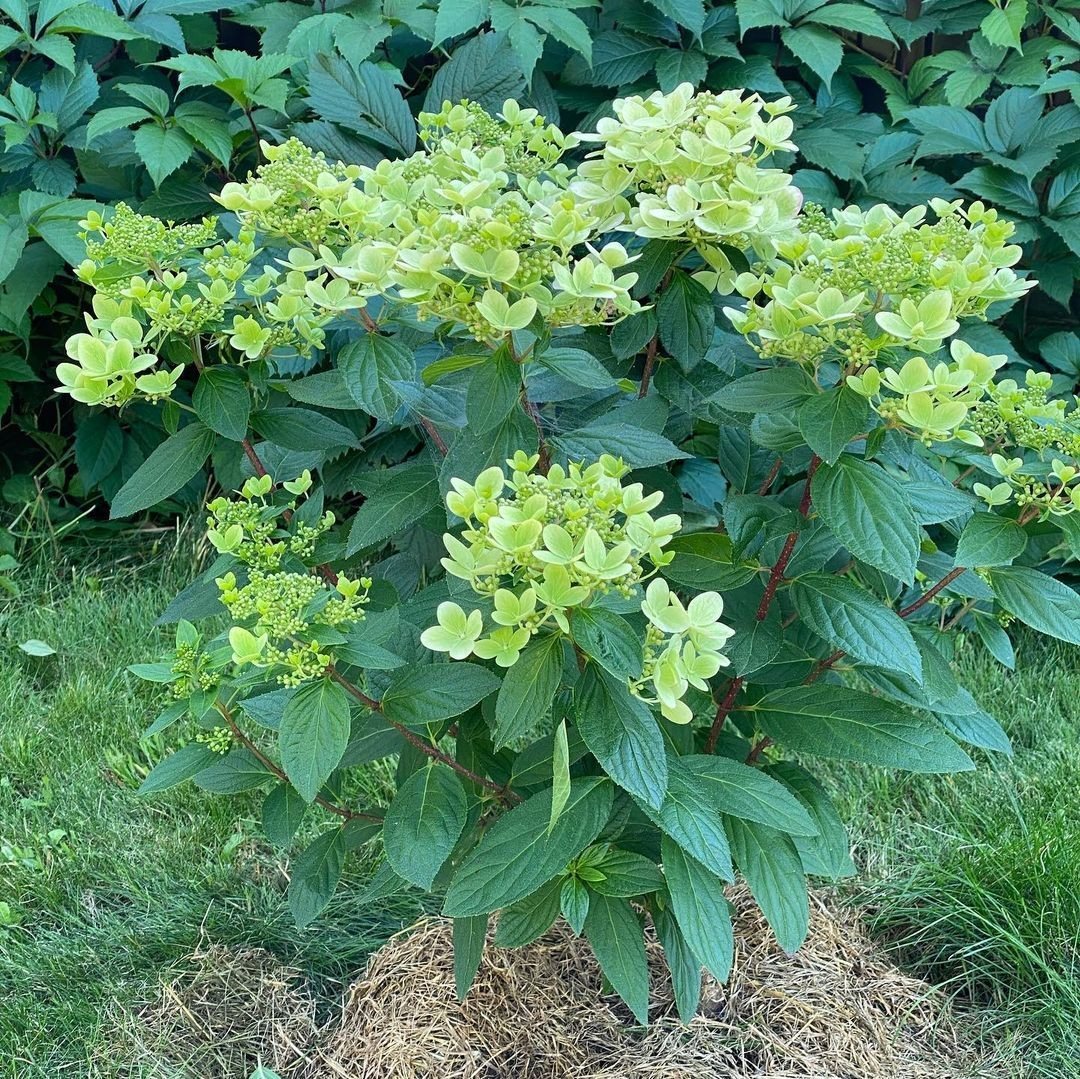
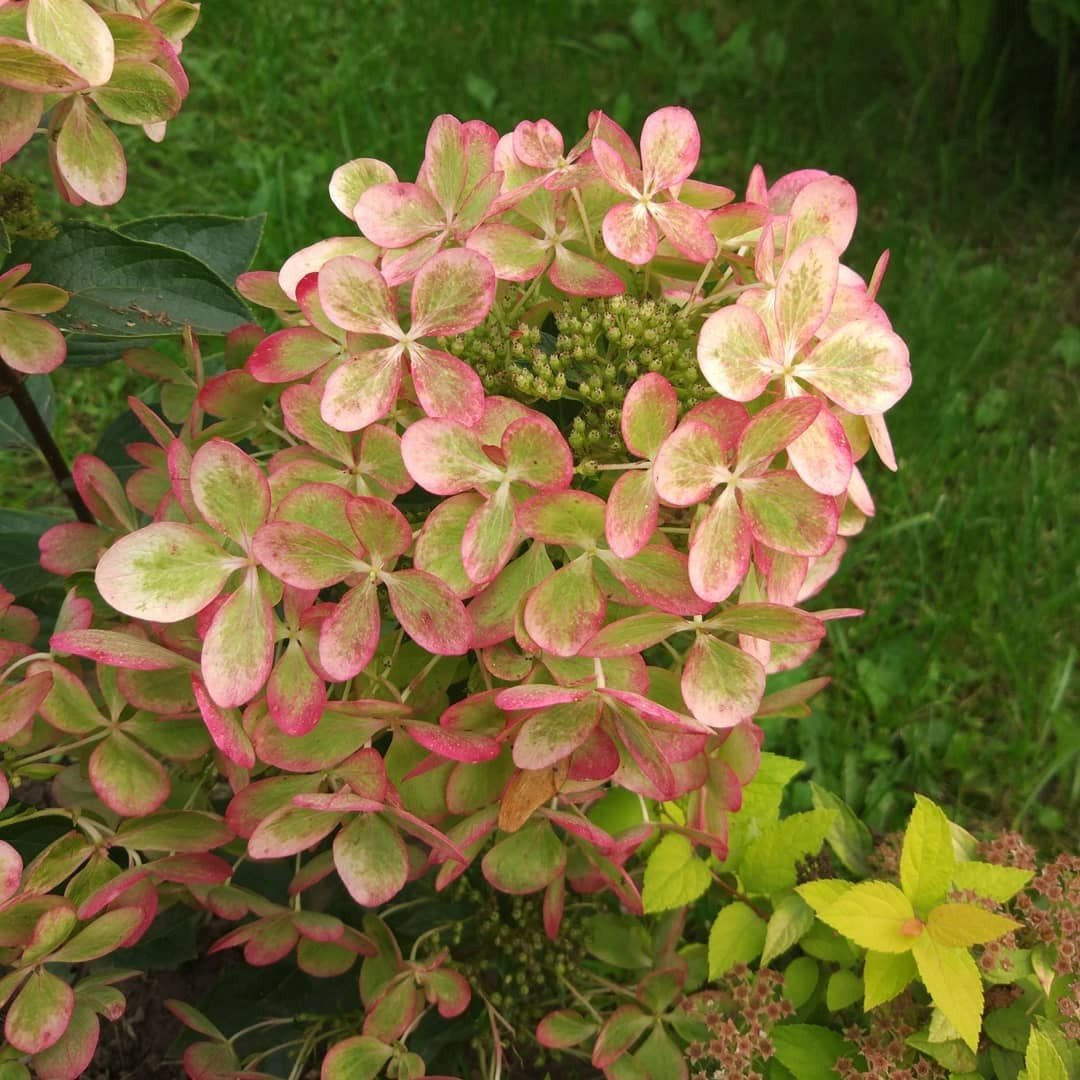
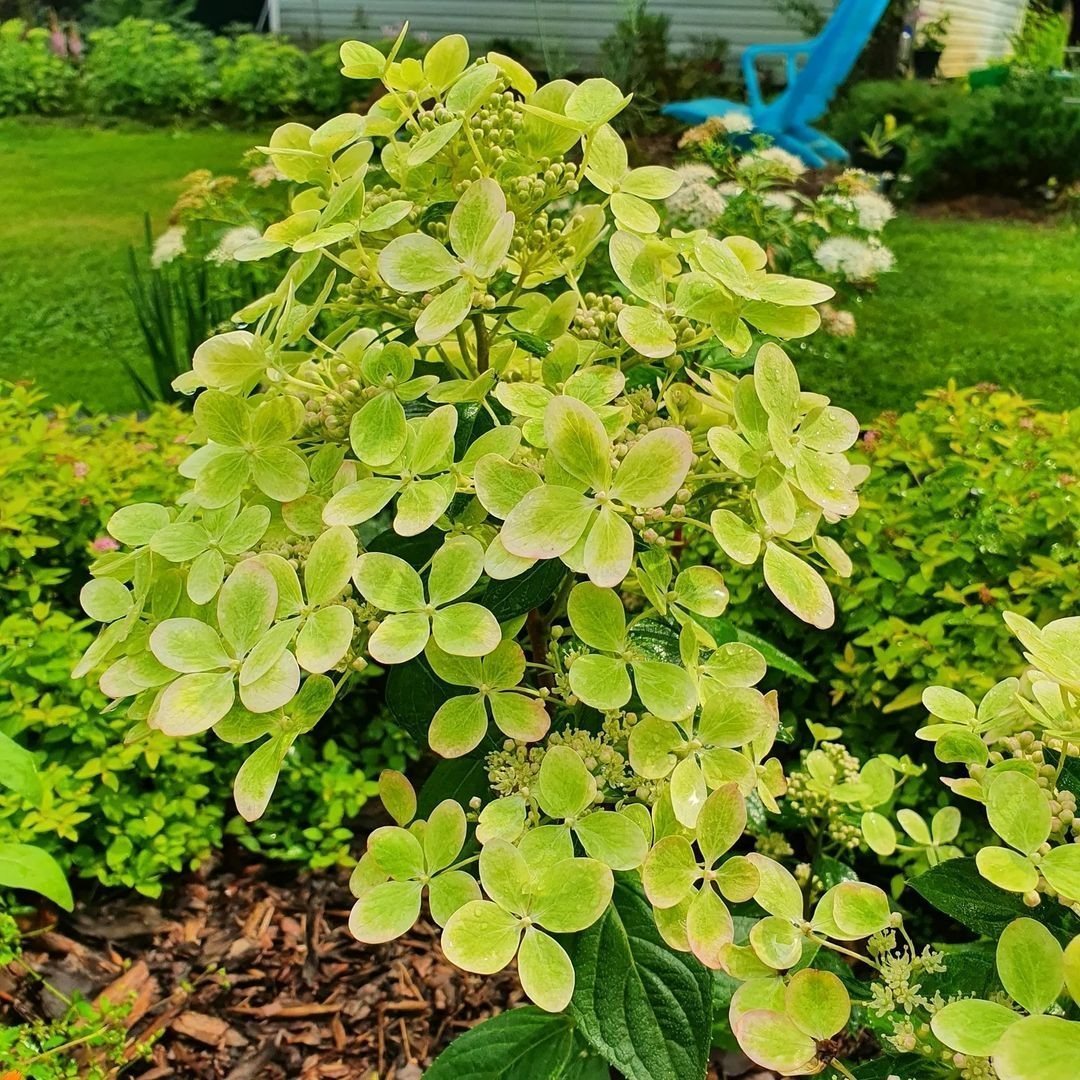
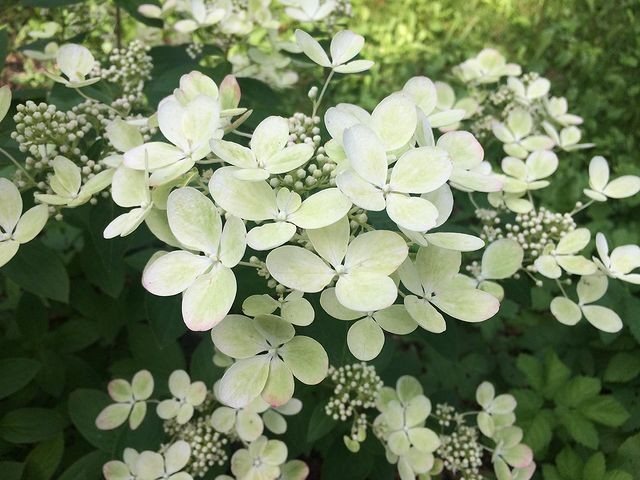
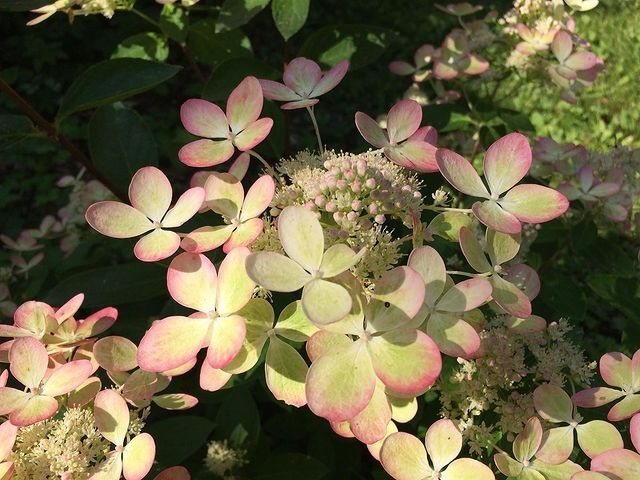





Pink and Rose
The perennial plant has wide pyramidal inflorescences of pink and white colors. It is recommended to plant the variety in partial shade, and during care it is important to maintain optimal soil moisture. The flowering period lasts from July to October.
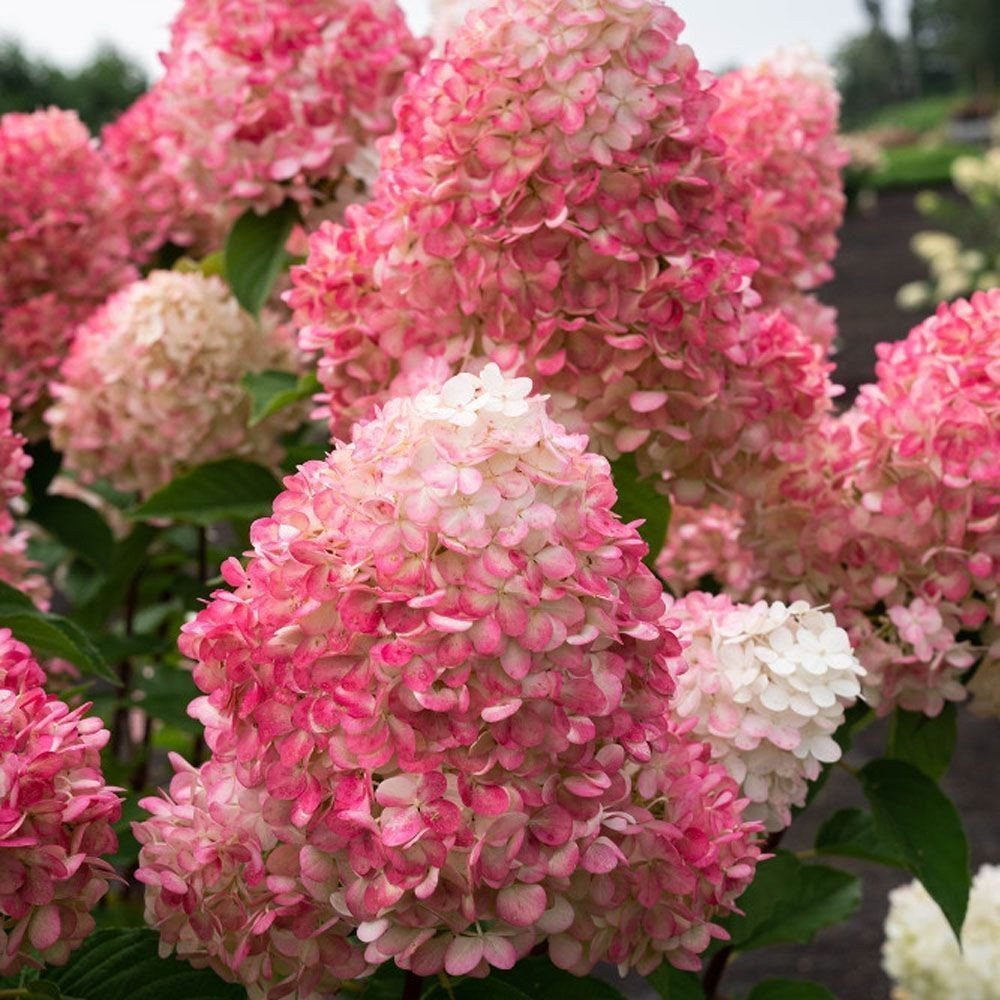

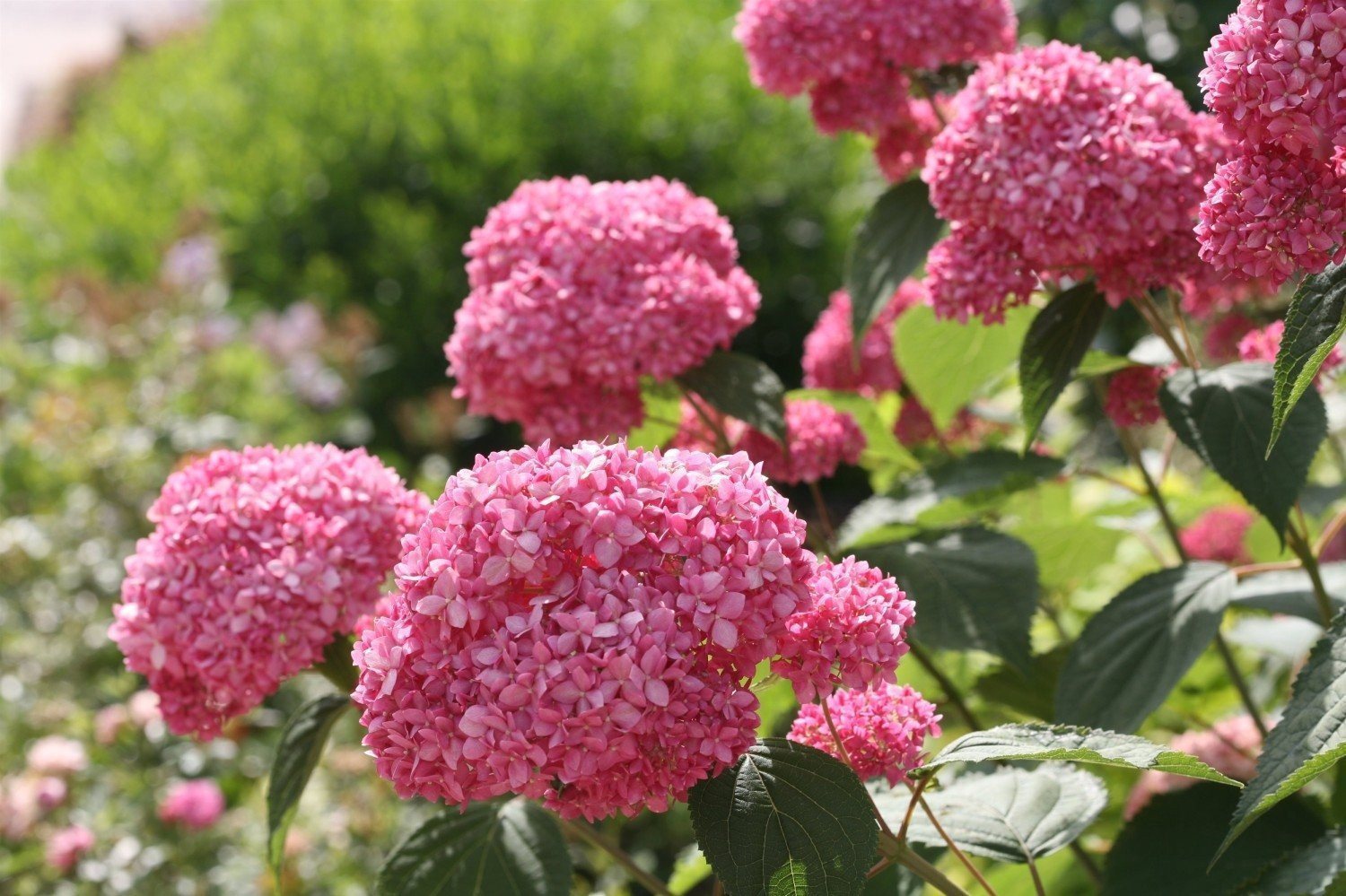
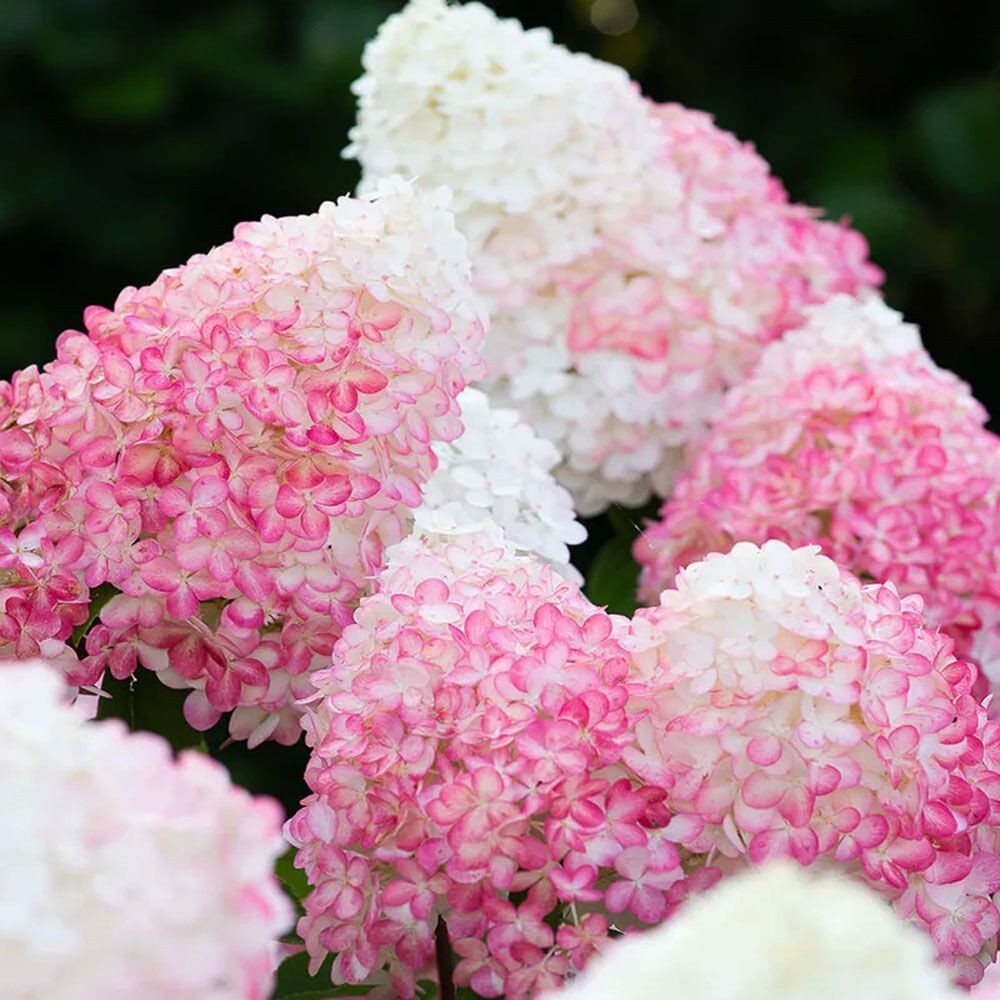
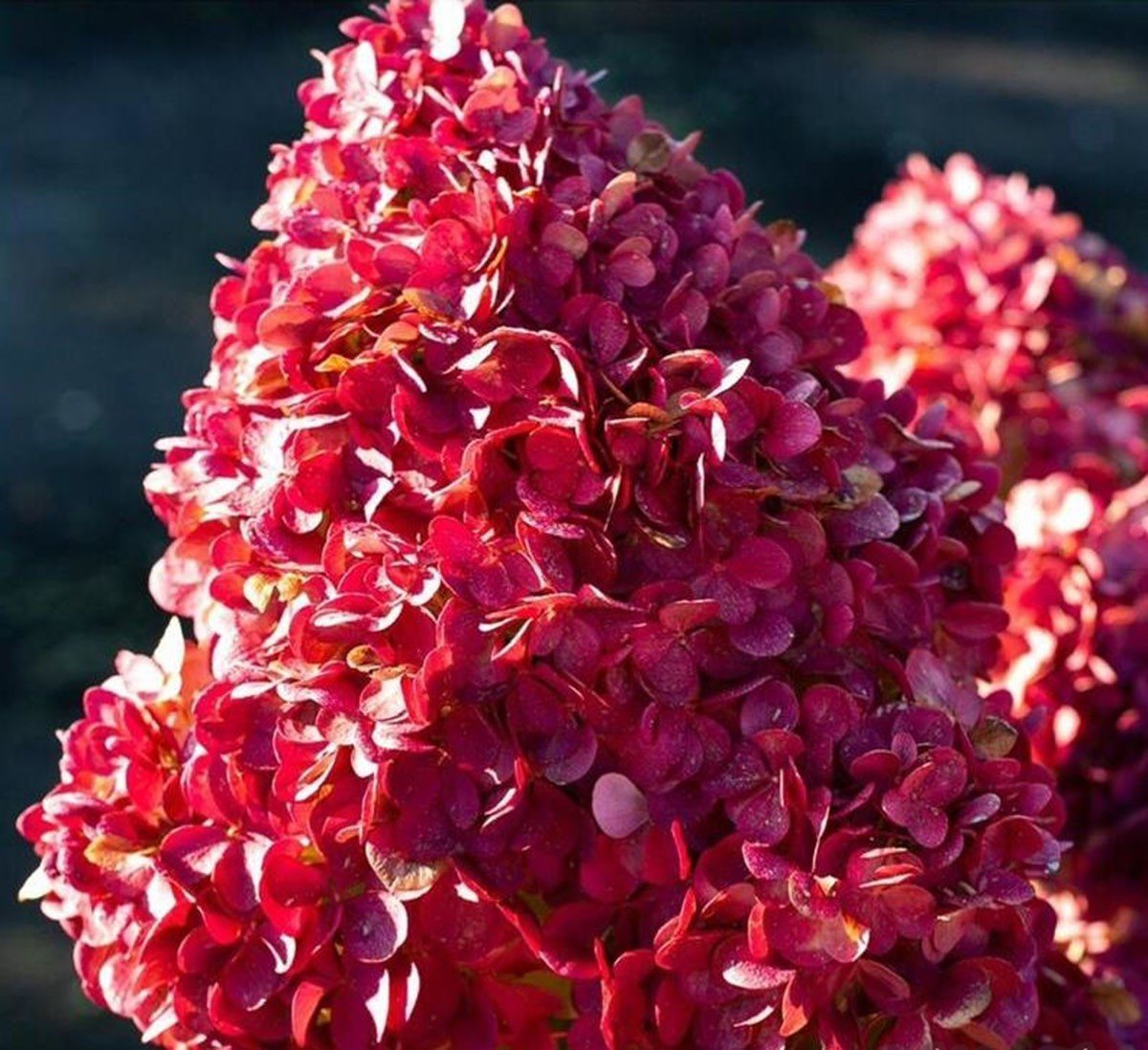





Skyfall
This variety was first presented at the Plantarium International Exhibition in 2018. Large inflorescences are considered a special feature of hydrangea. The plant is ideal for planting in flower beds.
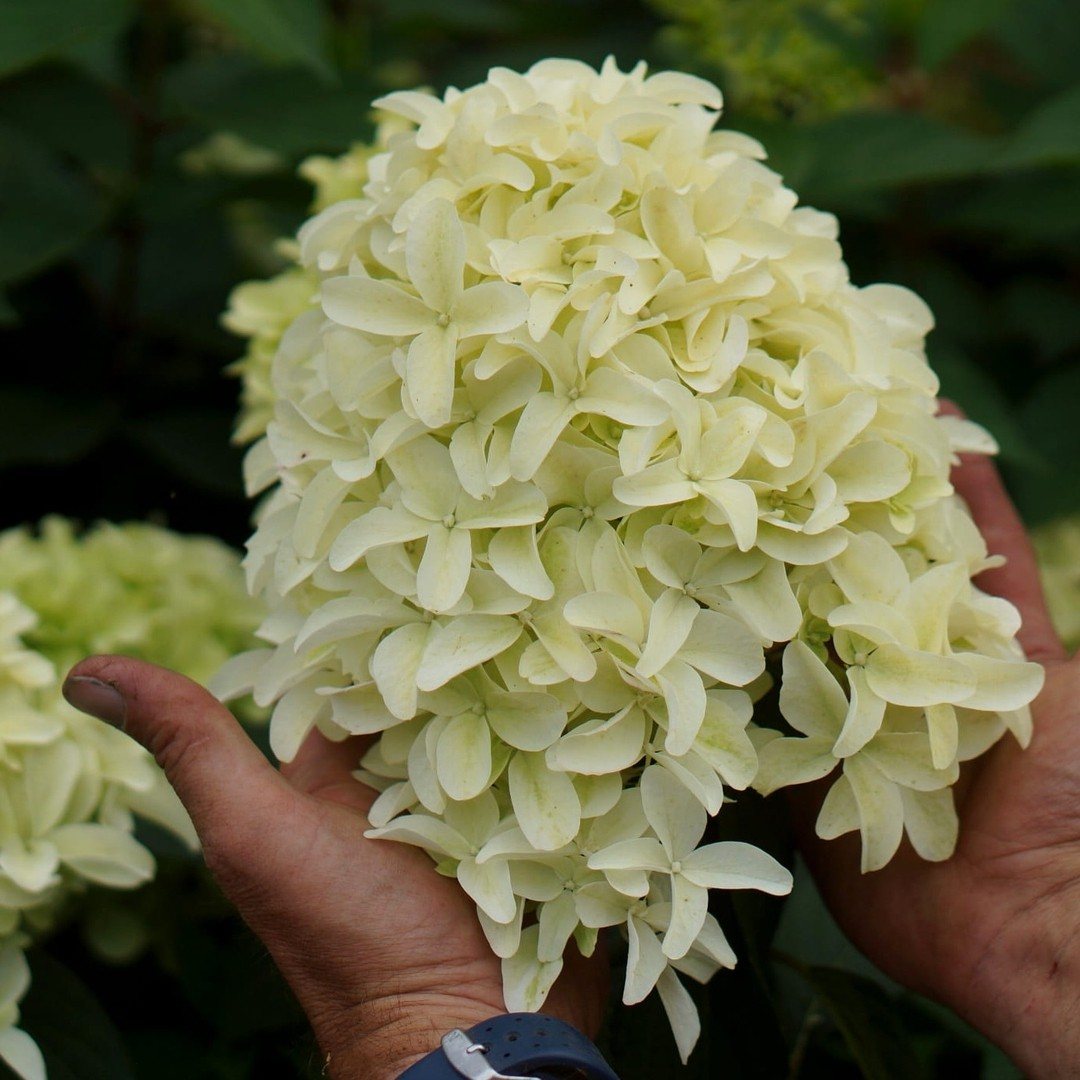
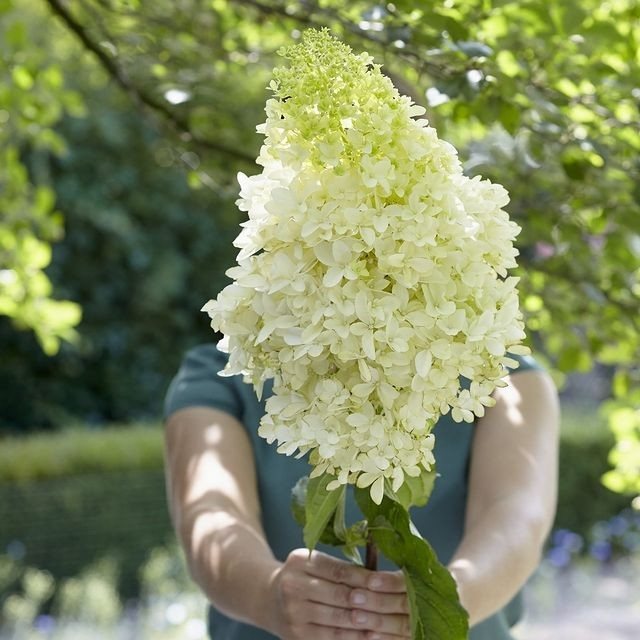
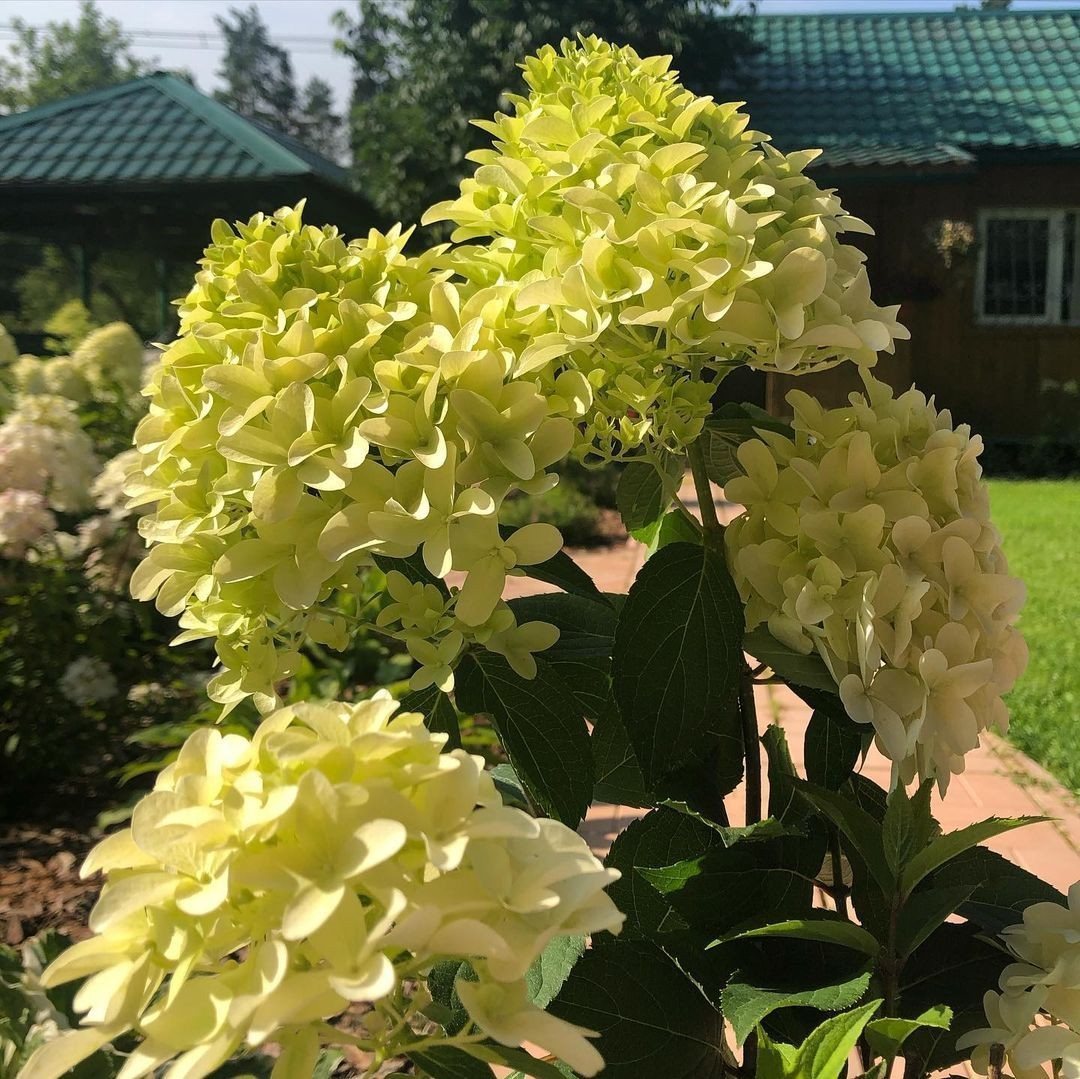
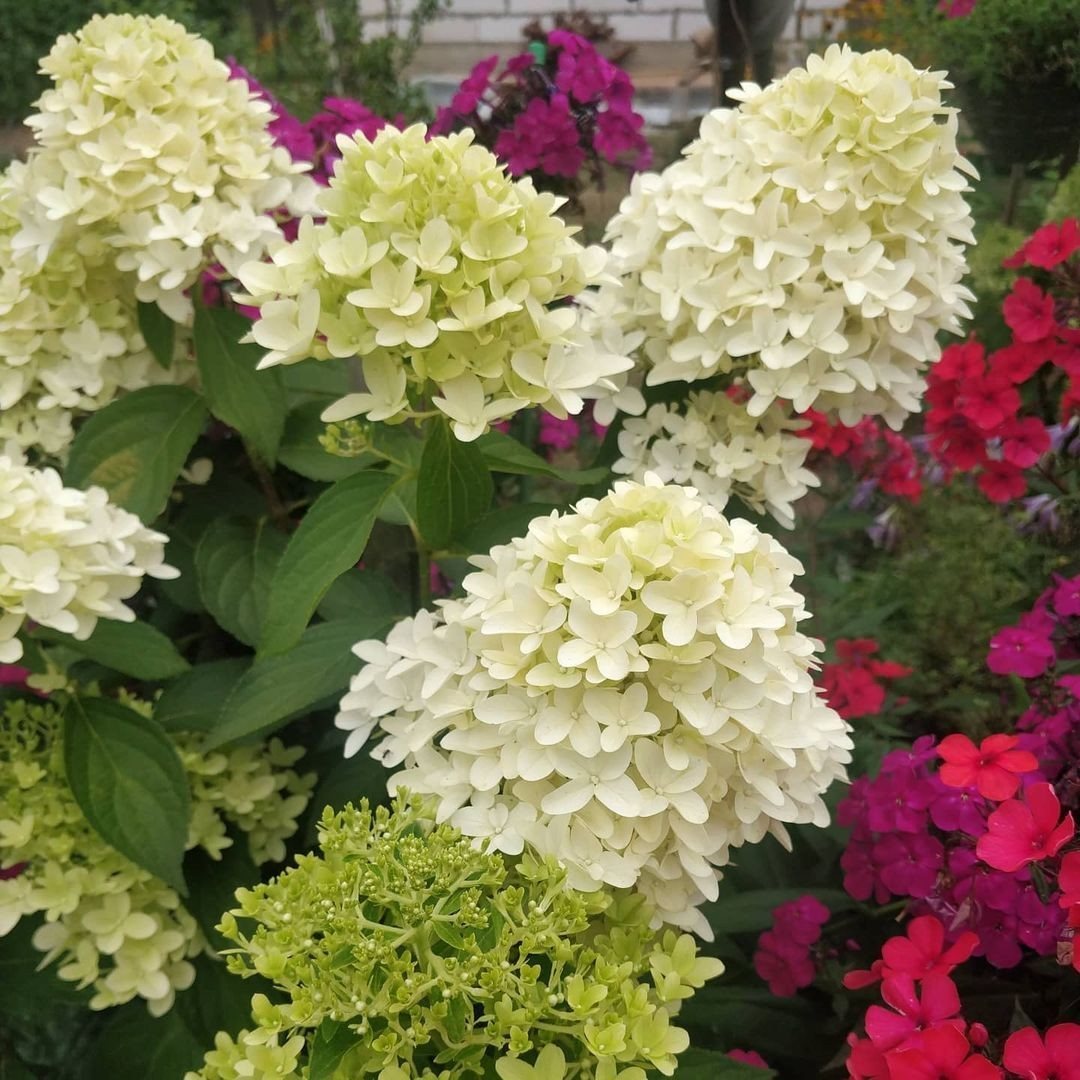
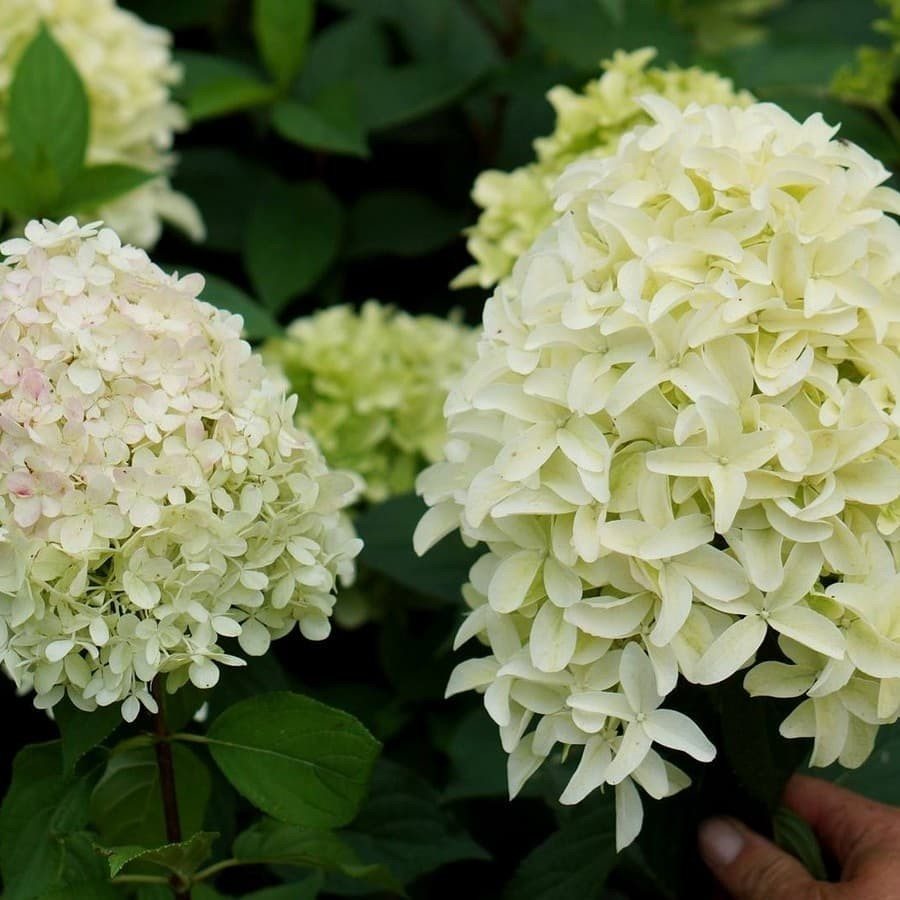





Pink Lady
The variety was bred in the 80s of the 20th century by the Dutch breeder Peter Zweinenburg. The height of the bush reaches two meters, and it also has a fan-shaped shape. The spreading branches of the plant reach 2 meters in length. Large cone-shaped inflorescences are formed on the bush, the diameter of which is 30 cm. The color during flowering changes from cream to red.

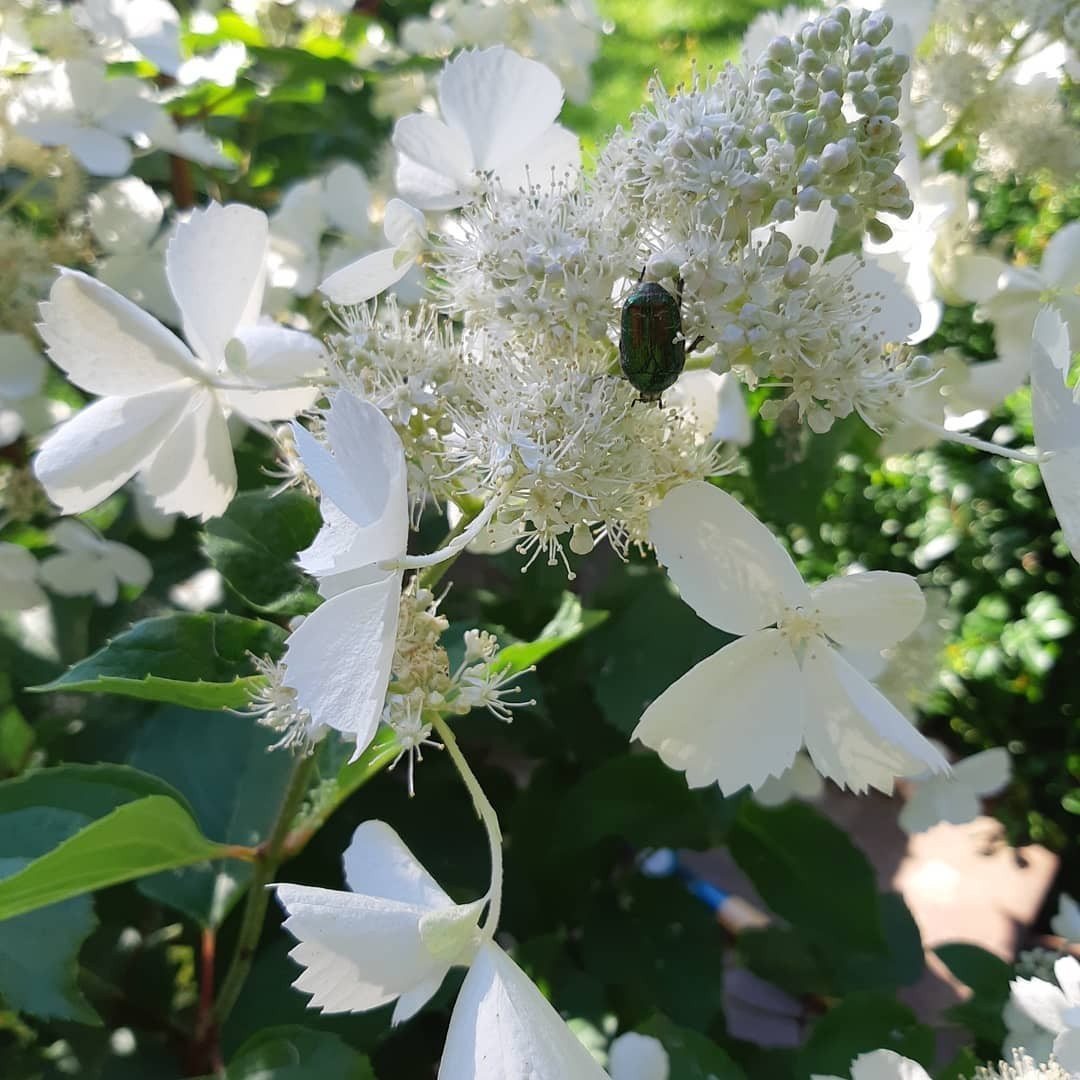

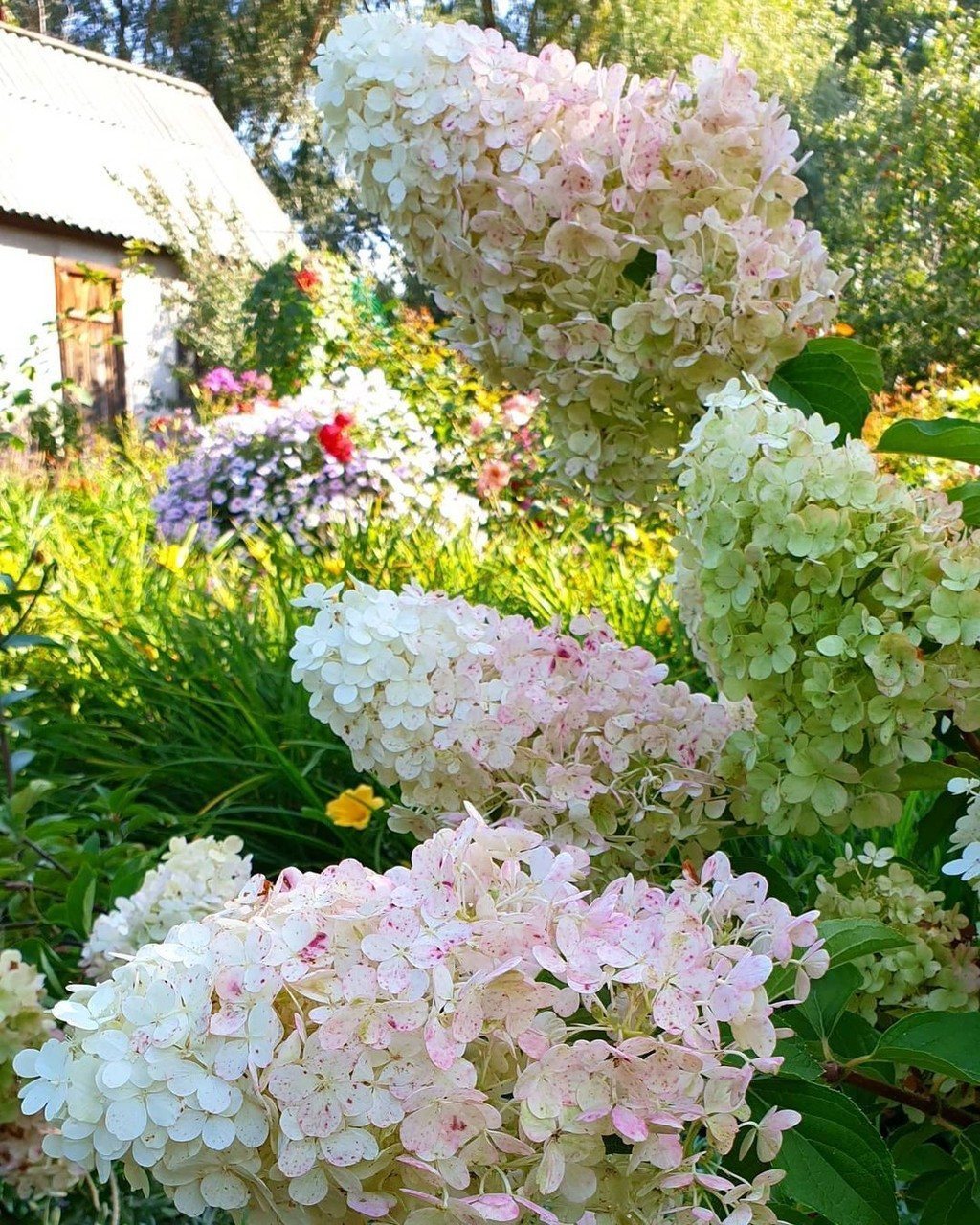
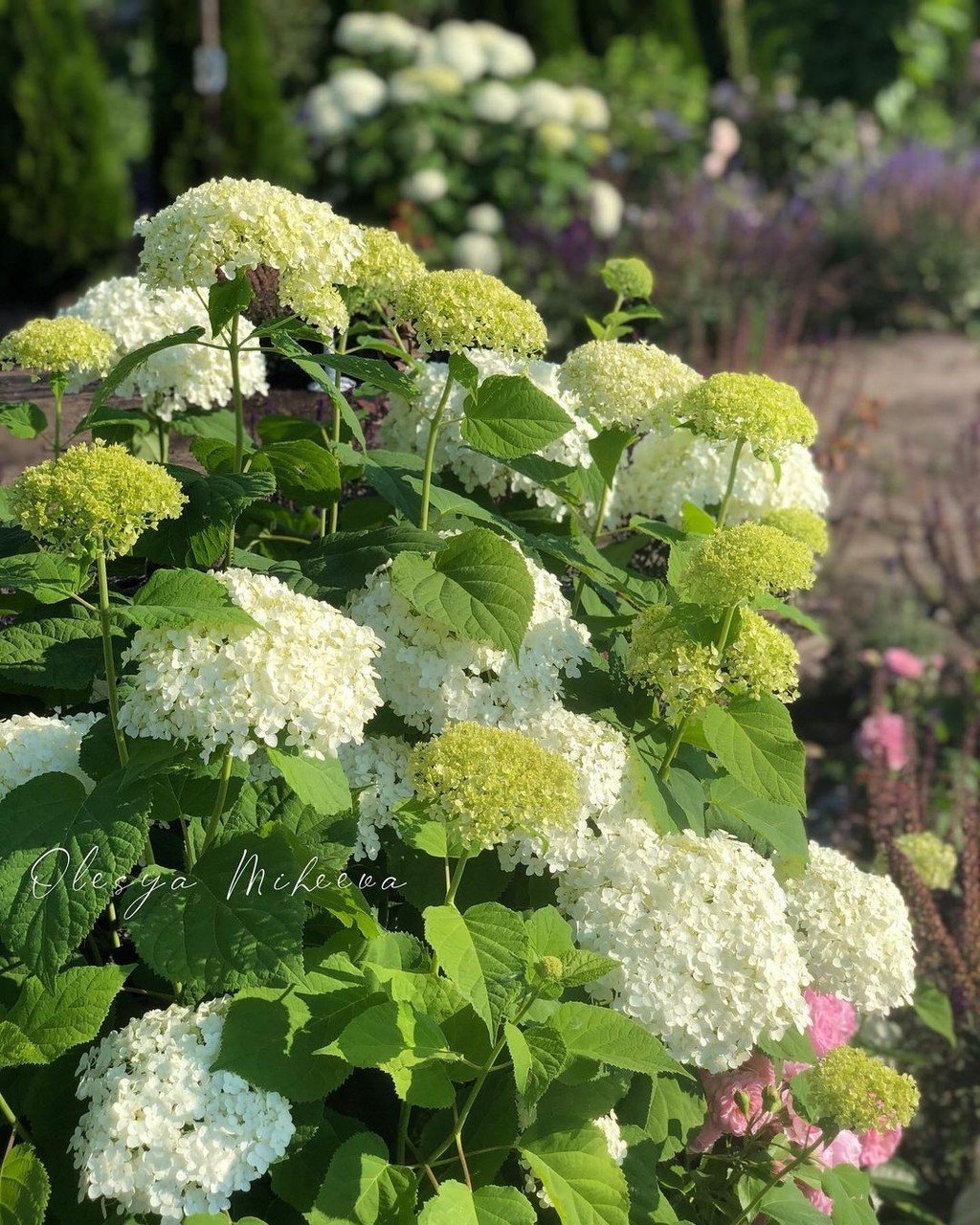
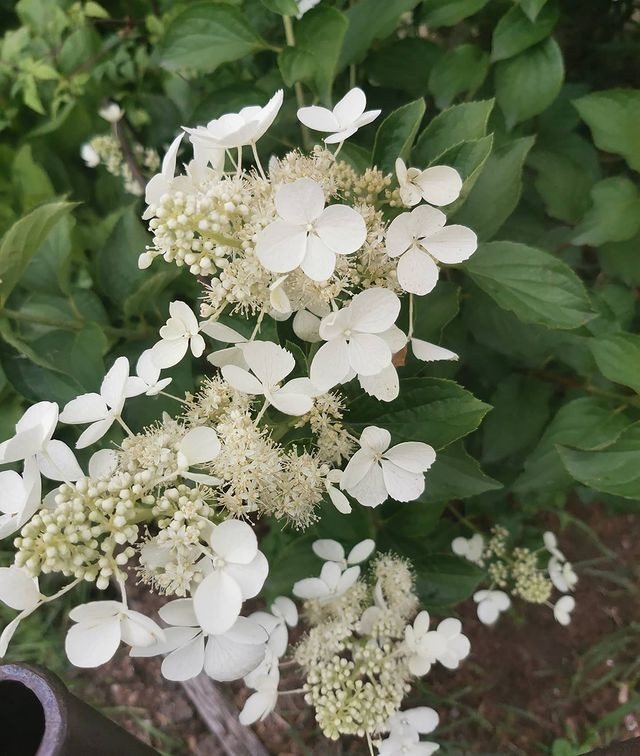






Summer Love
The compact plant is known for its very beautiful flowers, which change colors several times over the summer. It can be planted not only in open ground, but also in a pot. The height of the bush is about 1 meter. It has a well-developed superficial root system, a spherical crown and dense pyramidal inflorescences. The flowers are initially white, but 3 weeks after the start of flowering they turn pink.
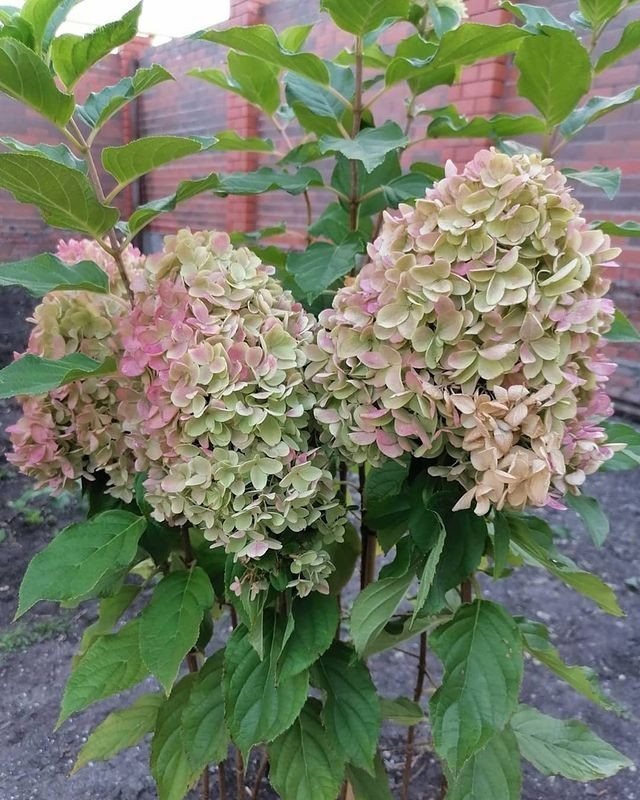
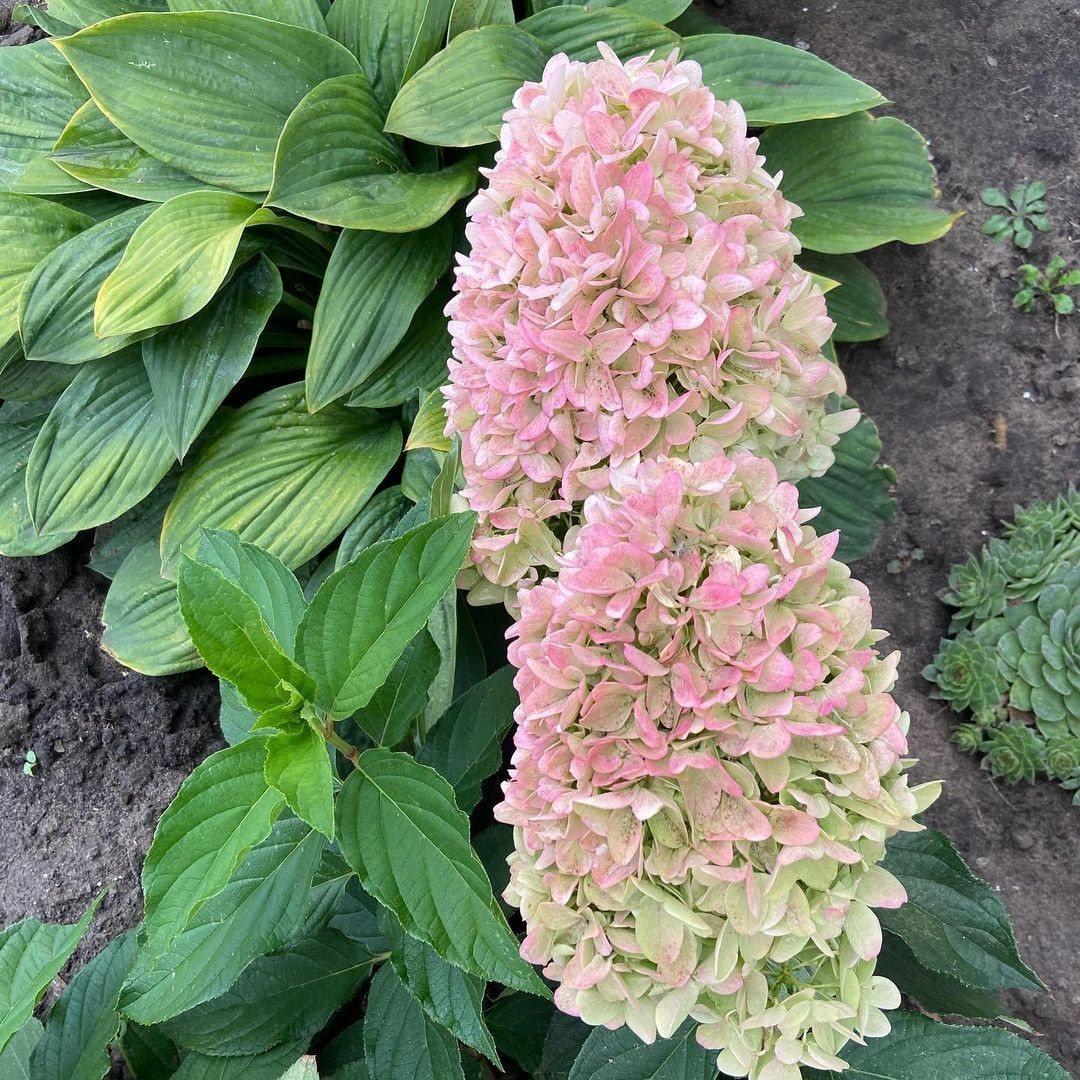
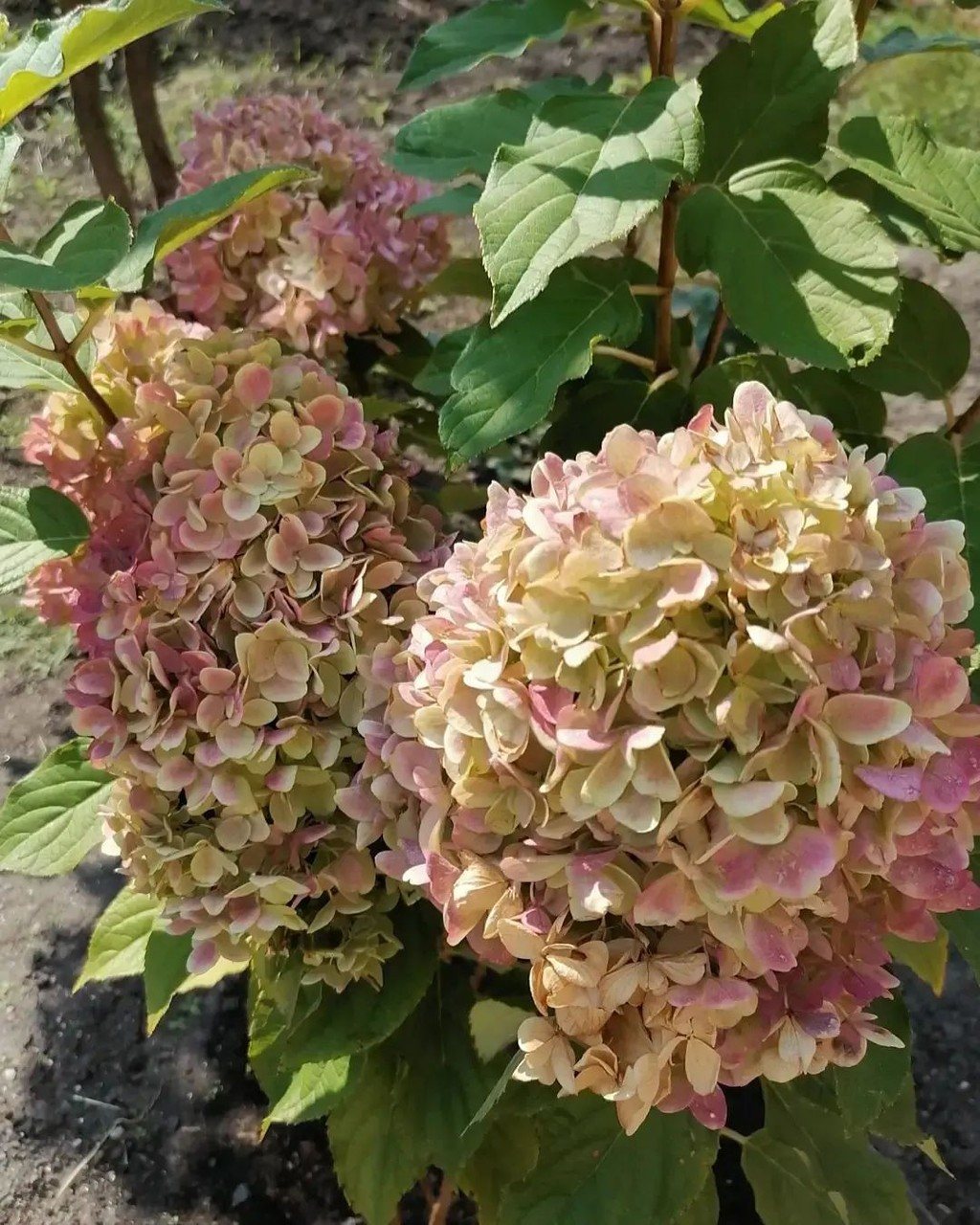
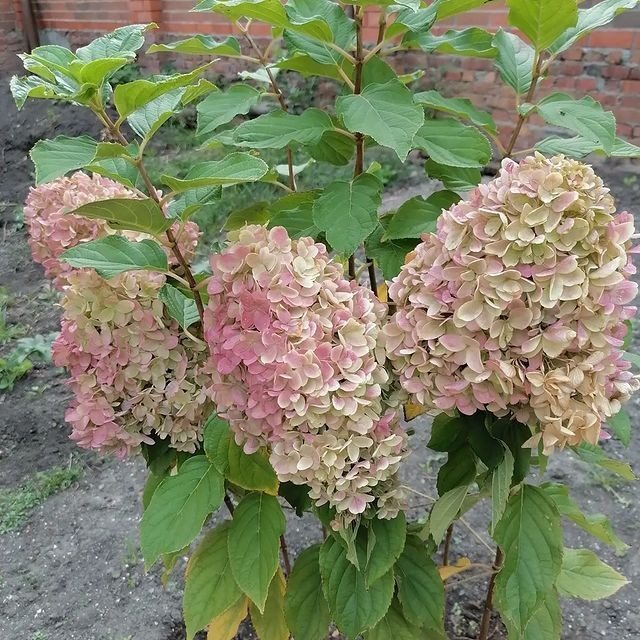
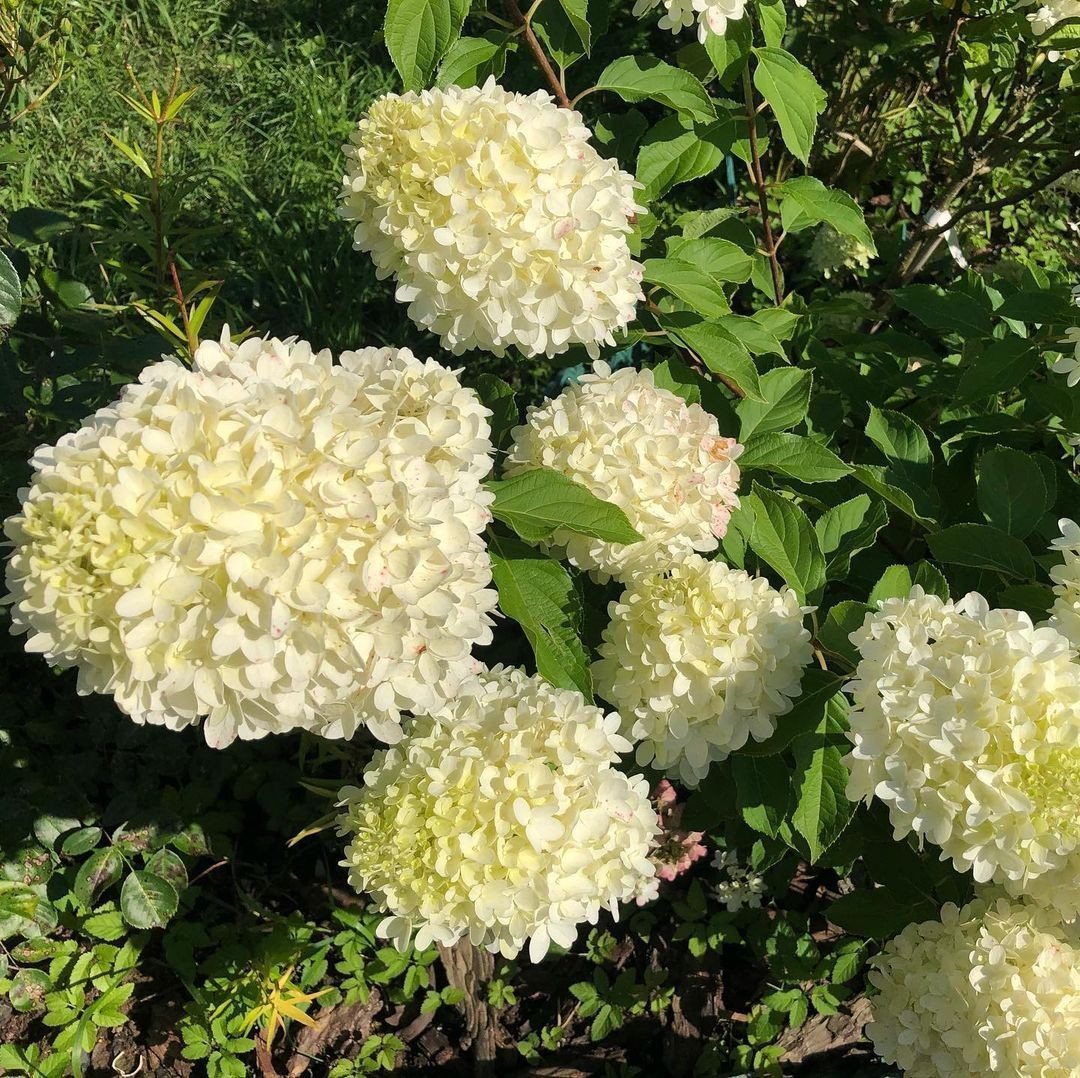





Diamond Rouge
The variety was bred by workers of the French nursery Pepinieres Renault.Bush hydrangea reaches 1.5 meters in height. It has a branched root system, straight brown-red shoots and large inflorescences.
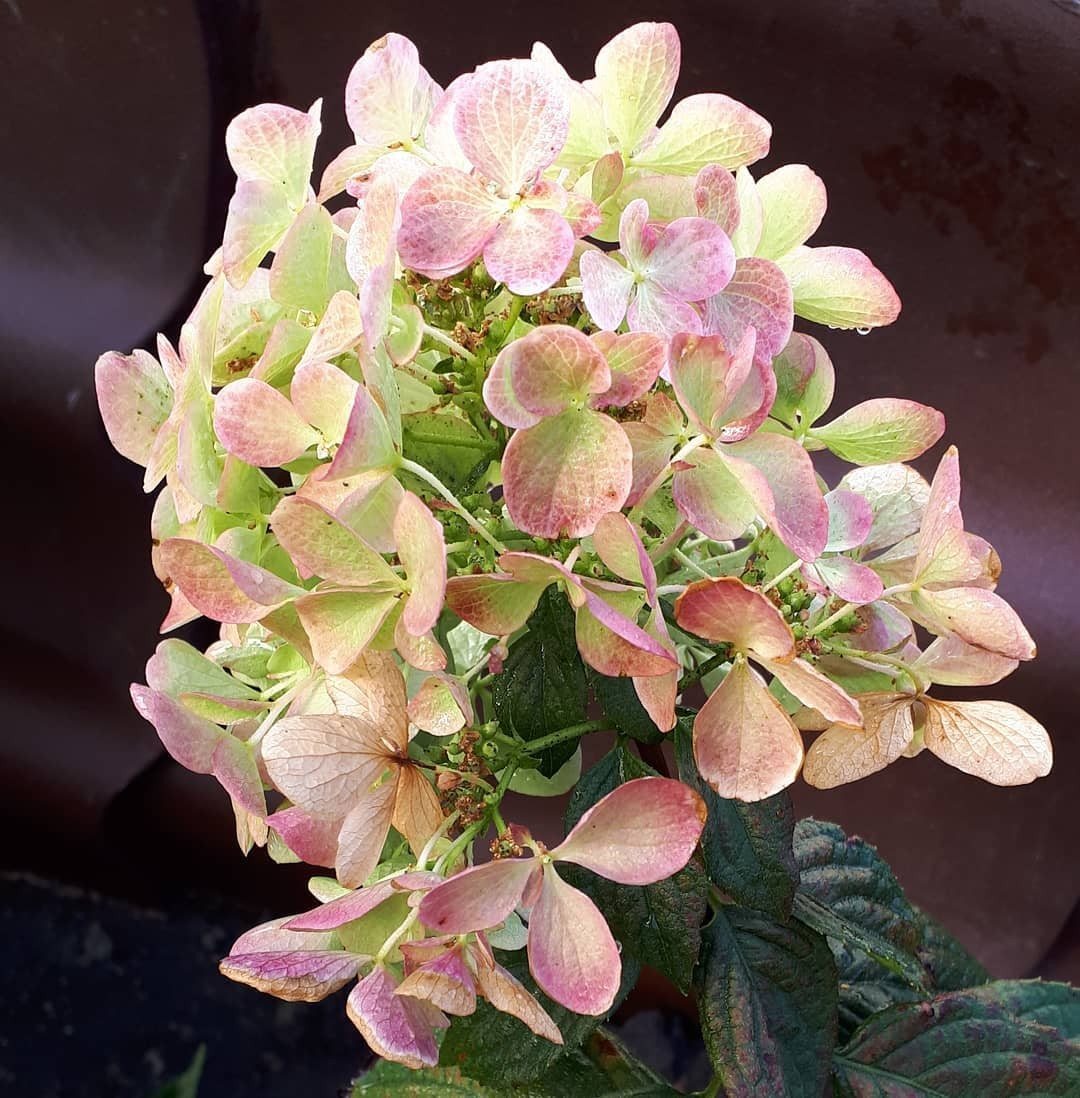
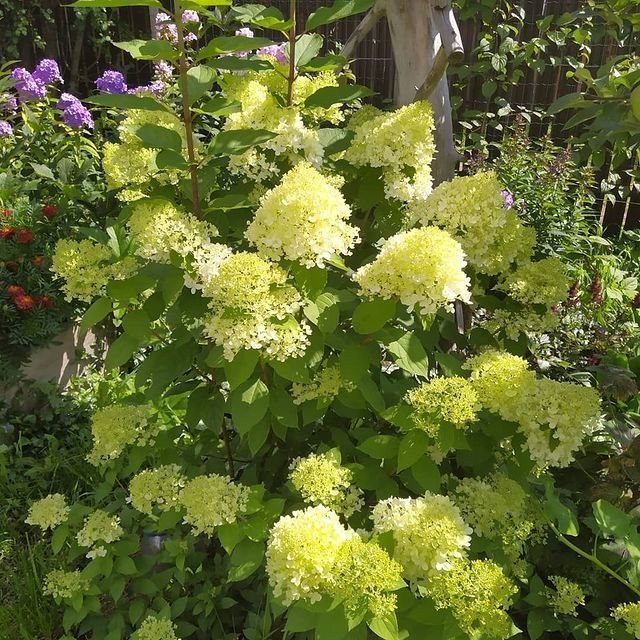

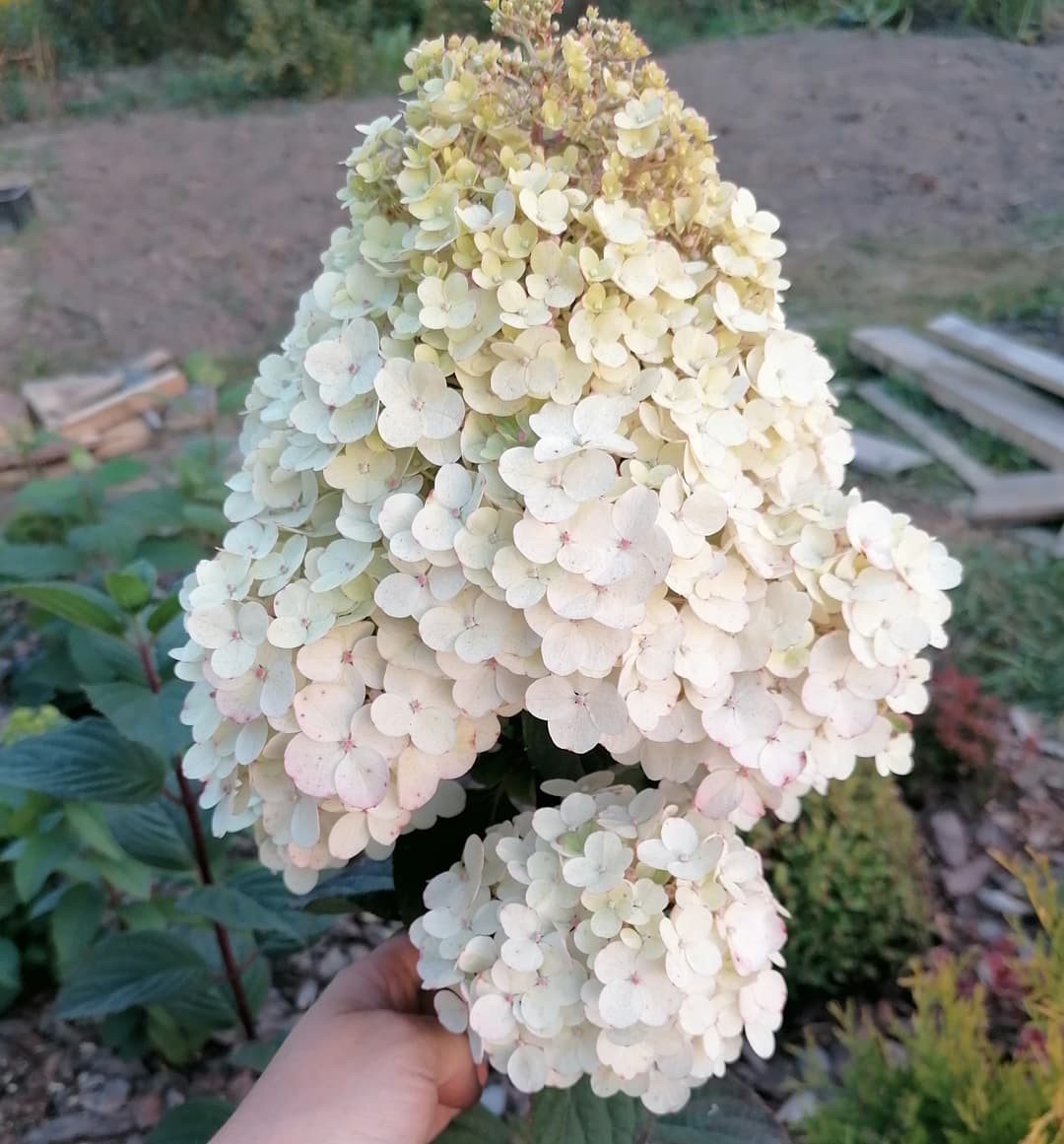
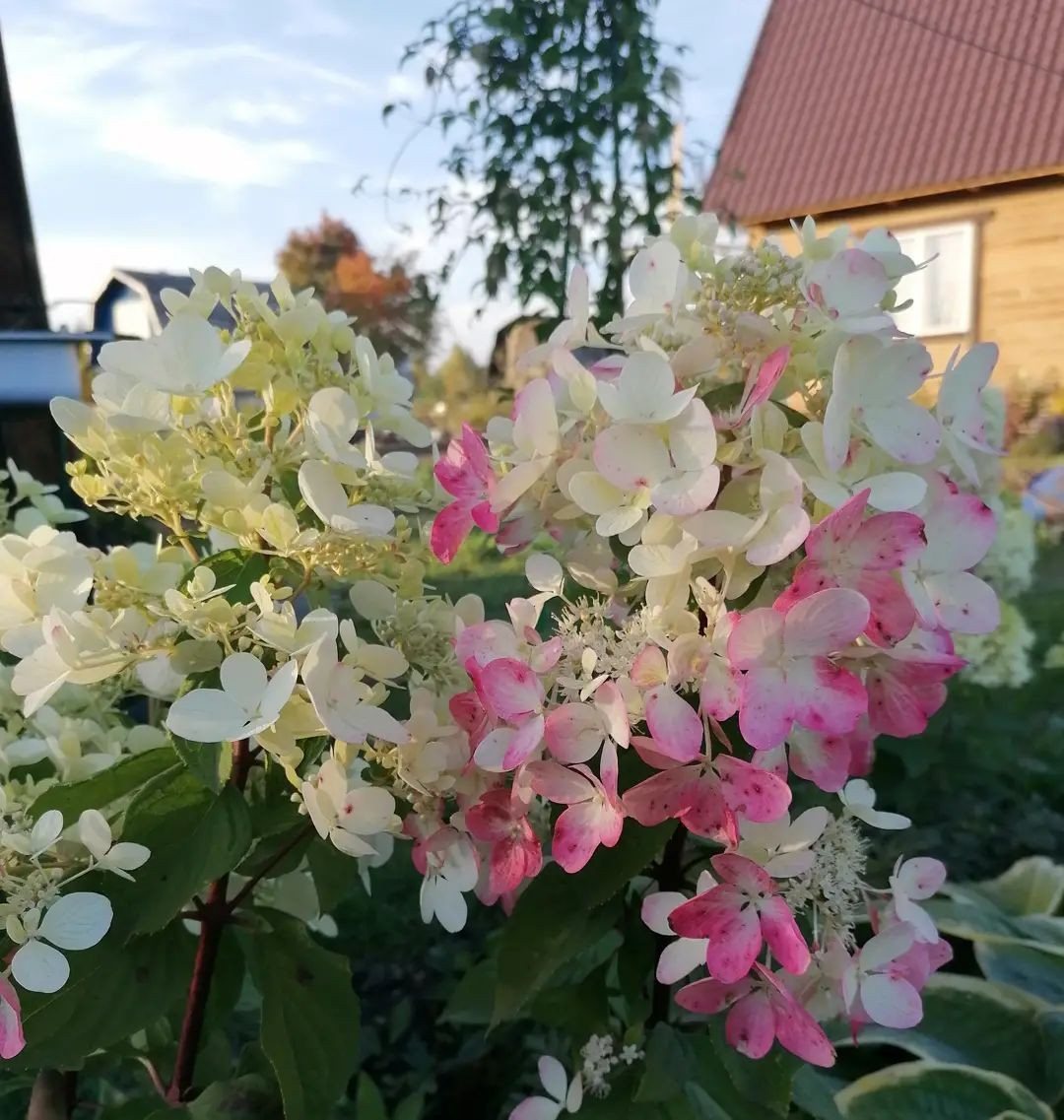





Large-leaved hydrangea
The perennial plant is classified as a shrub type. Hydrangea grows up to two meters, and also has erect shoots. This species does not bear fruit. Inflorescences can have different shades: white, blue, lilac or pink.
The features of the species include late flowering, so you can enjoy the magnificent view of the inflorescences from August to the end of November.
Endless summer
The variety appeared in the 80s of the 20th century in the USA. The main feature of hydrangea is considered to be repeated flowering. Therefore, the plant twice pleases gardeners with bright and beautiful flowers. The color of the petals depends on the composition of the soil.
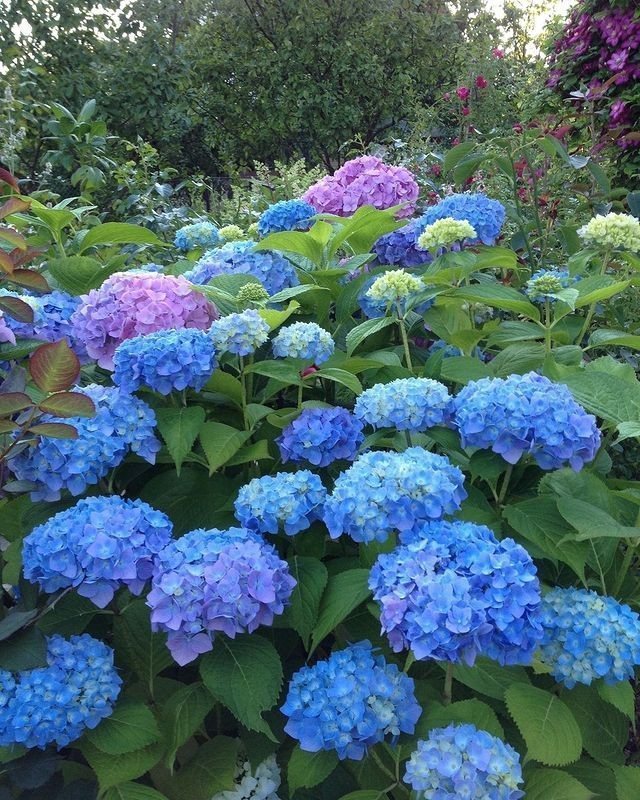
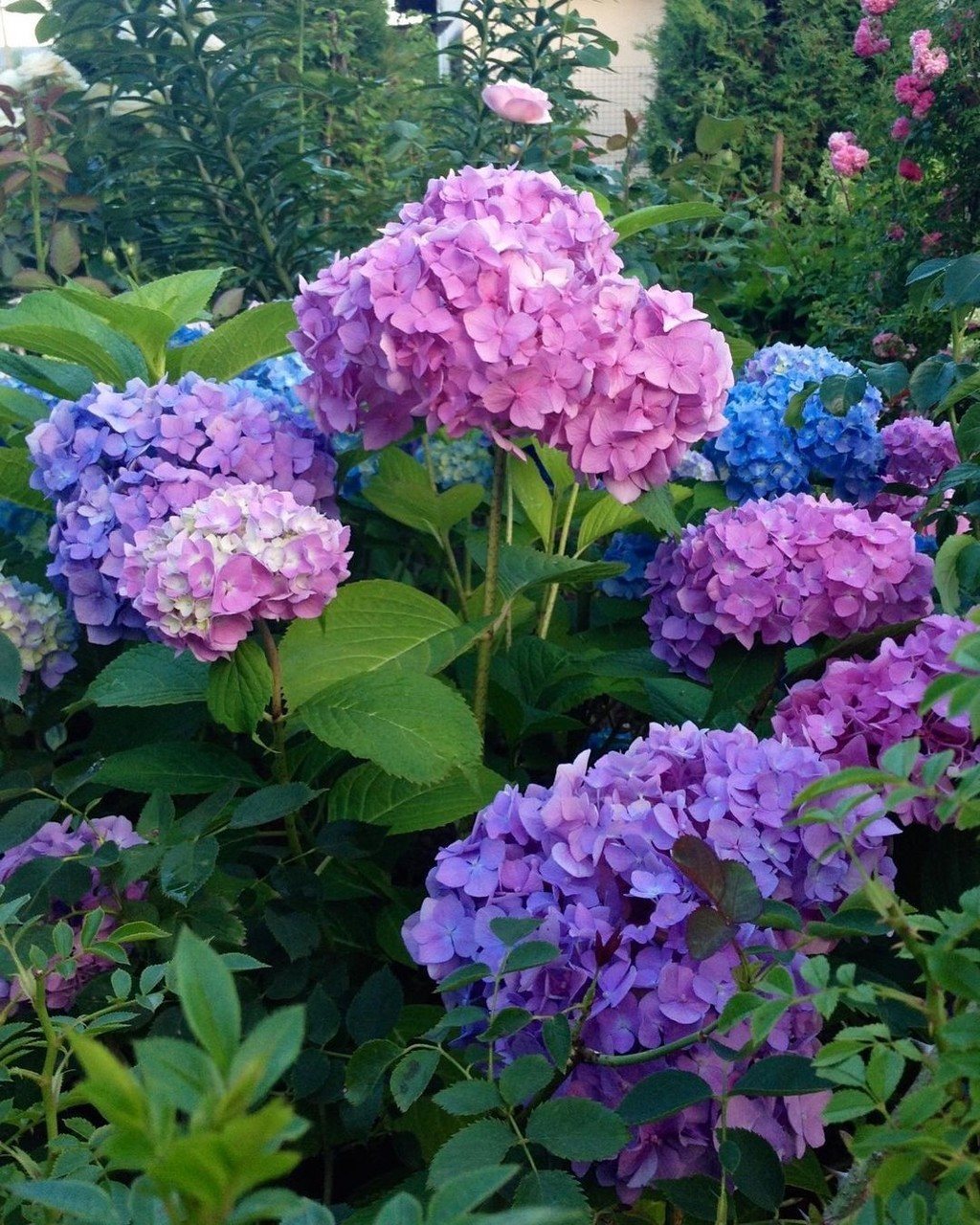
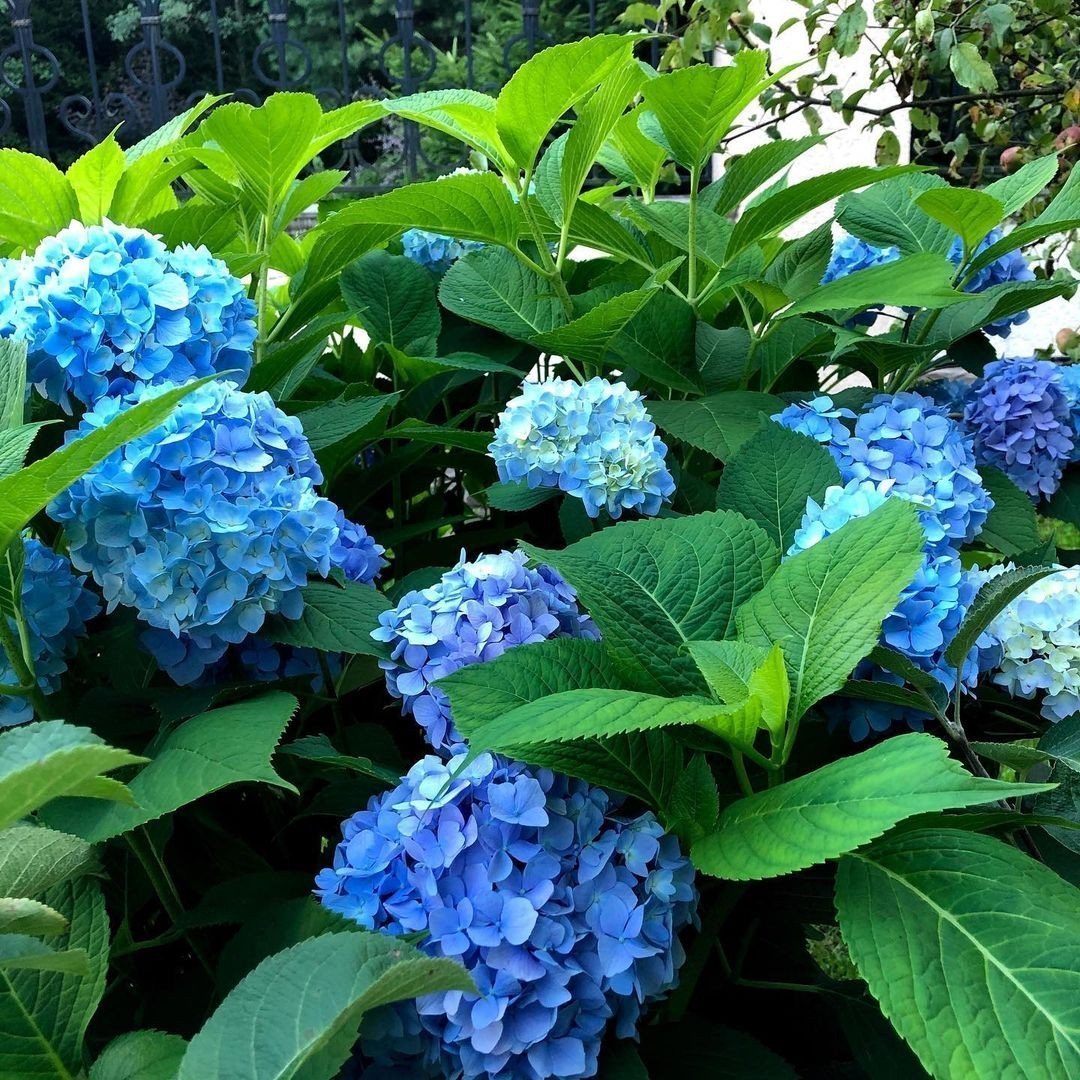
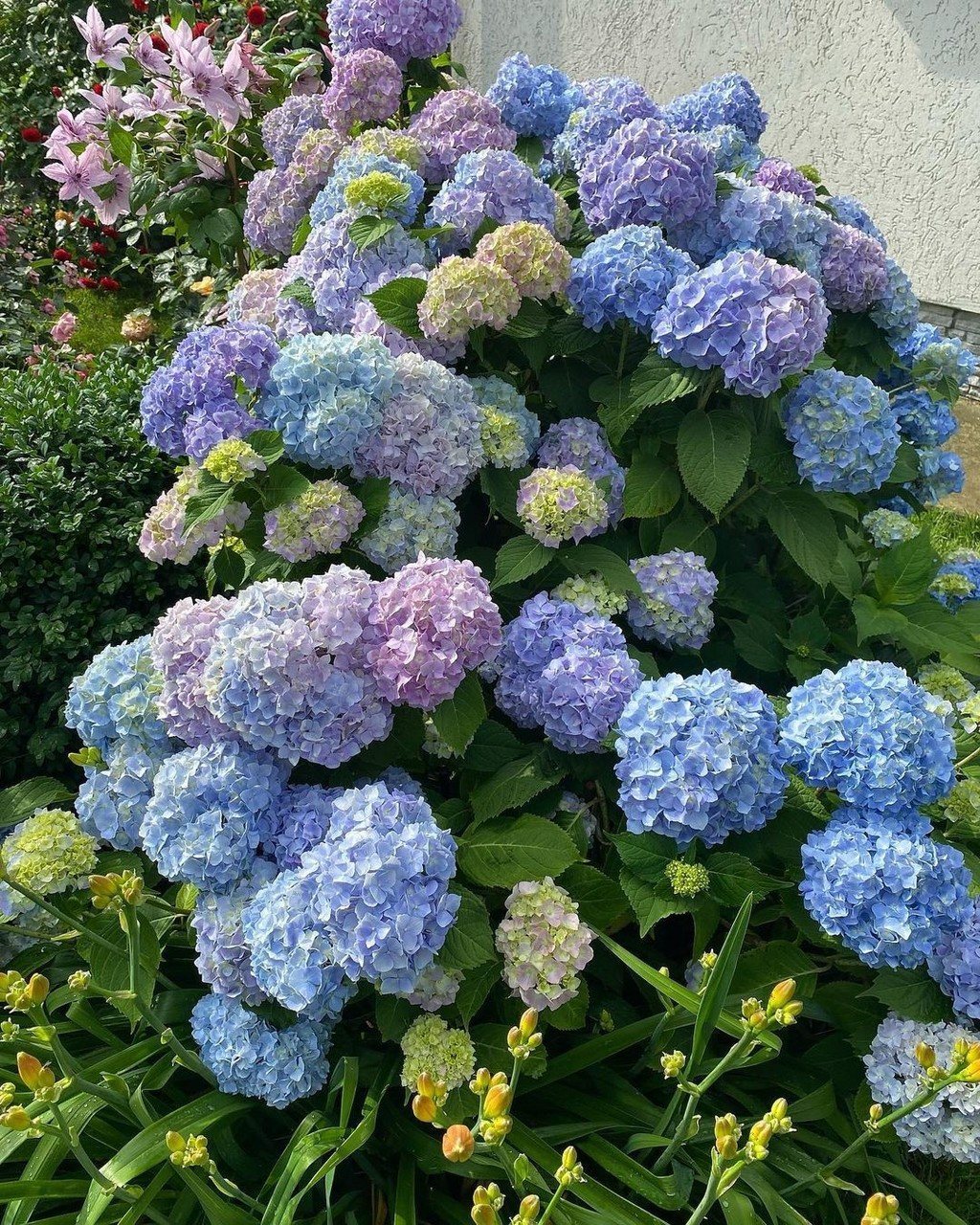
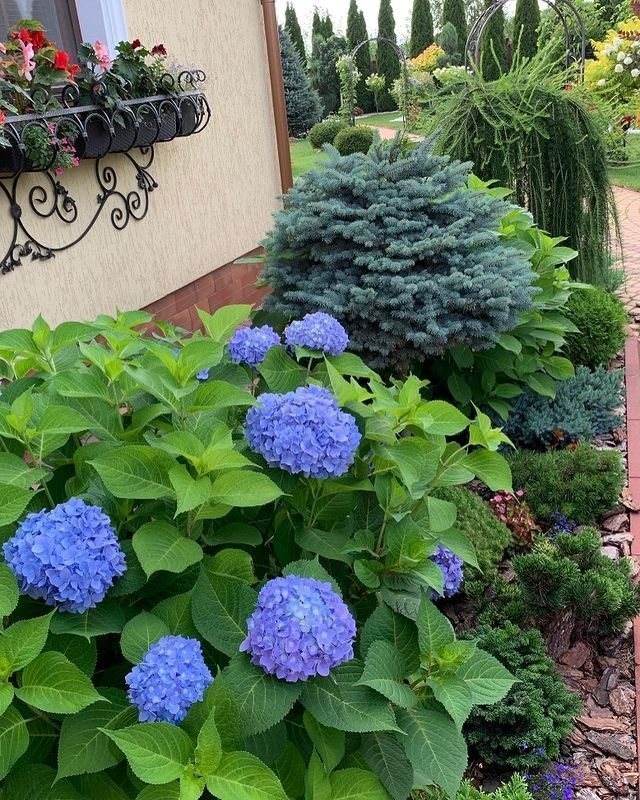





Blum Star
The variety's features include the ability to bloom on old and new shoots, so gardeners admire beautiful flowers from mid-spring to late autumn. The bush has spherical and large caps, the diameter of which is 18 cm. The color is affected by the acidity of the soil.
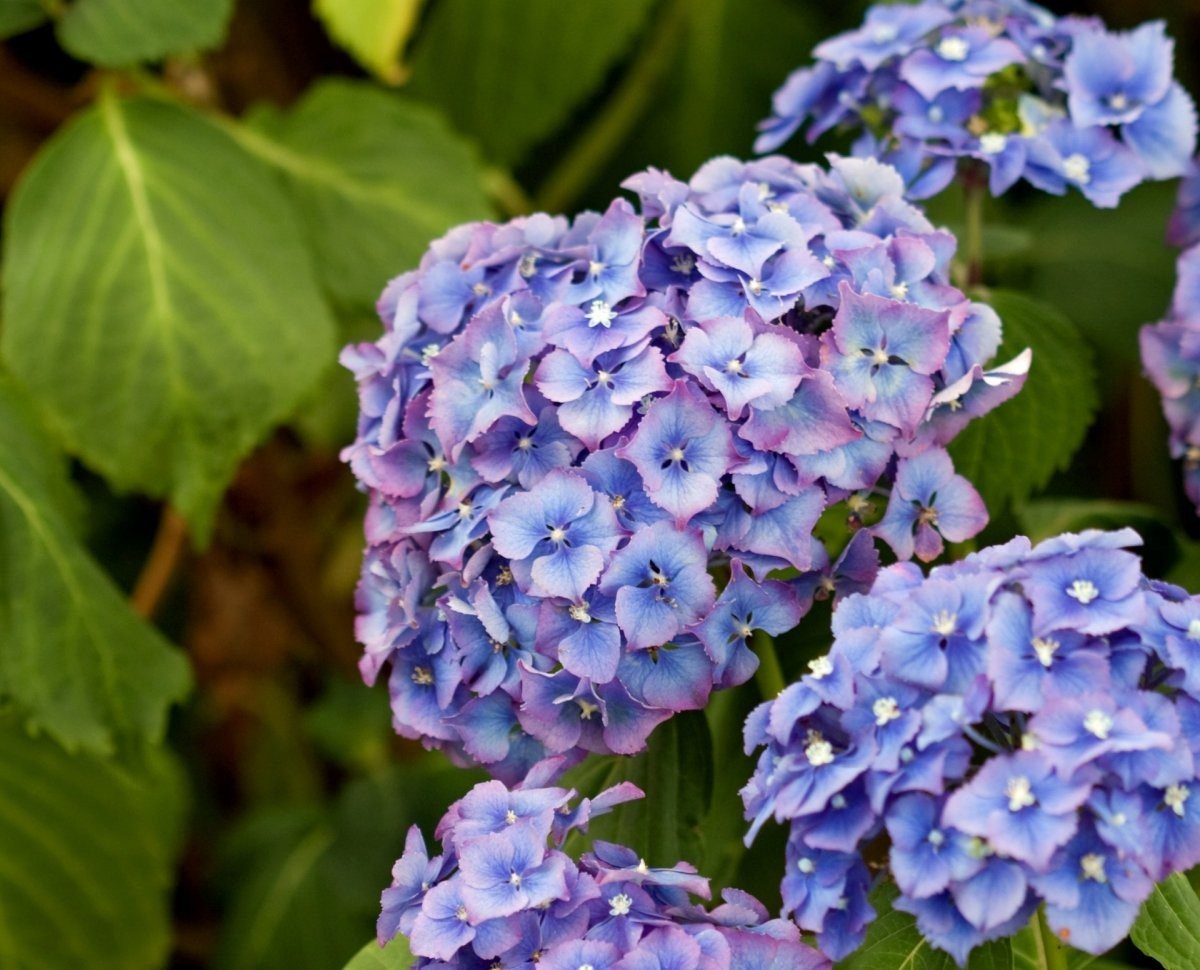

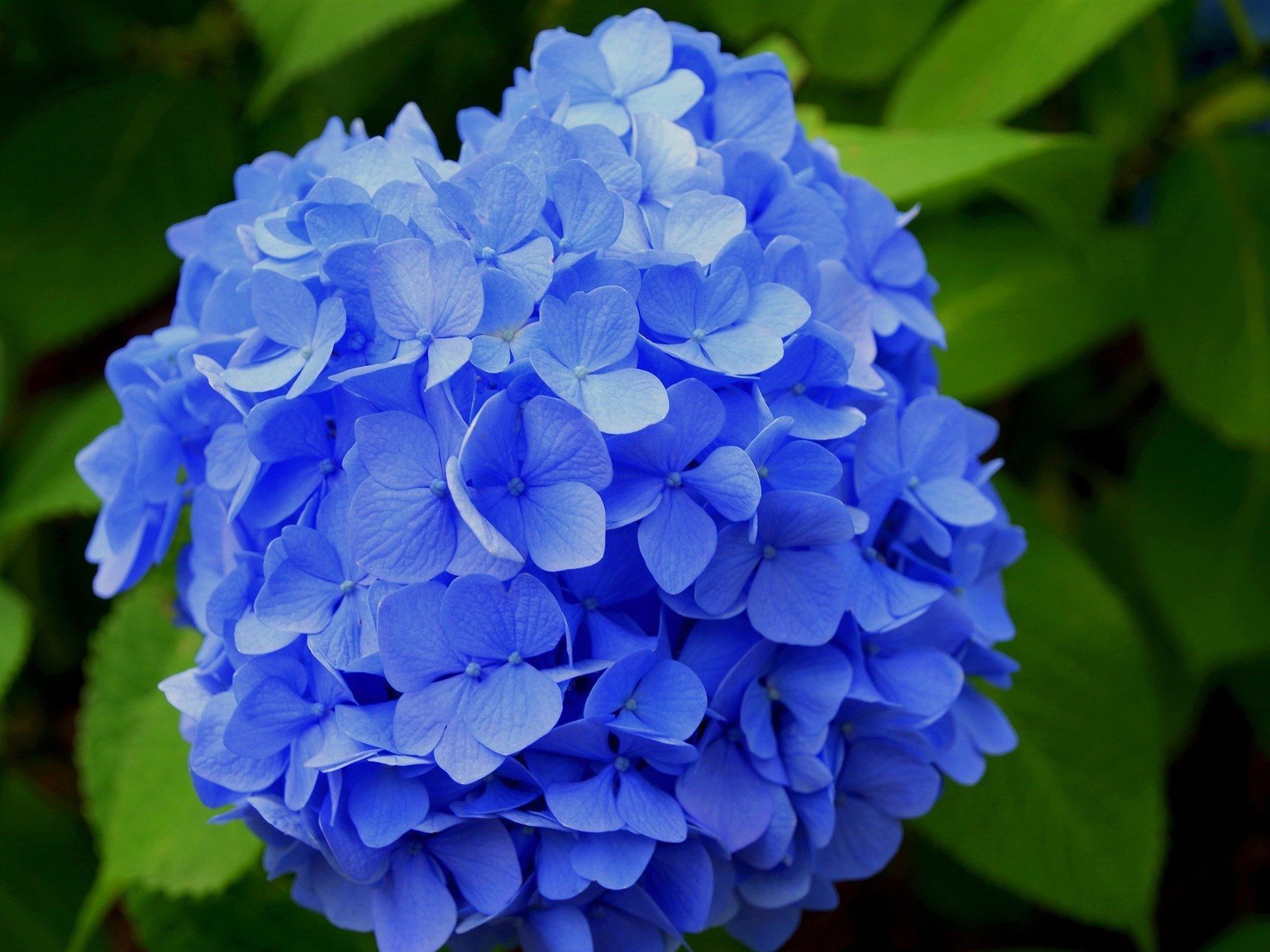



Blaumeise
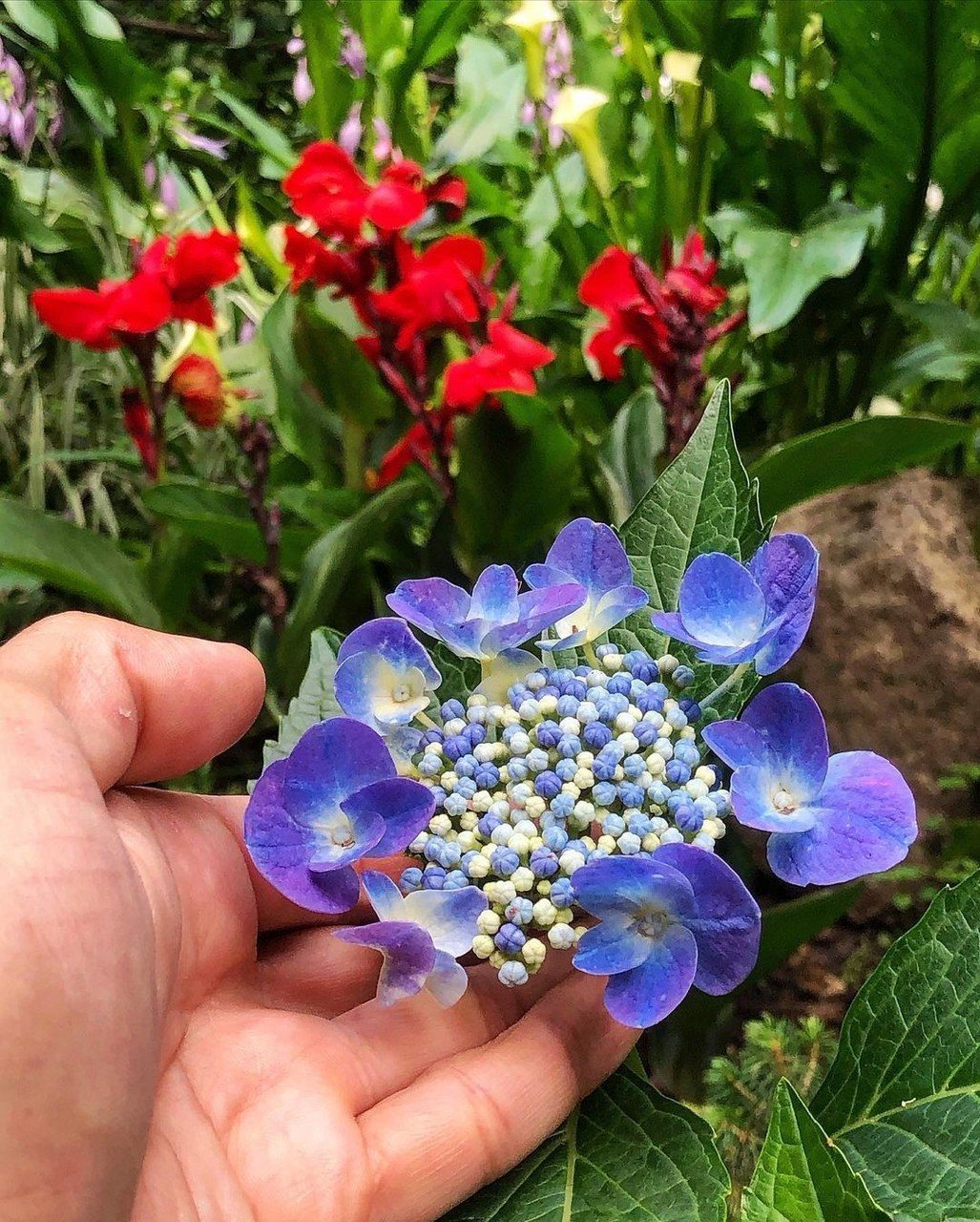
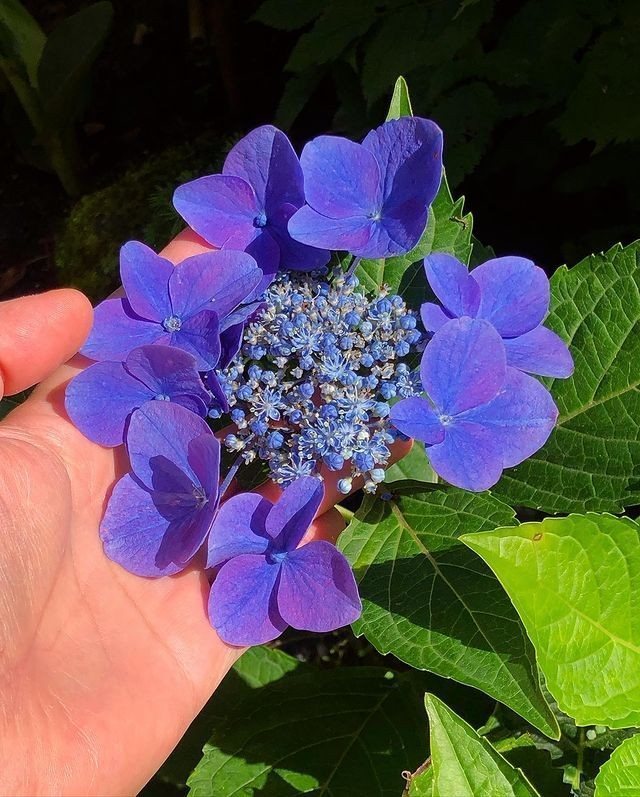
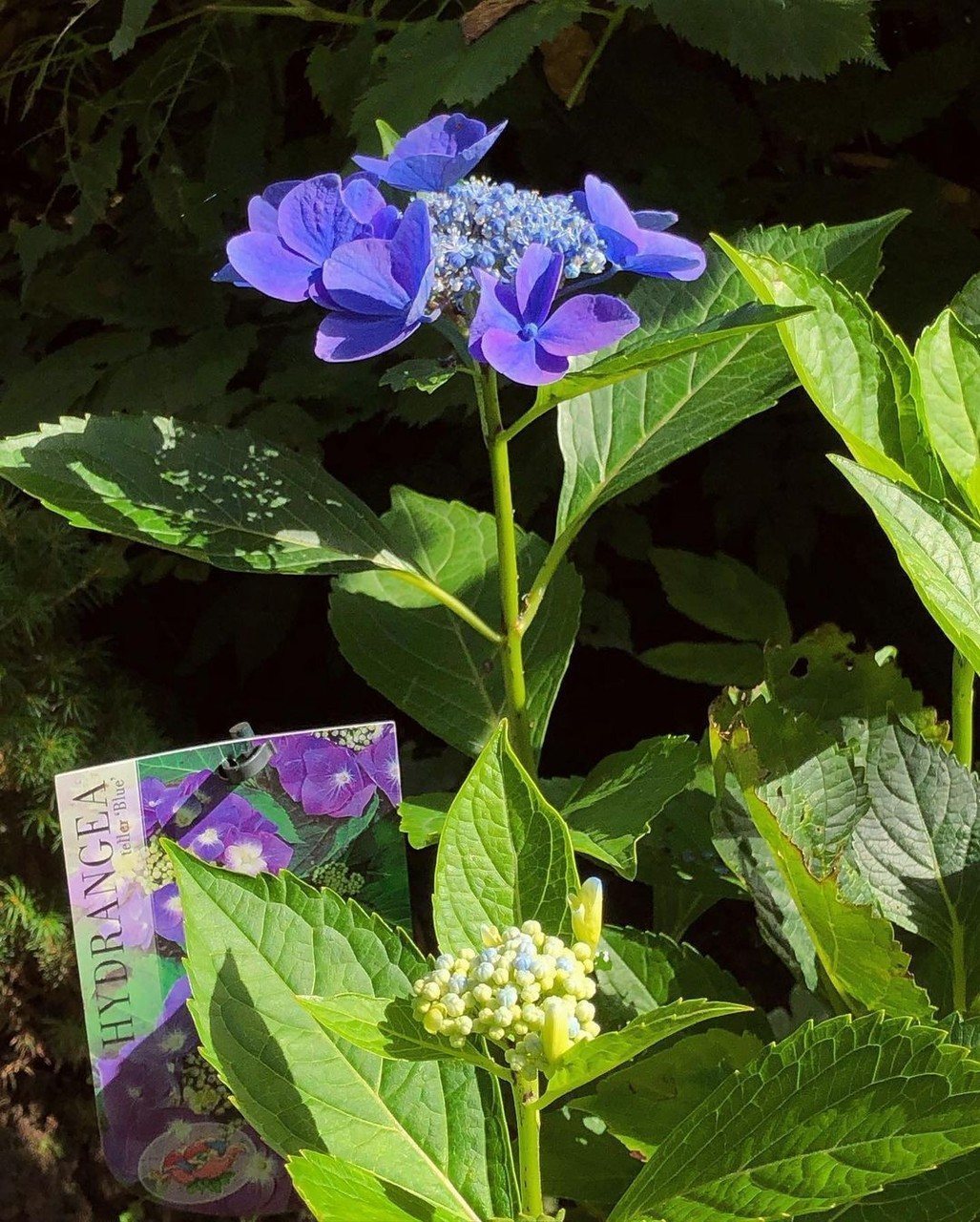



The variety was discovered by the famous French breeder Myle Dirr. The plant is represented by a large-leaved ornamental flowering shrub, the height of which does not exceed 1.2 meters. The culture is powerful and spreading, and also combines well with other perennials. The bush is equipped with erect and strong shoots that need pruning. The color of the flowers depends on the composition and quality of the soil.
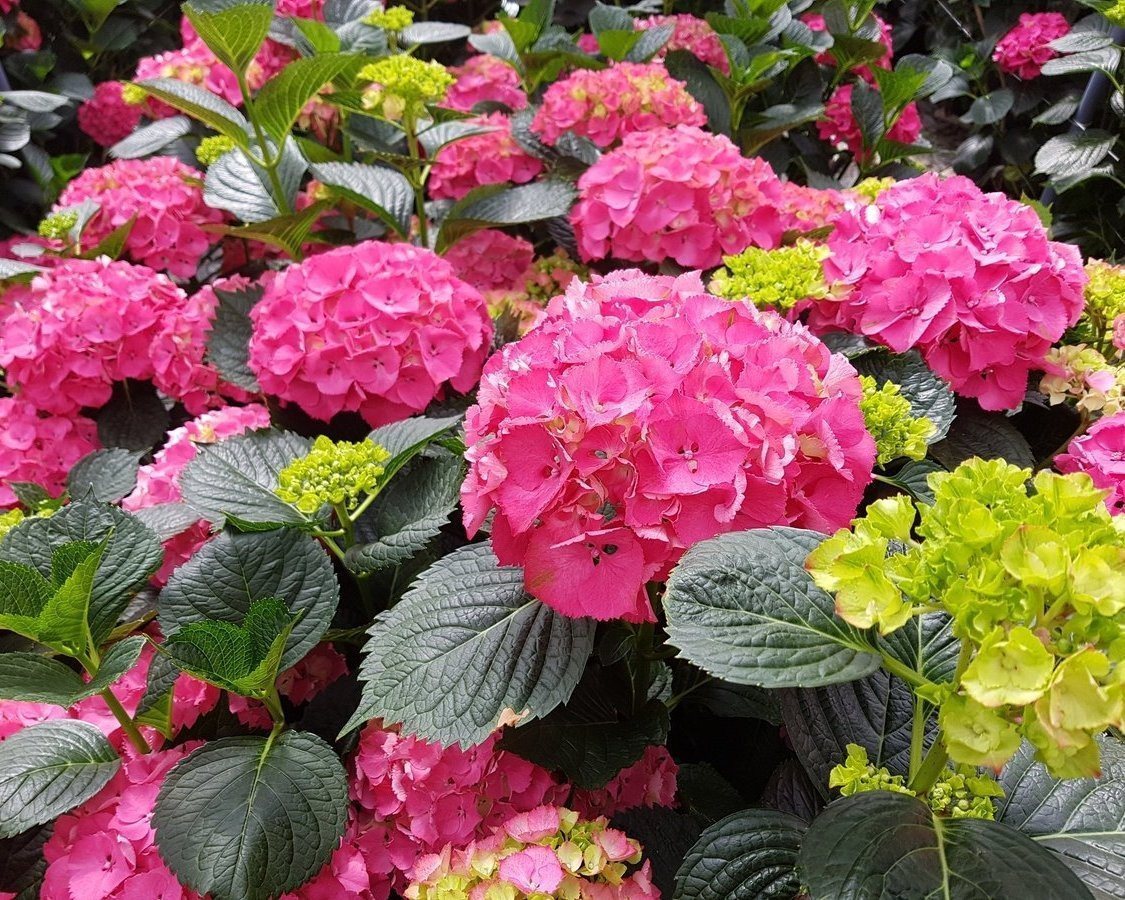
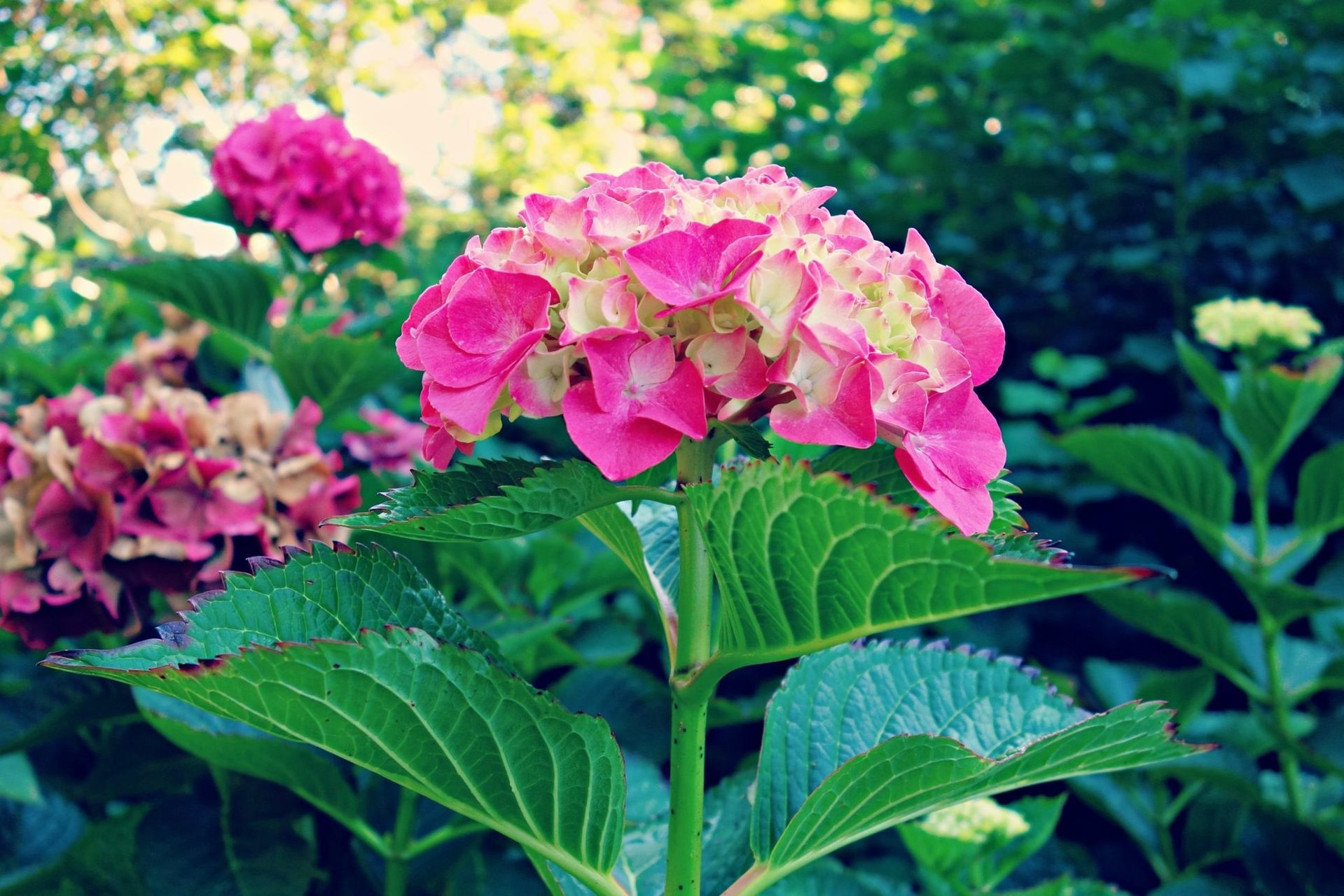
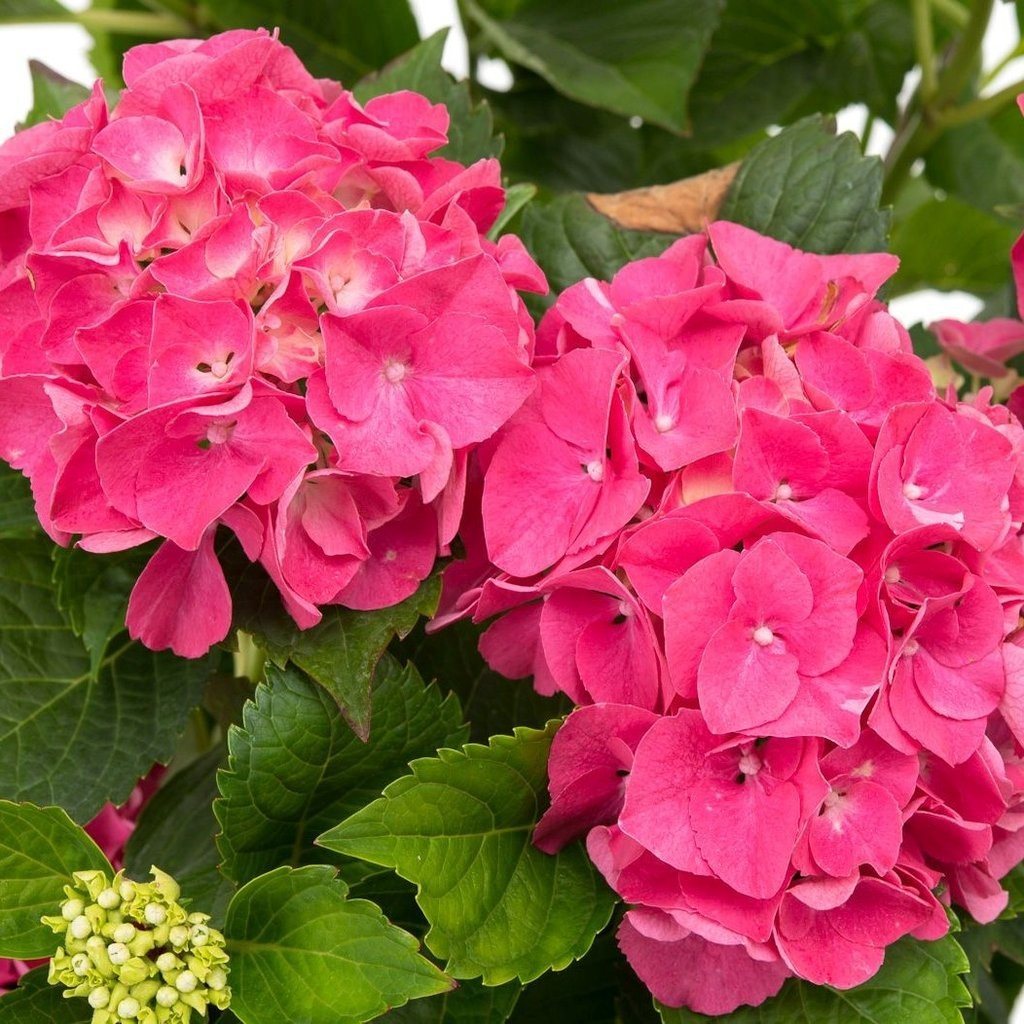
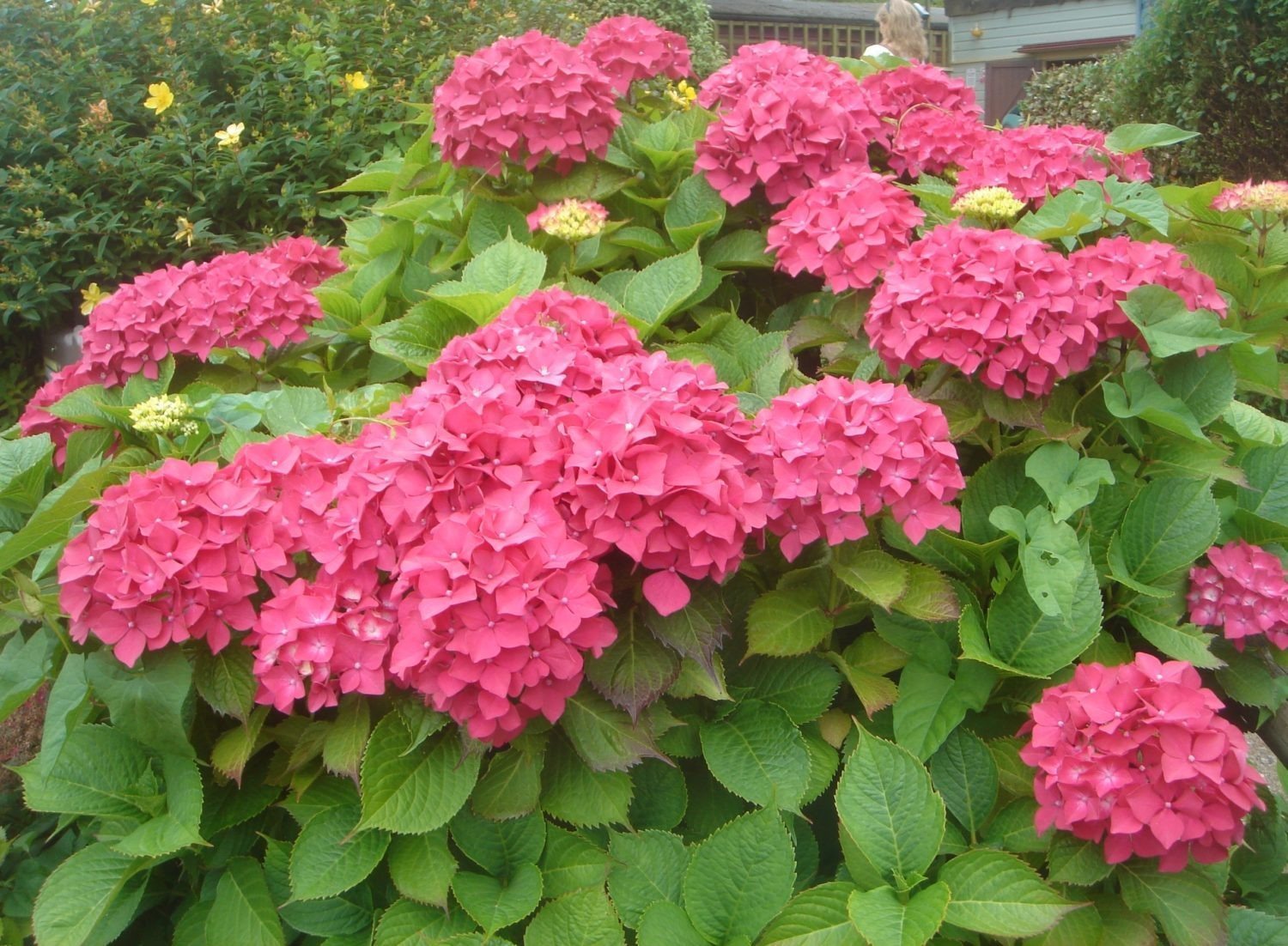




Sibilla
This perennial flowering shrub grows up to 1 meter, and is also considered an unpretentious ornamental plant.Bush hydrangea reaches a height of 1.5 meters. It has a branched root system, straight brown-red shoots and large inflorescences.
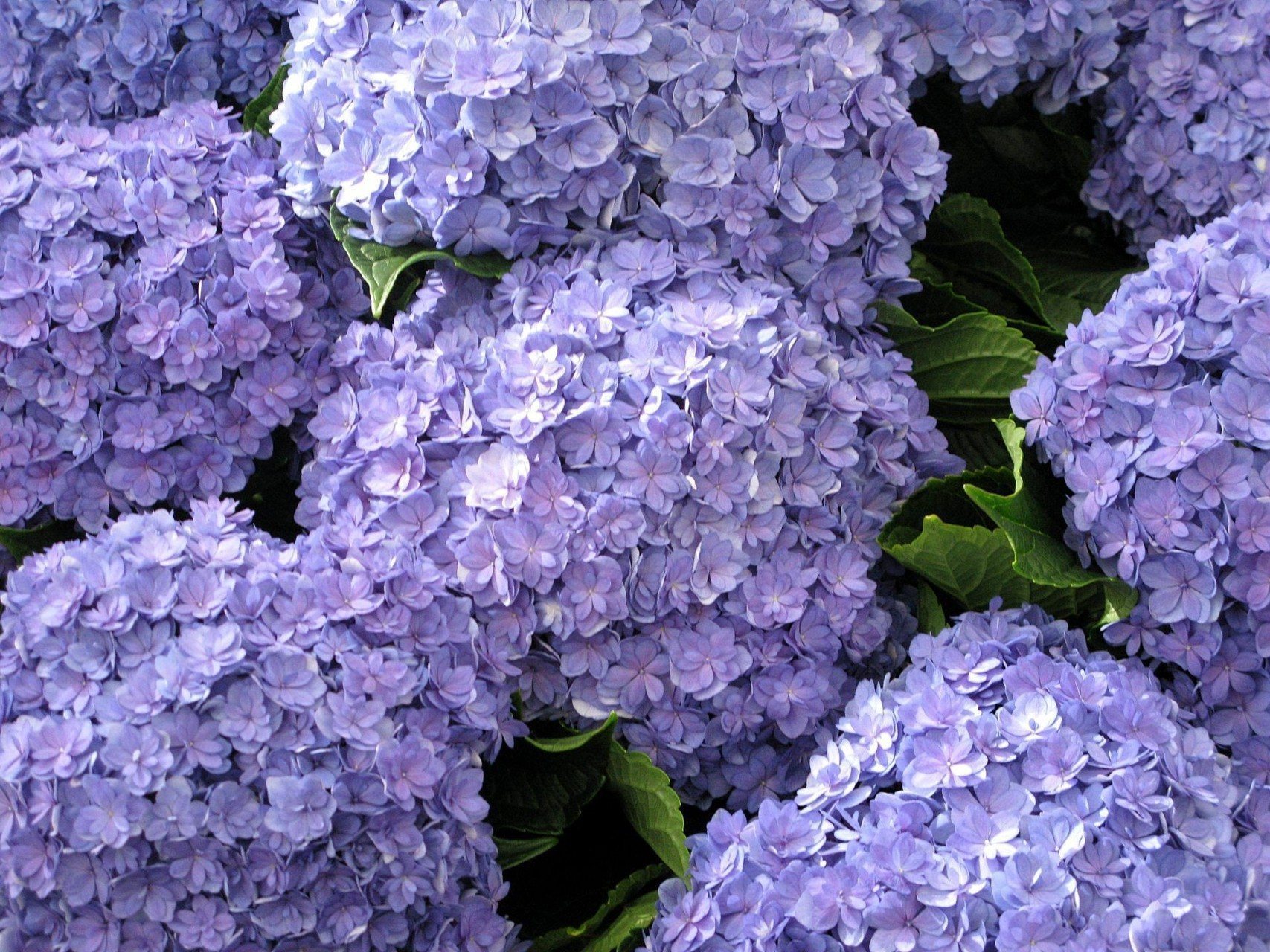
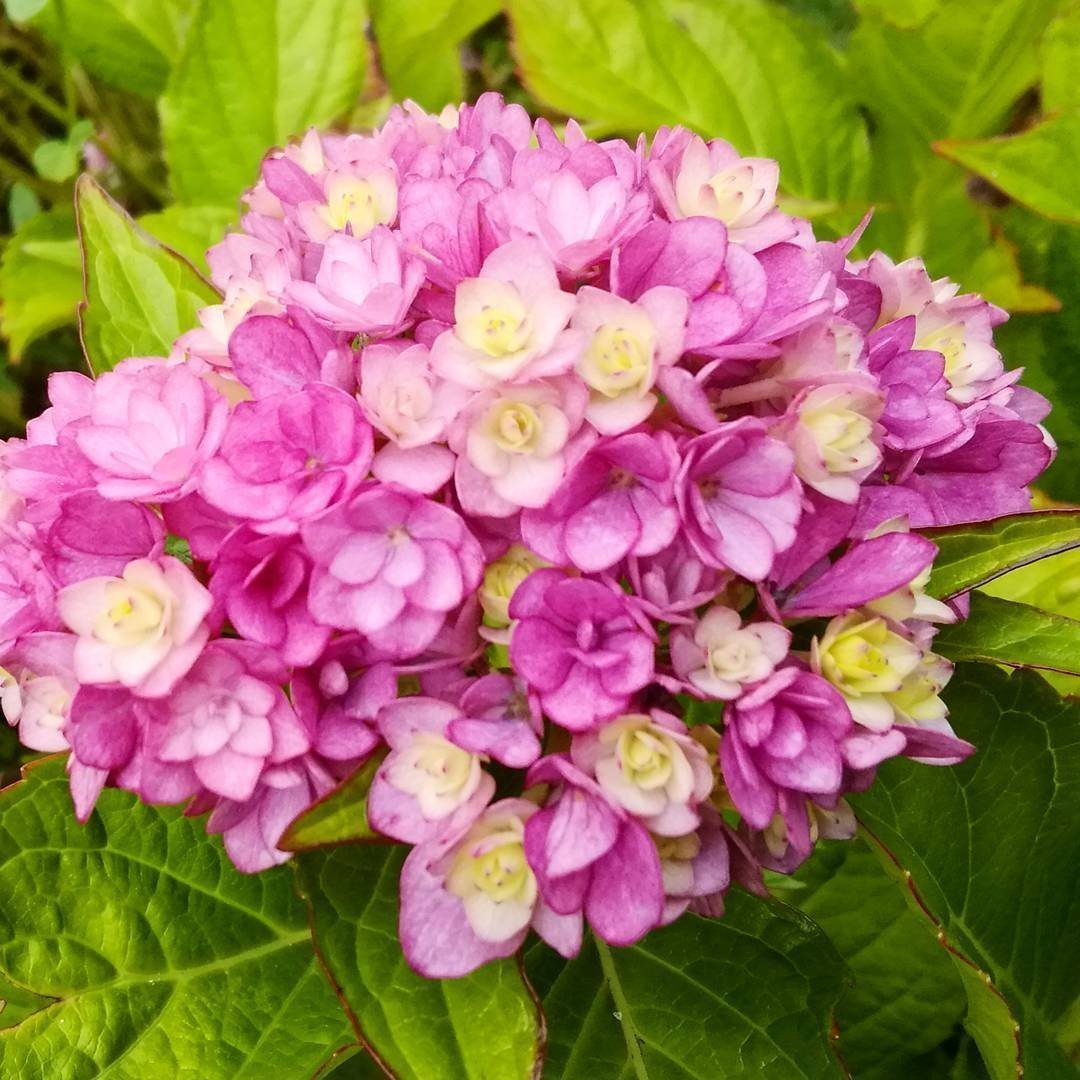
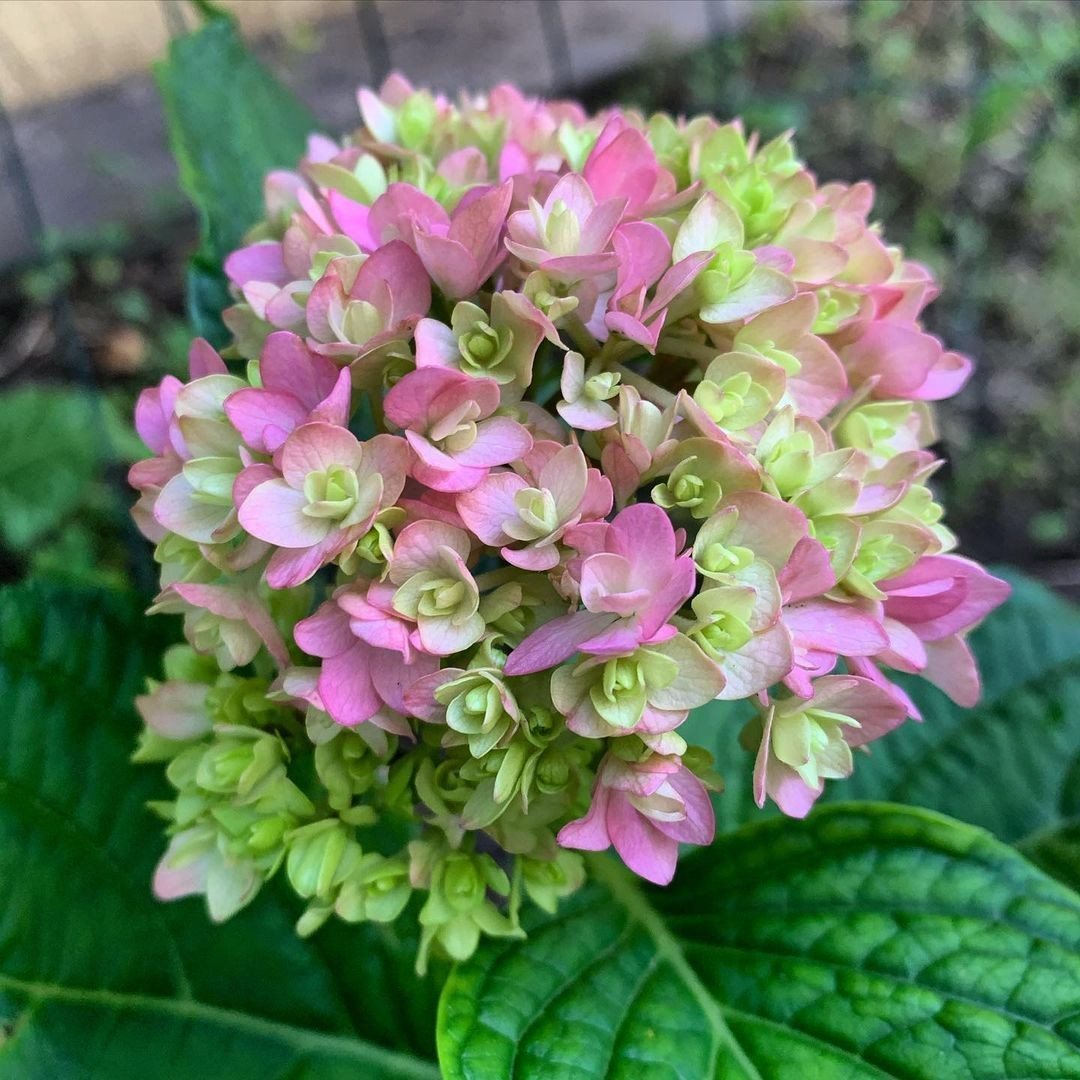
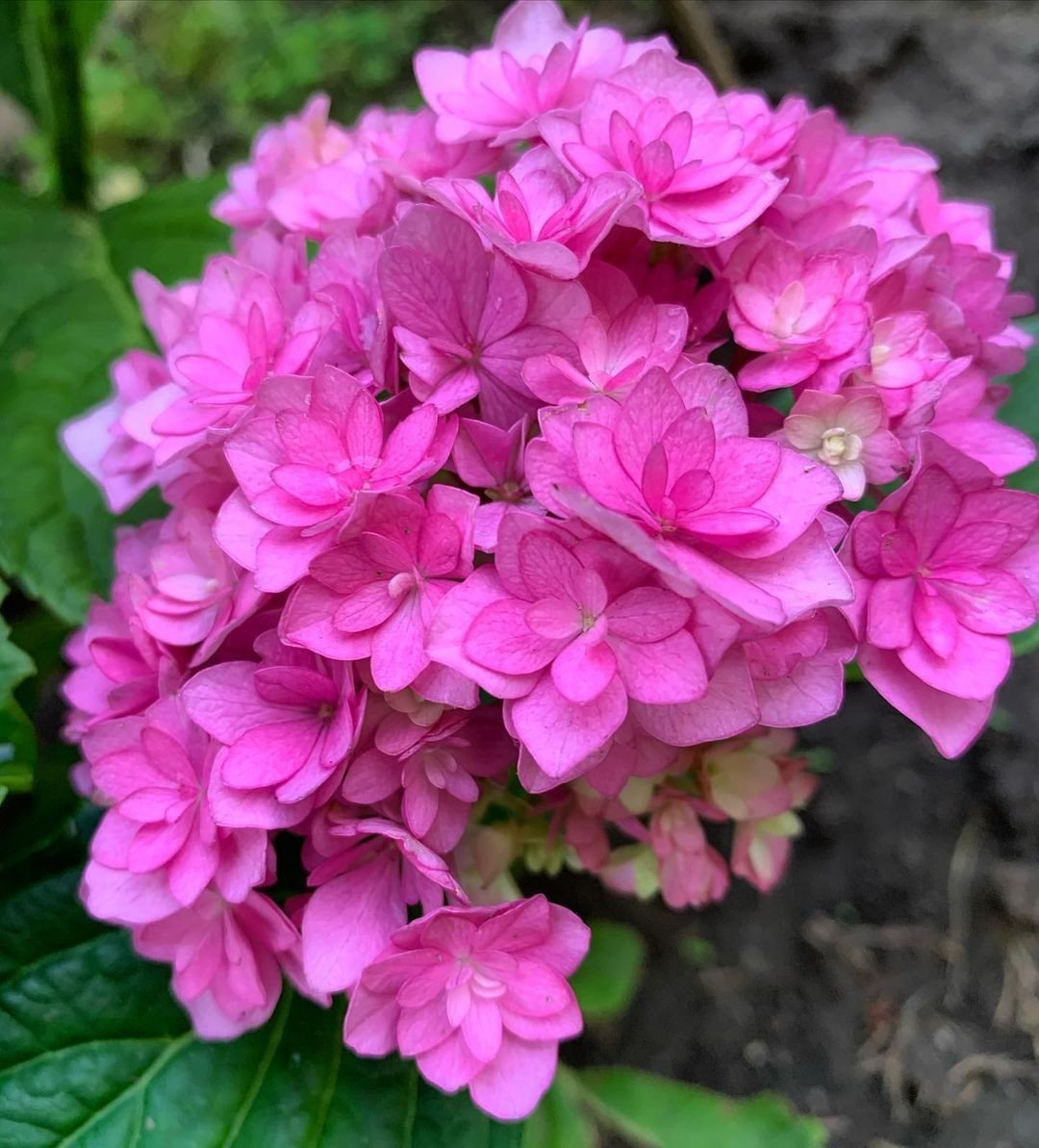
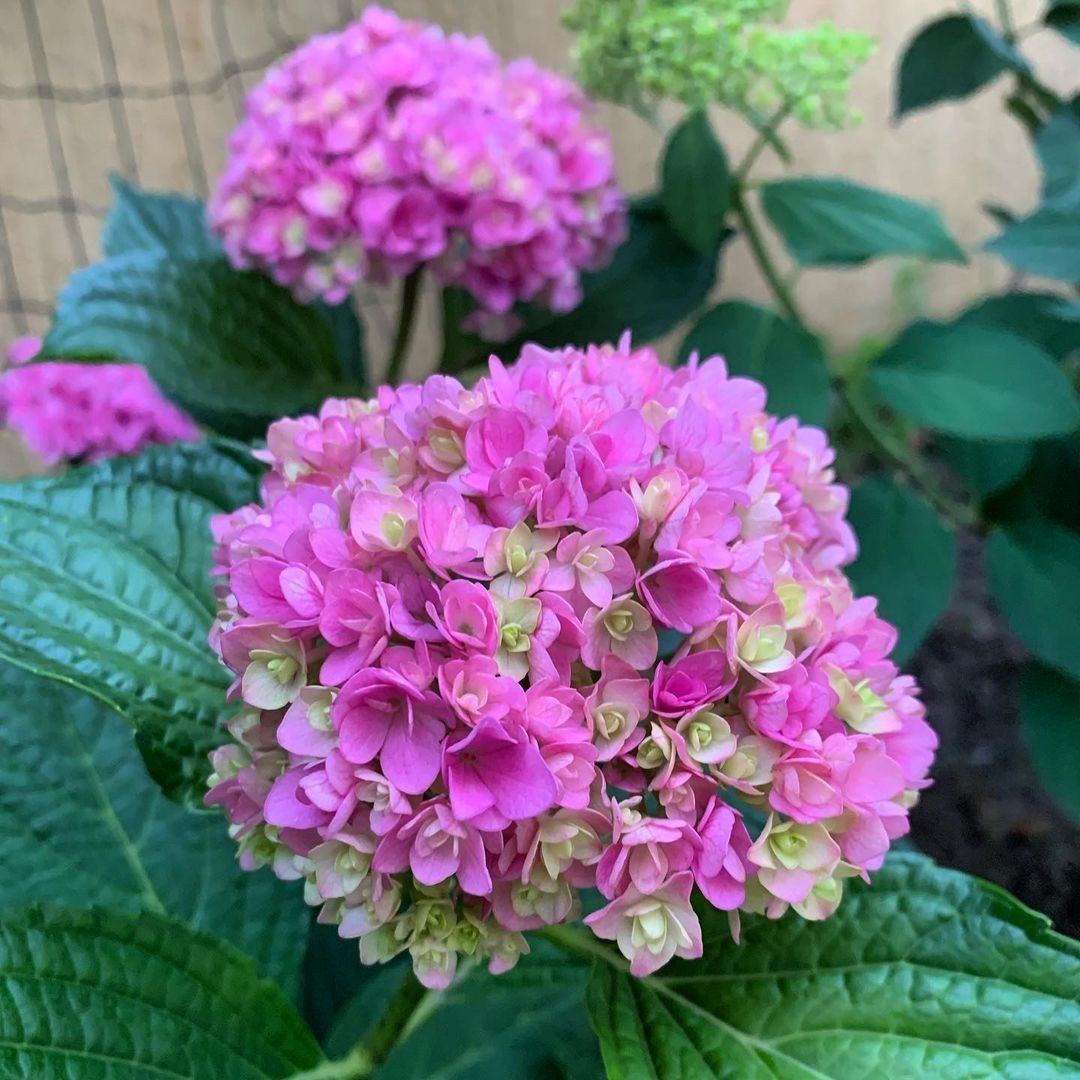





Large leaf hydrangea
The perennial plant is classified as a shrub type. Hydrangea grows up to two meters and also has erect shoots. This species does not bear fruit. Inflorescences can have different shades: white, blue, lilac or pink.
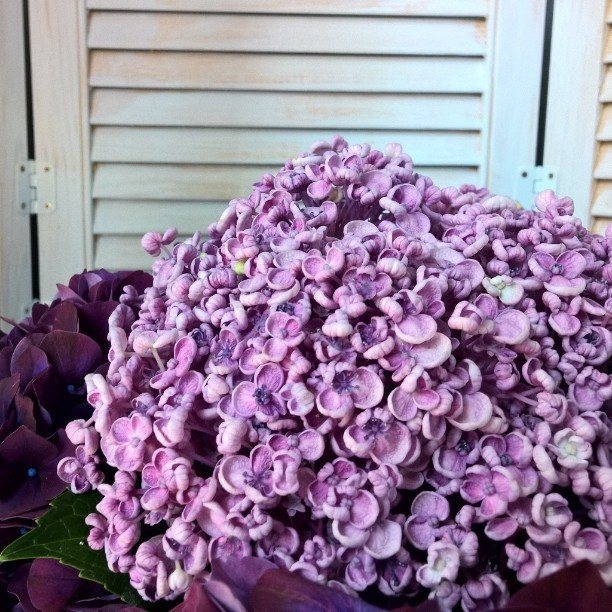
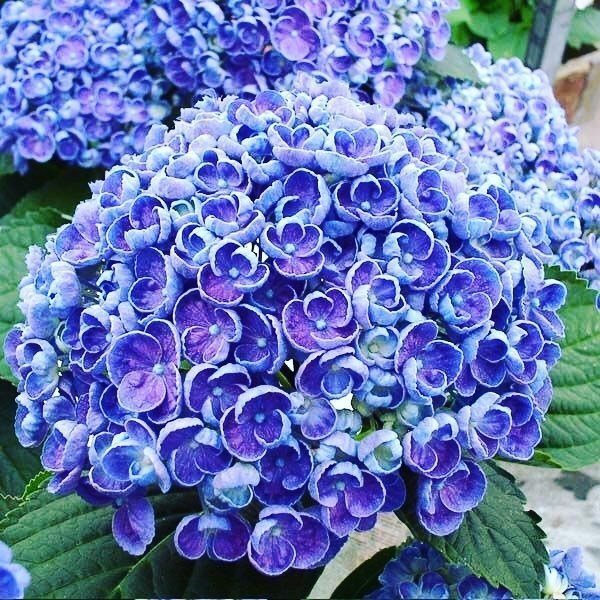
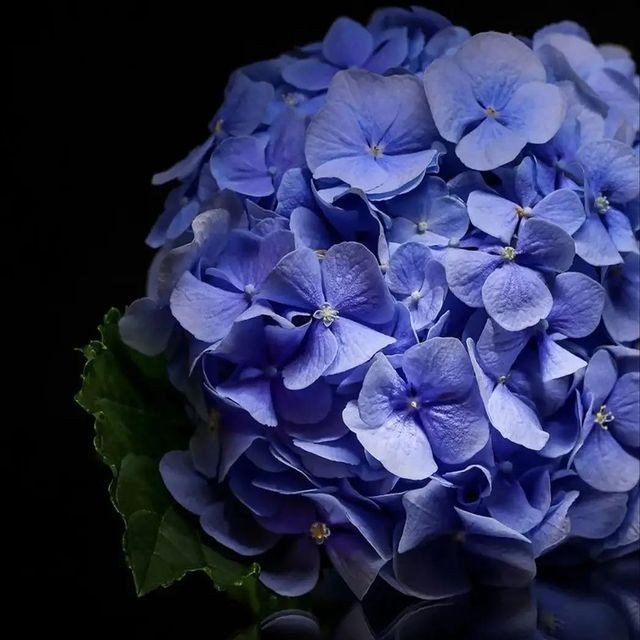
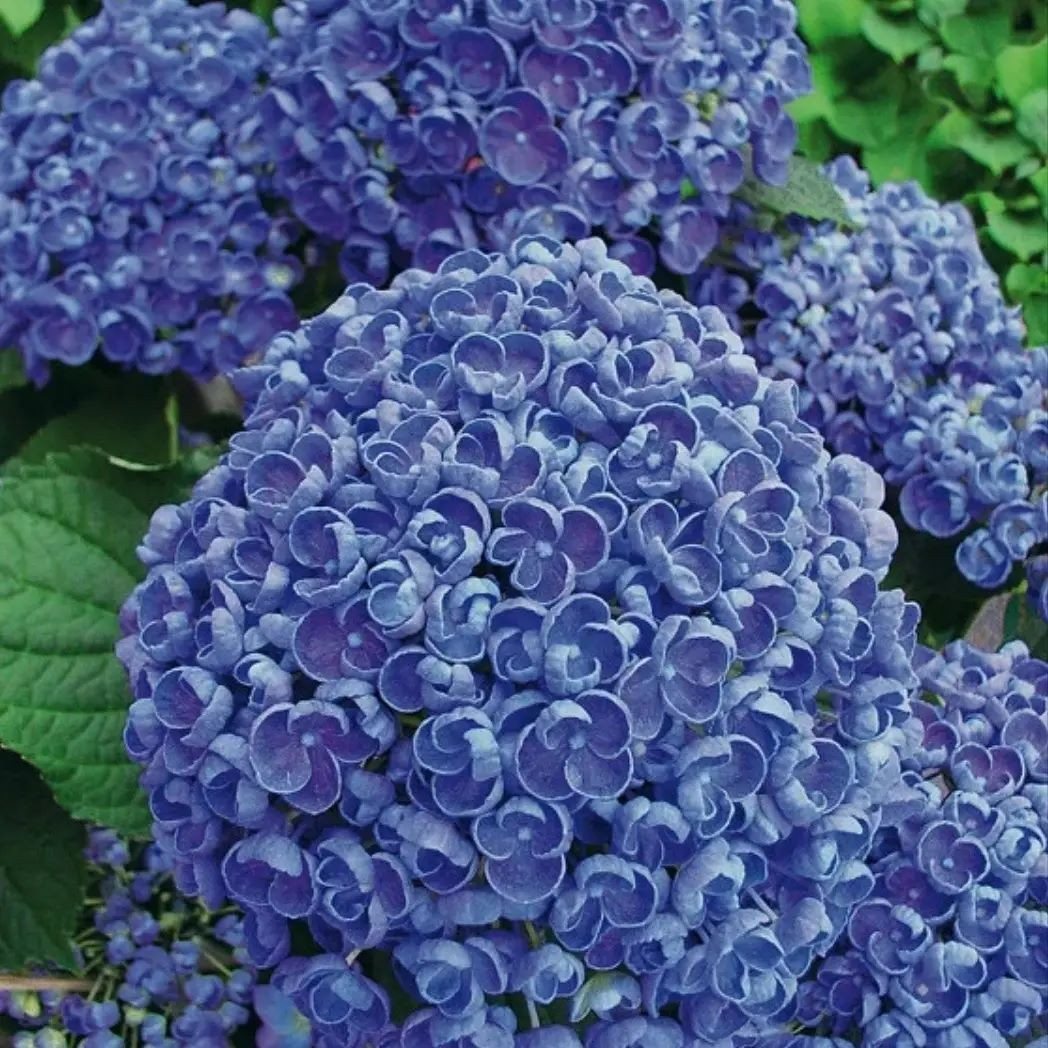
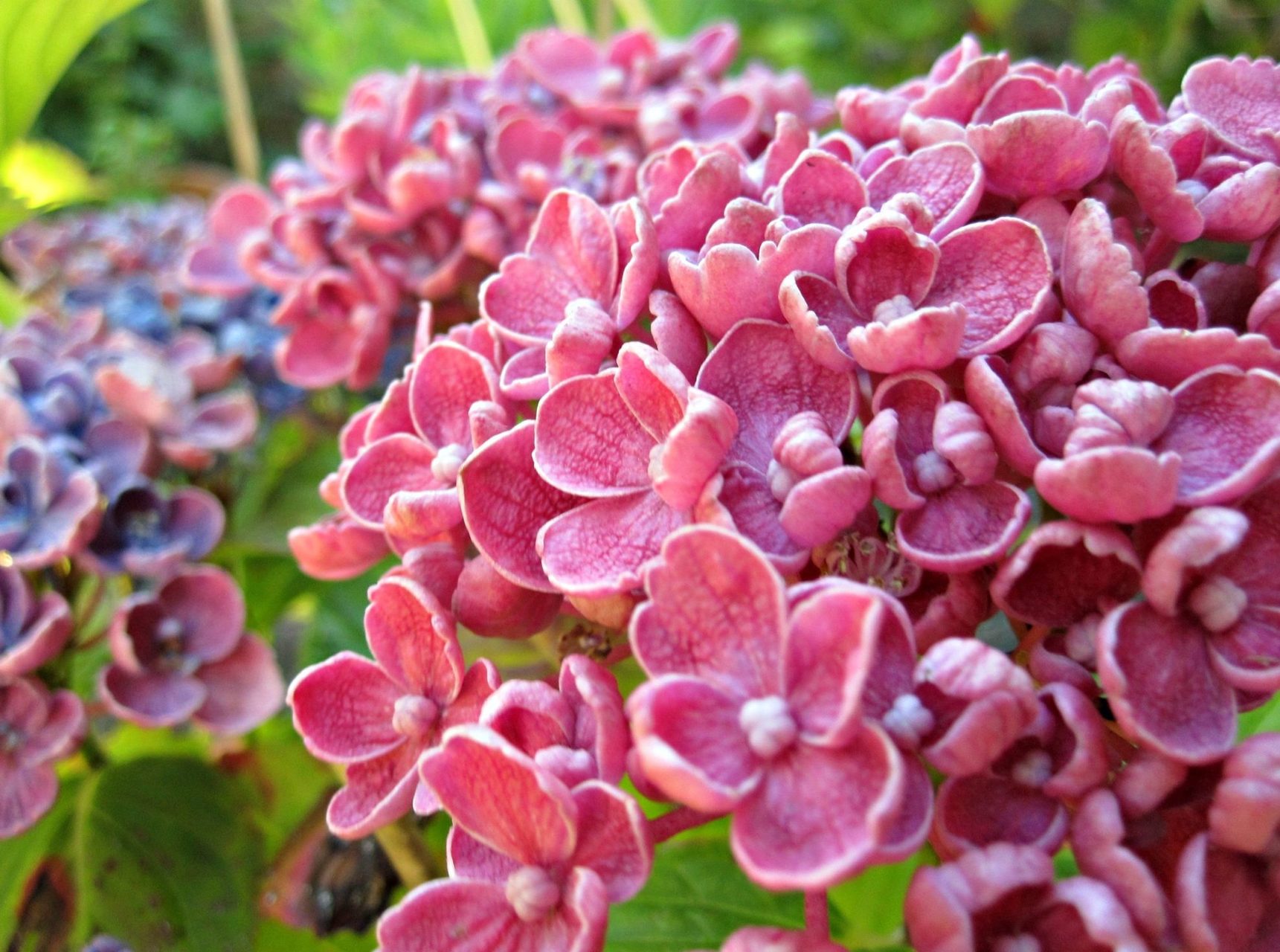





Tomato variety Mongolian dwarf: description and characteristics, reviews and photos
The peculiarities of the species include the late onset of flowering, so you can enjoy the magnificent view of the inflorescences from August to the end of November.
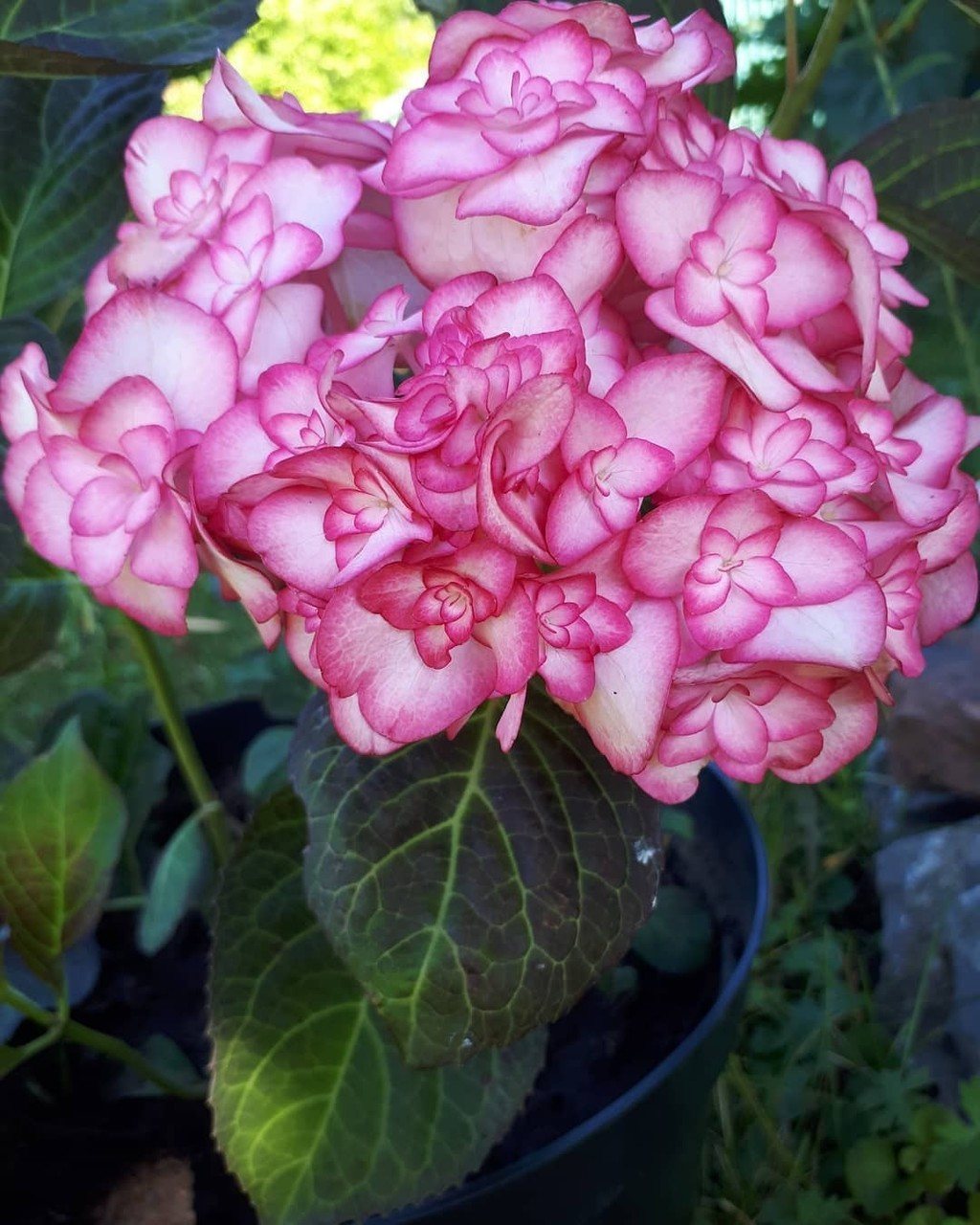
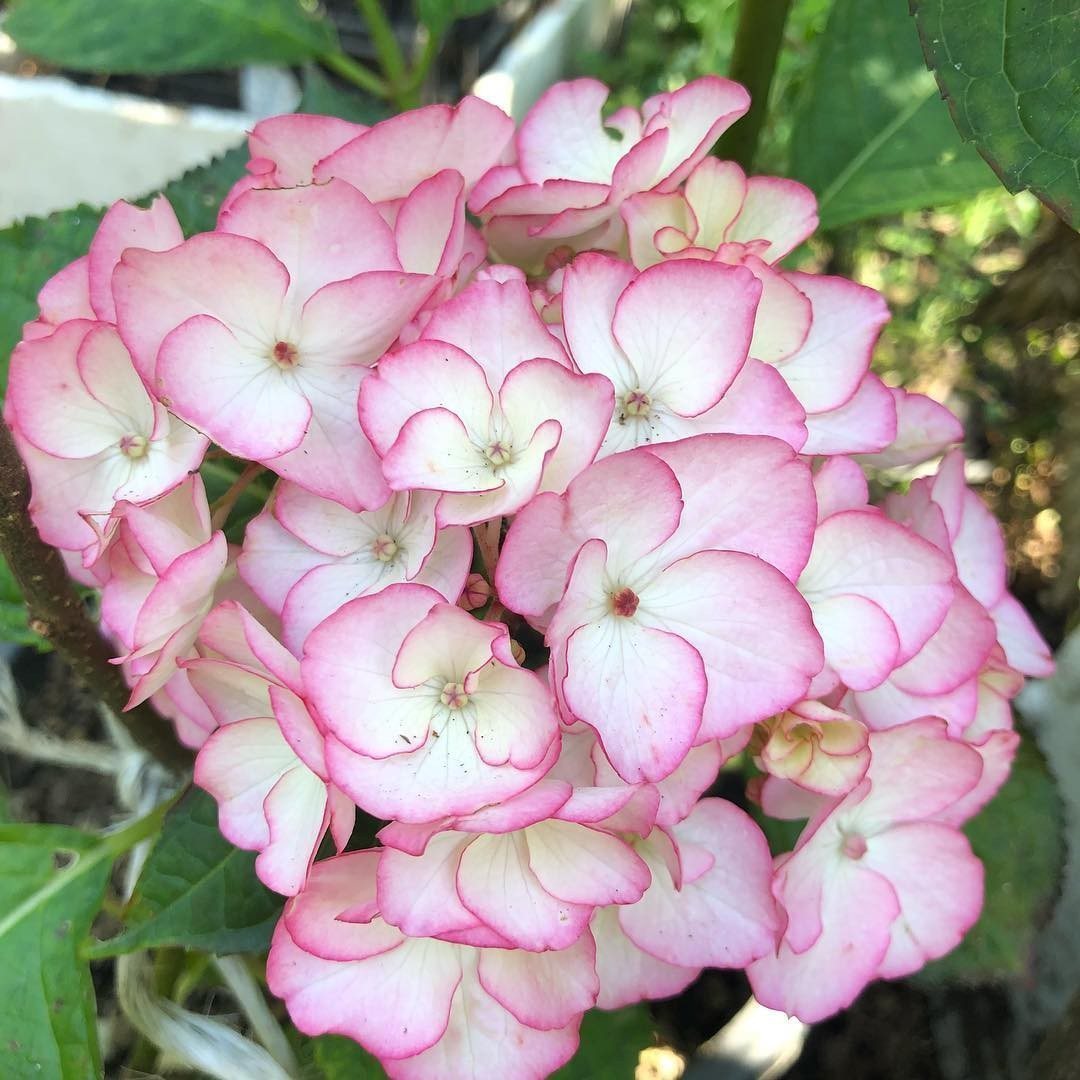
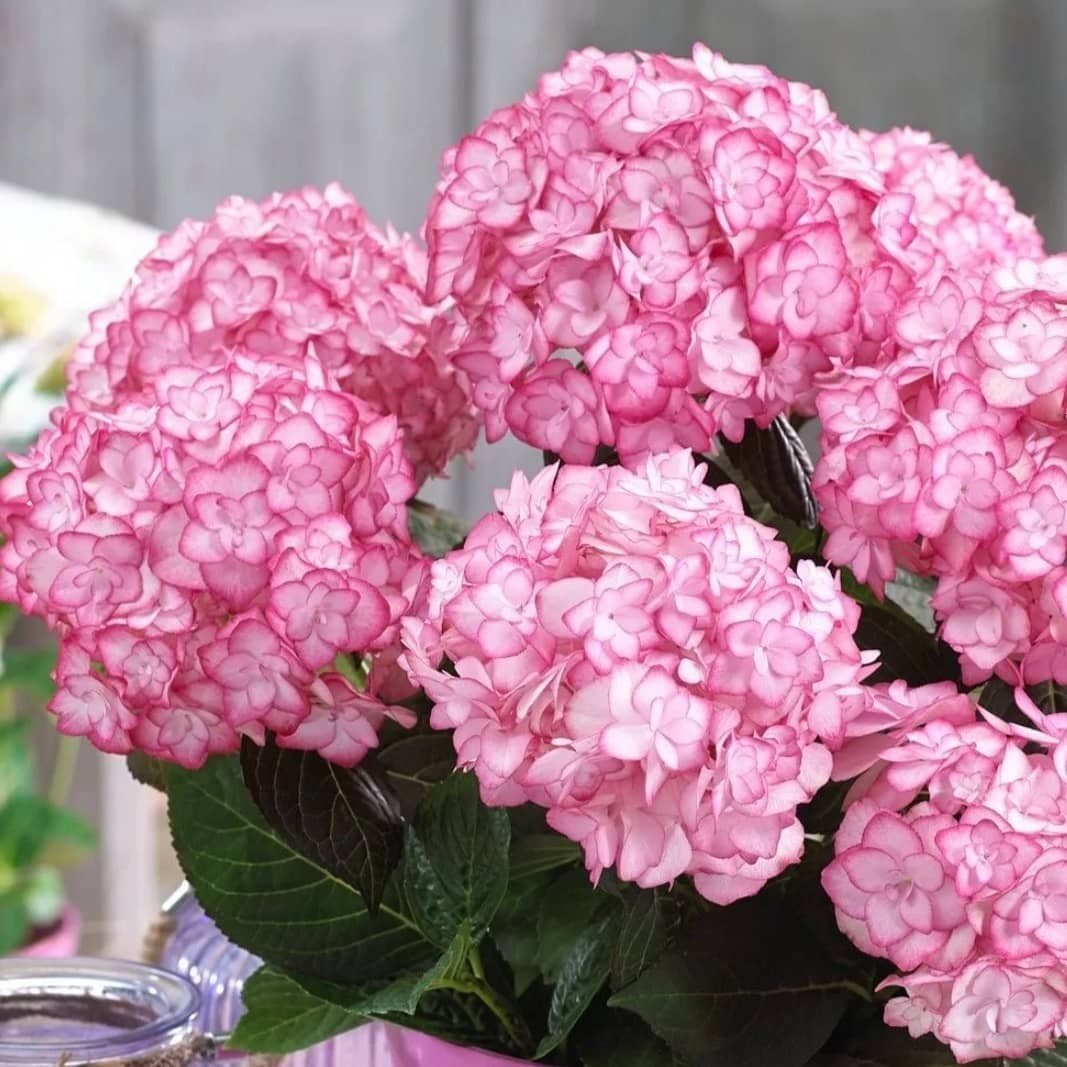
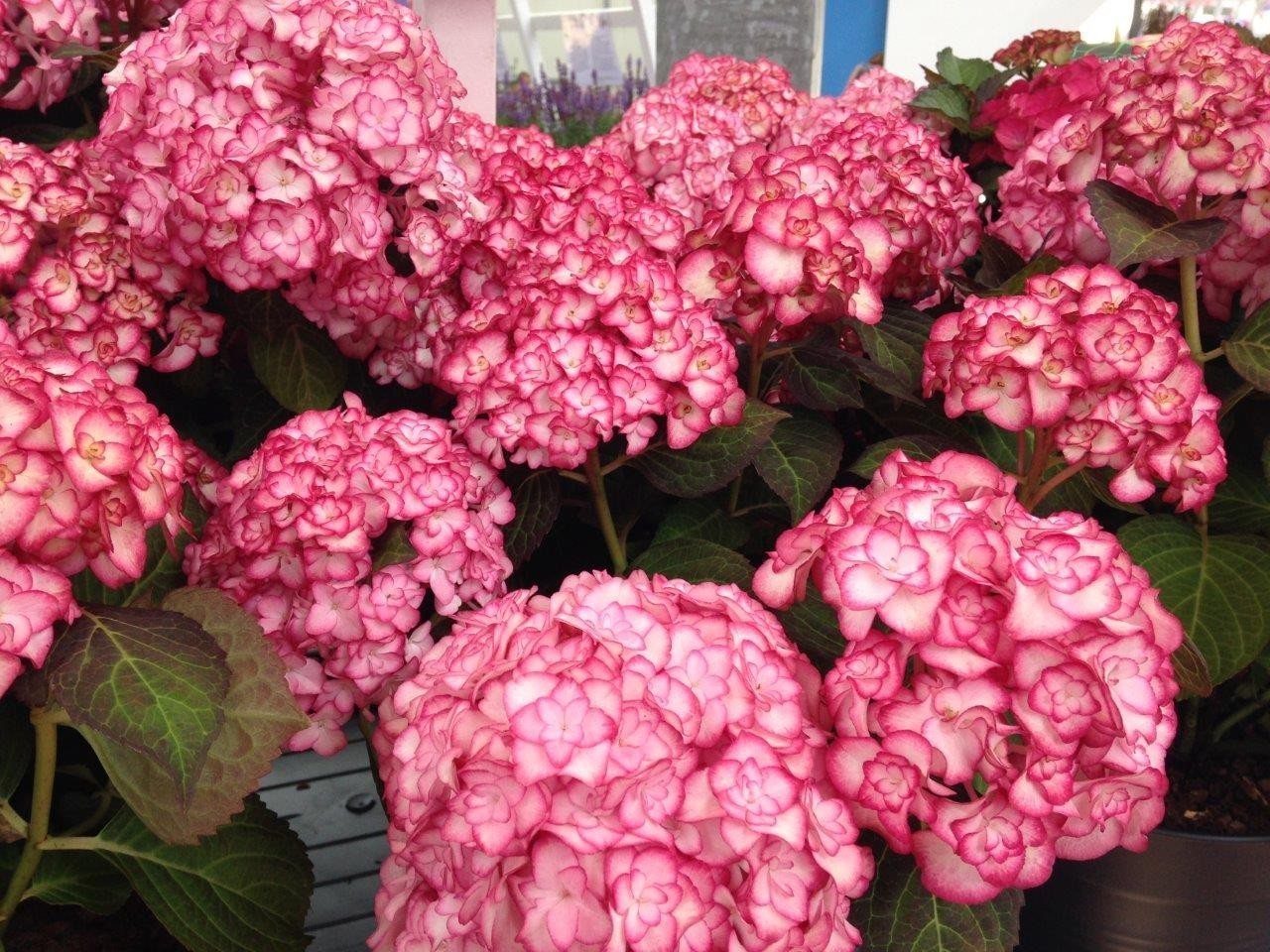




Endless summer
The variety appeared in the 80s of the 20th century in the USA. The main feature of hydrangea is its repeated flowering. Therefore, the plant twice pleases gardeners with bright and beautiful flowers. The color of the petals depends on the composition of the soil.
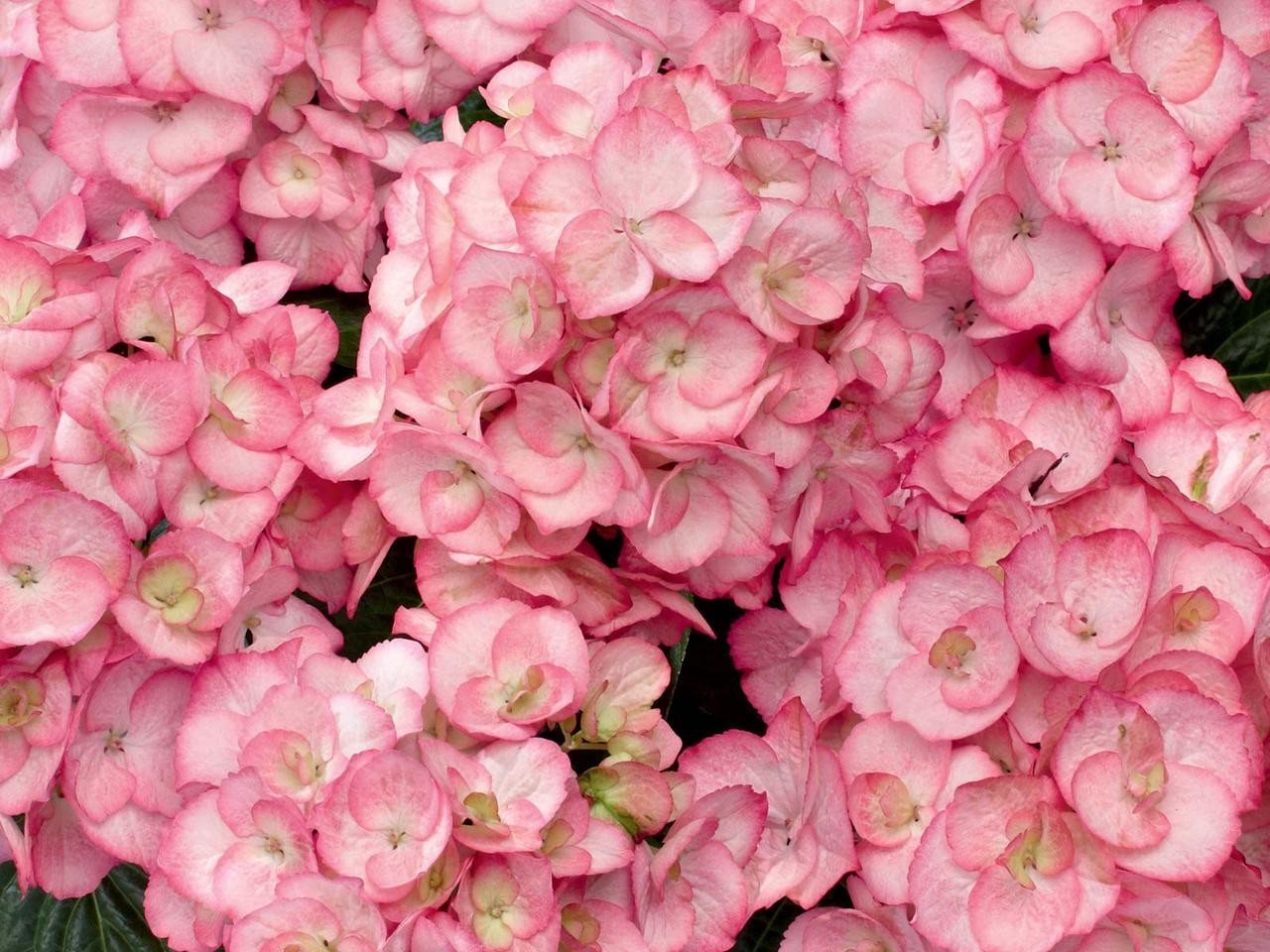
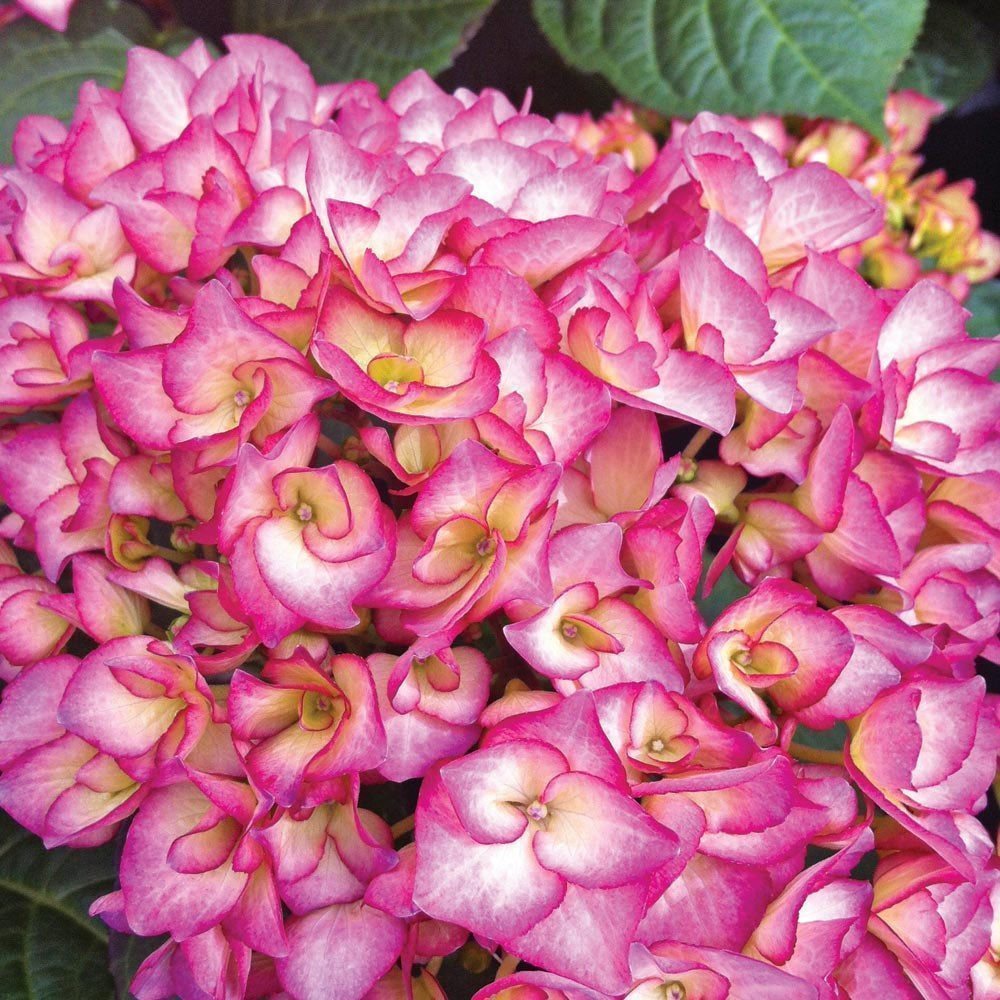
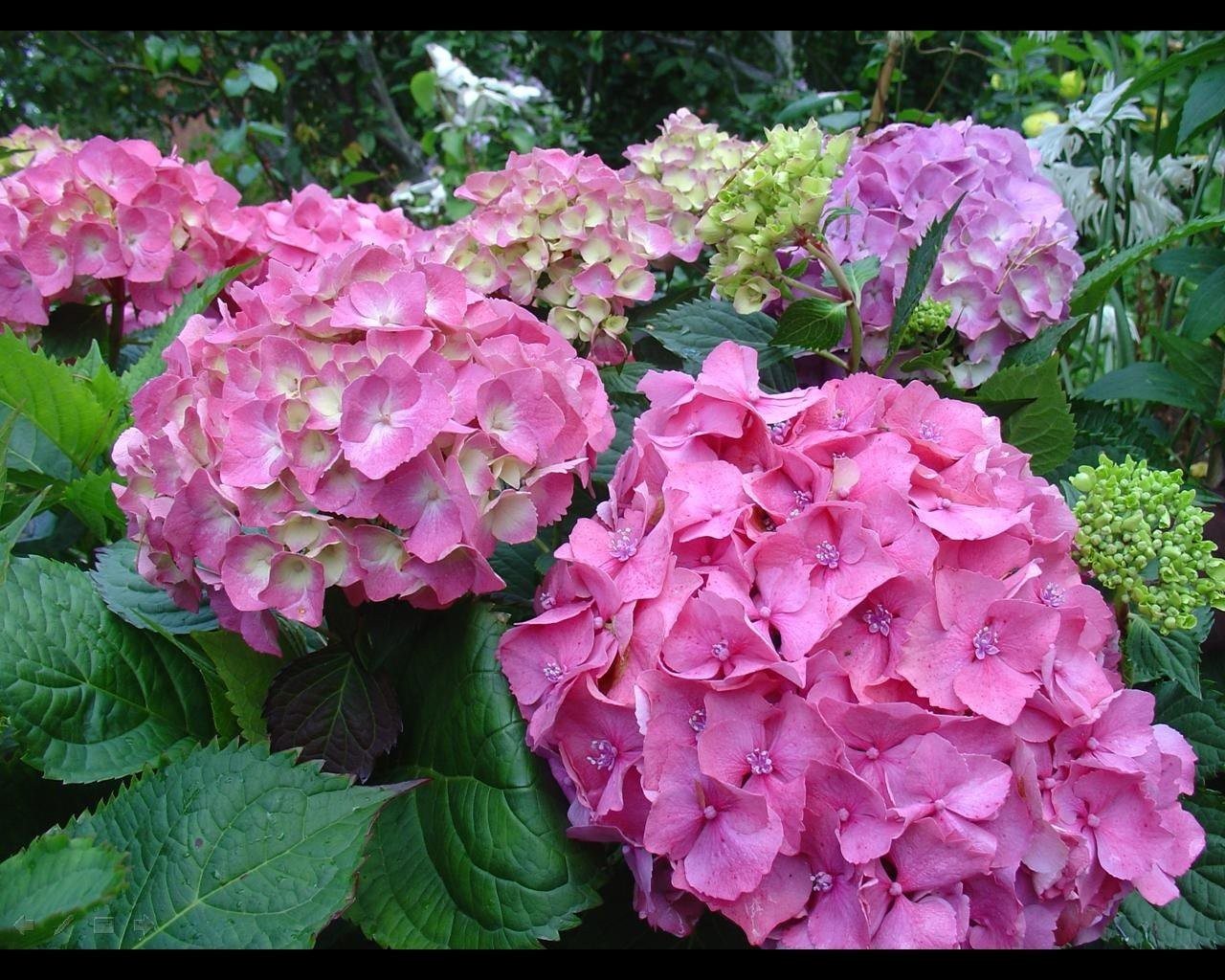
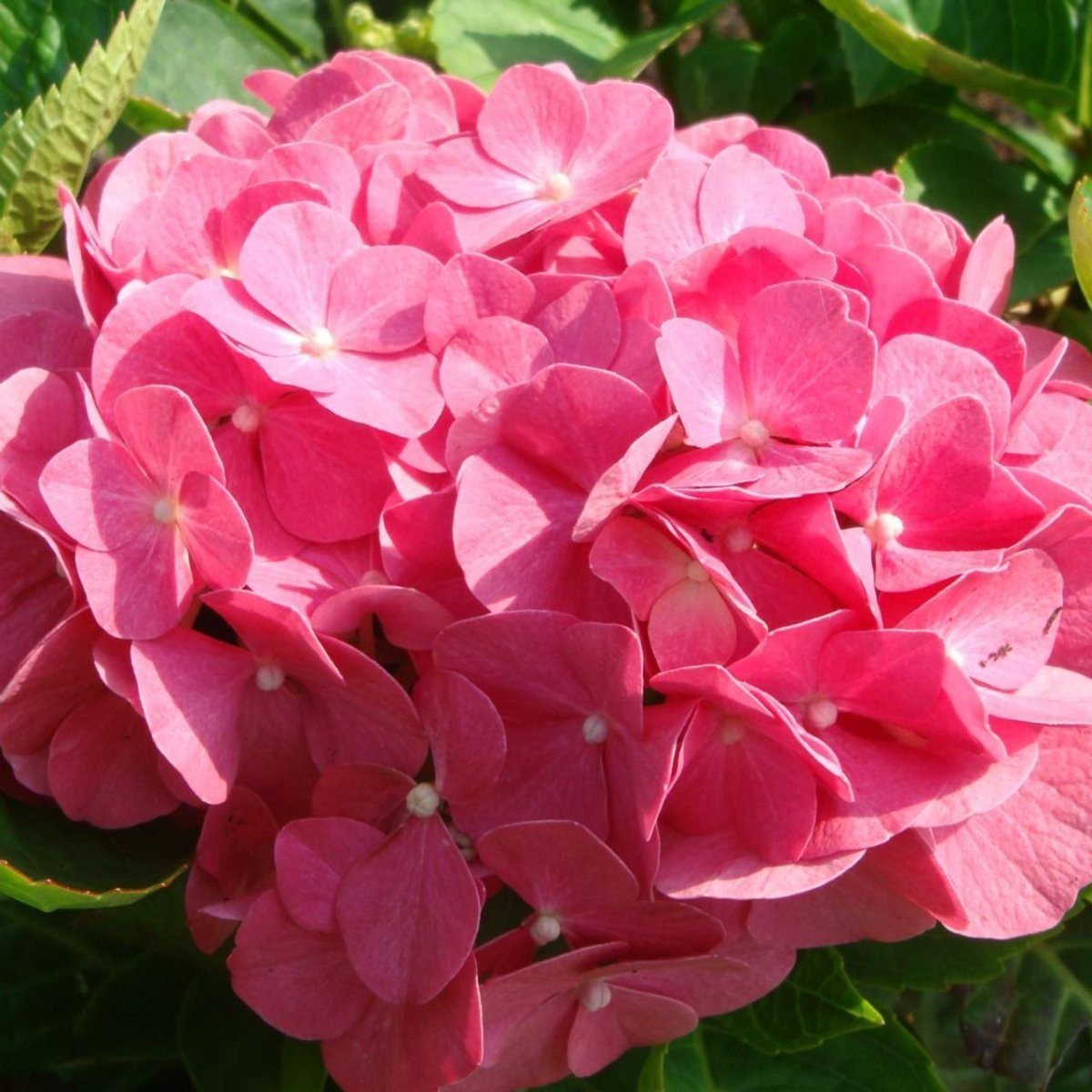
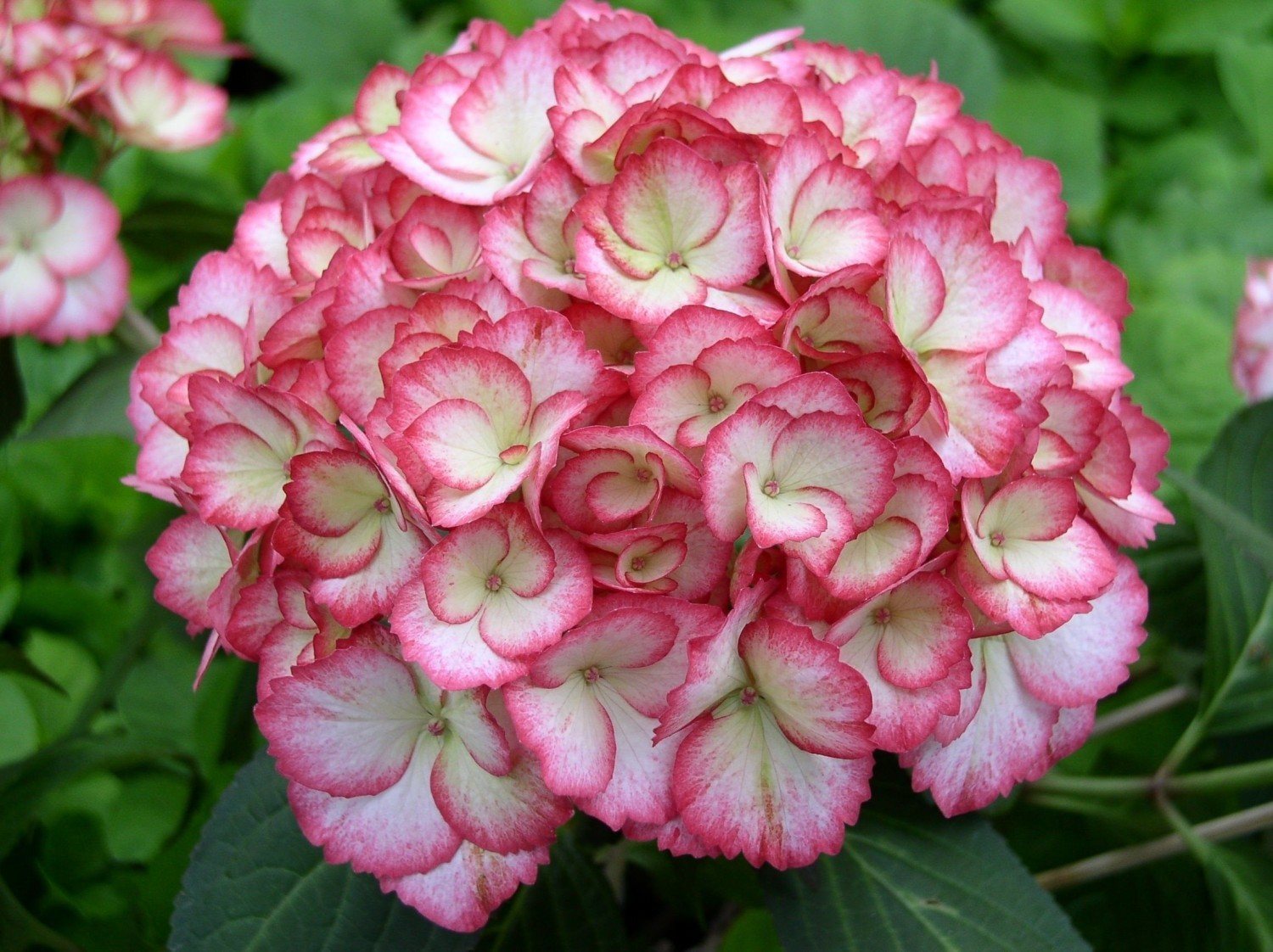





Bloom Star
The peculiarities of the variety include the ability to bloom on old and new shoots, so gardeners admire the beautiful flowers from mid-spring to late autumn. The bush has spherical and large caps, the diameter of which is 18 cm. The color is affected by the acidity of the soil.
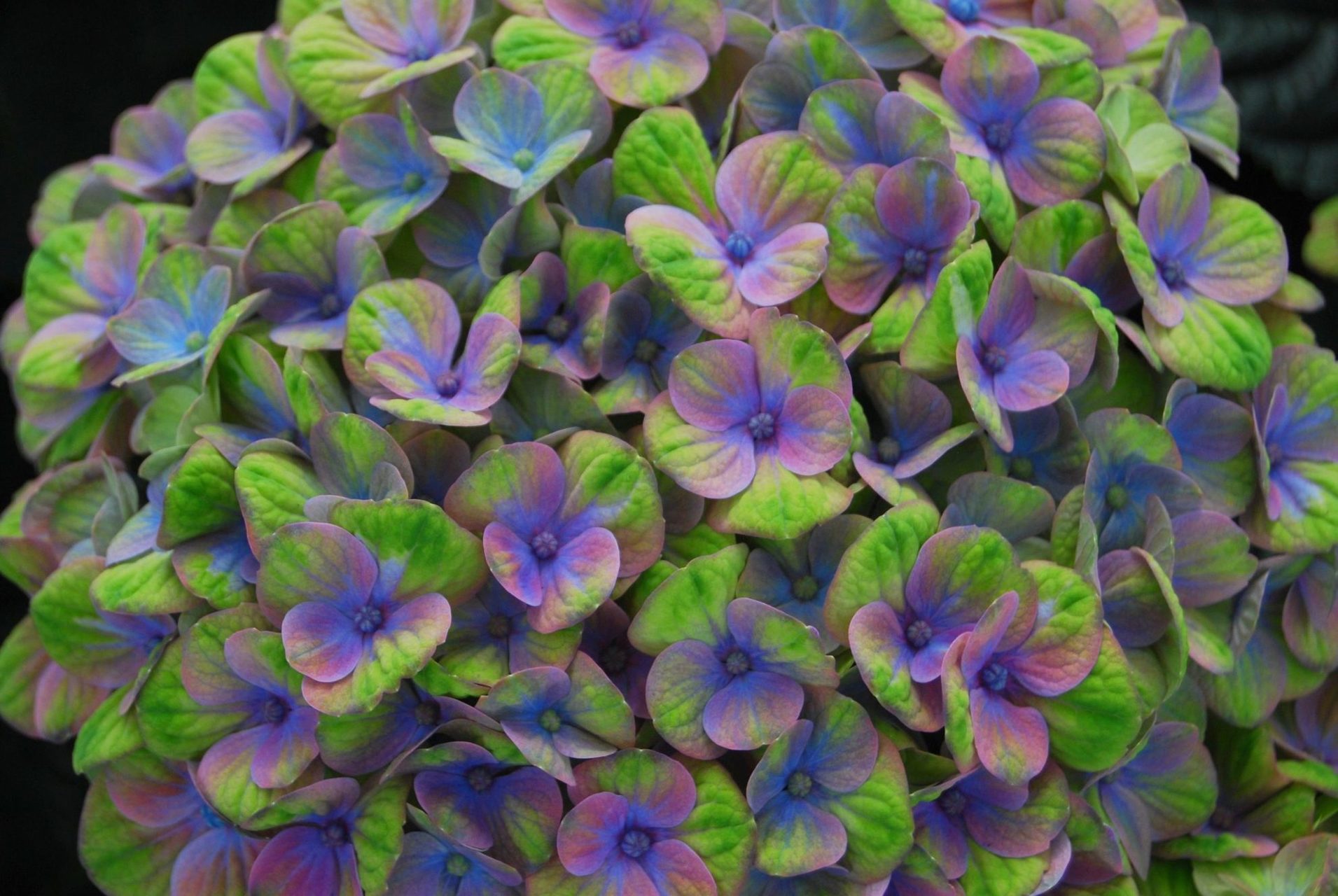
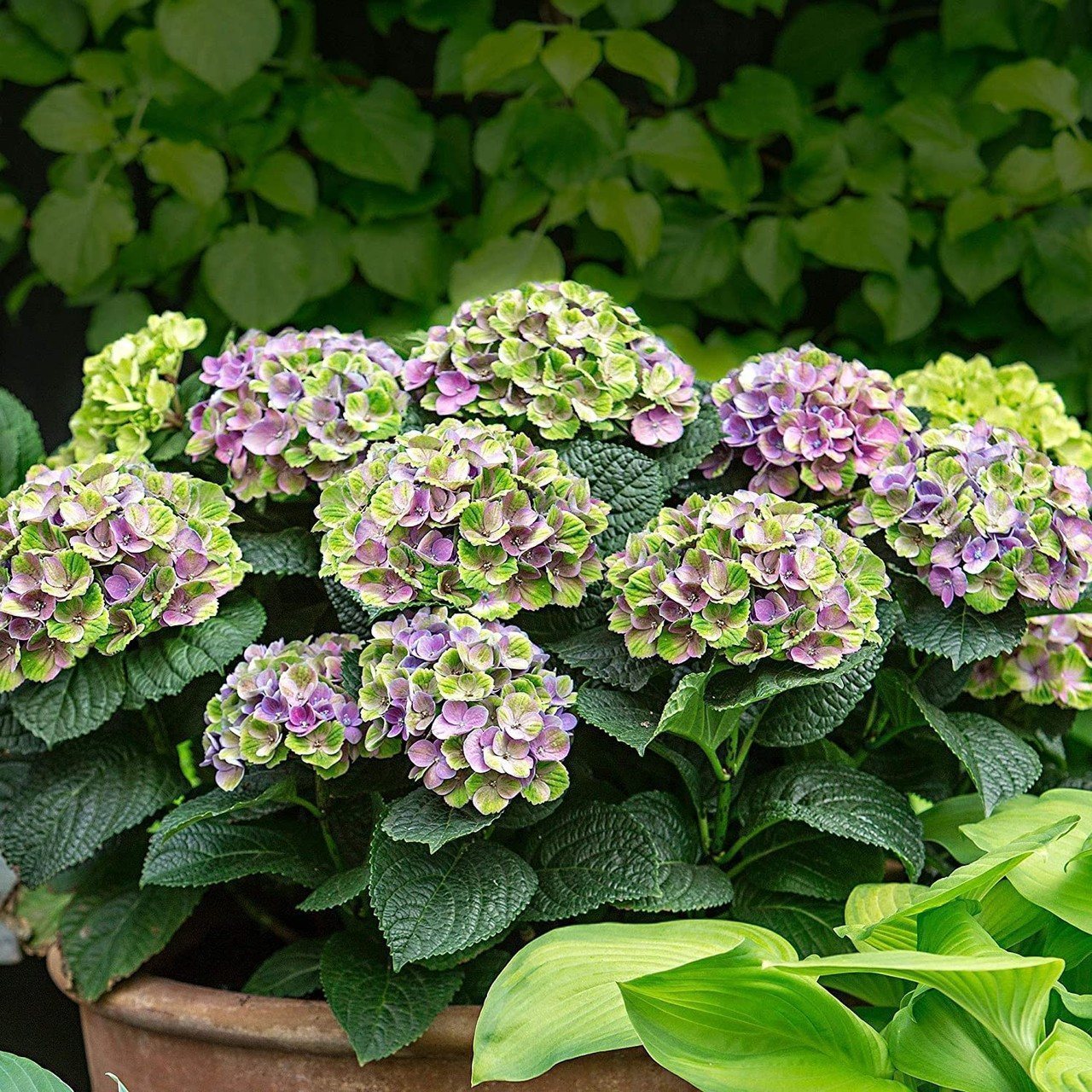
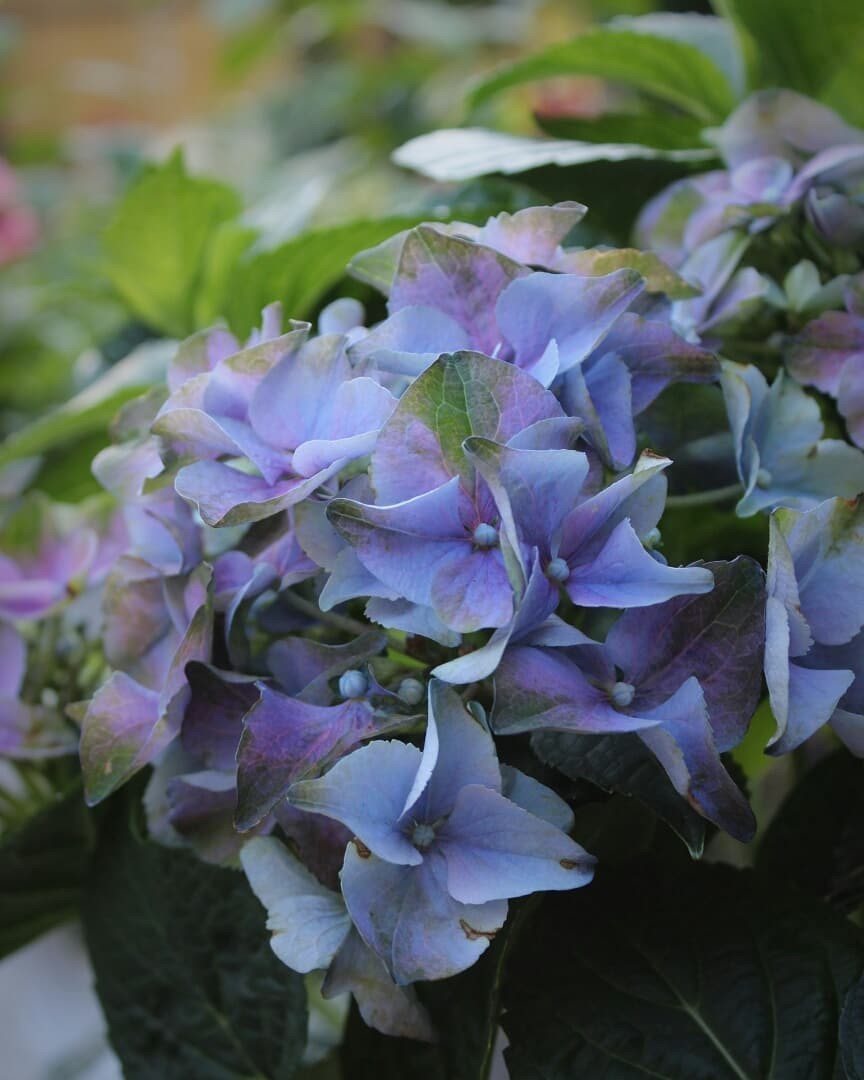
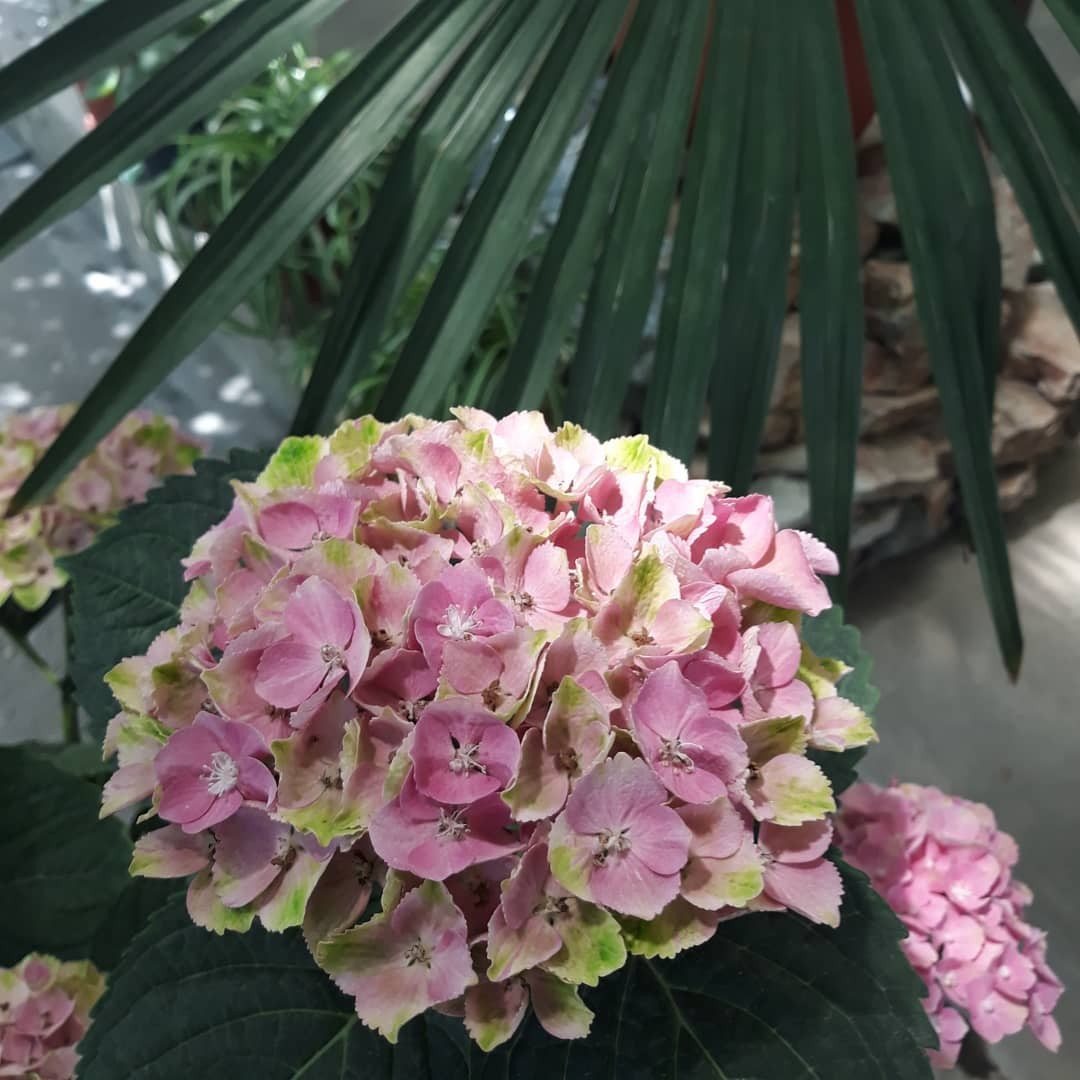
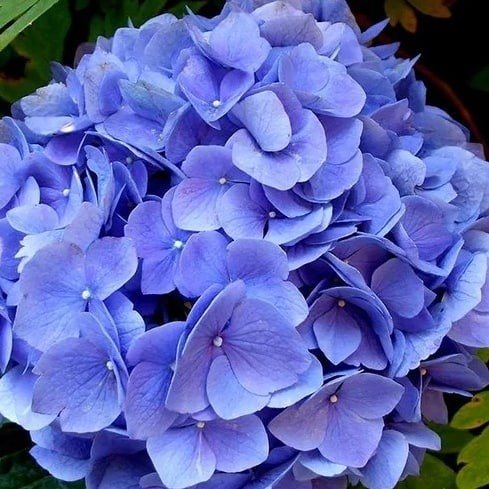





Blaumaise
The variety was discovered by the famous French breeder Mile Dirr. The plant is represented by a large-leaved ornamental flowering shrub, the height of which does not exceed 1.2 meters. The culture is powerful and spreading, and also combines well with other perennials. The bush is equipped with erect and strong shoots that require pruning. The color of the flowers depends on the composition and quality of the soil.

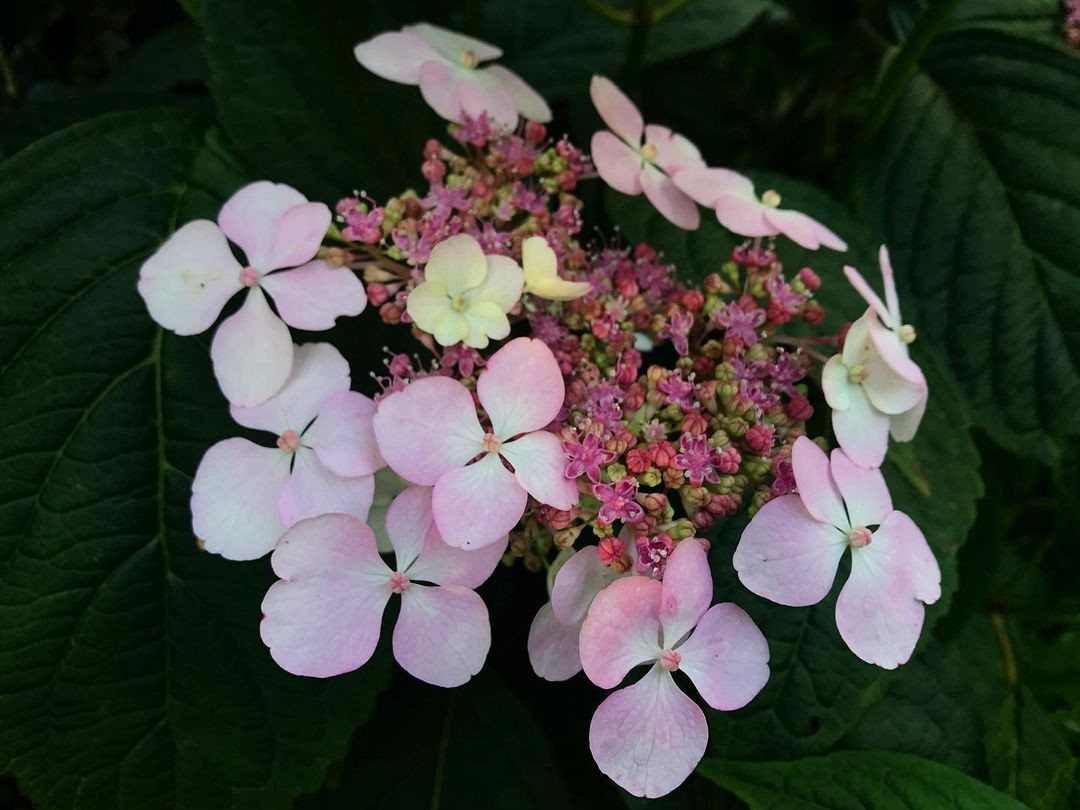
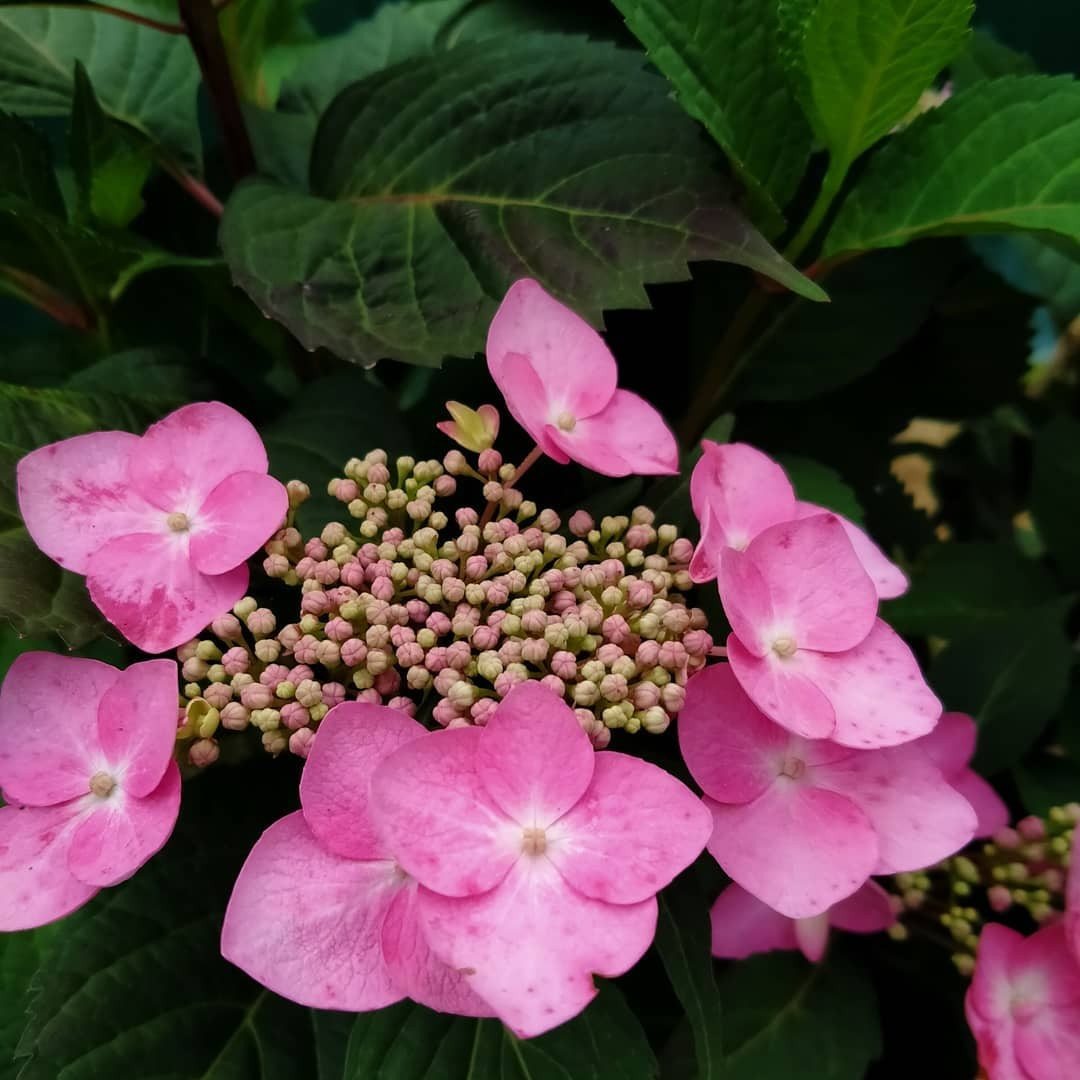
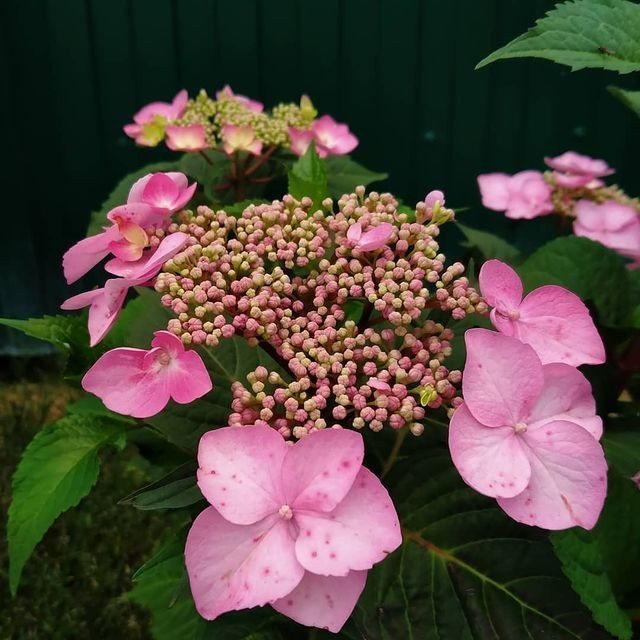
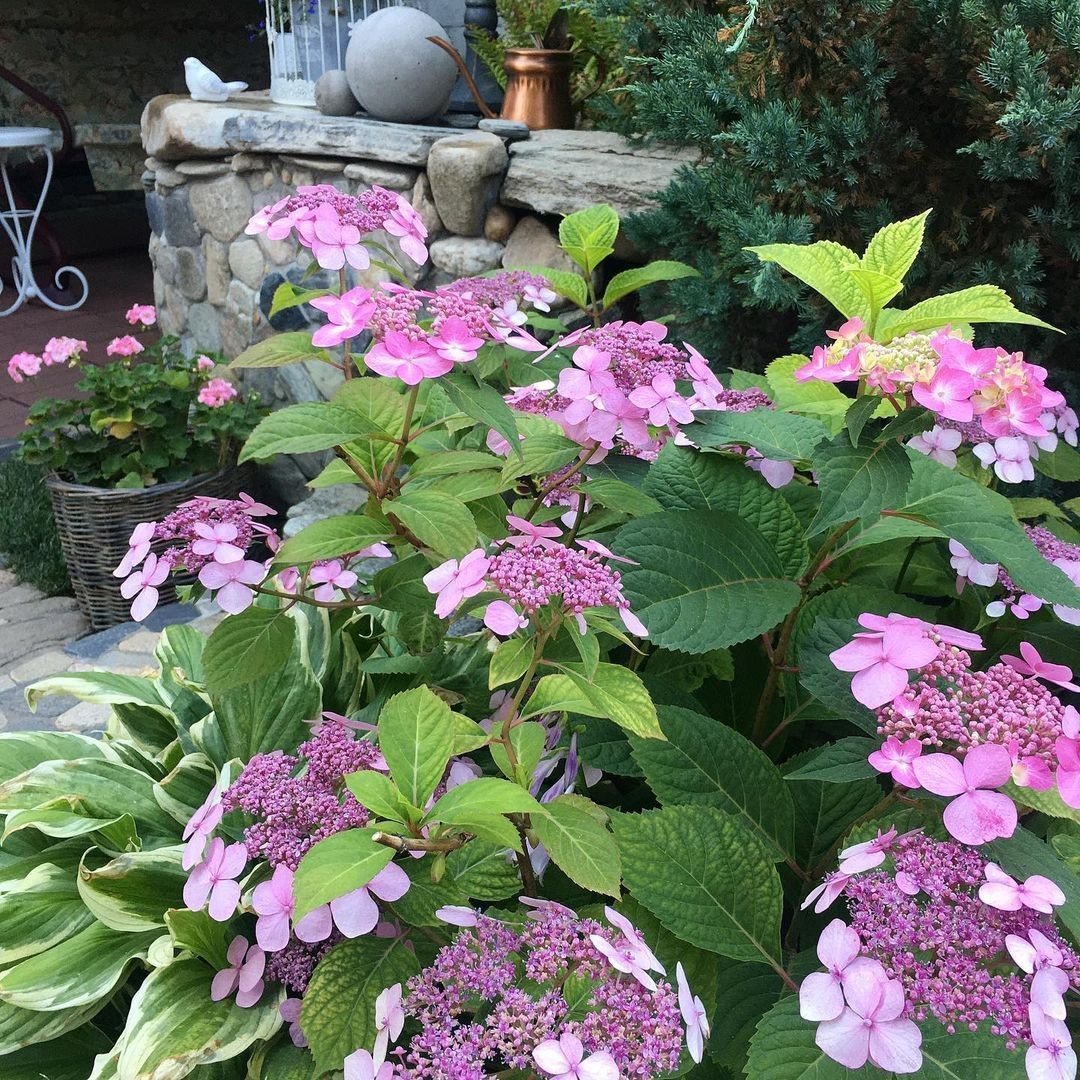





Sybil
This perennial flowering shrub grows up to 1 meter and is also considered an unpretentious ornamental plant.It forms many large inflorescences that change color from pink to purple.
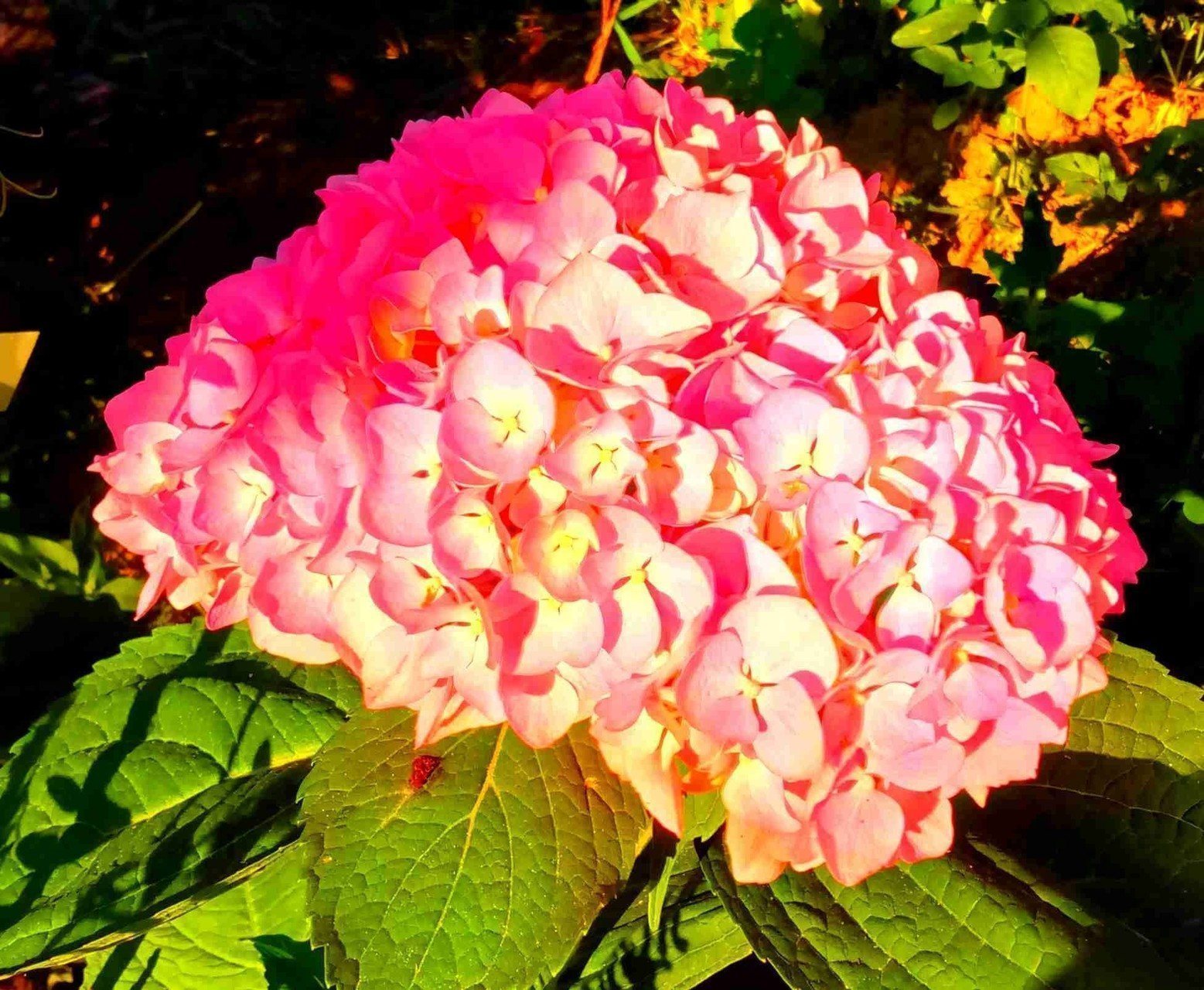
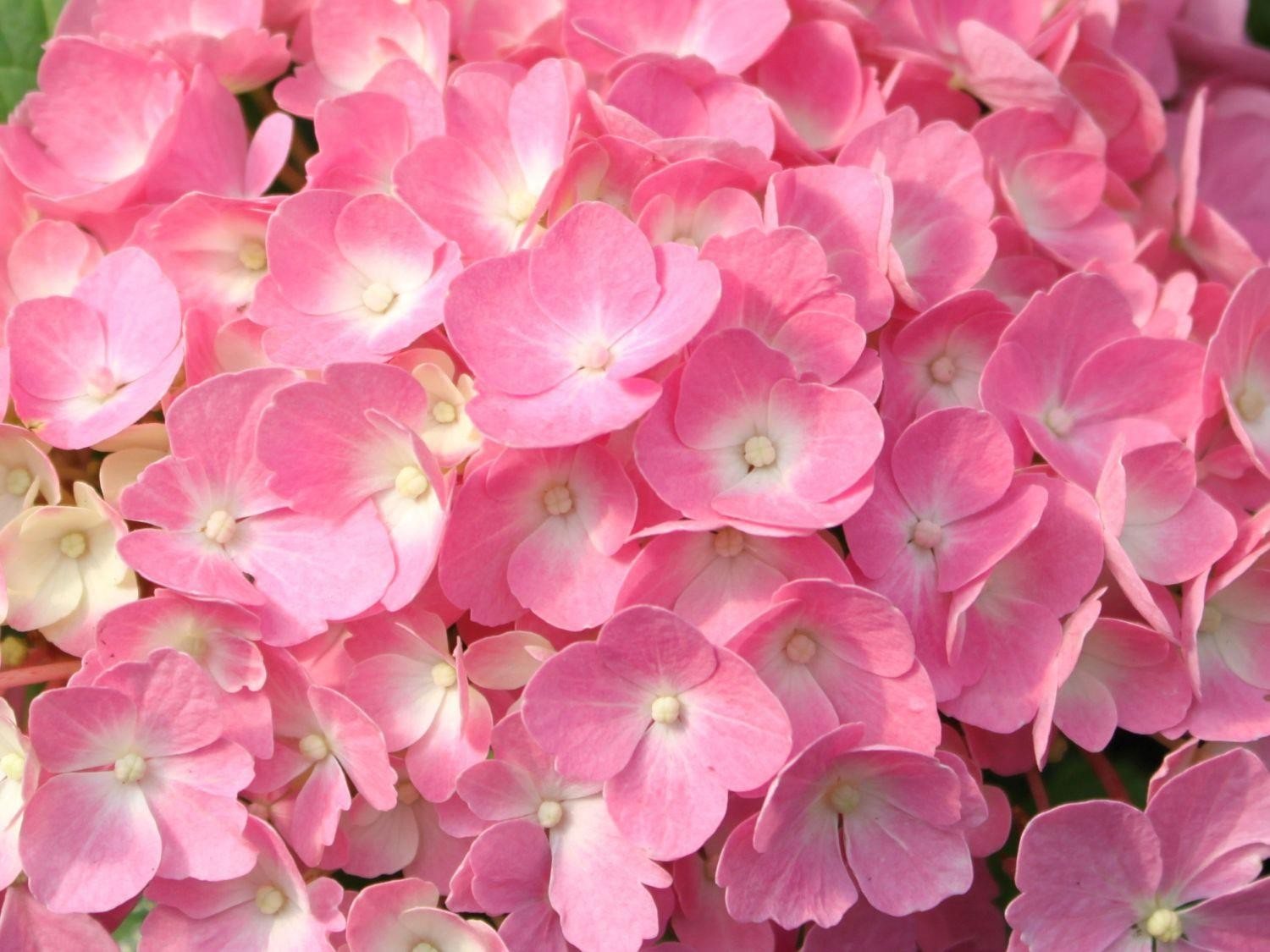
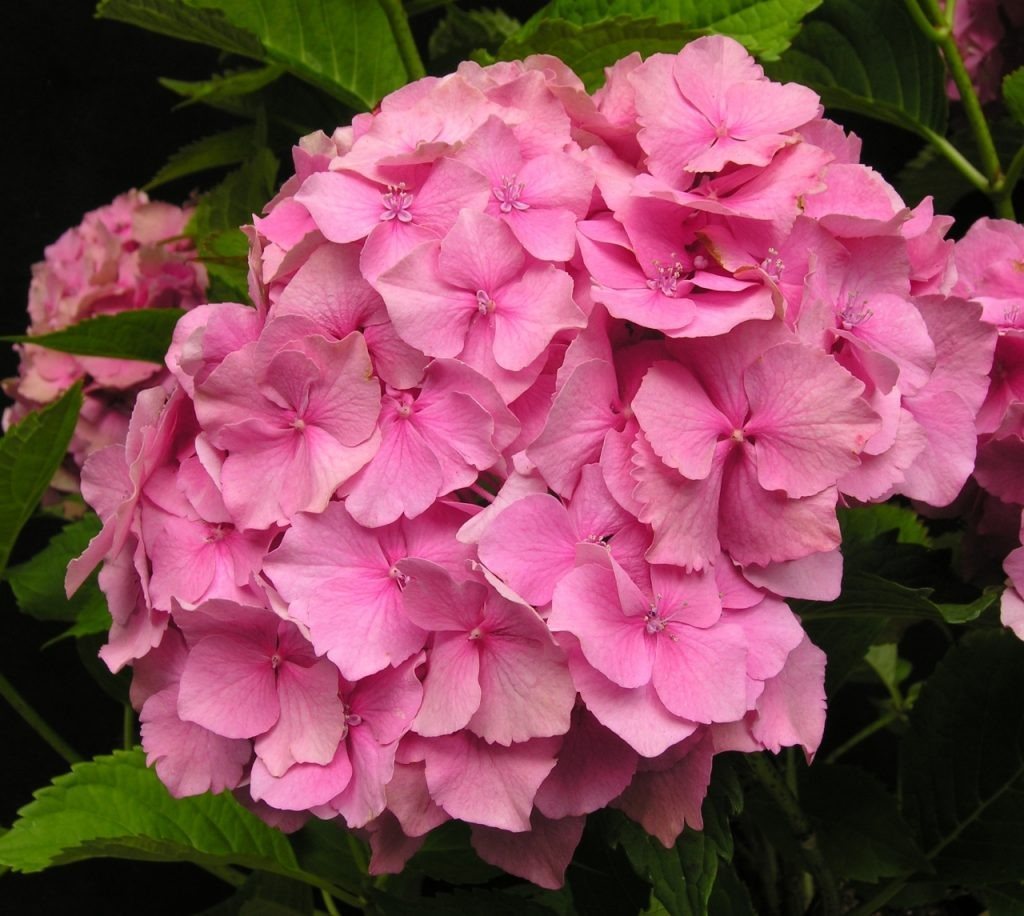
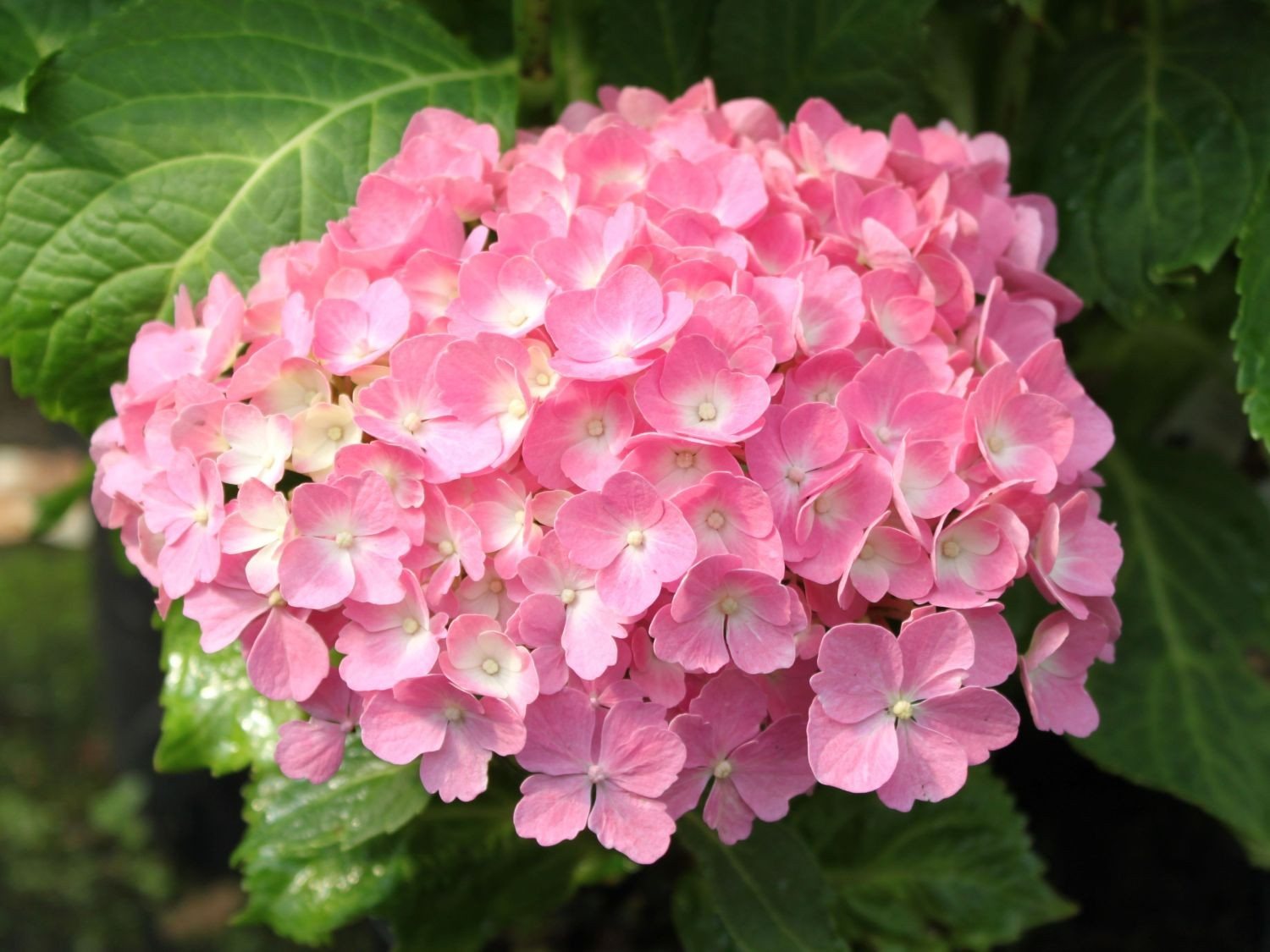




Tuges
The variety was bred by French breeders. The deciduous shrub has a spherical shape, vertically growing shoots and curved lateral stems. The crown looks very dense, since it consists of a large number of oppositely located fleshy leaves, the length of which reaches 14 cm. Lush spherical inflorescences have a diameter of 20 cm and consist of large flowers, the color of which changes from green to pink, blue or lilac.
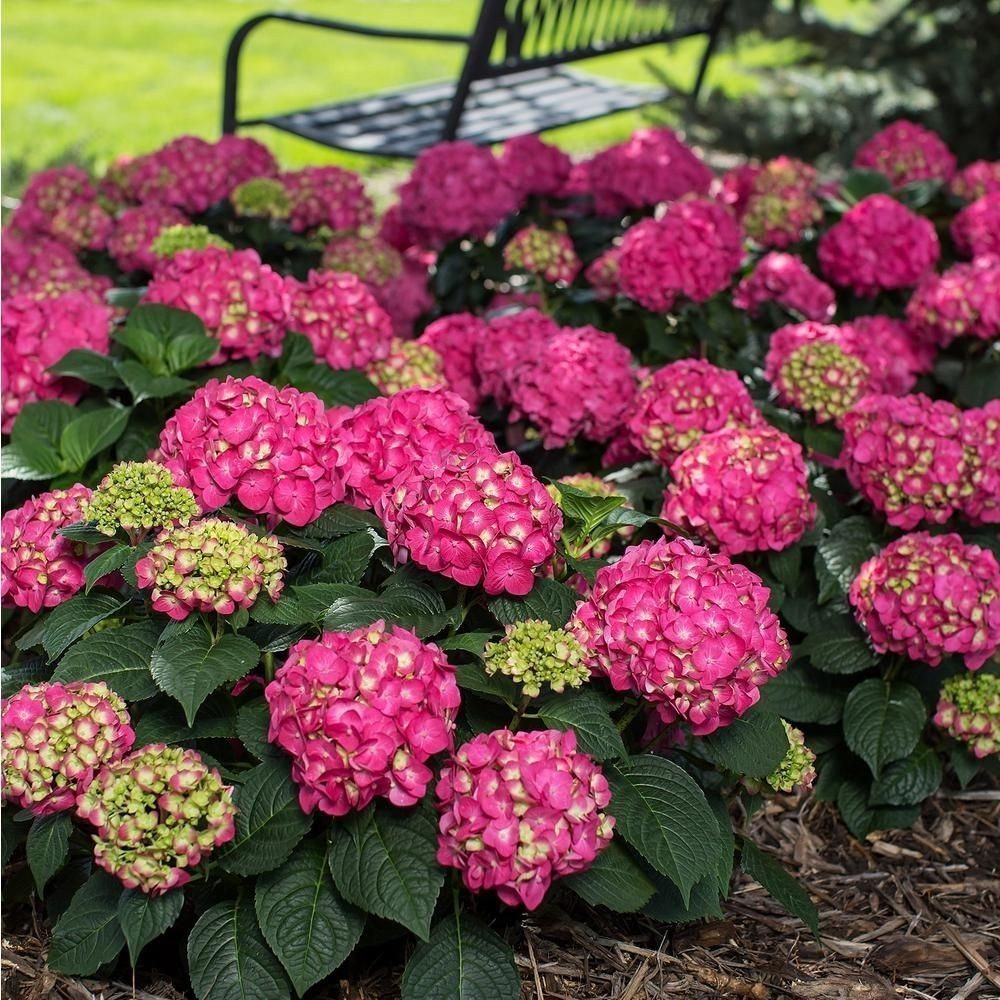
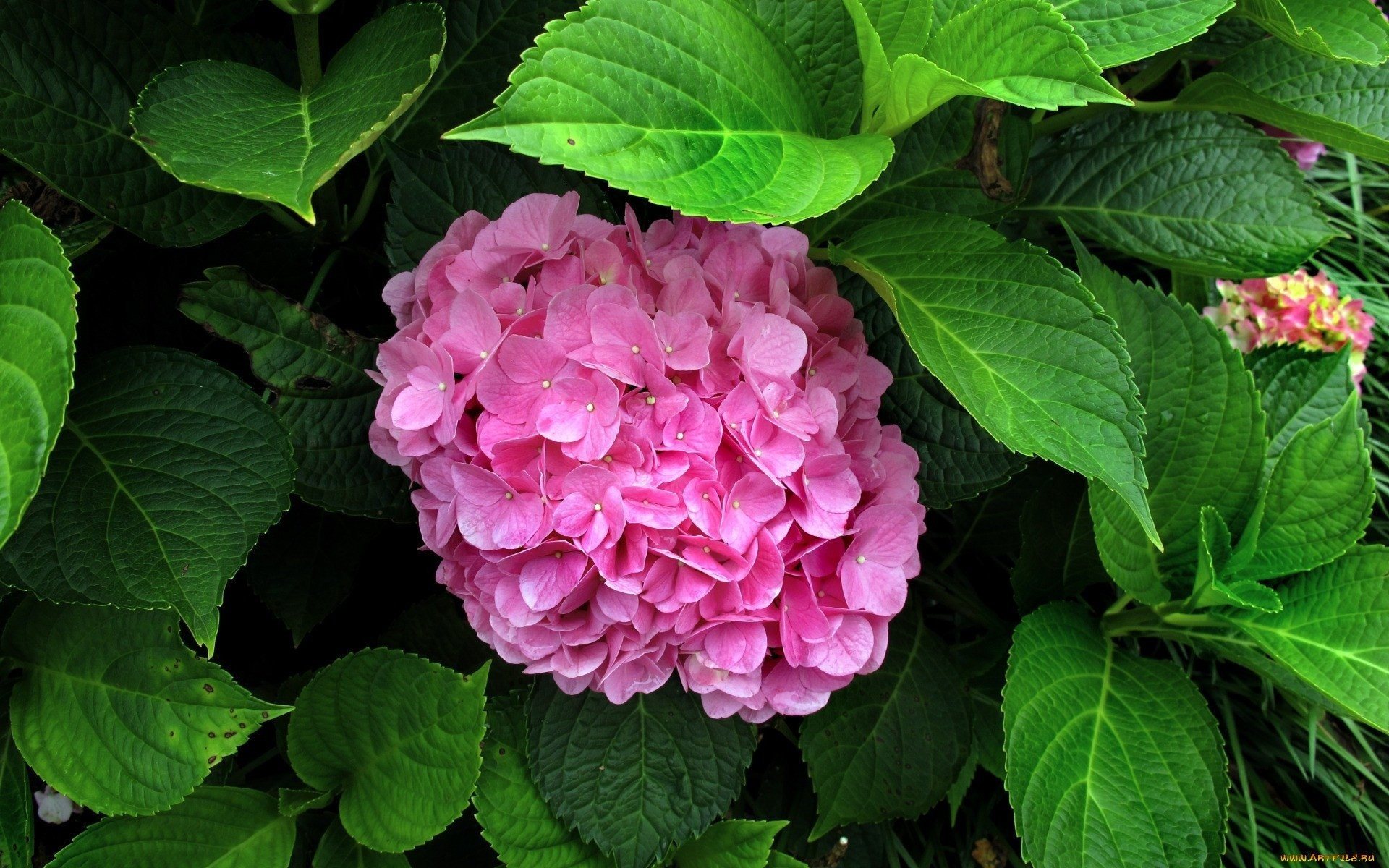
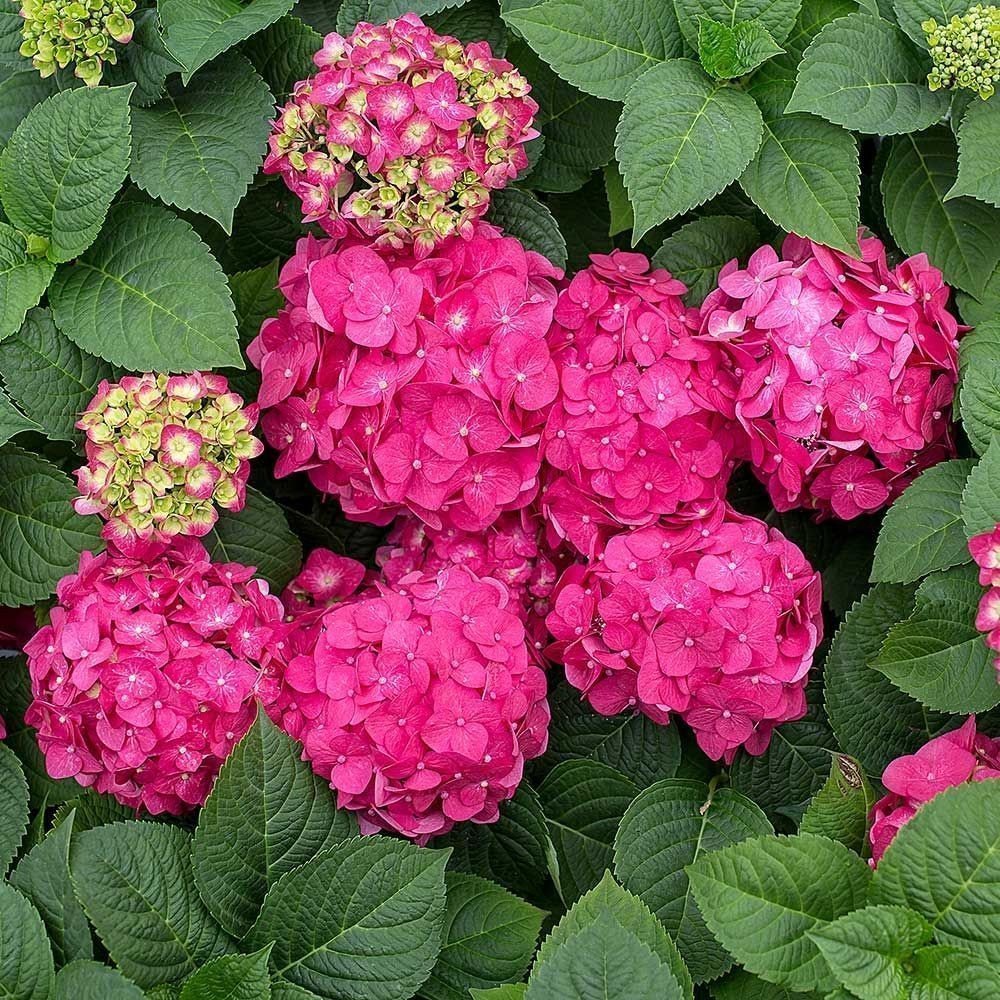
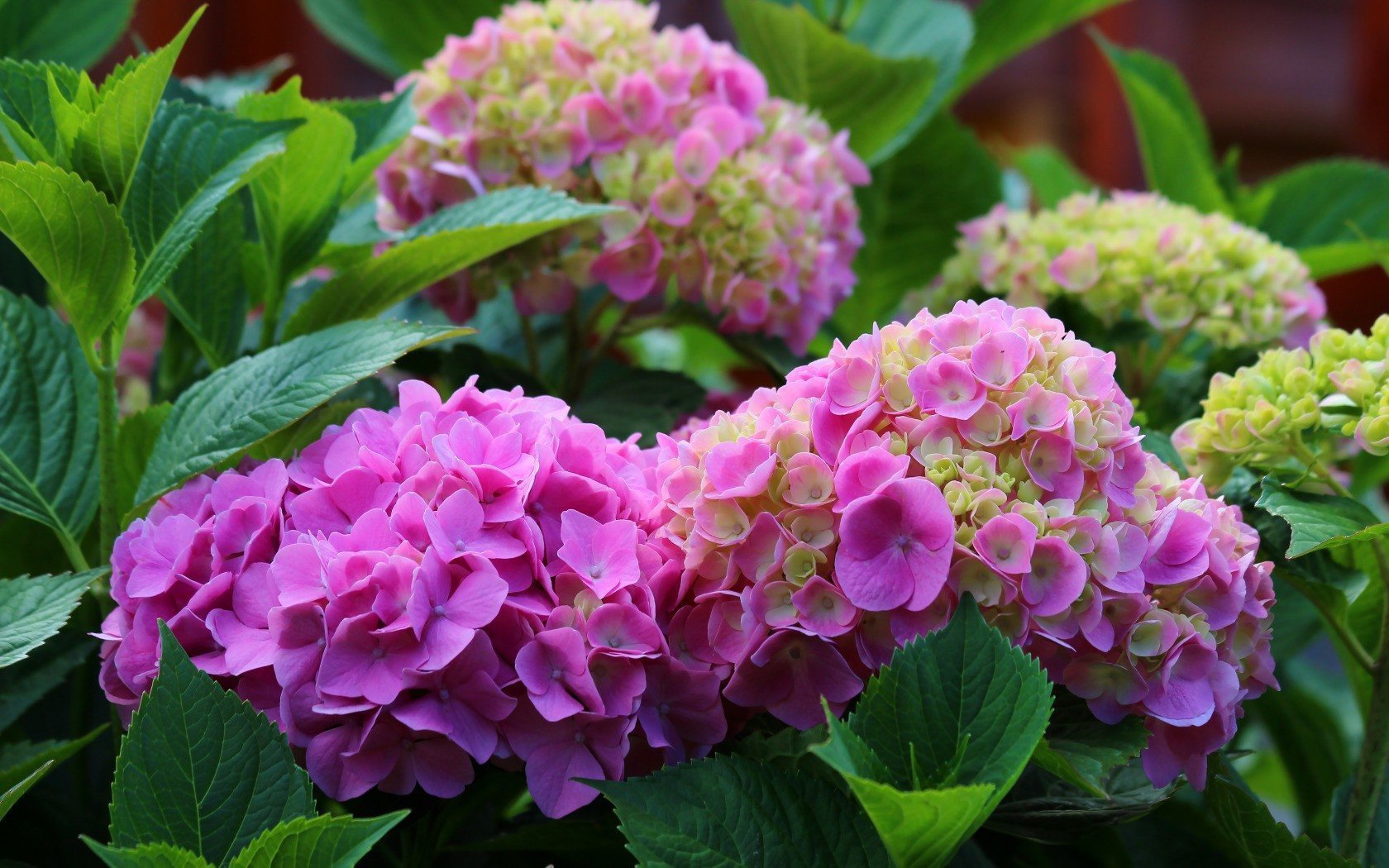
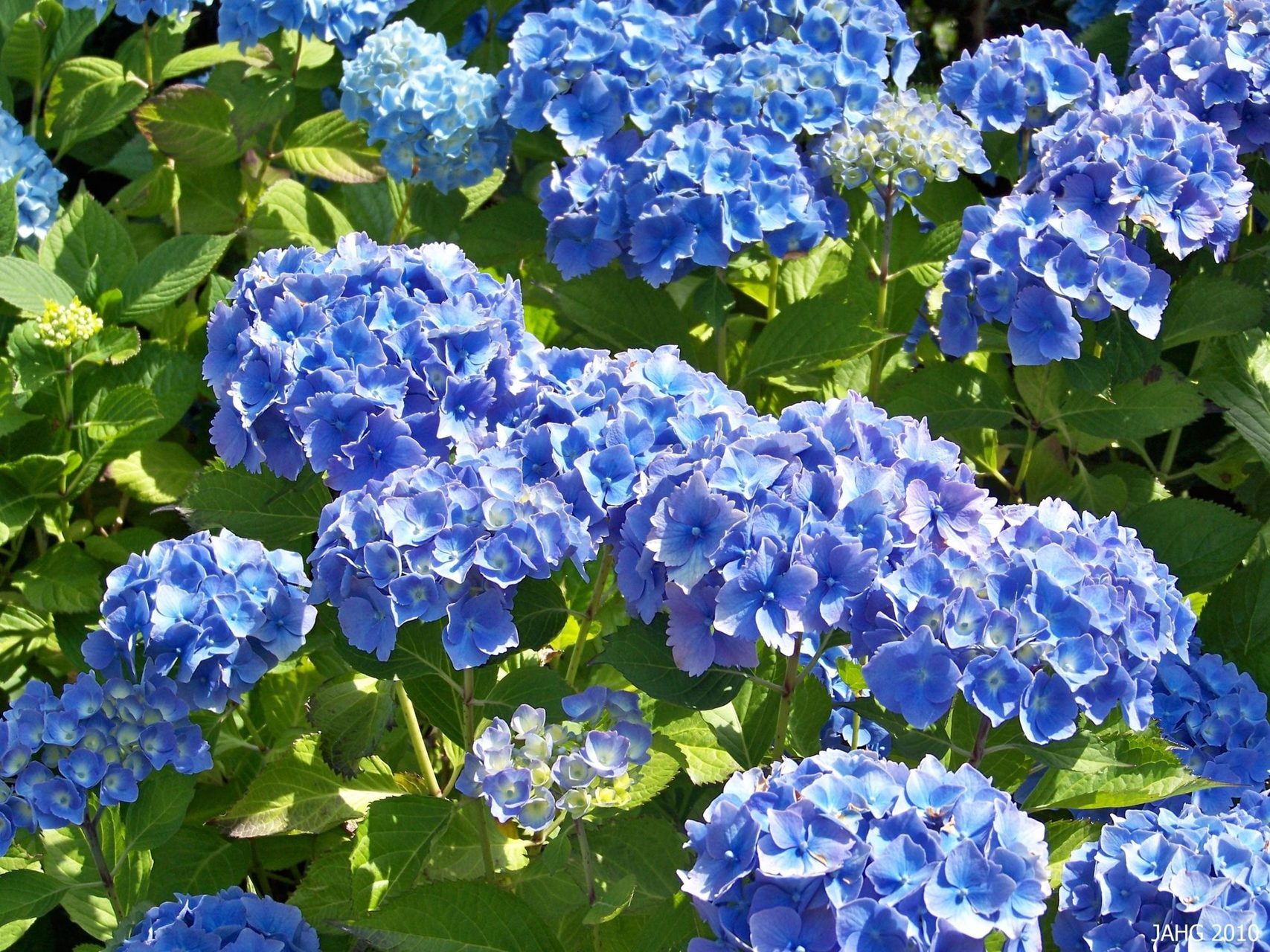





Popcorn
A feature of hydrangea is considered to be the originally twisted petals, which in appearance are similar to popcorn. An adult bush reaches 1.2 m in height. Flowering lasts from late July to September. Large inflorescences are formed on the bushes, but it is advisable to choose partial shade for growing, as well as fertile acidic soil. Miss Saori
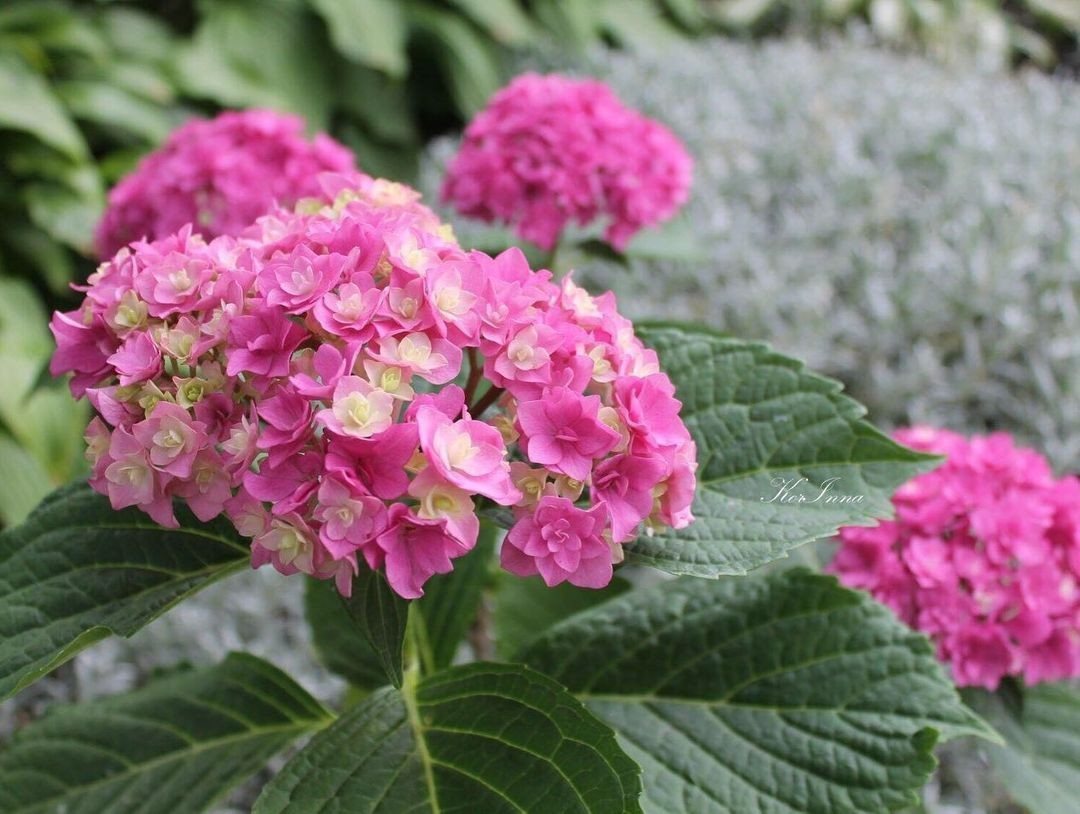
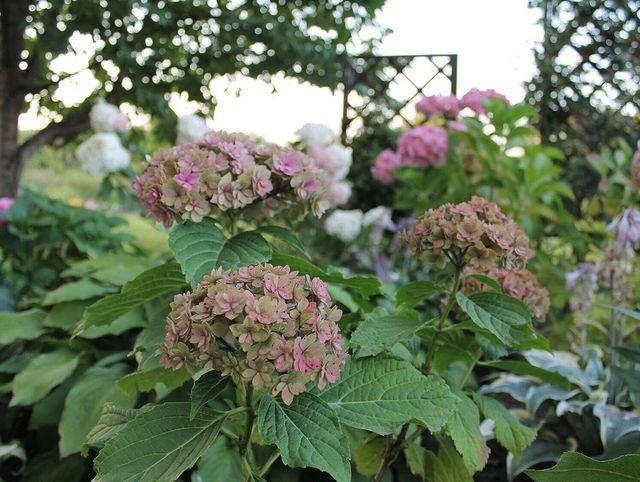
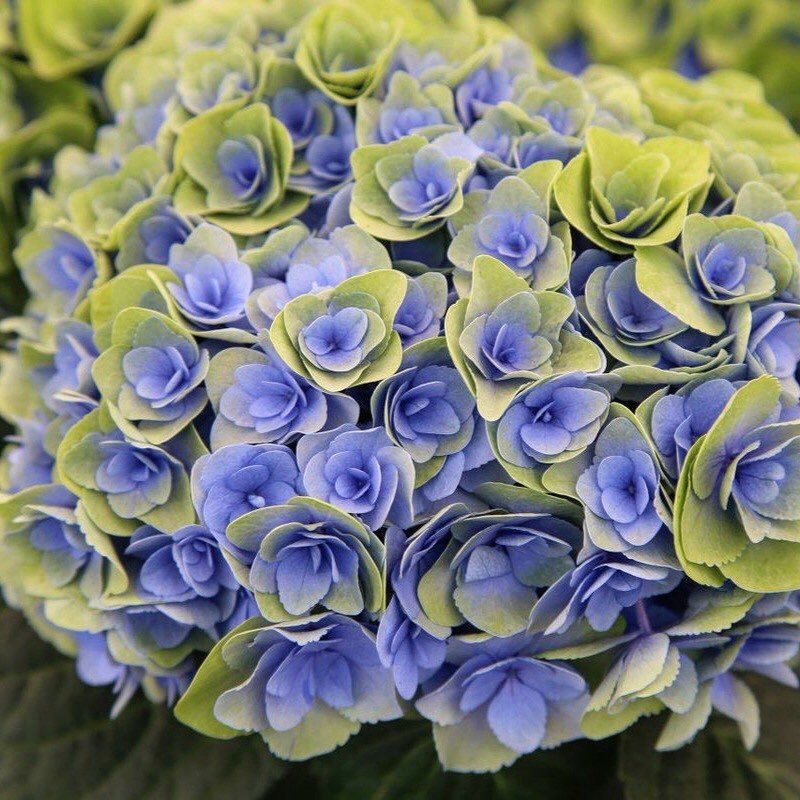
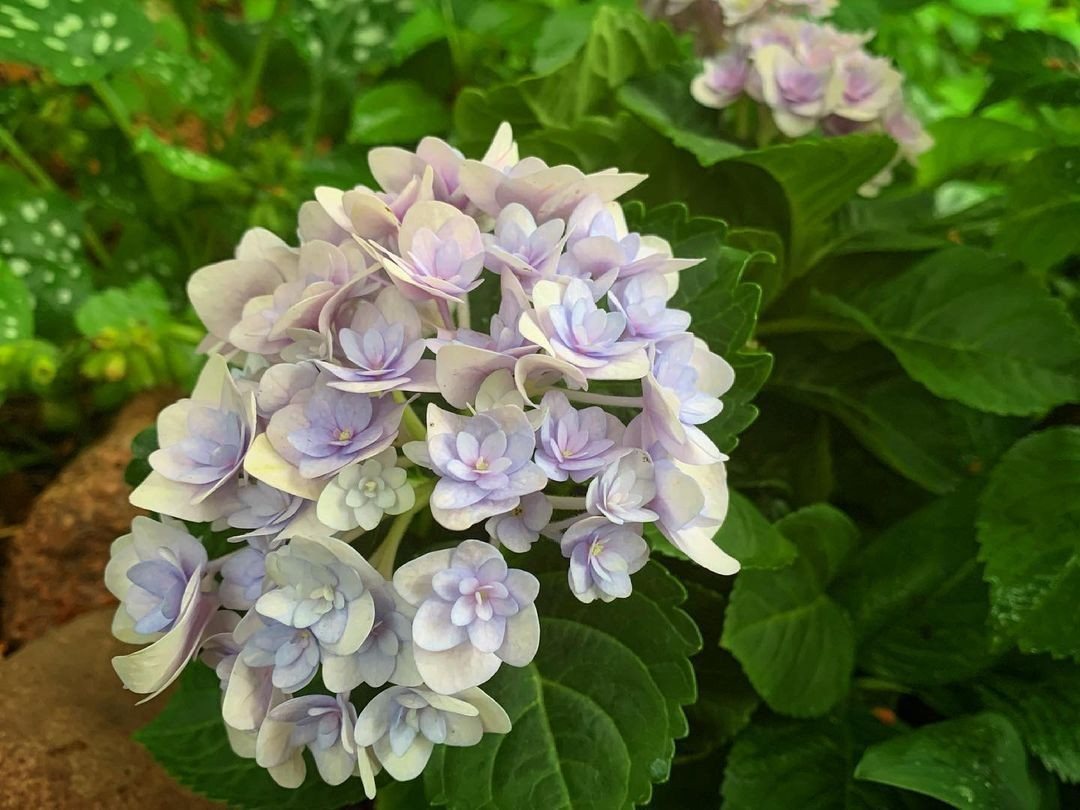
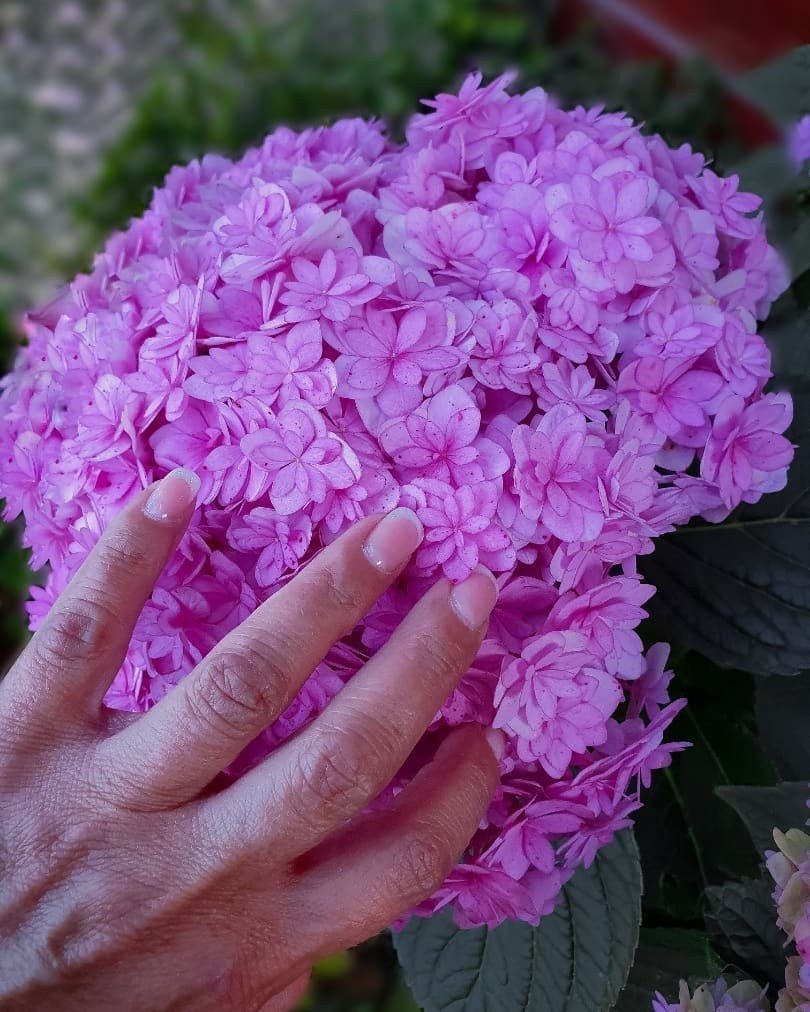





Hydrangea reaches 1 meter in height, and also has large inflorescences, the diameter of which is 30 cm. The flowers have a soft pink color, and their diameter is about 7 cm. The culture is demanding on the composition and quality of the soil, and also needs regular watering.
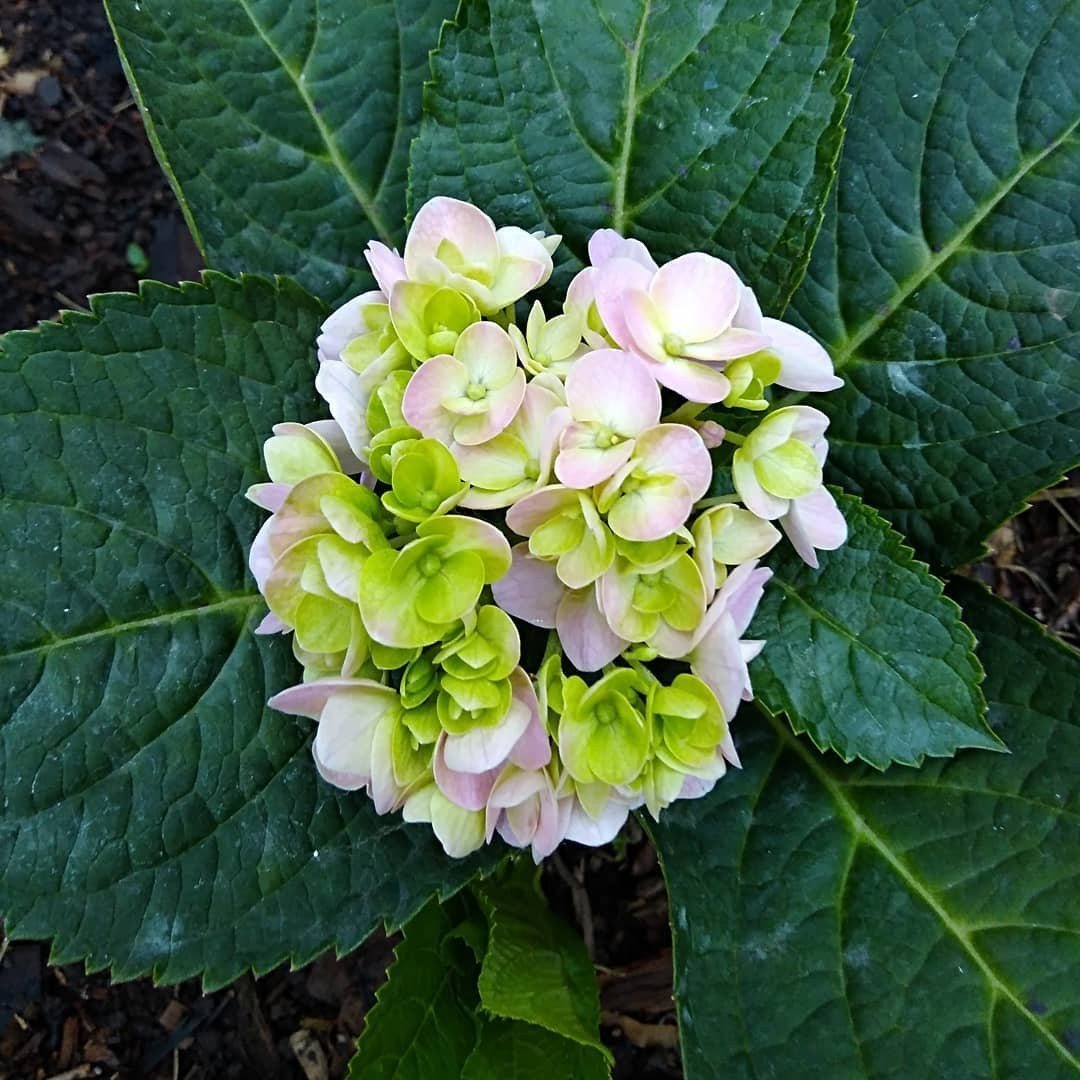
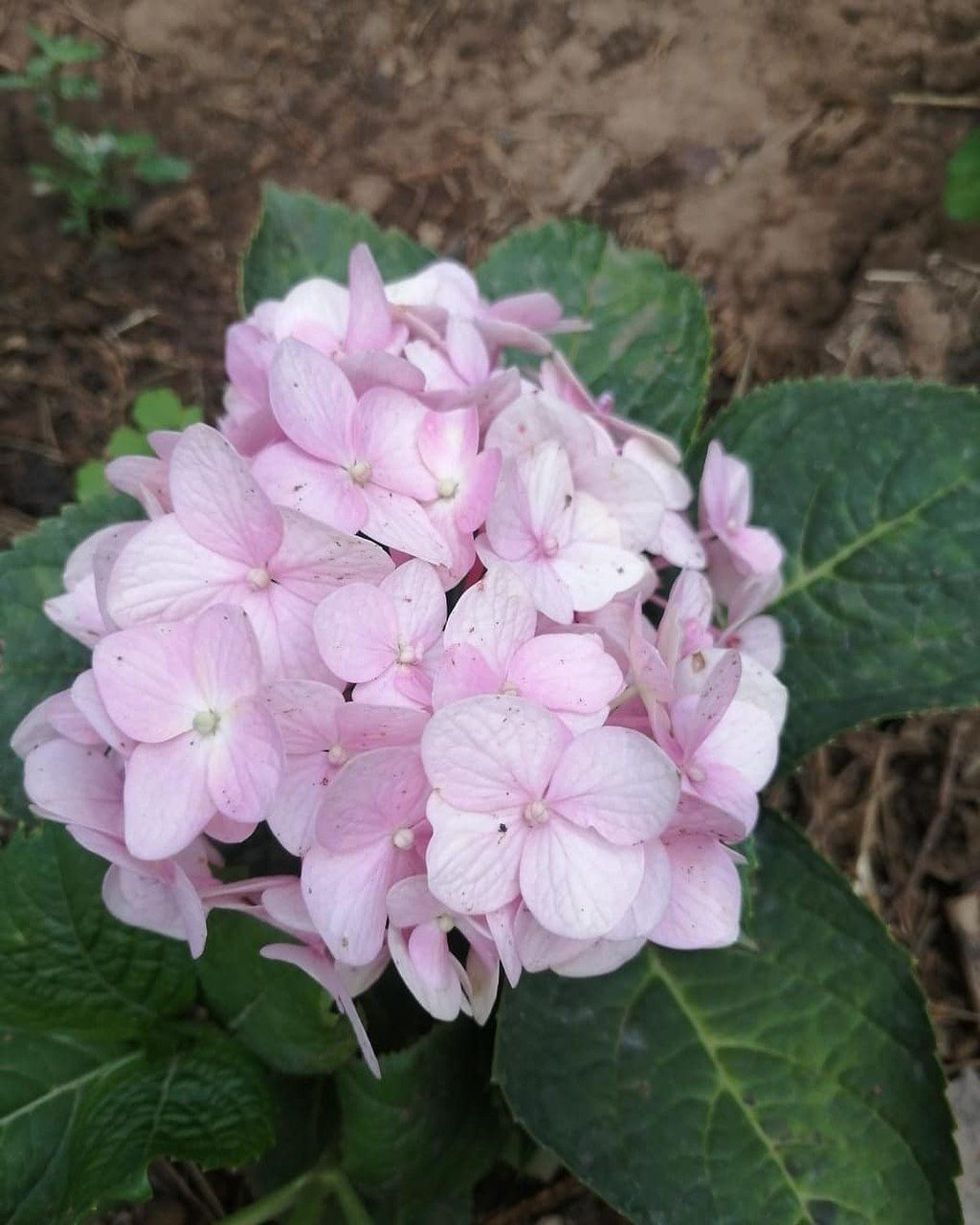
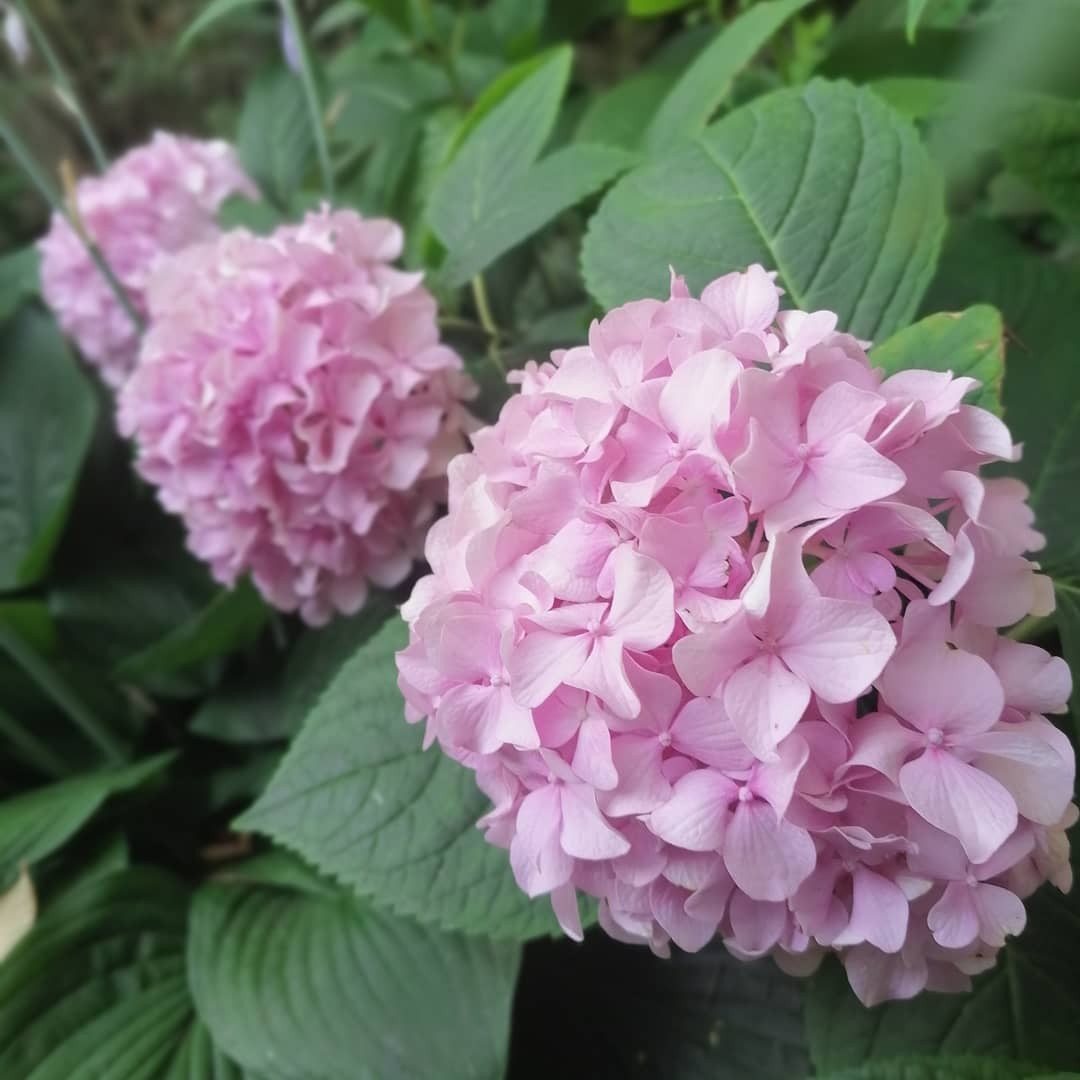
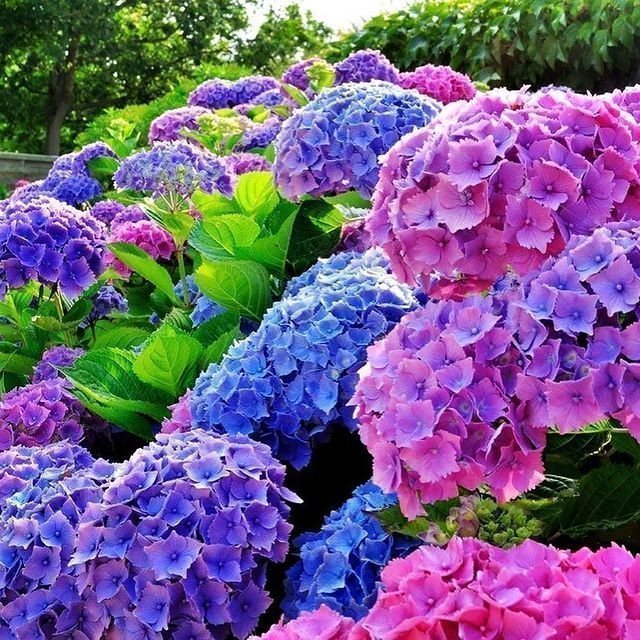
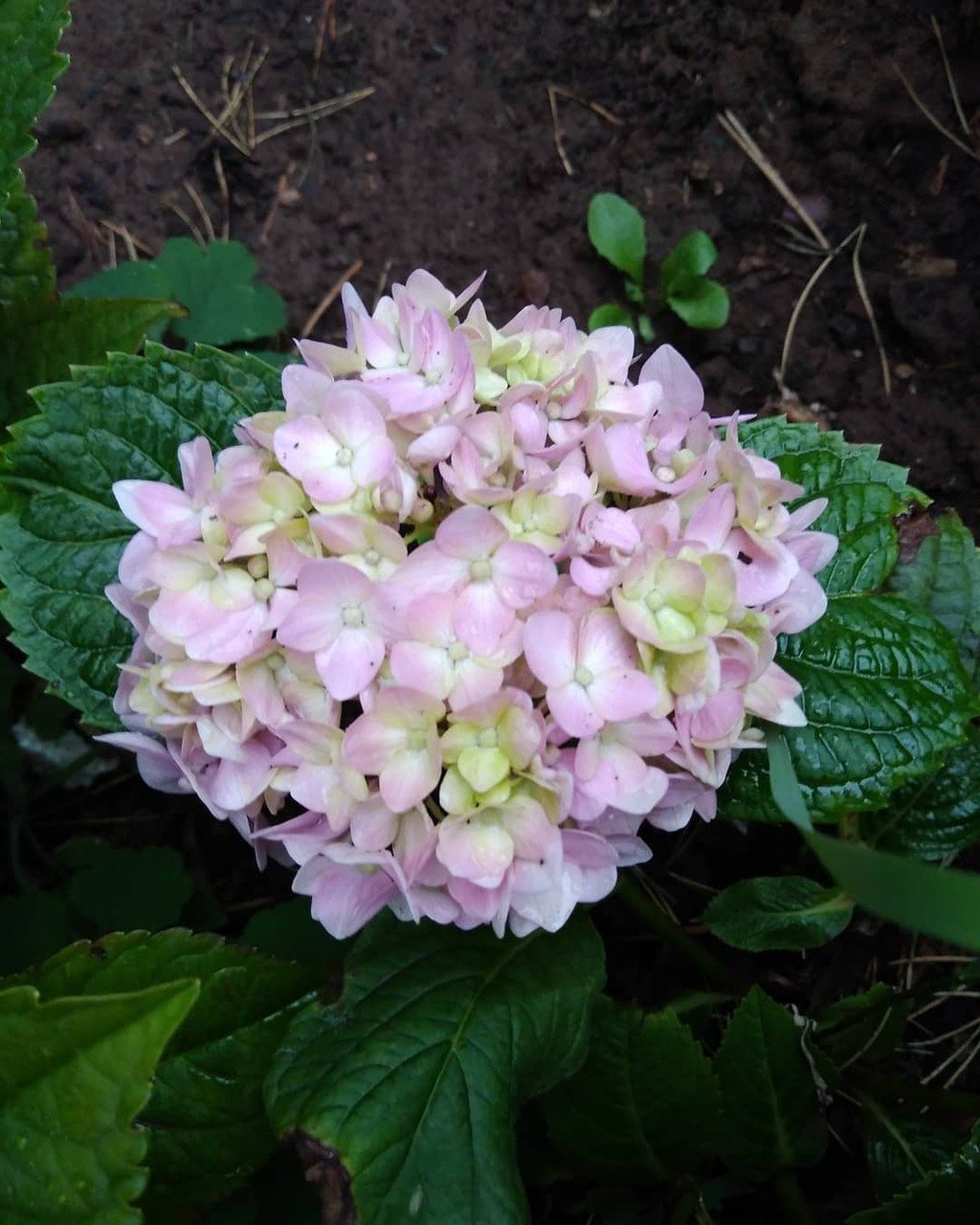





Countess Kossel
The bush grows up to two meters, and the plant can also be grown in containers, but then the height does not exceed 60 cm. Large-leaved hydrangea has dense foliage and annual shoots. The plant is characterized by low frost resistance, so it needs to be covered for the winter.
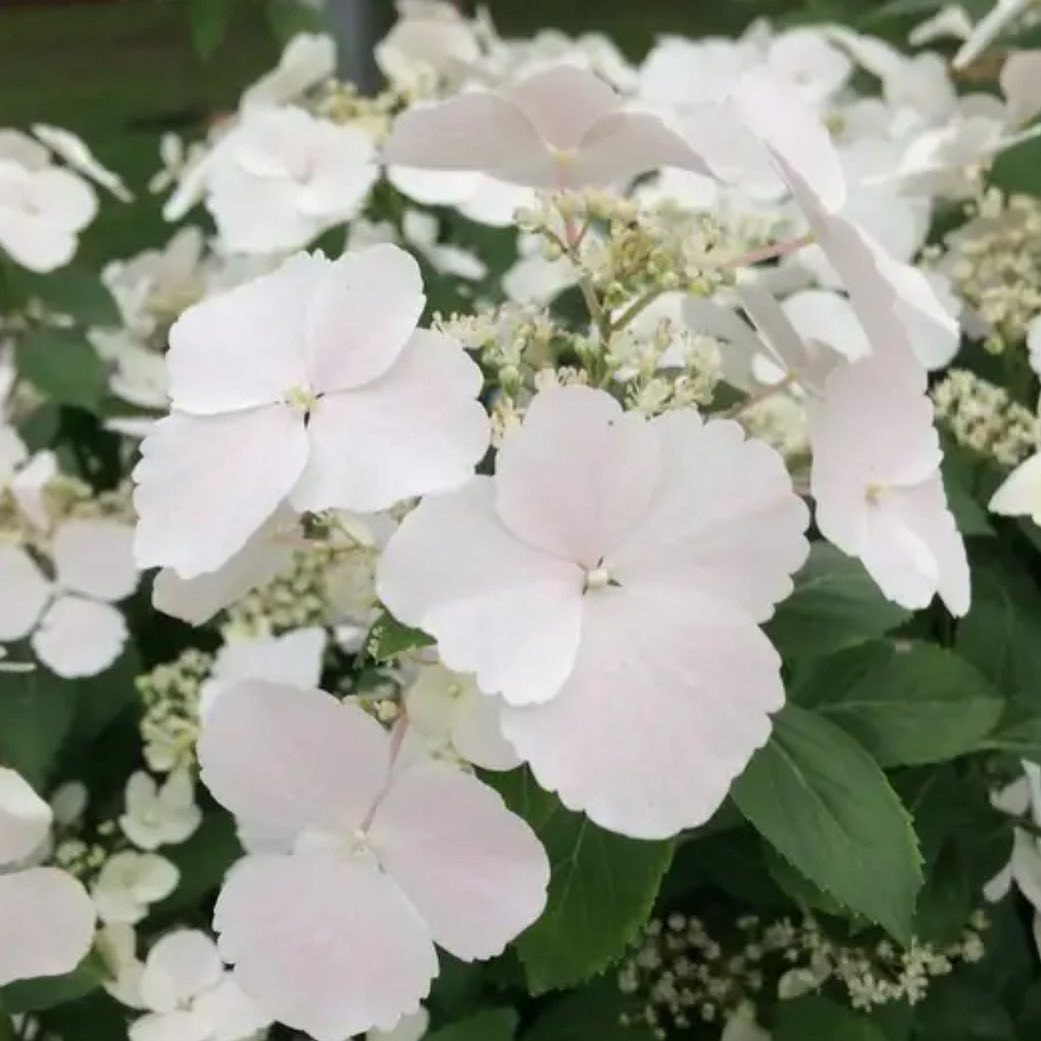
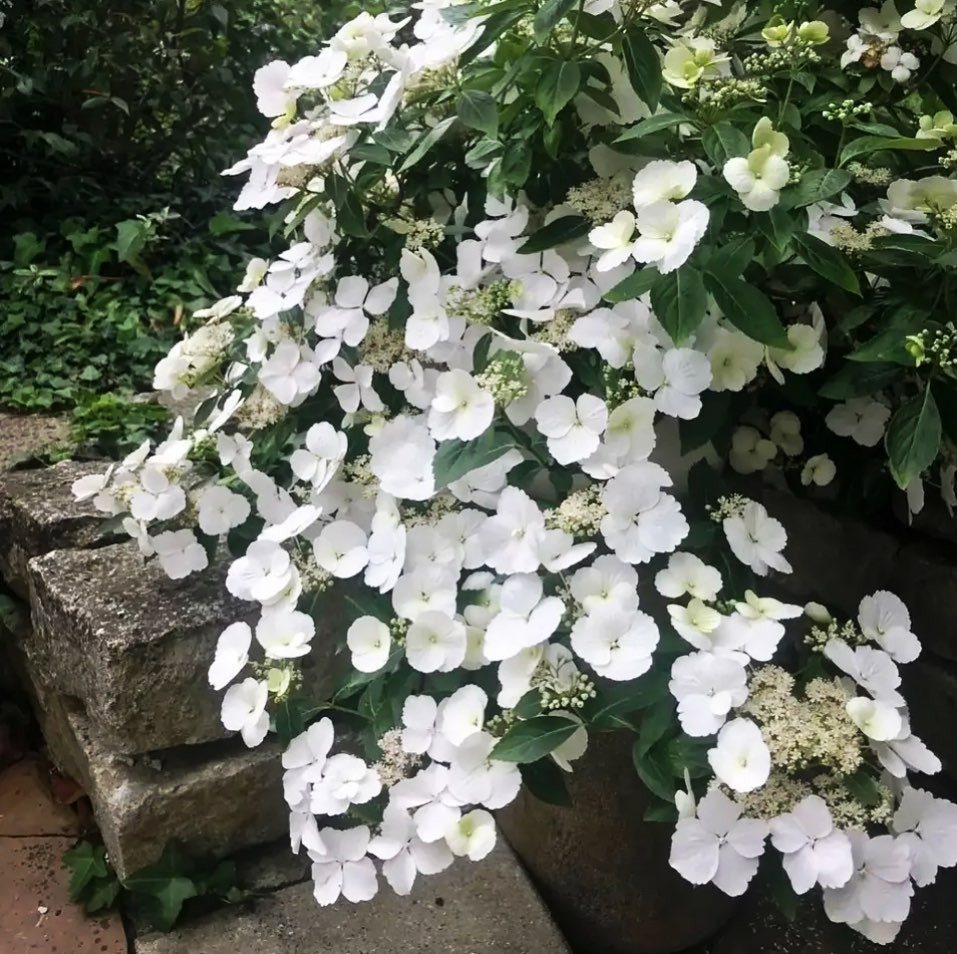
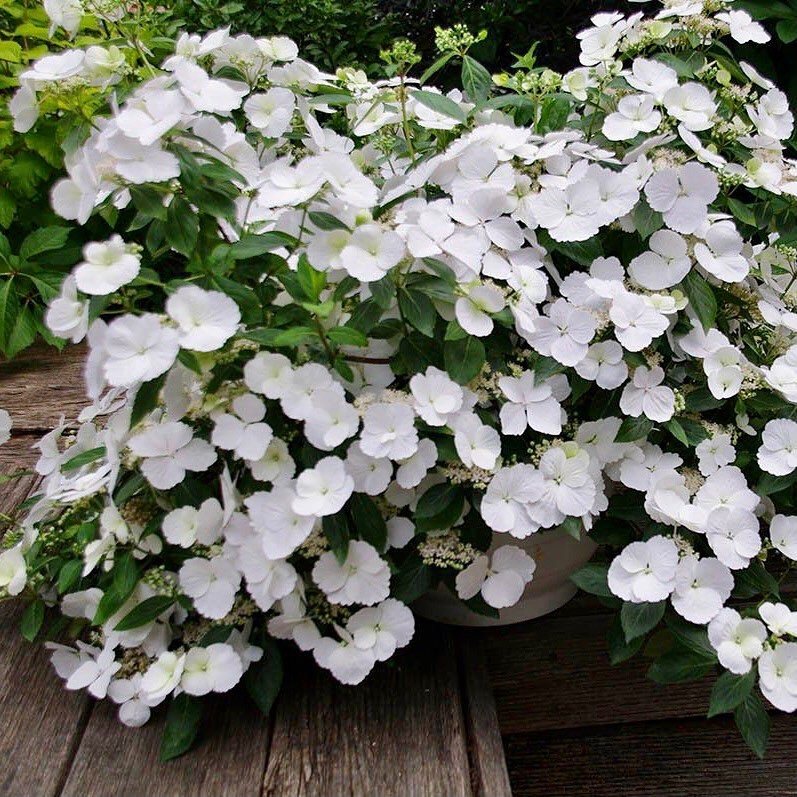

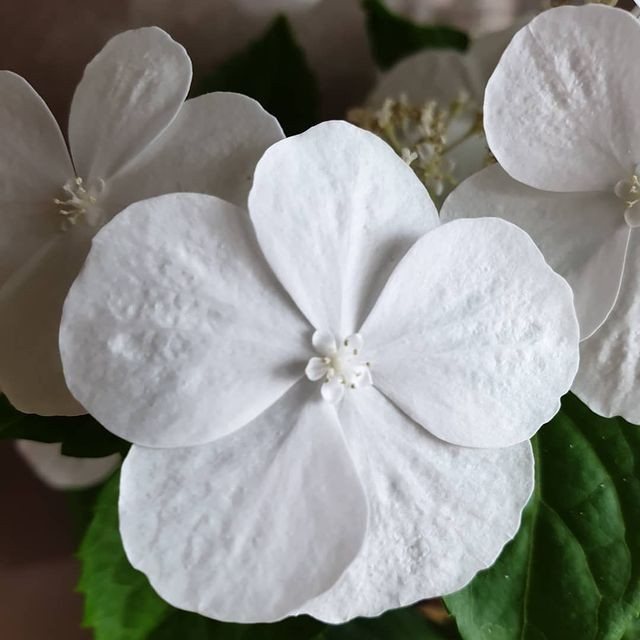





Magical Amethyst
- Large-leaved hydrangea fascinates with unique and bright colors of flowers. Low-growing ornamental shrub reaches 1 meter in height, and is also distinguished by a high growth rate.It produces many large inflorescences that change color from pink to purple.
- Tugese
- The variety was bred by French breeders. The deciduous shrub has a spherical shape, vertically growing shoots and curved side stems. The crown looks very dense, since it consists of a large number of oppositely located fleshy leaves, the length of which reaches 14 cm. Lush spherical inflorescences have a diameter of 20 cm and consist of large flowers, the color of which changes from green to pink, blue or lilac.
- Popcorn
A special feature of hydrangea is its original curled petals, which look like popcorn. An adult shrub reaches a height of 1.2 m. Flowering lasts from late July to September. Large inflorescences form on the bushes, but it is advisable to choose partial shade for cultivation, as well as fertile acidic soil.
Miss Saori
Hydrangea reaches a height of 1 meter, and also has large inflorescences, the diameter of which is 30 cm. The flowers are soft pink in color, and their diameter is approximately 7 cm. The culture is demanding on the composition and quality of the soil, and also requires regular watering.
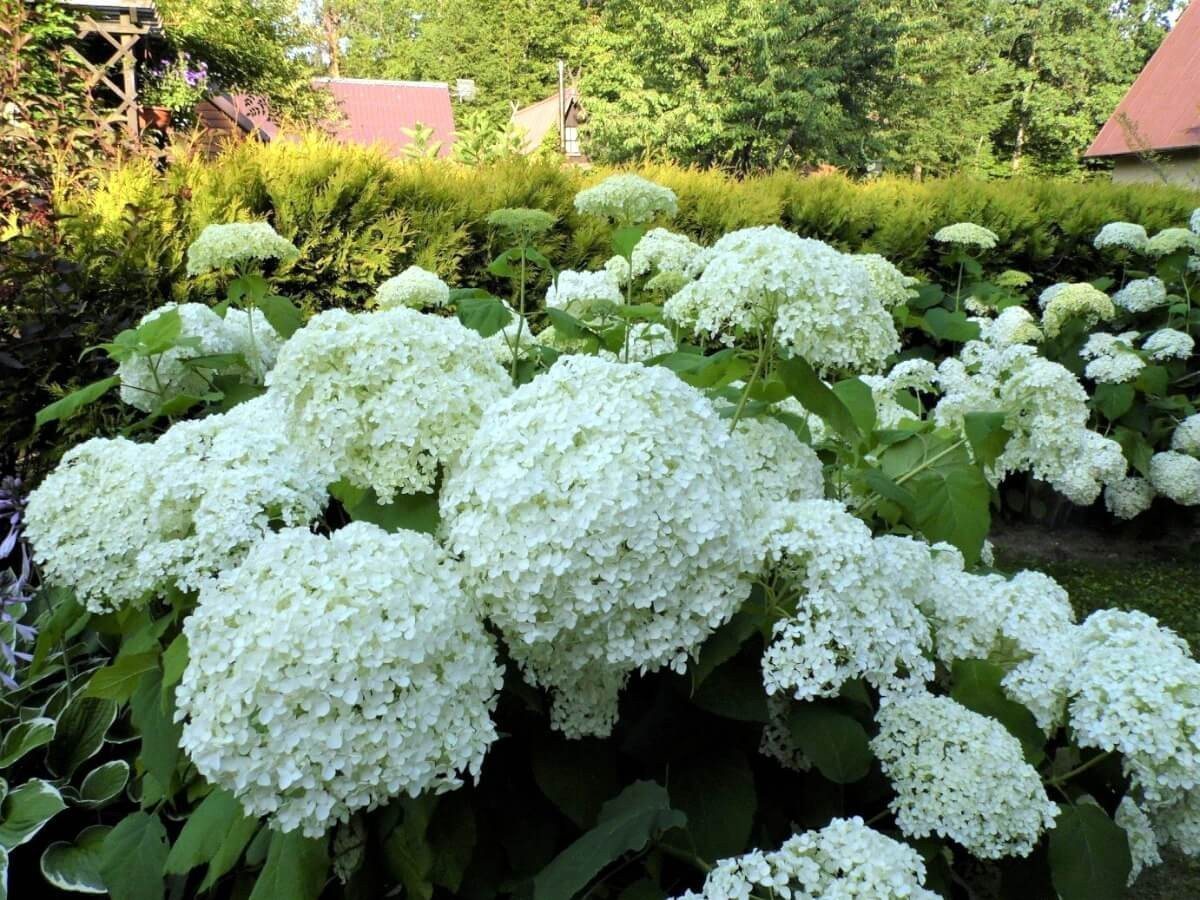
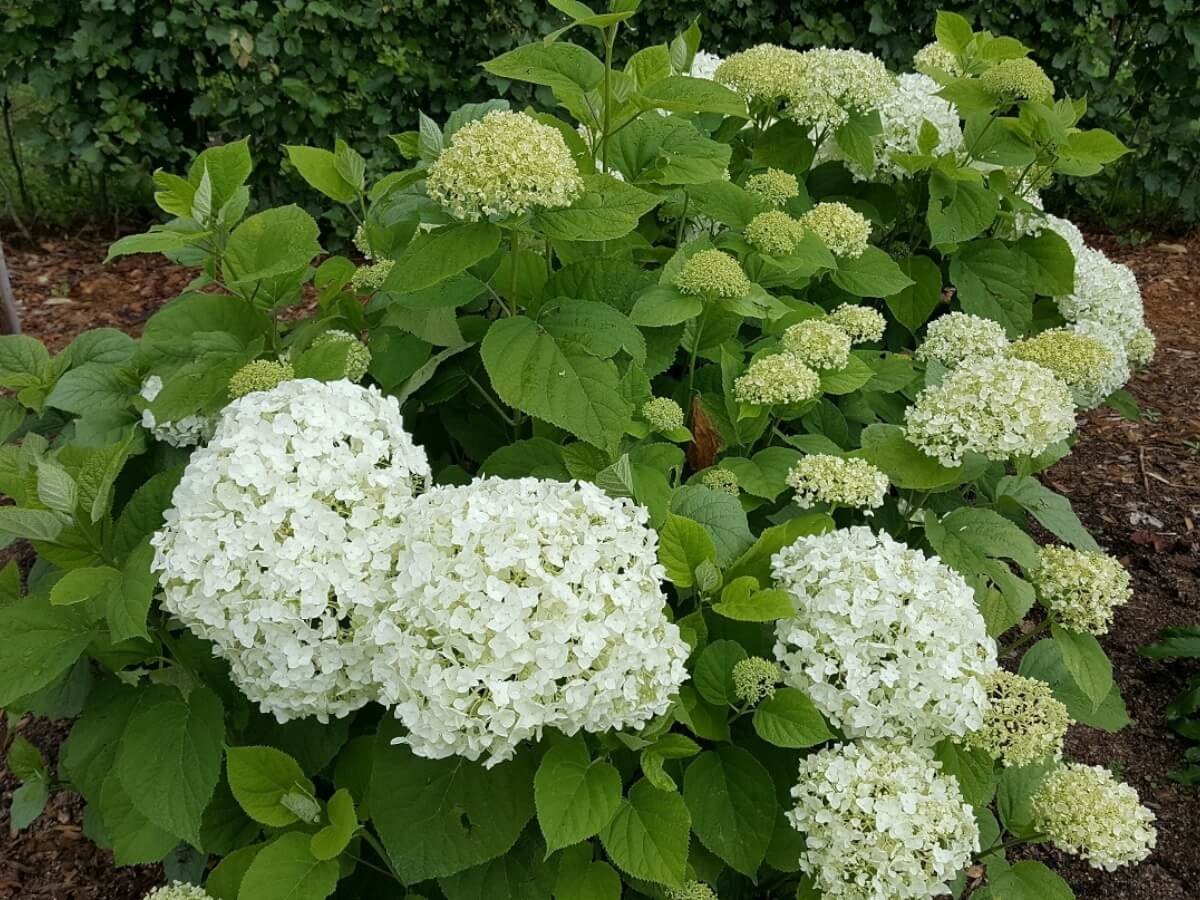

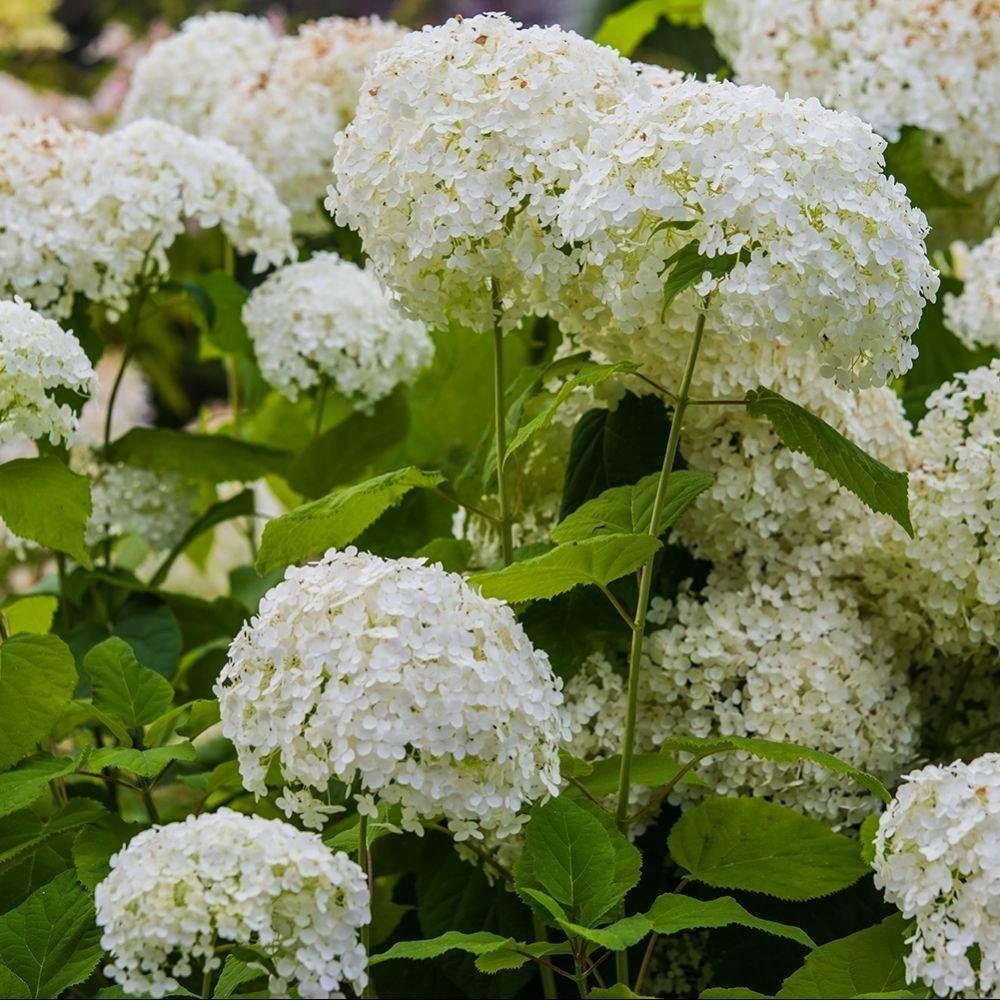




Countess Kossel
The shrub grows up to two meters, and the plant can also be grown in containers, but then the height does not exceed 60 cm. Large-leaved hydrangea has dense foliage and annual shoots.The plant has low frost resistance, so it needs shelter for the winter.
Large-leaved hydrangea fascinates with its unique and bright colors of flowers. The low-growing ornamental shrub reaches a height of 1 meter and is also characterized by a high growth rate. Blooms from early August to October. The color of the inflorescences depends on the acidity of the soil.
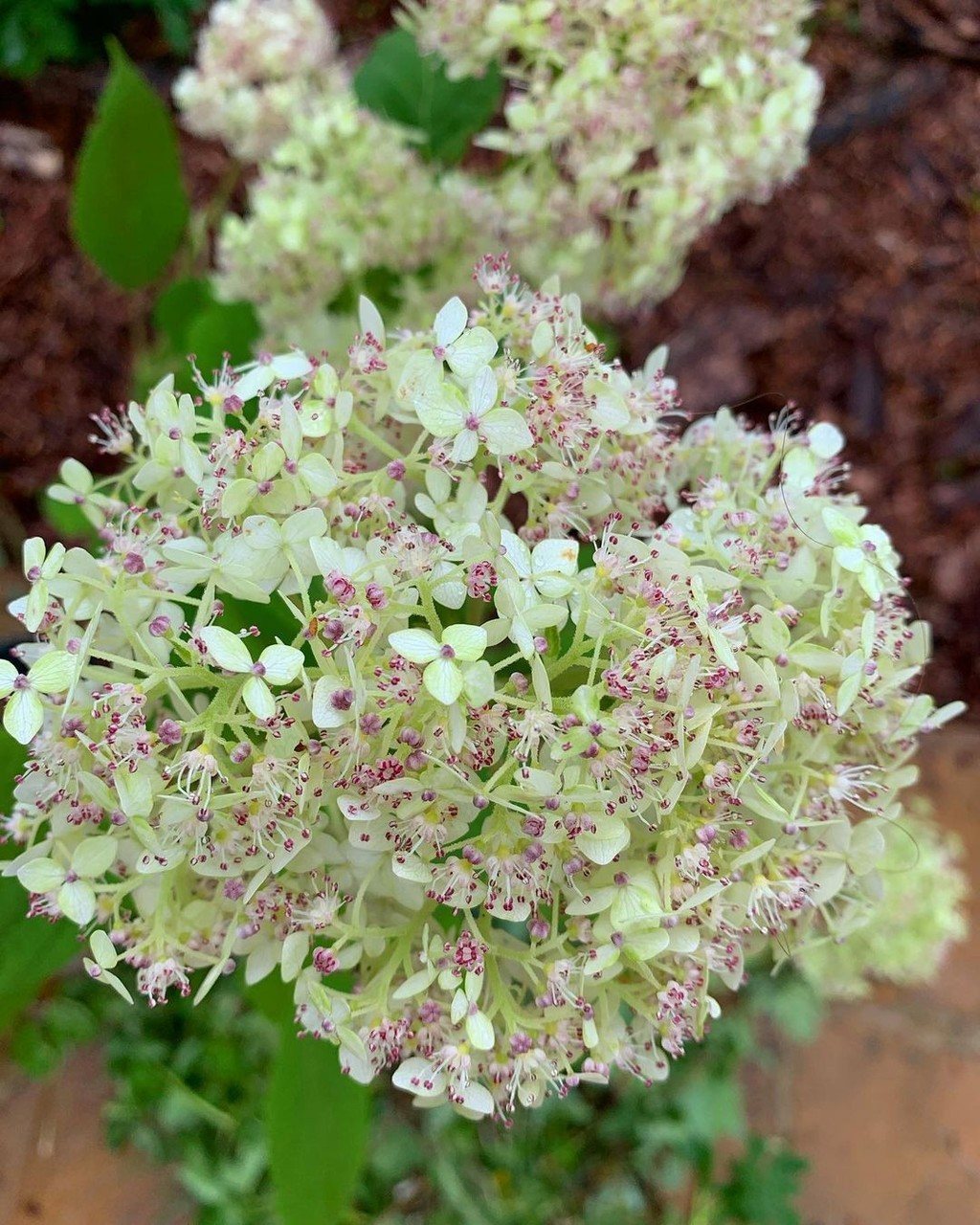
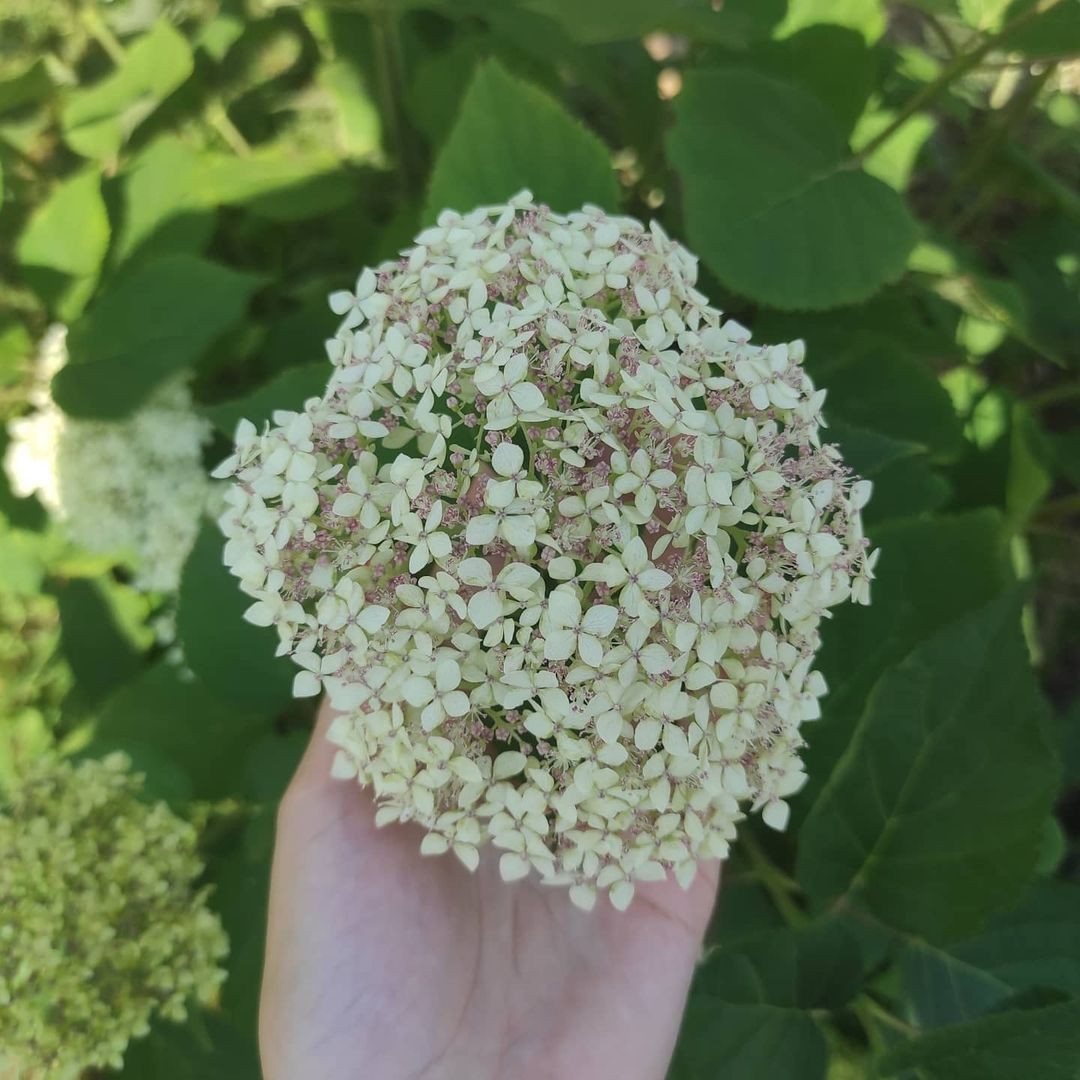
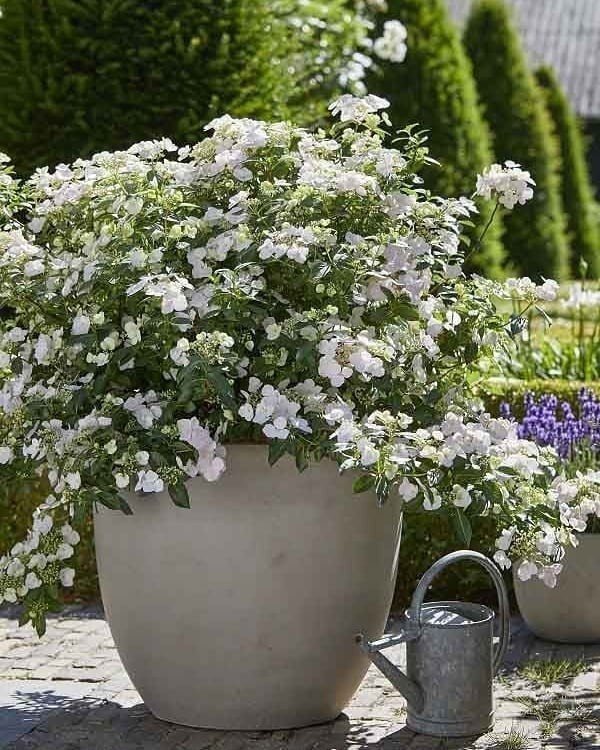
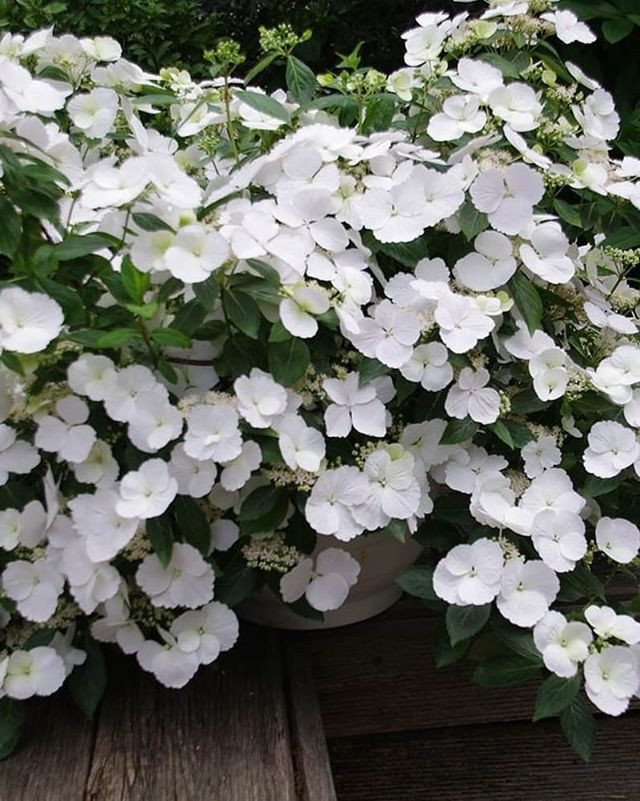
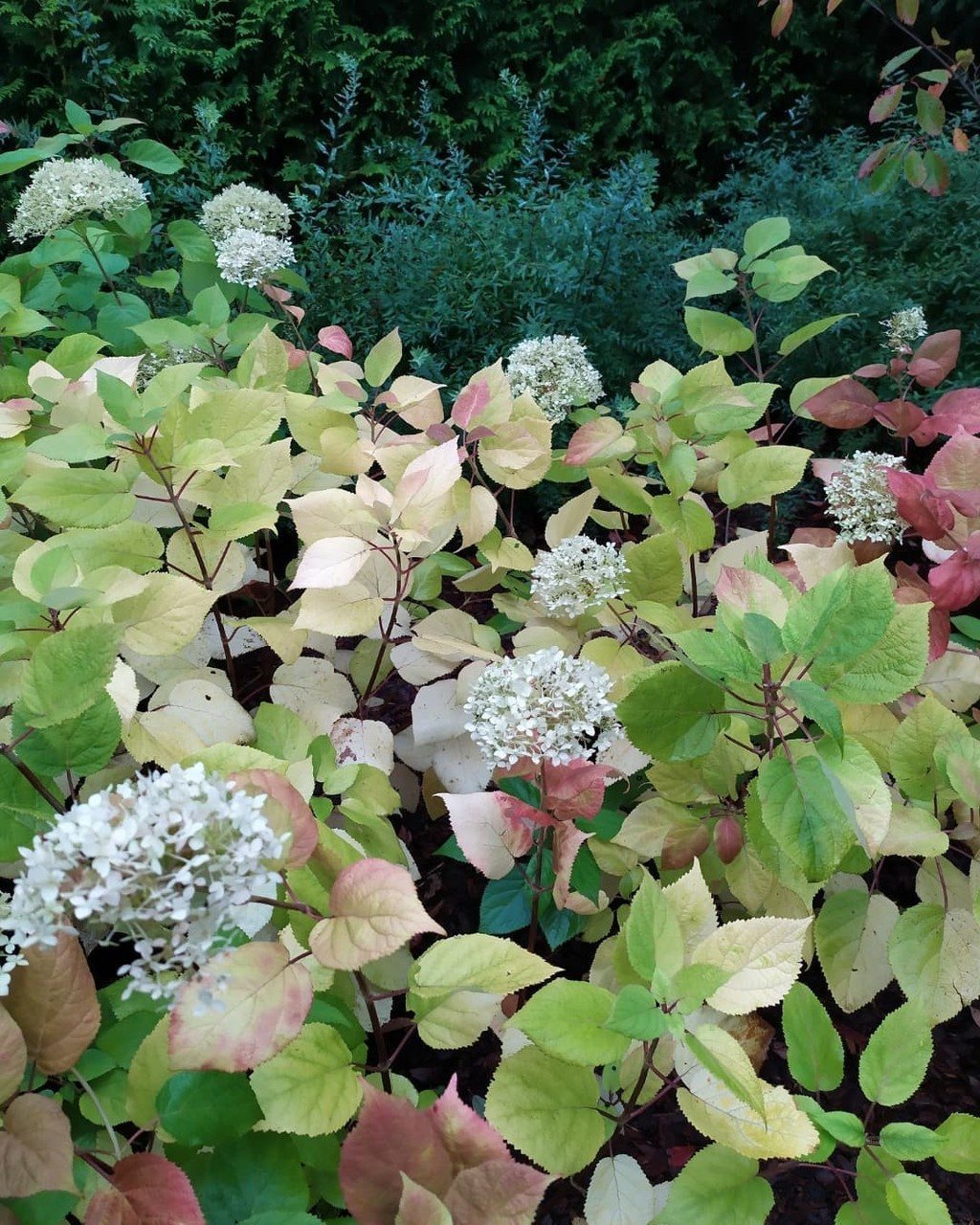





Twist and Shout
The deciduous shrub reaches 120 cm in diameter. It has small central flowers and large outer inflorescences, the color of which varies from dark pink to purple. It is distinguished by abundant flowering on last year's and current shoots of red color.
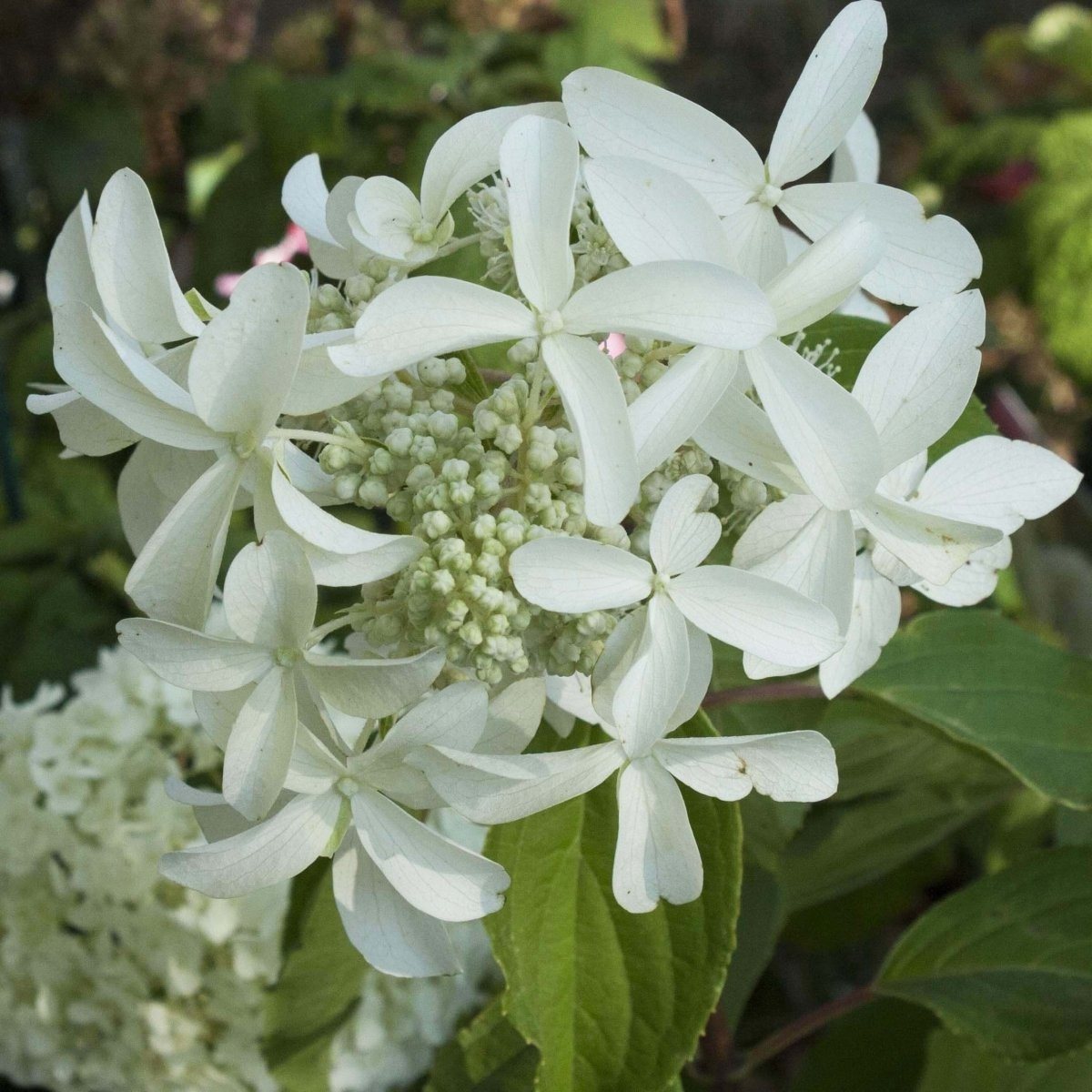
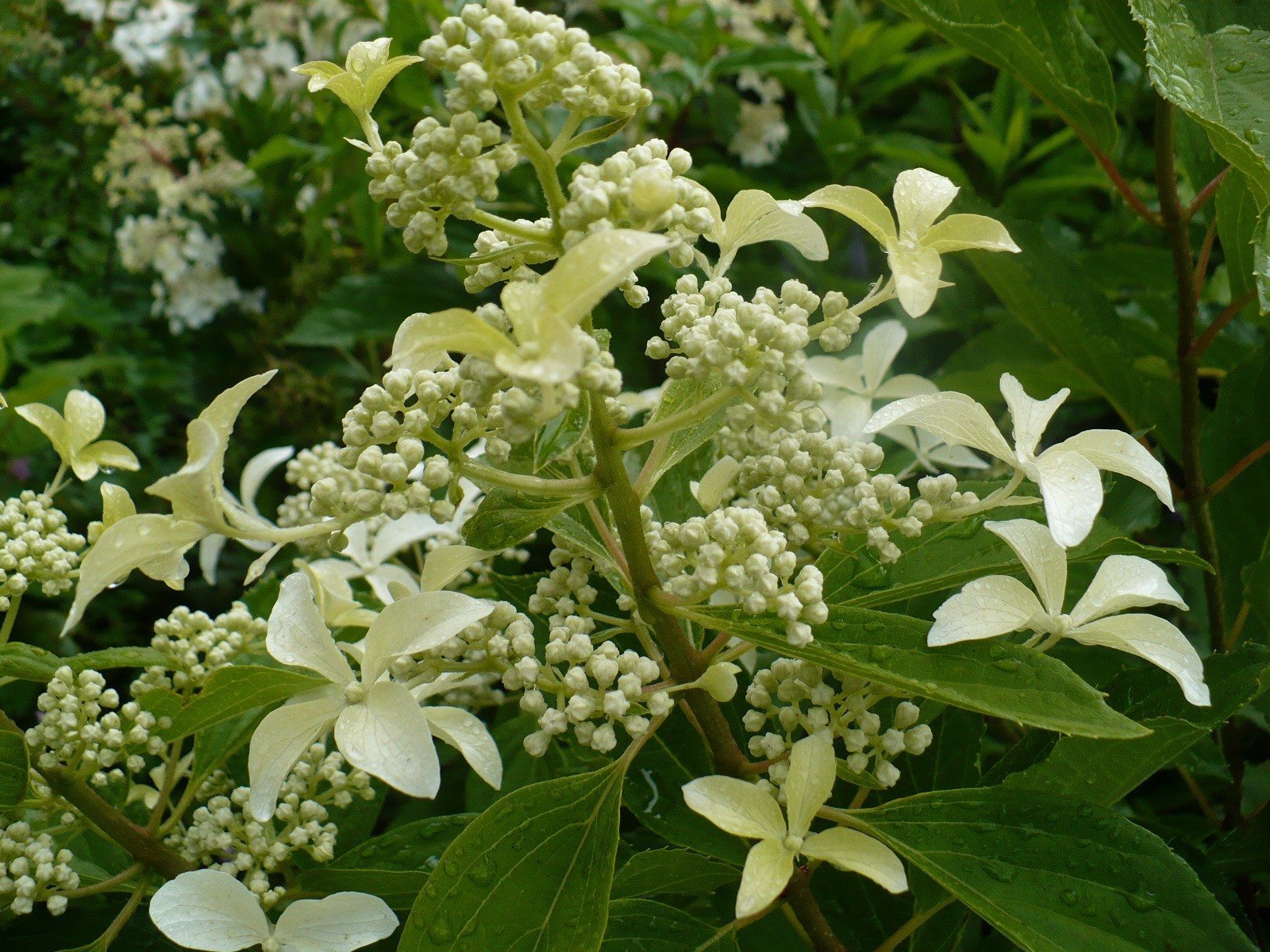
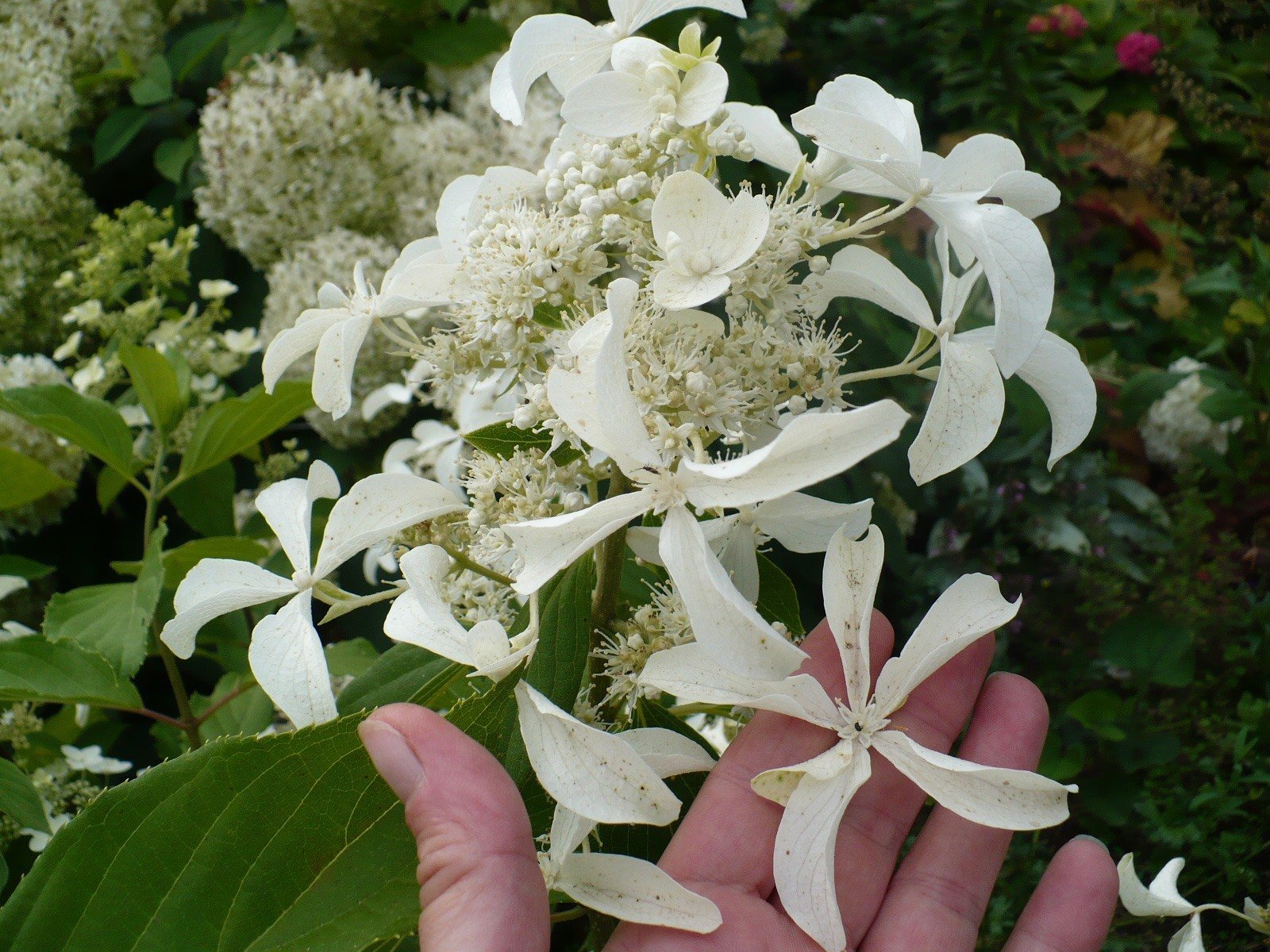
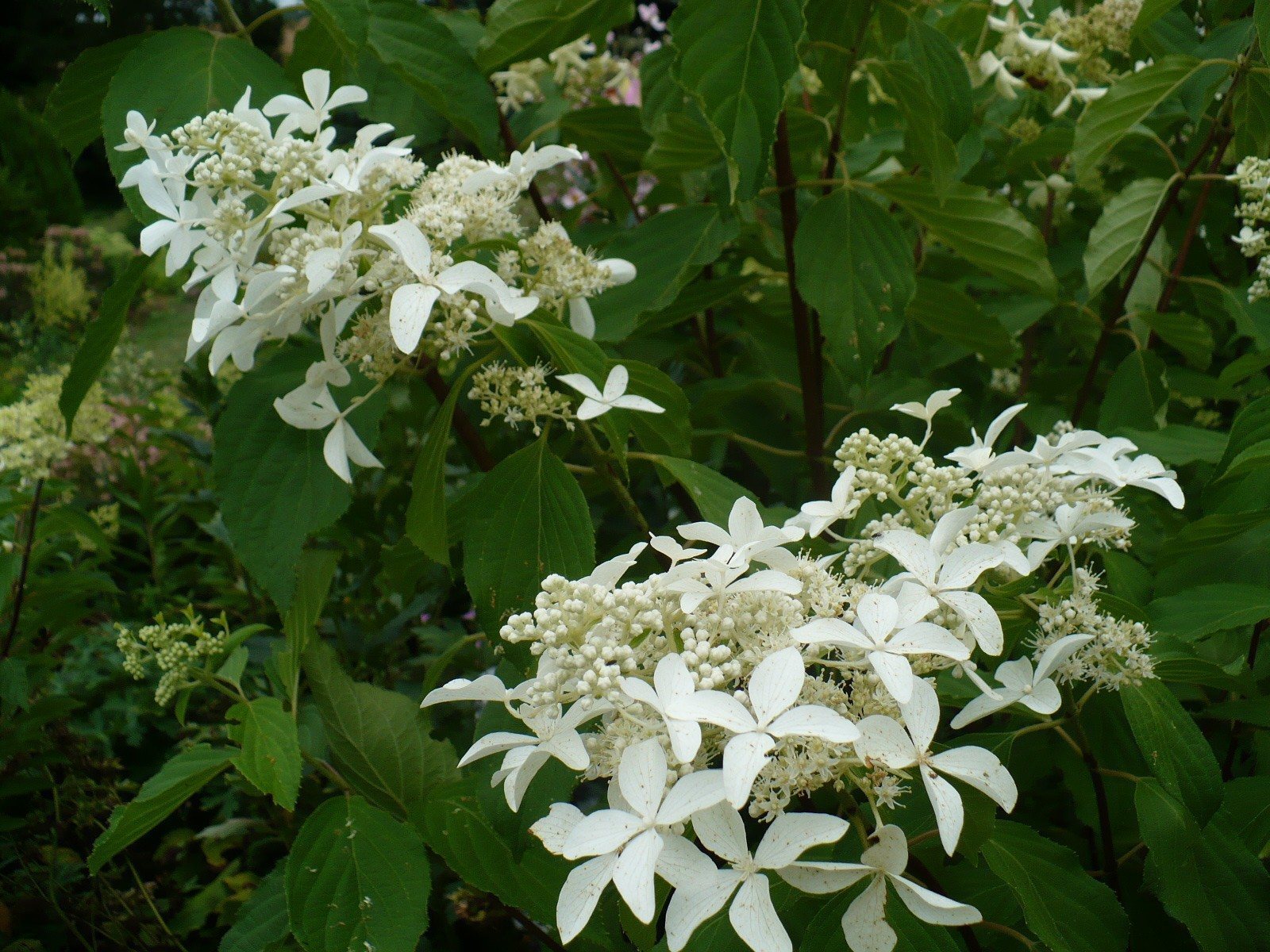
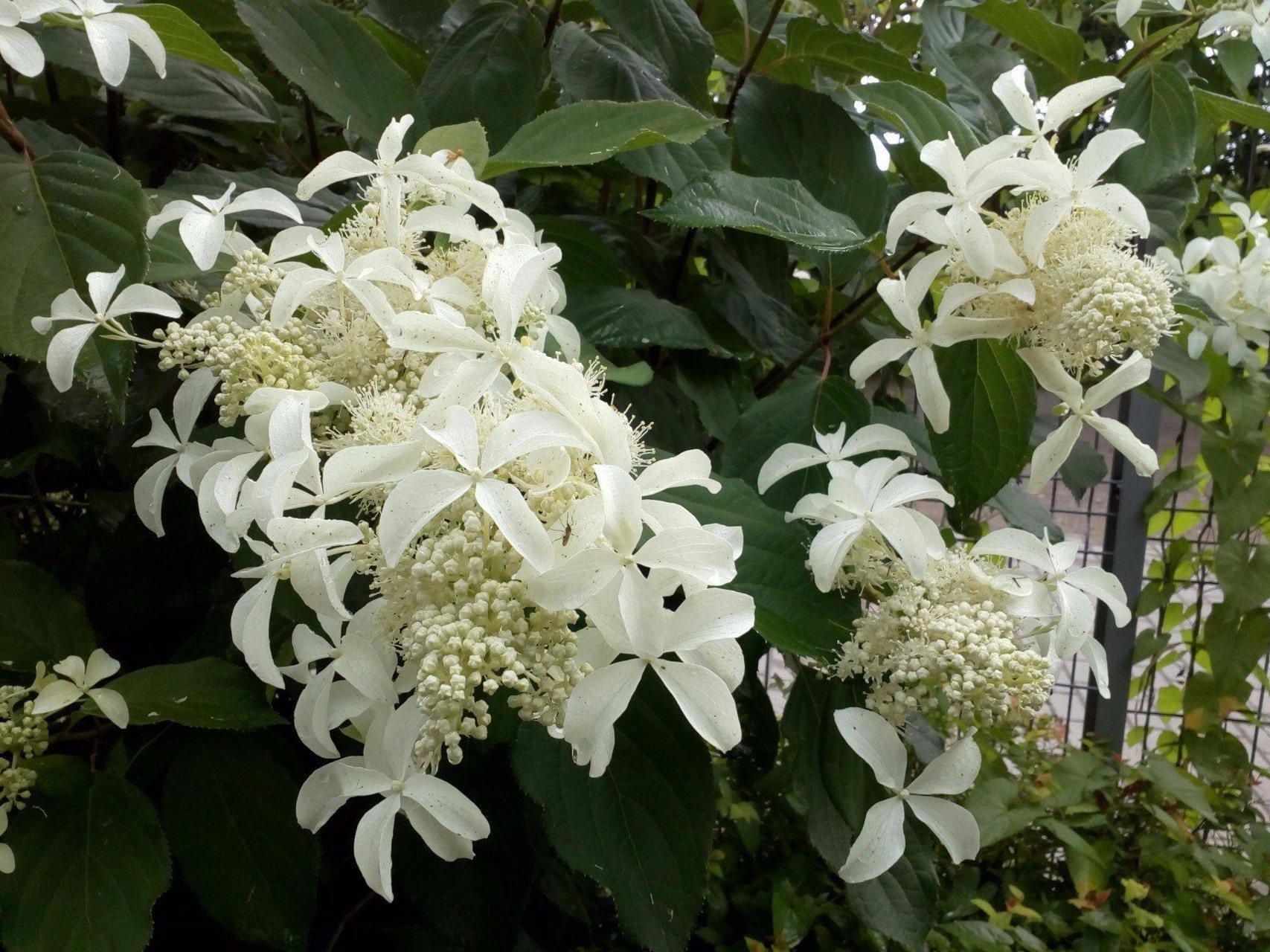





Hamburg
The plant has rounded inflorescences formed from spectacular flowers. To obtain a purple hue, acidic soils are selected, and if pink flowers are needed, then soil with a high alkali index is suitable. The flowering period begins in July and ends with the first frost. The culture is resistant to various diseases, and also develops quickly and reaches a height of 1.2 m.
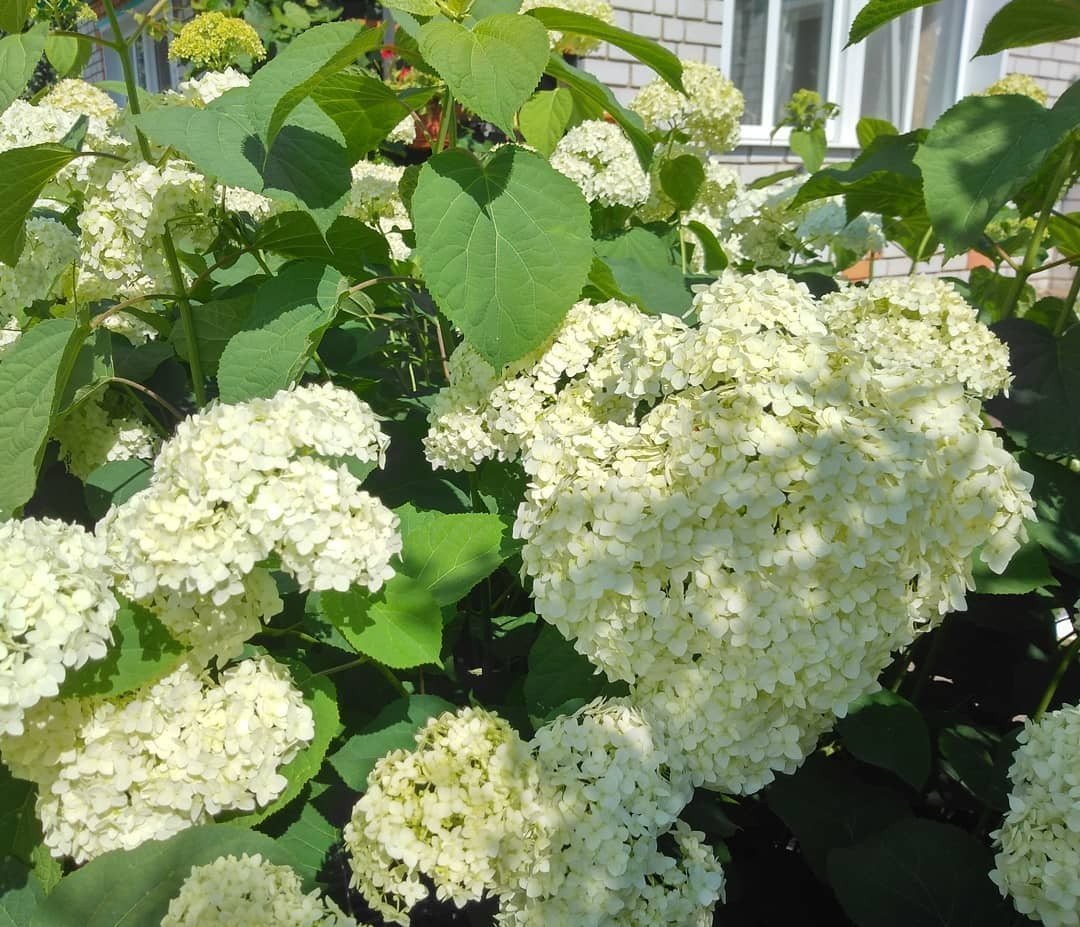
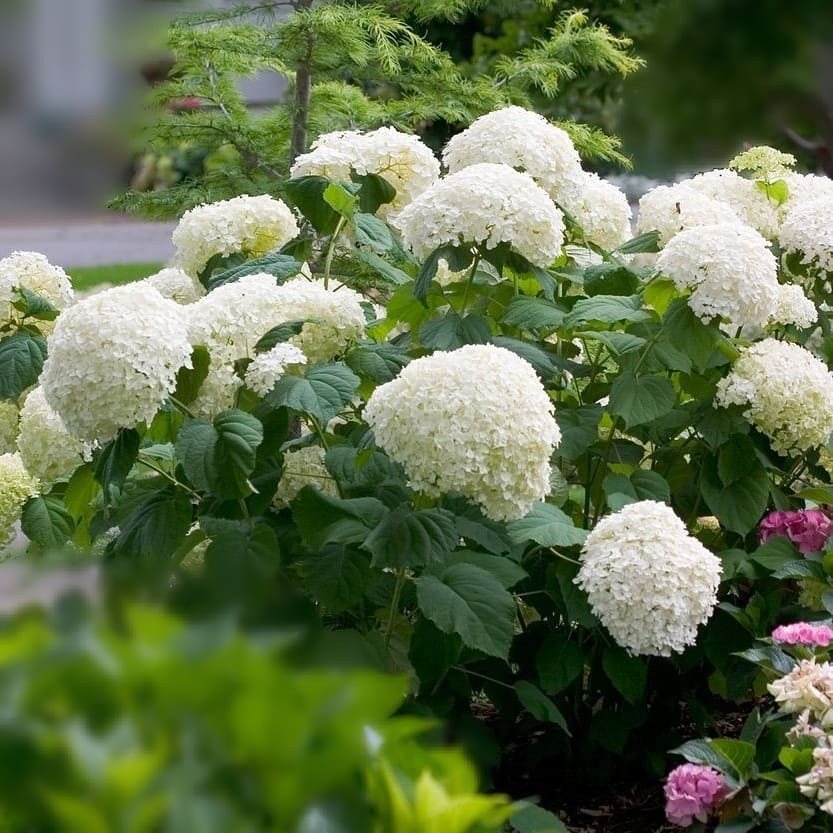
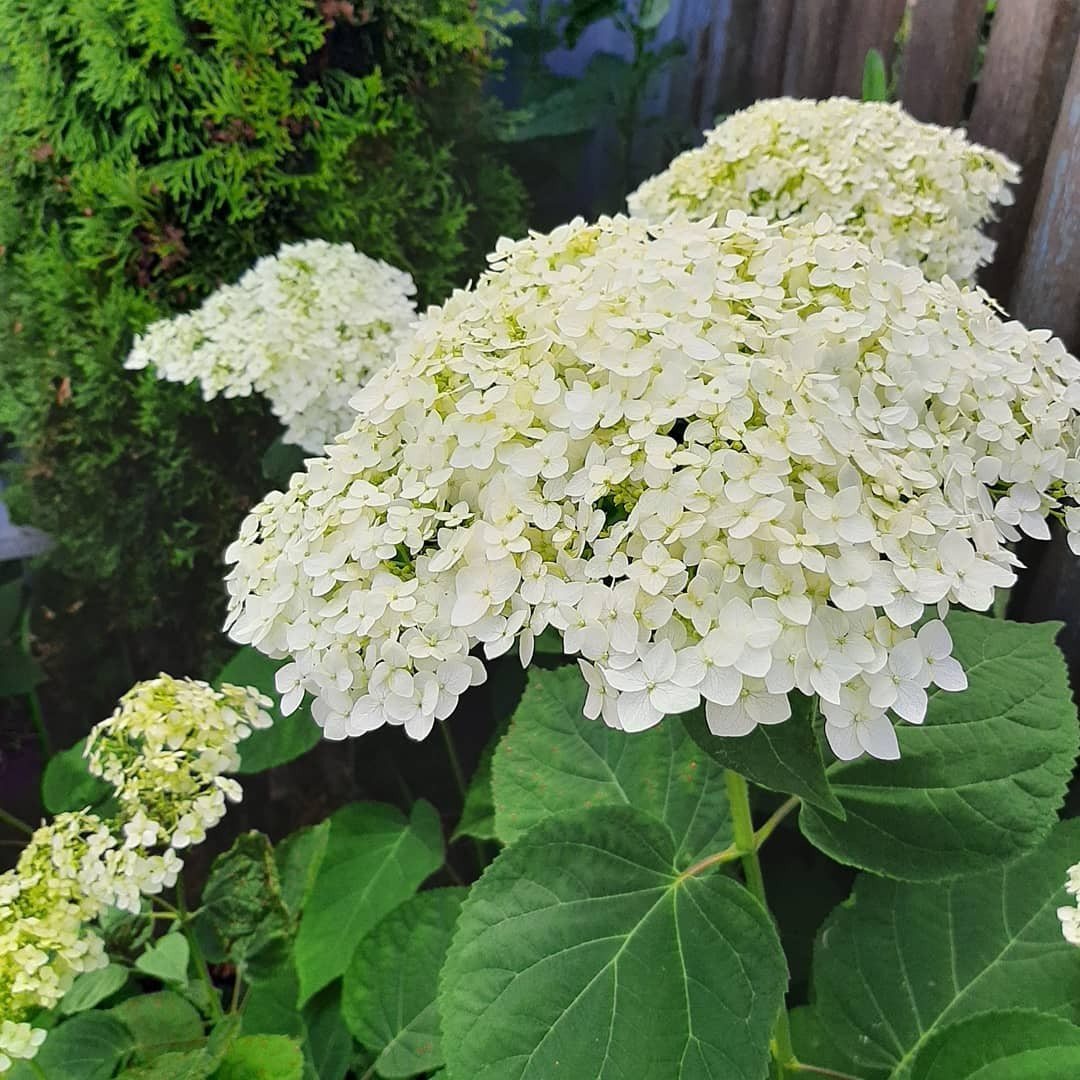

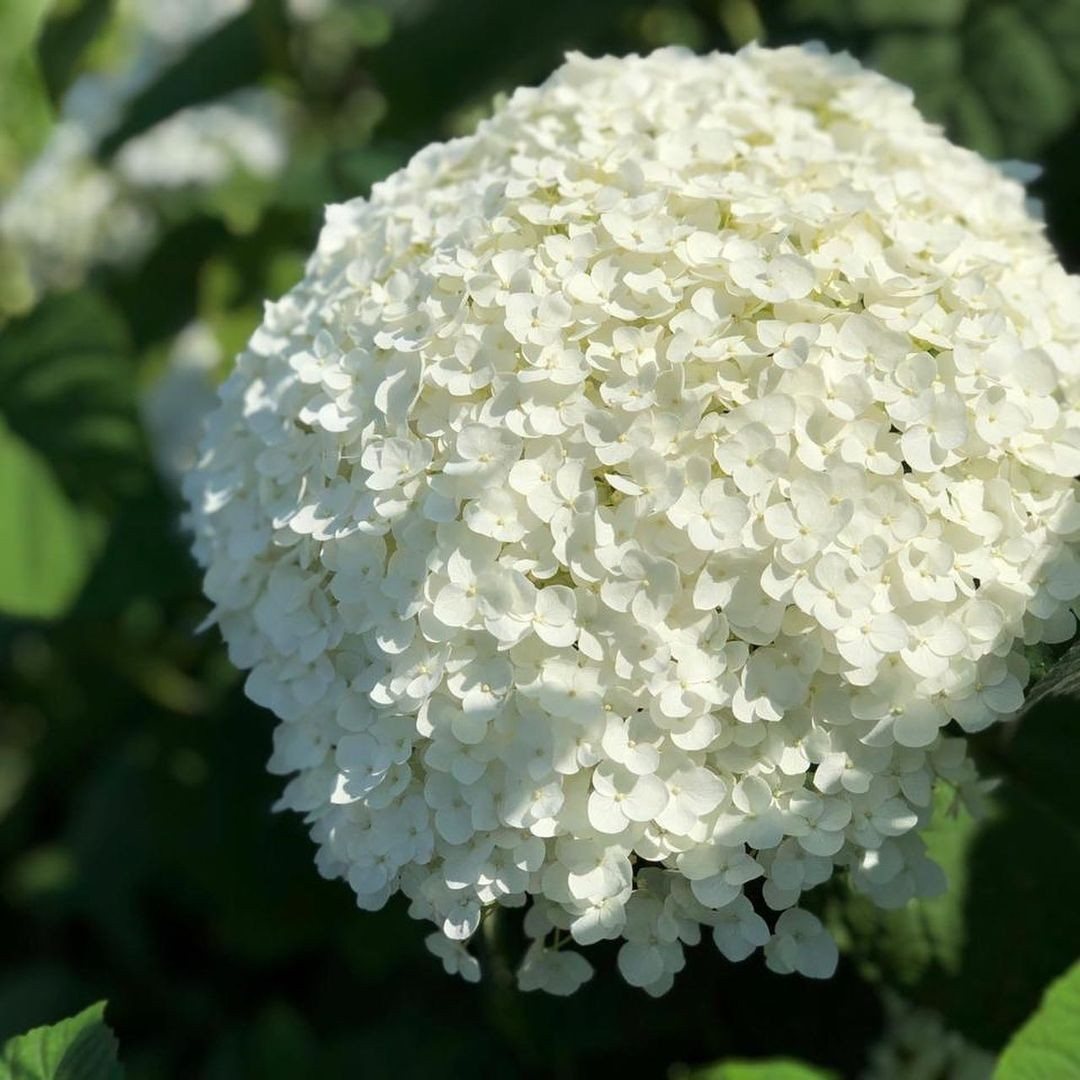





Marmalade
A medium-sized bush, the height of which does not exceed 1.5 m, has light green pointed foliage, lush and openwork inflorescences, as well as pink-crimson flowers that retain their original color for the entire flowering period, which lasts from June to September. The culture tolerates low temperatures well and also looks great in any flower arrangement. The plant is easy to care for and also has a compact size.
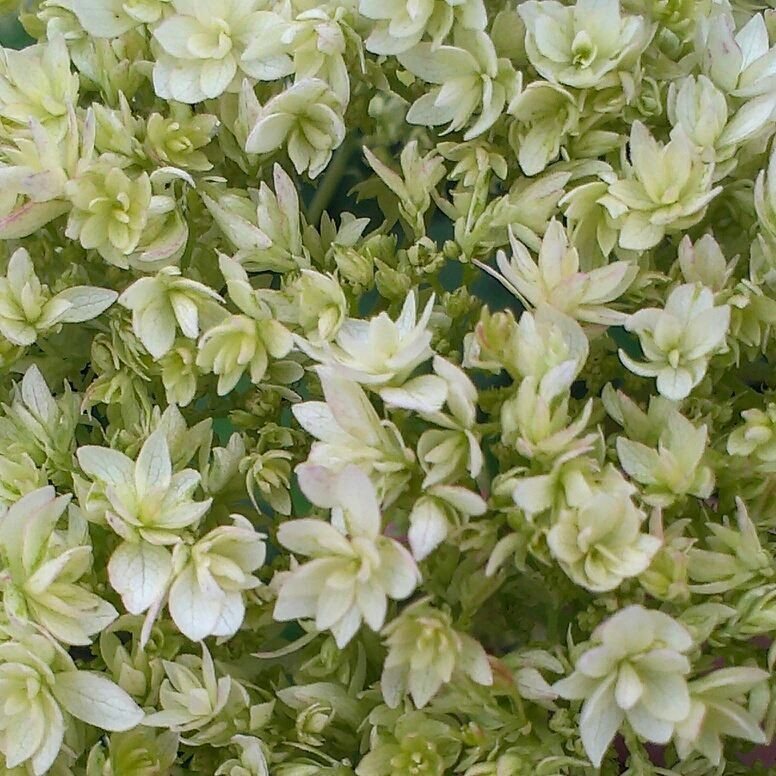
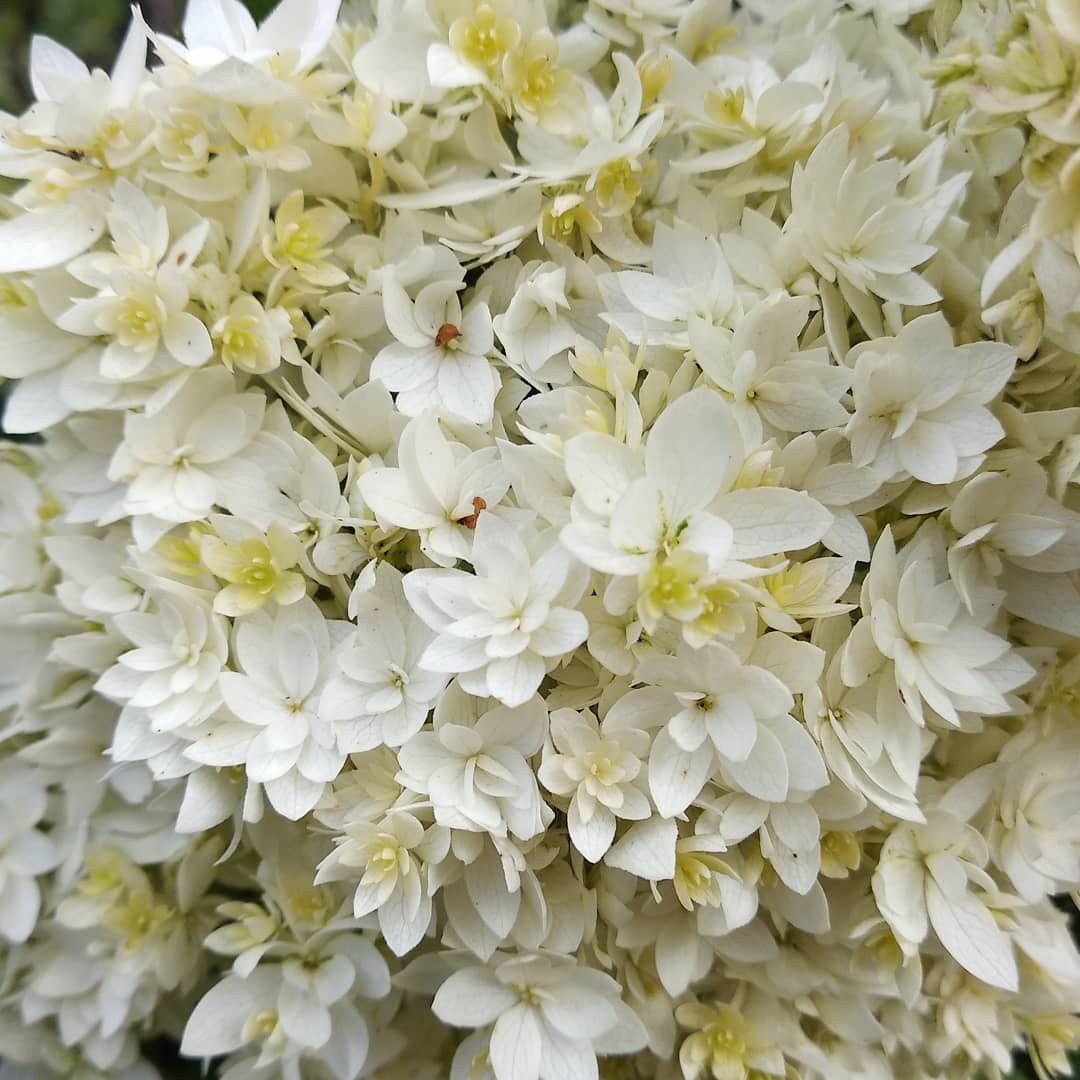
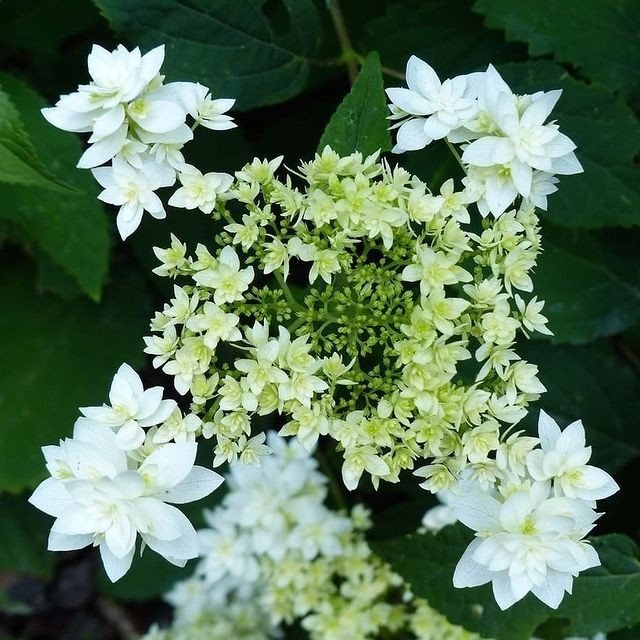
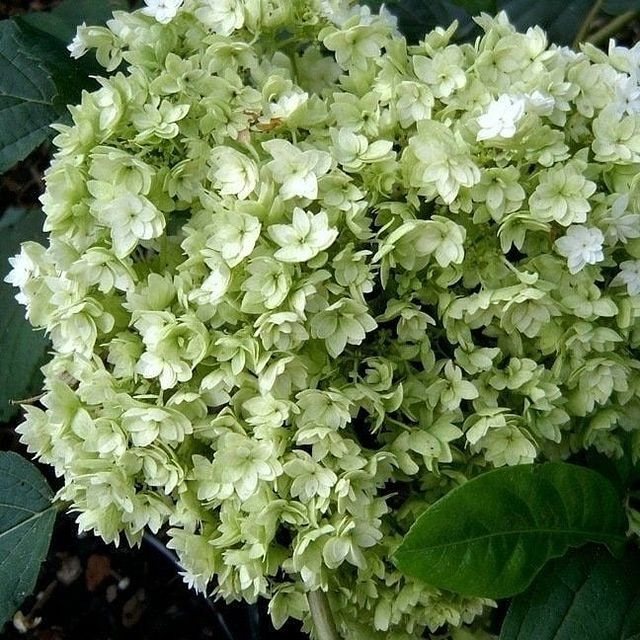
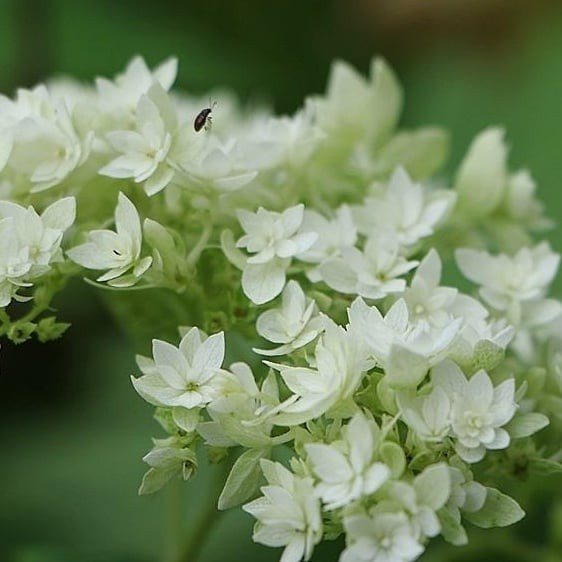





U&M Tugese
The height of an adult plant is 90 cm, and the diameter of the flowers is 20 cm. Hydrangea blooms from July to the end of September, and also has an average frost resistance. The crown diameter is 100 cm. The plant's characteristics include the ability to change the color of flowers.
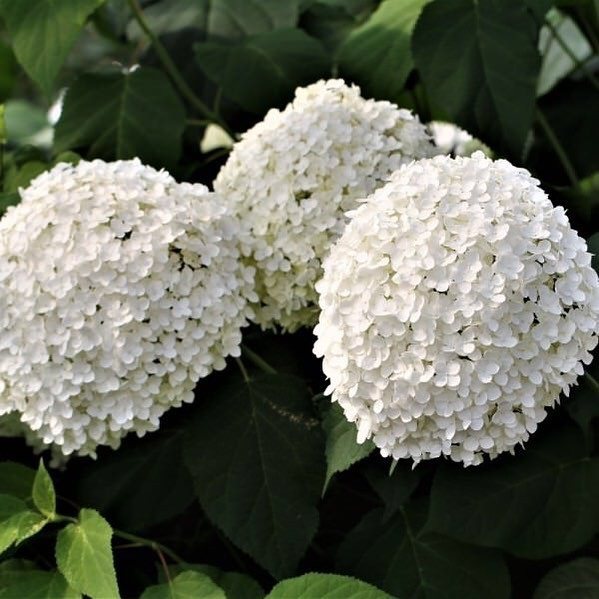
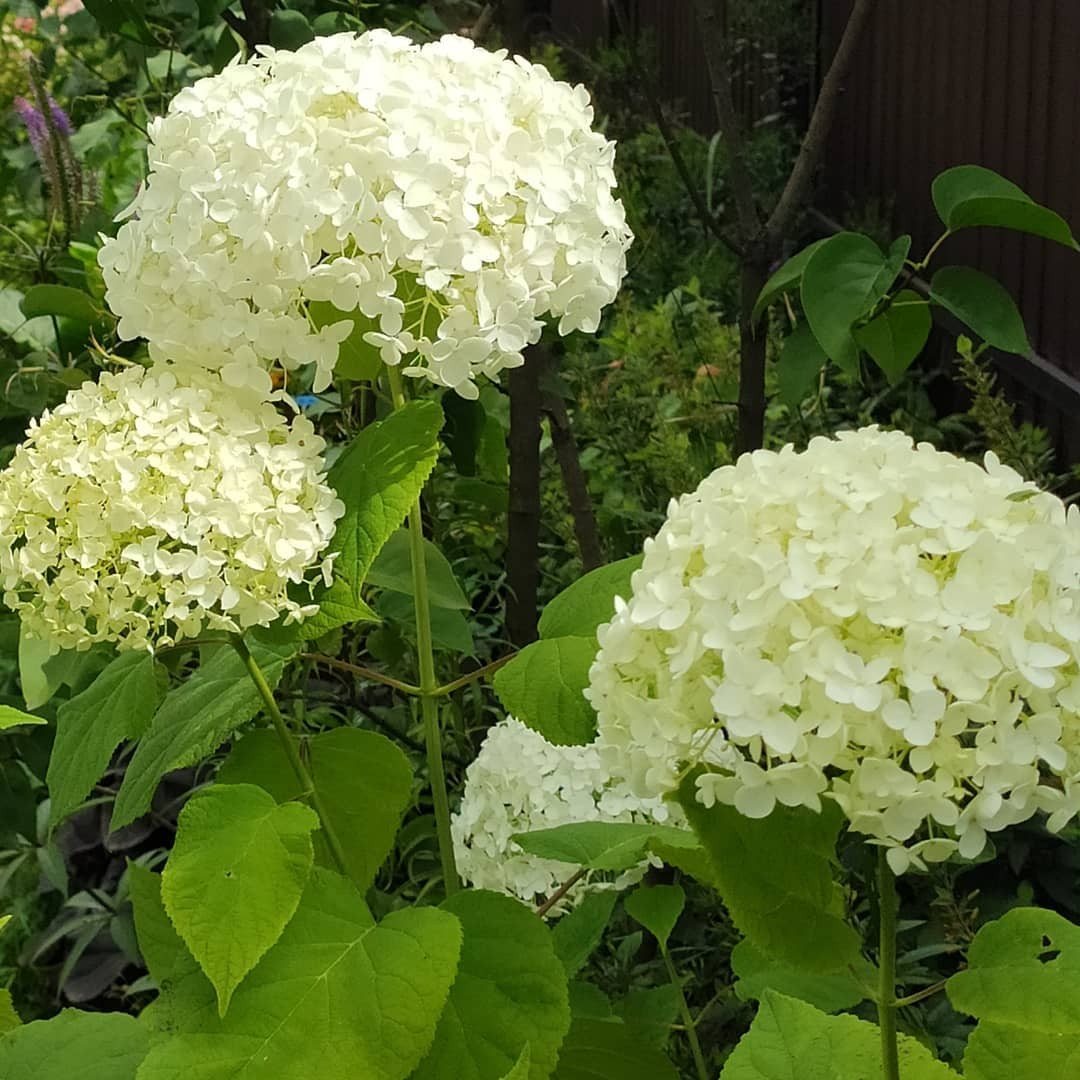
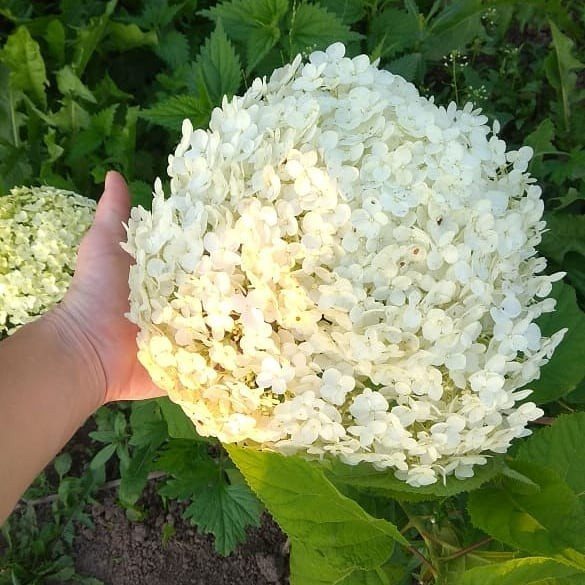
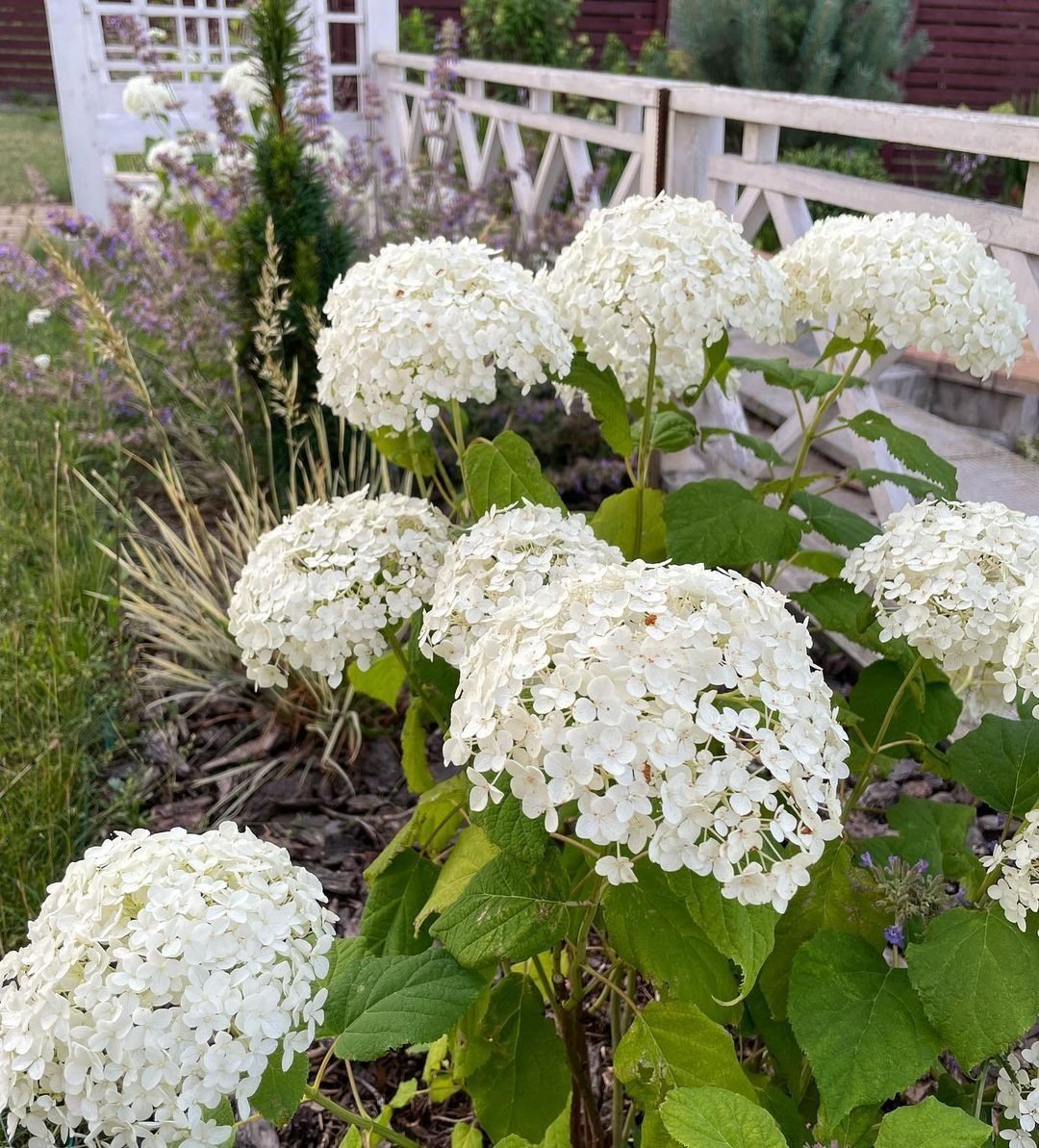
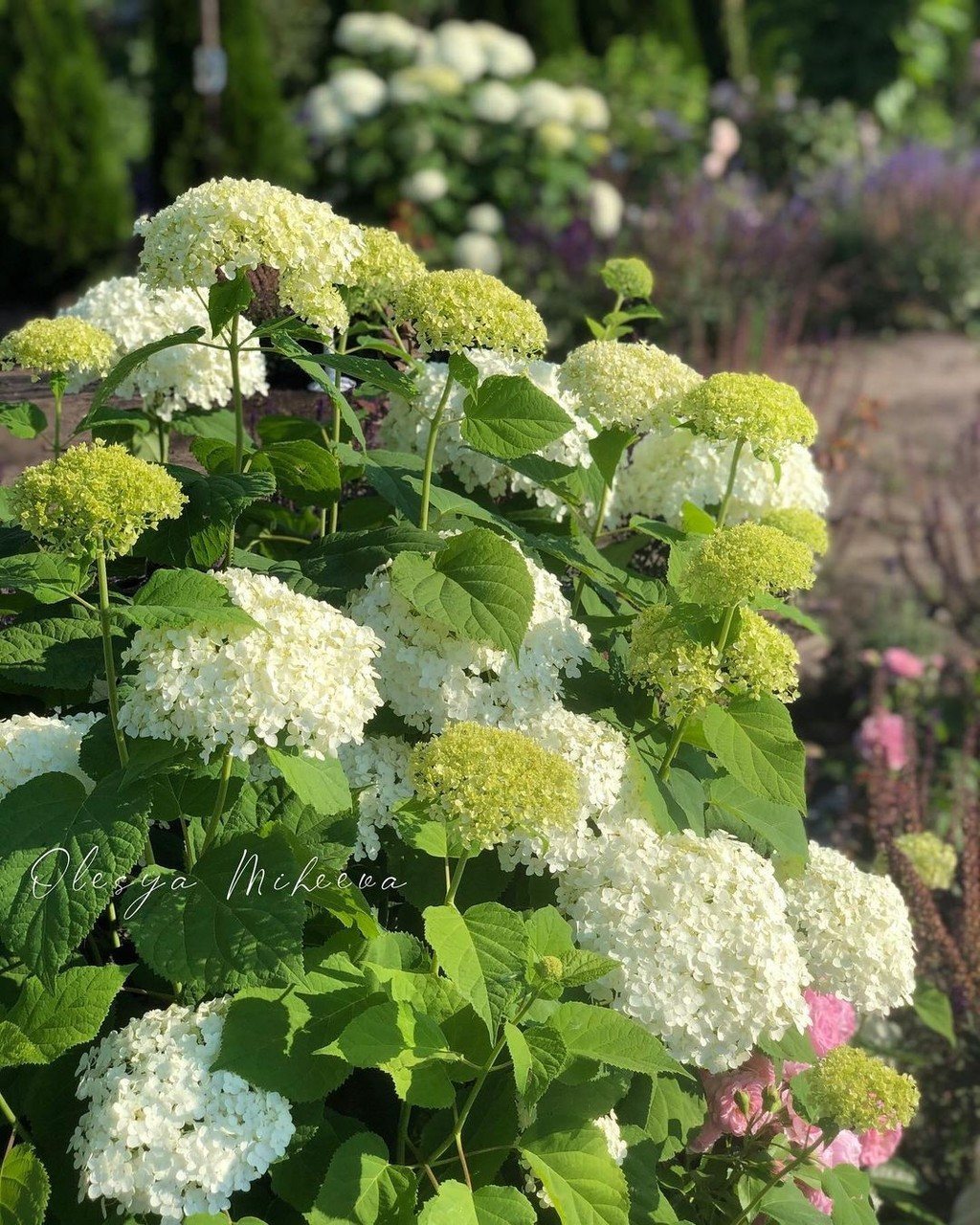





Bouquet Rose
Chile and North America are considered the homeland of this perennial variety. The large-leaved shrub is distinguished by lush flowering, excellent frost resistance and ease of care. It has a spherical crown, erect shoots and beautiful flowers. The maximum height is 1.3 m.
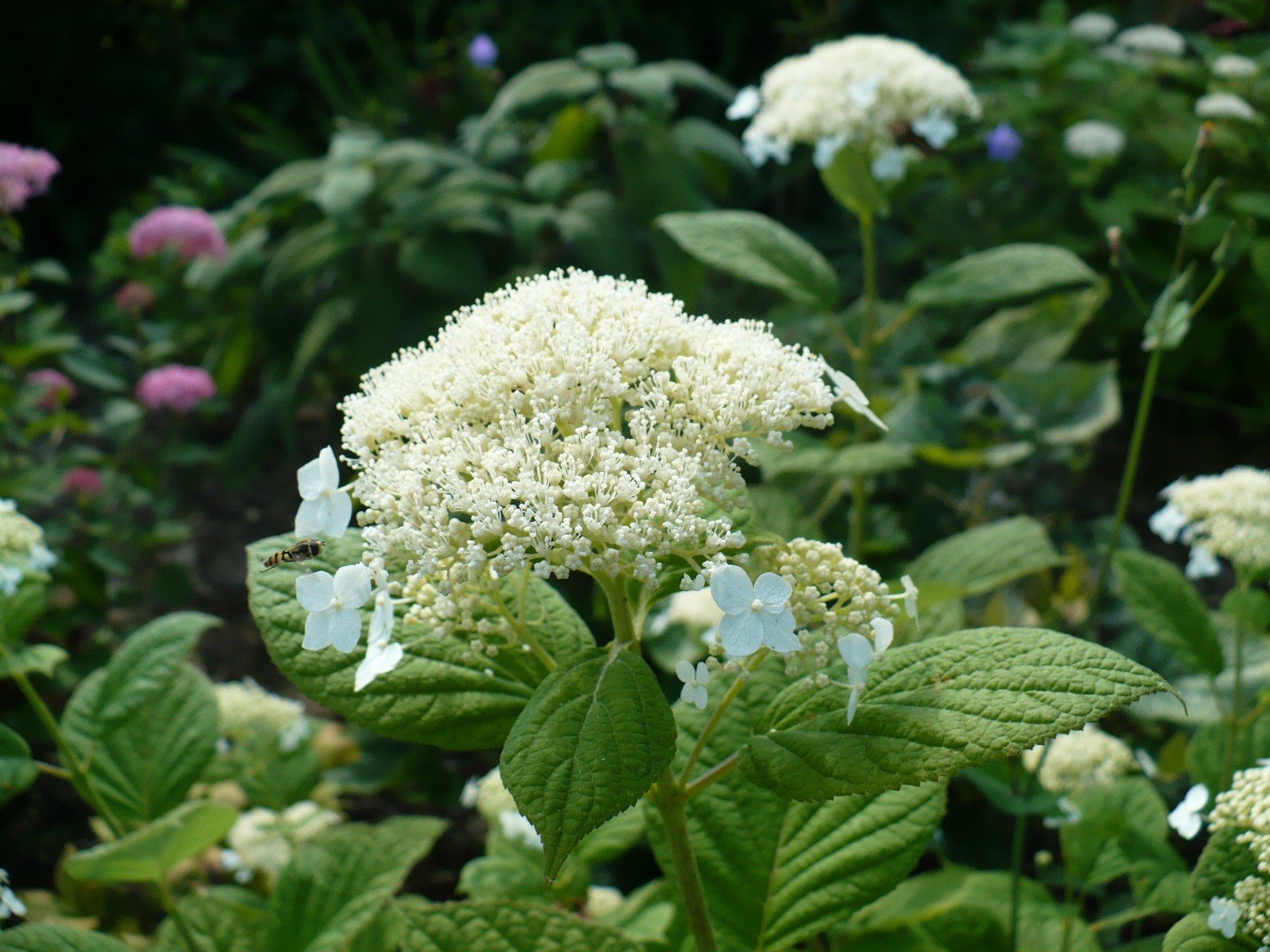


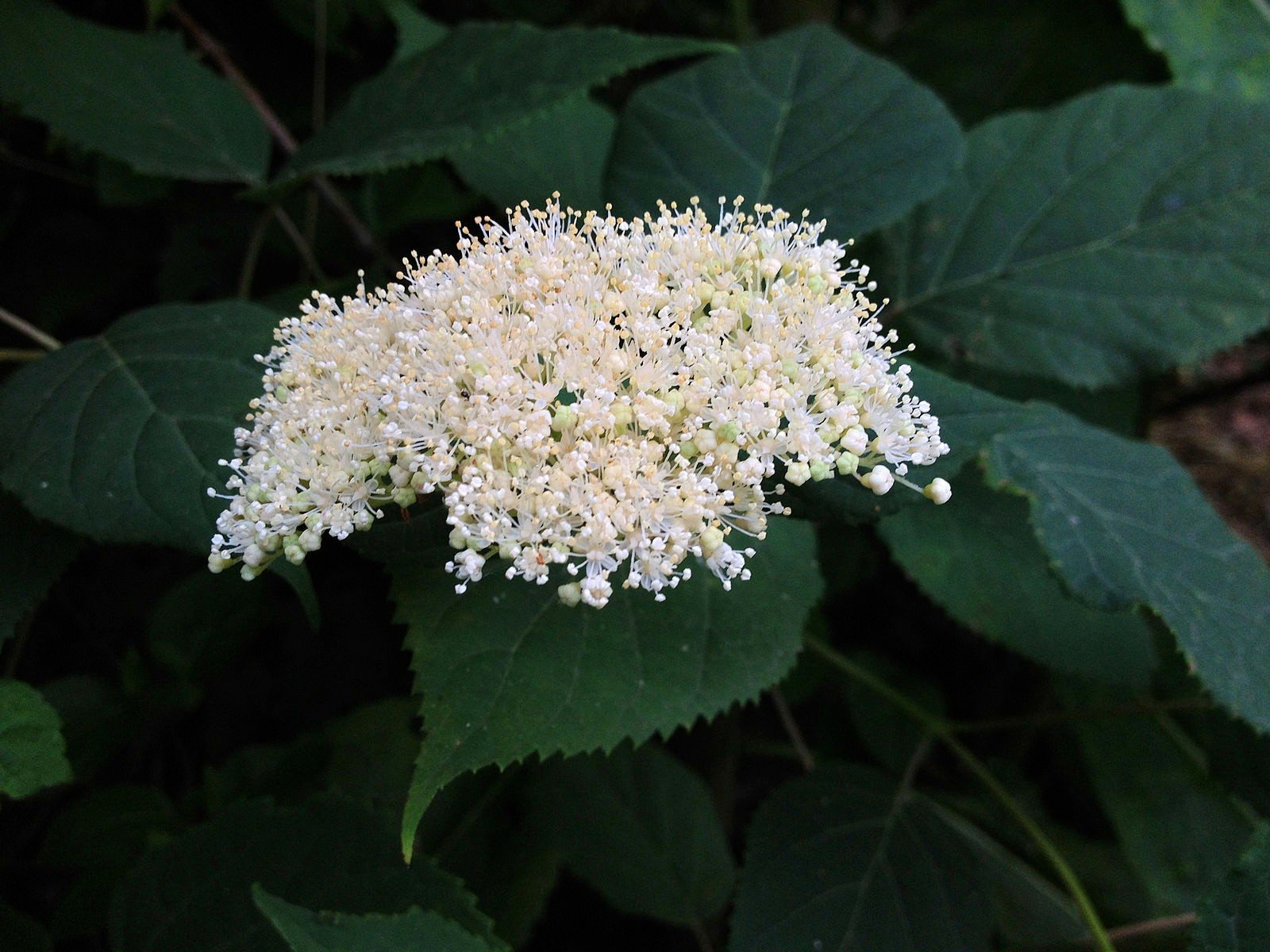
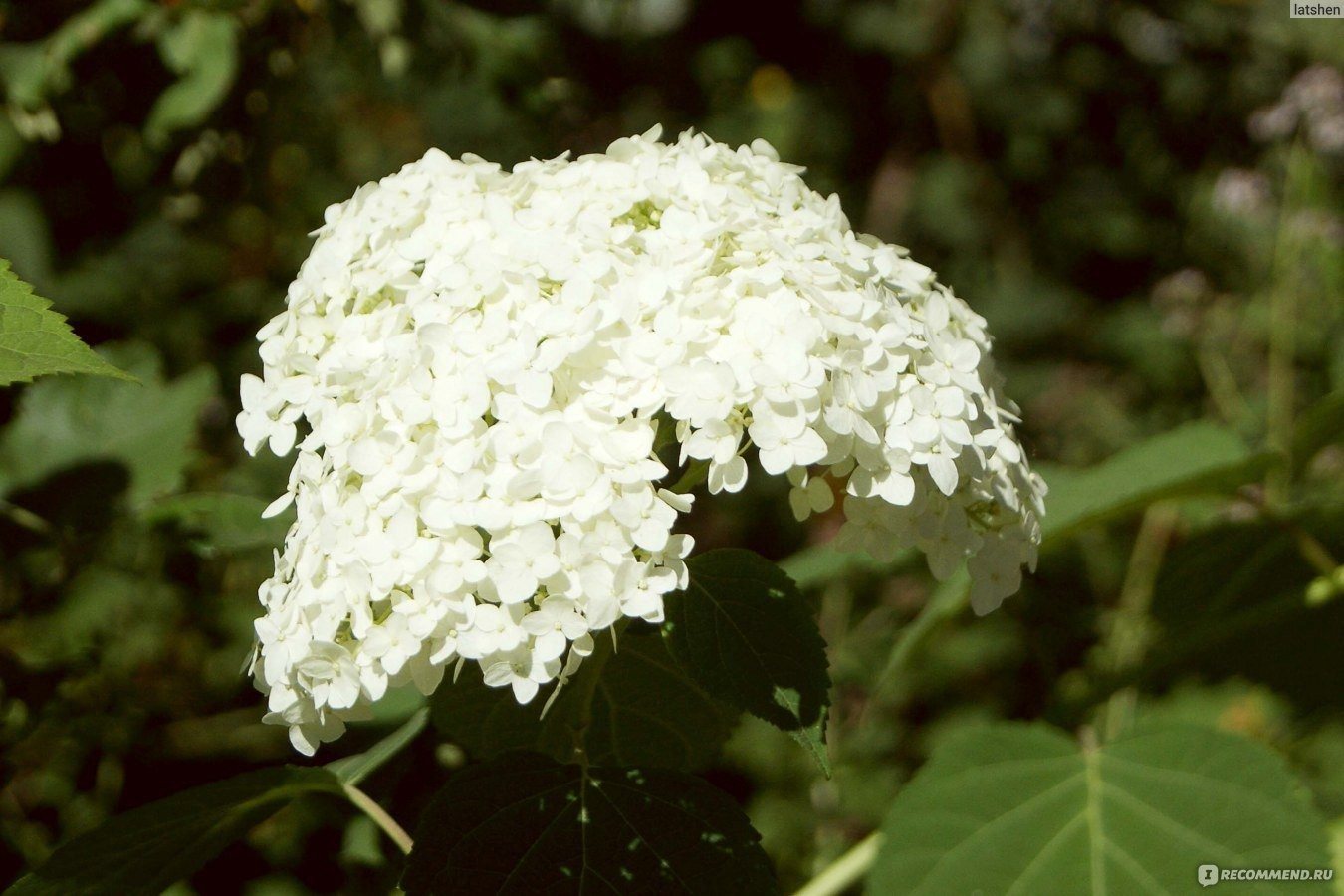





runaway Bride
The plant has white and pink flowers, green leaves and spreading side branches. The culture is resistant to frost, and its height reaches 1 m. The flowering period lasts from April to the end of September. Flowers are formed even on the lateral buds.

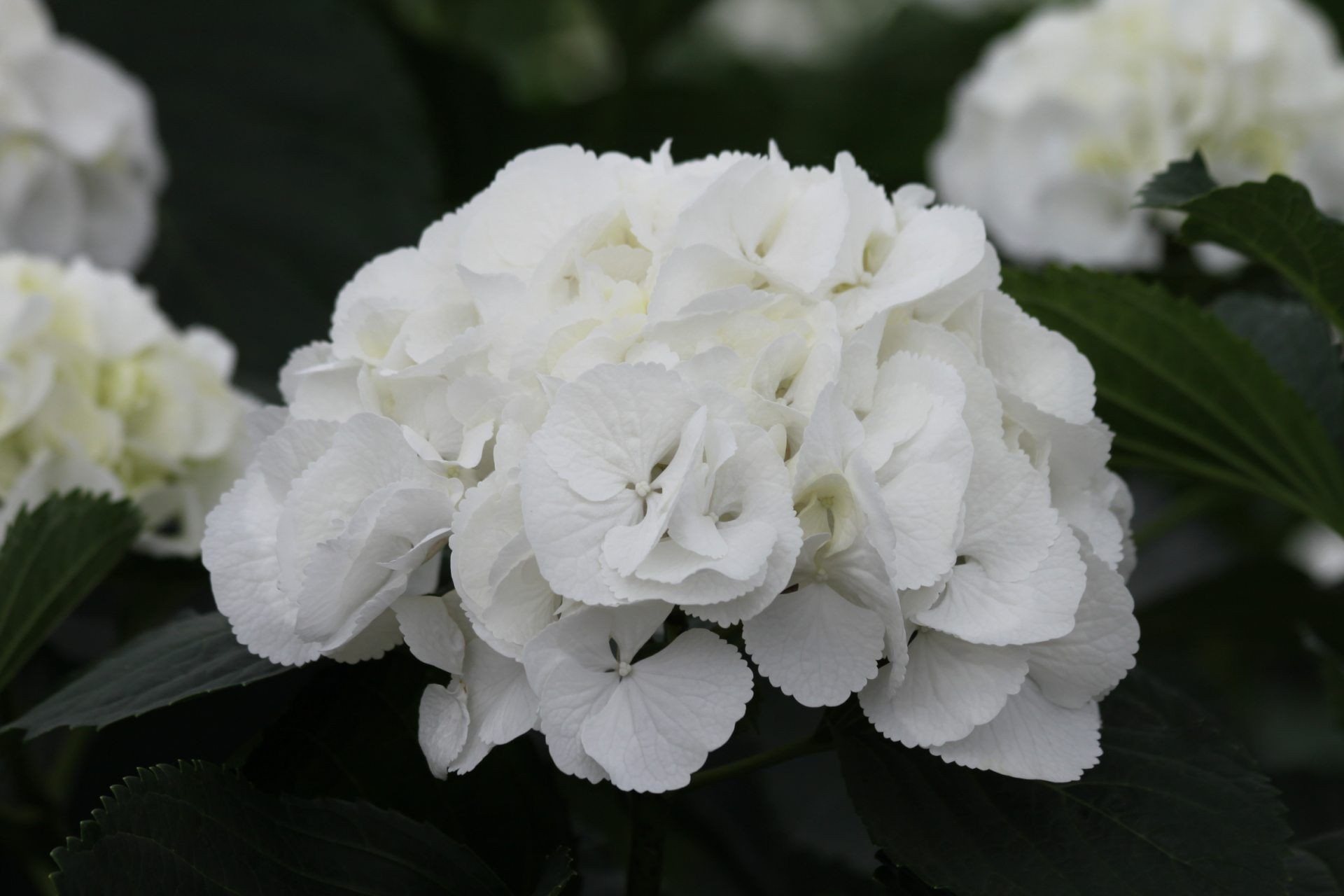
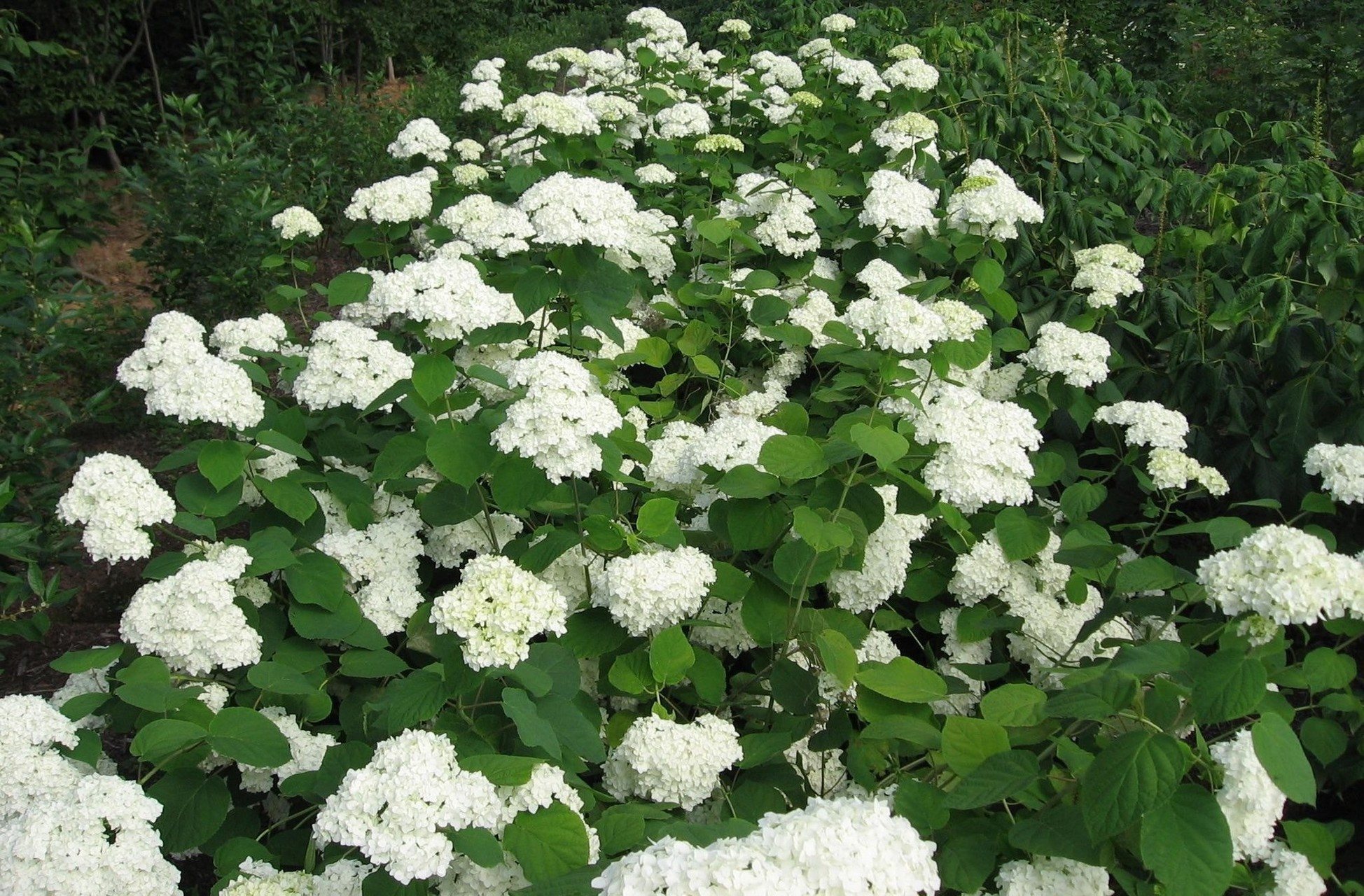



Hydrangea
In another way, this species is called wild or smooth. Features of culture include:
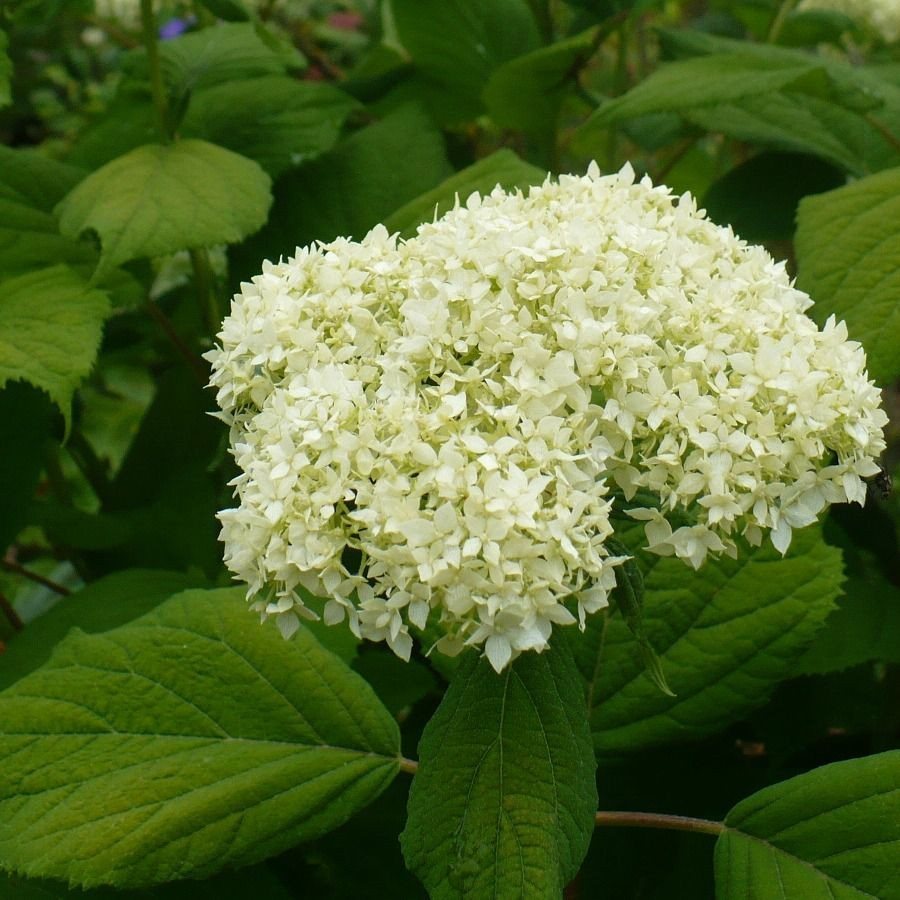

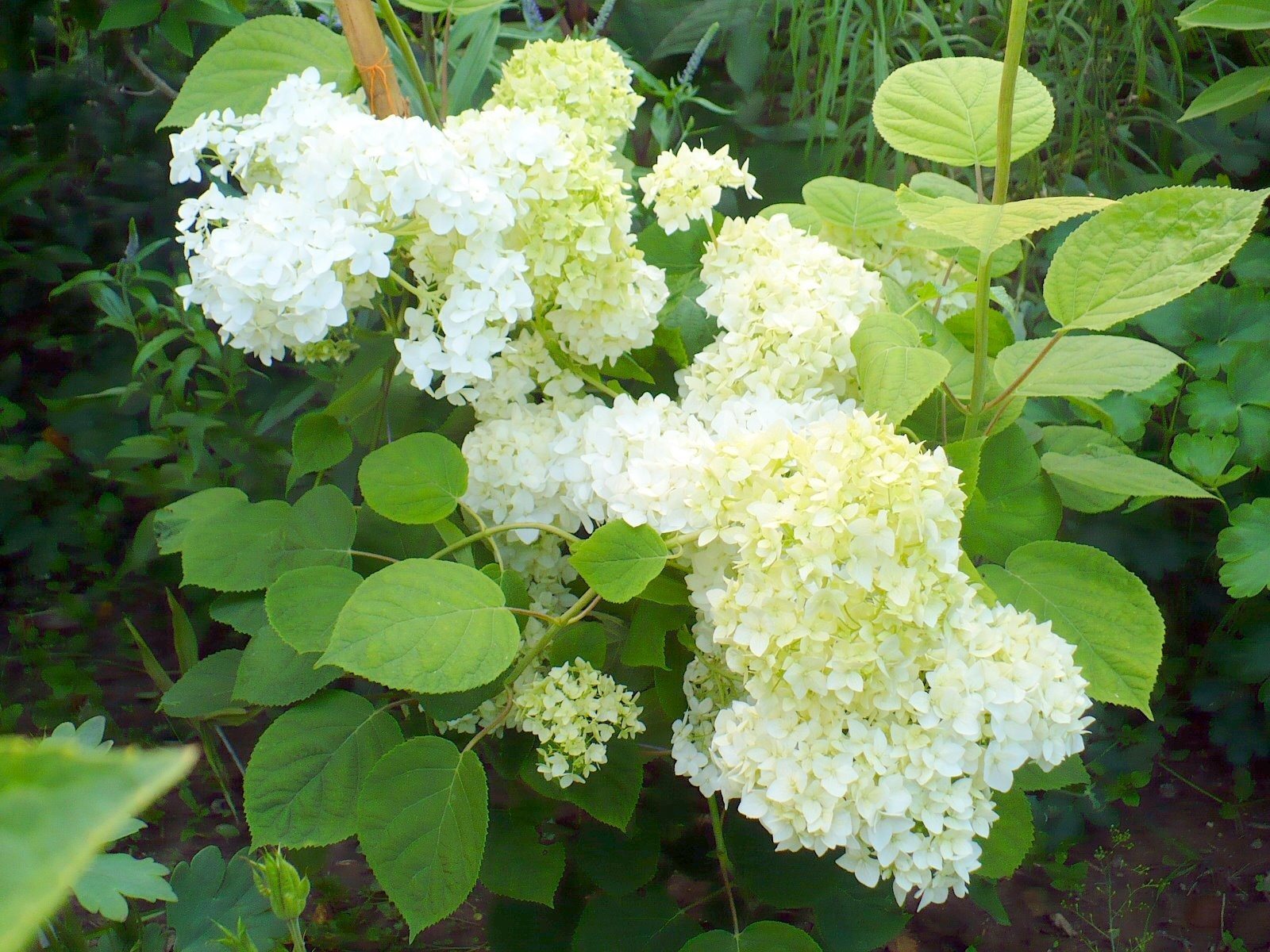
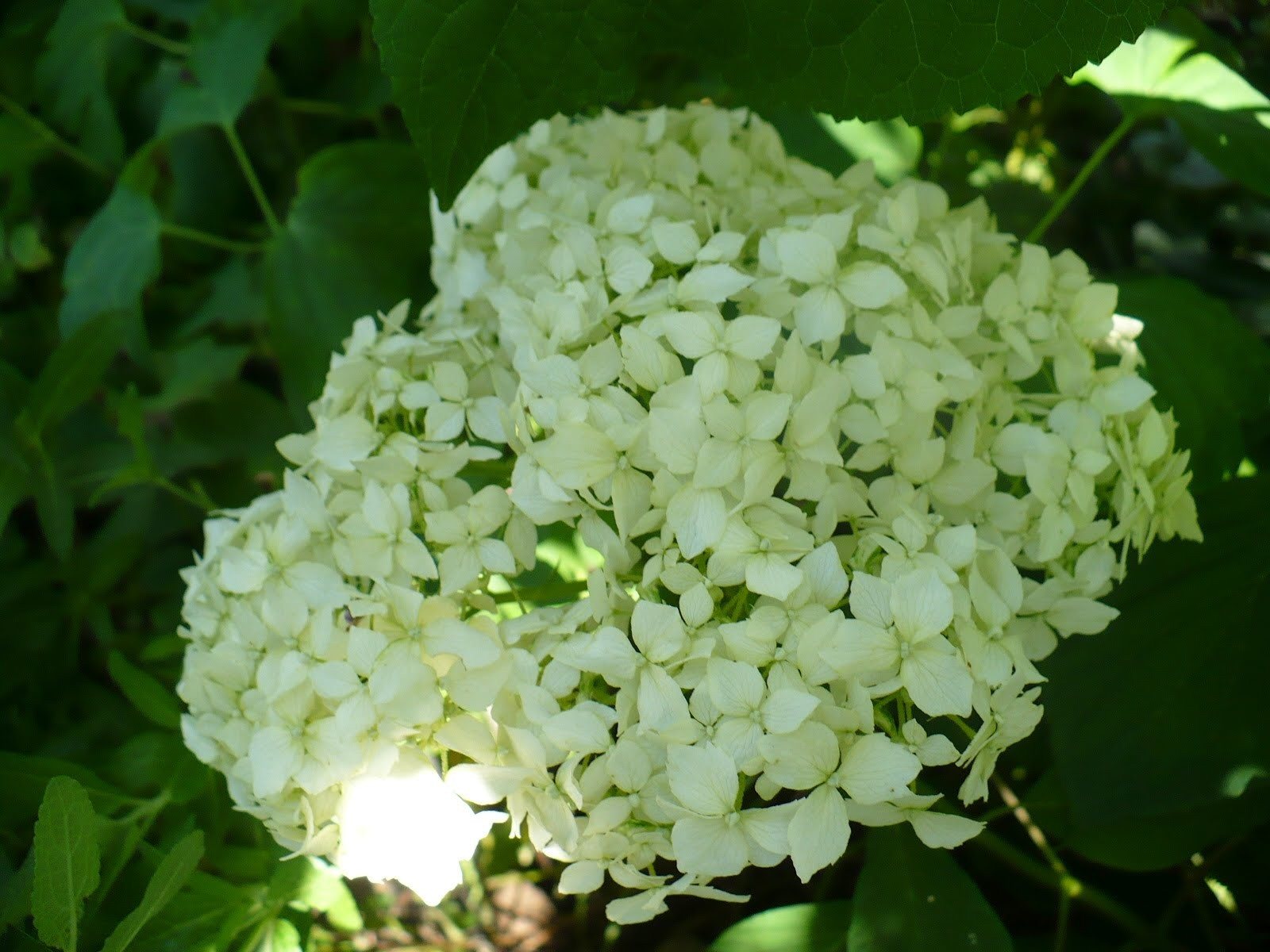
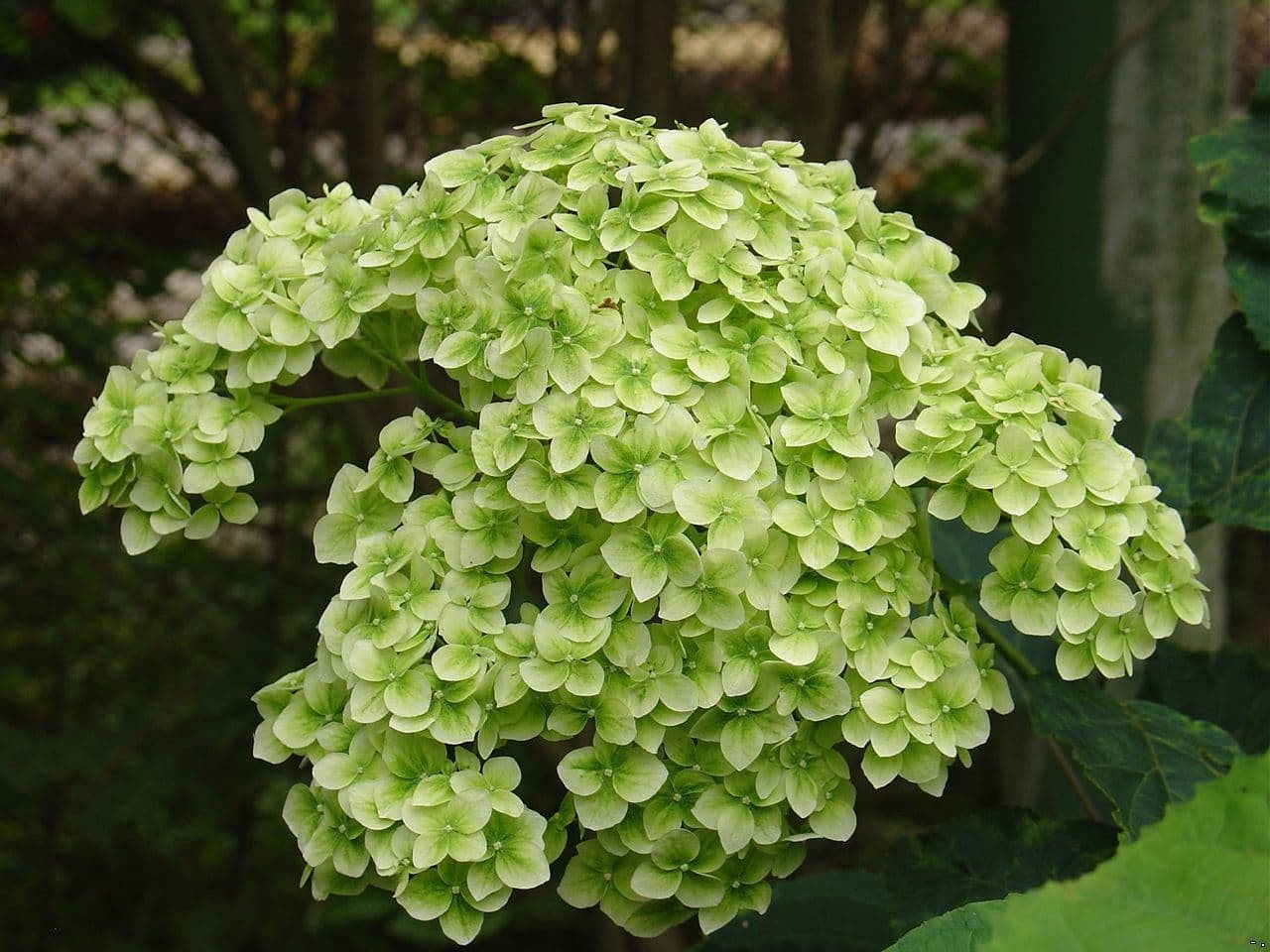





high resistance to frost, so hydrangea is grown even in the northern regions of the country;
the presence of erect shoots;
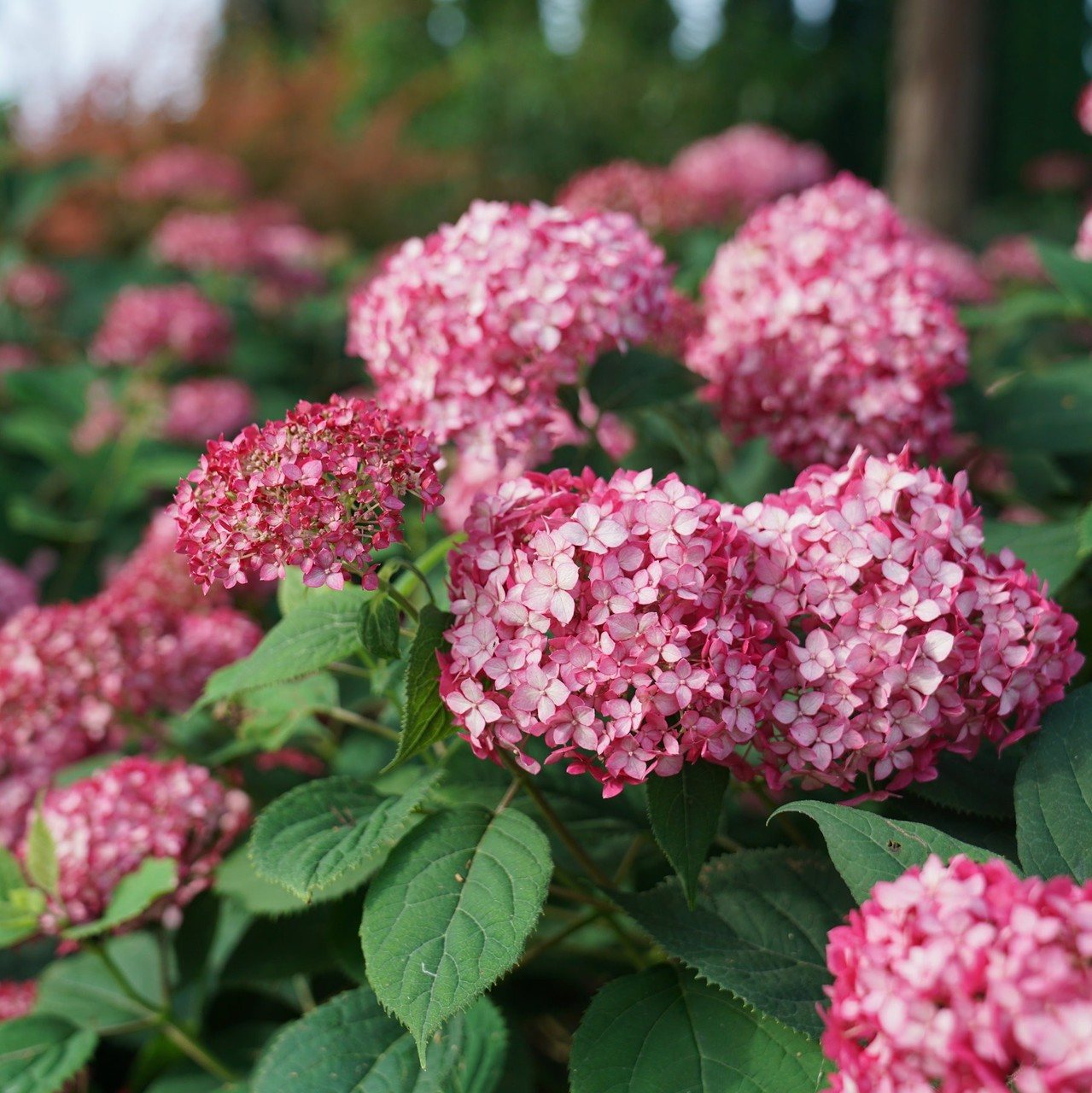
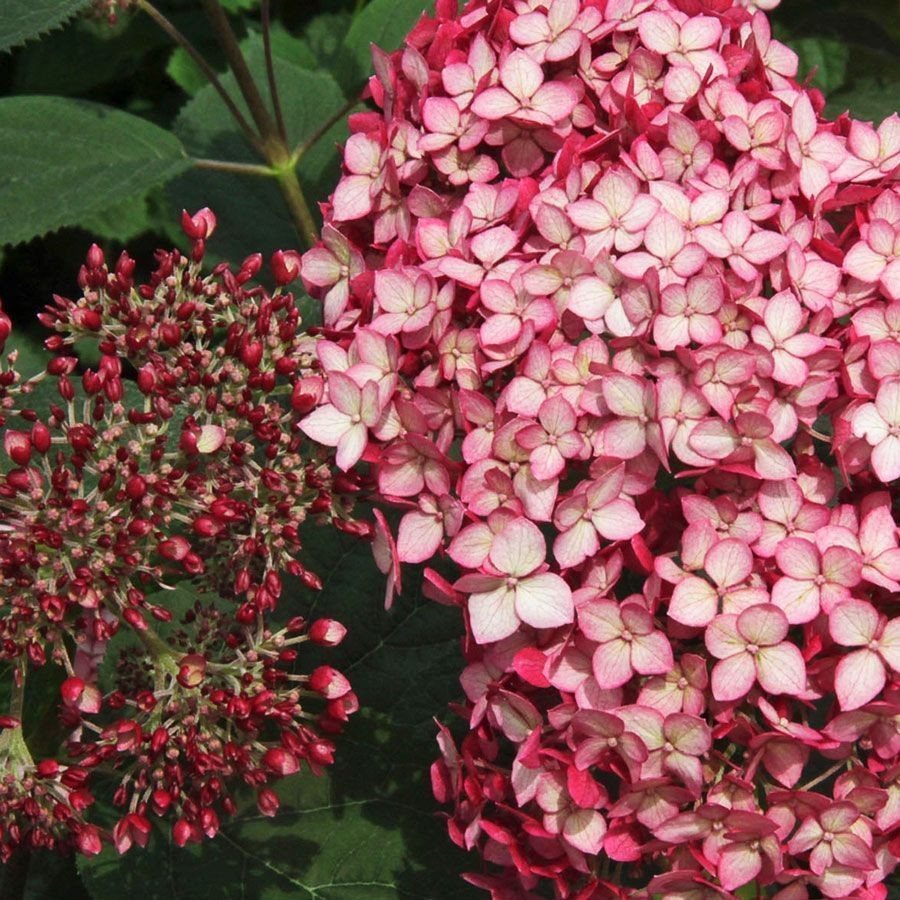
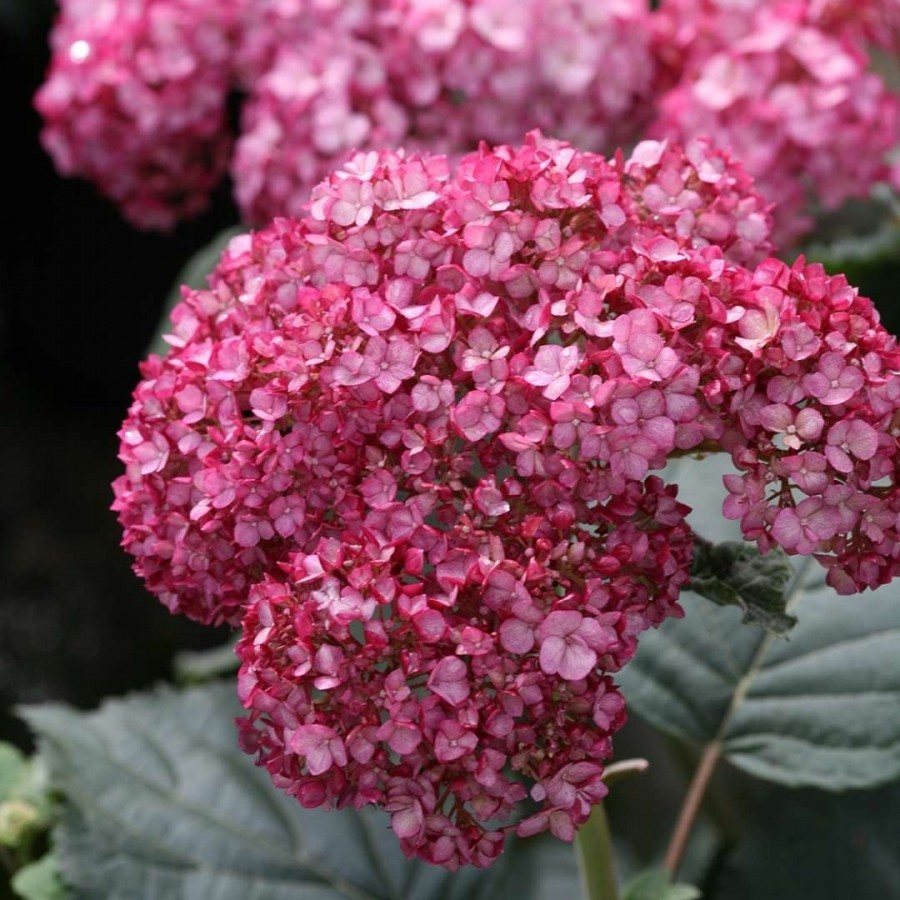
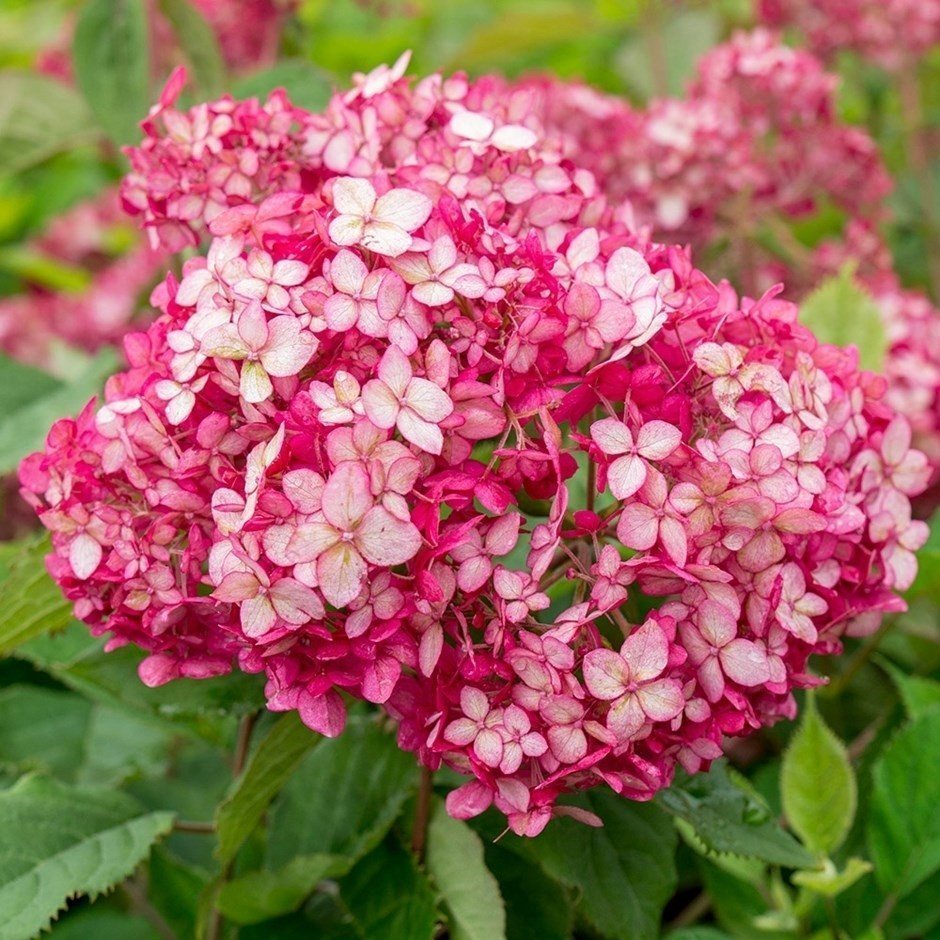




the plant develops in the form of a shrub, the height of which does not exceed three meters;
the leaves have a round shape.
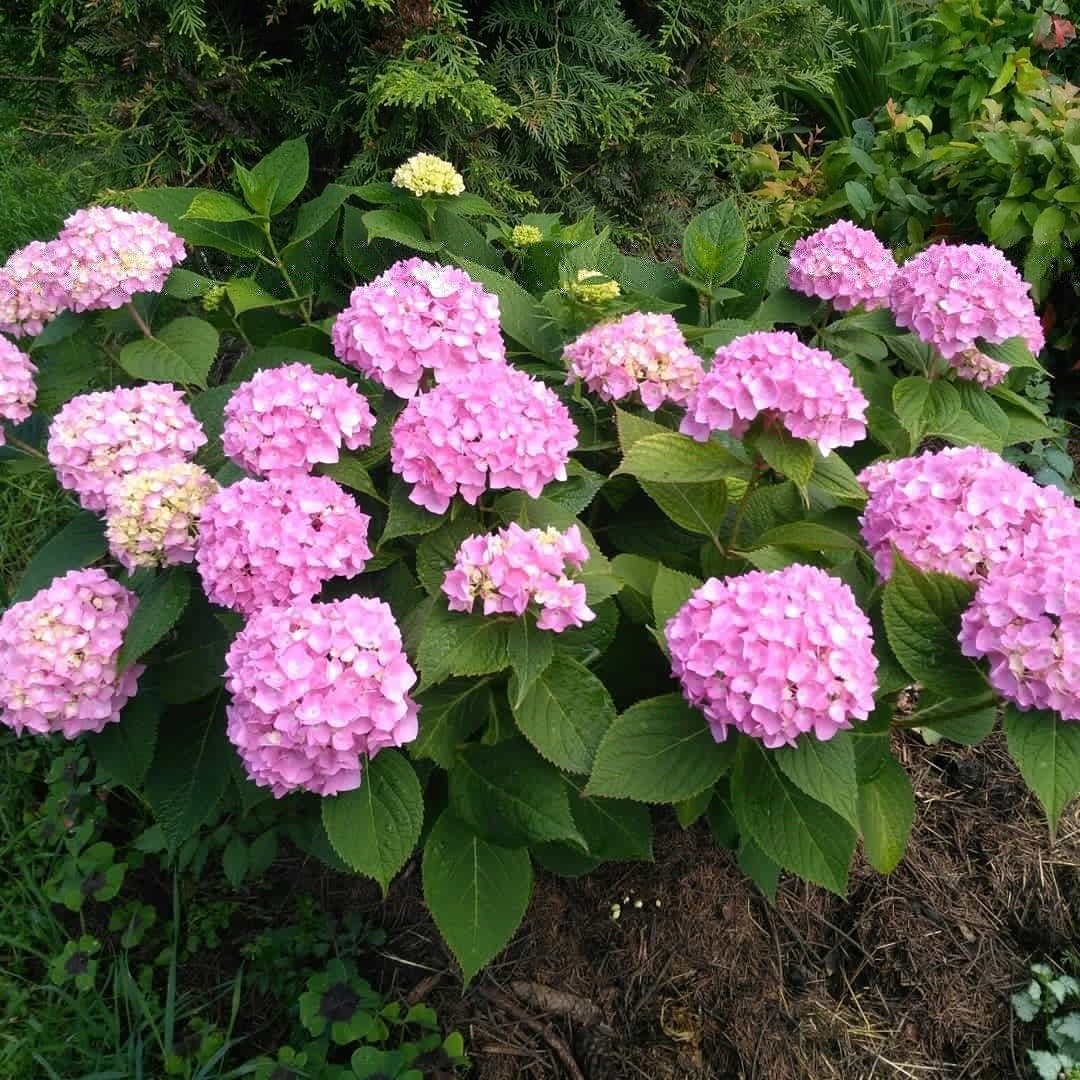
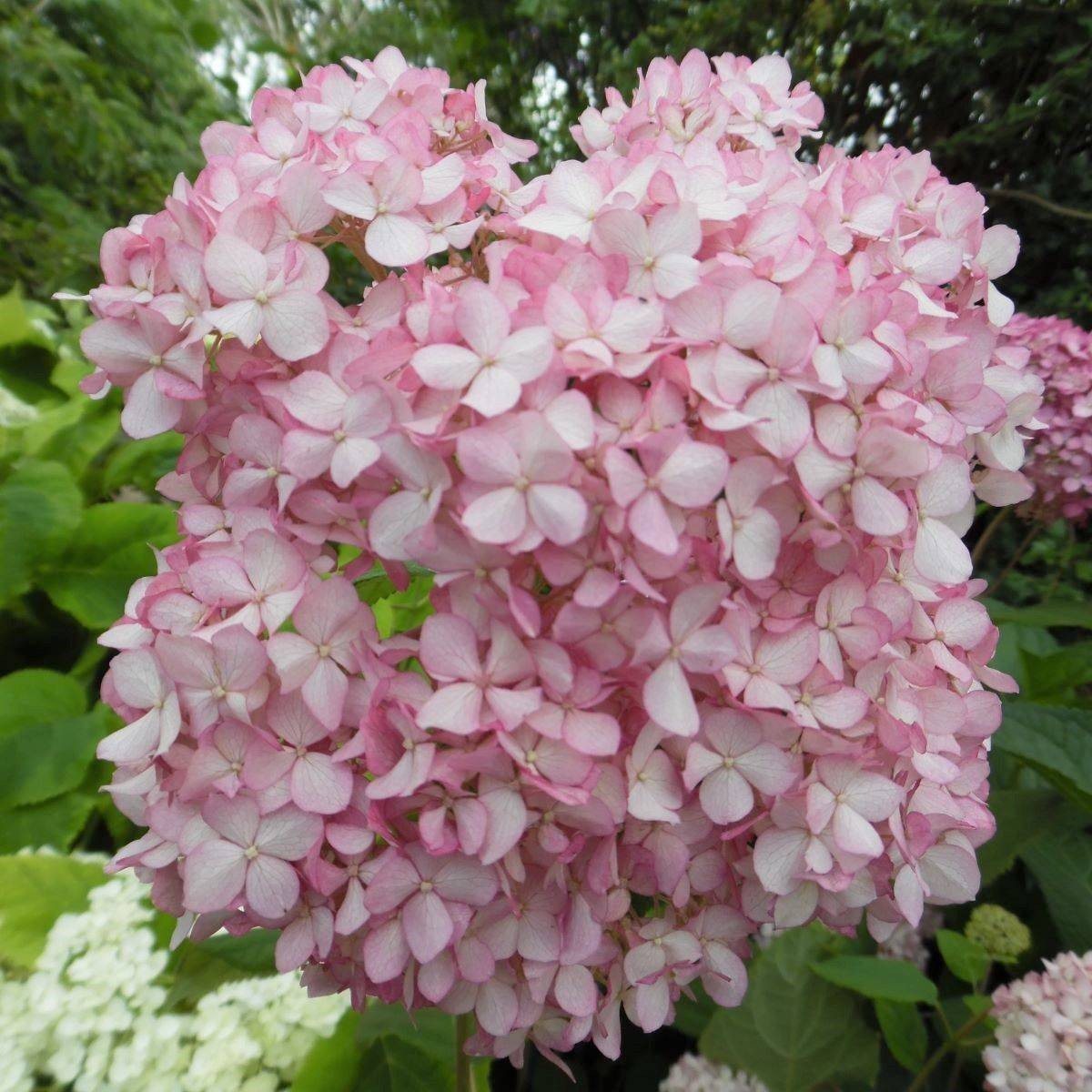
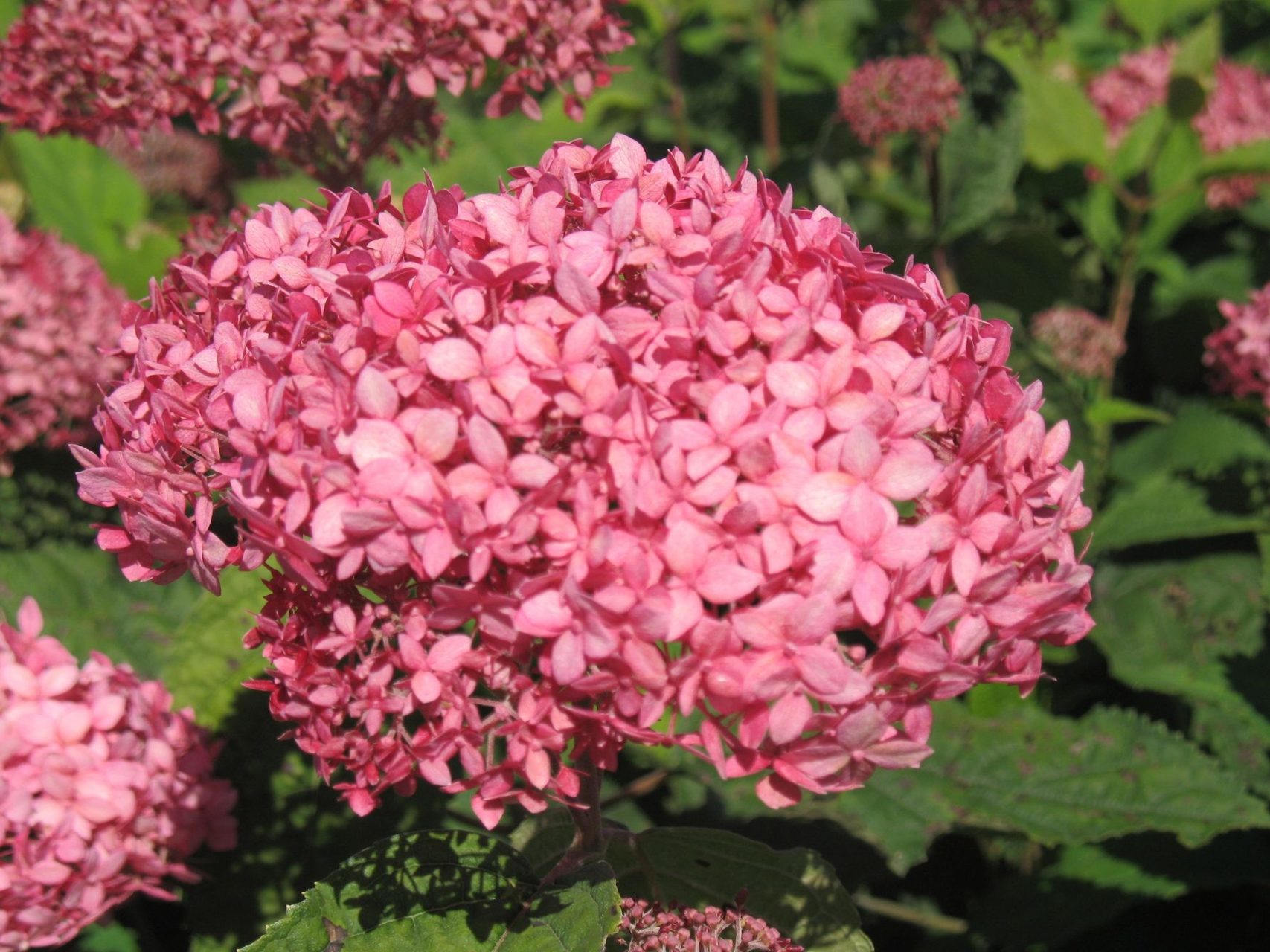
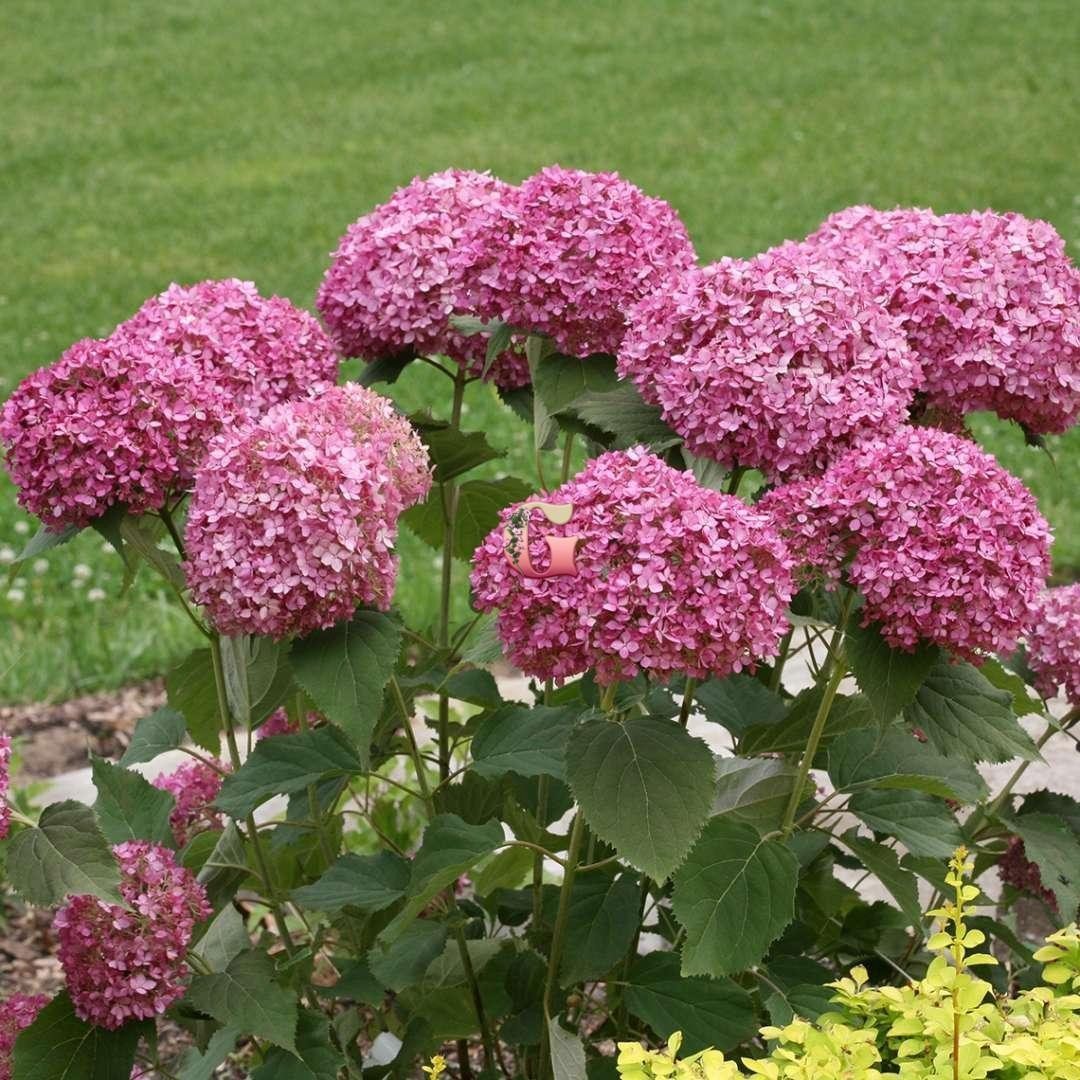
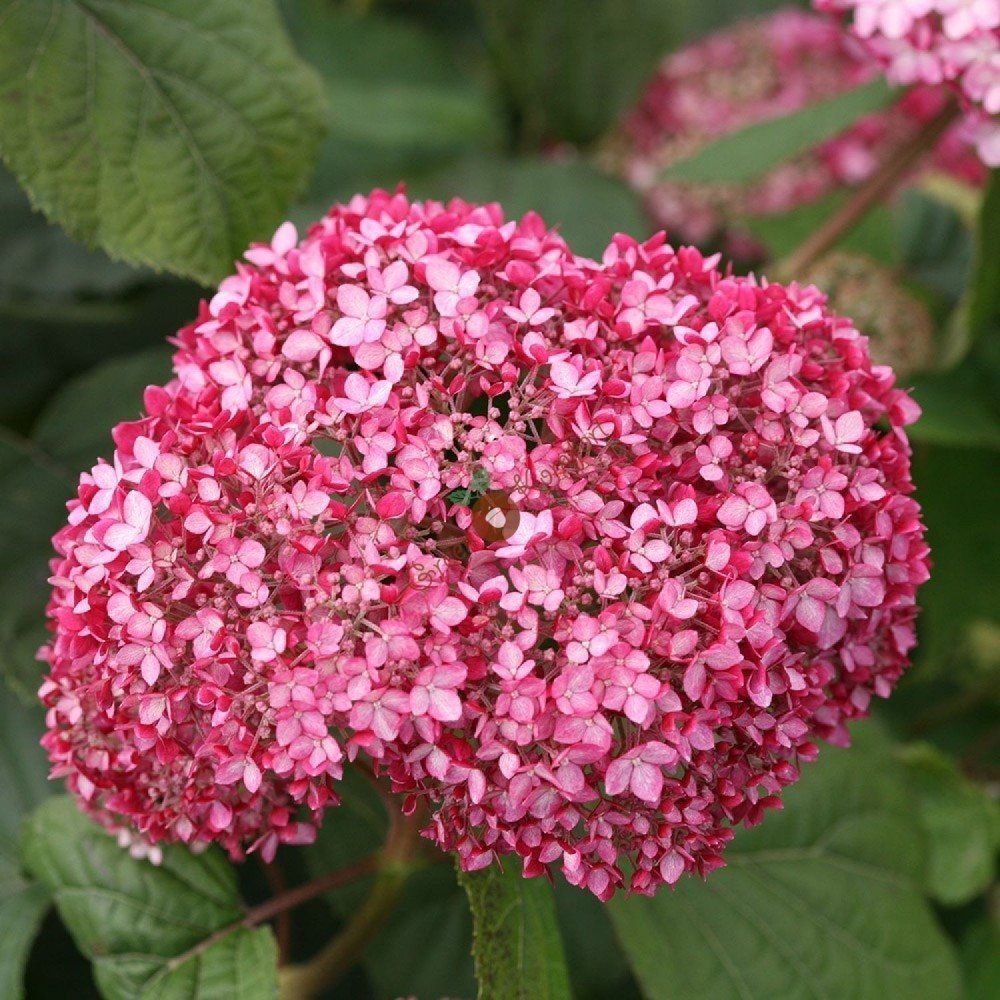





This species is presented in several varieties, so any gardener can choose the most suitable option for his garden.
Golden Annabel or Golden Anabel
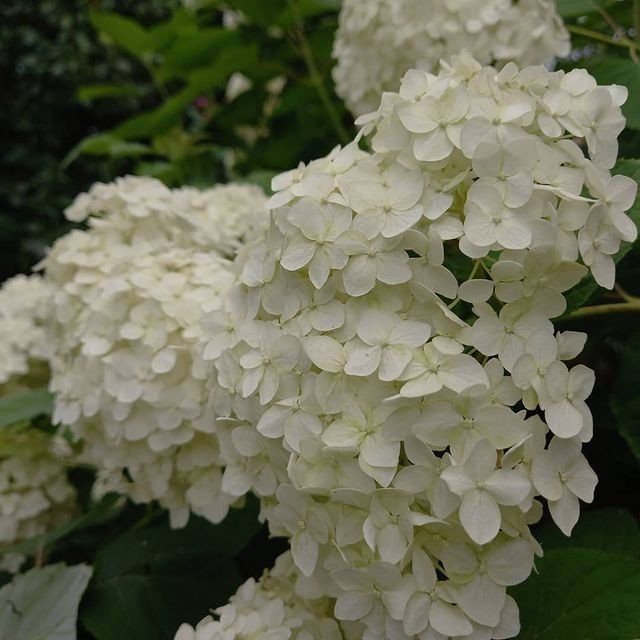

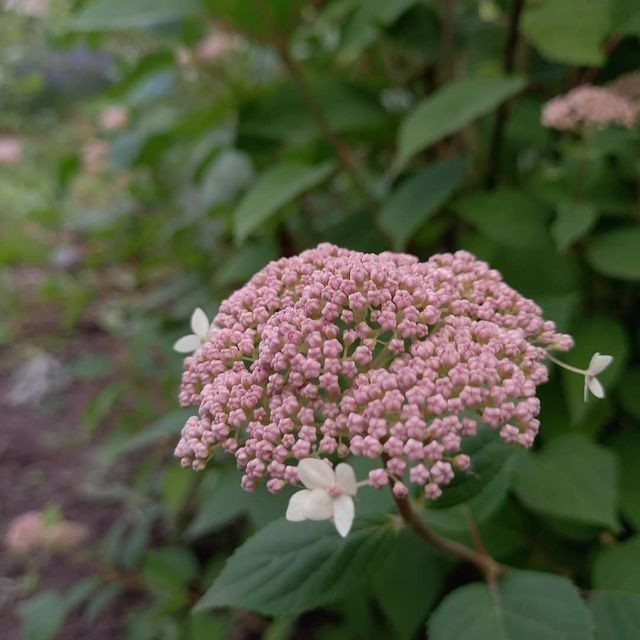

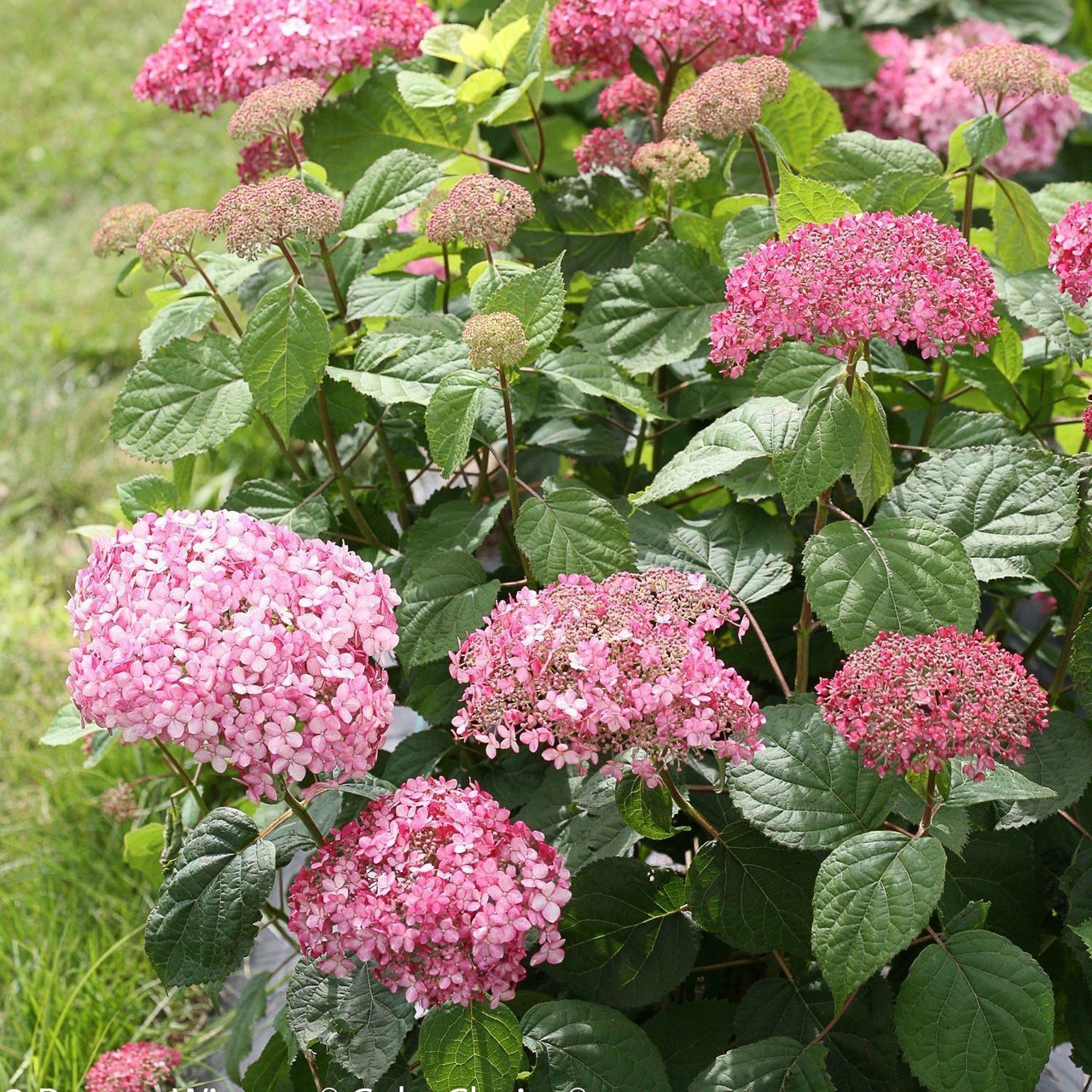





The variety appeared on the market in 2018, but quickly became popular. Its differences include a long flowering period and beautiful large inflorescences that change color from lime to cream. The foliage has a golden yellow color, so hydrangea has decorative value even outside the flowering period.
Lime Ricky
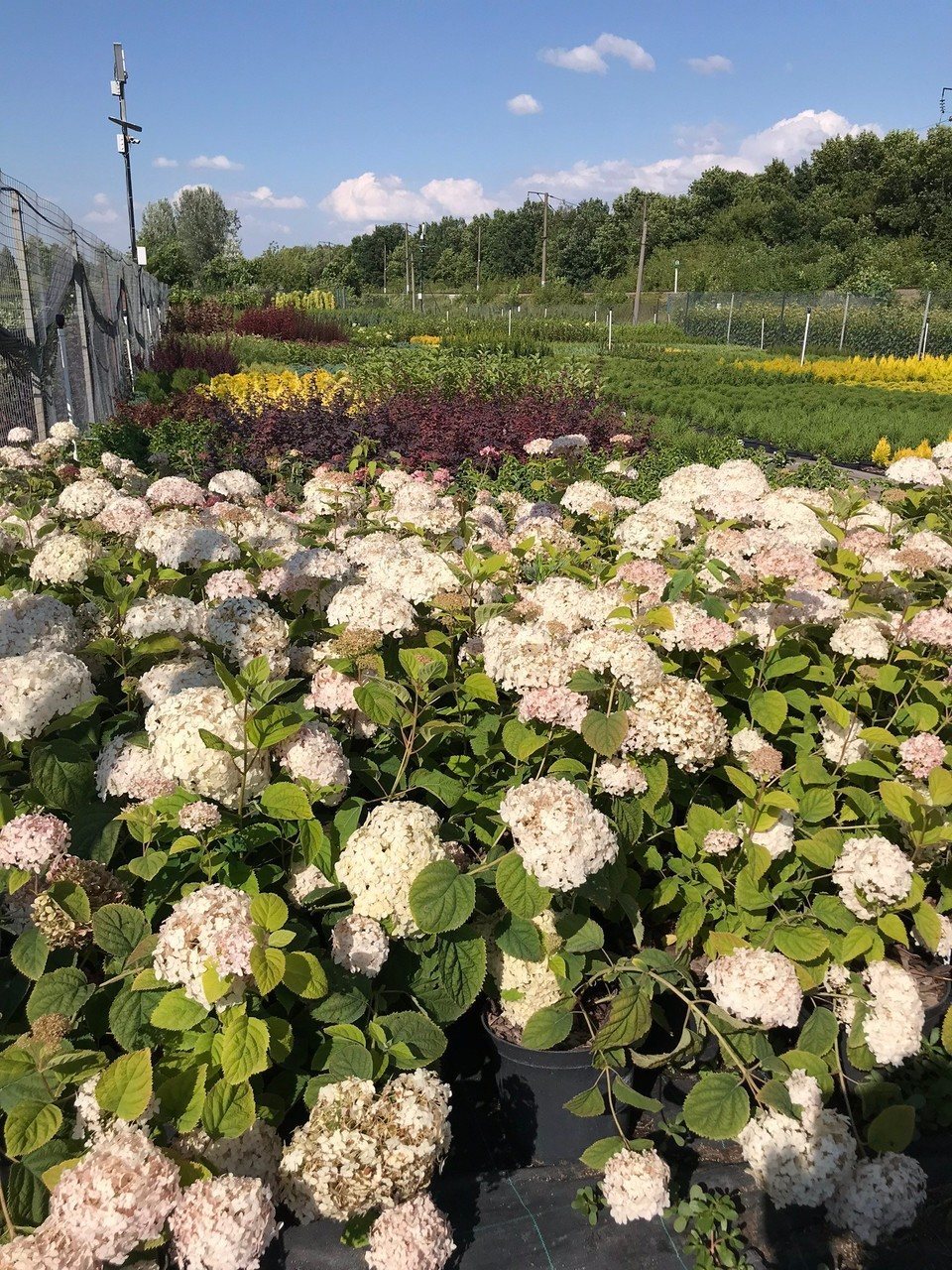
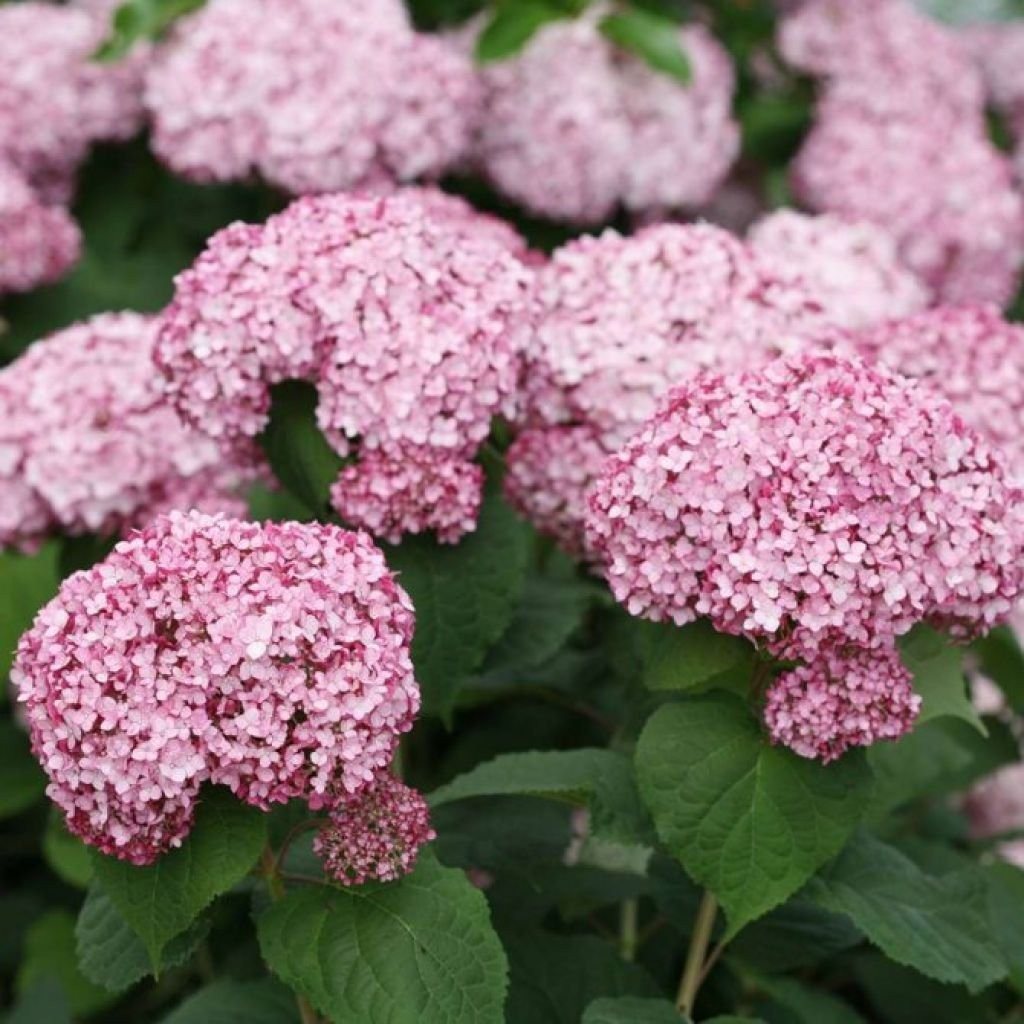
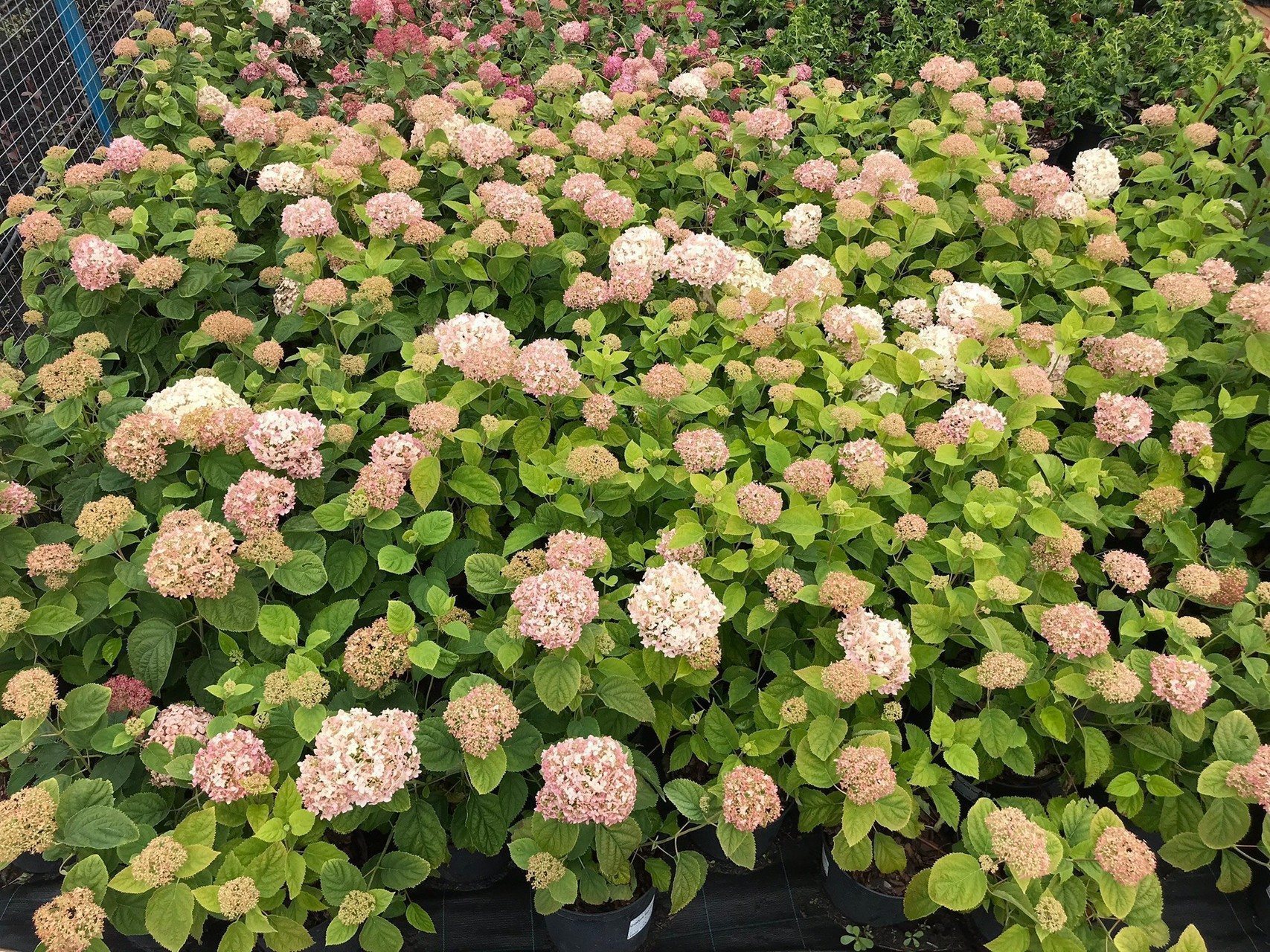
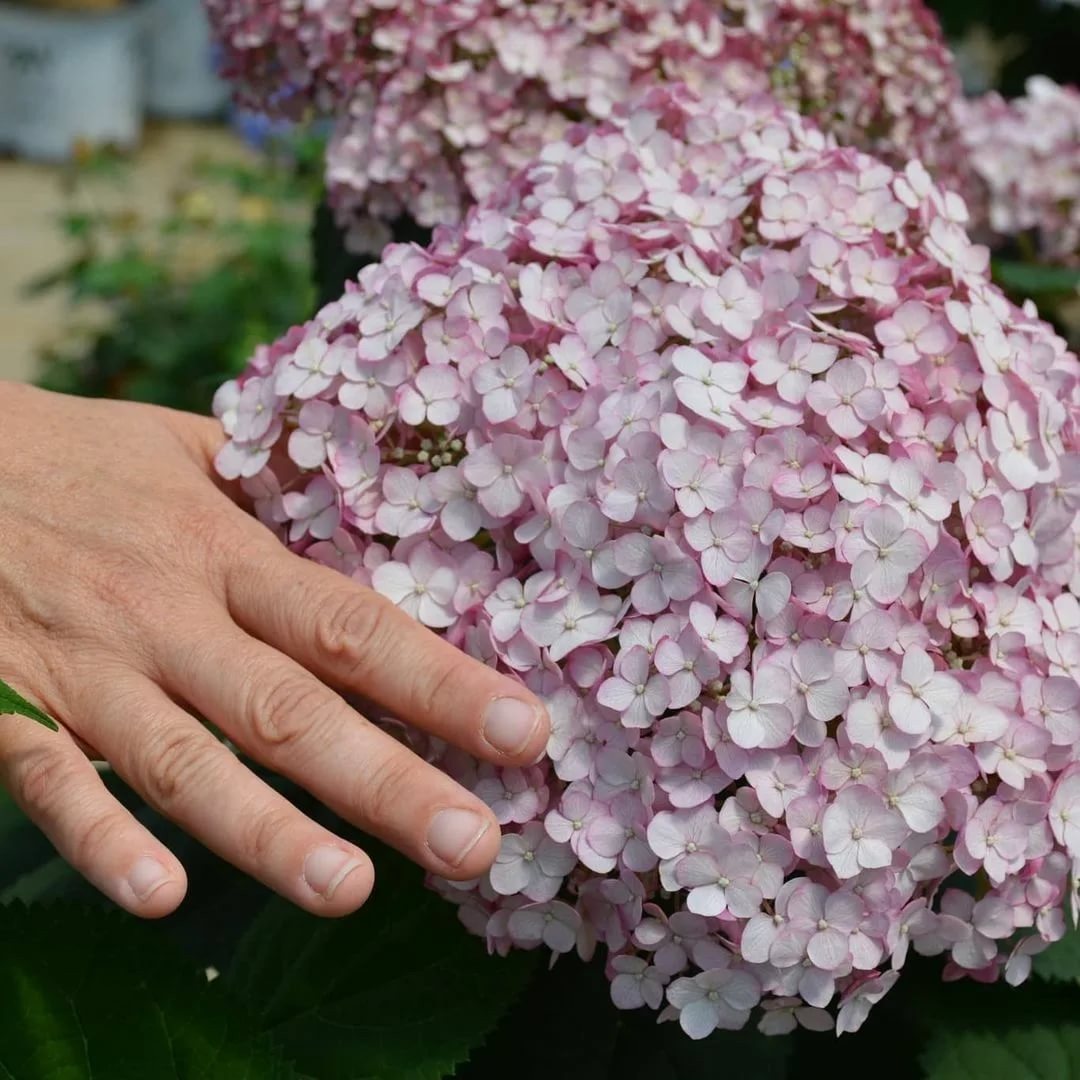
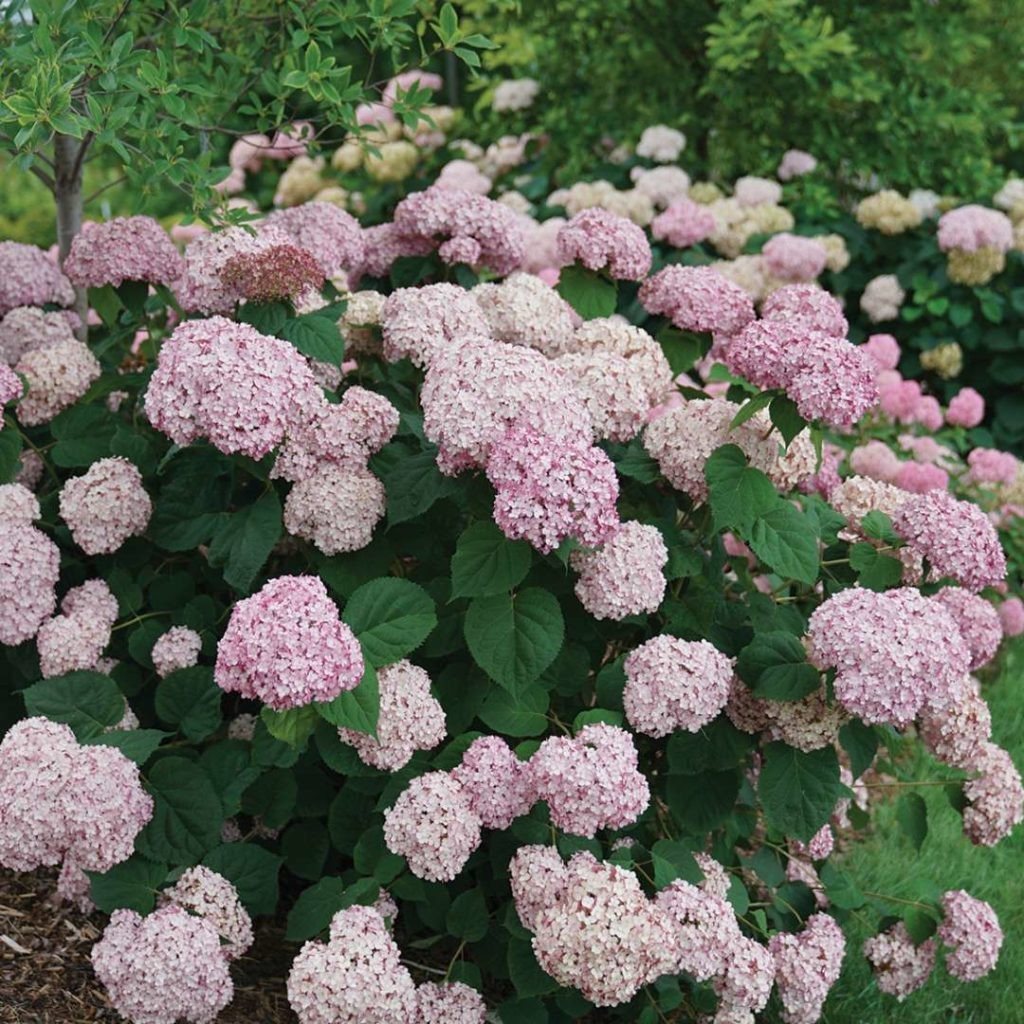





This tree-like plant produces lush inflorescences that hold tightly to strong stems, so they do not droop even after heavy rains. The inflorescence is formed from a large number of small lime-colored flowers, which turn white towards the end of flowering. There are pink balls in the center of the flowers. The inflorescences are dome-shaped and up to 15 cm in diameter.
Tomato variety Bull's heart: description and characteristics, reviews and photos
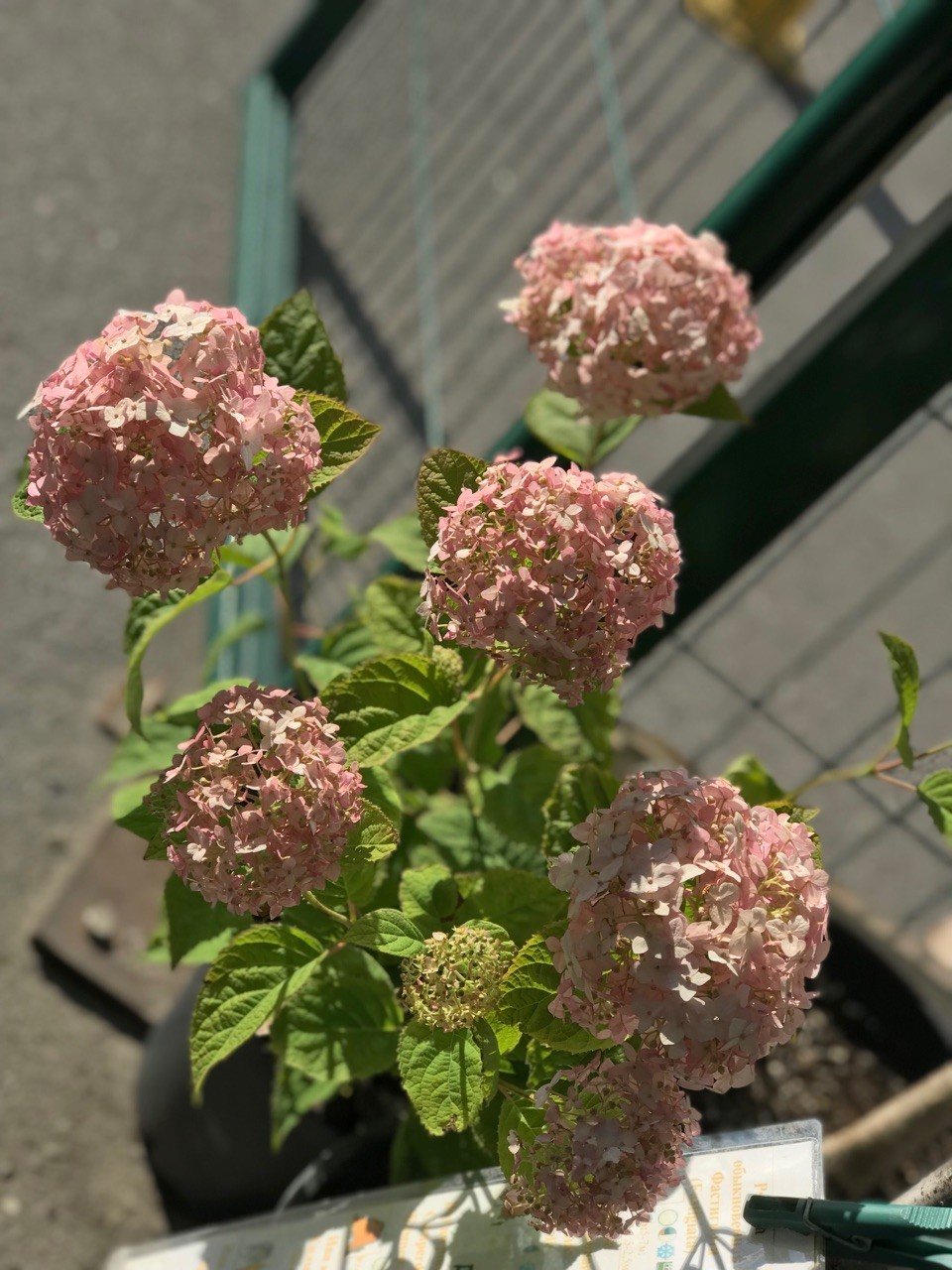
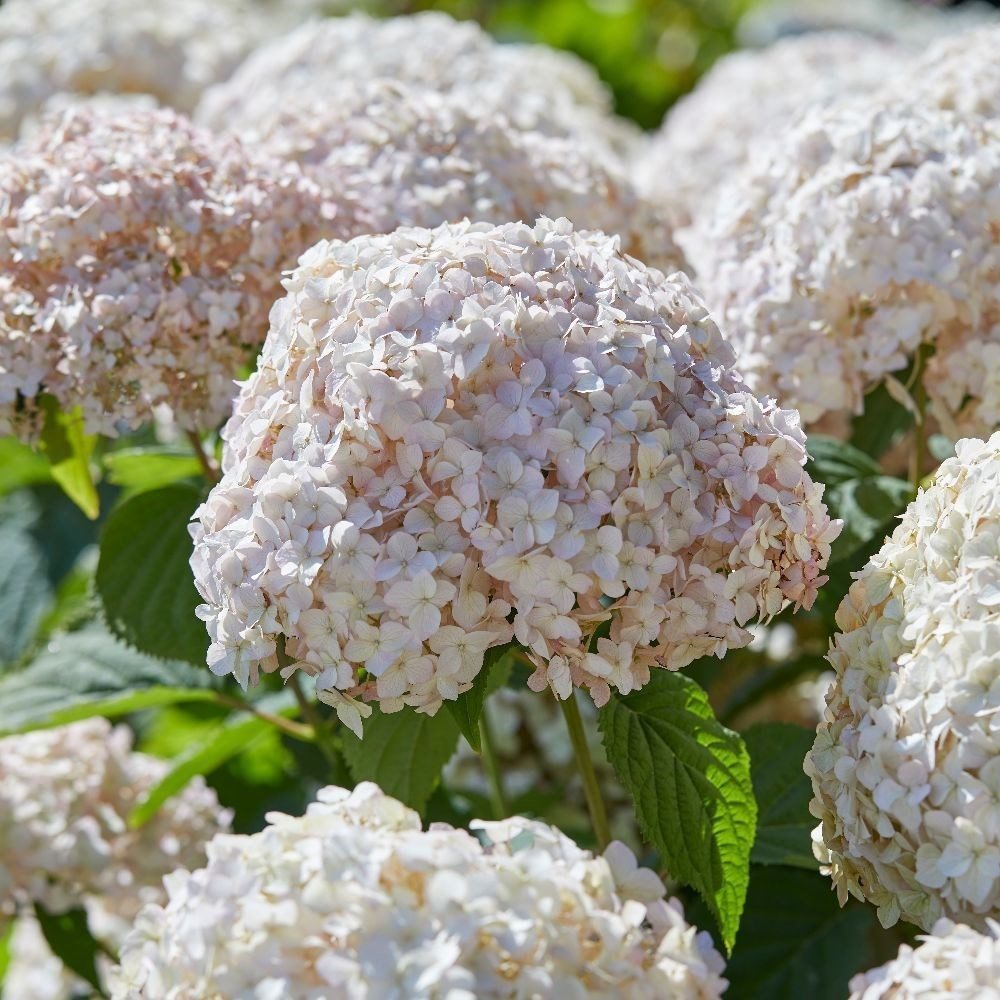
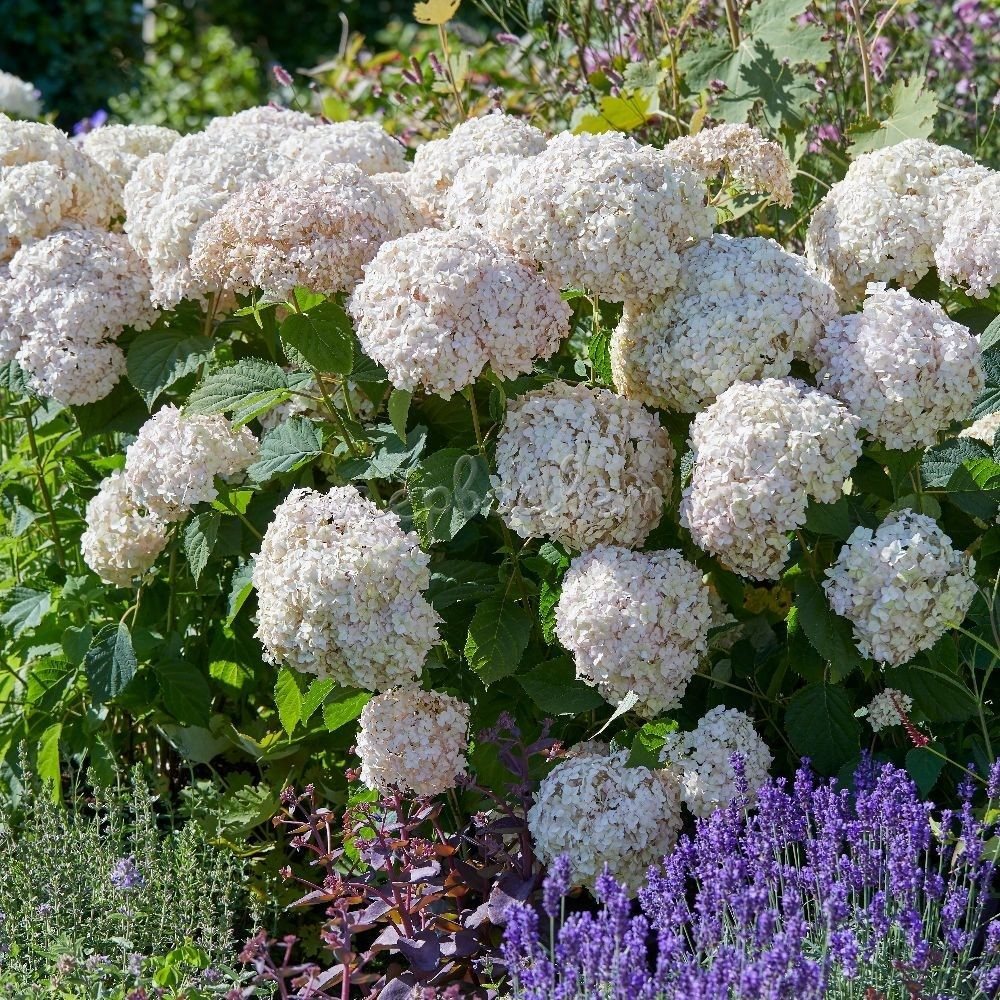
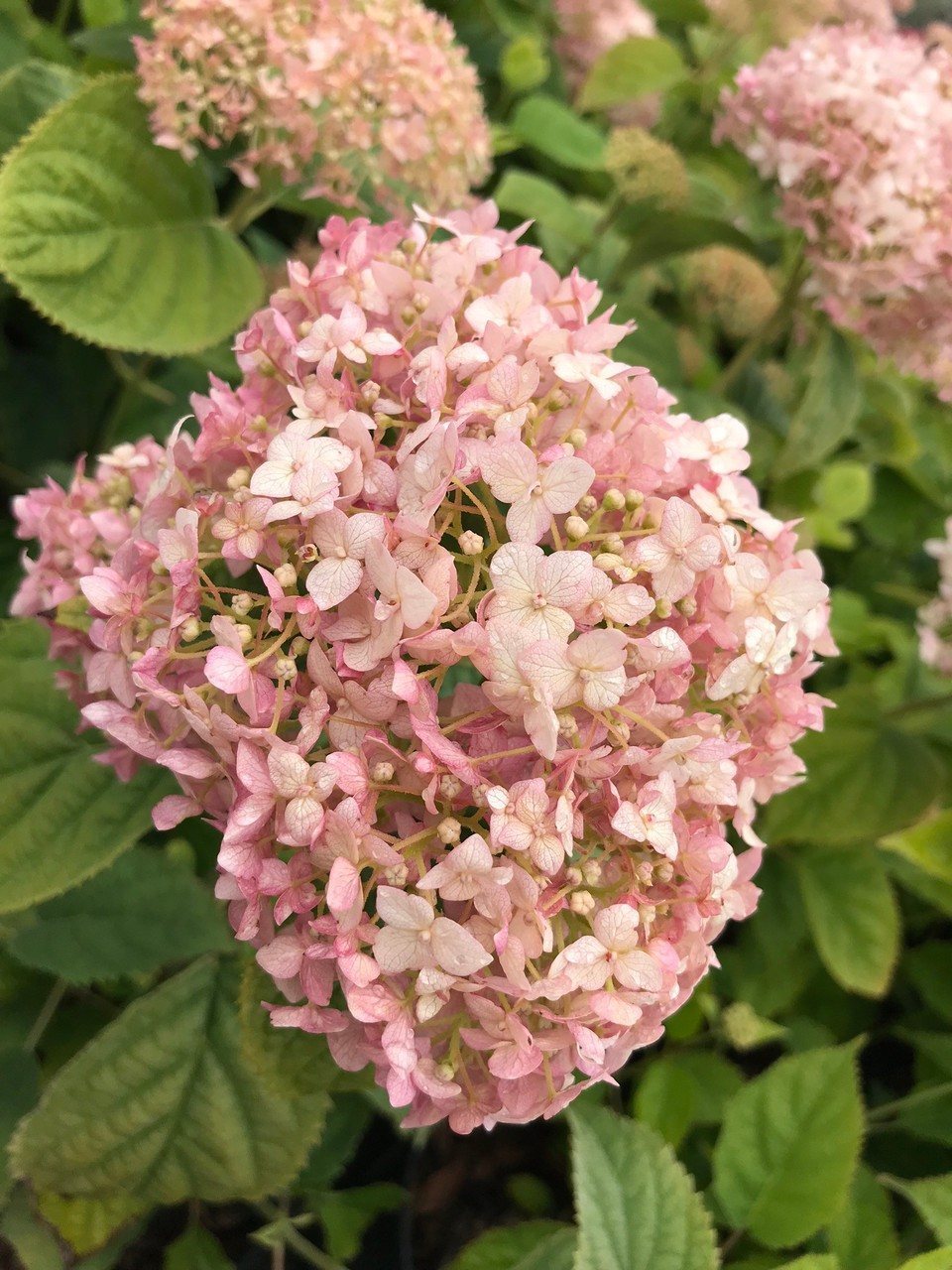




Flowers of this variety are often used for cutting.
Vasterival
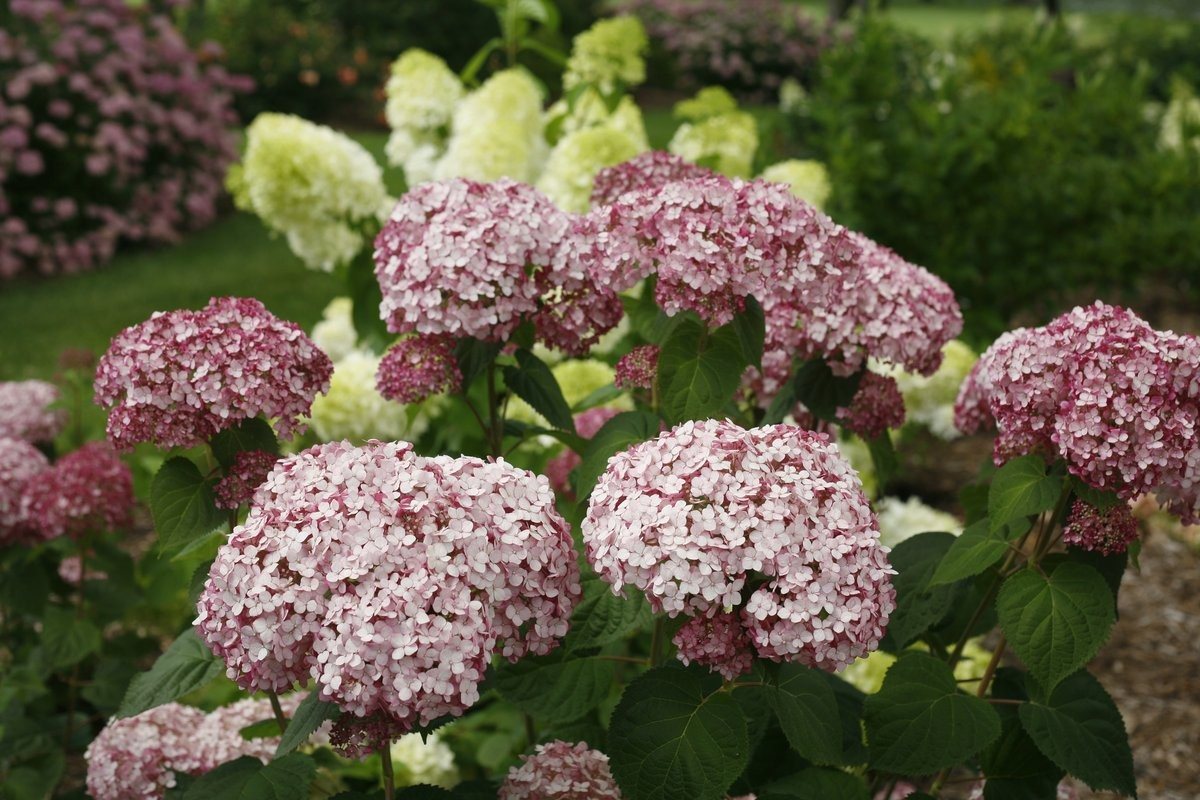
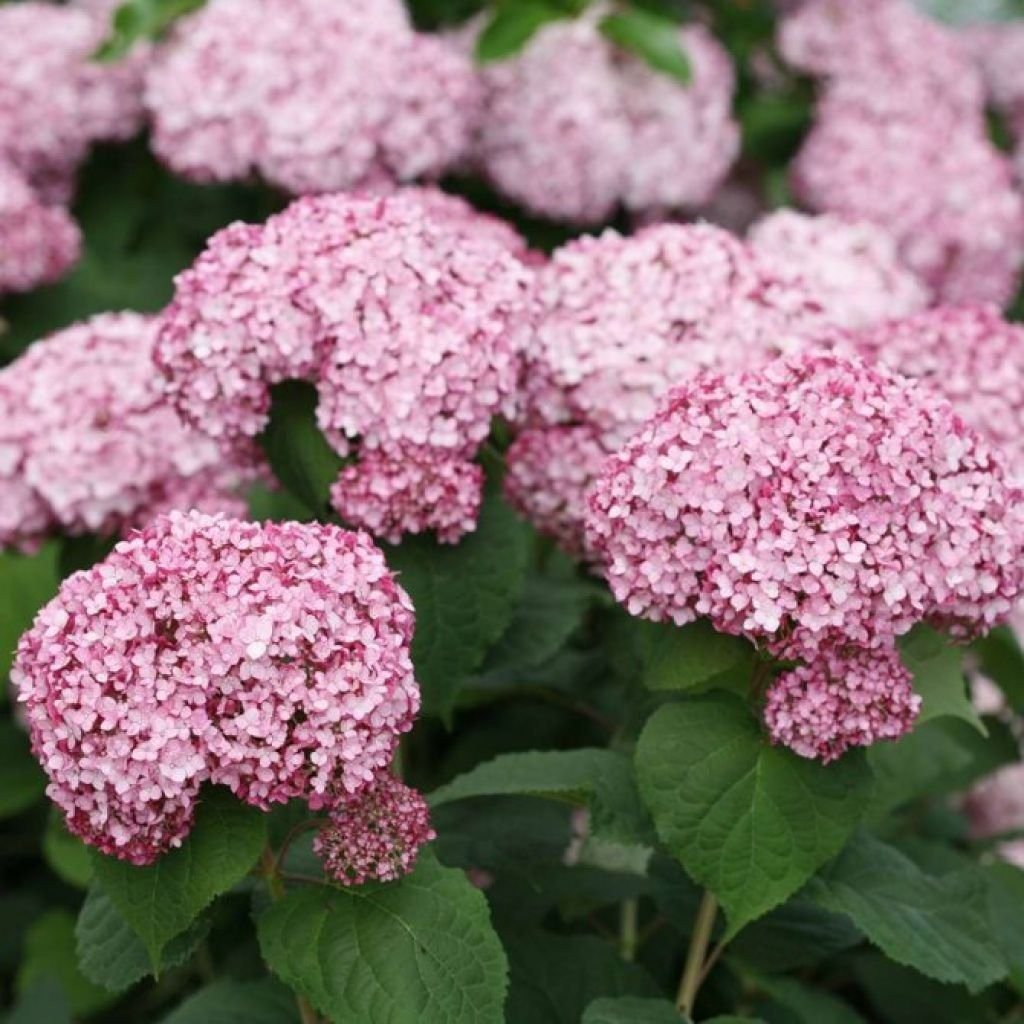


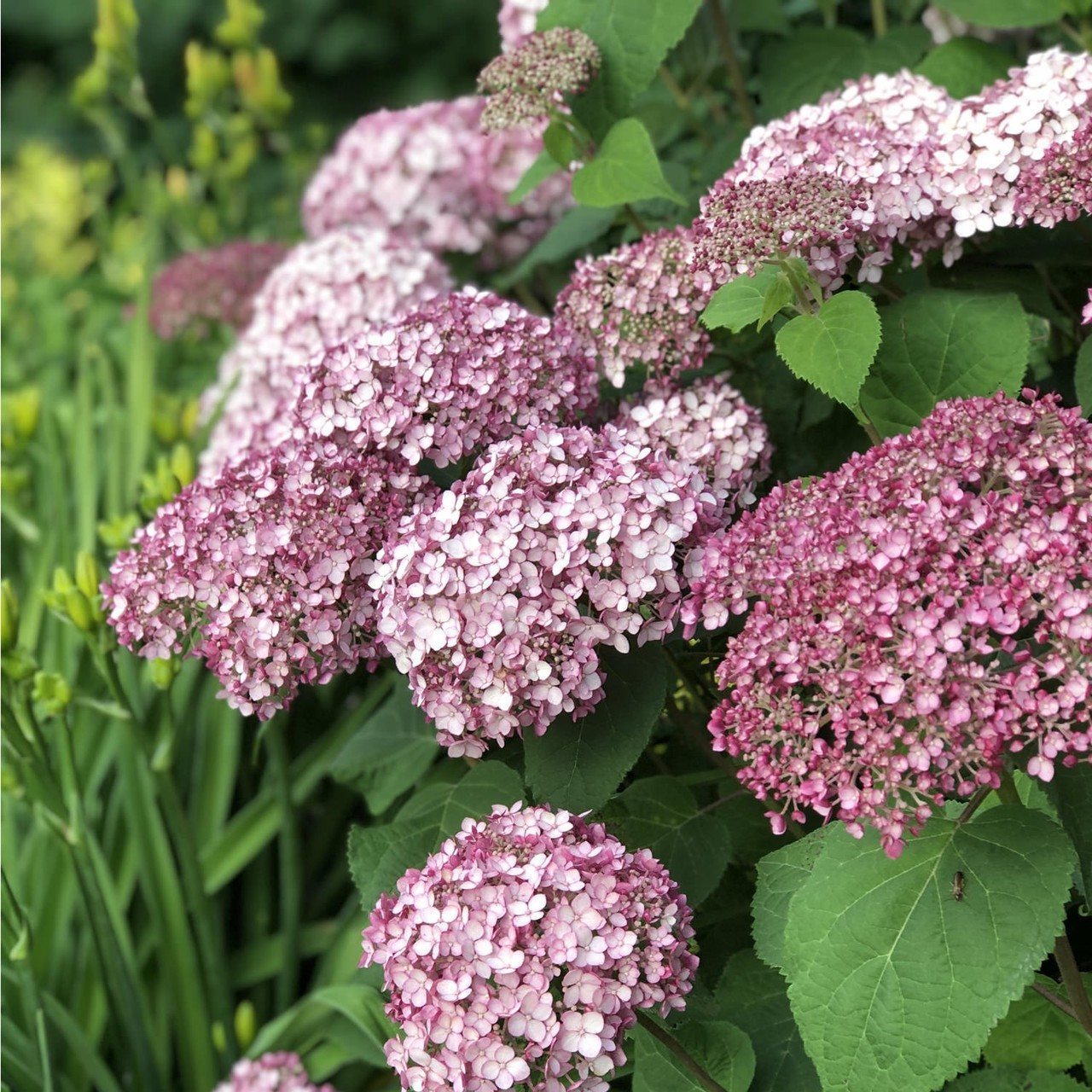





Hydrangea has lush flower caps, and gardeners also praise the unsurpassed aroma that appears during flowering. The plant attracts a large number of pollinating insects. The bush reaches a height of 1.4 meters, and the width does not exceed 1 meter.
Incredible or Strong Anabel
The variety is considered classic because it is distinguished by the presence of stylish stems holding lush inflorescences. The first flowers appear in mid-July, and at first they have a light green tint, but gradually become white, and by the end of flowering they become jade.
Hayes Starburst
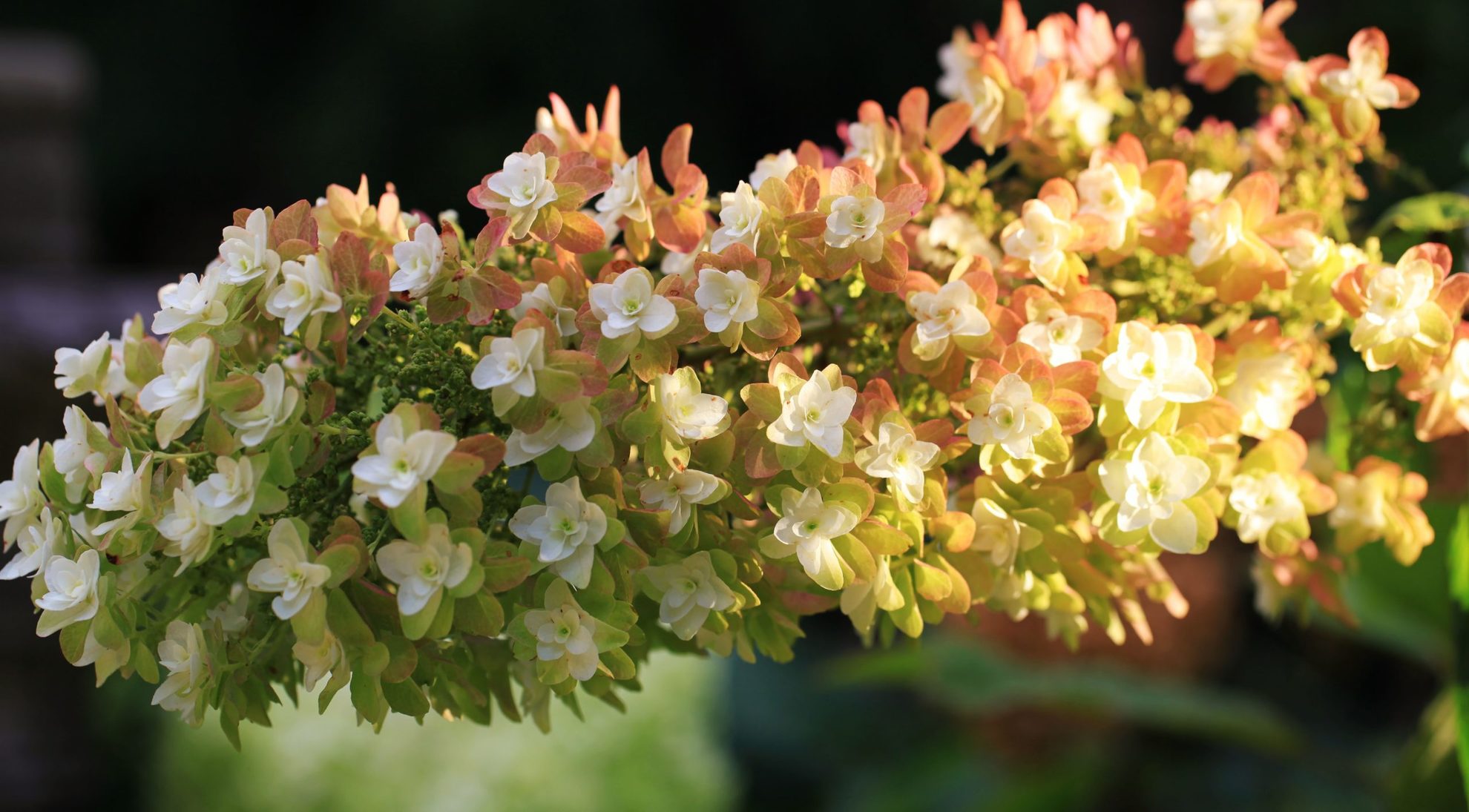
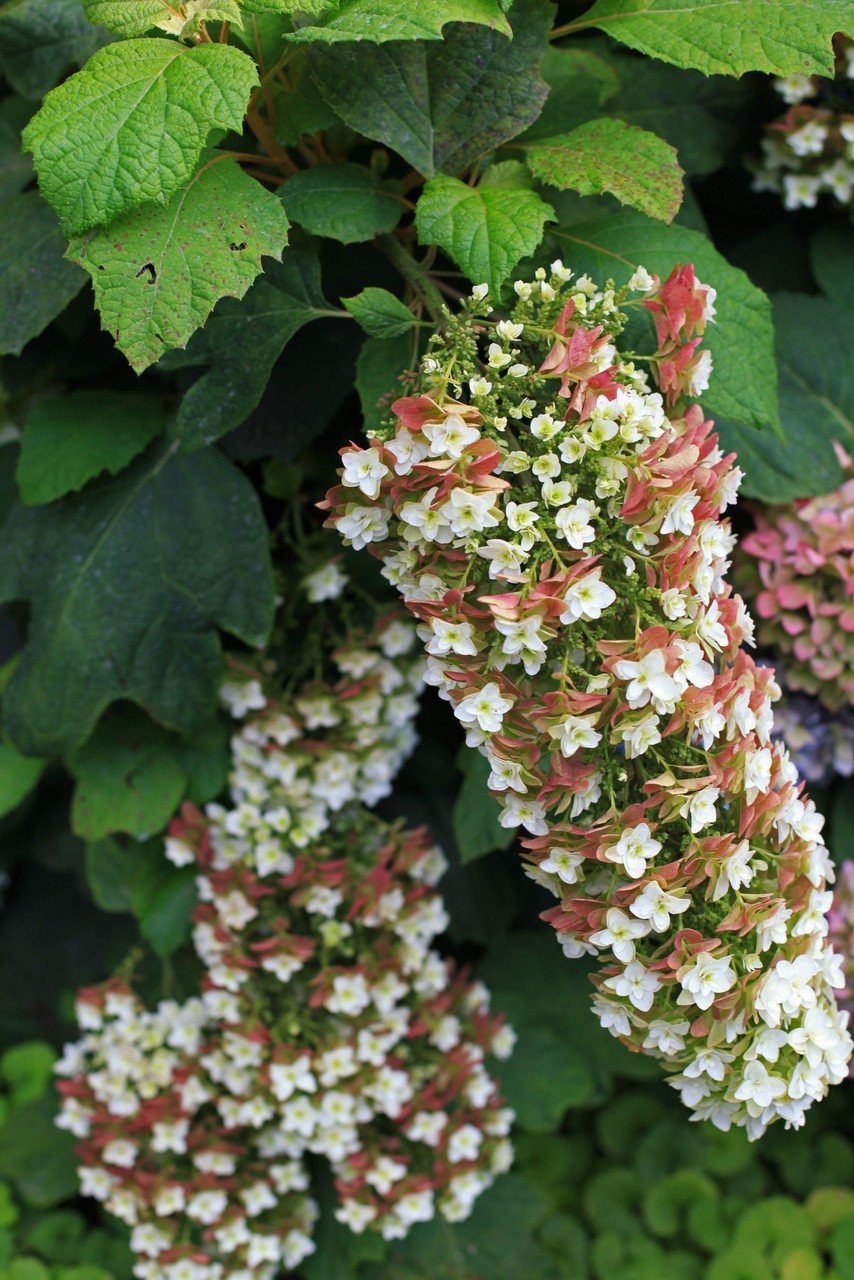
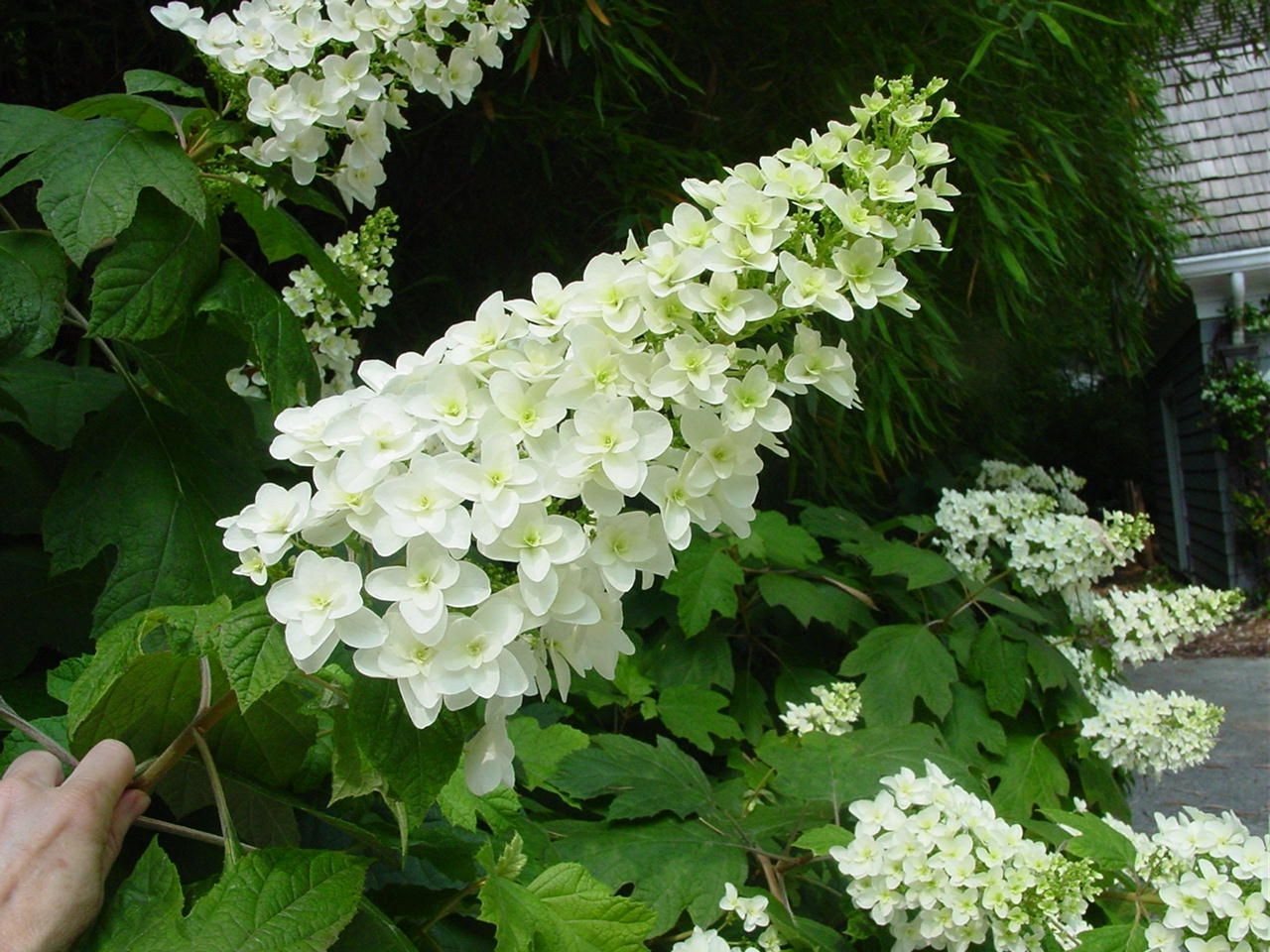
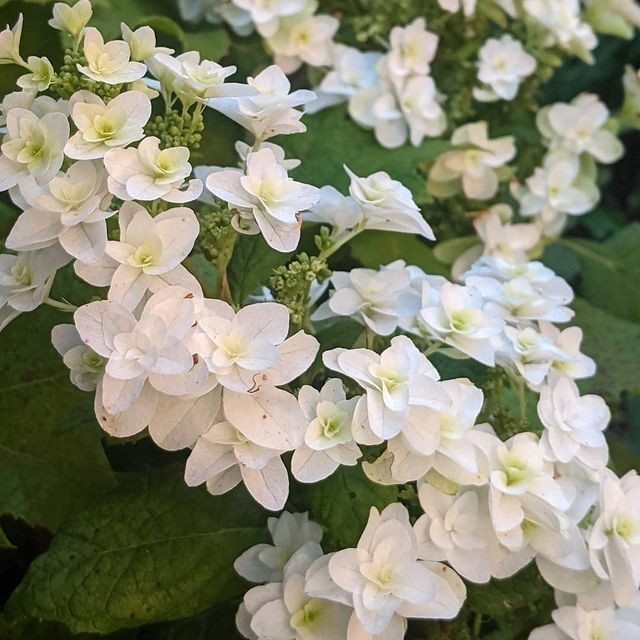
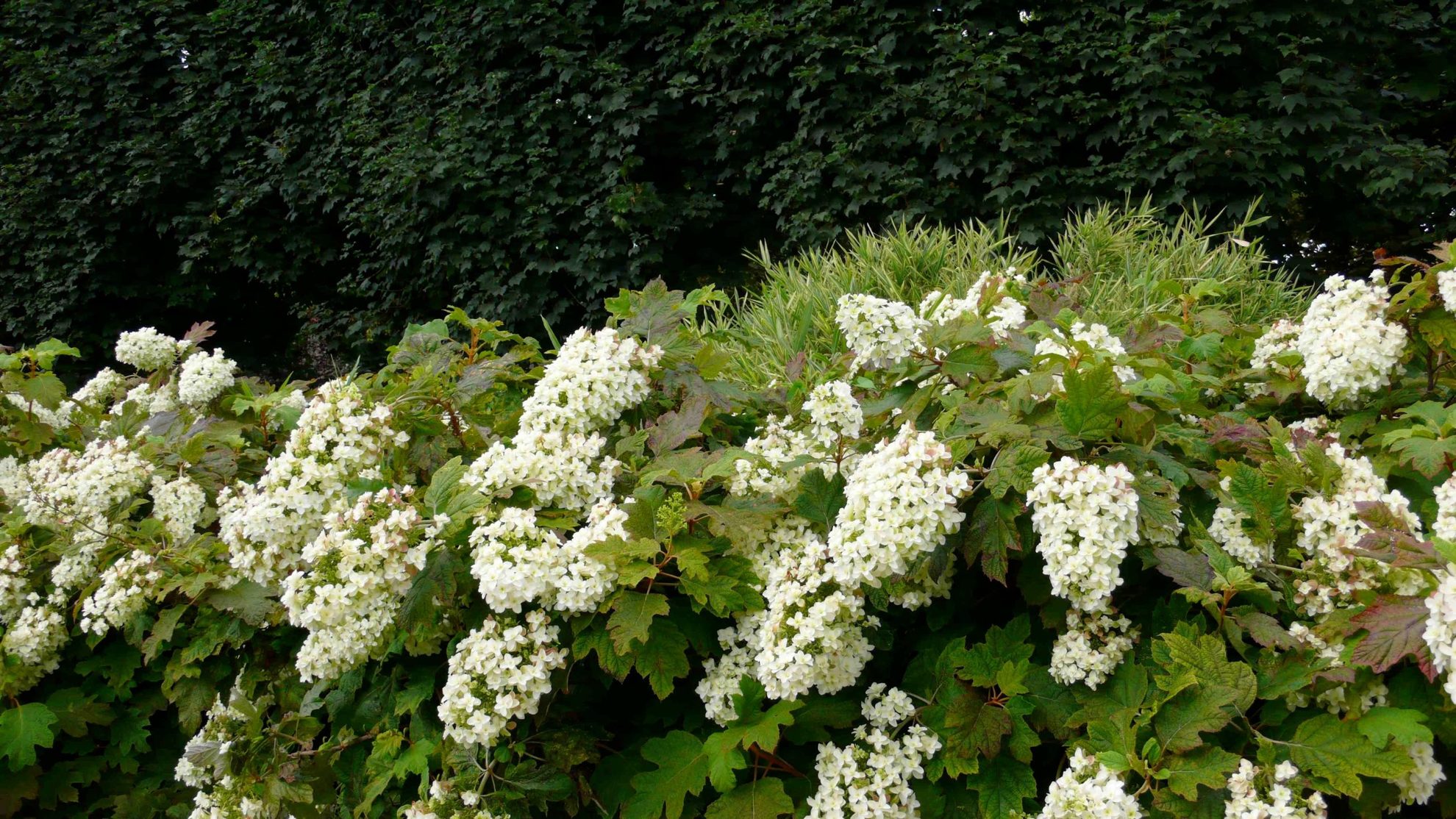





This variety is considered extravagant and spectacular because the appearance of the plant has been so greatly changed by breeders that it does not at all look like a traditional hydrangea. Compact tree-like hydrangea grows to a maximum height of 1.2 m, and also has rounded dome-shaped inflorescences, the diameter of which is 20 cm. They consist of a large number of star-shaped double flowers. In mid-summer, lime flowers appear and change color to cream.
Bounty

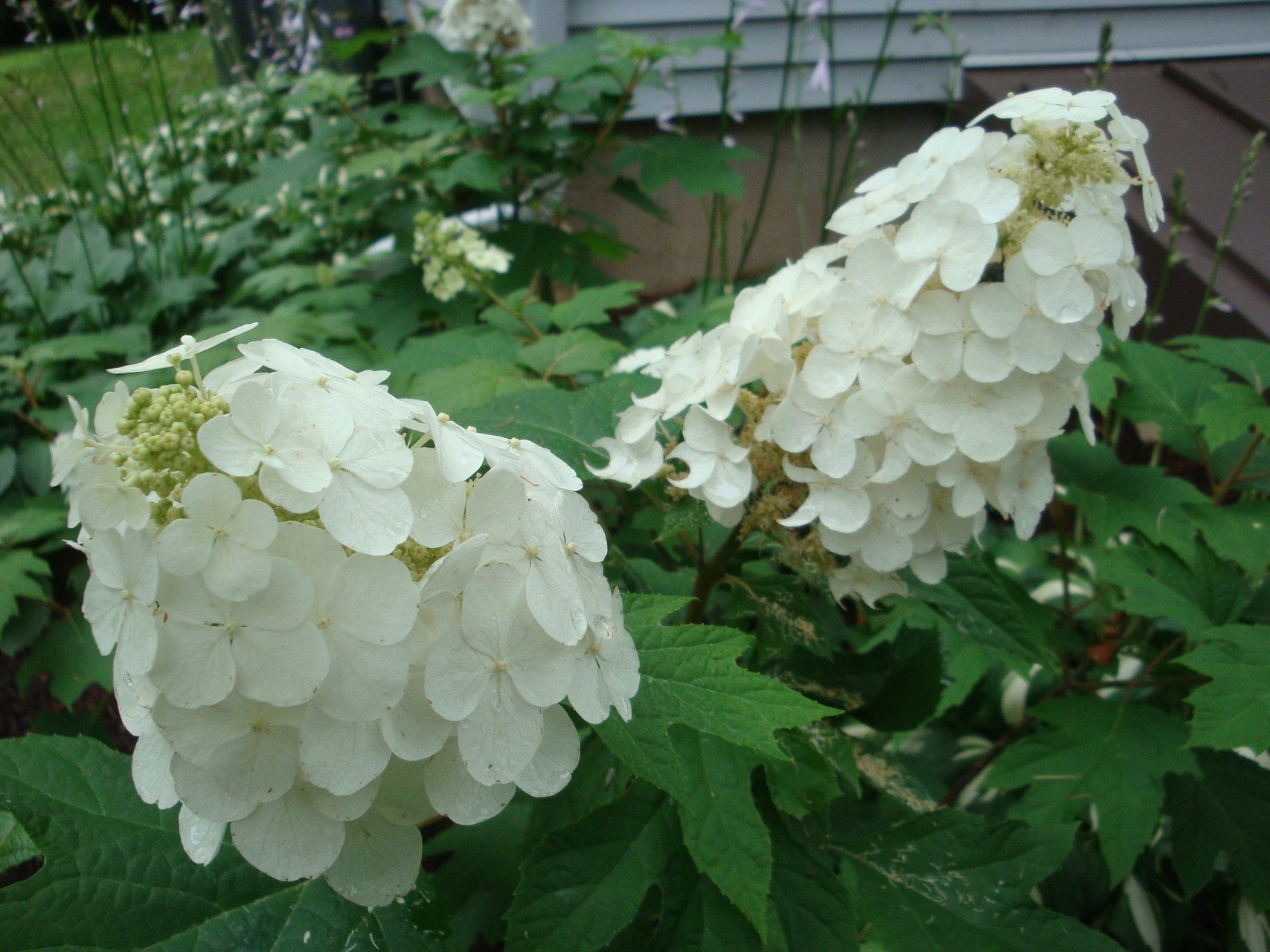
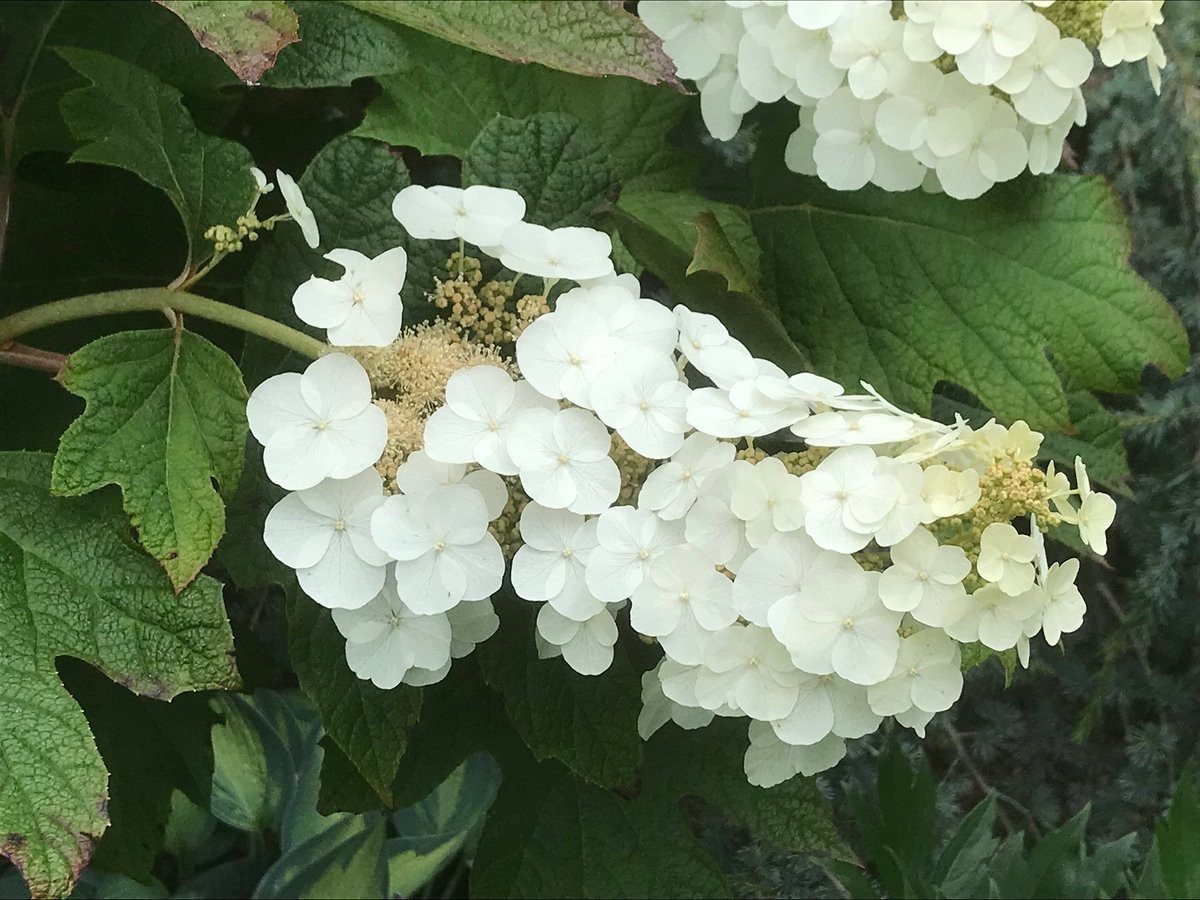
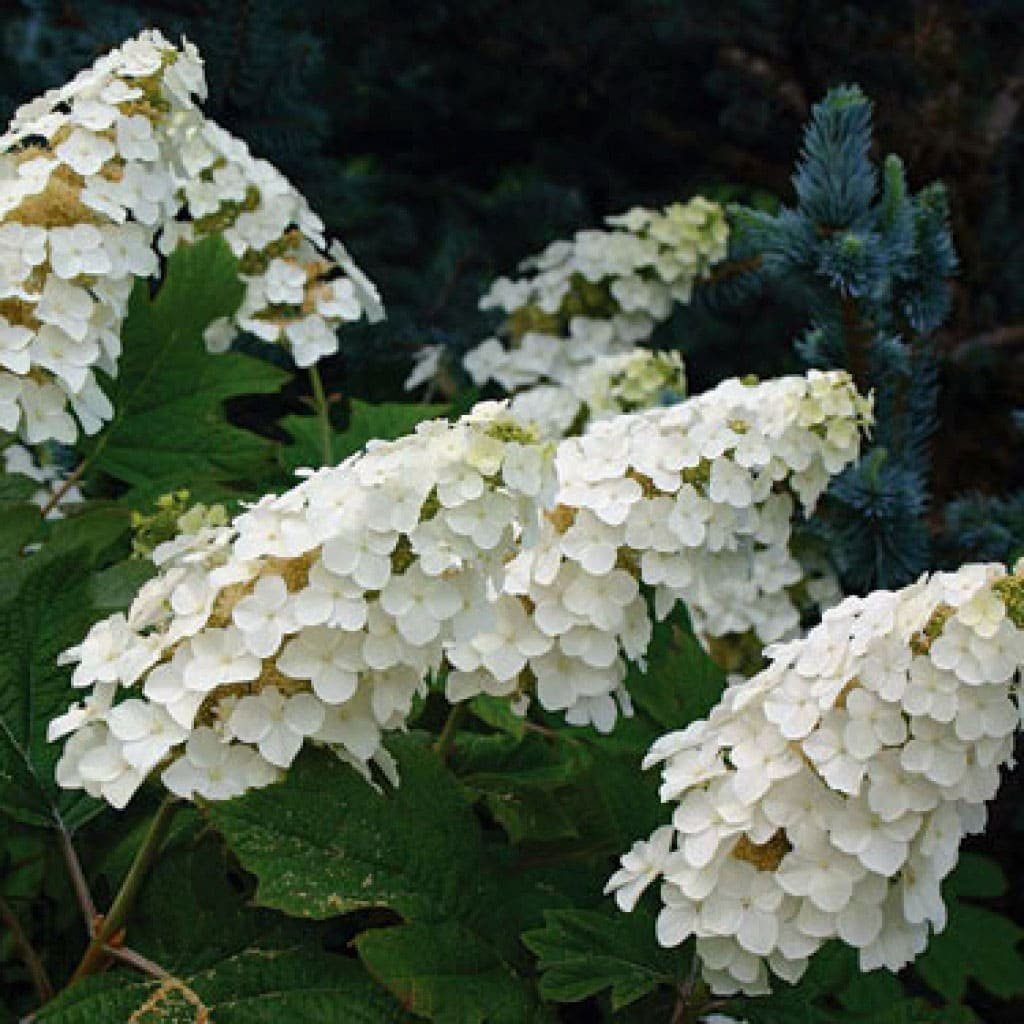
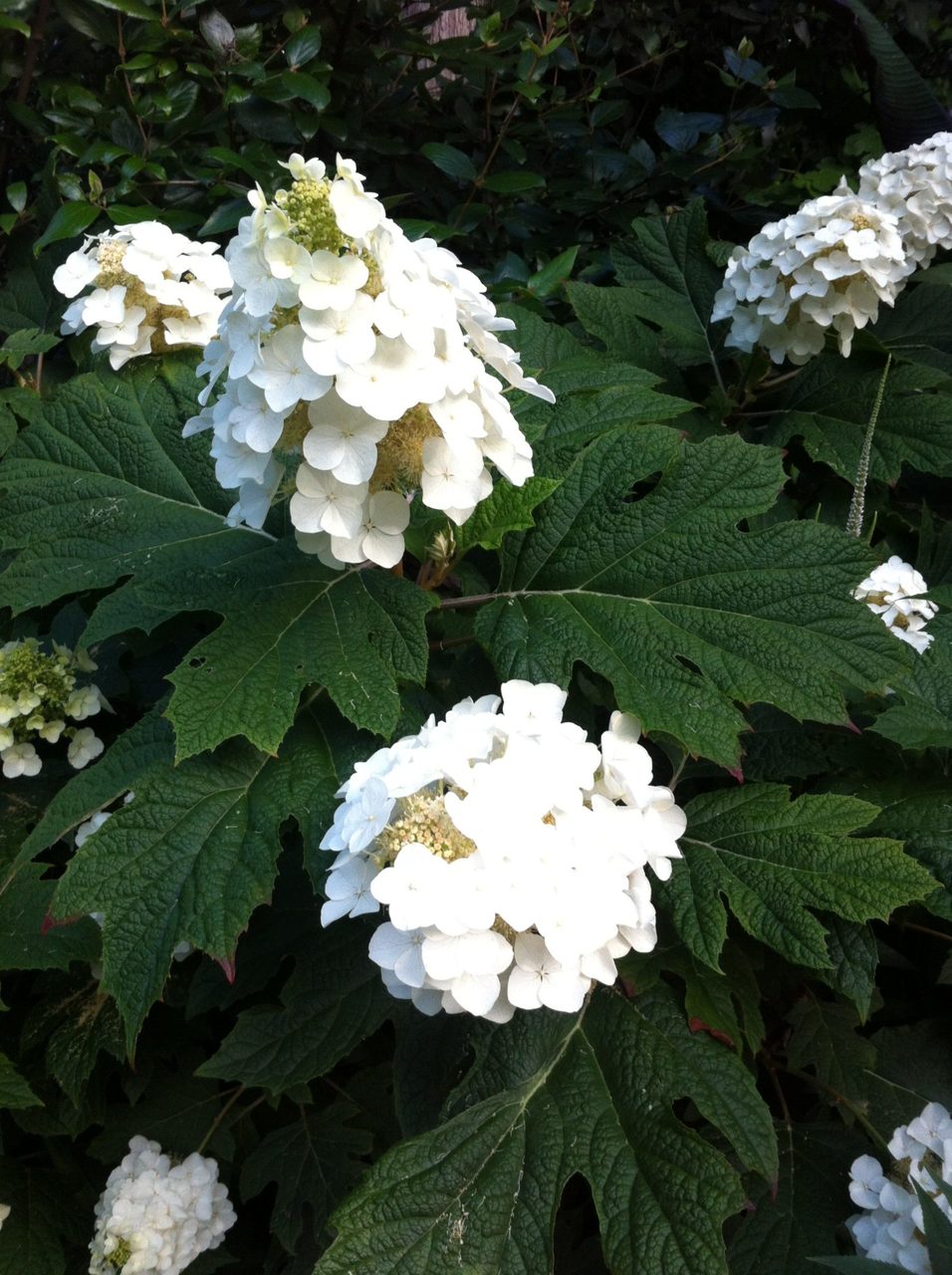





Tree hydrangea is found in the wild in the Far East. It can reach a height of three meters. Flowers of different shades grow on it, which allows you to experiment with floral arrangements.
Emerald Lace
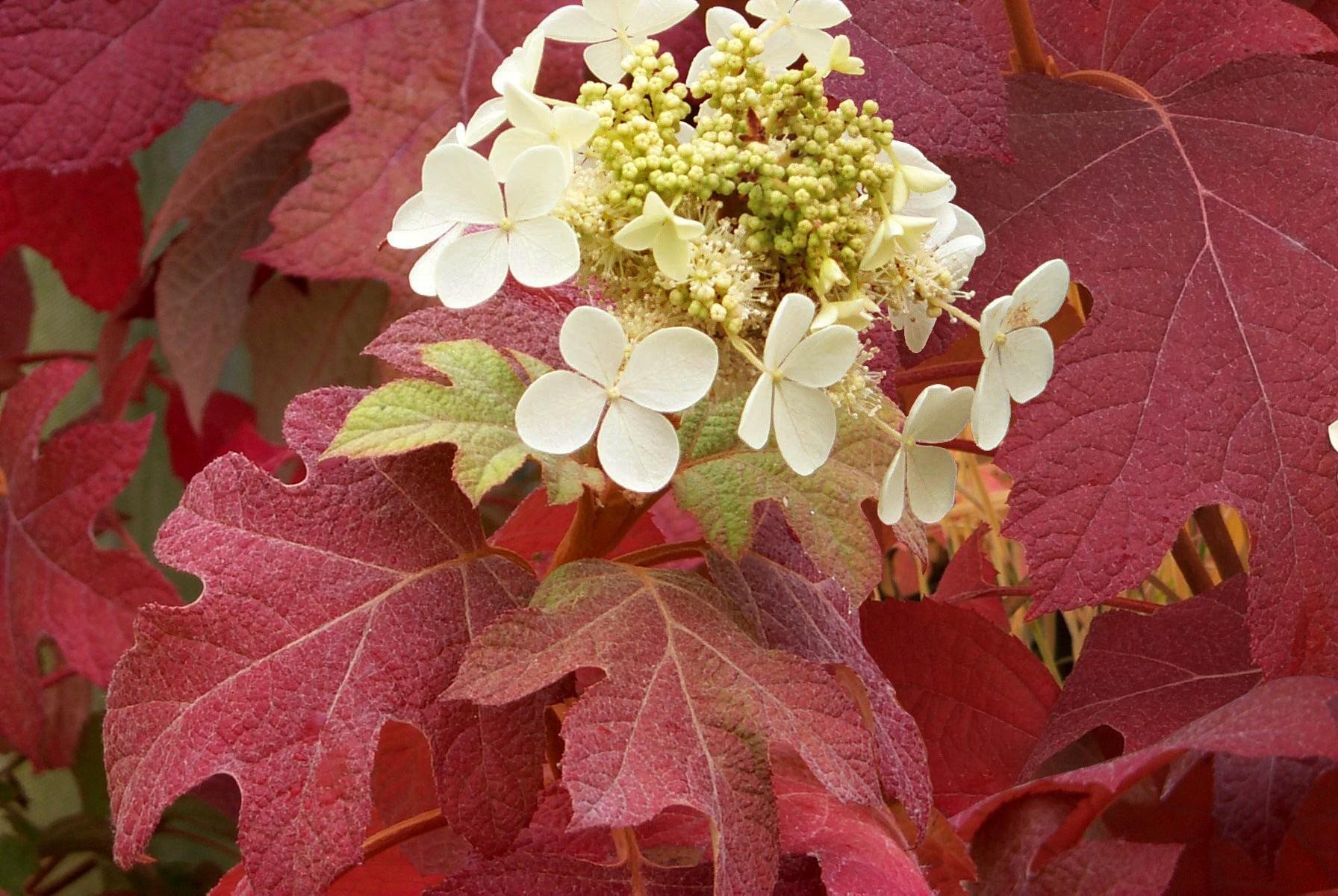
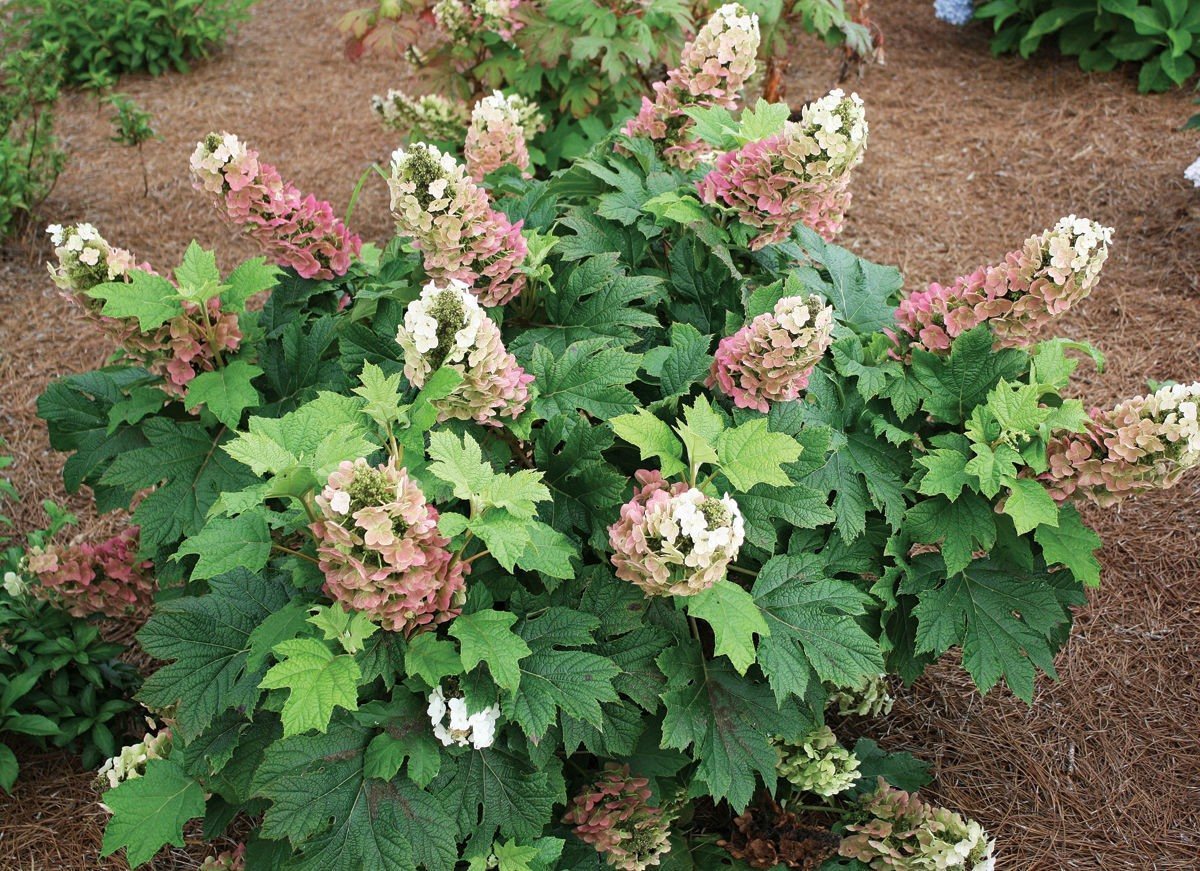
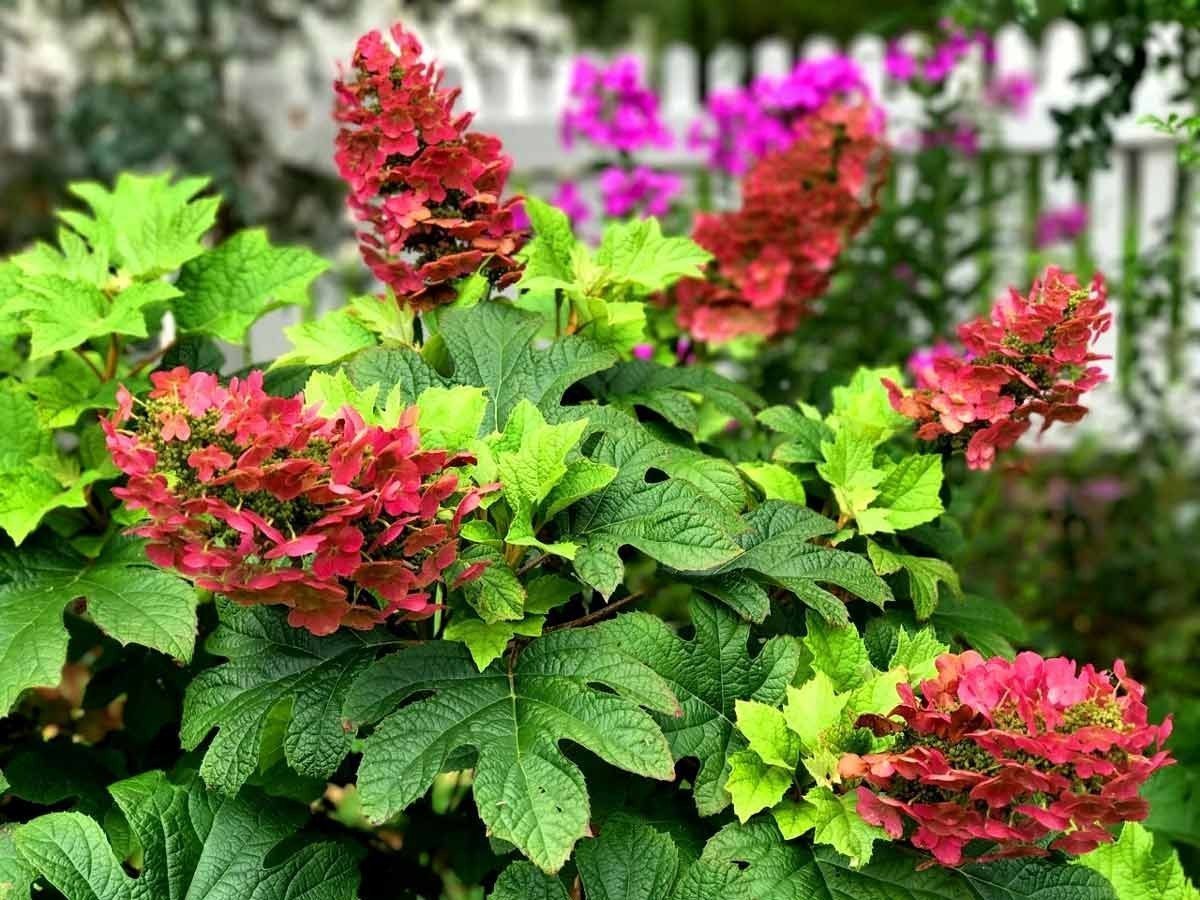
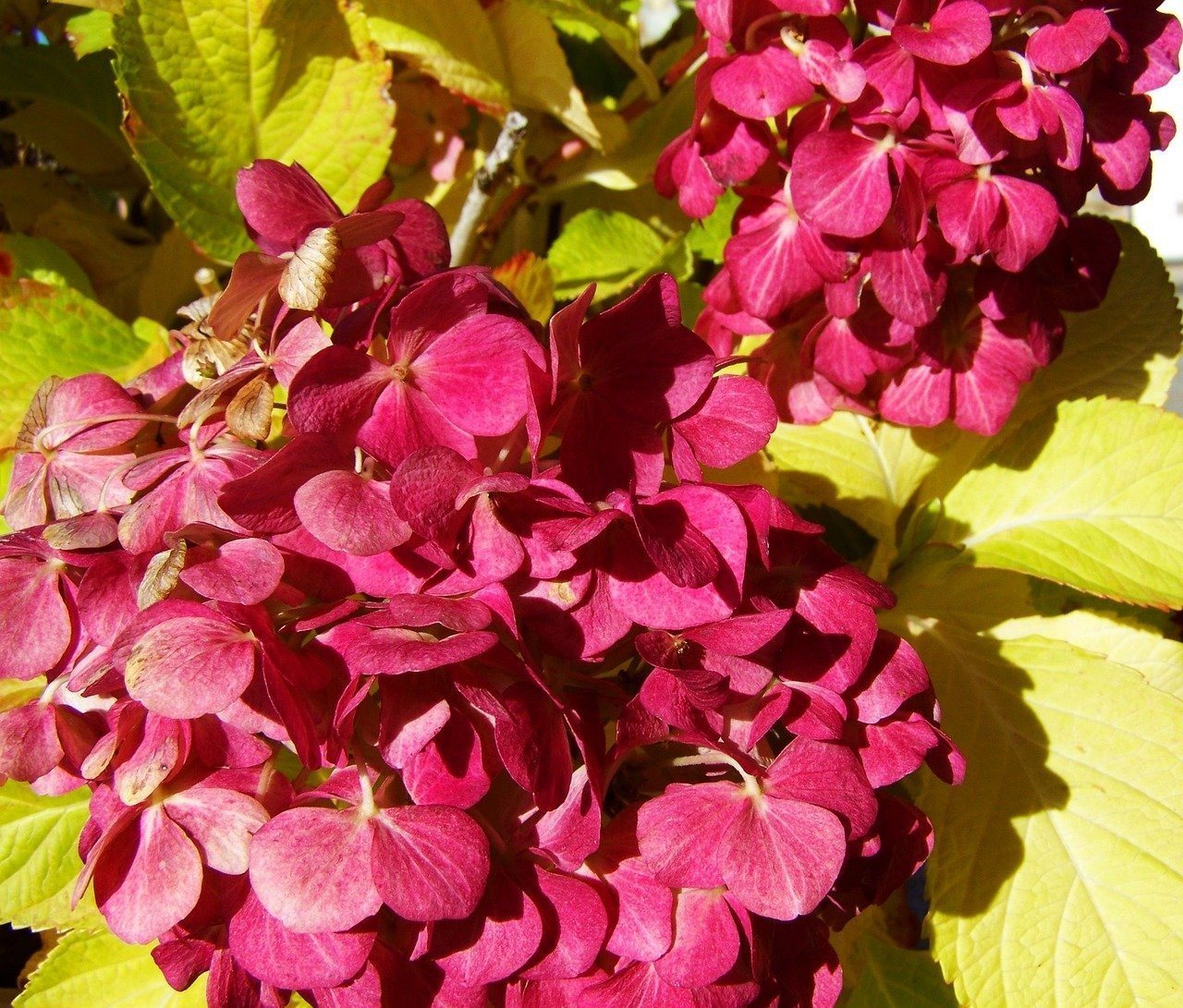
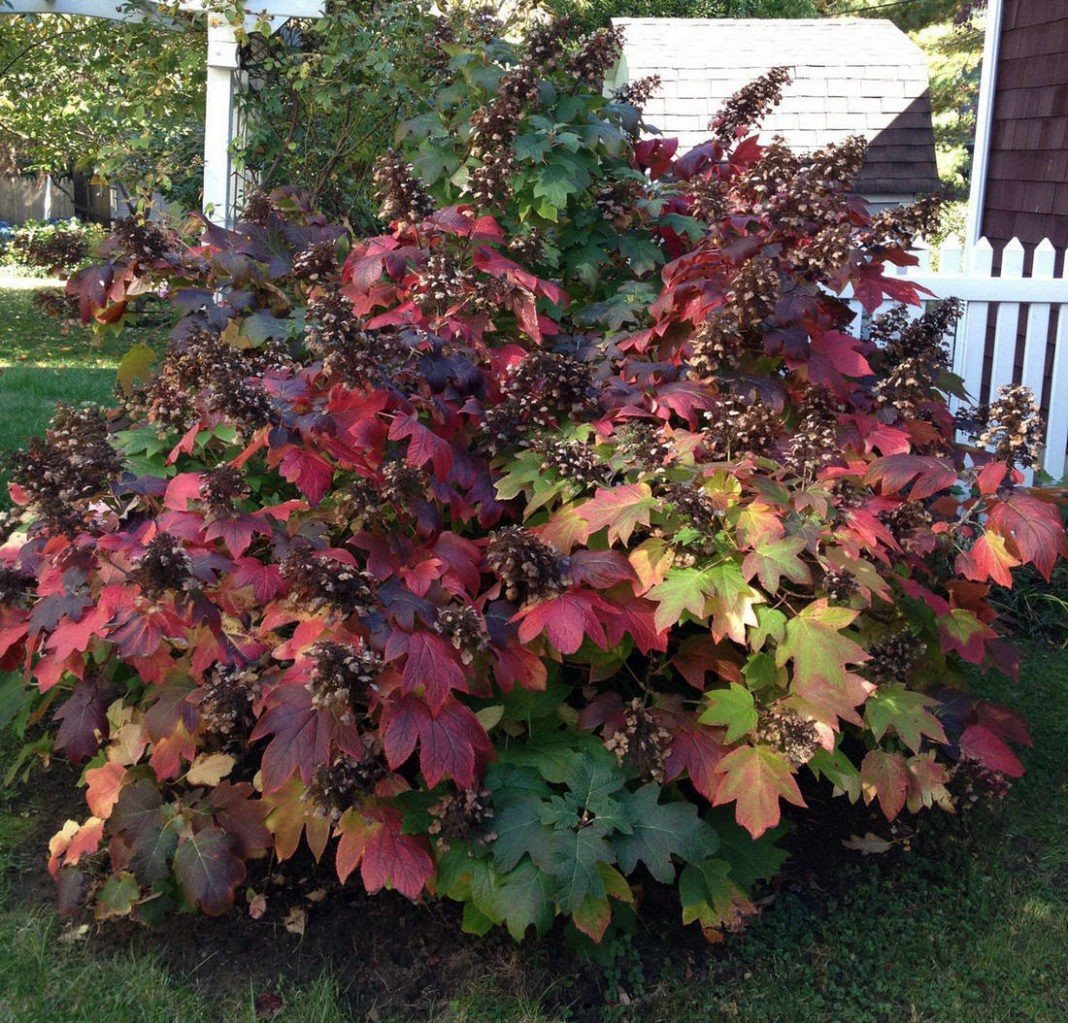





The plant looks original thanks to its rugged leaves with uneven teeth. Inflorescences form on new shoots. The flowering process begins at the end of June. The bush reaches a height of 0.9 m, and is also covered with corymbose inflorescences, the diameter of which is 15 cm.
White Ball or White Ball
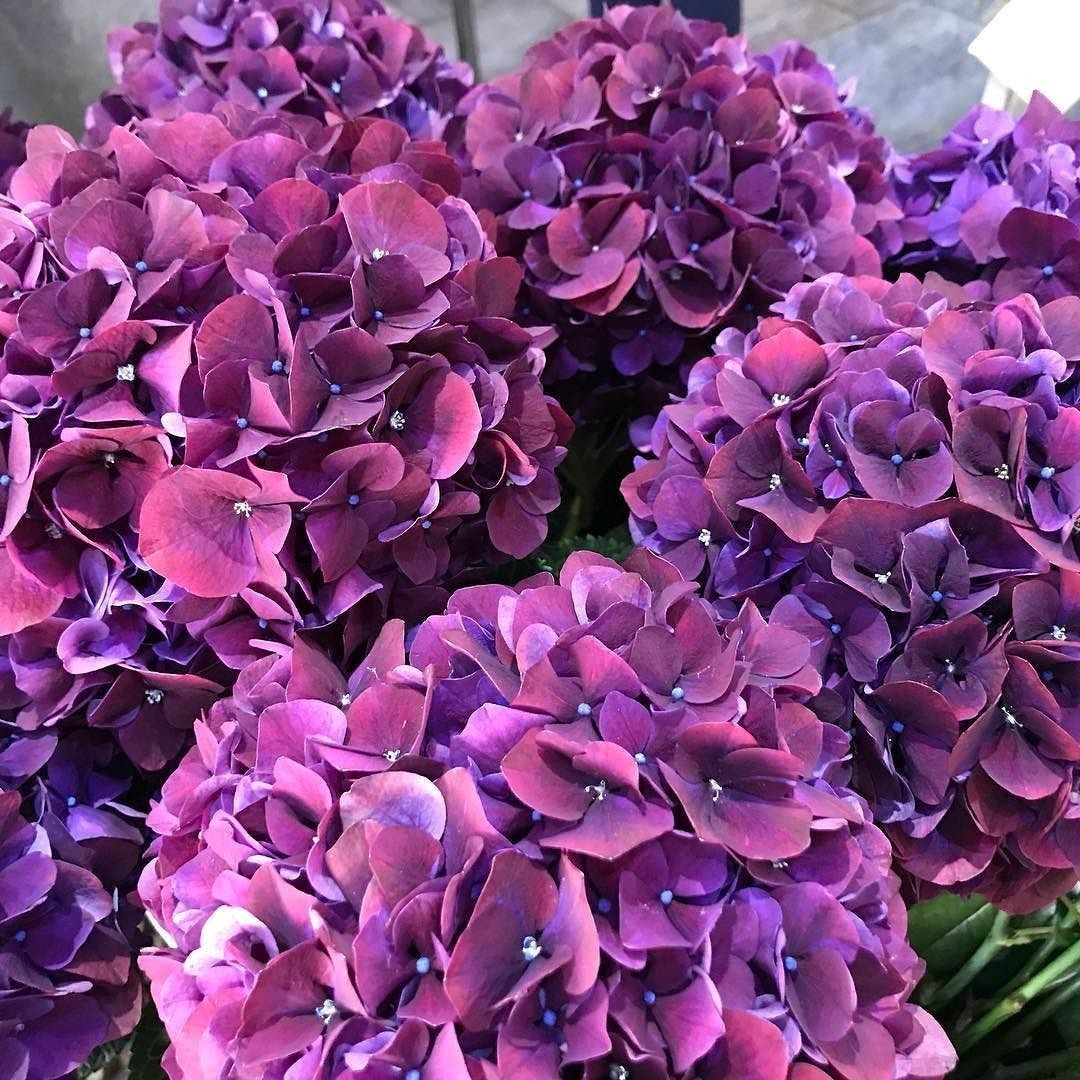
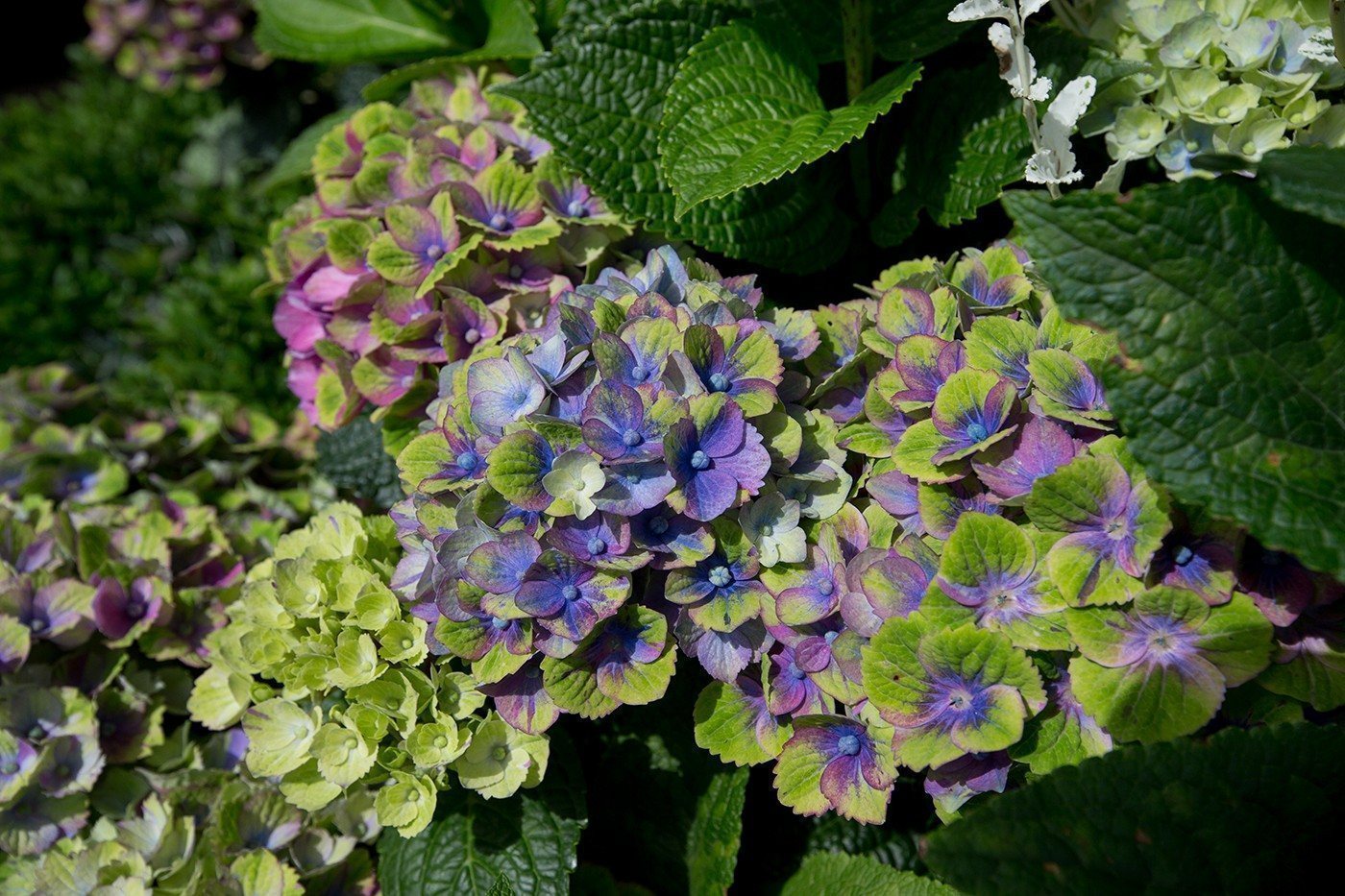
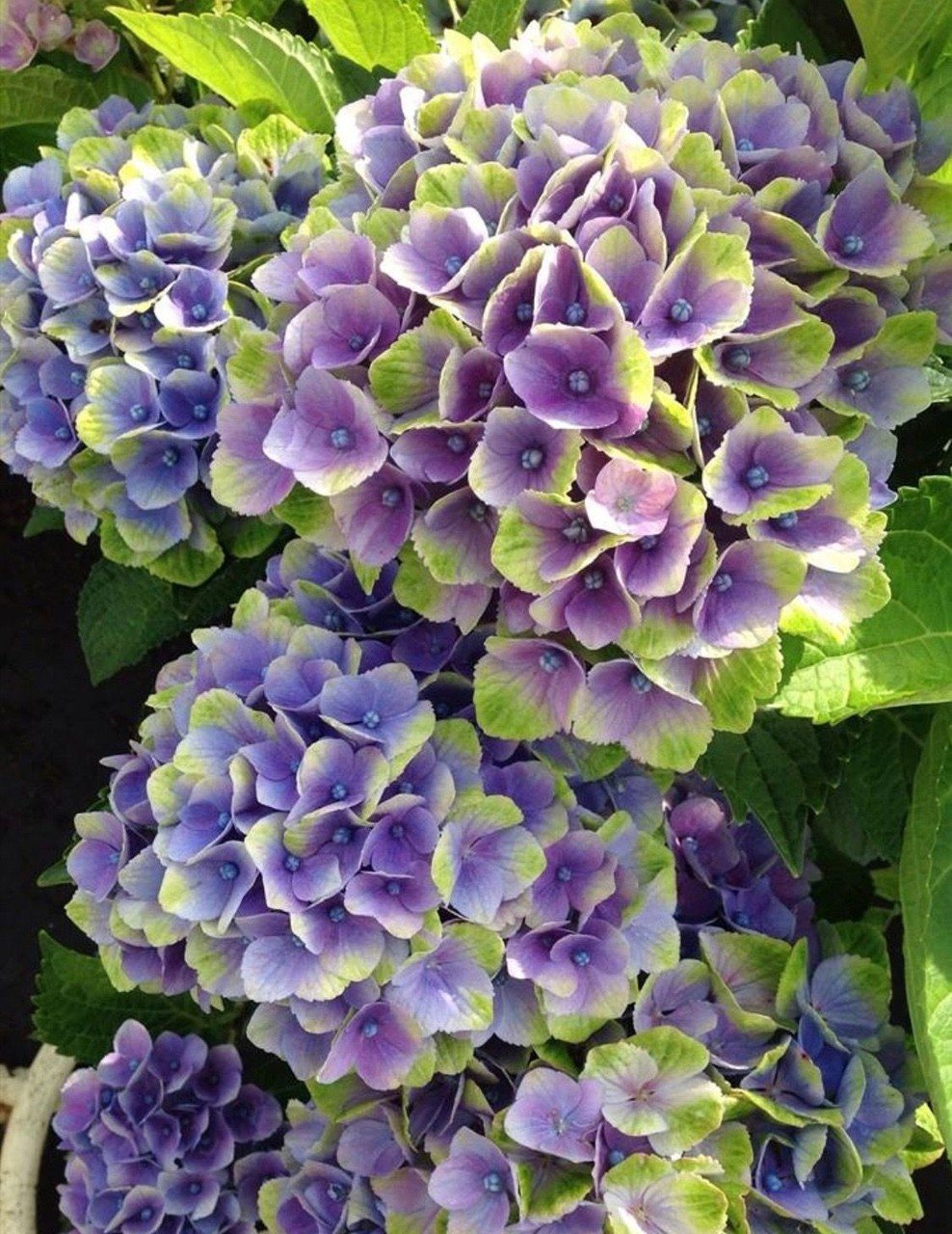
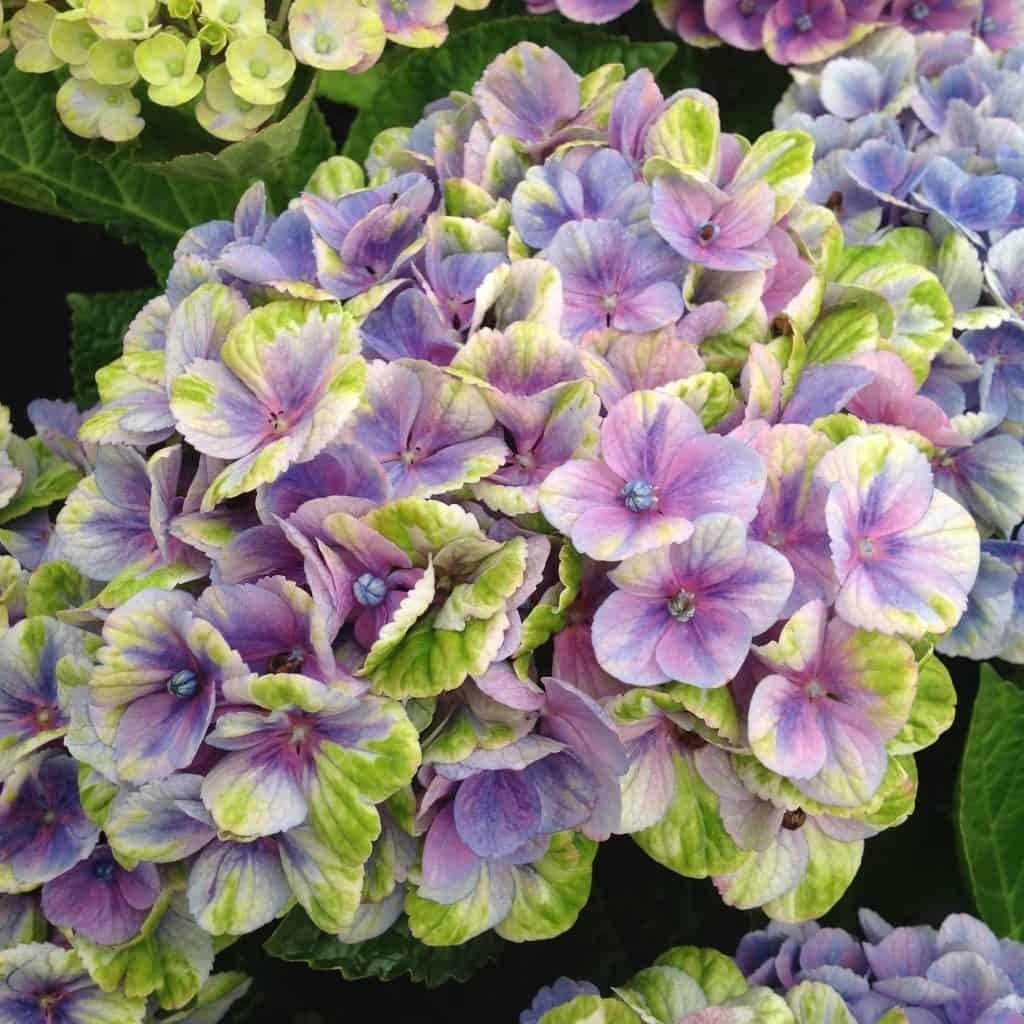




This variety is considered the most popular and spectacular among all varieties of white hydrangea. Features include the presence of snow-white flowers, which form on both current and last year’s shoots. The shoots grow unevenly, so an uneven crown shape is formed. It is advisable to plant in moist and acidic soil.
Sterilis
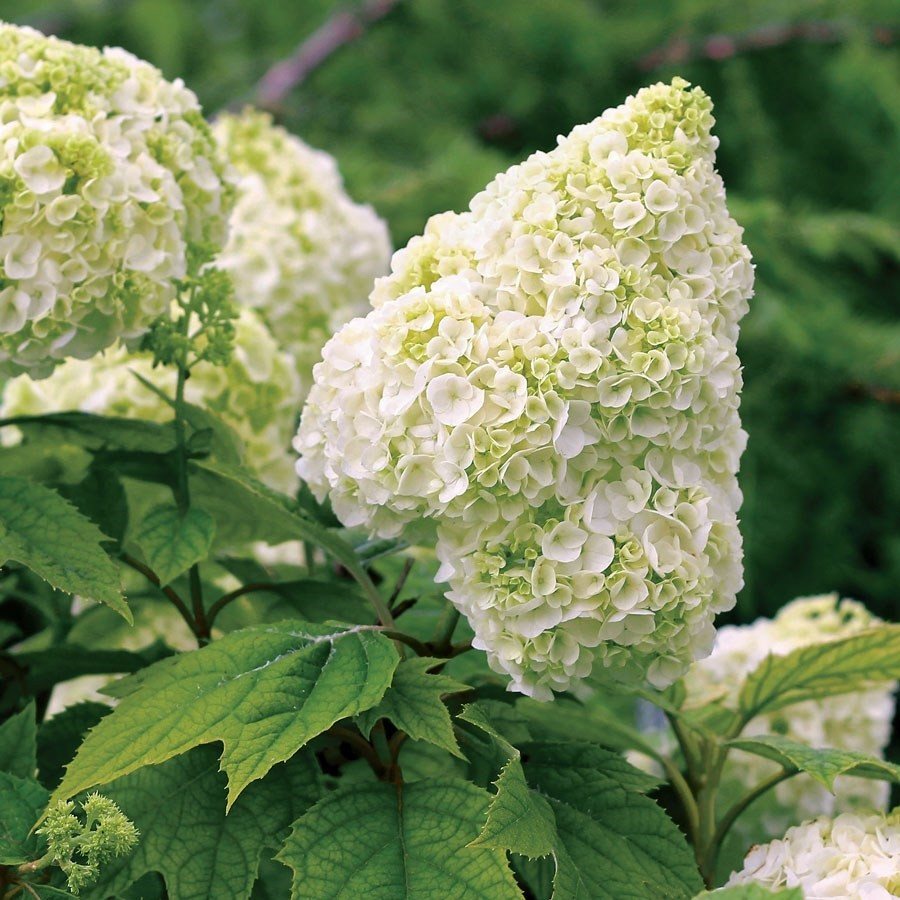
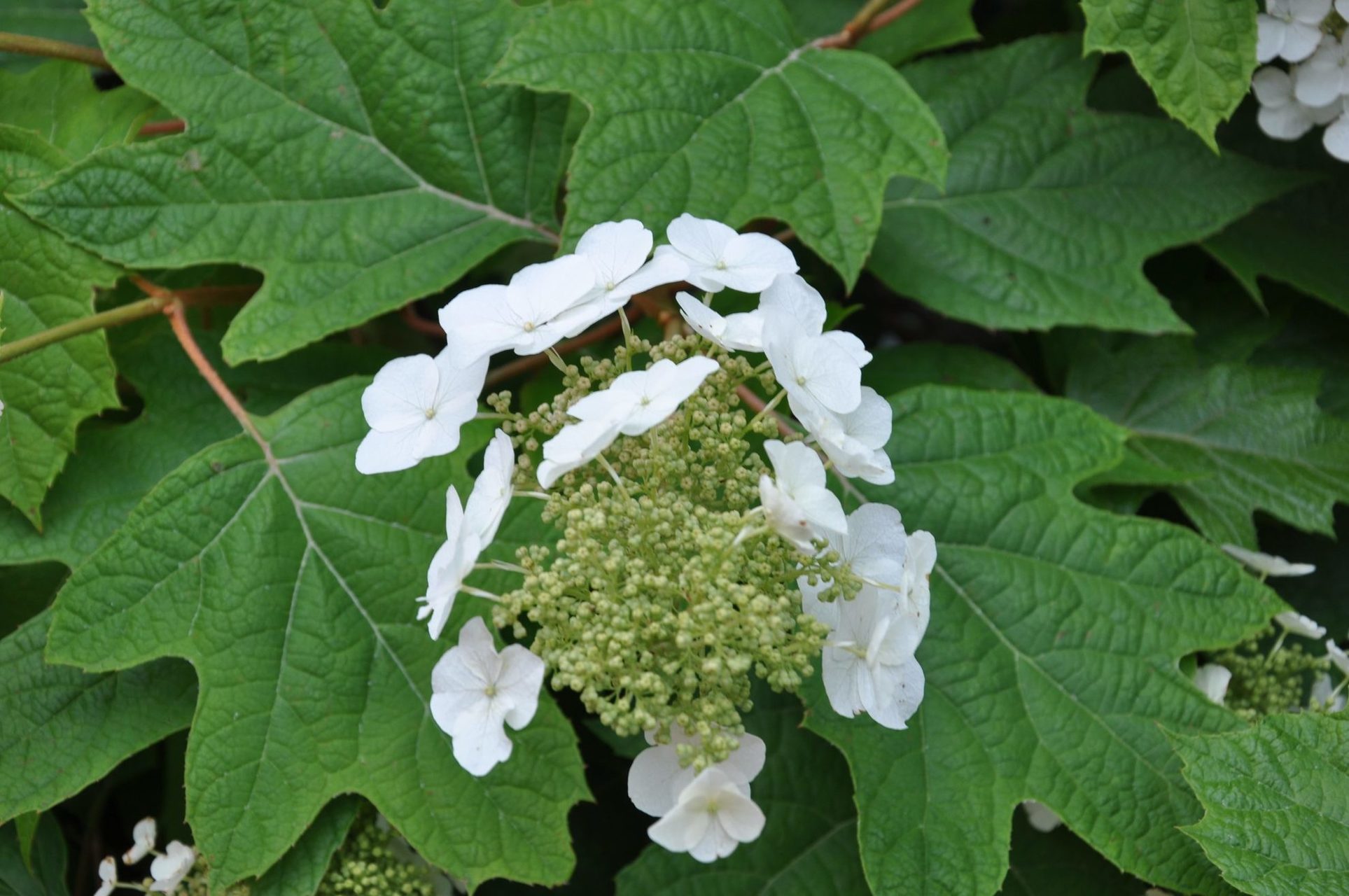
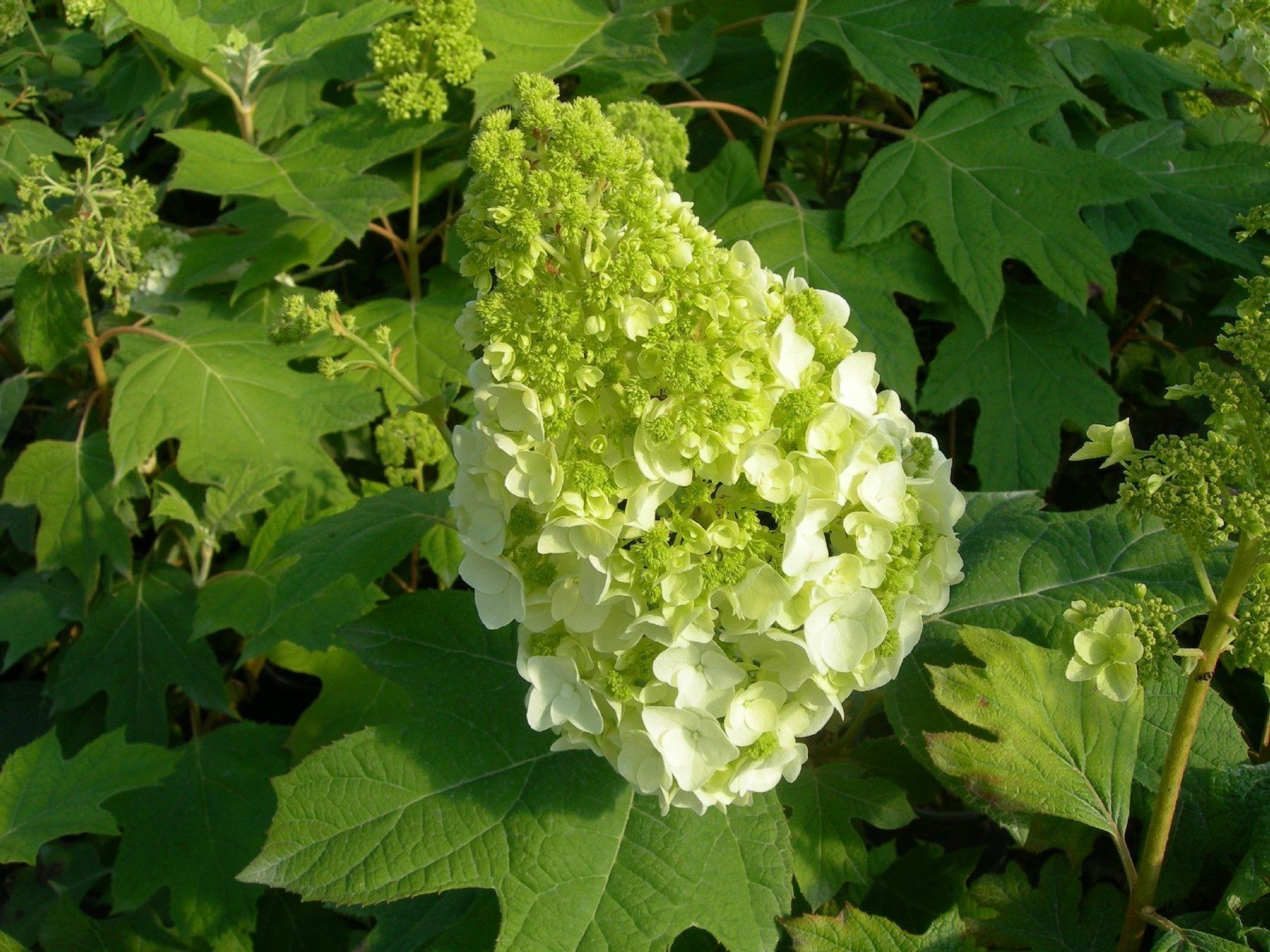
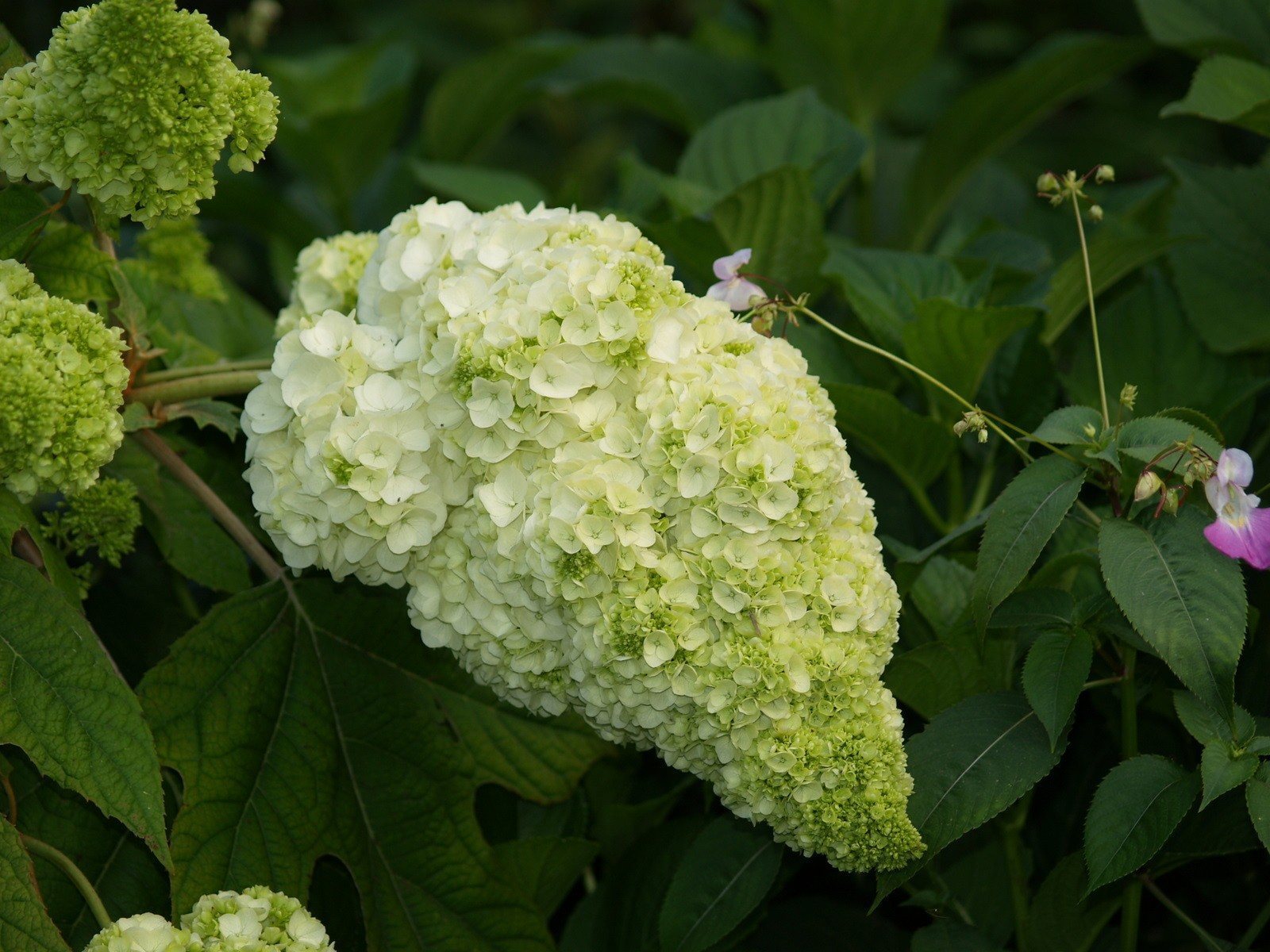
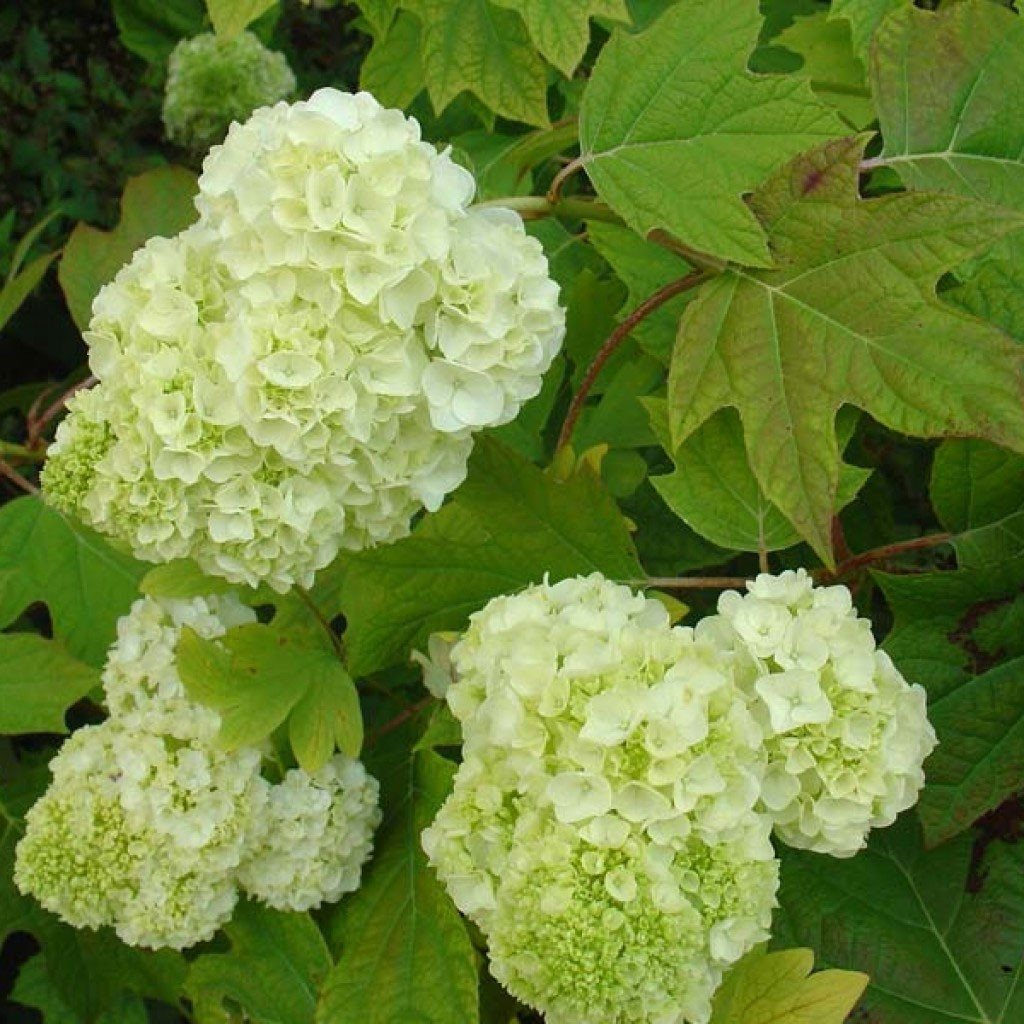





This hydrangea initially produces white buds with a greenish tint, but after a few days they become snow-white.They produce large inflorescences, so support for the stems is required. The plant is planted in well-lit areas of the ground.
Ruby Annabelle or Invincibelle Ruby
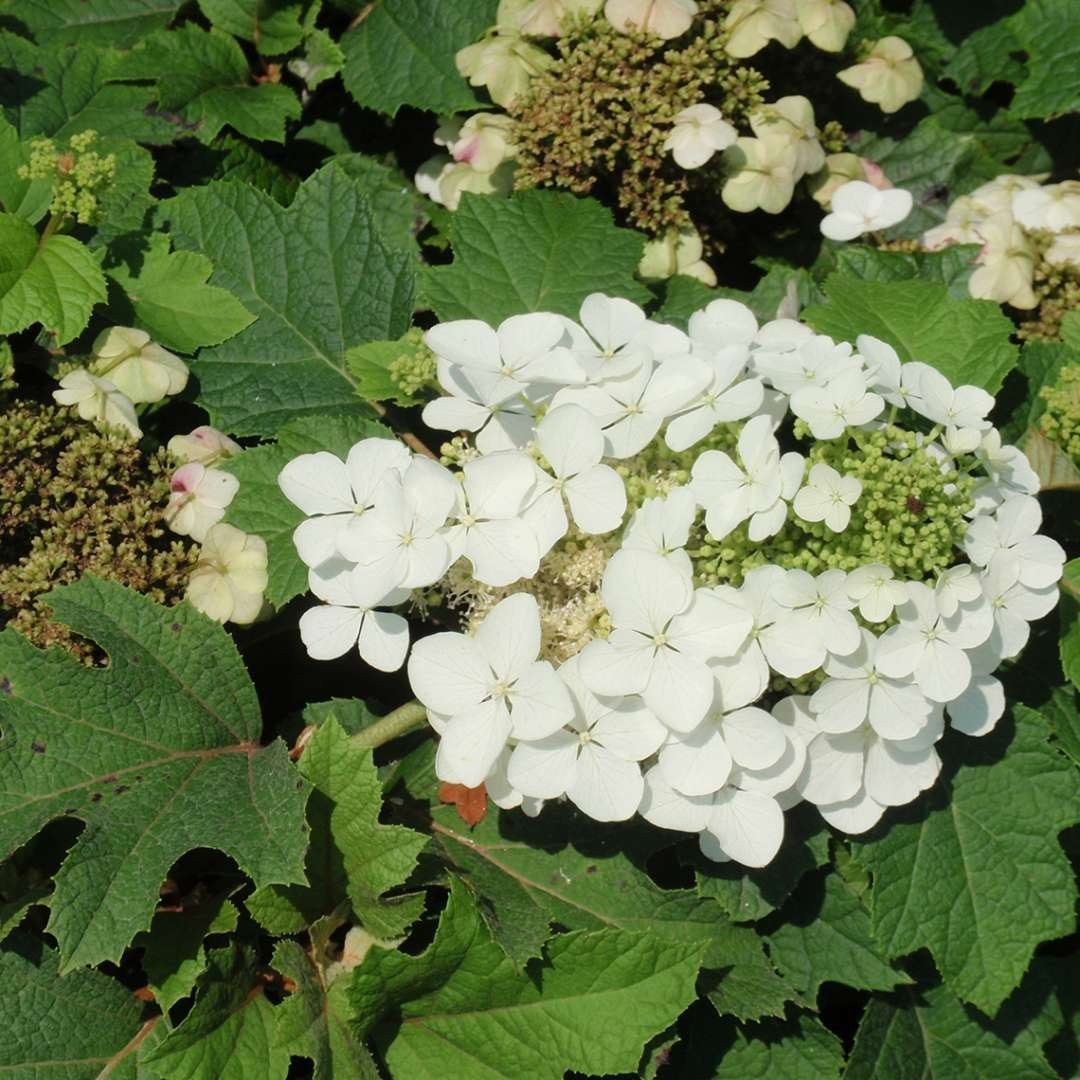
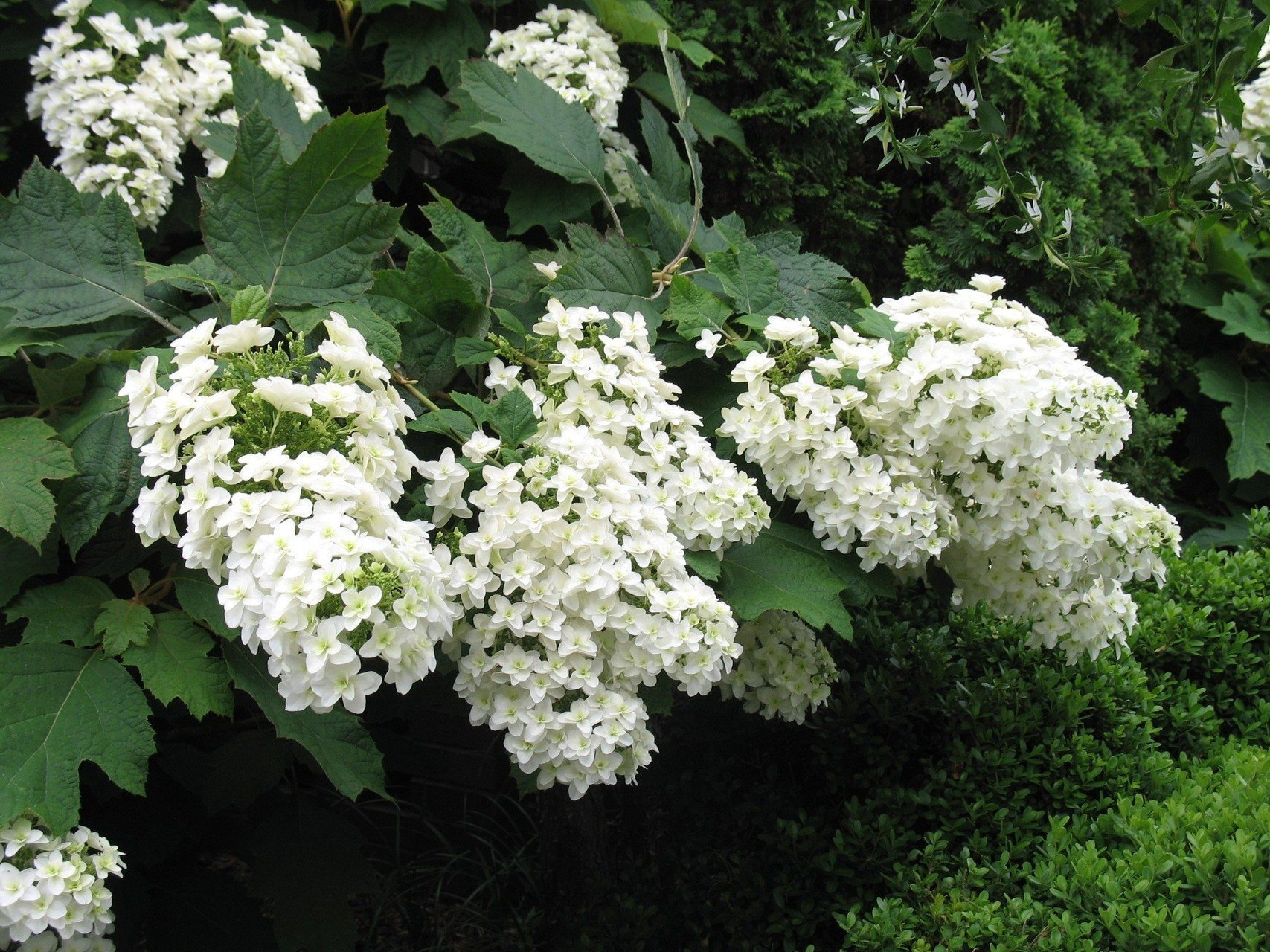
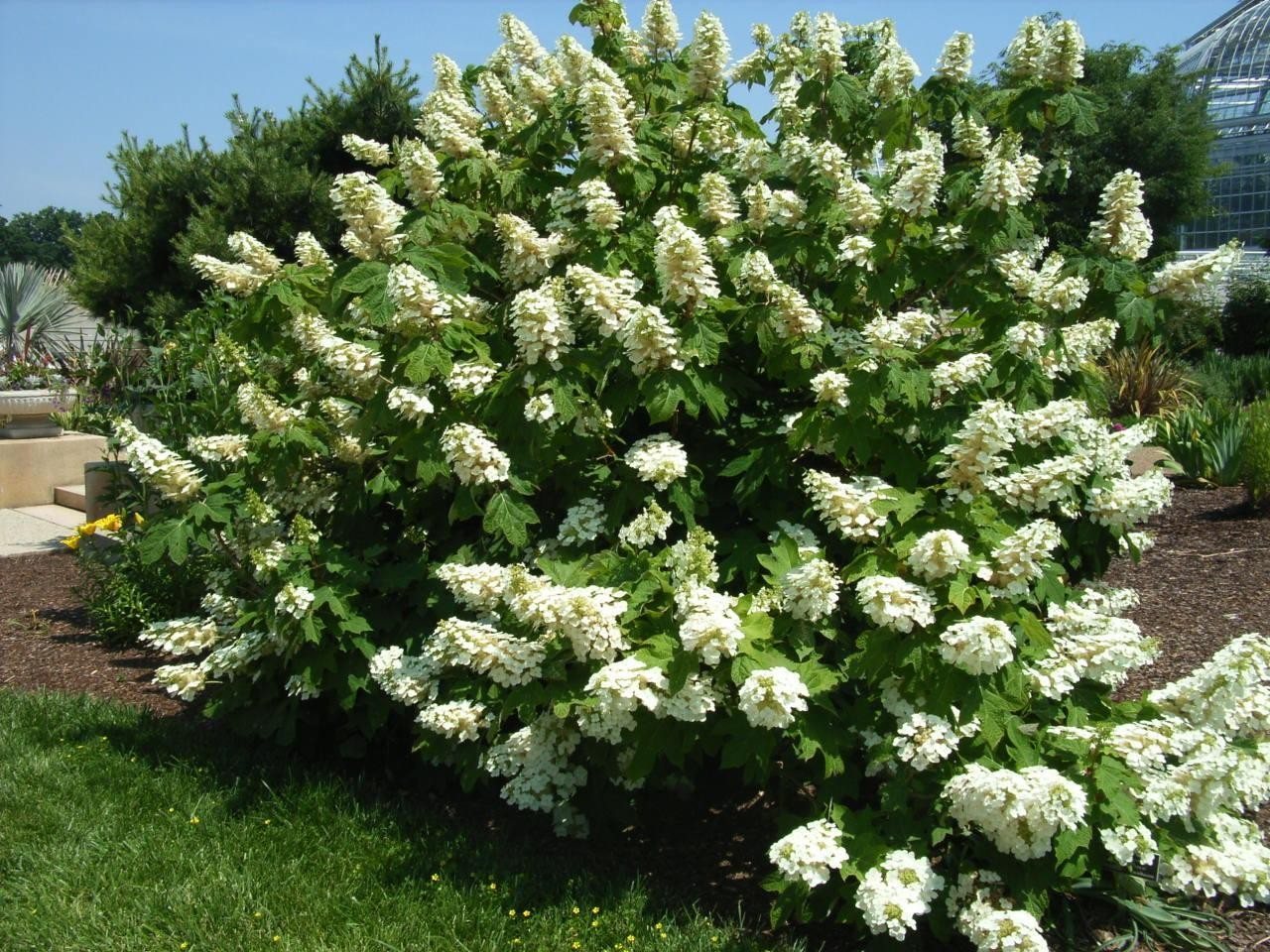

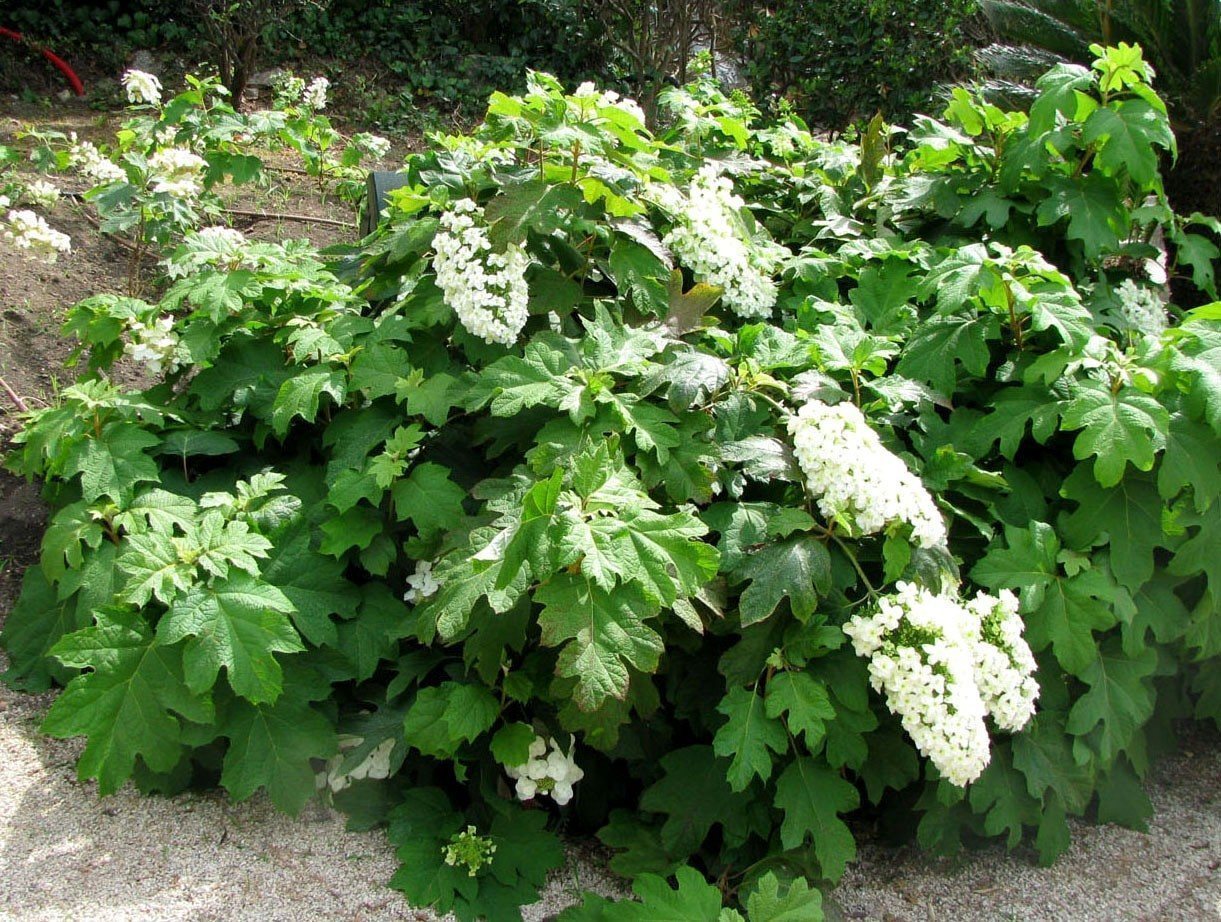





Tree hydrangea has pink shields, and during flowering a bright and pleasant aroma appears. A feature of the variety is the gradual alignment of flower colors. Very large spherical inflorescences are formed, the diameter of which sometimes exceeds 30 cm. For planting, moist soil with average acidity is selected.
Magical Pinkerbelle
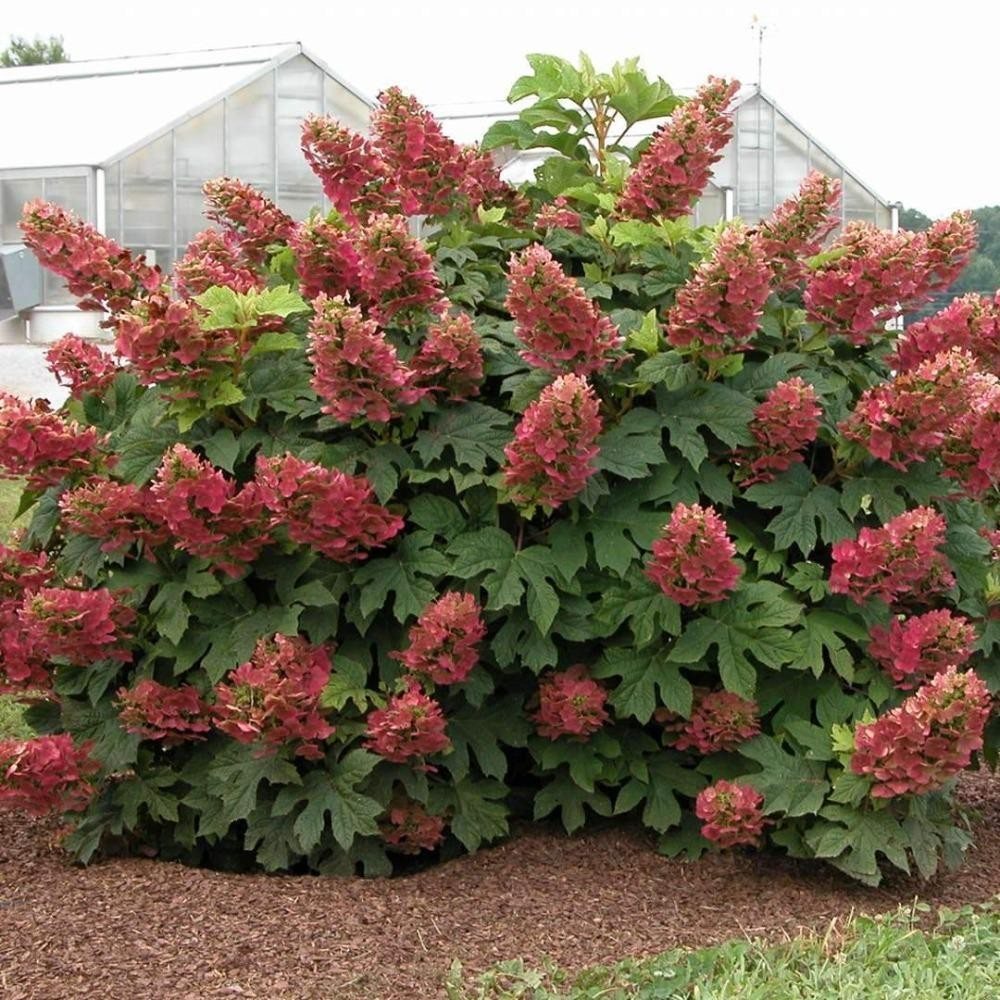
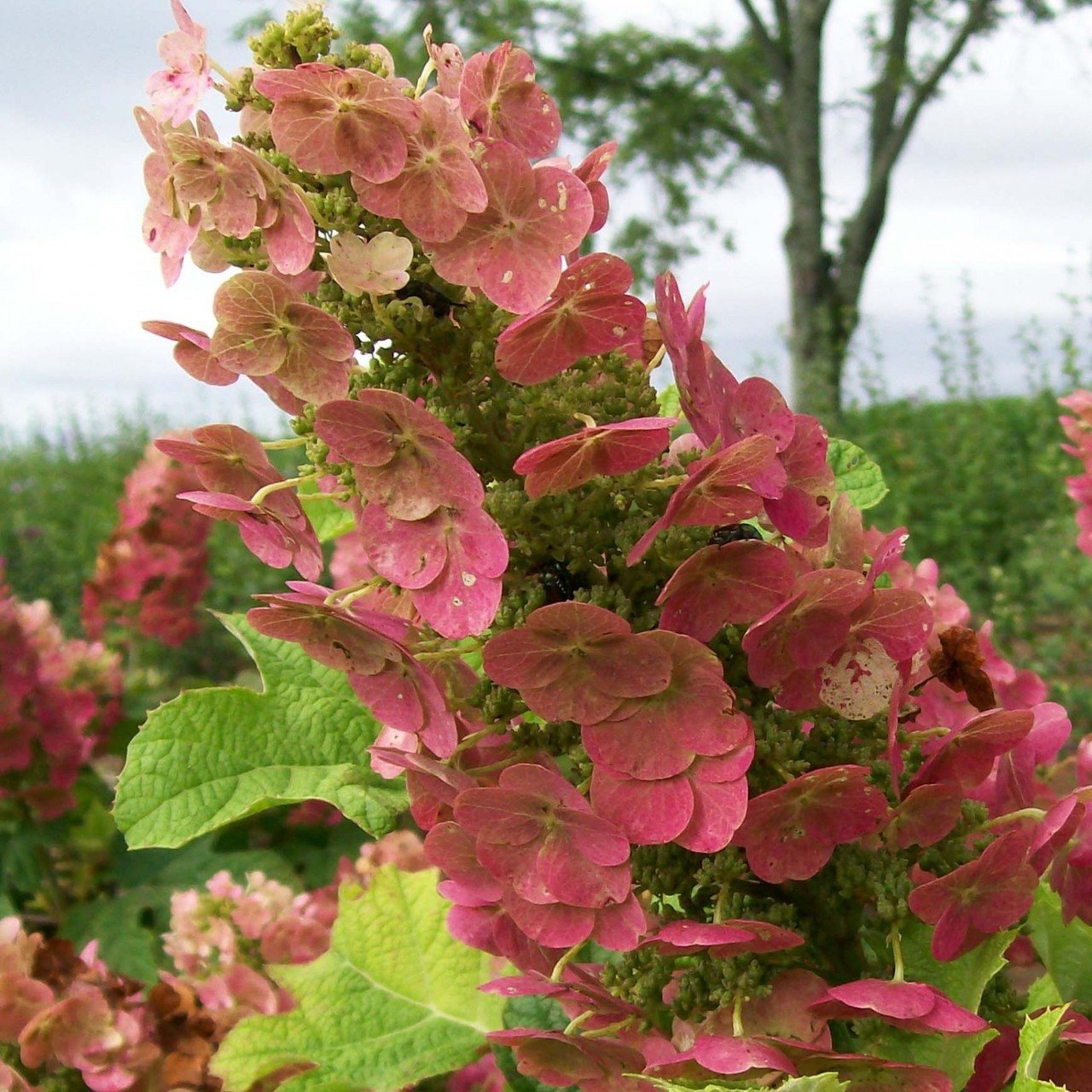
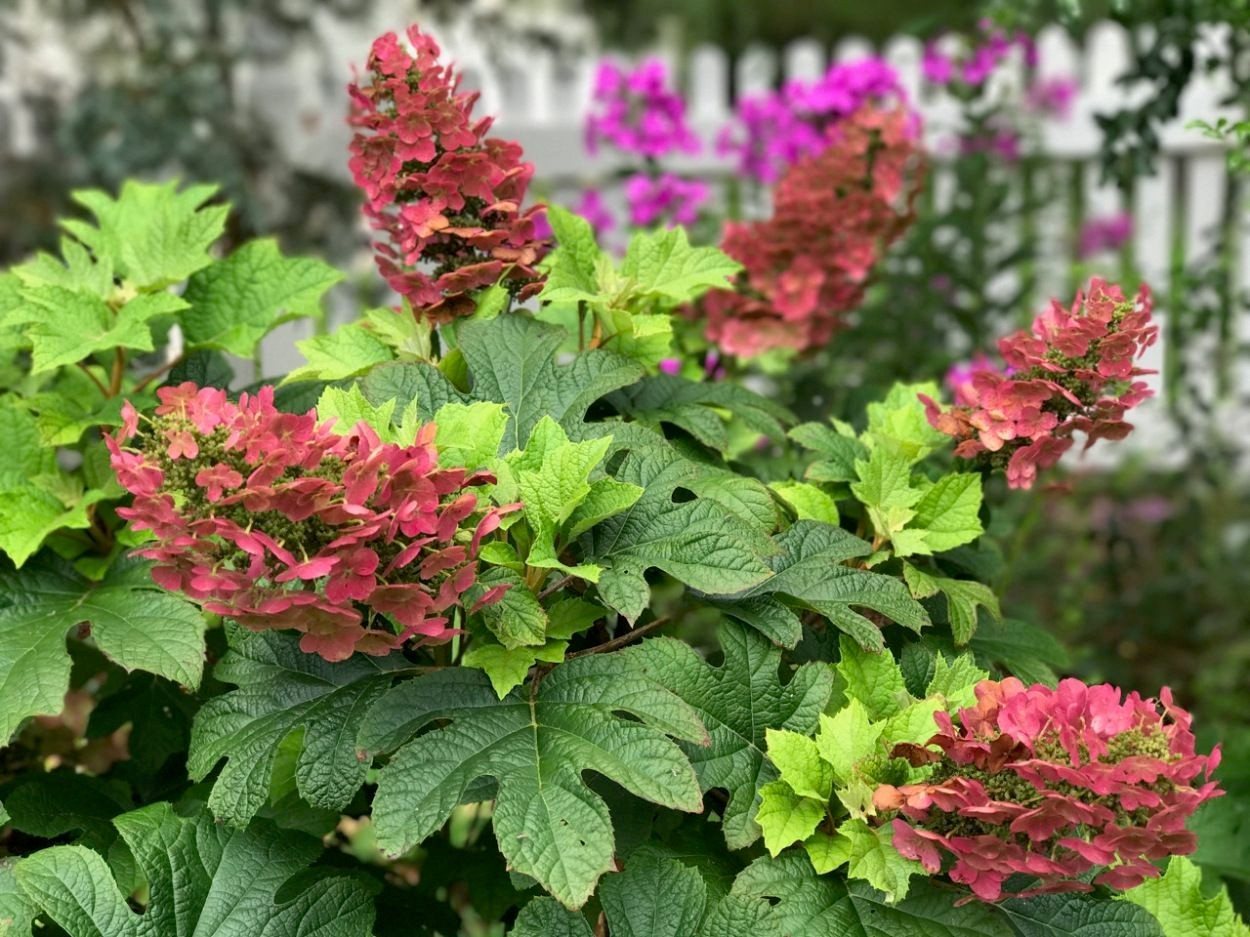
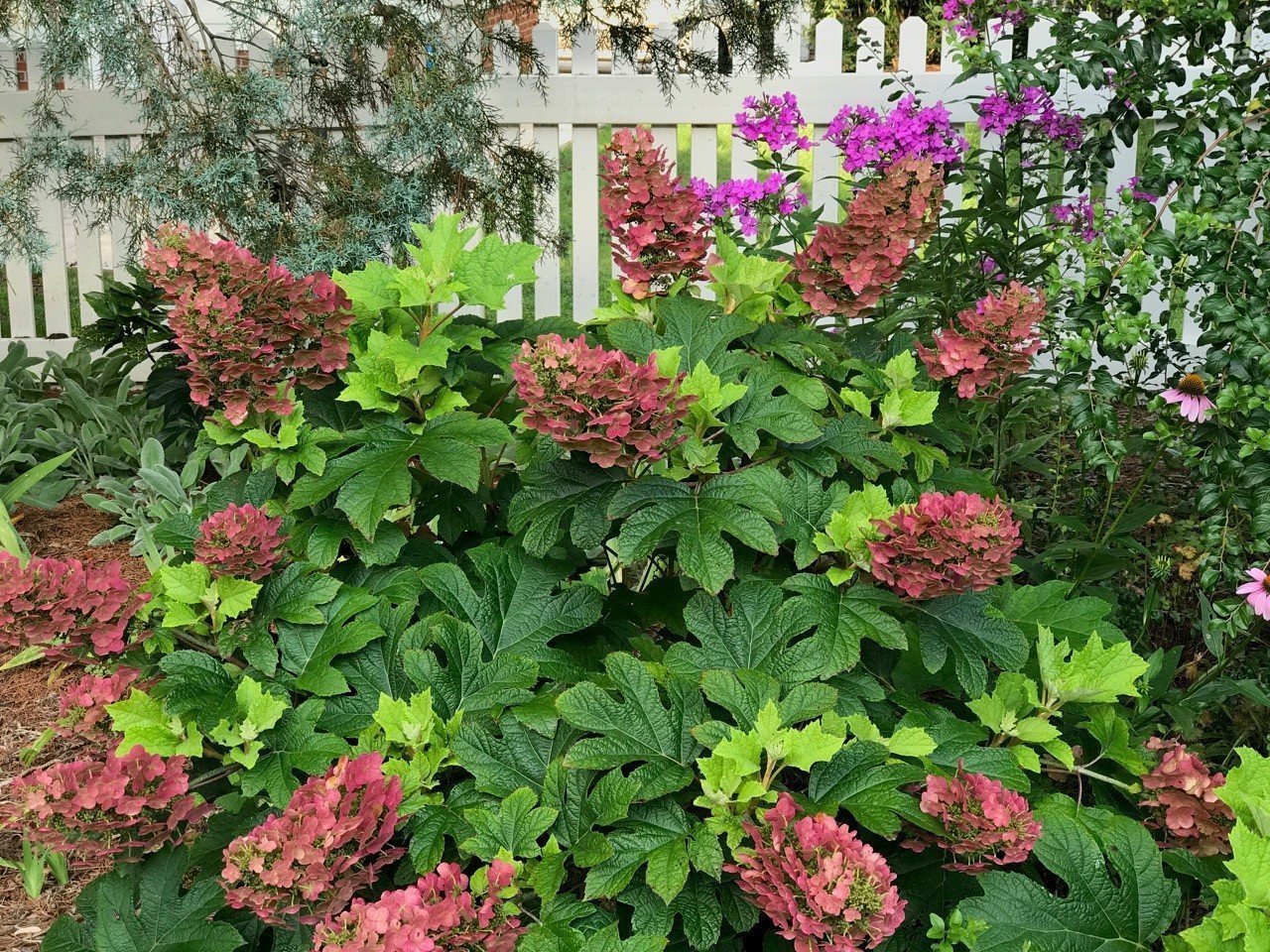






This variety is considered the best among all varieties with purple-pink flowers. For cultivation, sunny or partial shade places are chosen. Drained soil with high moisture content is ideal. The height and width of the bush is 1.3 m. Hemispherical inflorescences are formed, the diameter of which is 15 cm.
Pink Pinkushen or Pink Pincushion
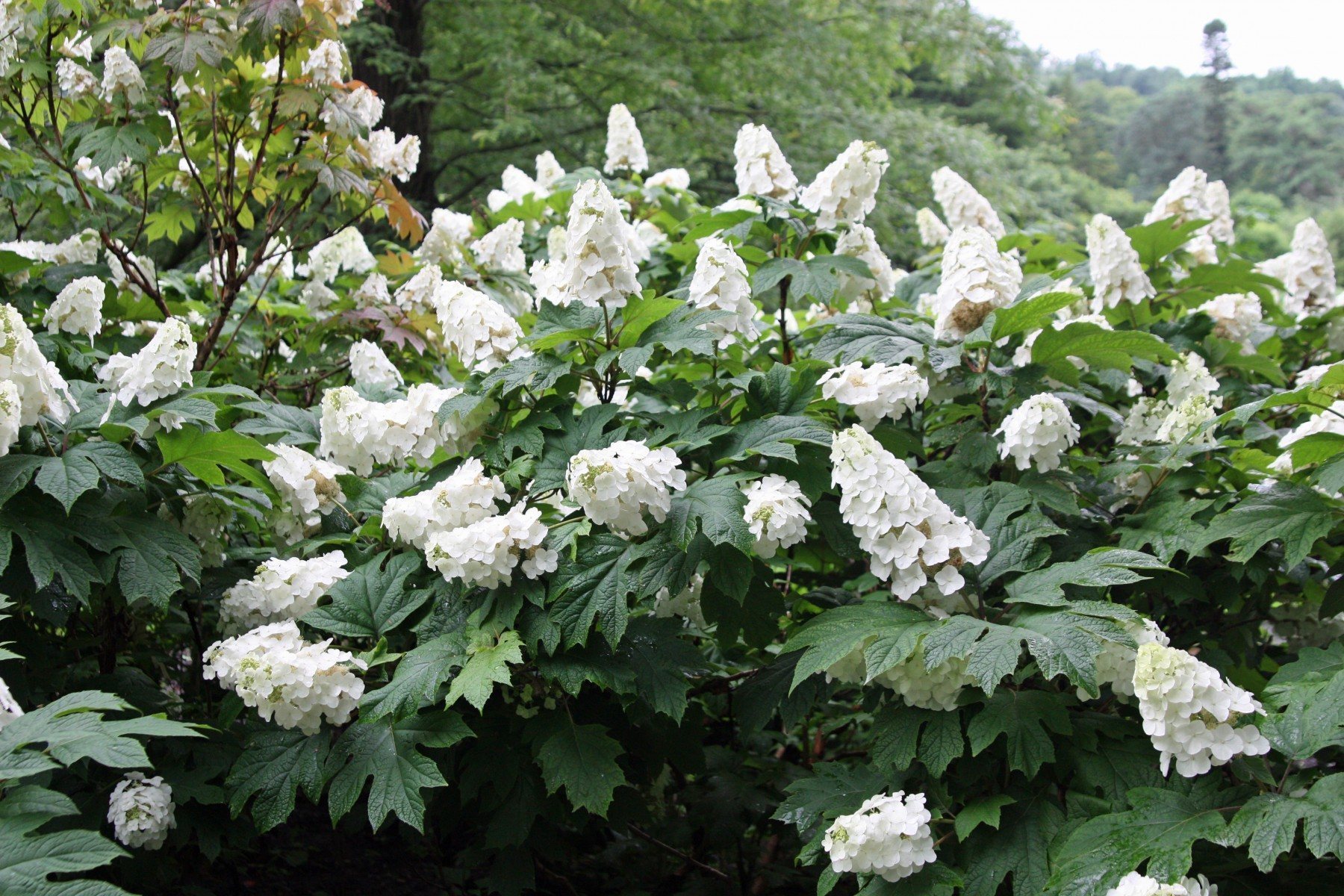
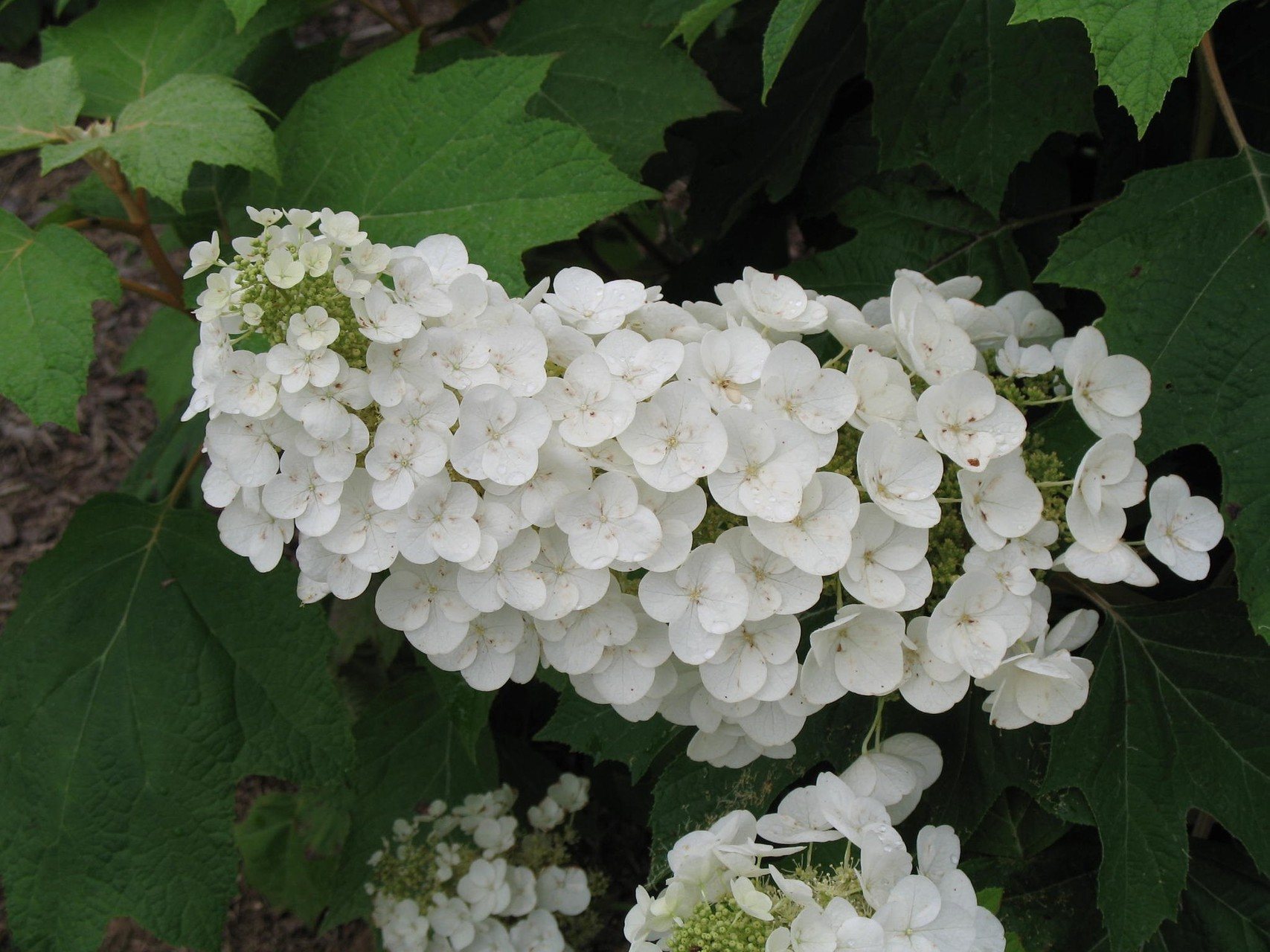
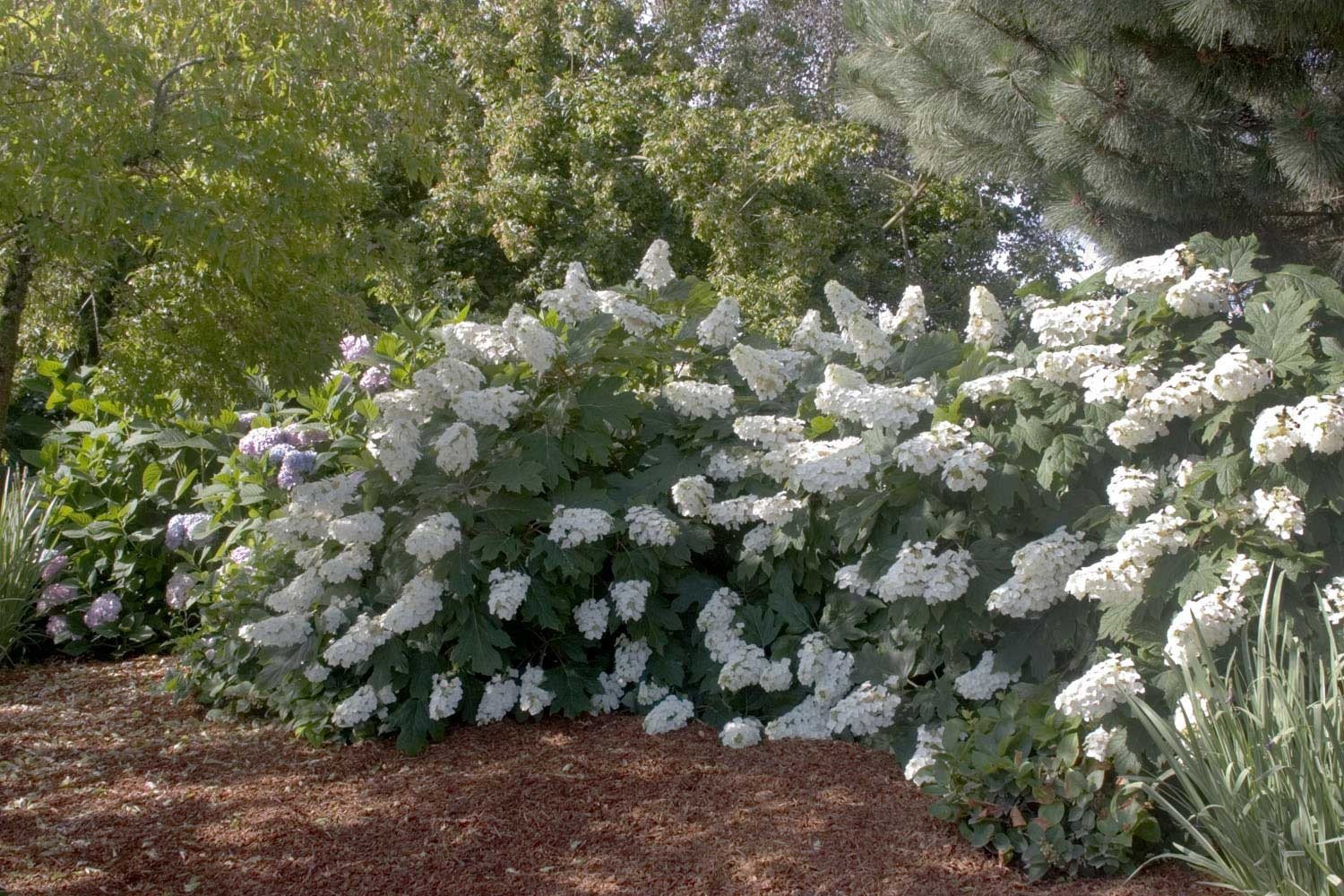

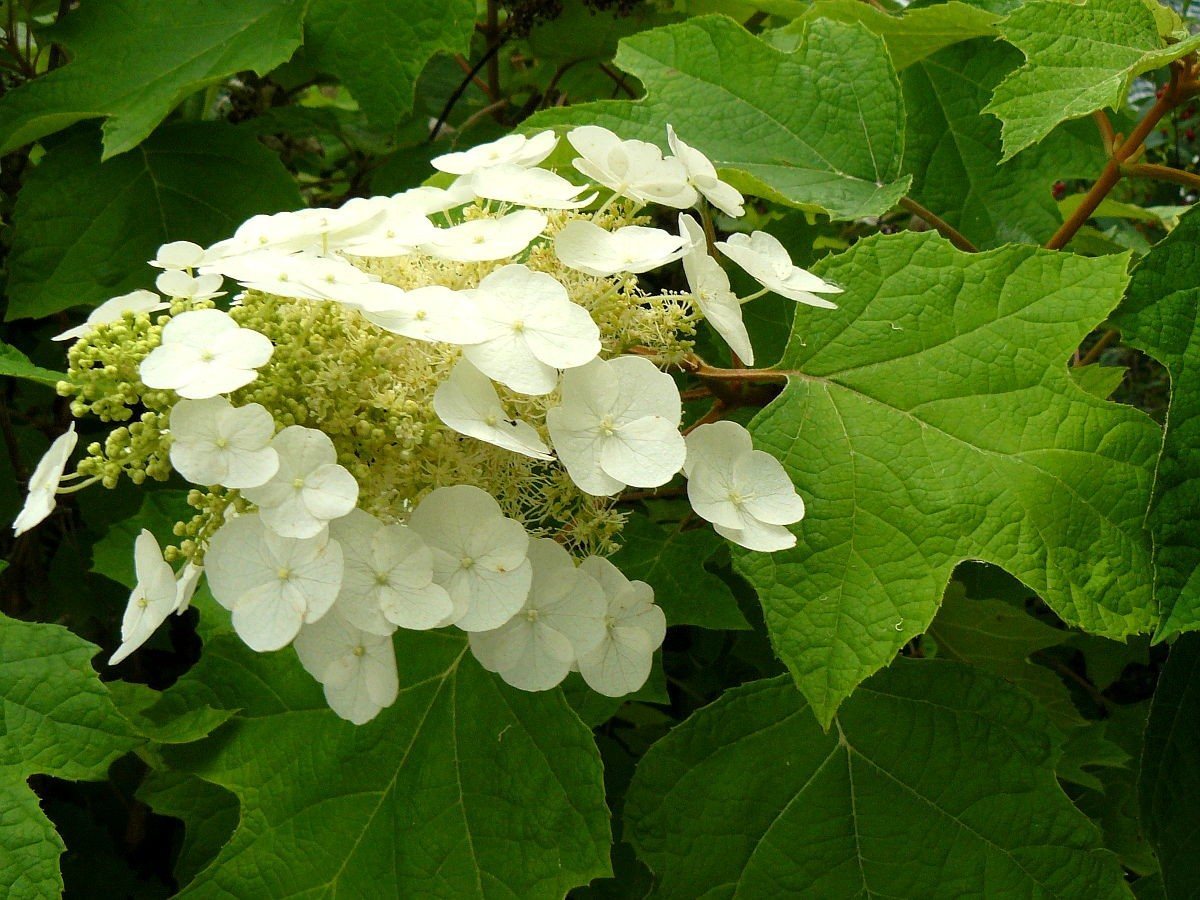





During flowering, the color of the petals changes from pink to dark pink. Inflorescences are formed from small reproductive flowers, among which there are a few sterile ones. The height of the bush is 1.2 meters.
Candibella Bubblegum
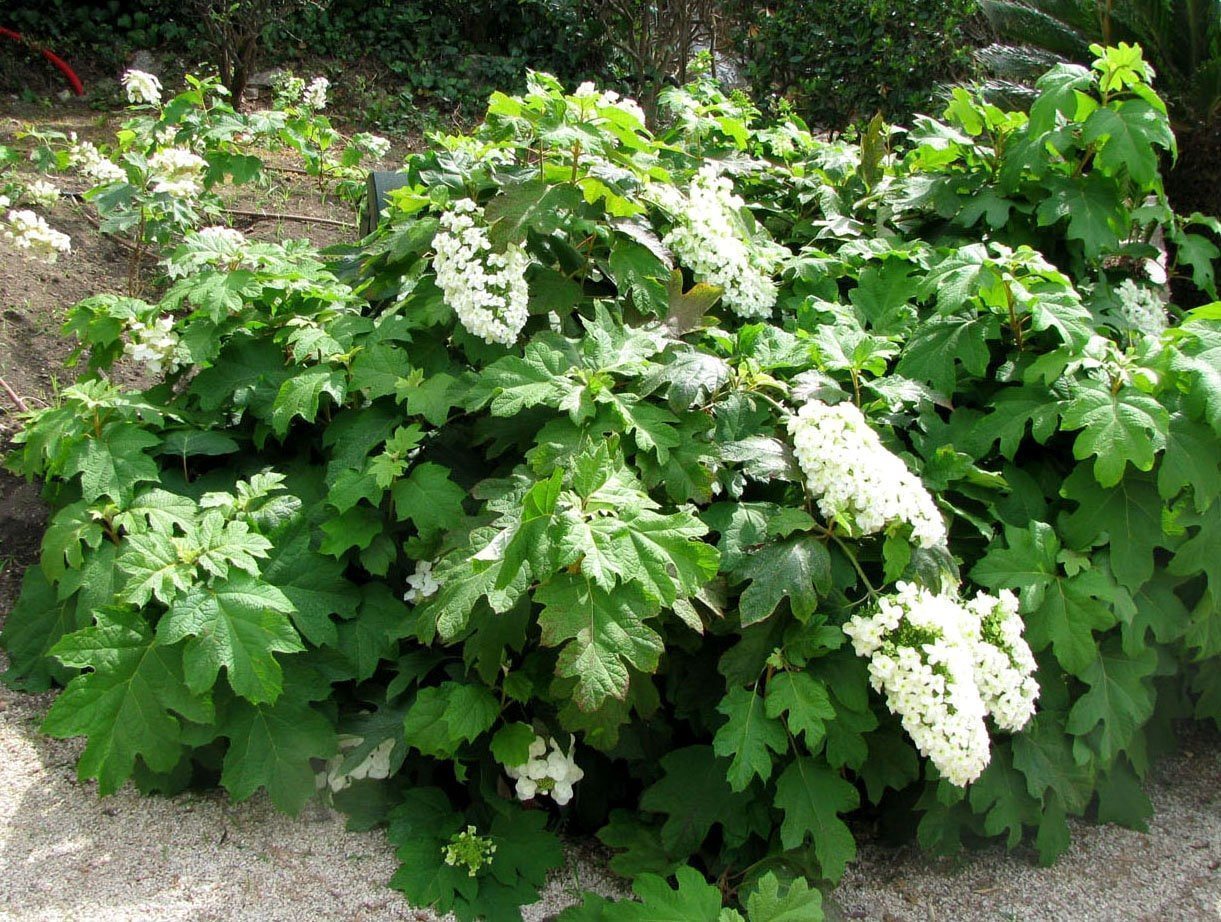
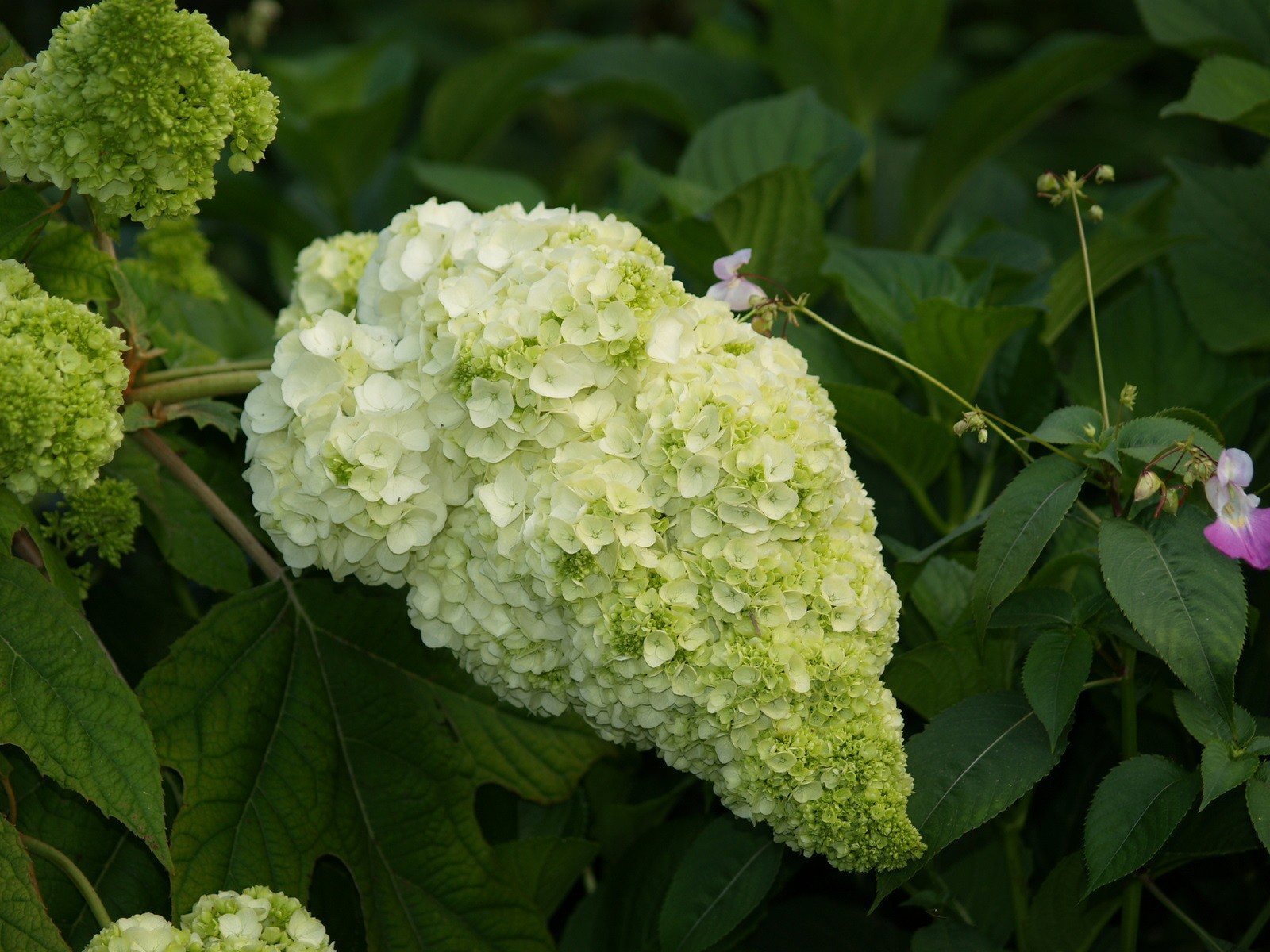
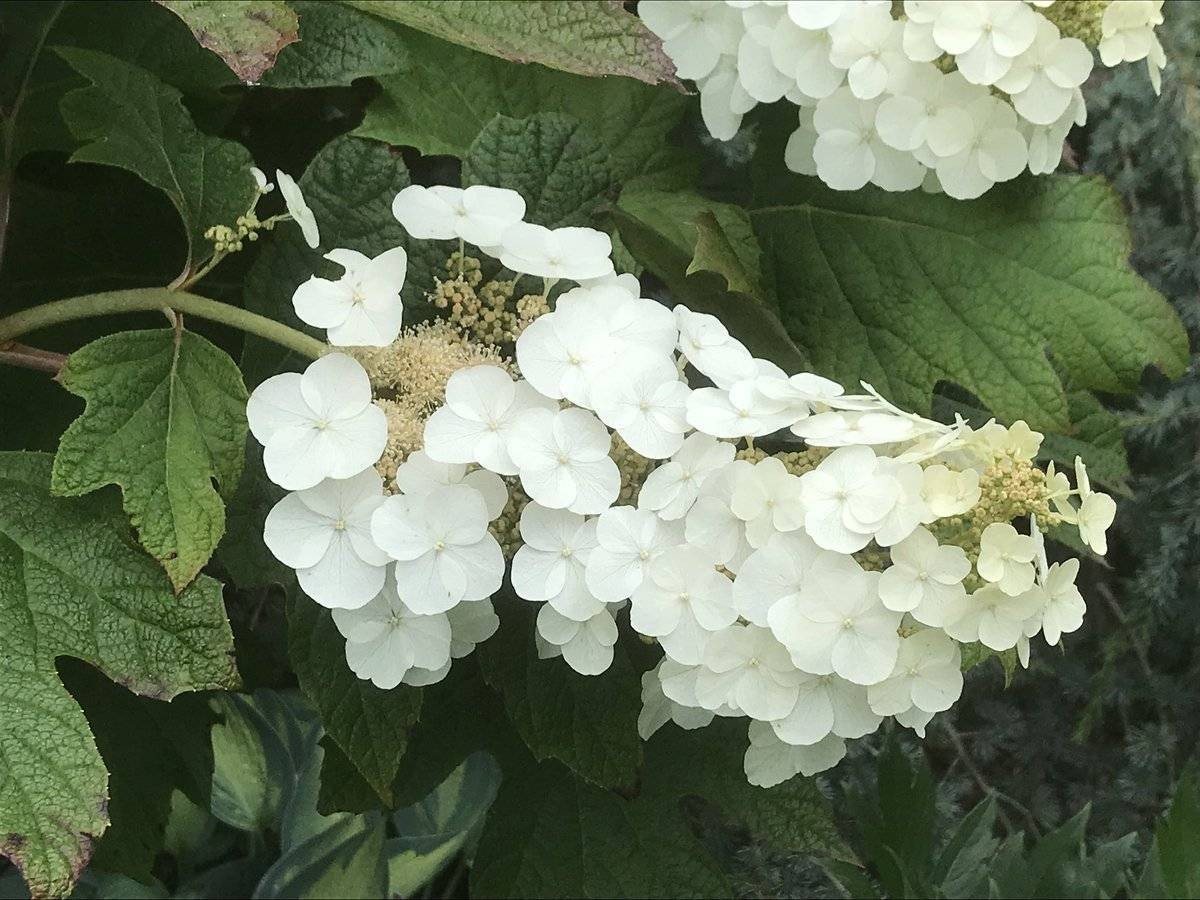
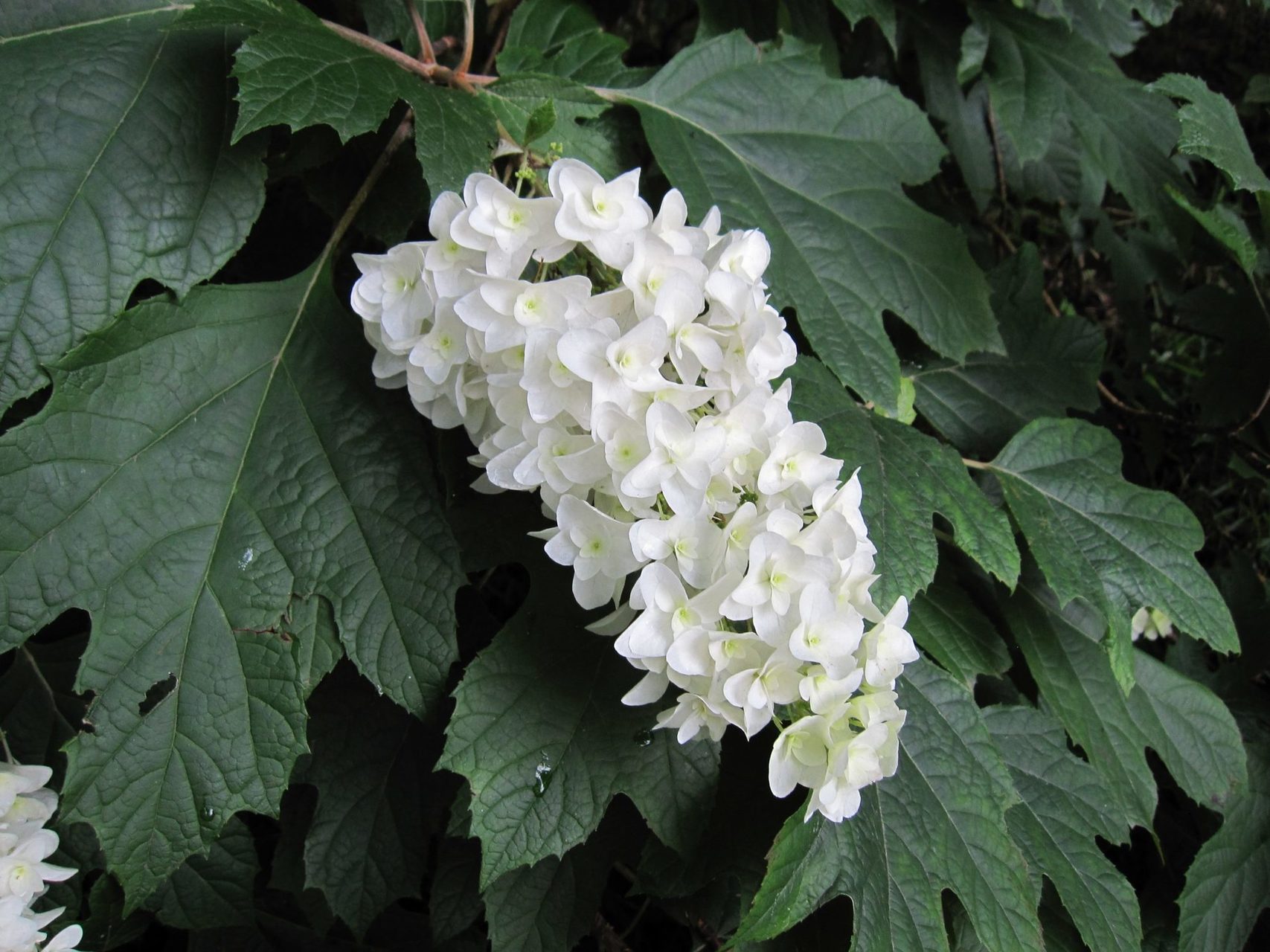
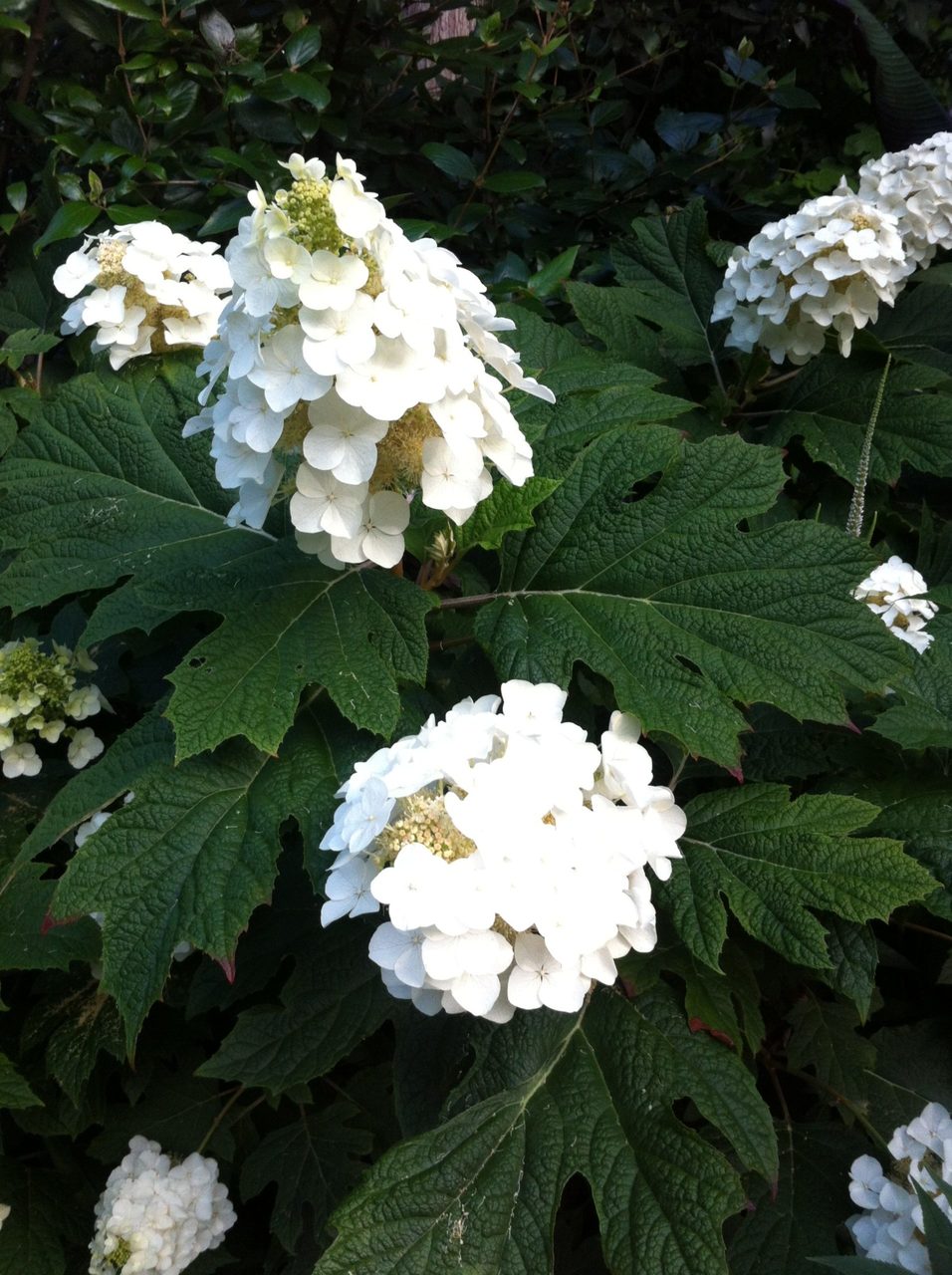





This variety produces an inflorescence of many sterile pink flowers that gradually turn bright pink. Thanks to the strong shoots, the inflorescences do not break. Planting is carried out in partial shade.
Candibella Marshmallow

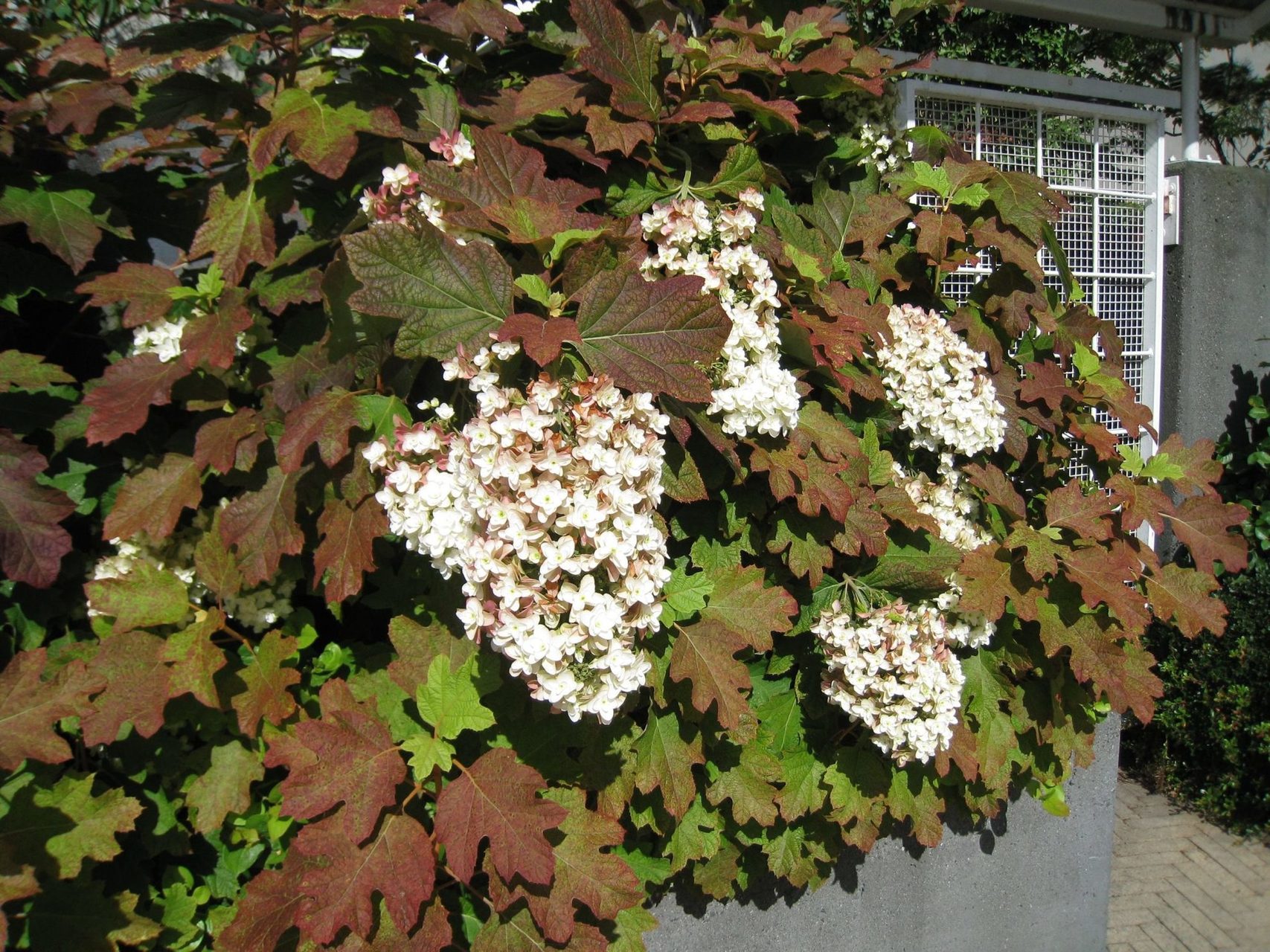
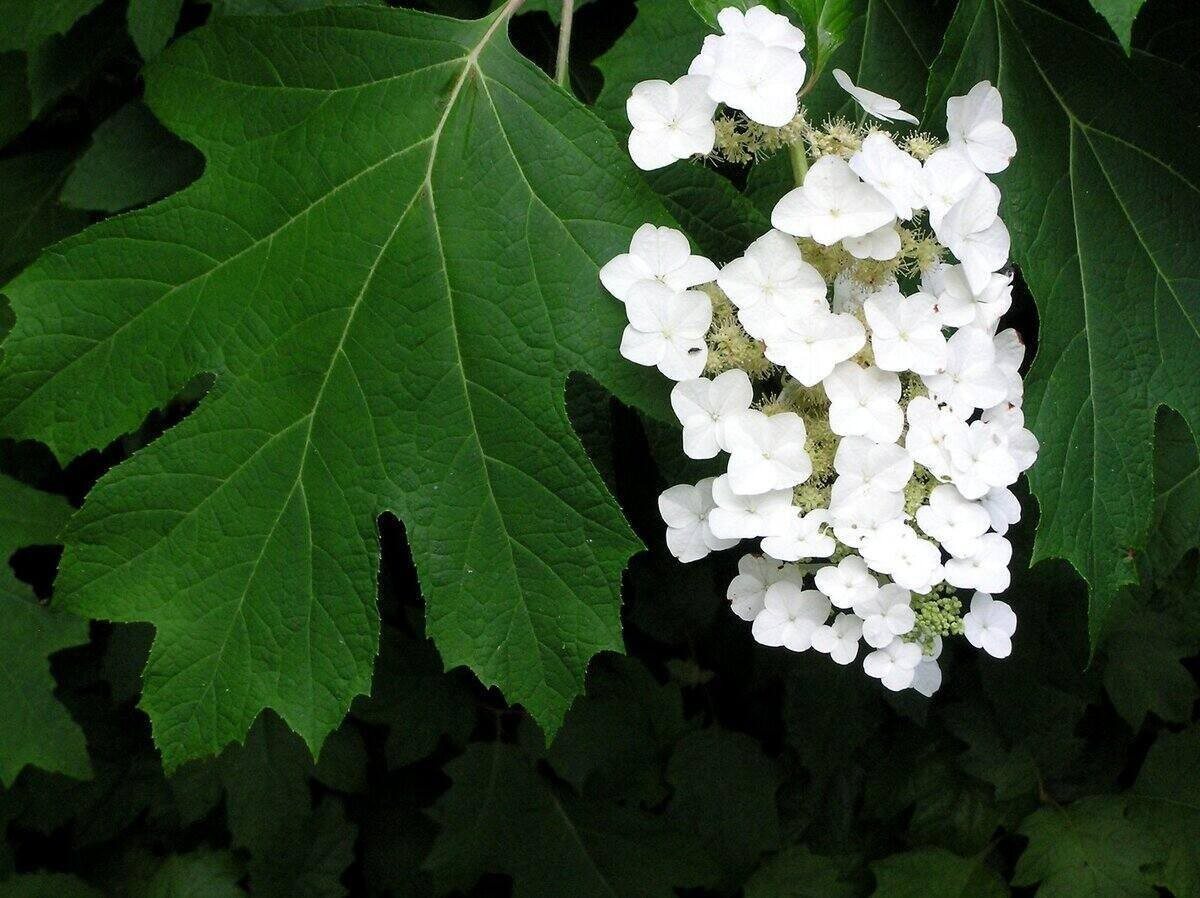
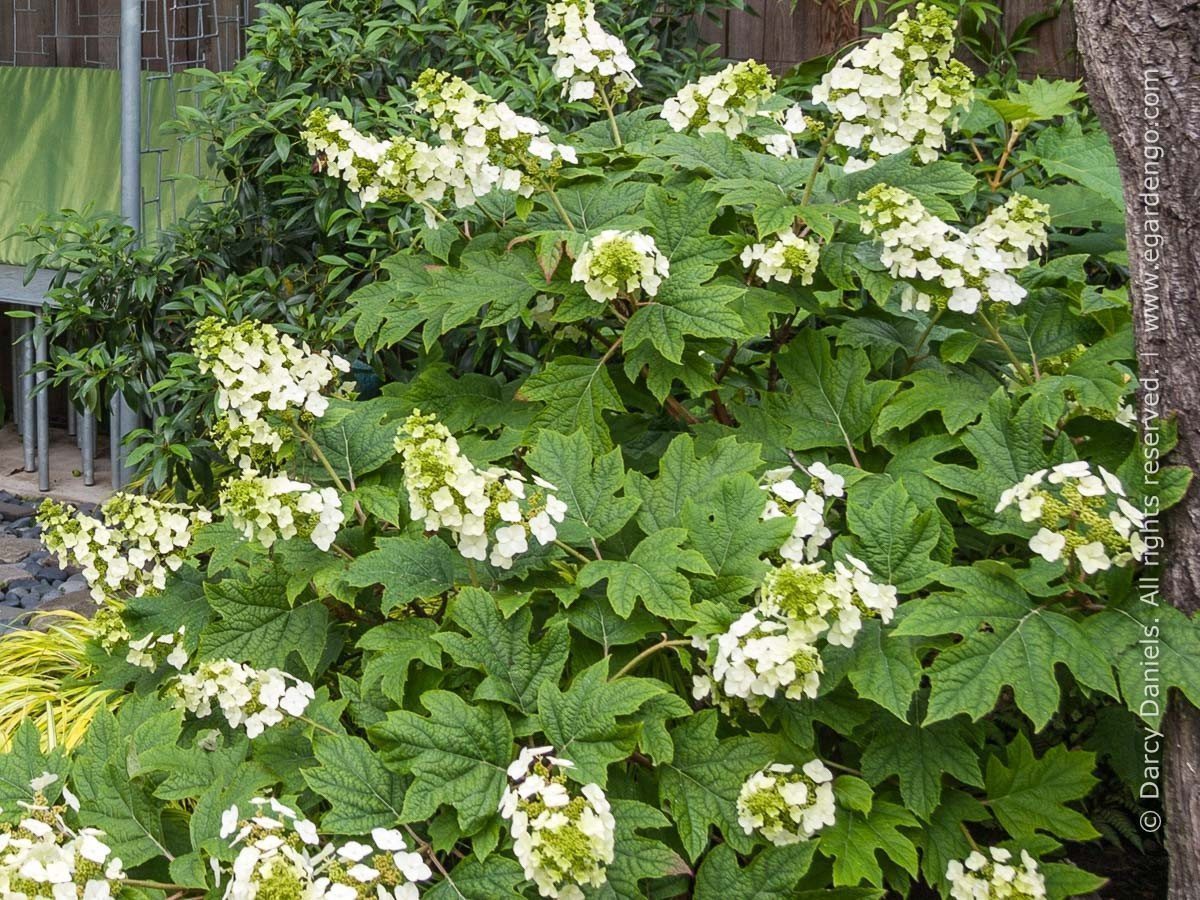






The dwarf variety of hydrangea has pink flowers, from which hemispherical inflorescences are formed. The height of the plant does not exceed 0.8 cm, and the diameter of the inflorescences is 16 cm.
Incredible Blush or Sweet Annabelle
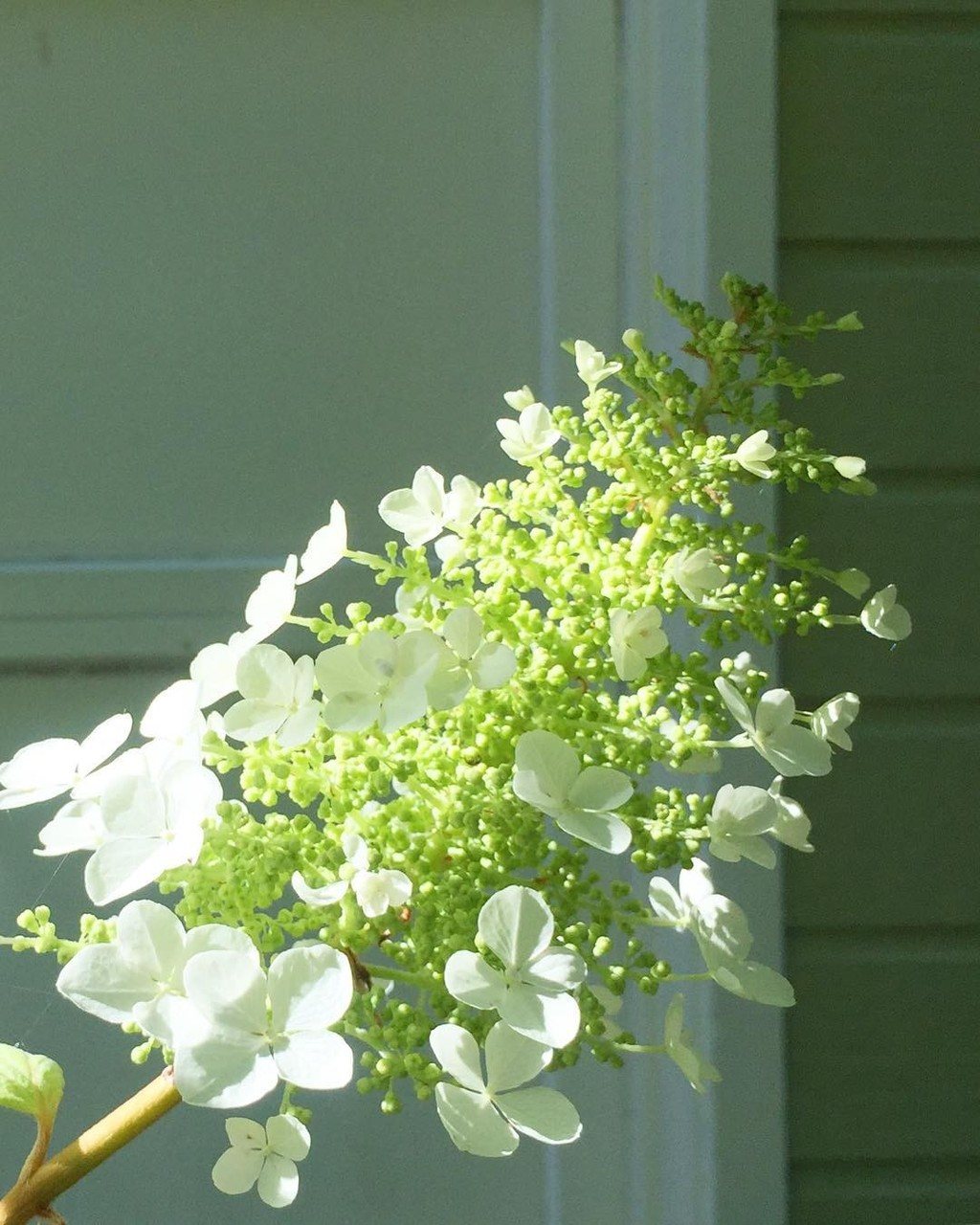
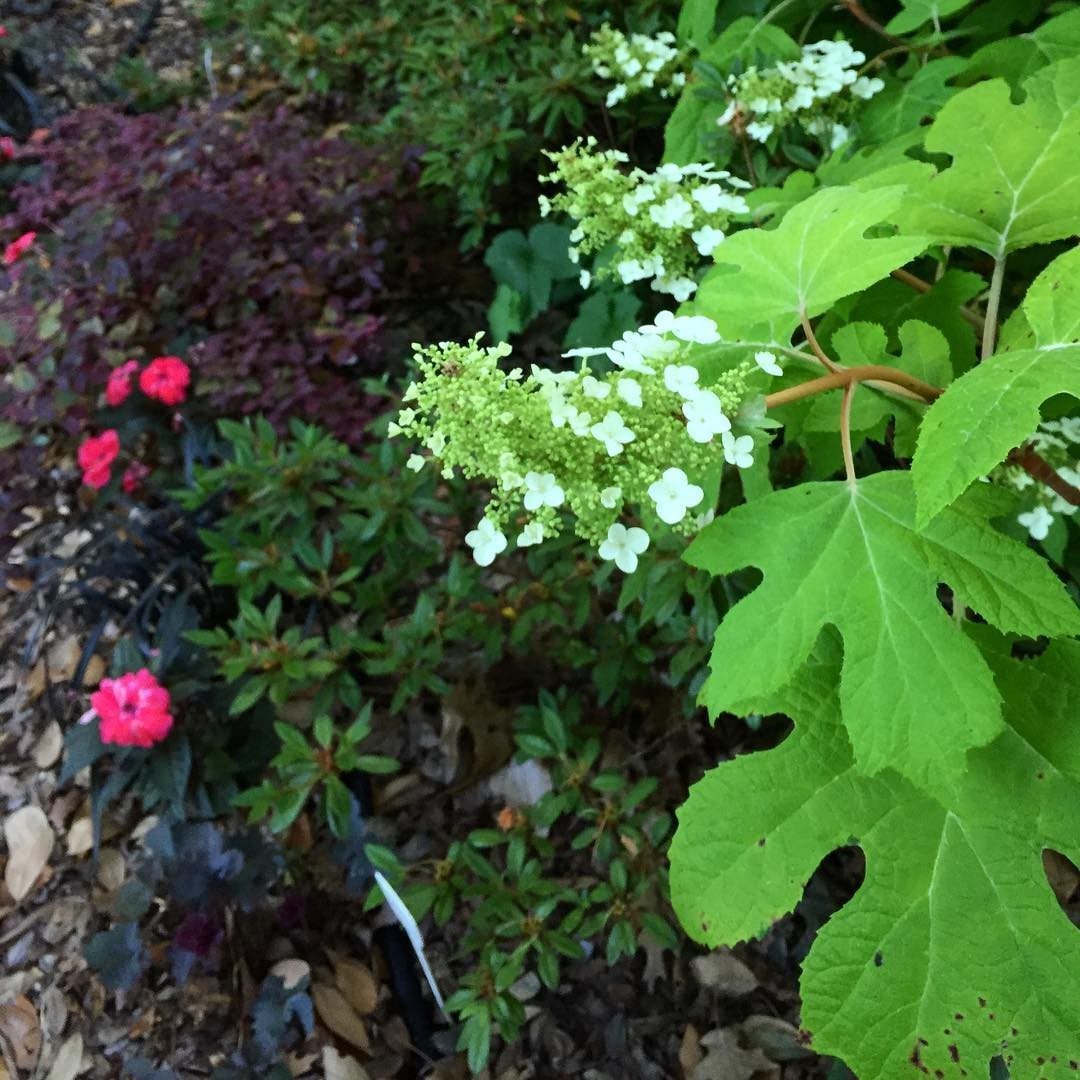
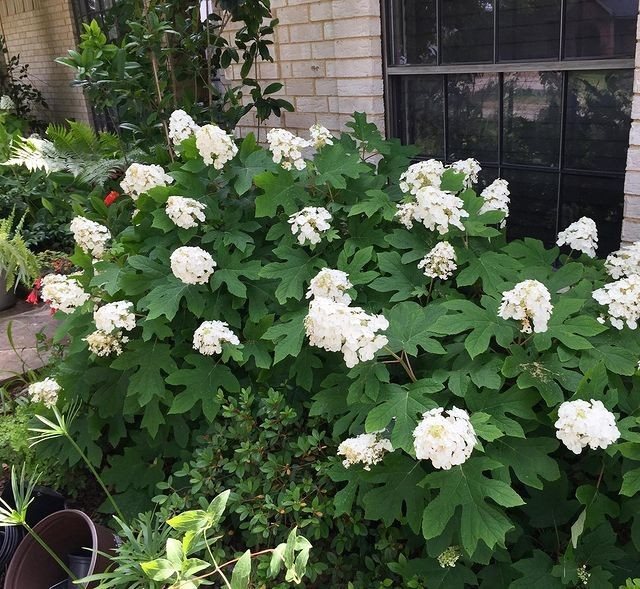
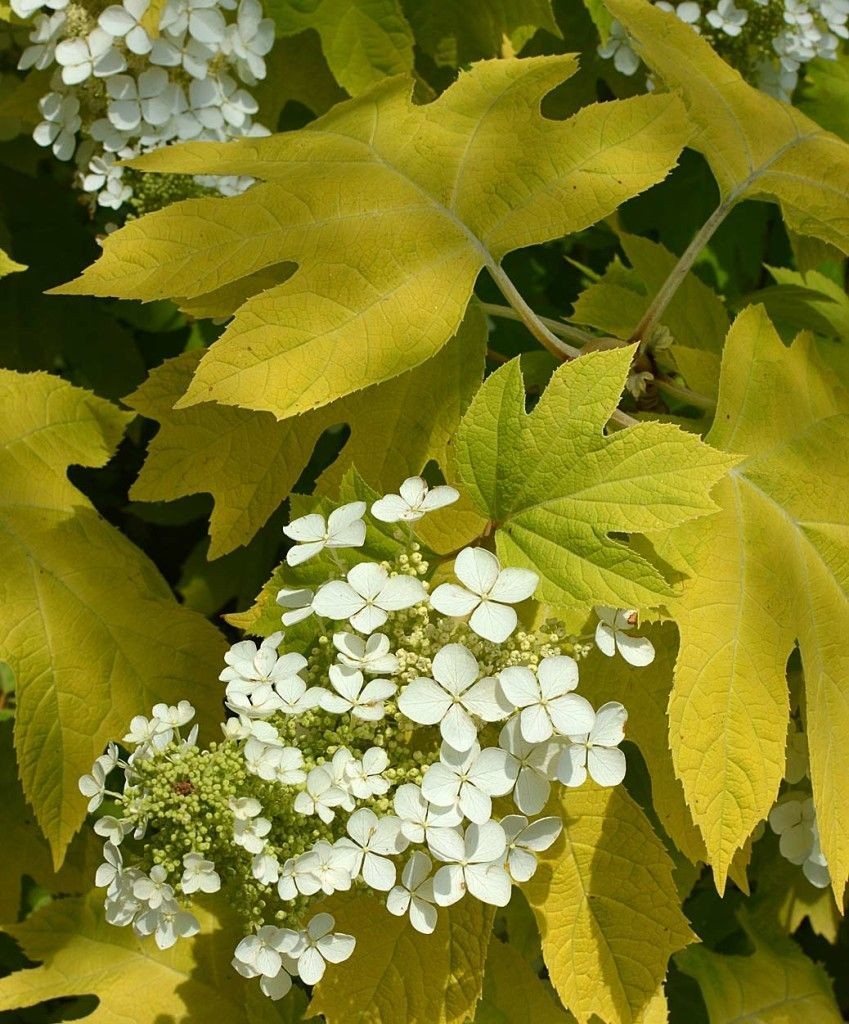
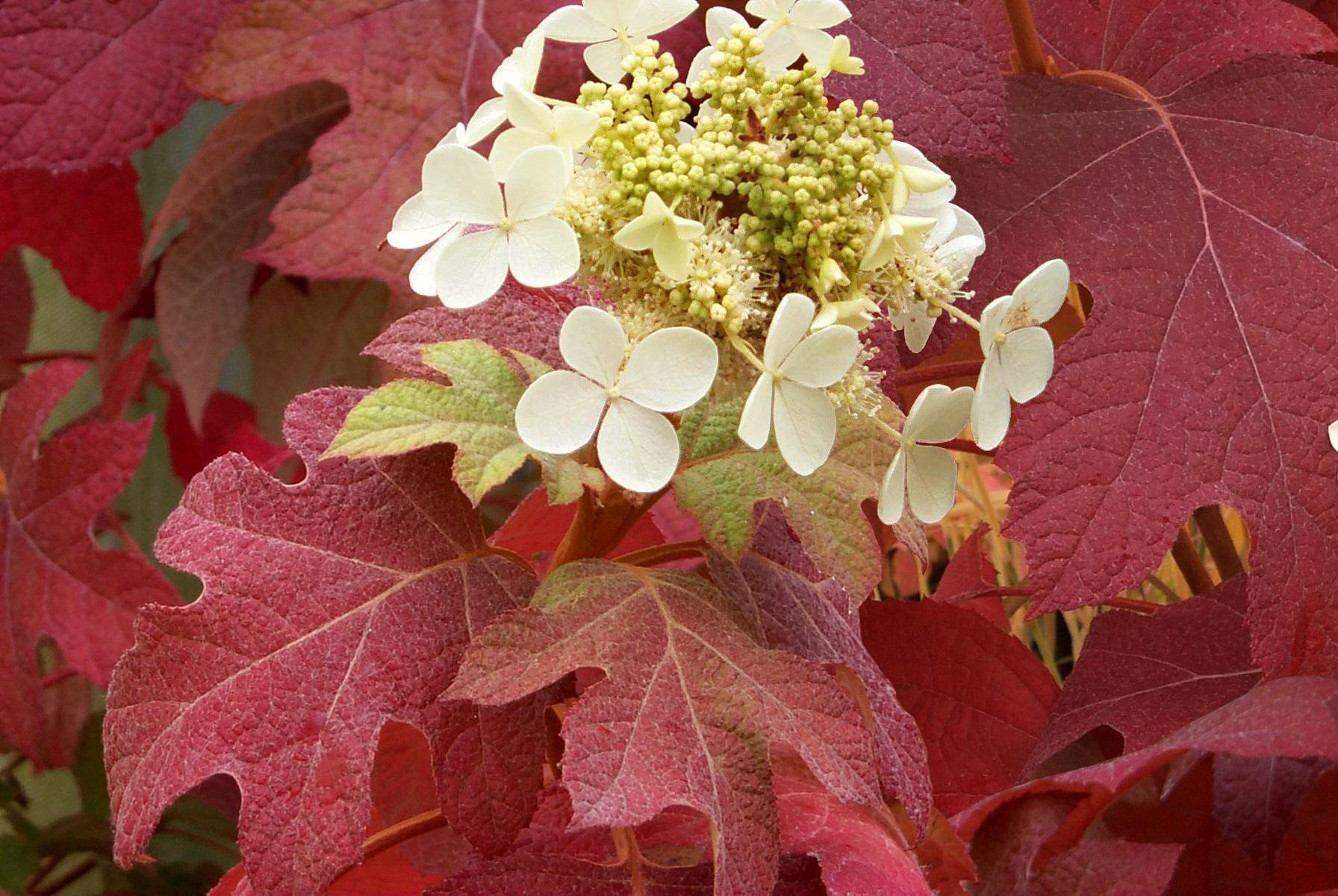





The variety is characterized by high frost resistance and decorative properties. It has strong shoots and large scutes. The height reaches 1.5 meters. Hemispherical inflorescences with a diameter of 20 cm are formed on the shoots.
Hydrangea oakleaf
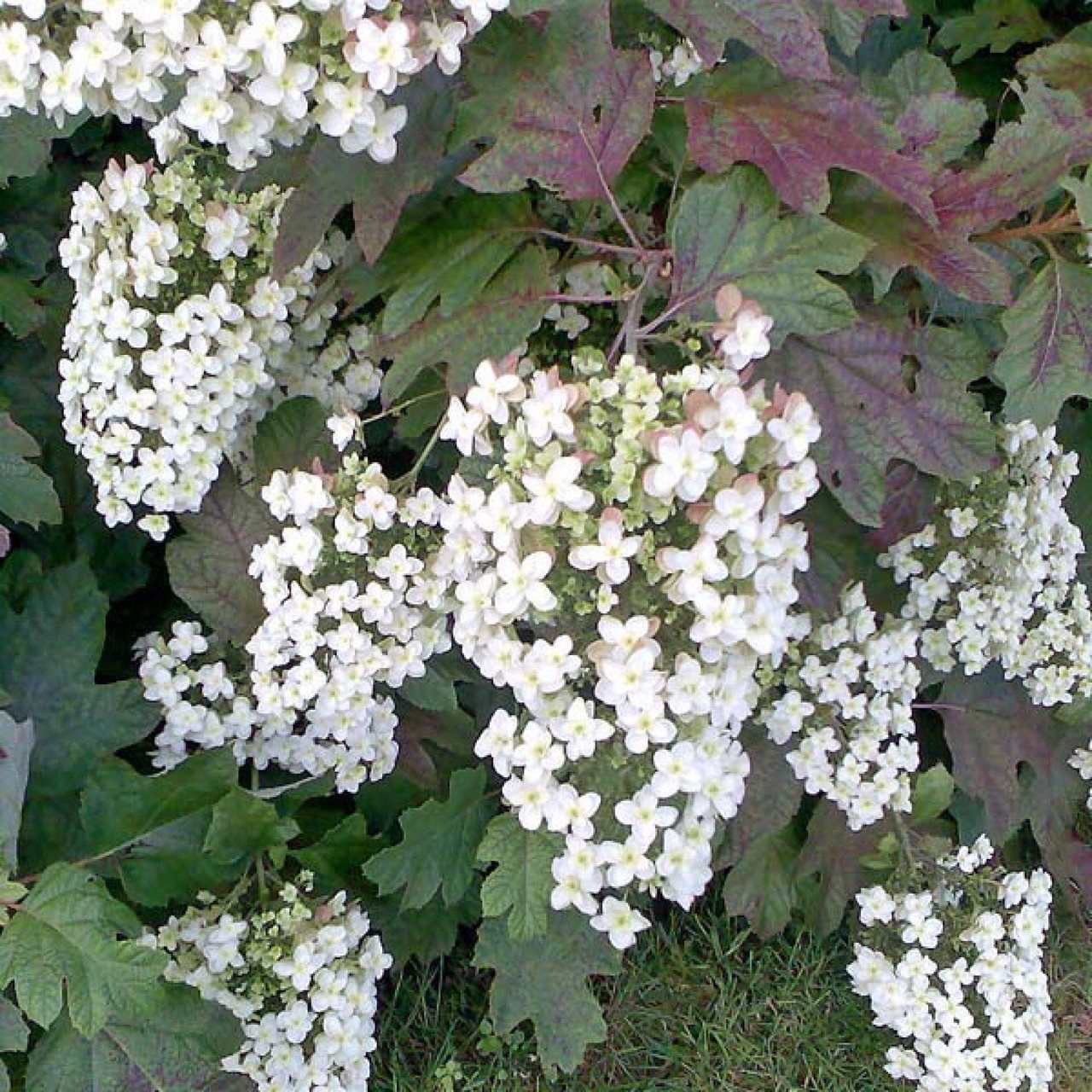
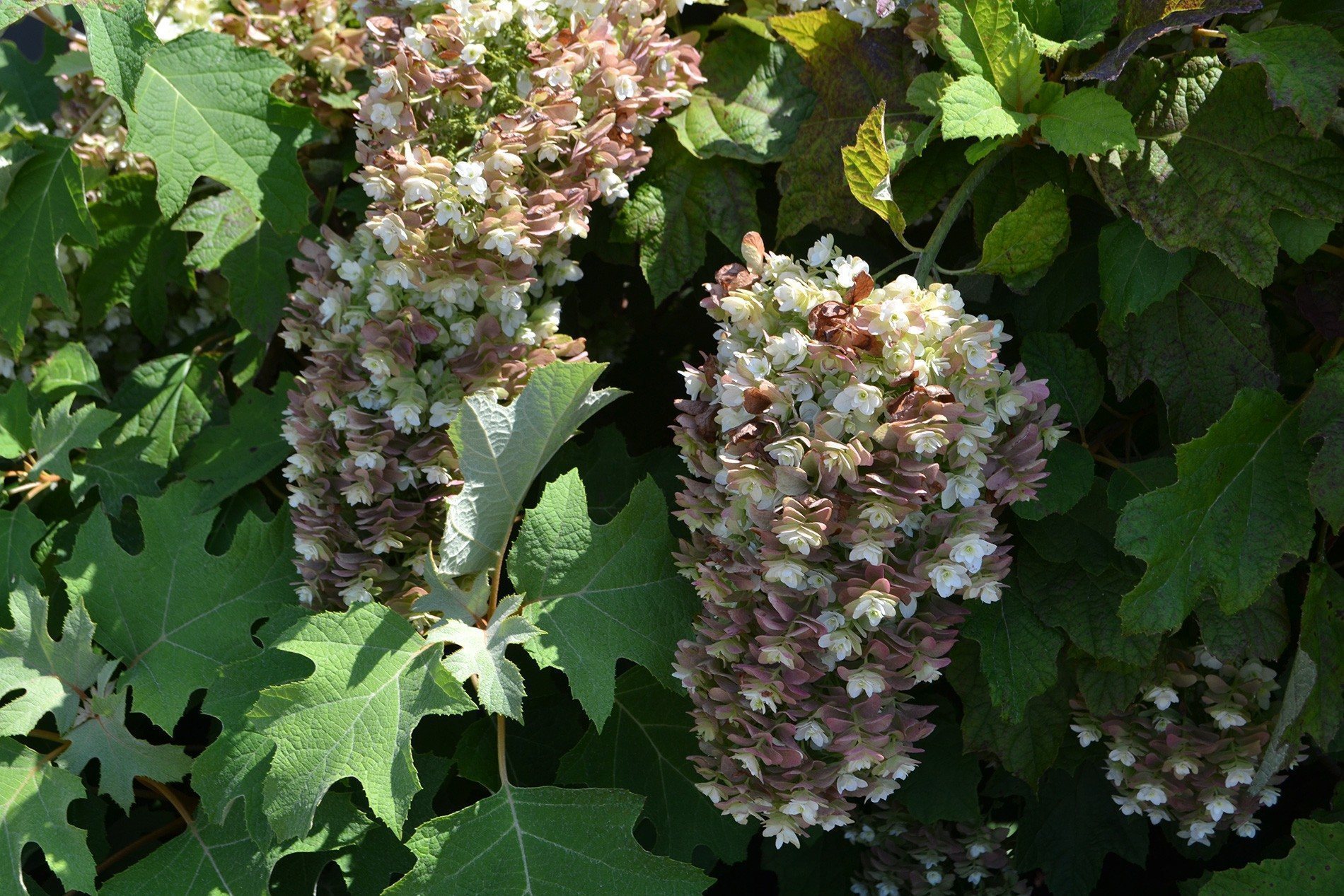
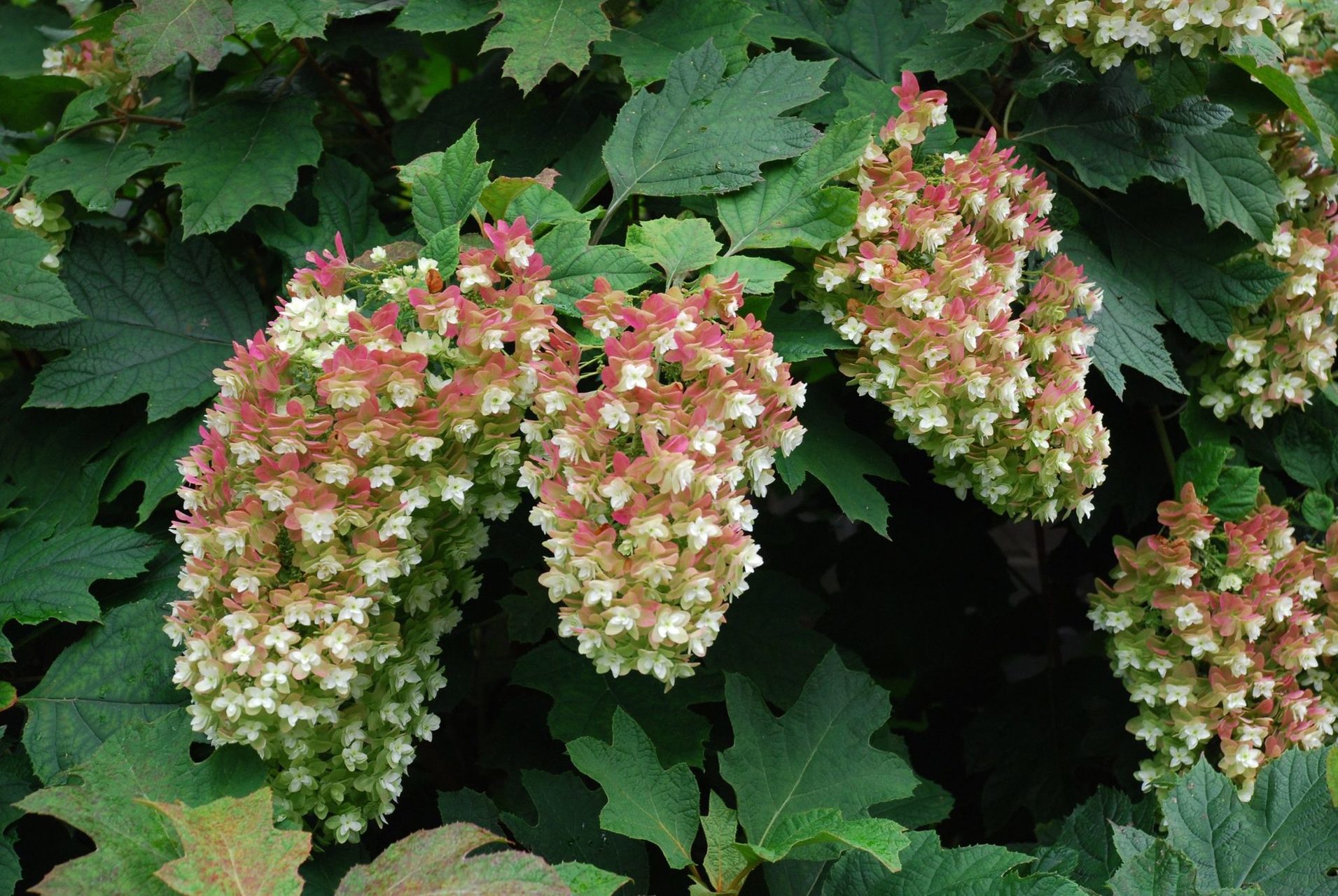
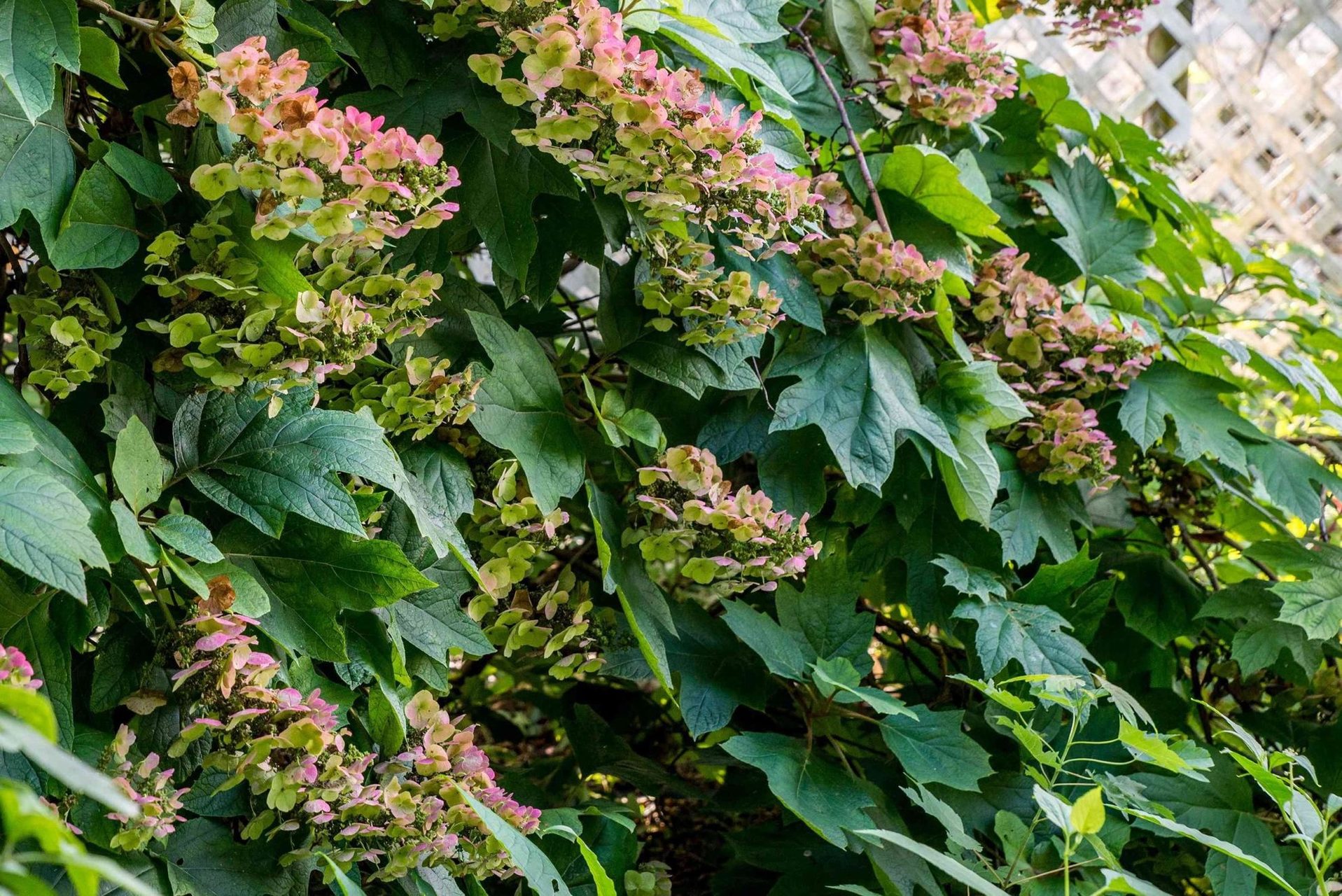
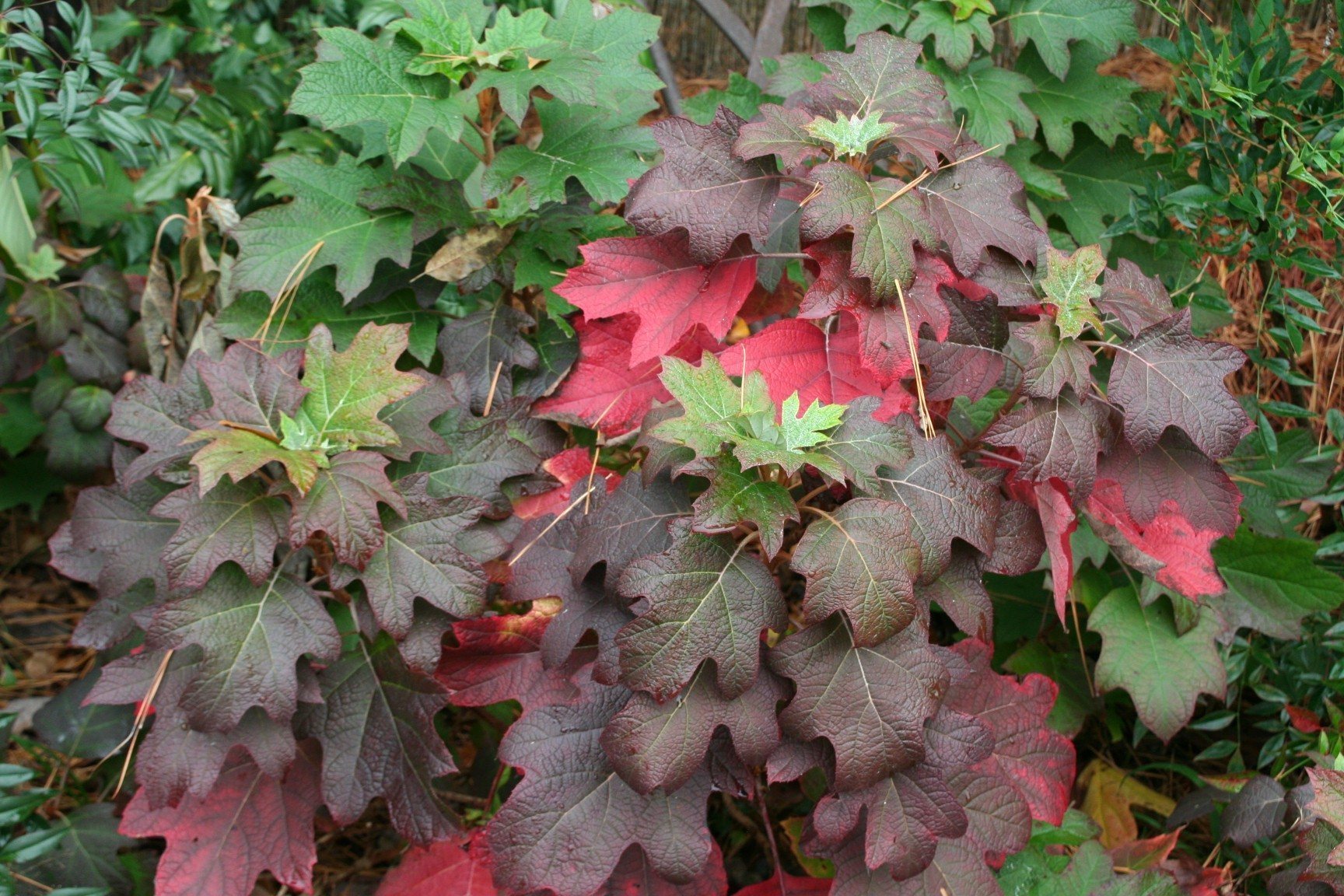





The shrub grows up to two meters, and the shoots have an attractive reddish hue. The leaves look like green oak. The inflorescences are of the paniculate type and are mainly white in color. The flowering period lasts from early summer to late September.
Snowflake
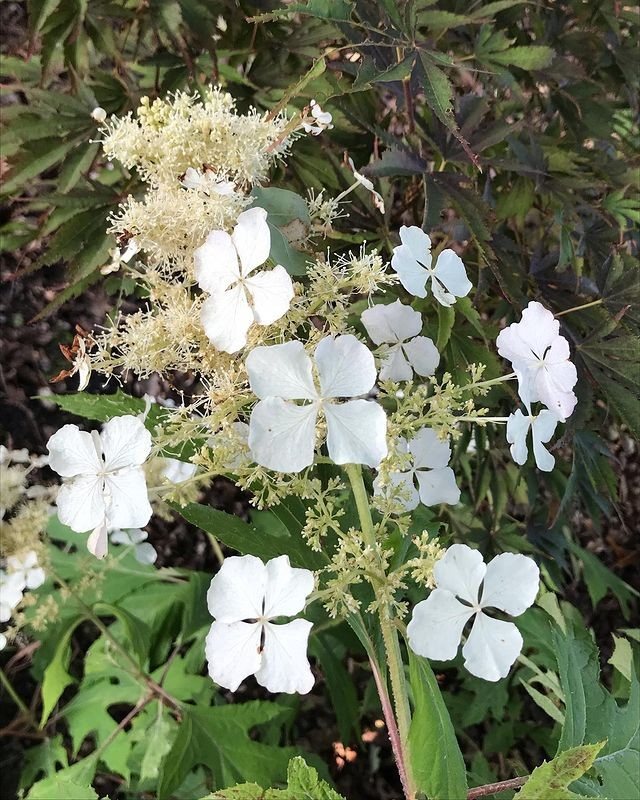

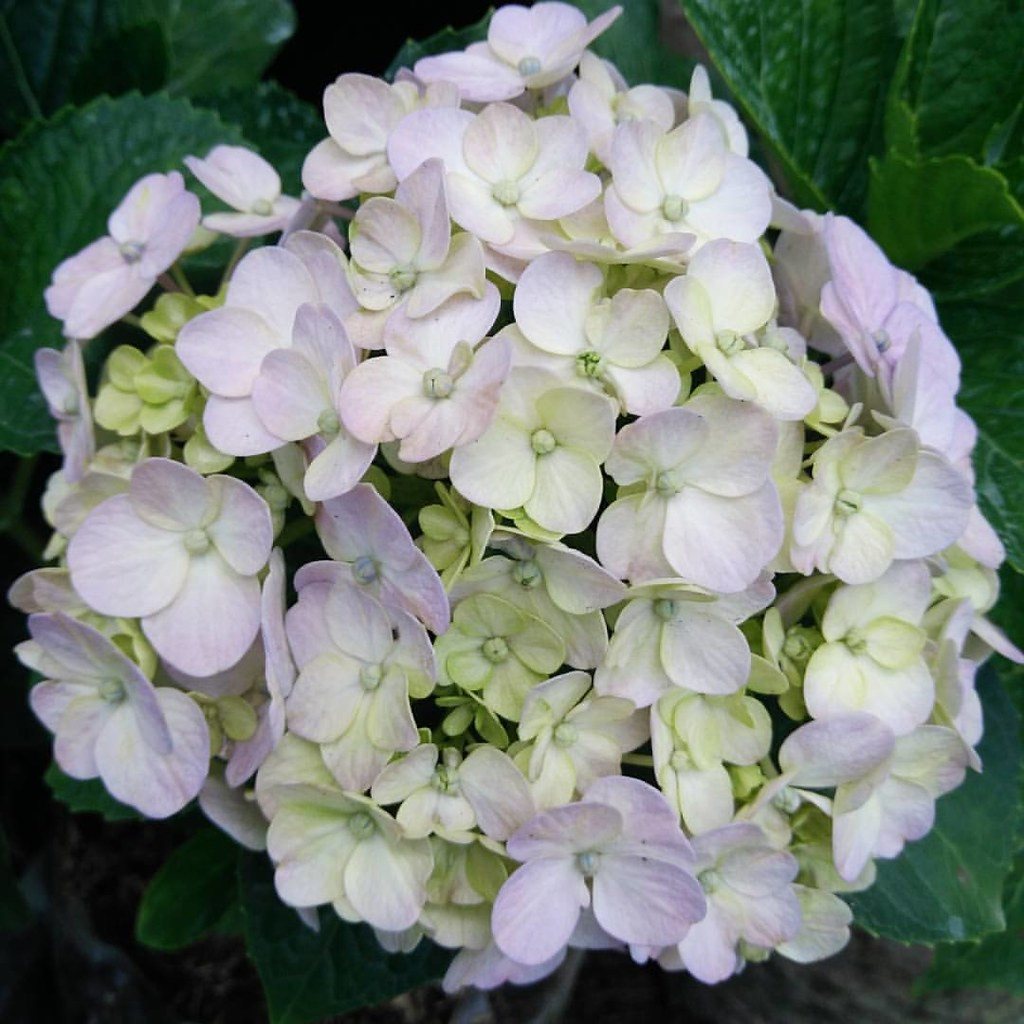
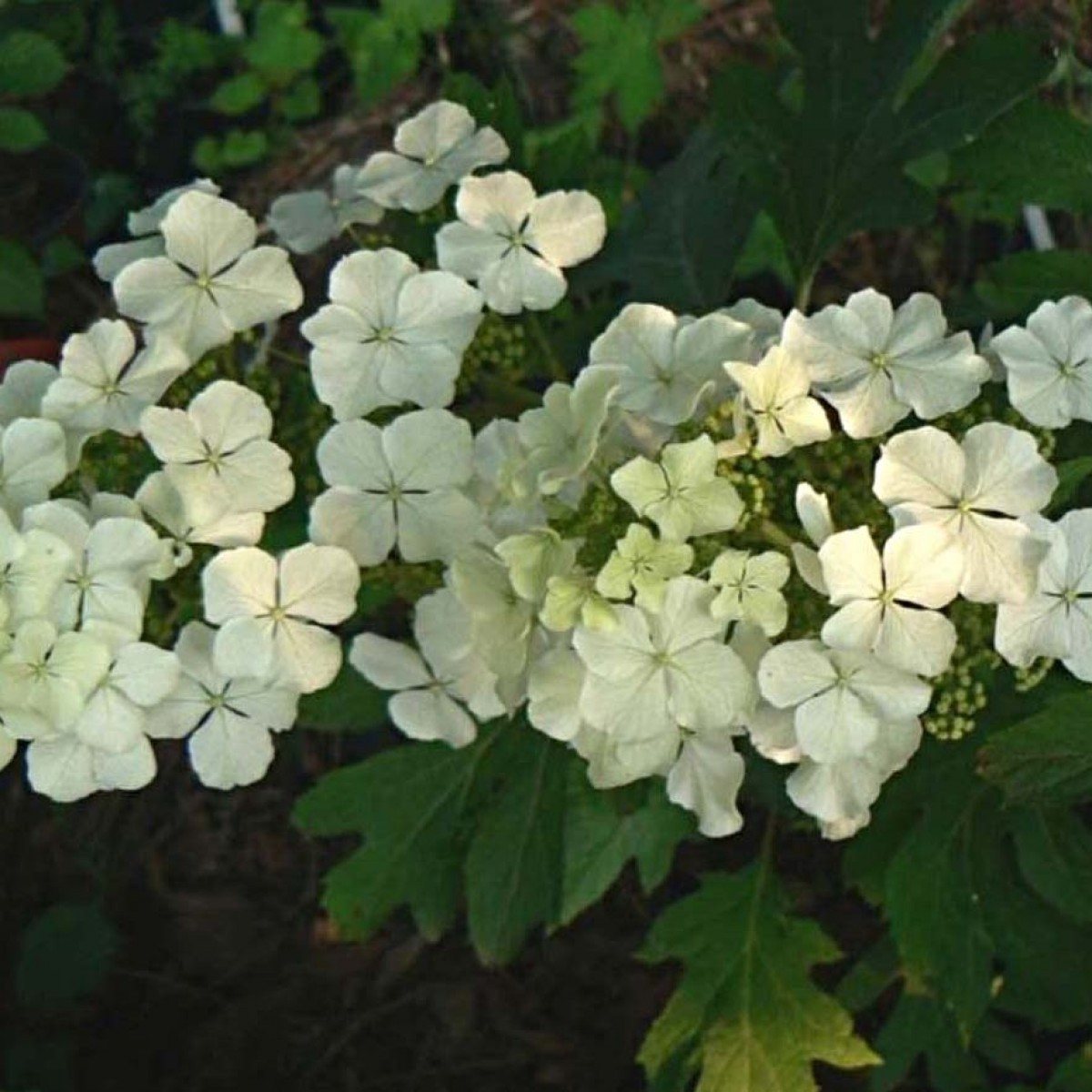
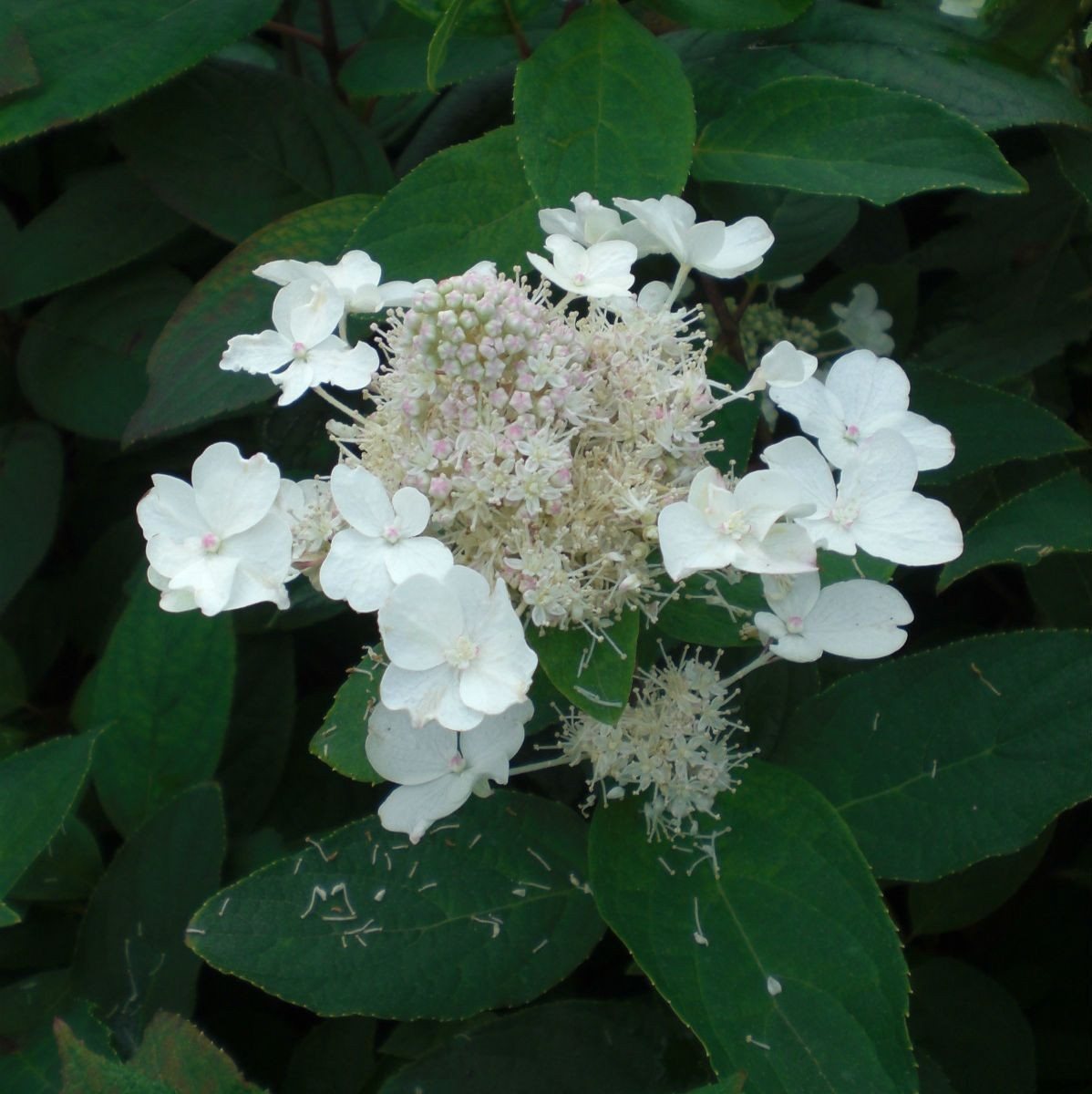





This variety is compact and beautiful. The height of the bush does not exceed 50 cm. The diameter of the crown is within 30 cm. Cone-shaped and large white inflorescences are formed on the bush.
Snow Queen
- The height of the spreading, rounded plant reaches 1.9 m. A feature of the variety is considered to be a change in the color of the leaves, so at different periods they can be green, orange and red.
- Burgouni
- This variety is a fast-growing ornamental shrub whose height reaches two meters. It is distinguished by a specific and rich color of the leaves, which by the end of the growing season become violet, purple and orange.
- Amethyst
The plant can be grown in the shade as it does not require much sunlight. The maximum height is 80 cm. A feature of the variety is the specific color of the inflorescences, which change color from green to crimson.
Harmony
The peculiarity of the variety is considered to be large and lush white inflorescences, the diameter of which is 35 cm. The height of the bush is 1.6 m, and the crown is dense and spreading.
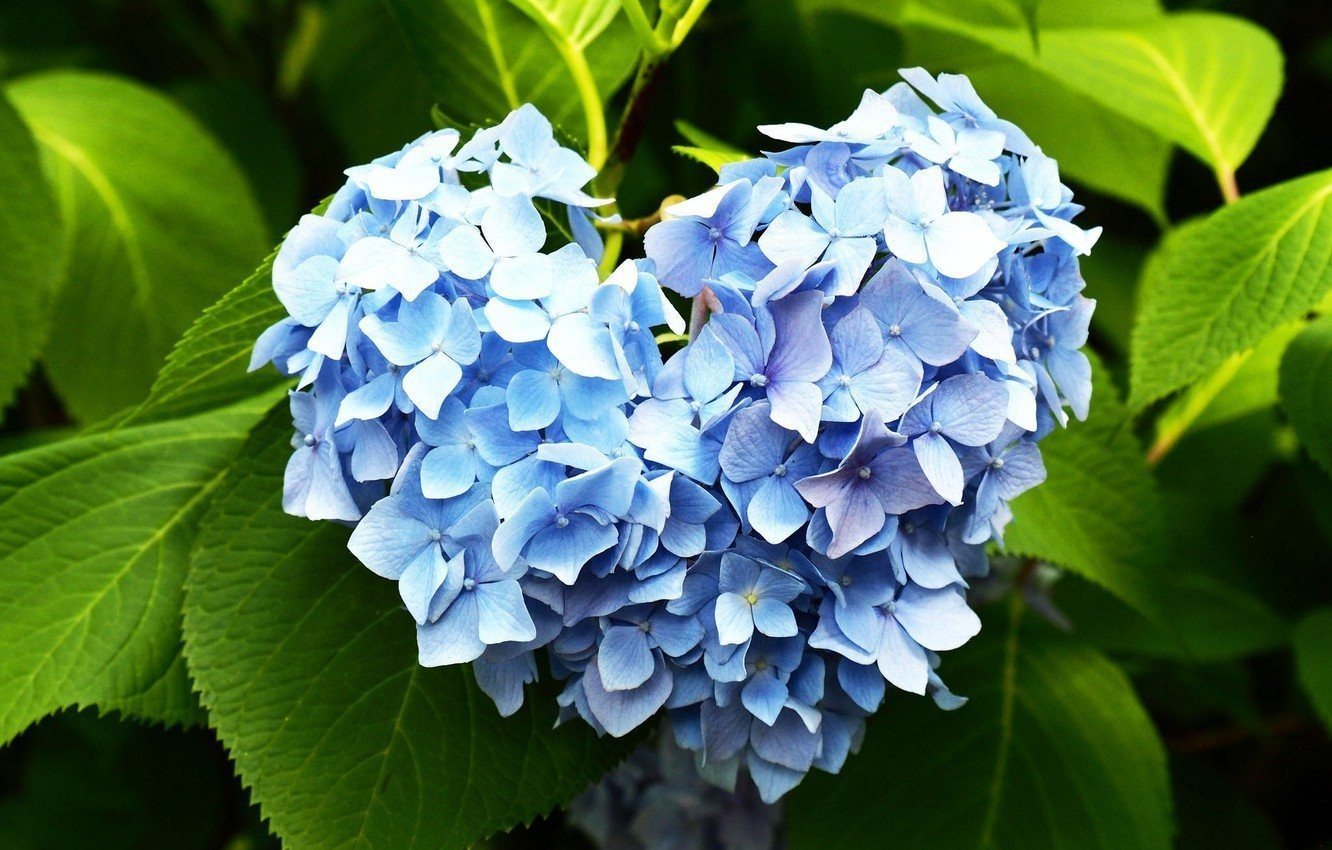
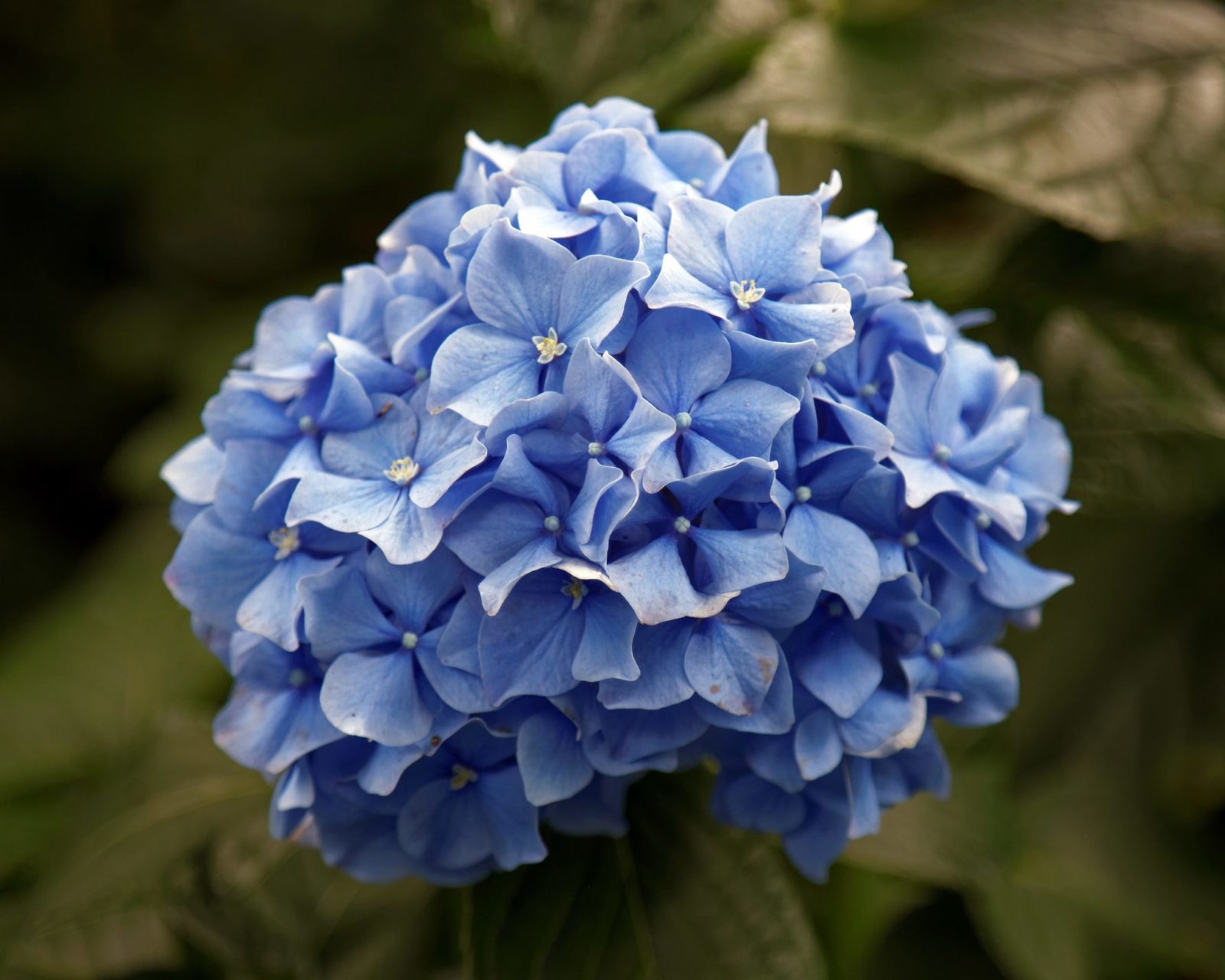
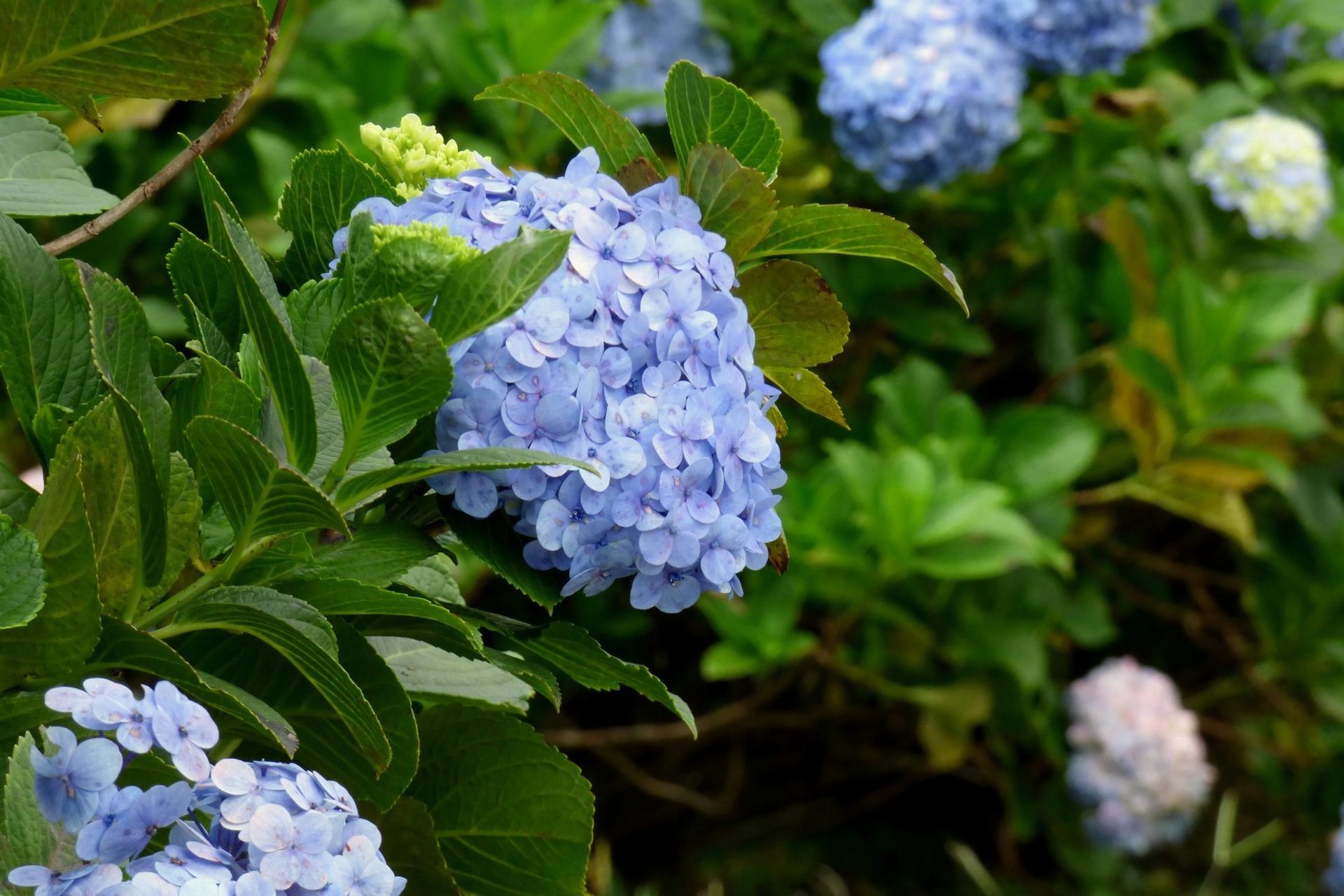
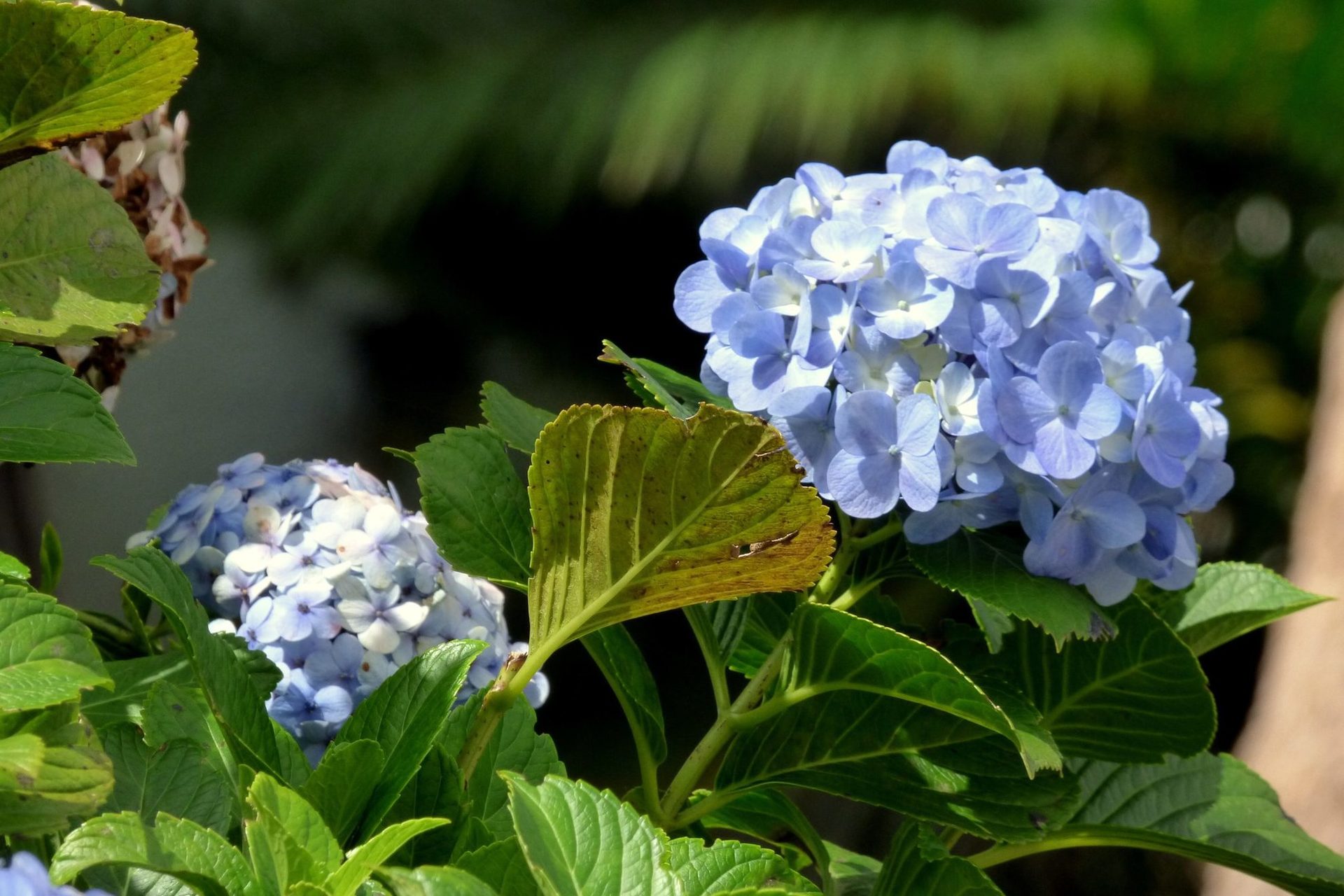
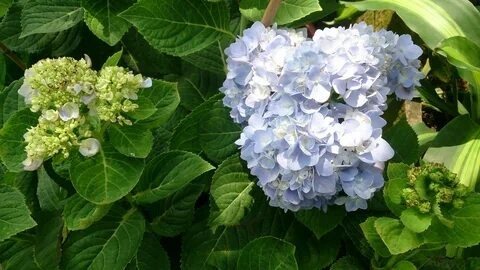





Snow-white domes
The compact variety of hydrangea can withstand low temperatures, and the bush also produces many snow-white inflorescences. This plant looks great in any flower arrangement.
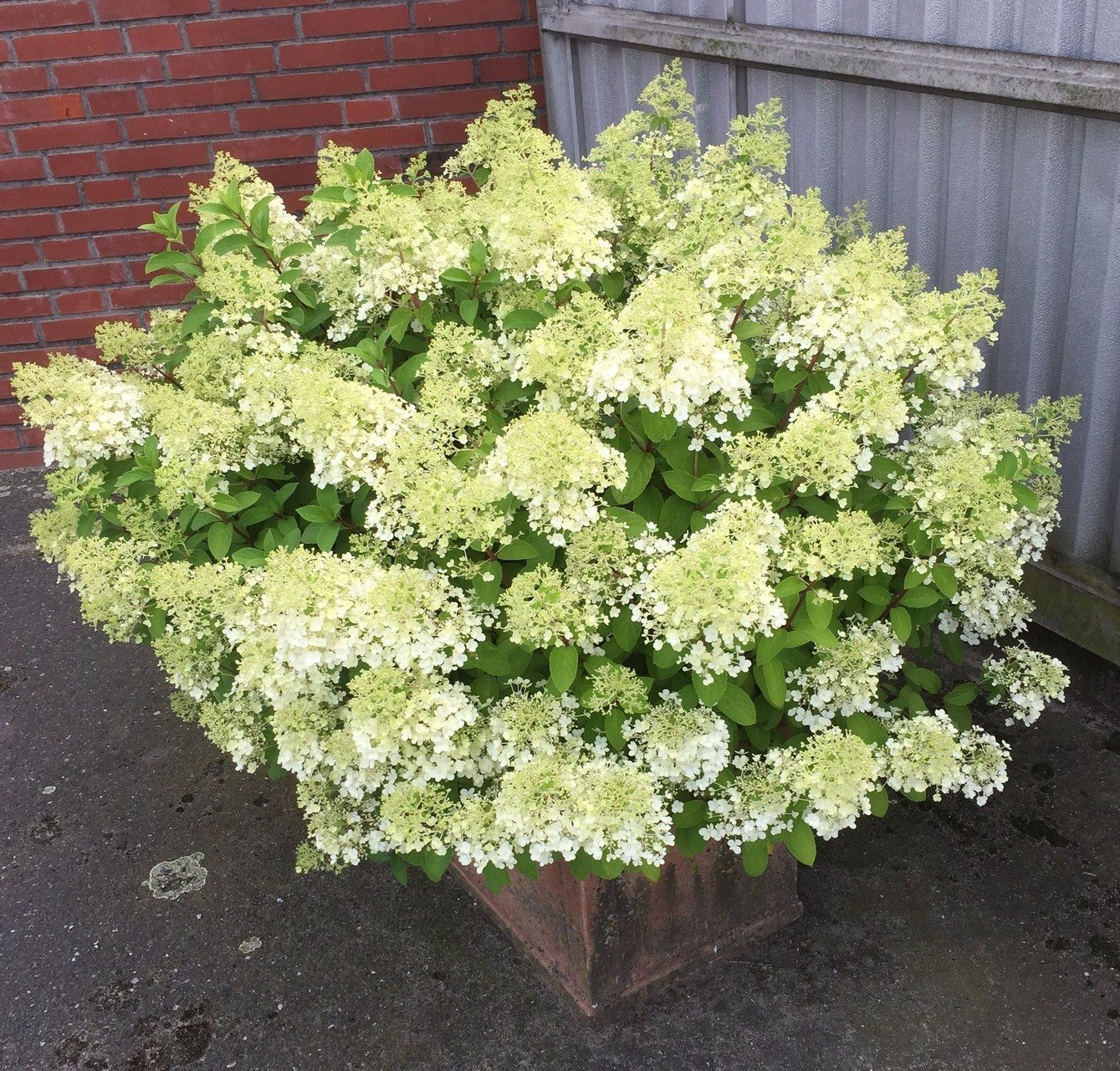
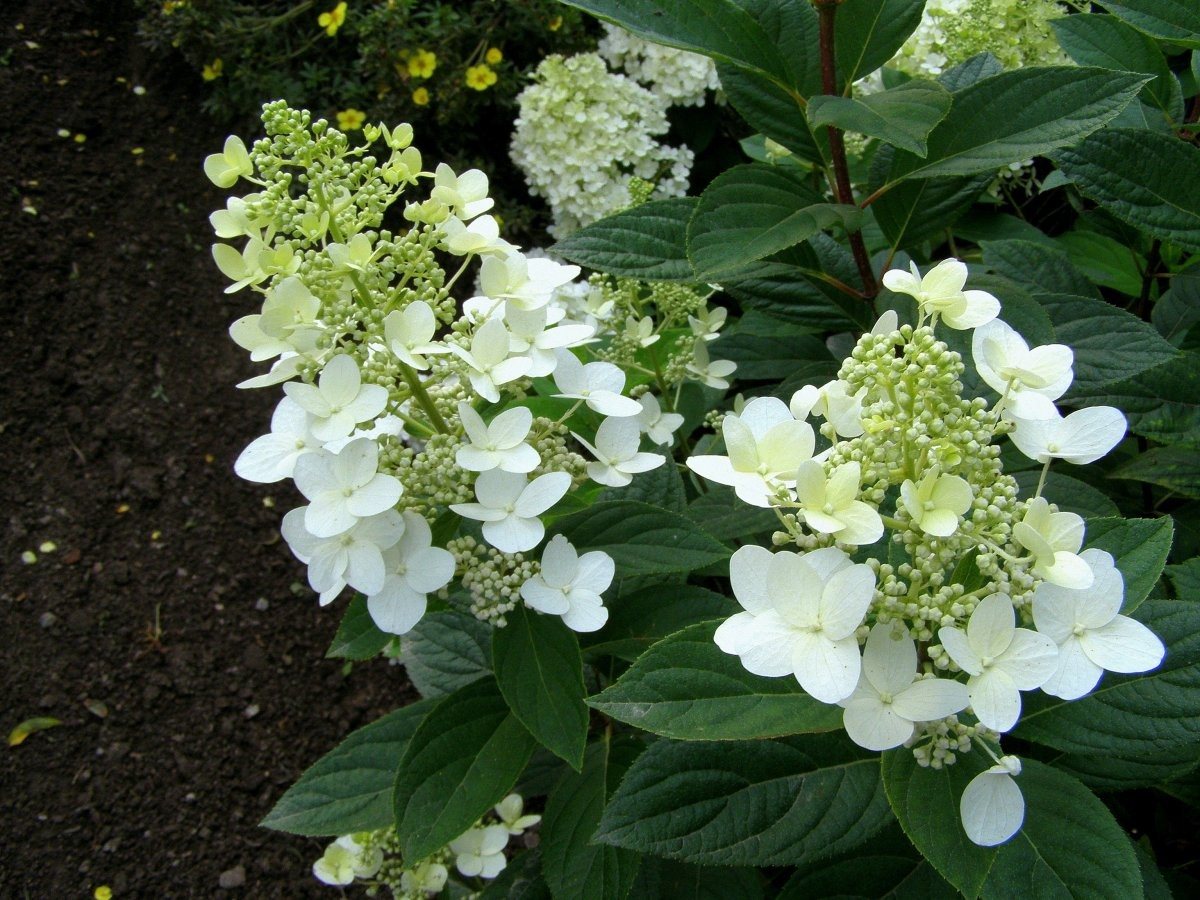
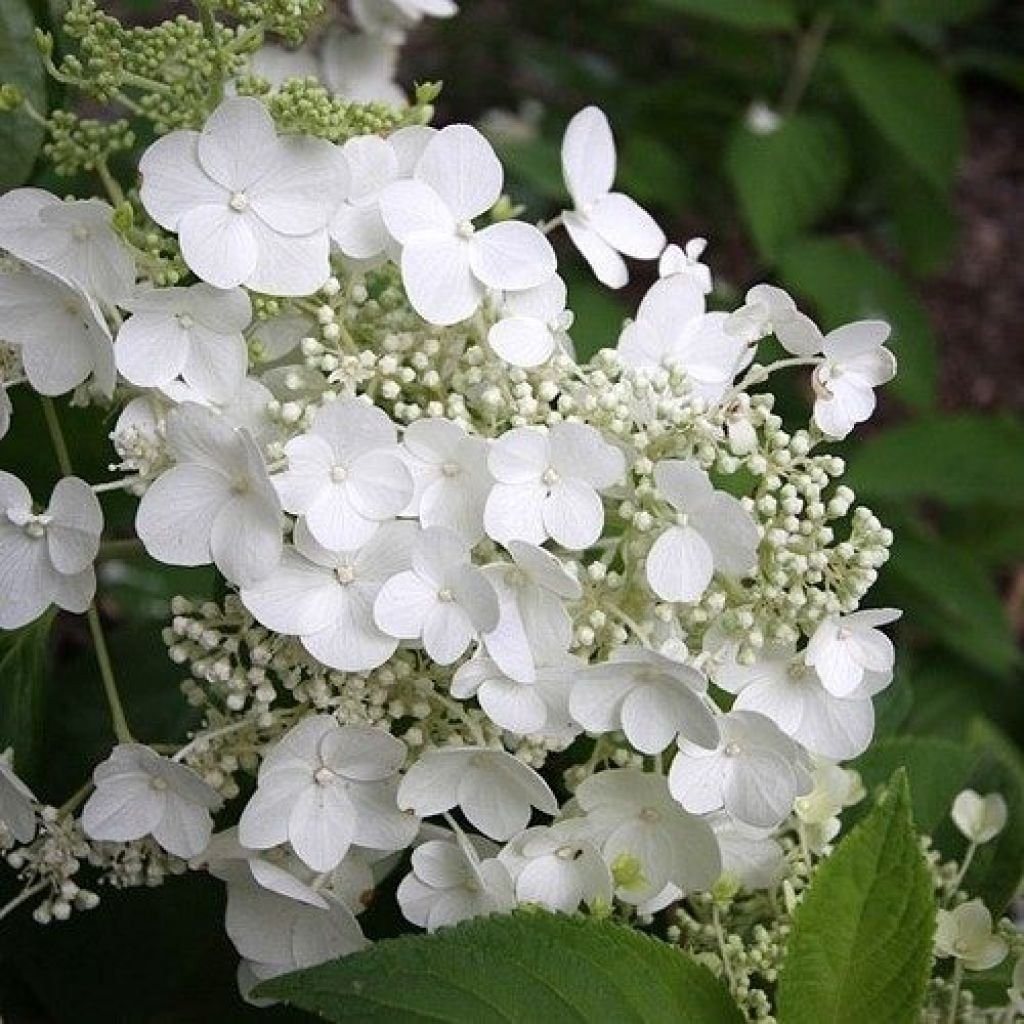
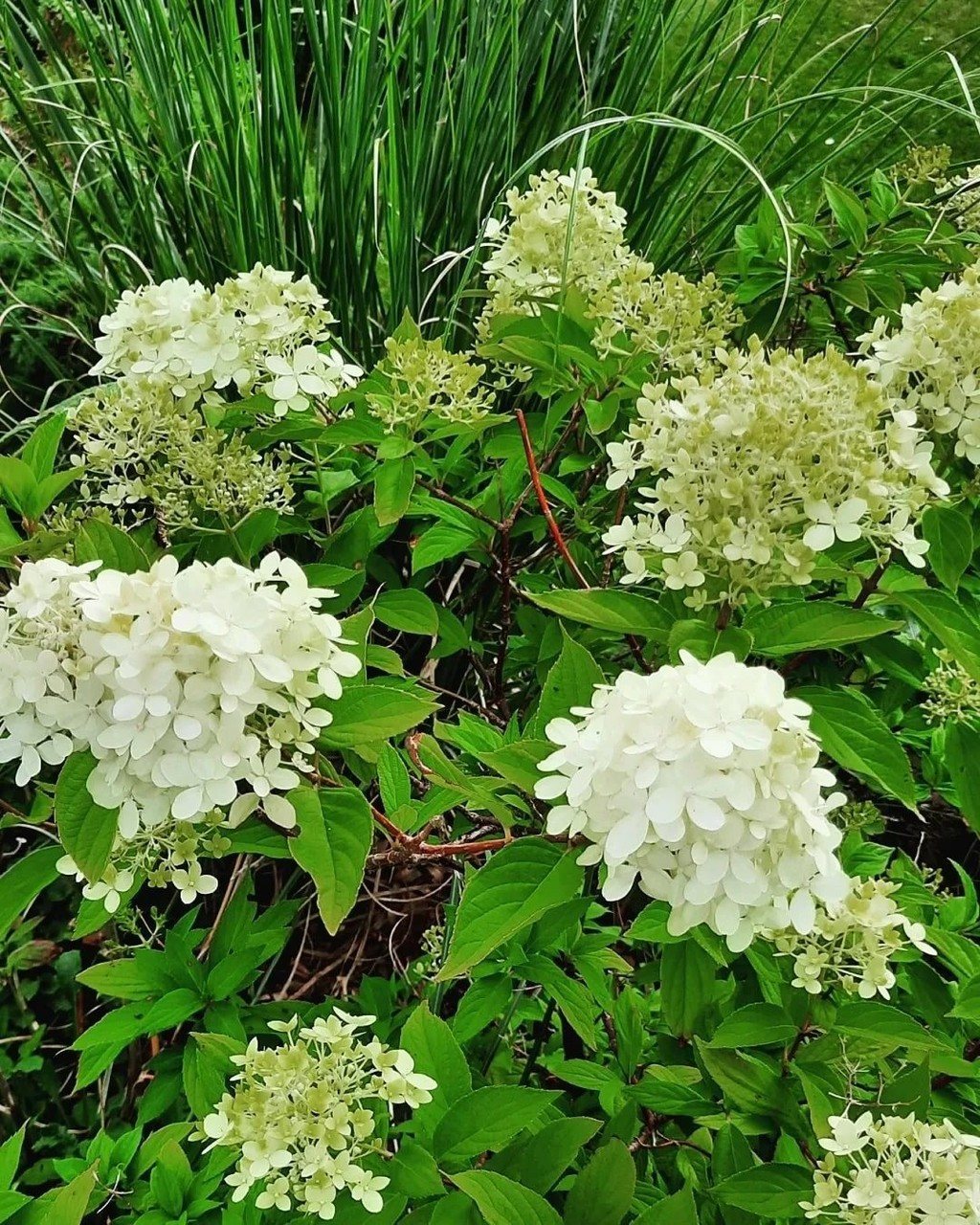
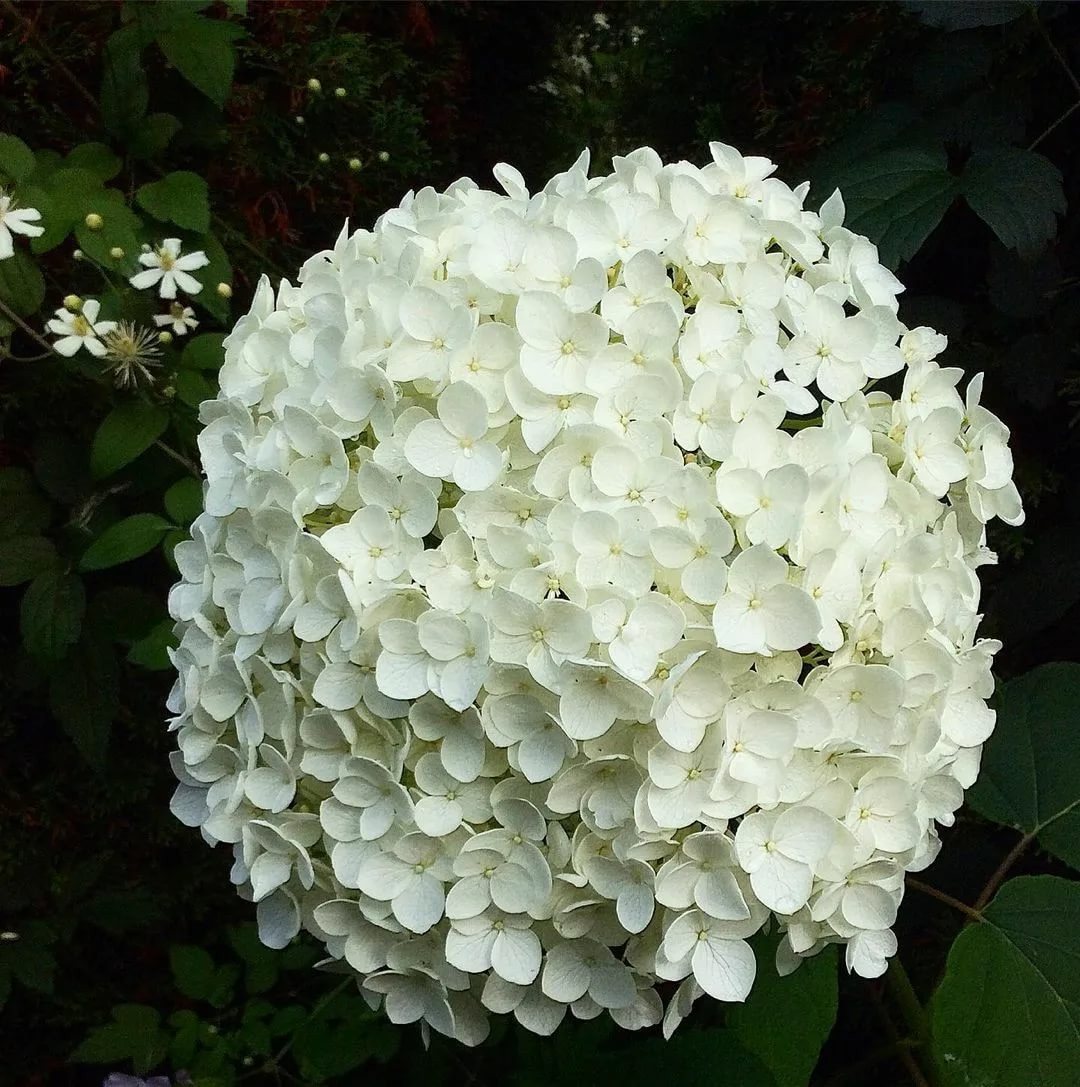





Ruby Slippers
Hydrangea has carved leaves, as well as bright panicles of inflorescences, the length of which is 23 cm. The petals change color several times in one season, so they are white, pink and ruby.
- Alice
- The height of the bush reaches 3 m and the width is 1.8 m. Hydrangea blooms from early June to late July. White and pink inflorescences appear on the shoots. It is recommended to plant in well-lit areas of the ground.
- Snow giant
- The variety is distinguished by attractive flowering, since large white panicle inflorescences are formed on the shoots. Hydrangea blooms from early July to late August. A profusely flowering and branched bush is formed.
- Pee Wee
Little Honey
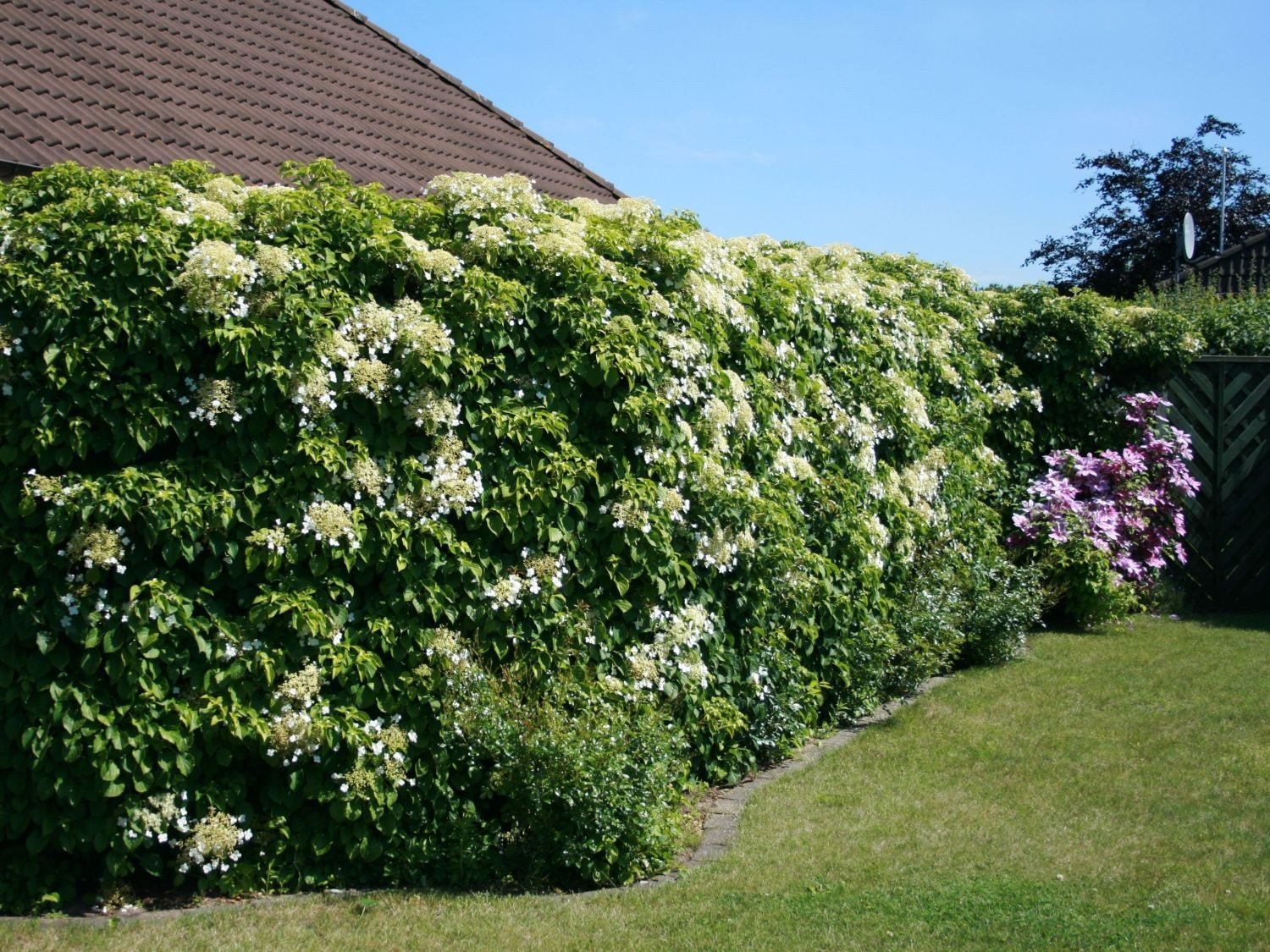
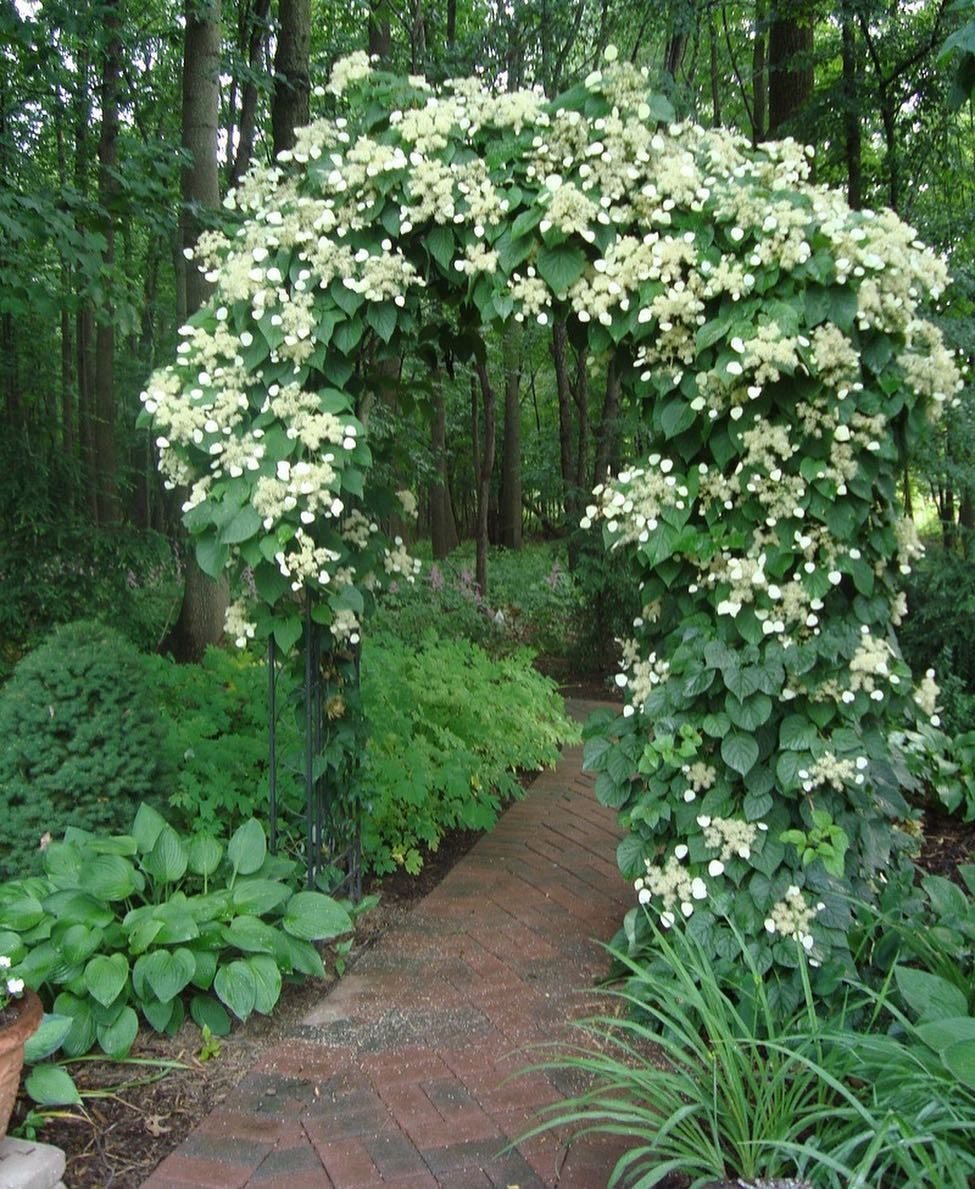
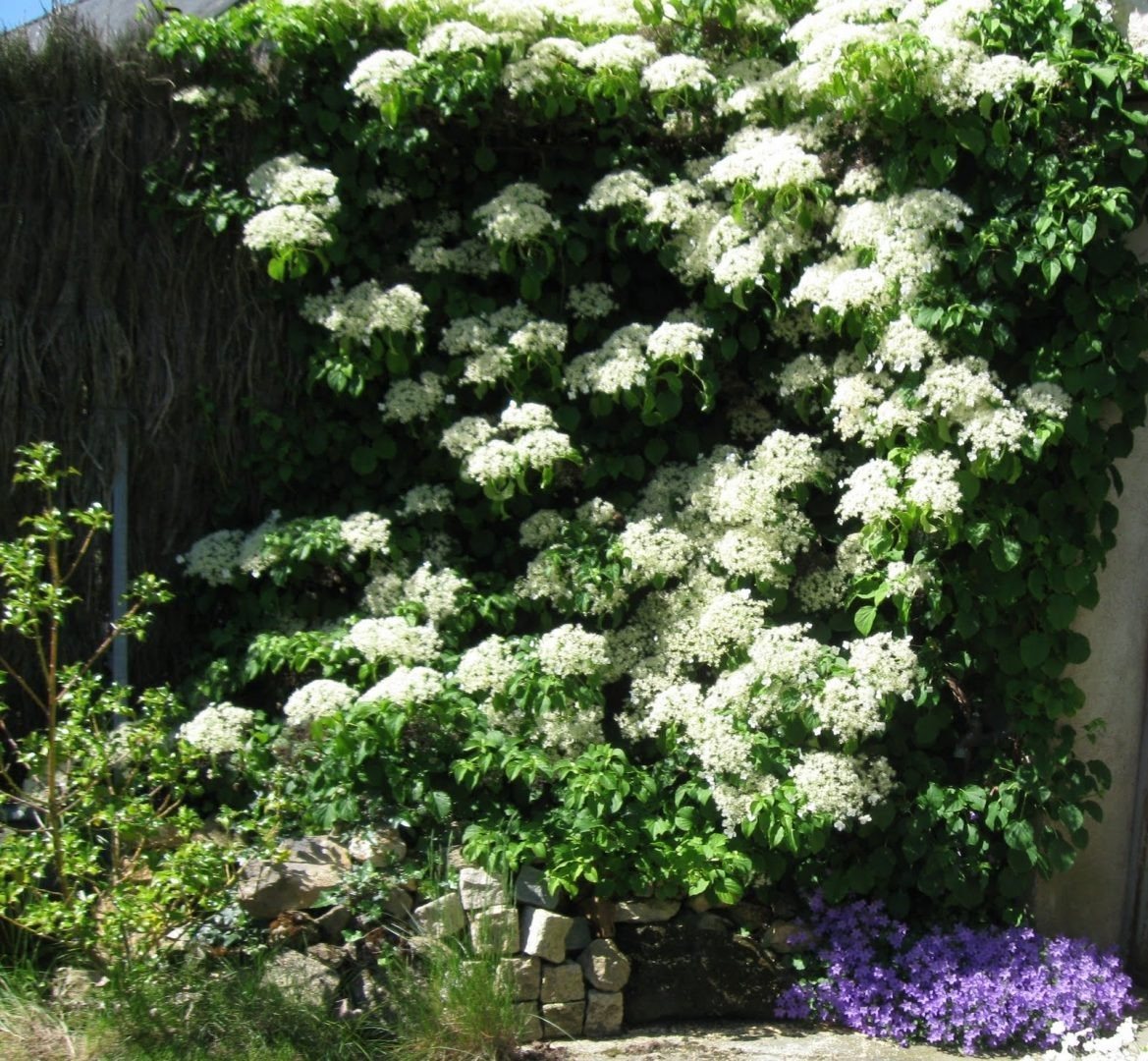
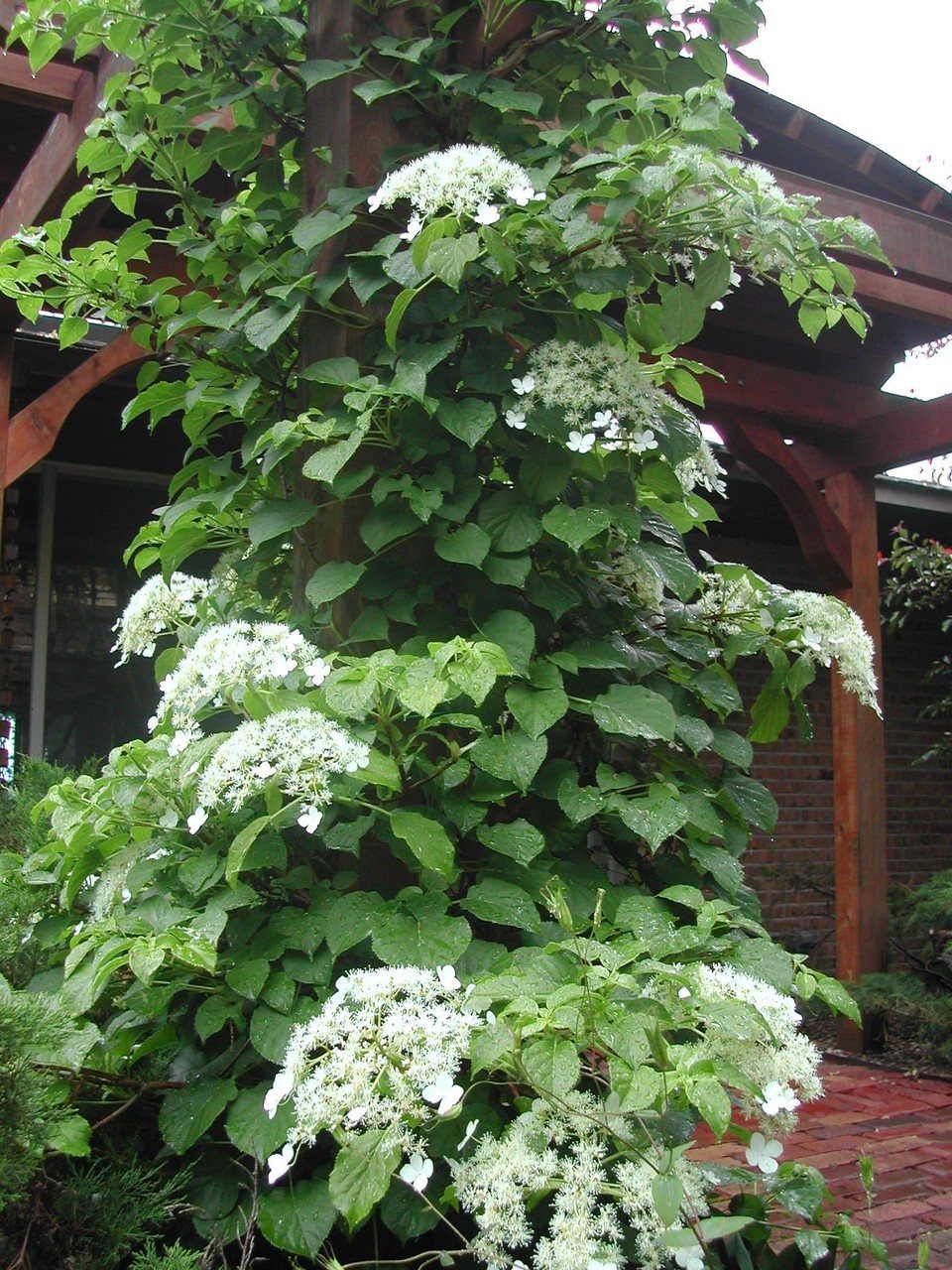
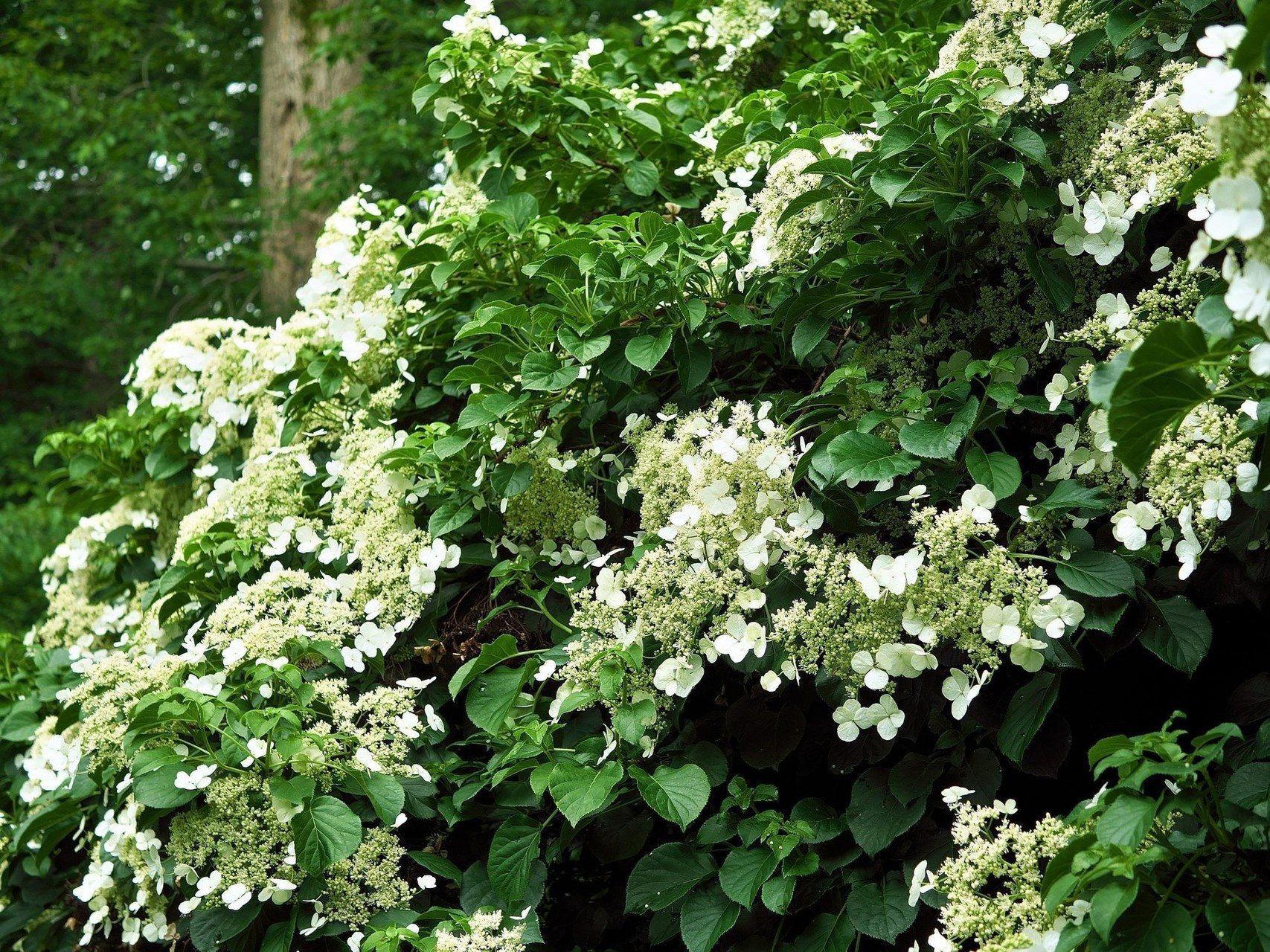





The plant is represented by a dwarf shrub, the height of which does not exceed 1.2 m. The flowering period lasts from June to September. It is important to protect the variety from lime, so the crop is planted on mineral-rich soil.
Black Porch
The height of an adult plant reaches 1.8 m. The flowers have a diameter of 15 cm. The crop blooms from June to August. Large paniculate inflorescences of a white hue are formed. It is advisable to plant the plant in well-lit areas.
Ice Crystal
The height of the bush is 1.8 m. It produces paniculate inflorescences, the length of which is 30 cm. The plant blooms all summer, and by September the fruits ripen.
- Hydrangea groundcover
- In another way, this type is called differently omitted. Features of hydrangea include:
- the shrub has a wide-rounded crown, the diameter of which reaches two meters;
shoots have a reddish-brown tint;
The plant blooms from July to August;
Inflorescences with a diameter of 16 cm with white flowers are formed on the shoots, which acquire a purple hue by the end of the growing season.
This species is native to Northern China. The culture is considered frost-resistant, so shelter is required only in the first two years after planting.
- Snowcap
- The shrub grows up to 2 meters, and with the help of pruning it is formed into a decorative tree.It has large glossy leaves and loose thyroid-shaped inflorescences of white color. Sterile flowers turn pink towards the end of flowering.
- Germines Leys
- The small shrub is ideal for combining with other living plantings. It has large leaves and shield inflorescences.
- Hortensia Chereshkova
This culture is rarely found in Russian front gardens. Its features include:
in appearance it resembles a liana;
length reaches 25 meters;
used for vertical gardening;
curls in the presence of high-quality and durable support;
corymbose inflorescences are presented in white and pink.
The drug Batrider for pests: instructions for using the insecticide
This species belongs to honey plants.
- Caring for home hydrangea
- If you are growing an indoor variety of hydrangea, it is important to create ideal conditions for lush flowering. The plant is planted on a bright windowsill, but it must be protected from direct rays of the sun. The flower needs a lot of free space.
- It is advisable to place the pot on a window facing the east side. It should be located at a considerable distance from heating appliances. To grow hydrangeas, you can use ceramic or plastic pots with a diameter of 20 cm, which have holes in the bottom. Select a lightweight and breathable soil containing sand or perlite.You can make the soil yourself by mixing 2 parts of turf soil with 1 part of peat, humus and sand, and also adding 0.5 parts of leaf soil.
- Temperature and humidity
- Hydrangea requires the following conditions:
- bright and diffused light;
- the temperature is within 20 degrees, but during the rest period it drops to 10 degrees;
high air humidity.
In summer, it is recommended to frequently moisten the plant with a spray bottle.
To spray the leaves daily, choose warm filtered or boiled water, otherwise a white coating will form on the shoots. Splashes should not fall on the buds. Drafts are detrimental to a flower, so during ventilation in the cold season it is advisable to temporarily place the pot in another place.
- Watering
- Regular watering is required as hydrangea blooms well only in moist soil. In summer it should be frequent and abundant, and in spring and autumn it should be moderate. In winter there is a dormant period, so only symbolic watering is used. Features of the process include:
- During the formation of inflorescences and the blooming of buds, the hydrangea will have to be watered daily;
- it is important to ensure that the soil is always moist;
- it is even allowed to immerse the pot in water for half an hour;
in winter, watering is carried out once every 8 or 10 days;
It is necessary to ensure that the soil is not too dry, and stagnation of moisture in the pot is also dangerous.
It is recommended to use settled, filtered or melt water.It should be at room temperature. If the edges of the leaves dry out, you will have to increase the air humidity, for which you use humidifiers or spray the plant with water using a spray bottle. To increase the decorativeness of inflorescences, you can use 0.1 g of gibberellin per 1 liter of water.
Experienced gardeners recommend watering the plant with water acidified with lemon once a month, for which 5 drops of lemon juice are added to 1 liter of water.
Top dressing
The first fertilizing is applied in February, when the buds begin to awaken. It is effective to use liquid compositions with nitrogen that are applied to the soil. In May, a little potassium permanganate is added to the water for irrigation. To change the color of the inflorescences, you can add iron to get a crimson color, as well as aluminum if you want to admire the blue flowers. During the formation of the ovary, superphosphates are used.
During the growth period, fertilizers are applied once every two weeks. For this, complex fertilizers are used, for example, “Agricola”, “Fertika Kristallon”, “Planton” or “Kemira”. In order for the flowers to be bright, hydrangea must be fed with magnesium, phosphorus and potassium. In autumn, it is not recommended to use nitrogen-containing compounds, so potassium monophosphate or Pekacid is chosen. In winter there is no need to use fertilizers.
Trimming
- Home hydrangea is pruned in the fall after flowering has ended, which will prepare it for the dormant period.During the process, old shoots are eliminated and young shoots are shortened.
- In the spring, repeated pruning is carried out to remove weak, elongated shoots. Flower buds form on the current year's shoots, so when pruning it is important to ensure that the buds remain on the plant. To obtain a lush and rounded bush, it is allowed to remove the top of the hydrangea. Such actions will provide the opportunity for the growth of additional shoots. The basic principles of pruning include:
- if the flower is less than 4 years old, then only dry leaves are cut off;
- It is necessary to remove not only weak, but also thickened or very small shoots;
- before starting the process, it is not recommended to water the plant for several days;
- the work is performed with sterile scissors, which can be replaced with pruning shears;
- the resulting sections are treated with turmeric or crushed activated carbon;
a day after the process, you can resume watering;
At least 8 trunks with 5 branches are left.
If the plant grows very slowly, then you will have to reduce the amount of pruning, and if it grows quickly, you will need to cut off the shoots more often.
It is carried out annually, for which fertile soil is selected. Usually the process is implemented at the beginning of growth, namely in April. You can make the soil for replanting yourself, for which three parts of turf are mixed with one part of sand. It is recommended to choose a spacious pot for the plant, since hydrangea has a horizontal root system.The process is divided into stages:
- a new pot is prepared, on the bottom of which drainage material is placed;
- an earthen lump is carefully pulled out, which needs to be shaken a little;
- the plant is moved to a new container;
- fresh substrate is added to fill the resulting voids;
- The root collar of the hydrangea should be located at the same level as the soil surface.
- After replanting, the soil is well moistened and covered with peat mulch, which will prevent the rapid evaporation of moisture from the substrate.
- Growing and caring for hydrangea in open ground
For hydrangeas planted in a personal plot, rich soil with a small amount of lime is selected. Peat or humus, as well as a little sand, are added to the planting hole. Mulching of the tree trunk circle with peat or pine litter is required. It is allowed to plant the crop next to other flowers, bushes or trees, forming flower arrangements.
Rules of care
For beautiful and long flowering, it is important to understand the rules of caring for hydrangeas that are grown in open ground. The gardener must choose the planting site wisely, prepare the soil and provide optimal care. You will have to devote time to pruning, watering, mulching, pinching and other mandatory procedures.
- Choosing a place and landing
- It is advisable to plant hydrangea in late spring, and if the seedling has a well-developed root system, then the process is performed in September.It is possible to carry out the procedure in the summer, but under such conditions you will have to regularly water the seedlings.
- It is advisable to plant shrubs in a quiet and sunny place, but some varieties require partial shade. Planting is carried out in well-moistened, drained and high-quality soil enriched with minerals. The process is carried out early in the morning on a cloudy day. To do this, follow these steps:
a hole is dug, the depth of which corresponds to the depth of the flower pot, but its diameter should vary from 60 to 70 cm;
planting depth depends on the depth of growth in the pot;
- a layer of manure or compost is placed at the bottom;
- the seedling is immersed in a container of water;
- after the soil gets wet, the plant is pulled out of the container, but it is important to monitor the integrity of the root ball;
- If necessary, cut off sharp or damaged roots;
- the plant is placed in a hole, after which the roots are covered with earth.
The planting density depends on the growth characteristics of the selected variety, but the standard distance is from 70 to 100 cm.
Watering
Although hydrangea is a moisture-loving plant, watering should be moderate so as not to flood the crop. When choosing the frequency of watering, the amount of precipitation, soil characteristics, and the use of mulch in the number of loosenings are taken into account. If the plant does not have enough moisture, its flowers and leaves begin to wither, and the color fades. Therefore, the color needs to be watered abundantly, and the soil must be loosened after 2 days.
5 rules for autumn hydrangea care
- Features of proper watering include:
- in dry summers, it is necessary to ensure that the roots and soil are saturated with moisture;
- abundant and frequent watering is required, for which 3 to 5 buckets are poured weekly under each bush;
- if it rains constantly in the summer, then the bushes can be covered with plastic wrap to protect the inflorescences from water;
abundant watering continues until the first frost, after which it stops completely;
It is forbidden to use cold water, as it damages the roots, which leads to diseases;
water is used, the temperature of which is approximately equal to the air temperature outside;
melted, filtered or settled water is selected, since the presence of chlorine or other impurities causes changes in soil acidity, which causes chlorosis or other diseases.
Lack of water in hot weather leads to yellowing of the leaves, a decrease in the intensity of flowering and weakening of the hydrangea. To preserve moisture in the soil, mulching of tree-trunk circles is carried out using peat chips or straw.
Top dressing
The use of fertilizers allows you to increase the flowering period and improve the color of the inflorescences. Fertilizers are applied three times:
at the beginning of growth, namely in the spring, fertilizing is required, consisting of urea (15 g per 10 liters of water), superphosphate and potassium sulfate, and you can also use mullein, nettle infusion or mulch from compost and humus;
during budding, superphosphate (up to 20 g per 10 l) or potassium sulfate in the same dosage is used, and potassium salt or potassium magnesium is also suitable;
In the fall, compost and humus are added.
Fertilizers are evenly distributed under each bush, after which they are covered with a rake. In the summer, it is allowed to periodically add slurry, but you should not overfeed the hydrangea, otherwise very large inflorescences will appear that break the fragile branches, so it is advisable to tie up the shoots with abundant feeding.
In spring, shrubs are fed with products containing the following useful elements:
nitrogen, thanks to which powerful shoots and a lot of greenery are formed;
phosphorus, which has a positive effect on the number and size of flowers;
potassium, which guarantees excellent flowering and also increases the frost resistance of the plant;
magnesium, required during bud setting and affecting color;
iron, which reduces the likelihood of chlorosis.
Thanks to proper feeding, hydrangea pleases gardeners all summer with bright foliage, large buds and long flowering. You can use ready-made fertilizers, for example “Fertika Kristallon”, “Agricola” or “Buyskie fertilizers”.
Wood ash, which reduces soil acidity, is not suitable for hydrangeas.
Trimming
For long and abundant flowering, spring pruning is required, which allows you to remove elongated and weak shoots, as well as autumn pruning, designed to remove wilted shoots.The procedure is performed for bushes that have reached the age of 3 or 4 years. If you have a large-leaved hydrangea, then its buds are formed on last year's shoots, so in the spring only frozen branches are removed. The buds may even be in the lower part, so the shoots must be carefully examined. About 10 strong shoots are left on paniculate or petiolate hydrangea. Other pruning rules include:
last year's shoots are cut to the level of 3 buds;
dry or frozen branches are removed;
branches located inside the crown are cut off, which will allow access to sunlight to all shoots;
shoots from the roots are eliminated.
Additionally, you can shorten the top, obtaining a neat crown. Sometimes gardeners even perform summer pruning, which involves removing faded inflorescences at a height of 10 cm above the base.
To lignify the shoots, the last fertilizing is applied in September, and watering is also reduced. Pruning is done and the flower stalks are removed, since otherwise a large amount of snow will stick to them, which will lead to breakage of the branches.
It is advisable to hill up all the bushes, as well as mulch, which will protect the root system of plants for the winter. For this purpose, acidifying organic materials are used, for example, high-moor peat, leaf humus or rotted pine needles. During decomposition, the substrate becomes part of the earth and also acidifies it.At the first frost, the leaves are dropped and the dormant phase begins. At this time, systematic care of the plant ends.
Preparing for winter
Although hydrangea is a frost-resistant plant, for safe wintering it is recommended to cover the bushes. This will preserve them even in very cold winters. After the first severe frosts, the lower parts of the bushes are buried in soil mixed with sawdust and leaves. The upper part of the plants is covered with mesh, roofing felt or lutrasil. Large plants will have to be tied up first. The smallest bushes are covered to the top with earth. To prevent diseases, it is advisable to spray the bushes with a 1% solution of Bordeaux mixture.
In the northern regions of the country, it is recommended to additionally make a cylindrical frame of metal mesh around each bush. It should be located at a distance of 20 cm from the bush, and its height should exceed the height of the hydrangea. The free space between the frame and the color is filled with foliage. The building is removed only in April.
Spring treatment
At the beginning of March, regular watering is resumed, the cover is removed, and the first fertilizing with nitrogen is applied, which will allow leaves and buds to form effectively. One plant requires from 12 to 15 liters of warm water, to which it is recommended to add a little potassium permanganate, which prevents the occurrence of diseases.
The next stage is to clean the area, for which last year's leaves or debris are removed. Attention is paid to loosening and mulching the soil. Peat, bark or wood shavings are ideal for mulch.
Mulch is designed to retain moisture inside the soil and also increases the decorative value of the crop.
Next, pinching, pinching and pruning are performed, which will allow you to create a neat shrub. Old or dry or damaged branches are removed. By mid-May, nitrogen-containing fertilizers, which include potassium and phosphorus, are applied. For these purposes, Agricola or Etisso are often purchased.
5 ways to propagate hydrangeas
The process is performed in 5 different ways.
Cuttings
You need to start the process in January or March, since properly rooted cuttings will turn into bushes with 4 shoots by next fall. Cuttings are taken from root shoots. The leaves are removed from their lower part, and the upper ones are slightly shortened. The cut is treated with a stimulant, after which the cuttings are planted in a peat-sand substrate. Rooting hydrangea from cuttings is very simple.
Dividing the bush
The procedure is carried out during the annual transplant. The divisions should have growing points and many roots. The shoots and roots are shortened, after which the plants are planted in prepared soil.
By layering
The lower branch is bent to the ground or attached with wire, and then sprinkled with soil.The top is brought up and tied to a peg. The process is performed at any time in the summer.
Seeds
For planting seeds, soil is prepared consisting of humus, turf and leaves. Peat and sand are added to the resulting mixture. It is necessary to sow hydrangea seeds at the end of winter in a special bowl, and they are not planted deep into the soil. The top is covered with seed glass, which is removed after the first shoots appear.
Seedlings
To do this, seedlings are purchased or grown and transplanted into open ground in the spring. Fertile and moist soil is selected for plants.
Hydrangea diseases and their treatment
Hydrangea is resistant to various diseases, but sometimes you have to deal with unpleasant diseases. It is important to understand them for proper treatment.
Sheltering hydrangeas for the winter
Chlorosis
It appears when soil pH is high and also appears as yellowing of leaf tissue. To combat chlorosis, it is necessary to enrich the soil with acidic peat or acidifying fertilizer.
Gray rot
It appears during improper wintering or after frequent rains. Often the cause of the disease is dense planting. The fungus Botrytis cinerea causes flowers and buds to rot, and shoots and leaves die. Infected parts of the hydrangea are cut off and burned, and the remaining plant is sprayed with fungicides.
White rot
The disease begins in the roots, and the pathogen is in the soil.Because of the fungus, the plant no longer has enough nutrients, so the hydrangea dies. It is easy to identify the disease by first darkening and then whitening shoots. Fungicides are used to combat white rot.
Powdery mildew
The disease is caused by the fungus Erysiphe polygoni, and is easily identified by a powdery coating on the inflorescences and stems, which gradually die off. Over time, the plaque turns brown. The disease leads to slower growth and deformation of shoots. Infected parts are removed and burned, after which the plant is sprayed with fungicides.
Septoria
The disease can be easily identified by dark brown spots on the foliage. If treatment is not started, all the shoots will fall off, which will lead to the death of the hydrangea. All affected elements are removed, and the plant is treated with special products containing copper.
Rust
The disease is accompanied by the appearance of a rusty coating on the leaves and flowers. The reason for its occurrence is considered to be high planting density or a large amount of nitrogen in the soil. To combat the disease, fungicides with copper are used.
Ring spot
The virus causes ring-shaped, blurry spots to appear on the leaves, and the edges of the foliage dry out quickly, leading to deformation and death. The consequences of the disease include the absence of bud formation. There are no effective treatments, so you need to choose the right seedlings, since the virus is transmitted by seedlings.
Burns
They appear if the hydrangea is exposed to direct sunlight in the summer. As a result, translucent white spots appear on the leaves. These areas become thinner and dry out. For treatment it is necessary to shade the plants.
Downy mildew
The disease appears when hydrangea is in a humid environment at a temperature of -20 degrees. Fat spots appear on the leaves, which after a while turn black. To combat the disease, a solution of water, soap and iron sulfate is used.
Blackening
The disease is accompanied by the appearance of brown spots along the edges of the leaves. Because of this, the plant quickly fades. The cause of the disease is usually considered to be the use of hard water for irrigation. Therefore, it is necessary to use settled water. Wet blackening appears with a sudden change in temperature, strong wind or frequent watering.
Hydrangea pests
In addition to diseases, hydrangea often suffers from pests. To combat insects, folk remedies or purchased formulations are used.
Aphid
It is often found on the tips of shoots or on the undersides of leaves. Wingless insects are dark green or black in color. They suck out the hydrangea juice, which leads to a decrease in the rate of development and deformation of the leaves. Insecticides are used to kill aphids.
Chafer
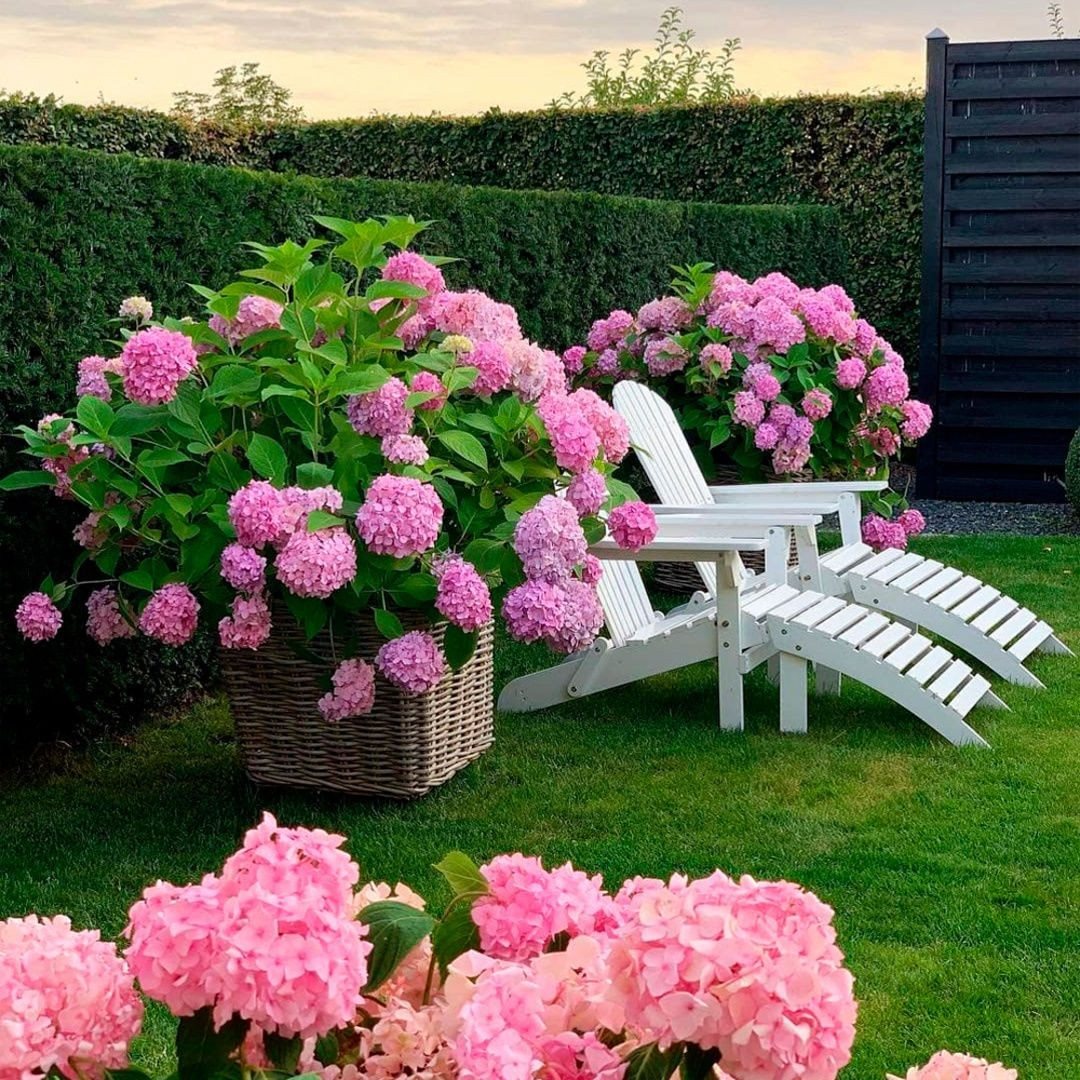
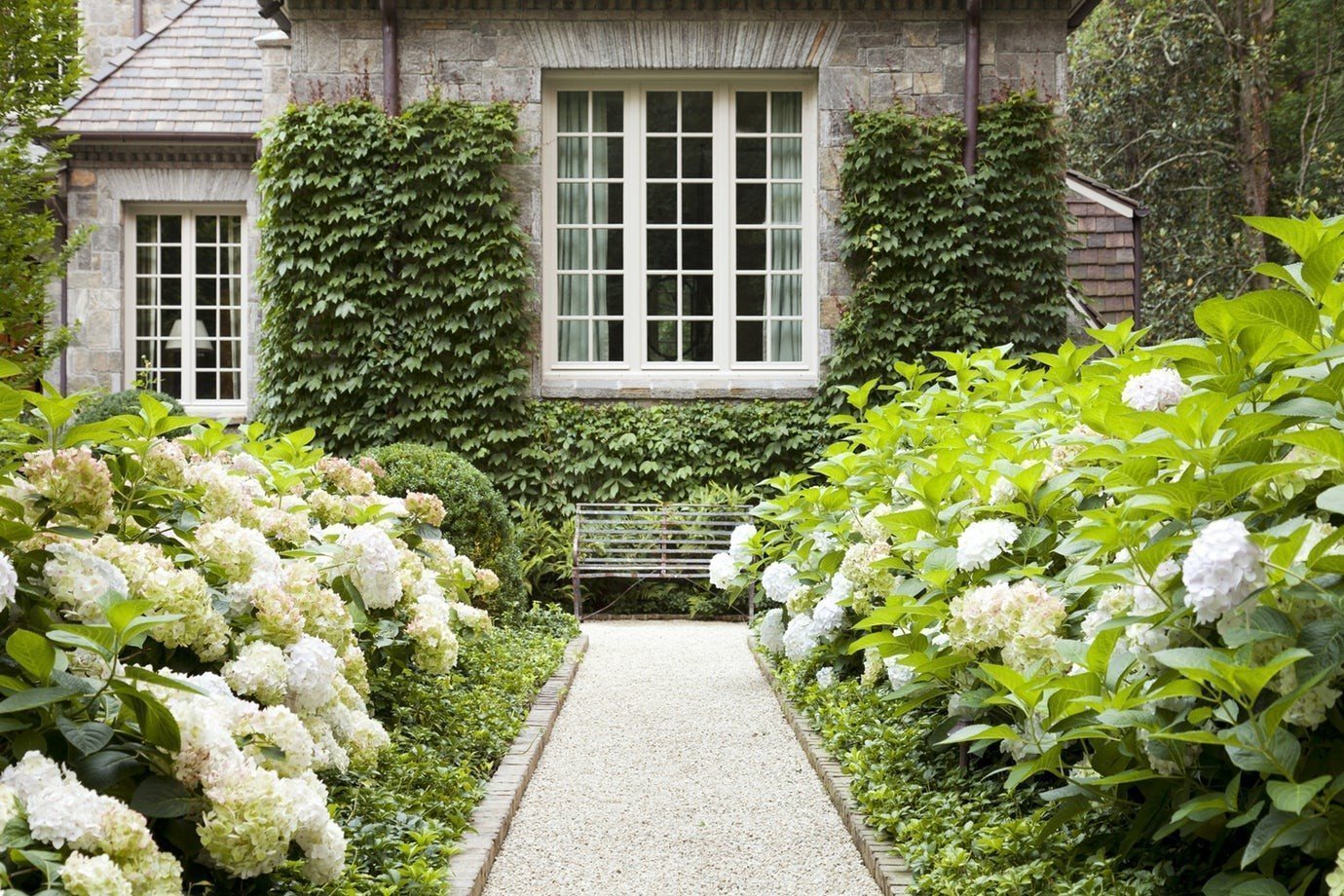
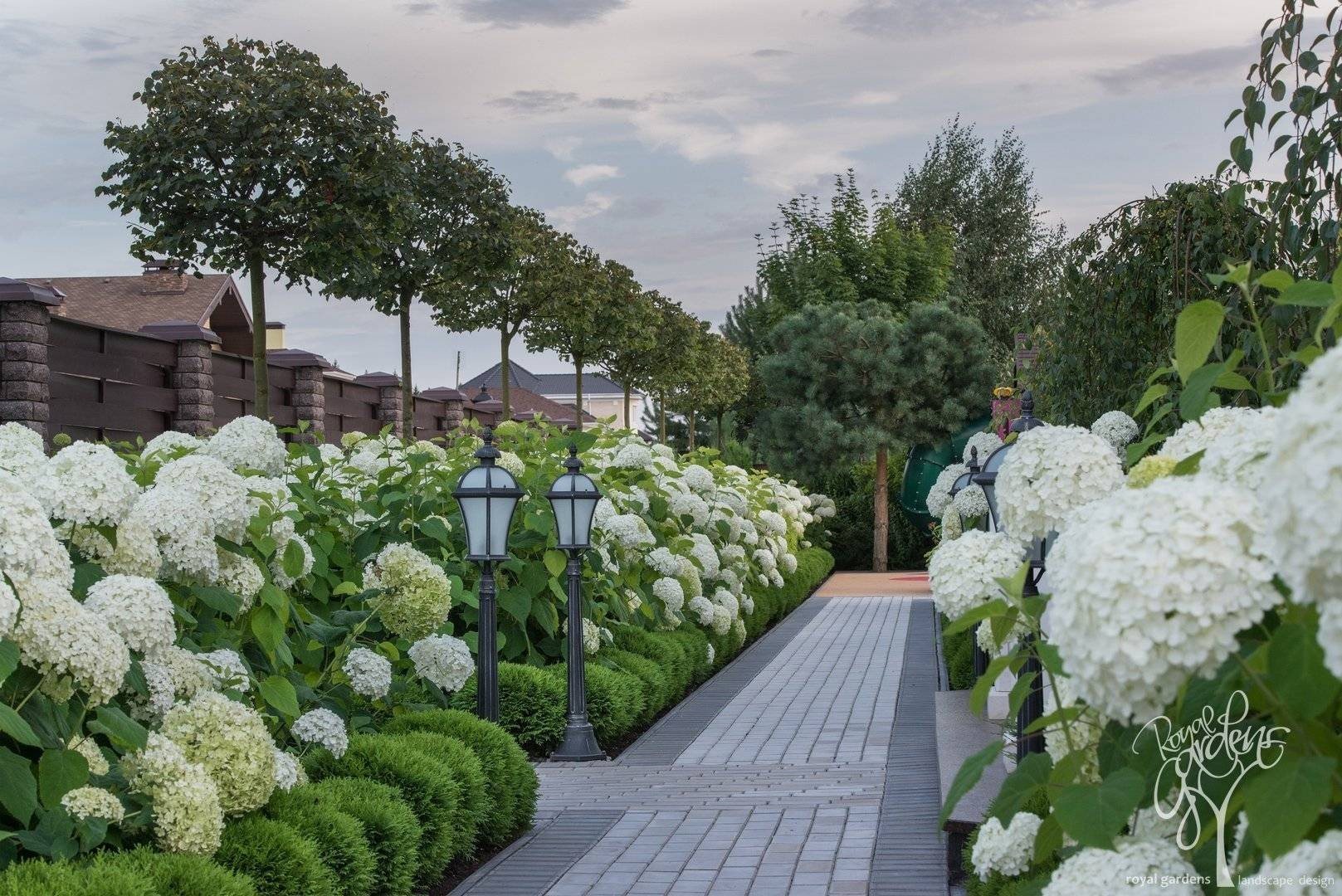
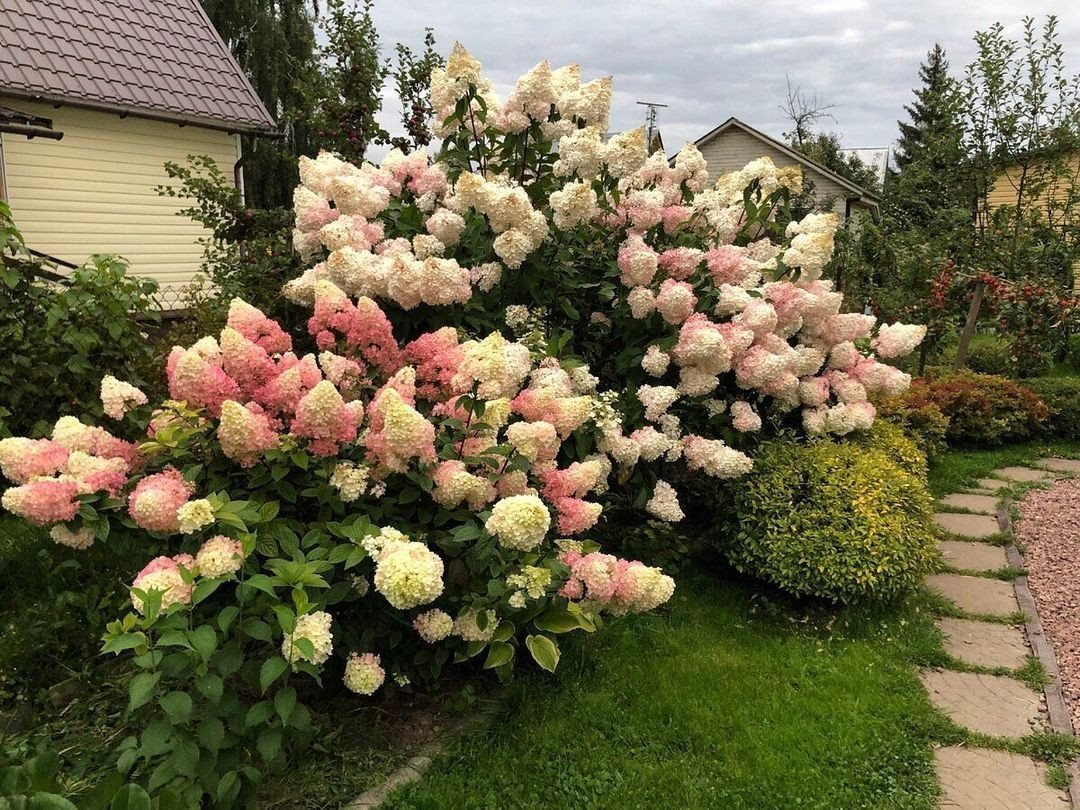
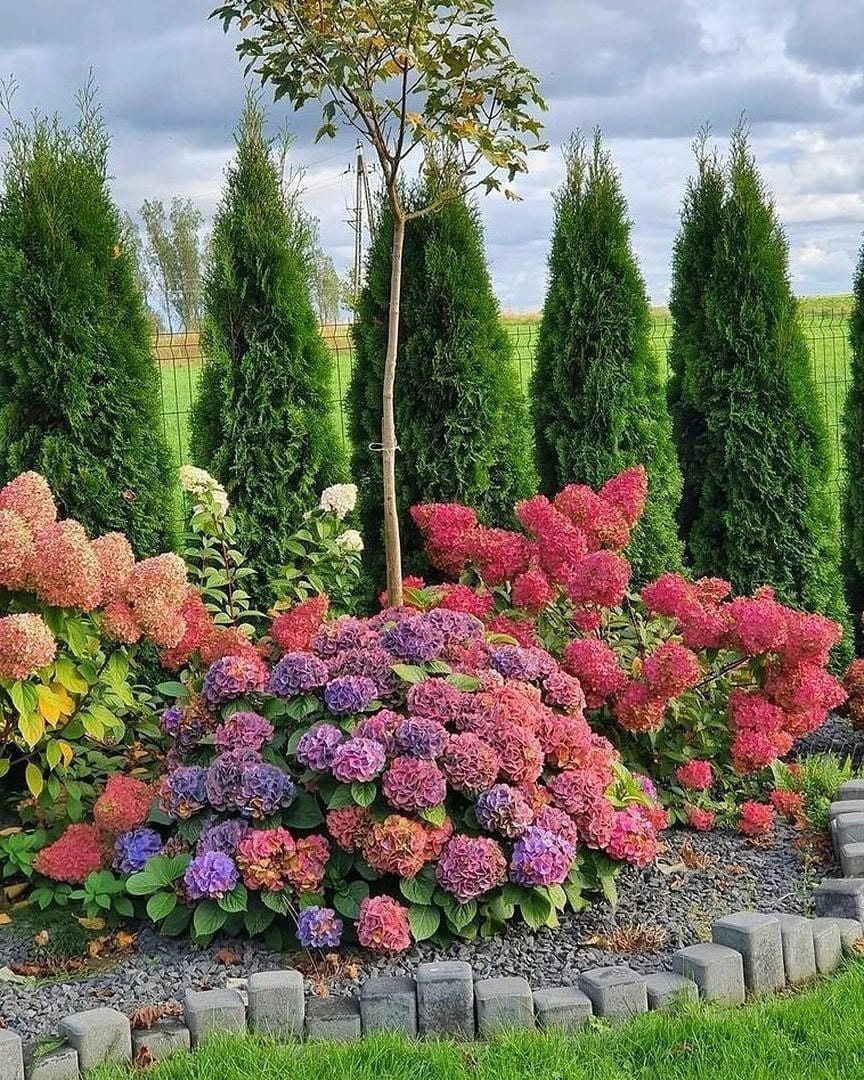
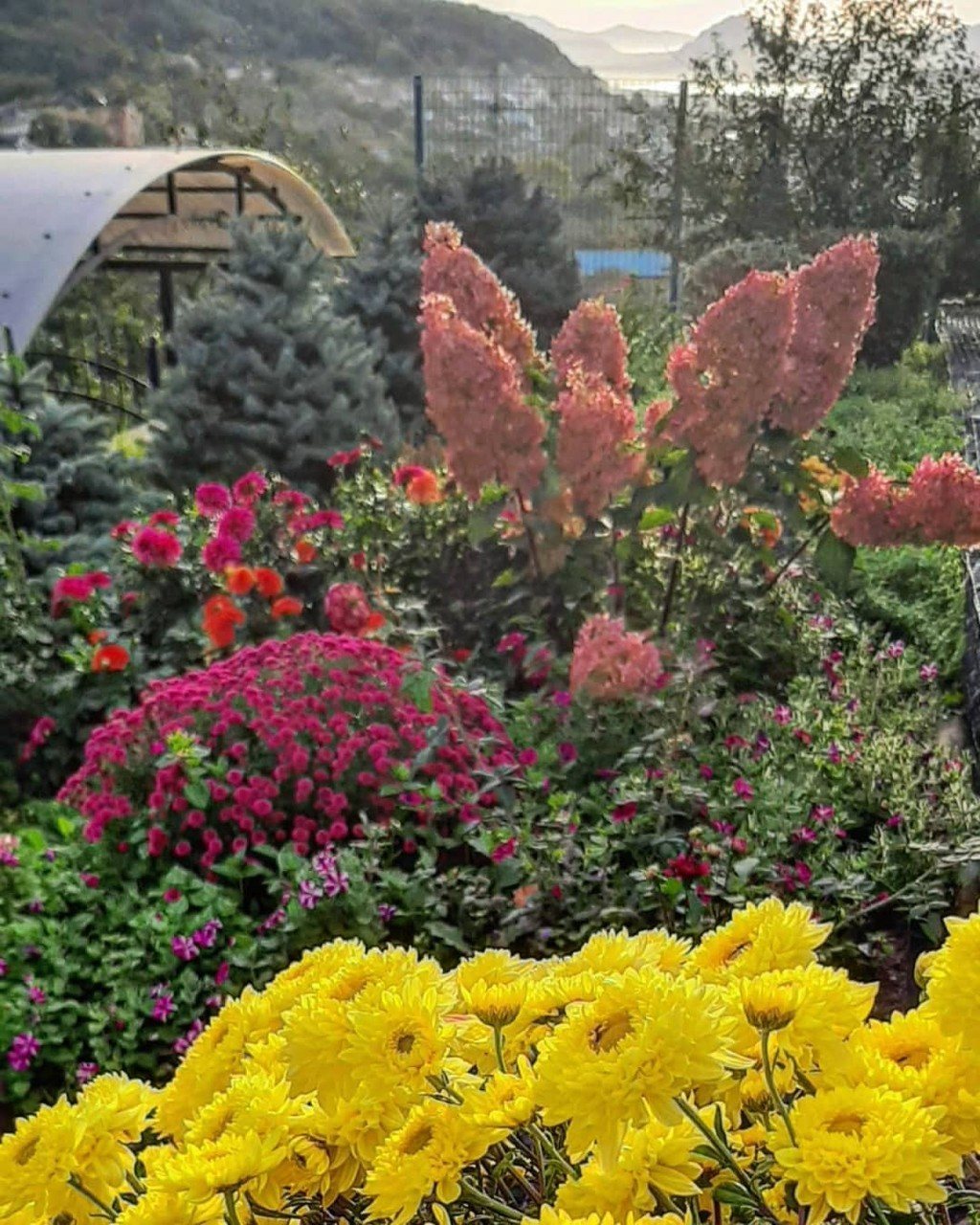
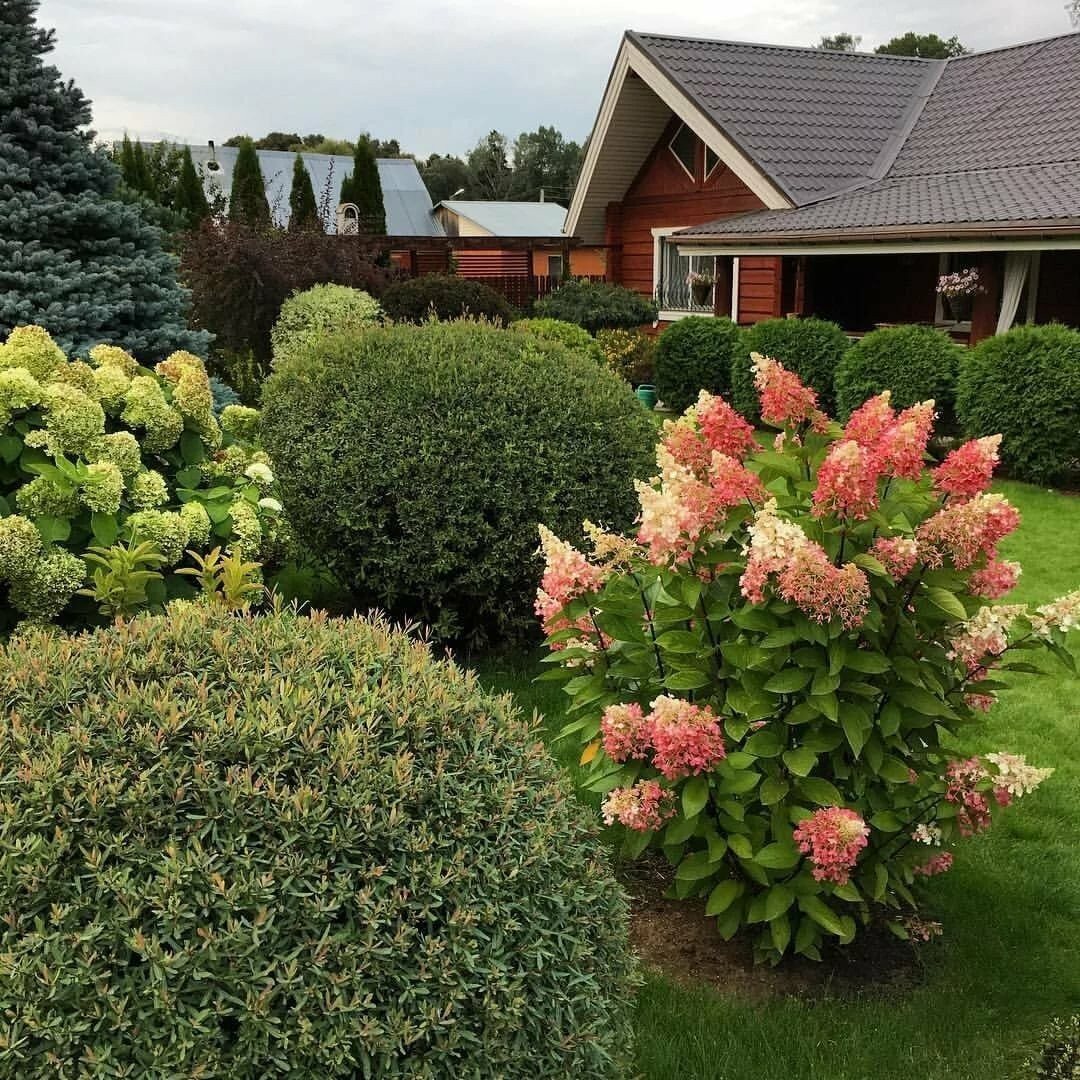
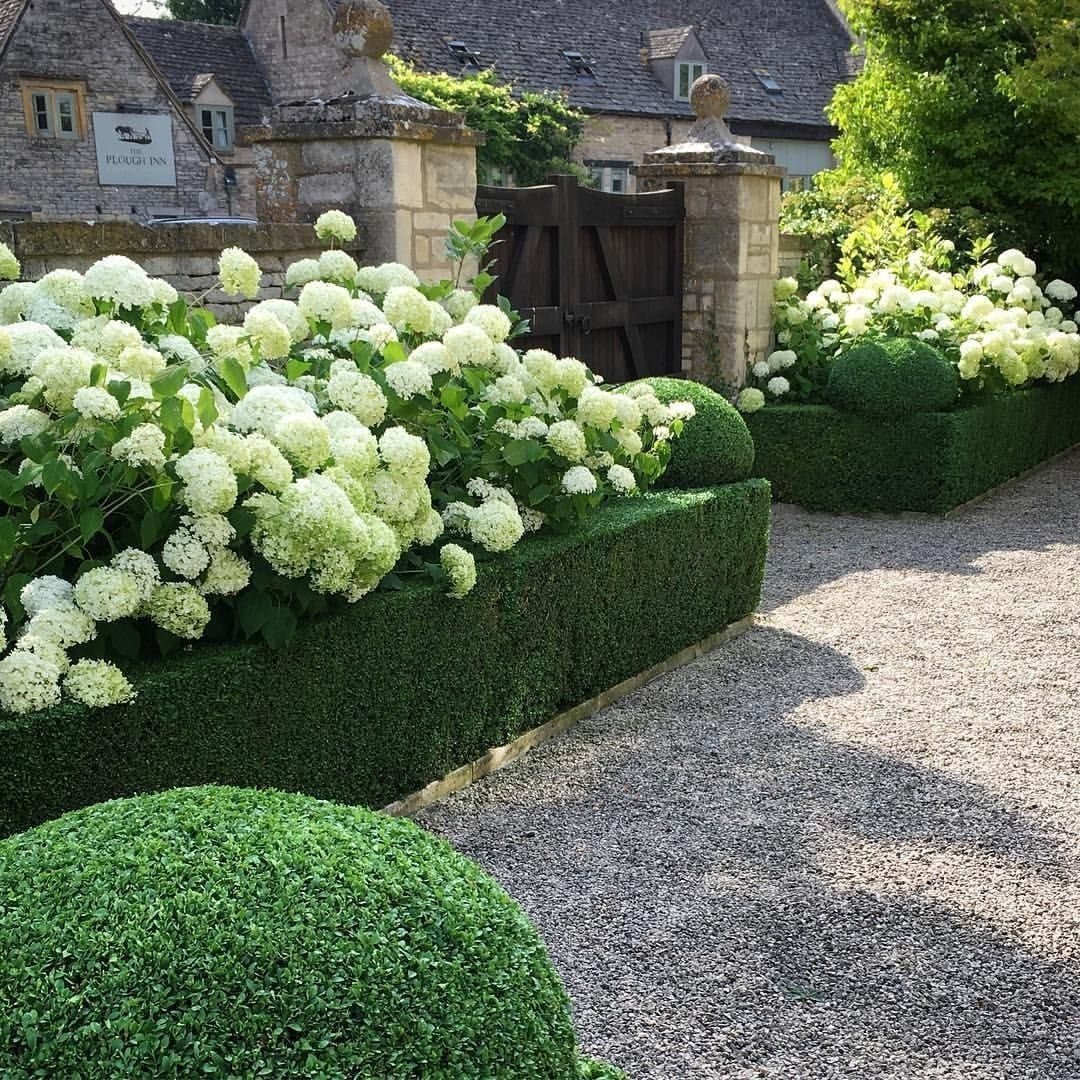
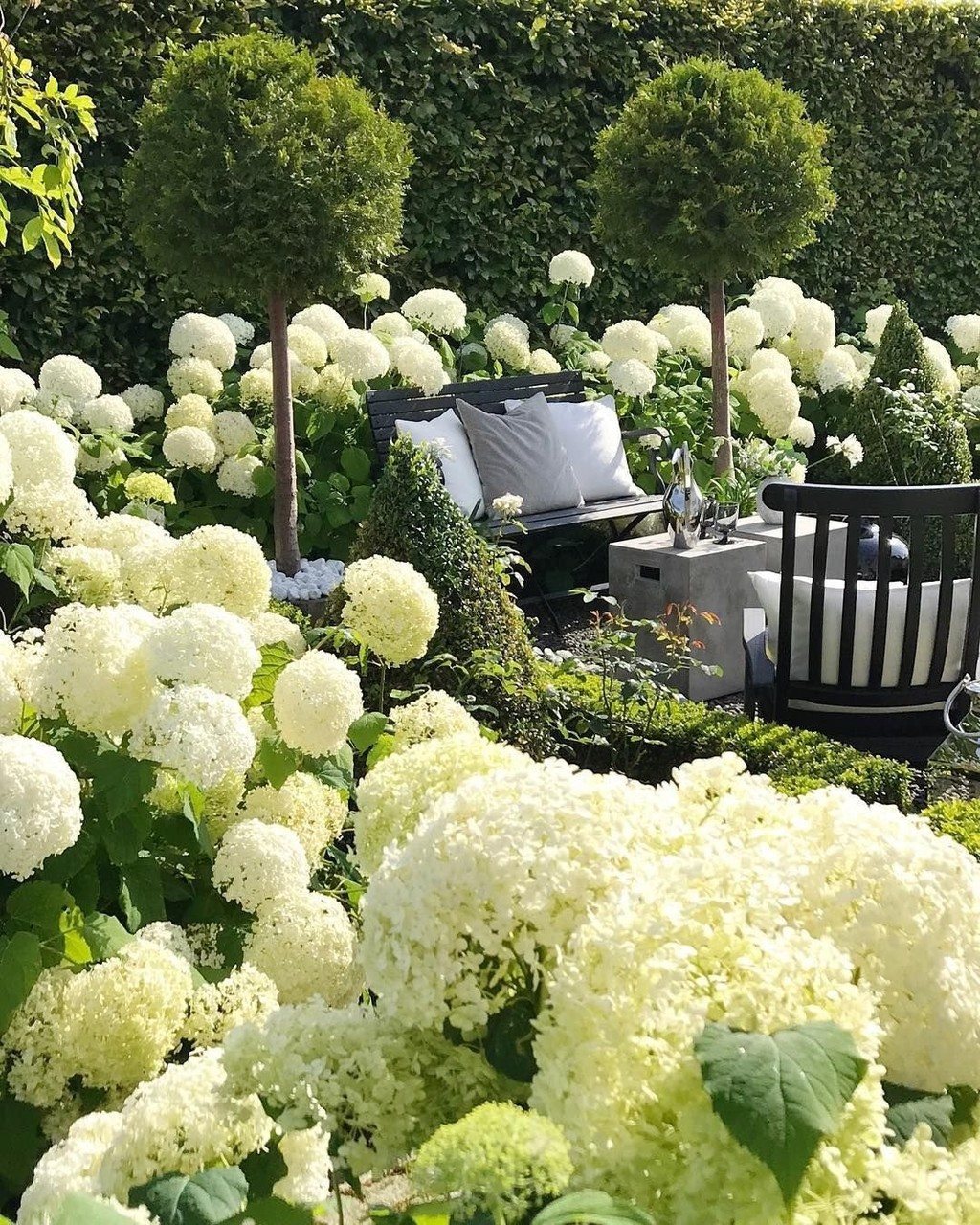
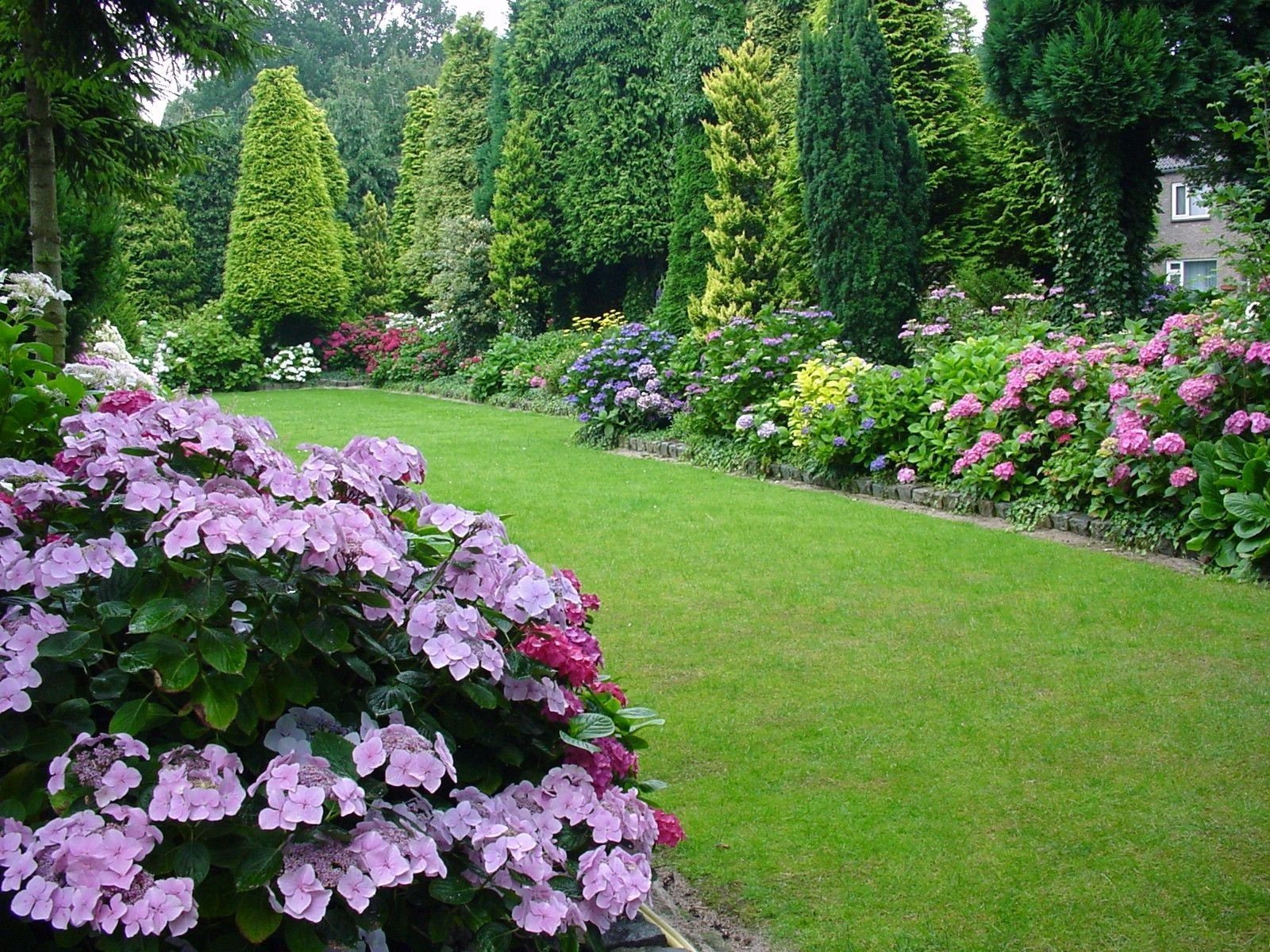










The damage is caused not by adult beetles, but by larvae that eat the roots of the hydrangea, which leads to the death of the plant.Therefore, the larvae need to be destroyed, for which the soil next to the bush is watered with a decoction of onion peels or ammonia.
Nematode
The reasons for this problem include incorrect choice of planting site, lack of quality watering, lack of nutrients or low acidity of the soil.Sometimes this is due to infection of hydrangea by various viruses. Therefore, you should adjust watering, treat the bushes with special solutions, replant or fertilize.
Doesn't bloom
If inflorescences do not appear on a hydrangea, this is due to the bush freezing in winter, improper pruning, or the presence of pests. To correct the problem, it is necessary to identify the cause, so proper autumn pruning is carried out, and the plants are treated with special solutions.
Dries


